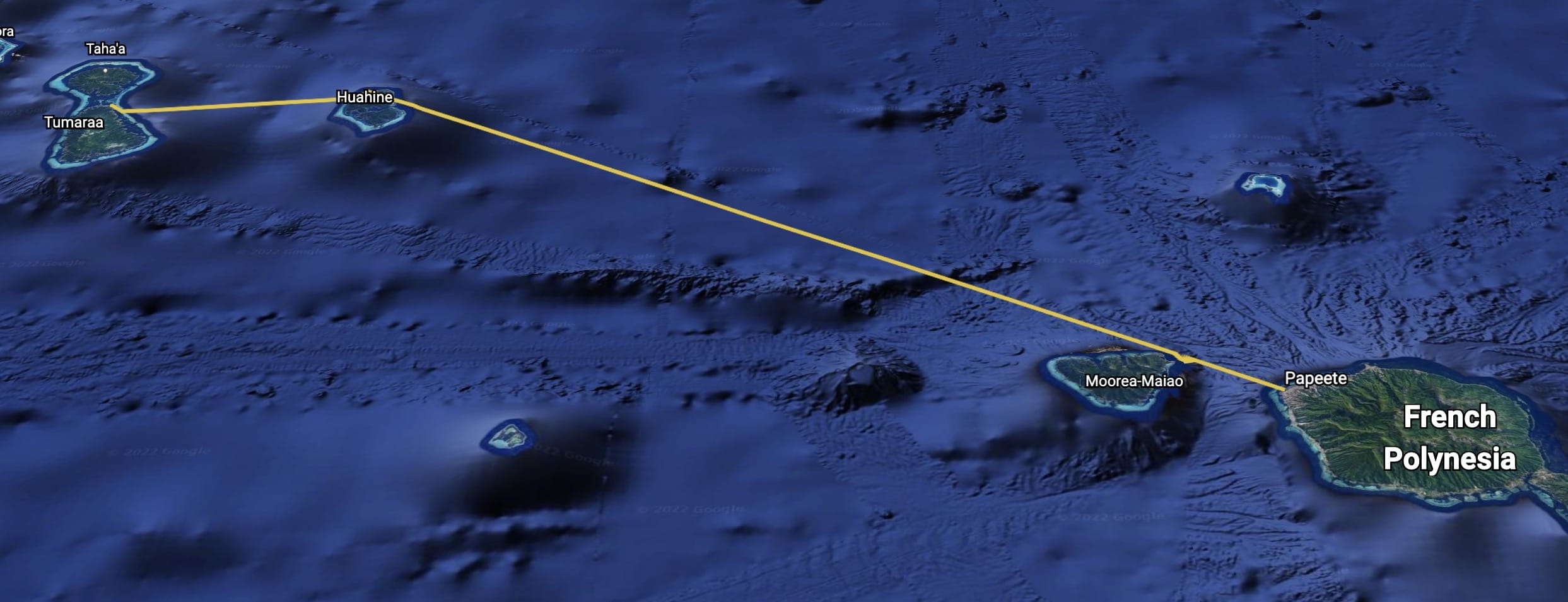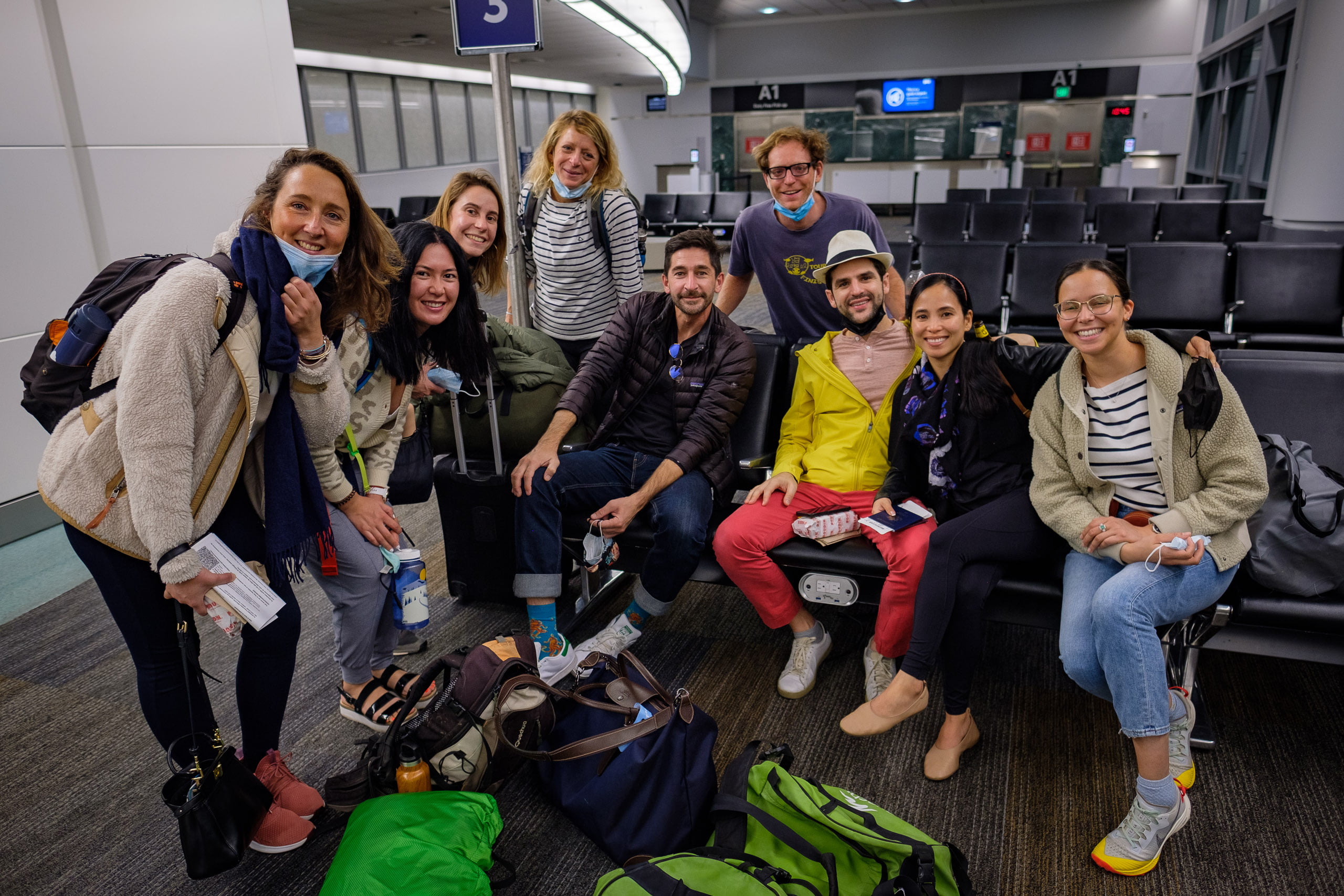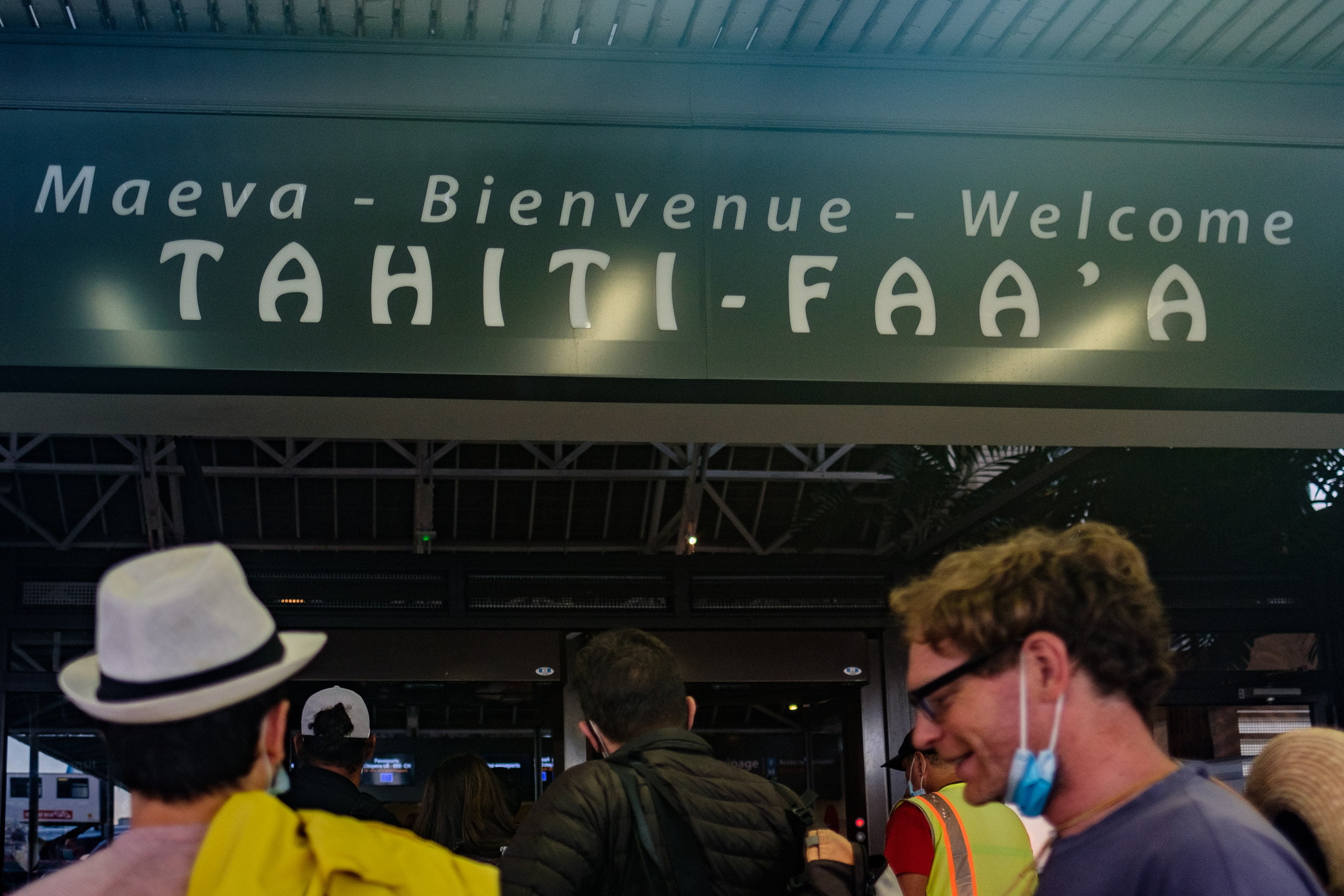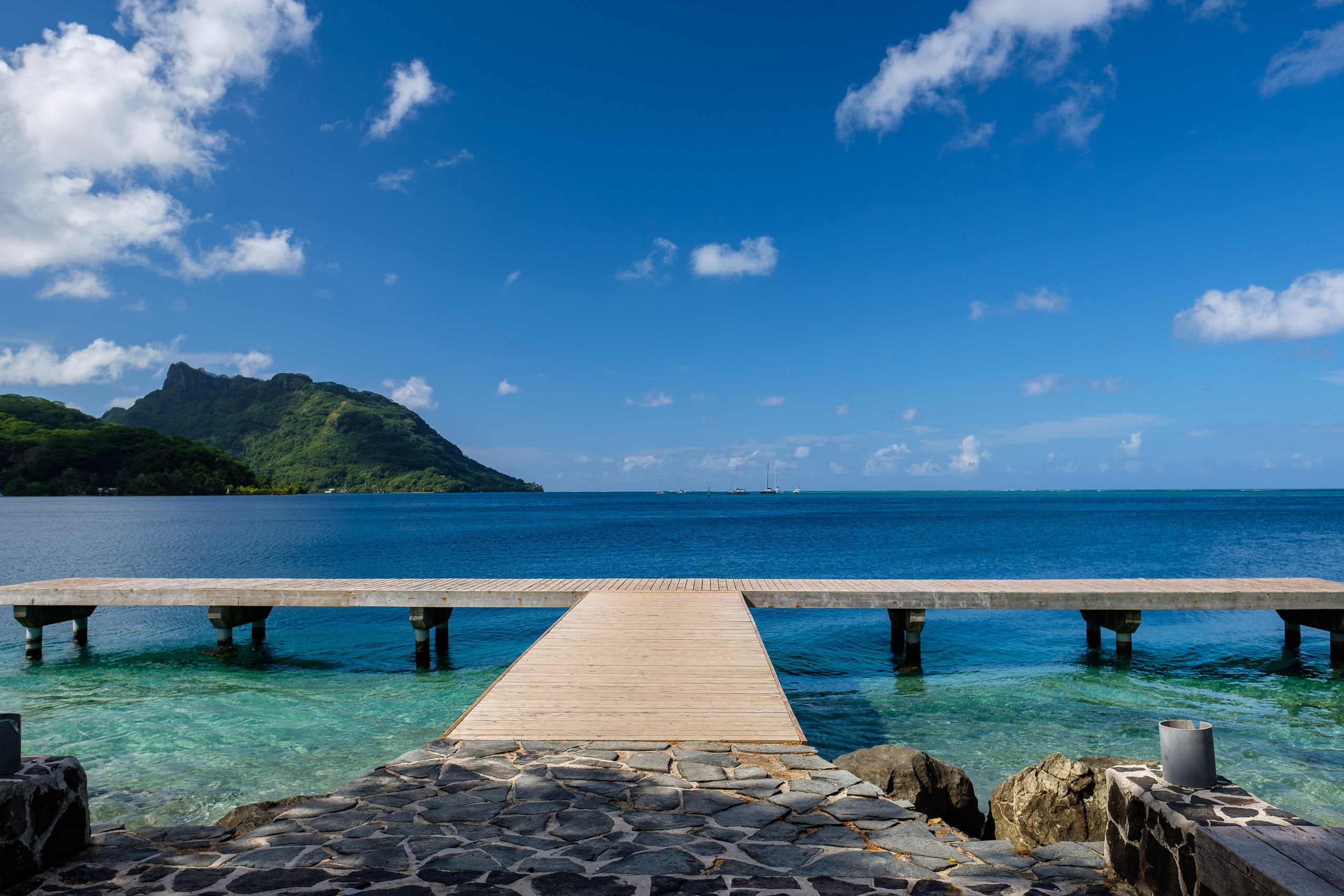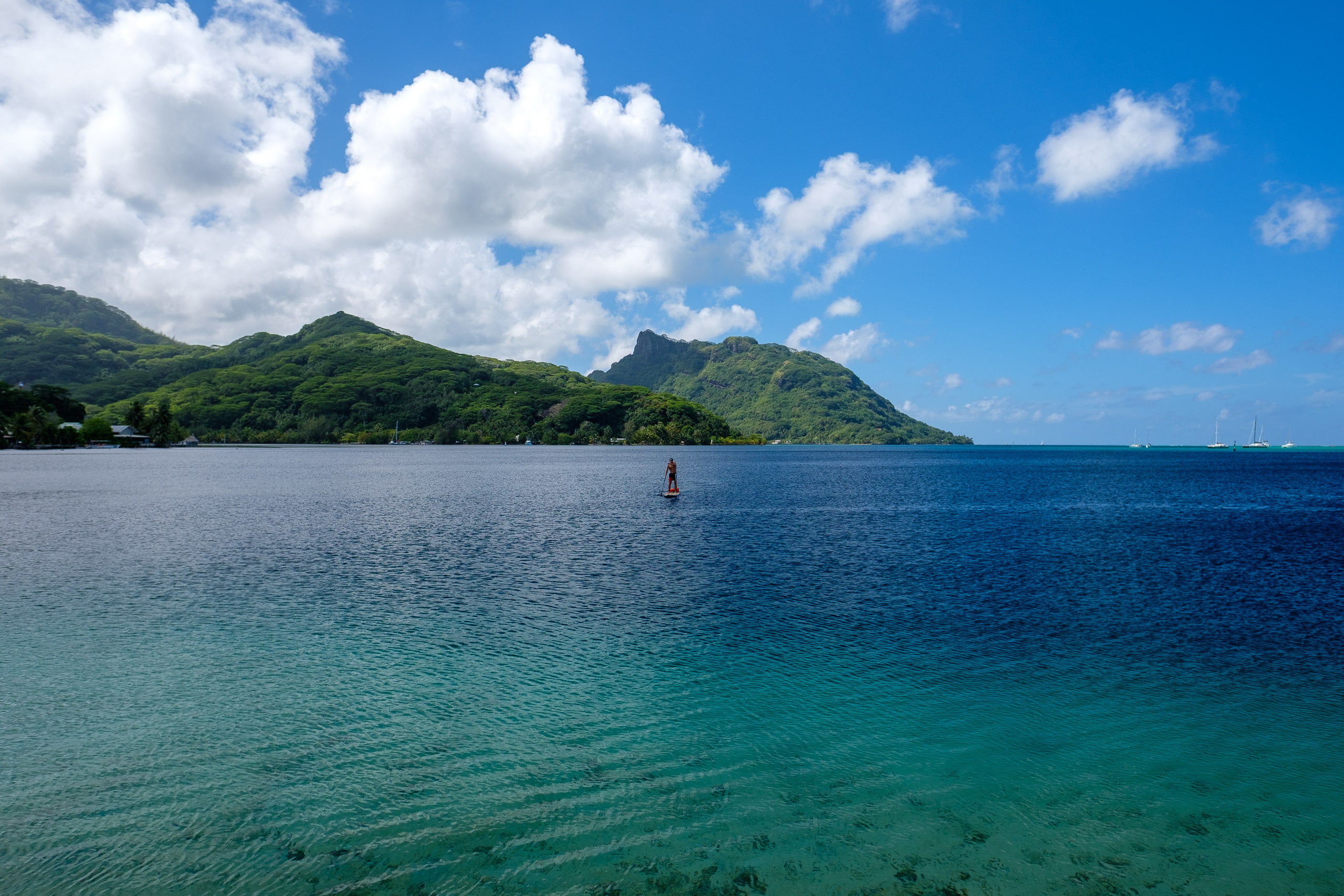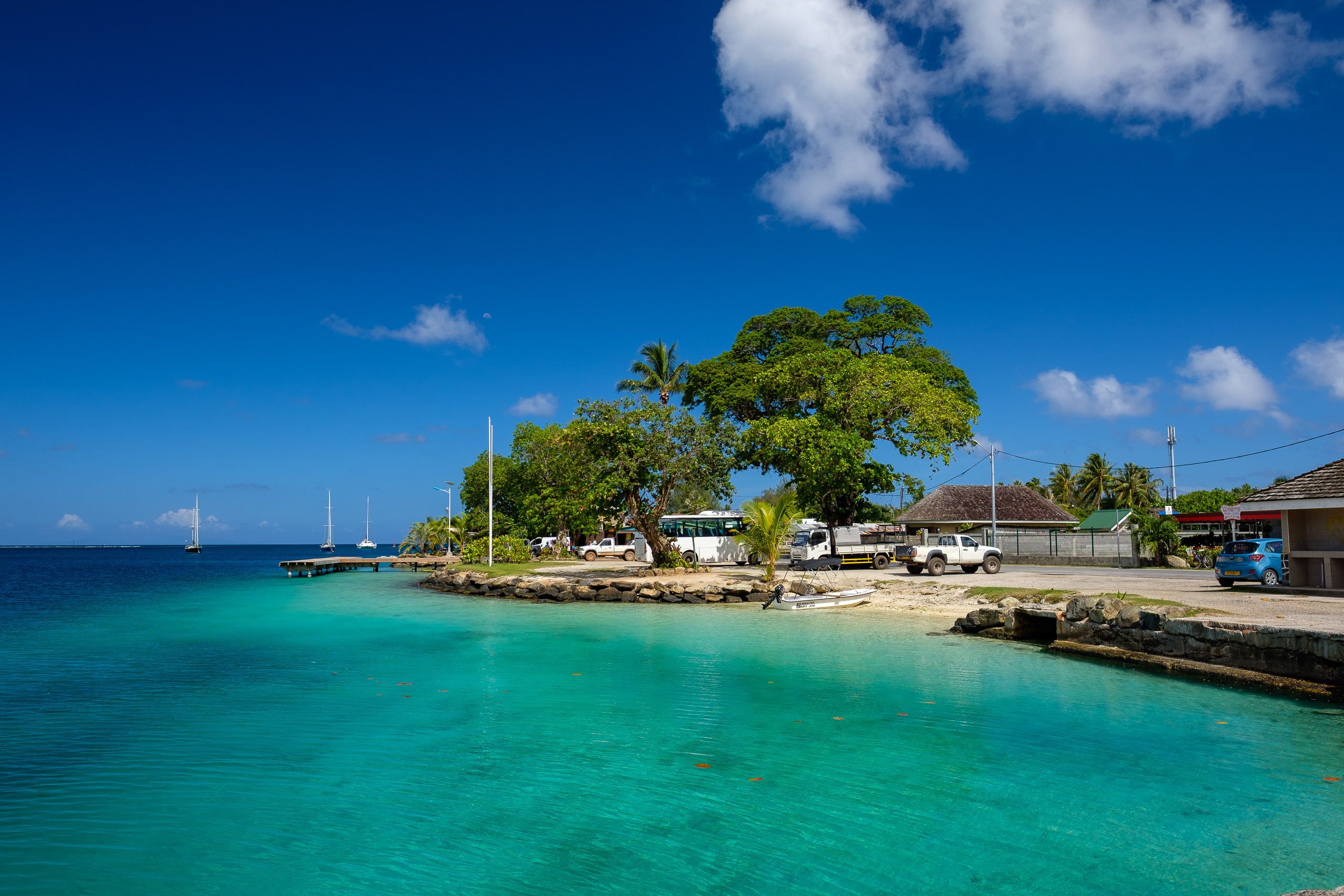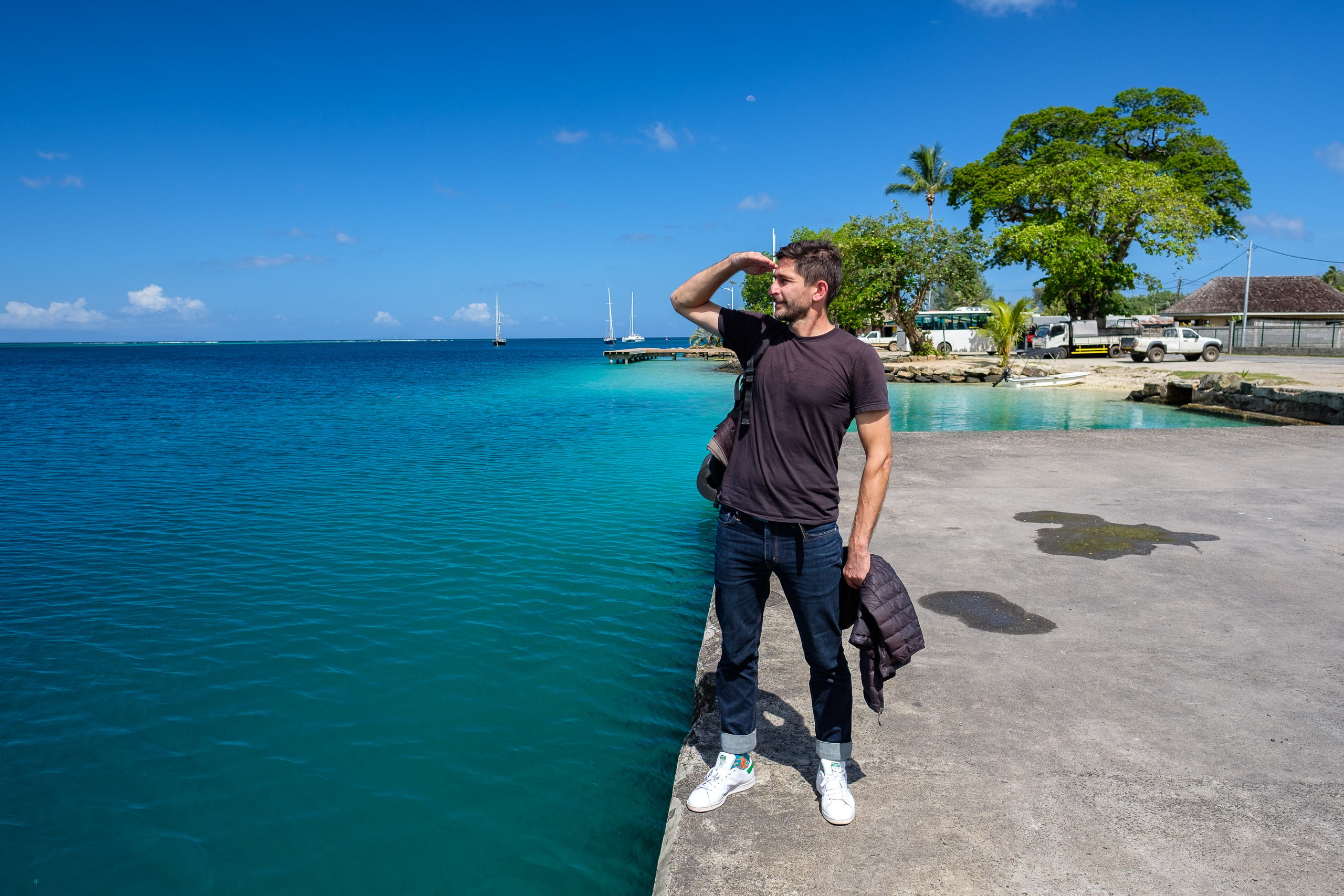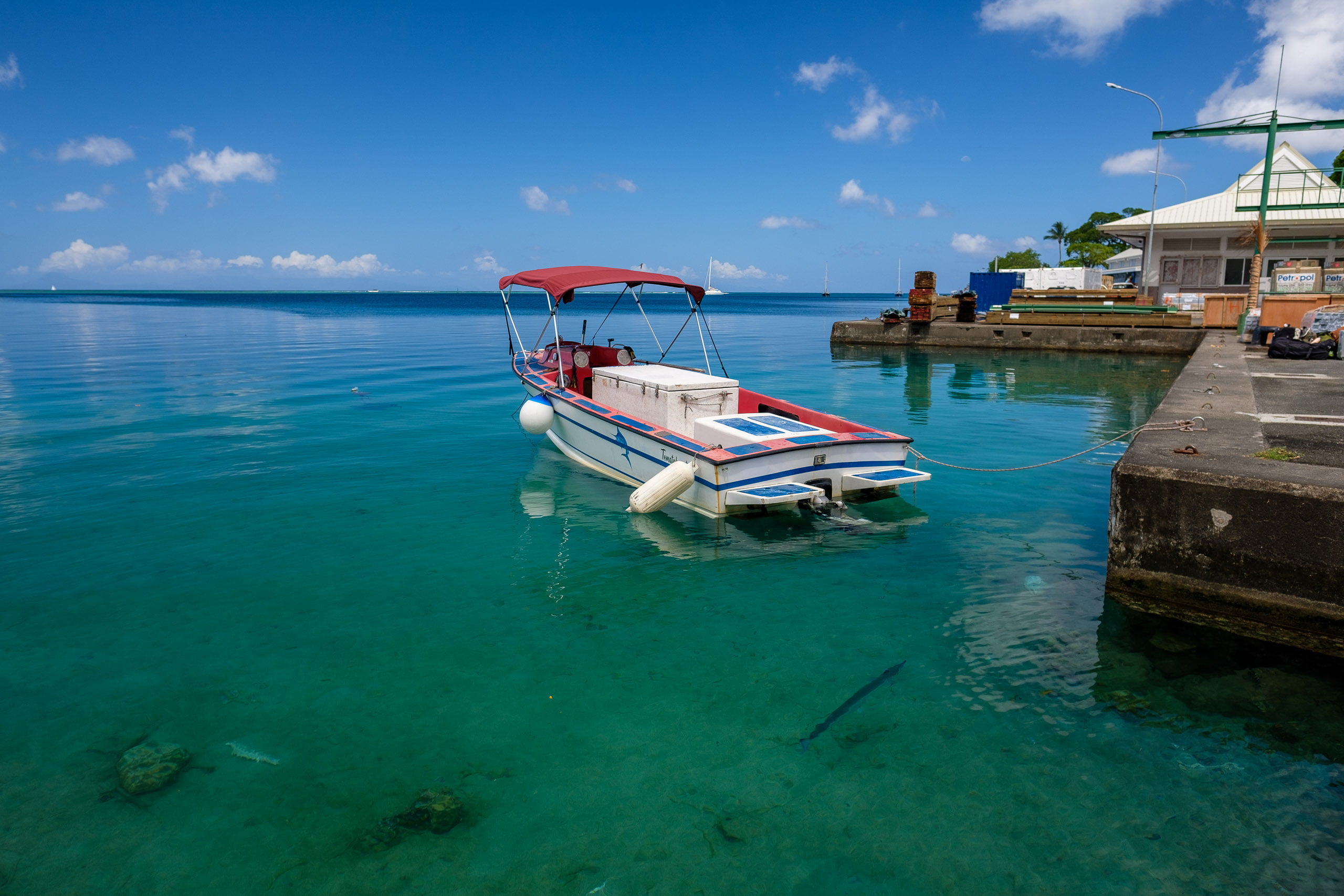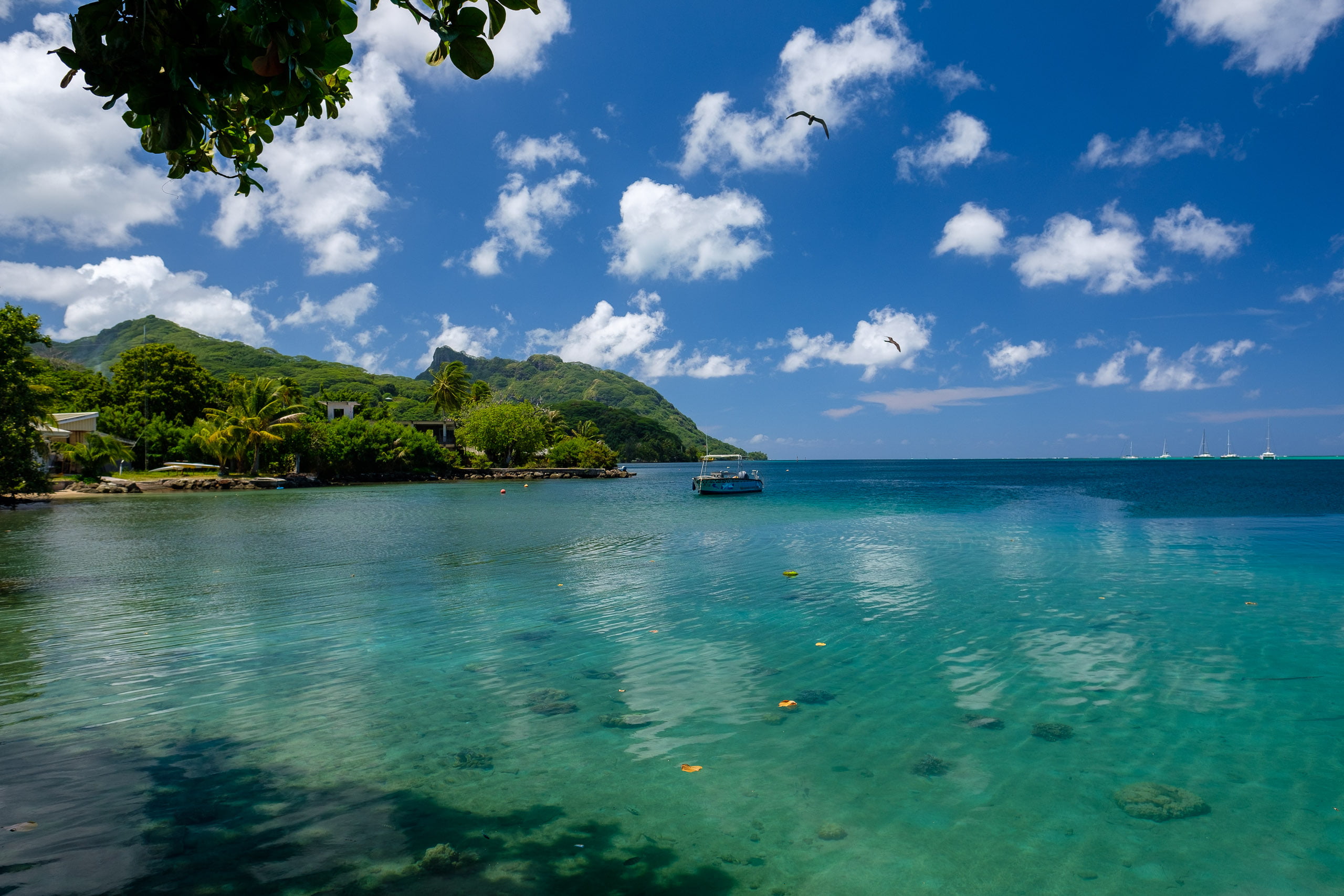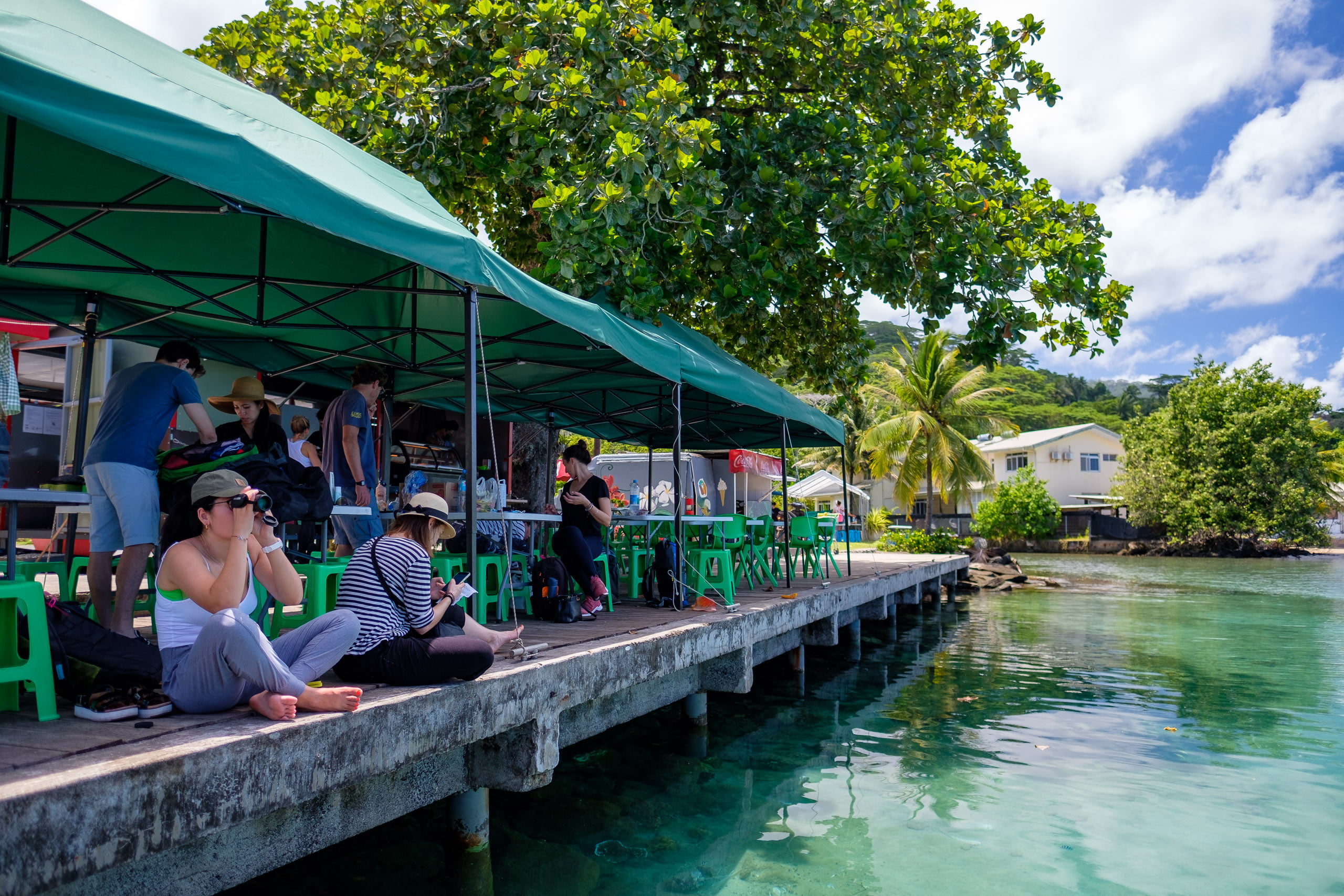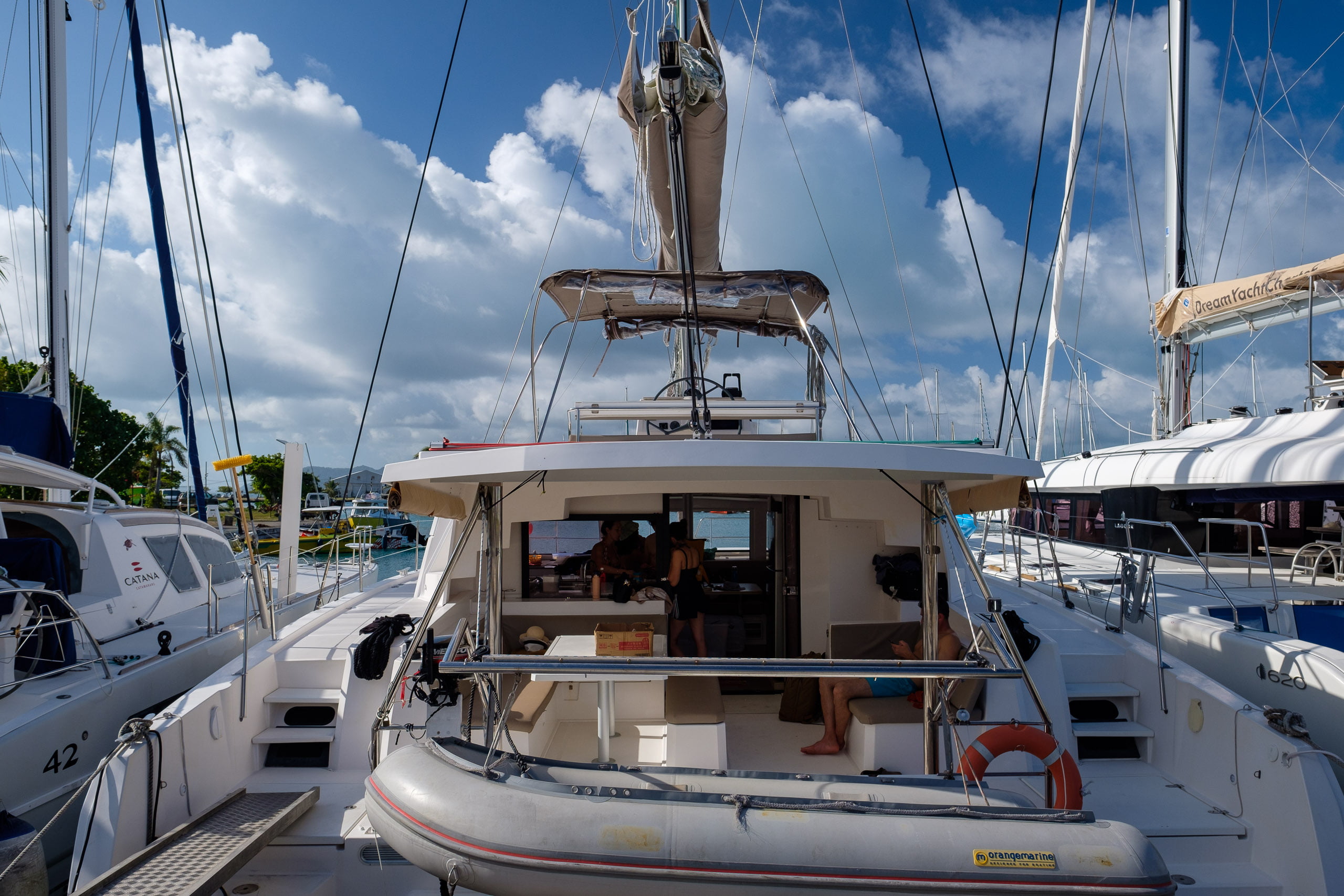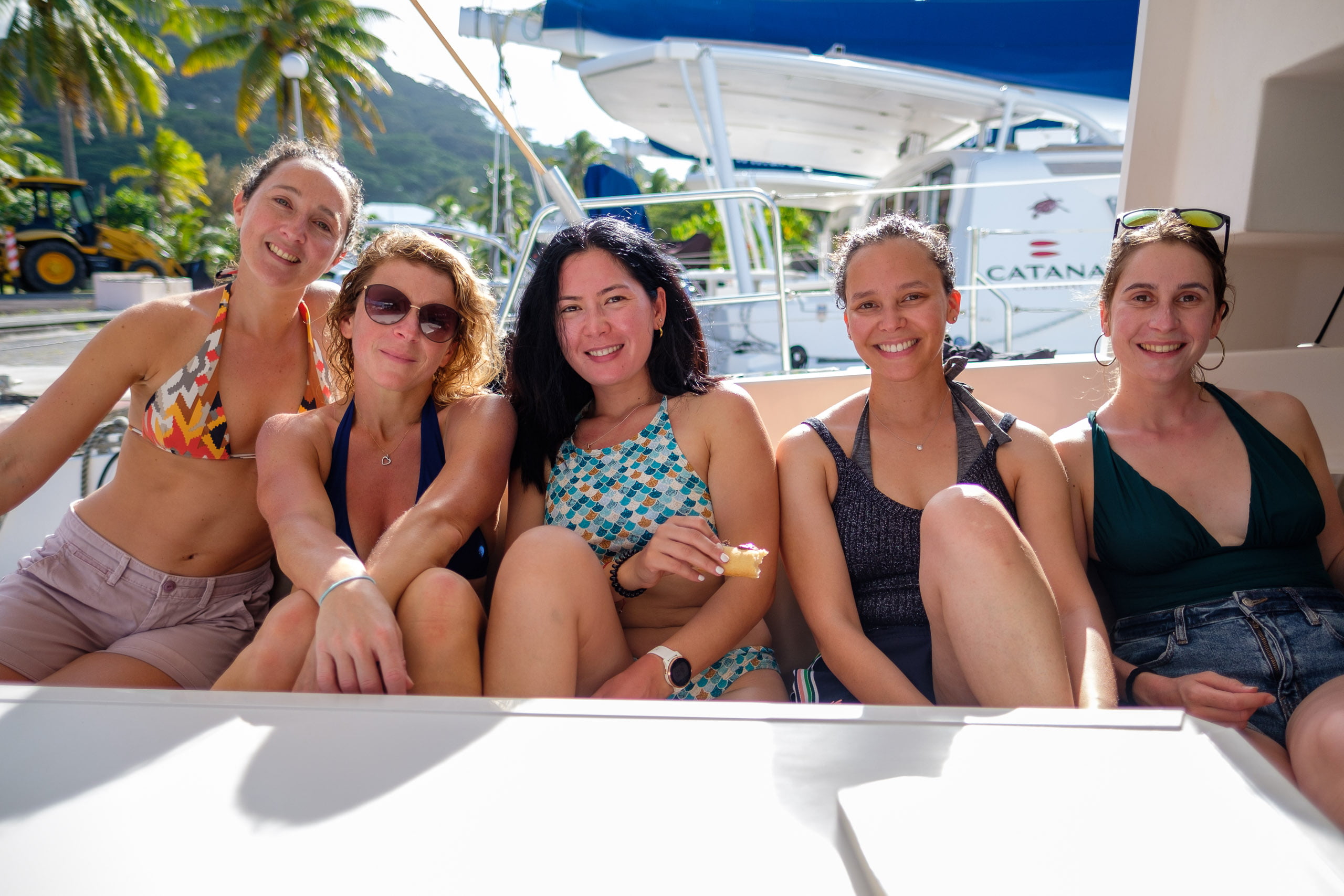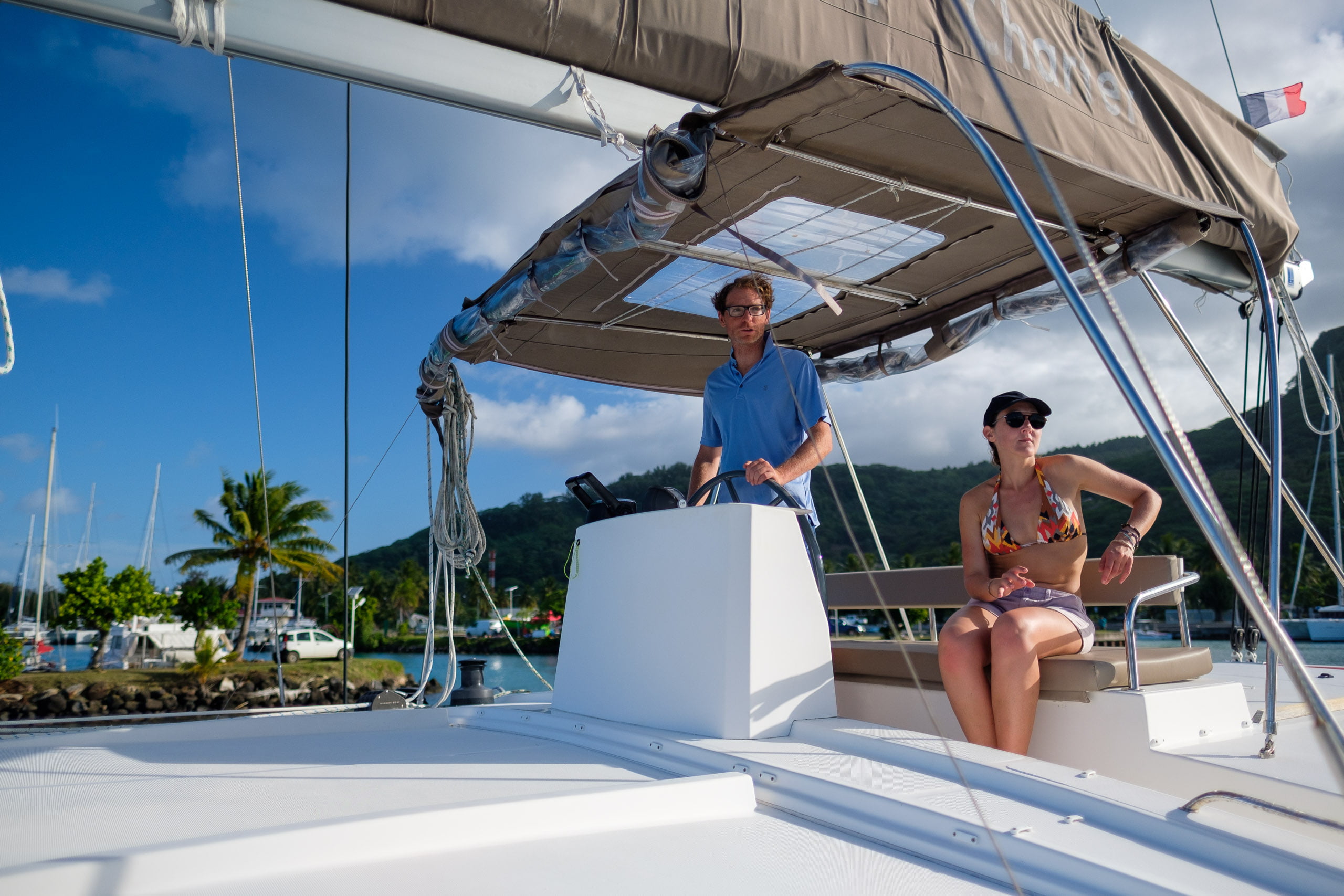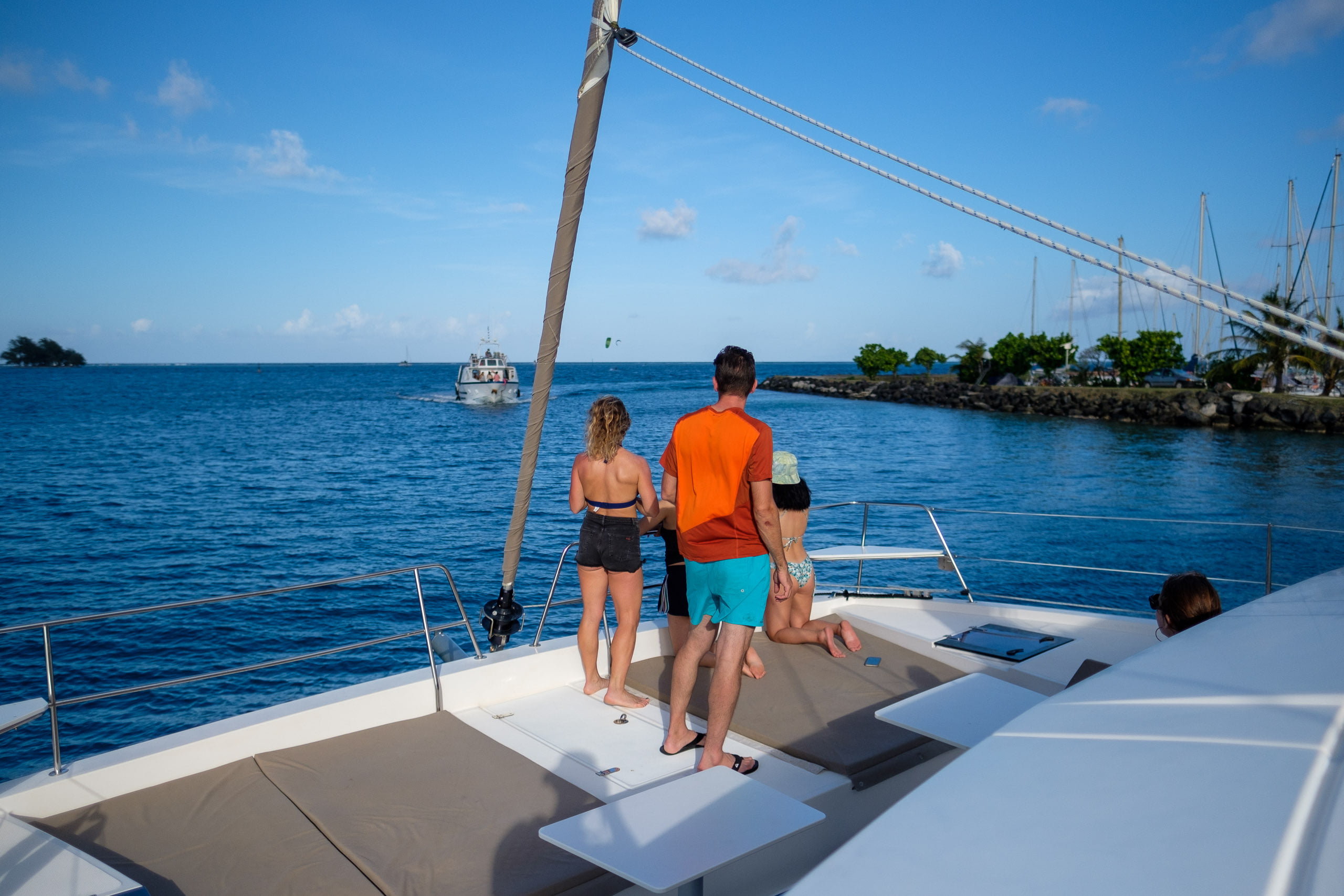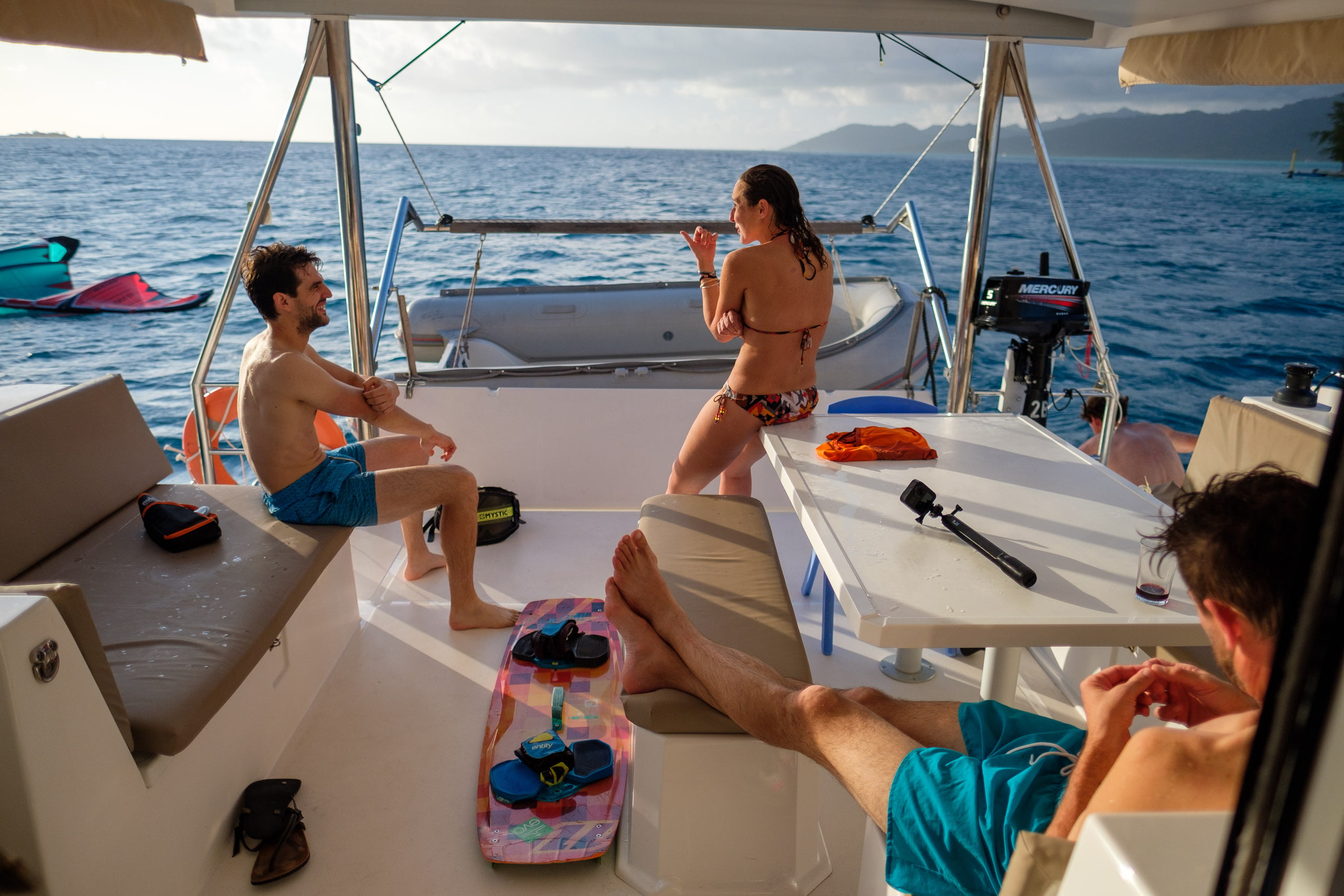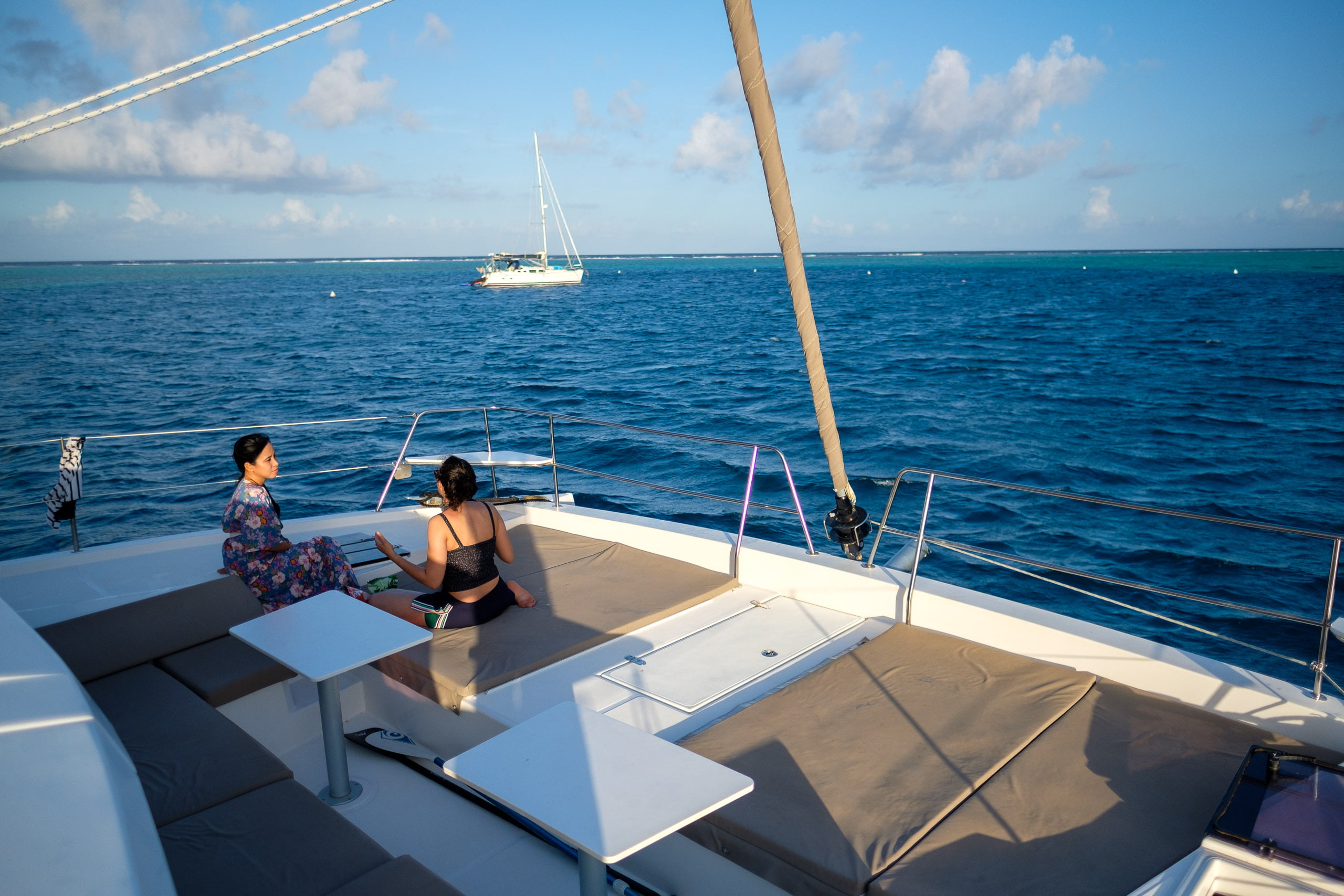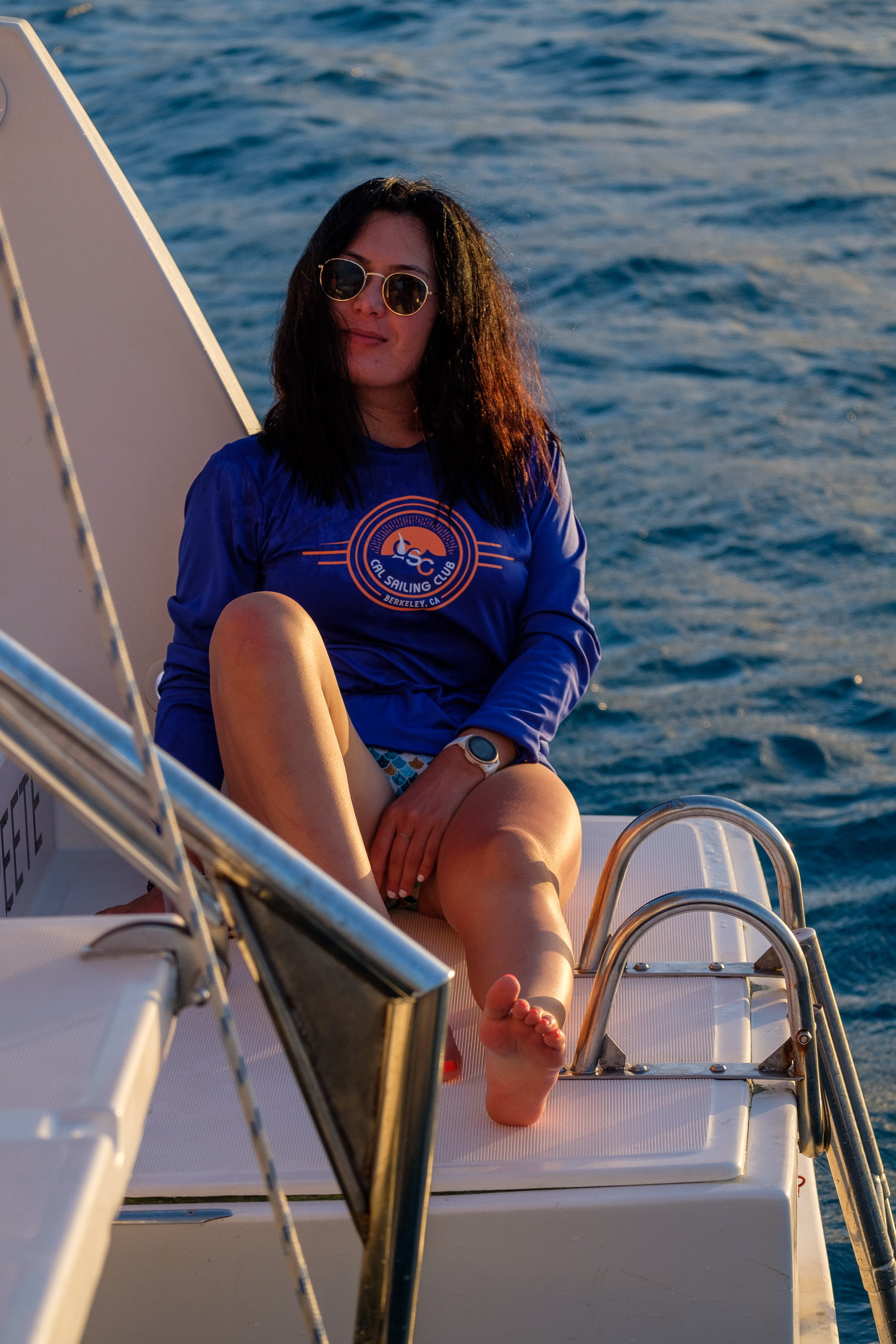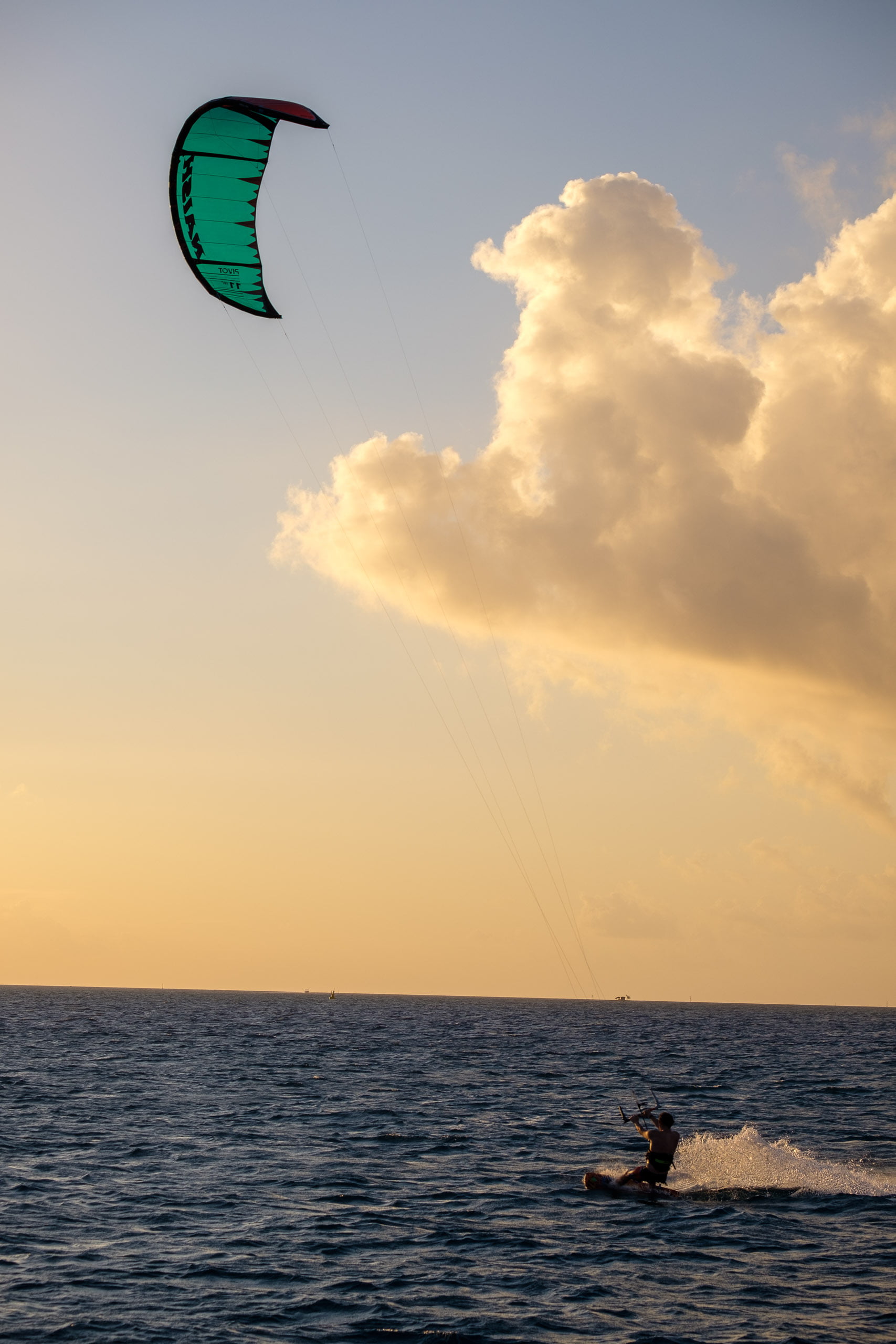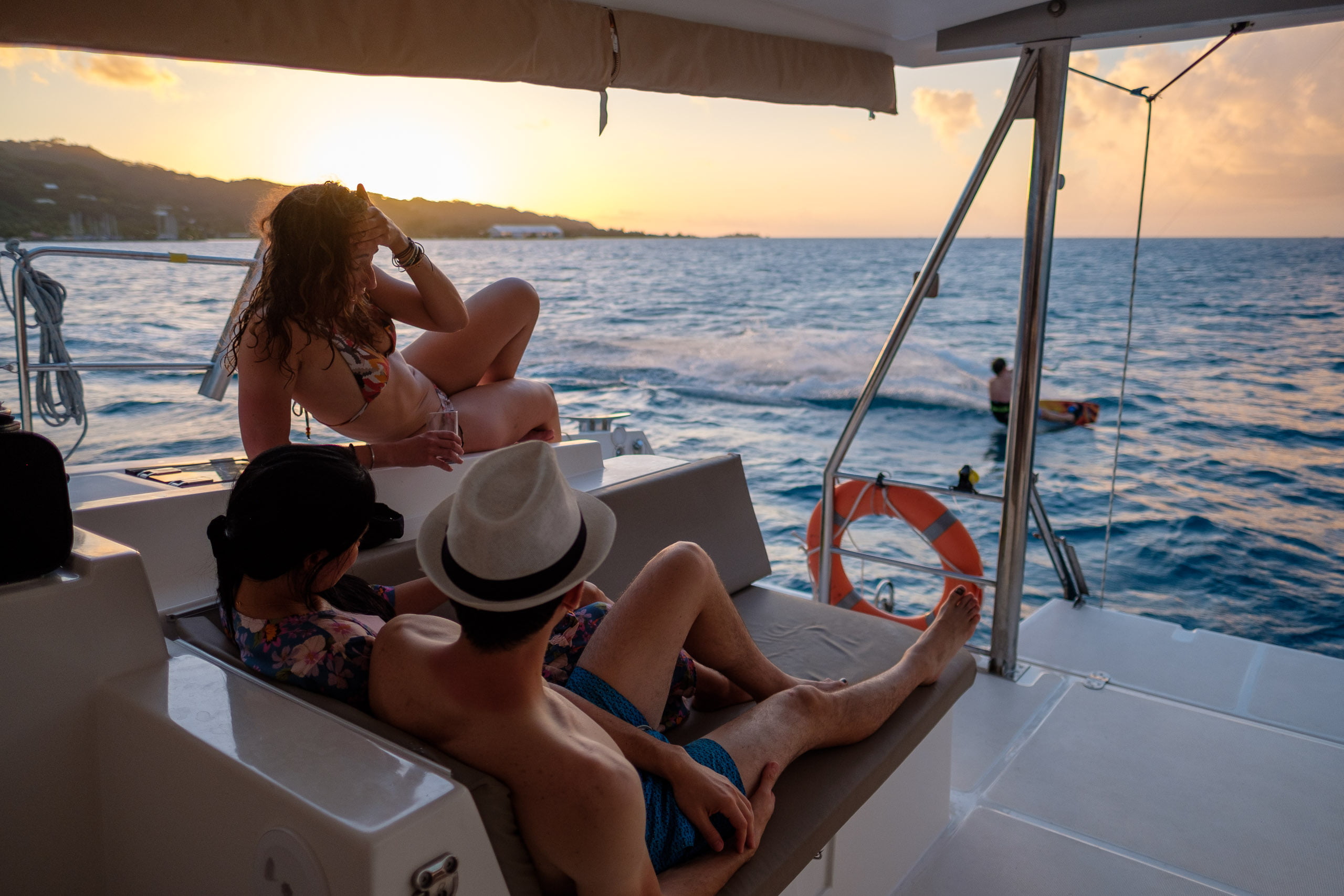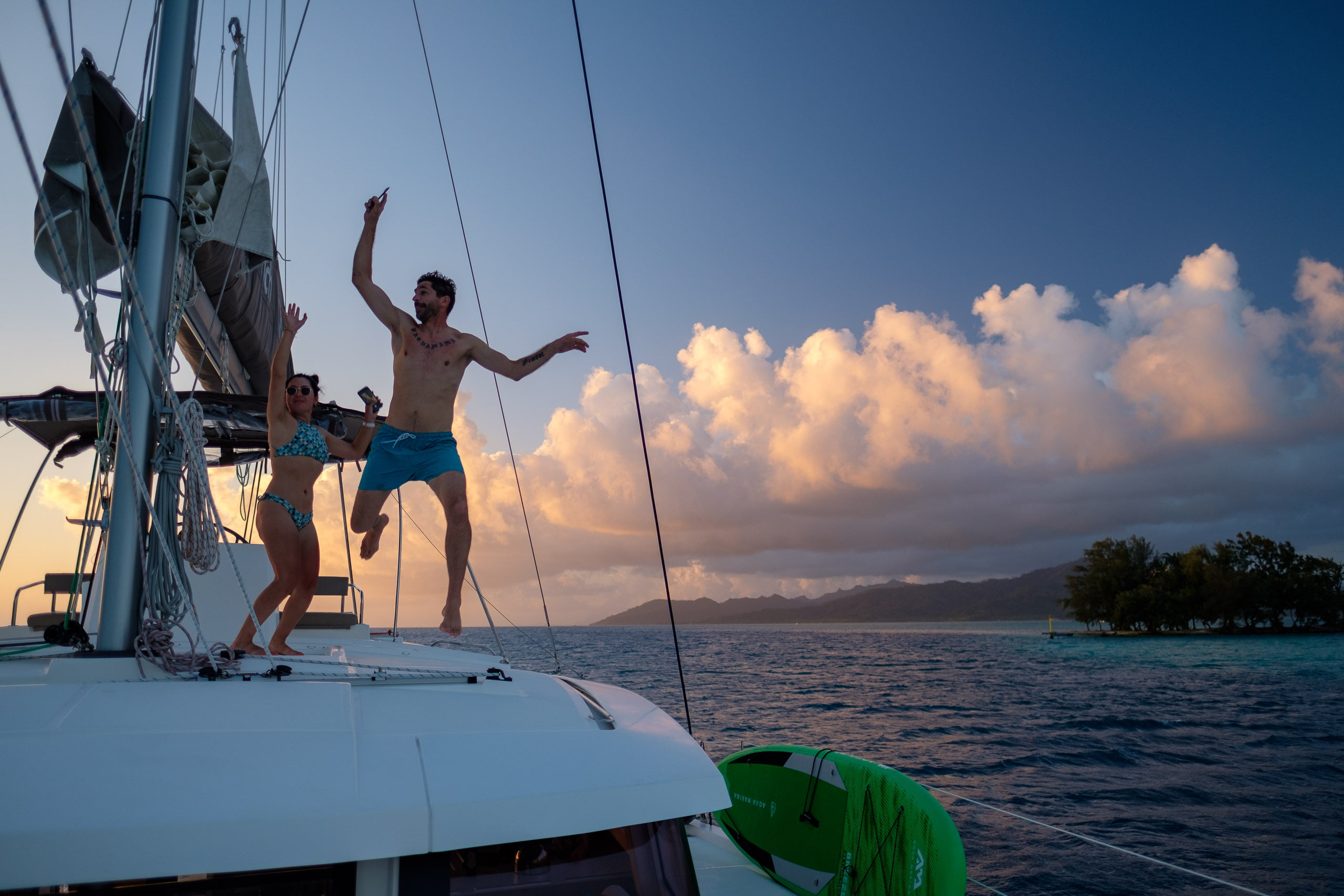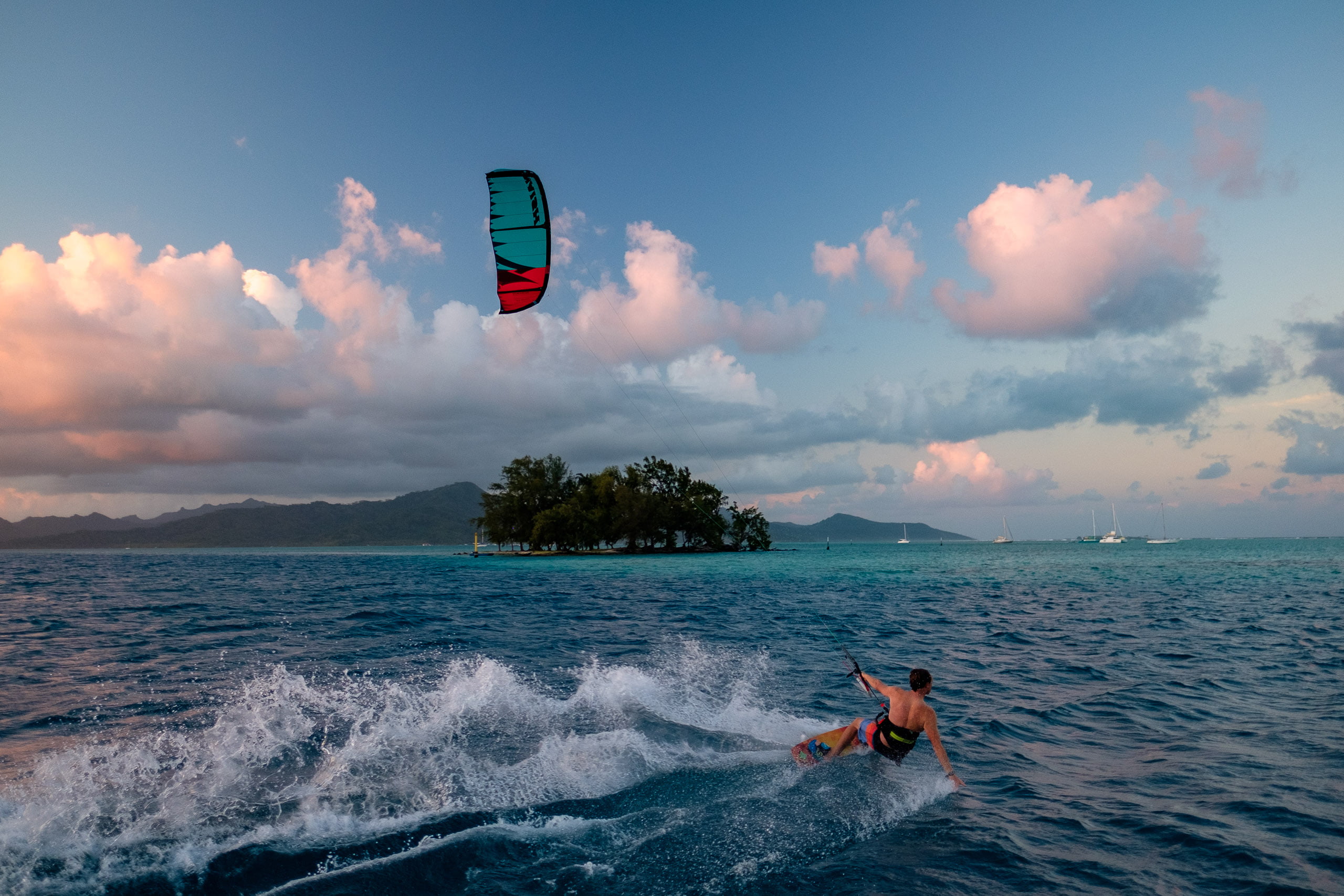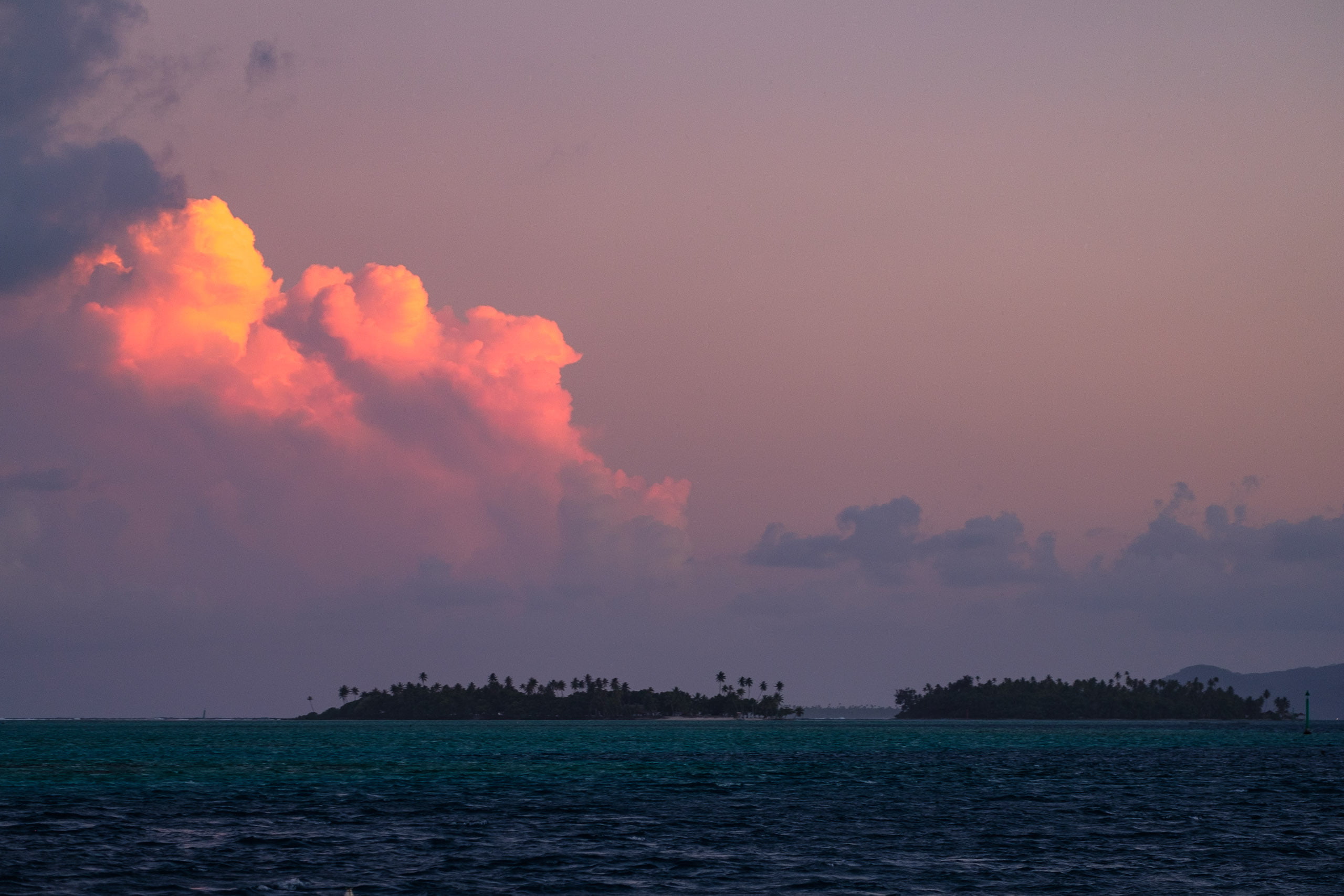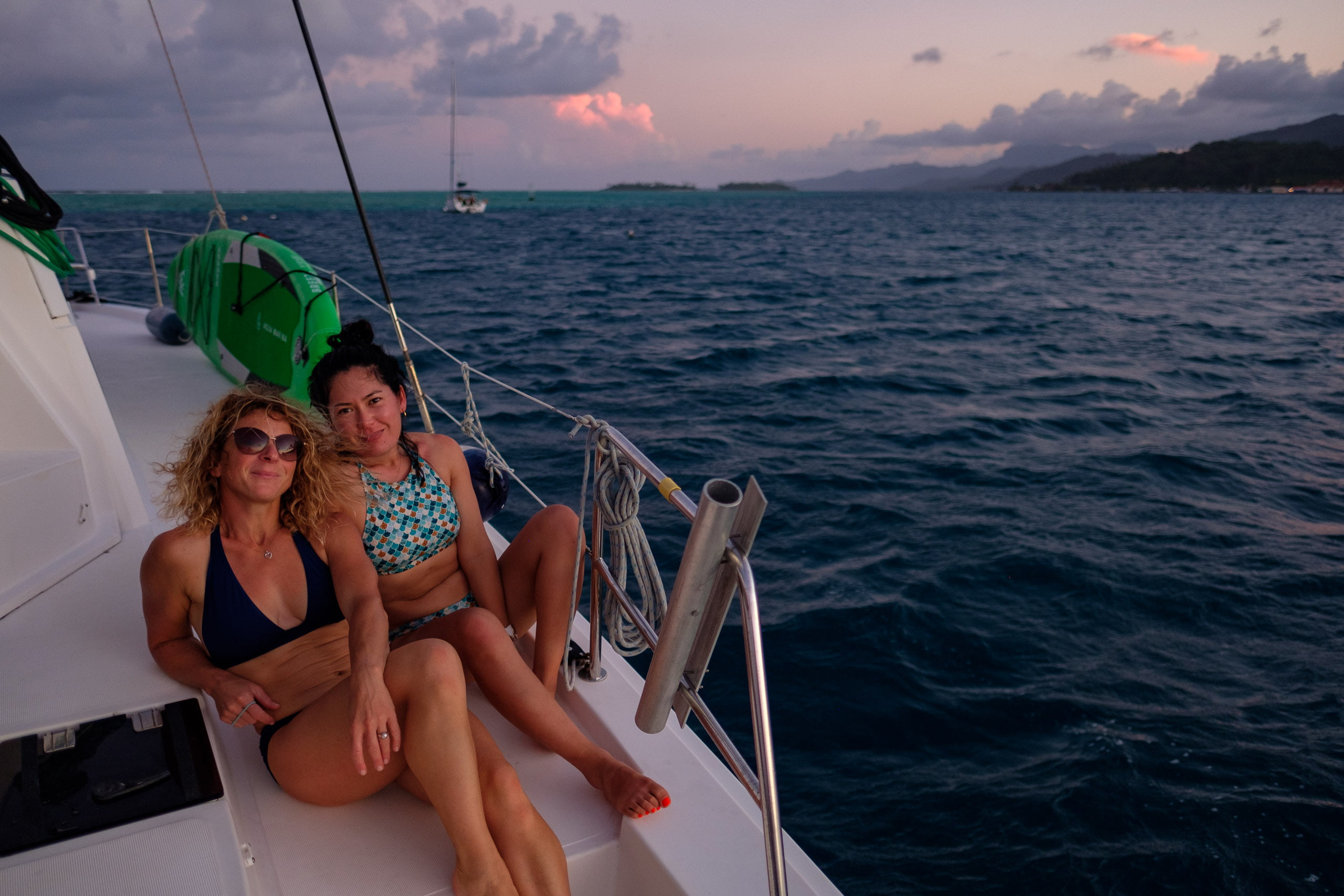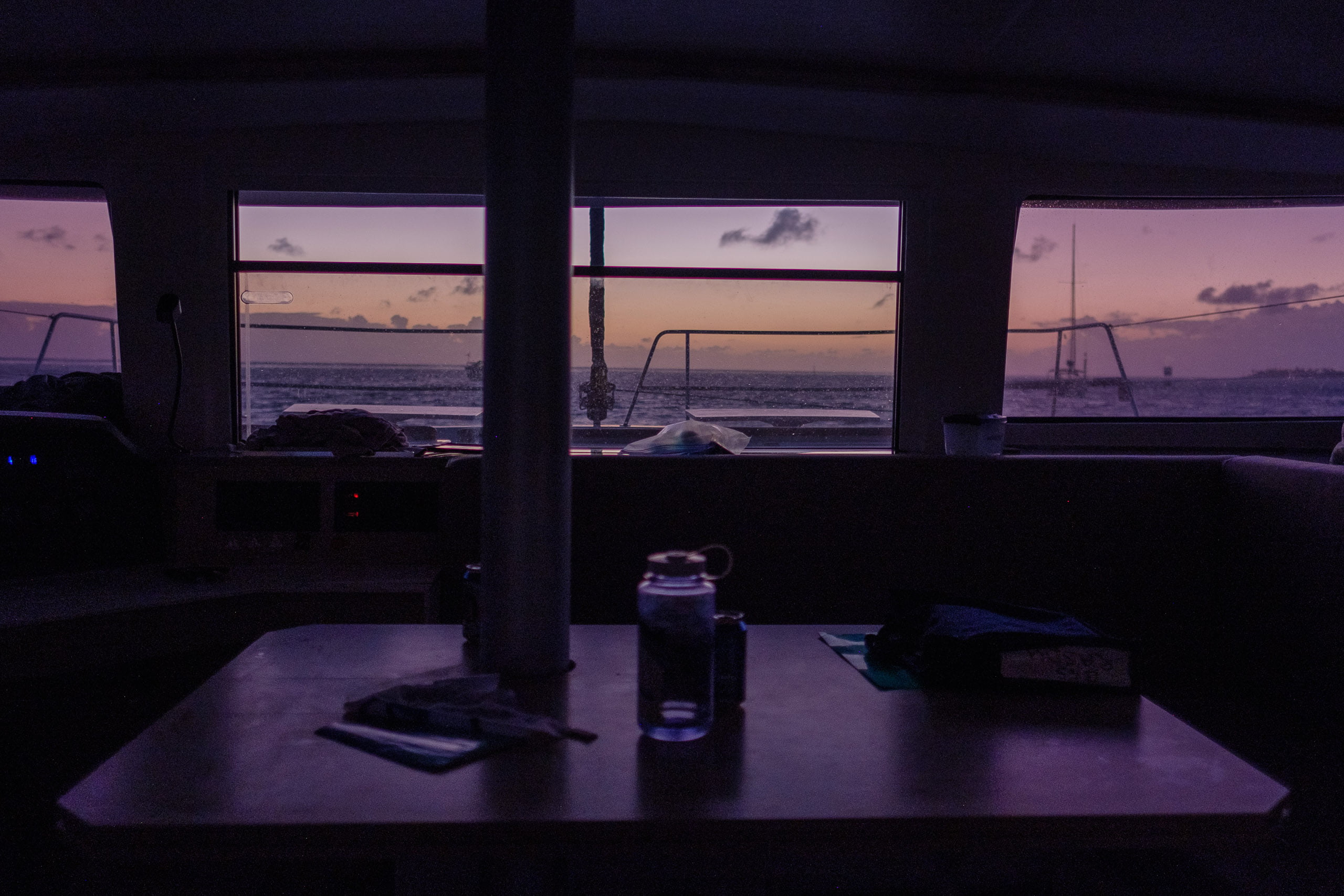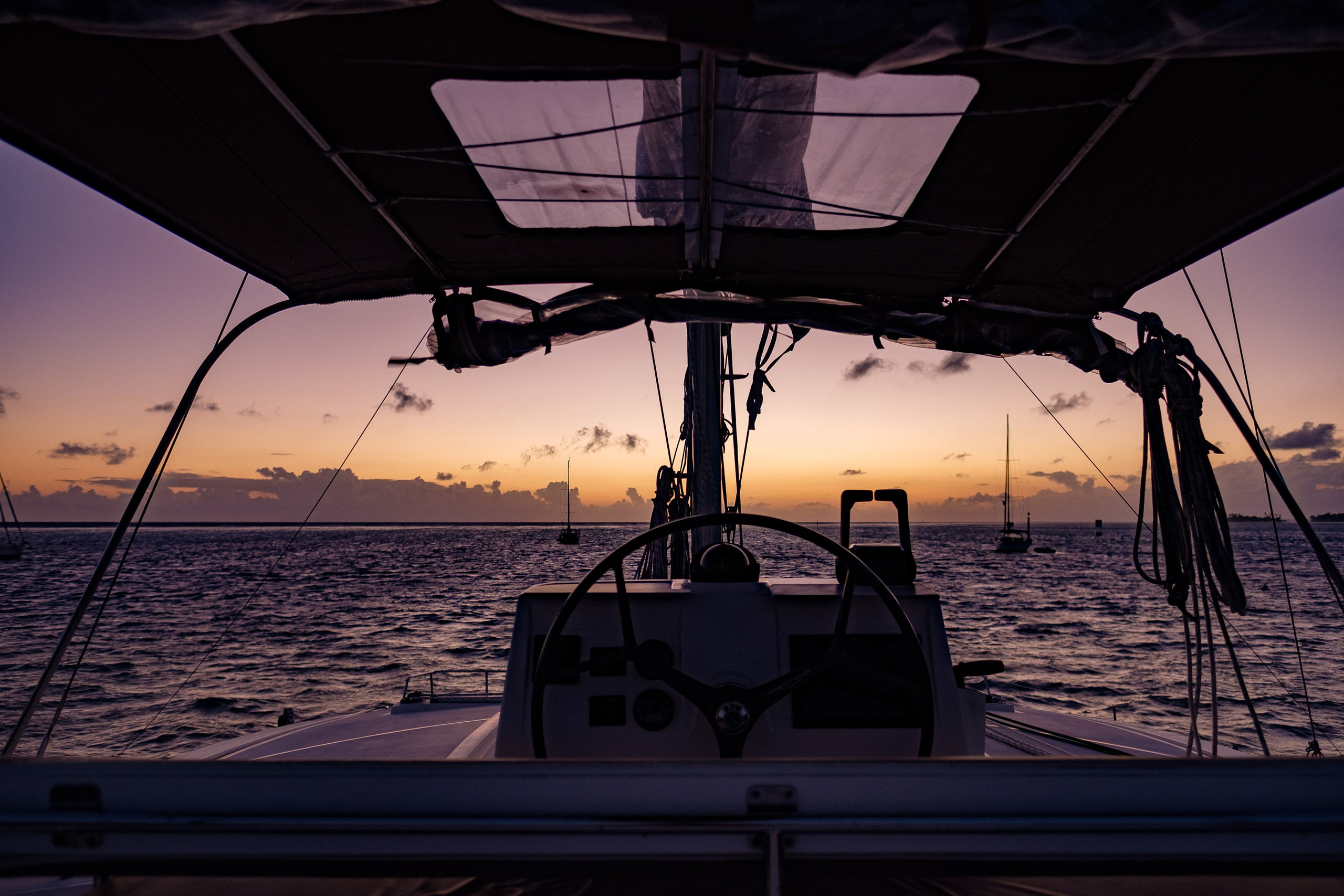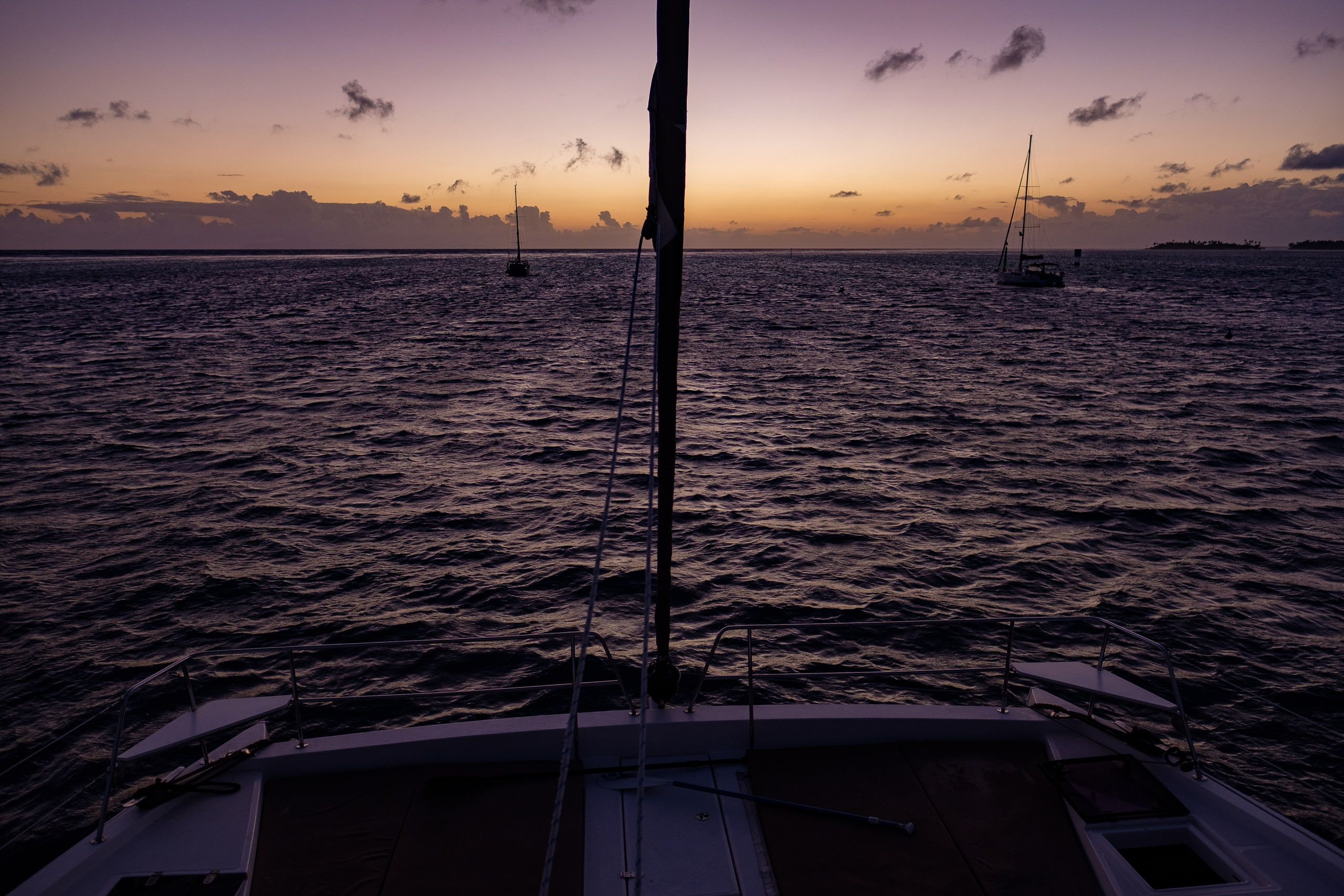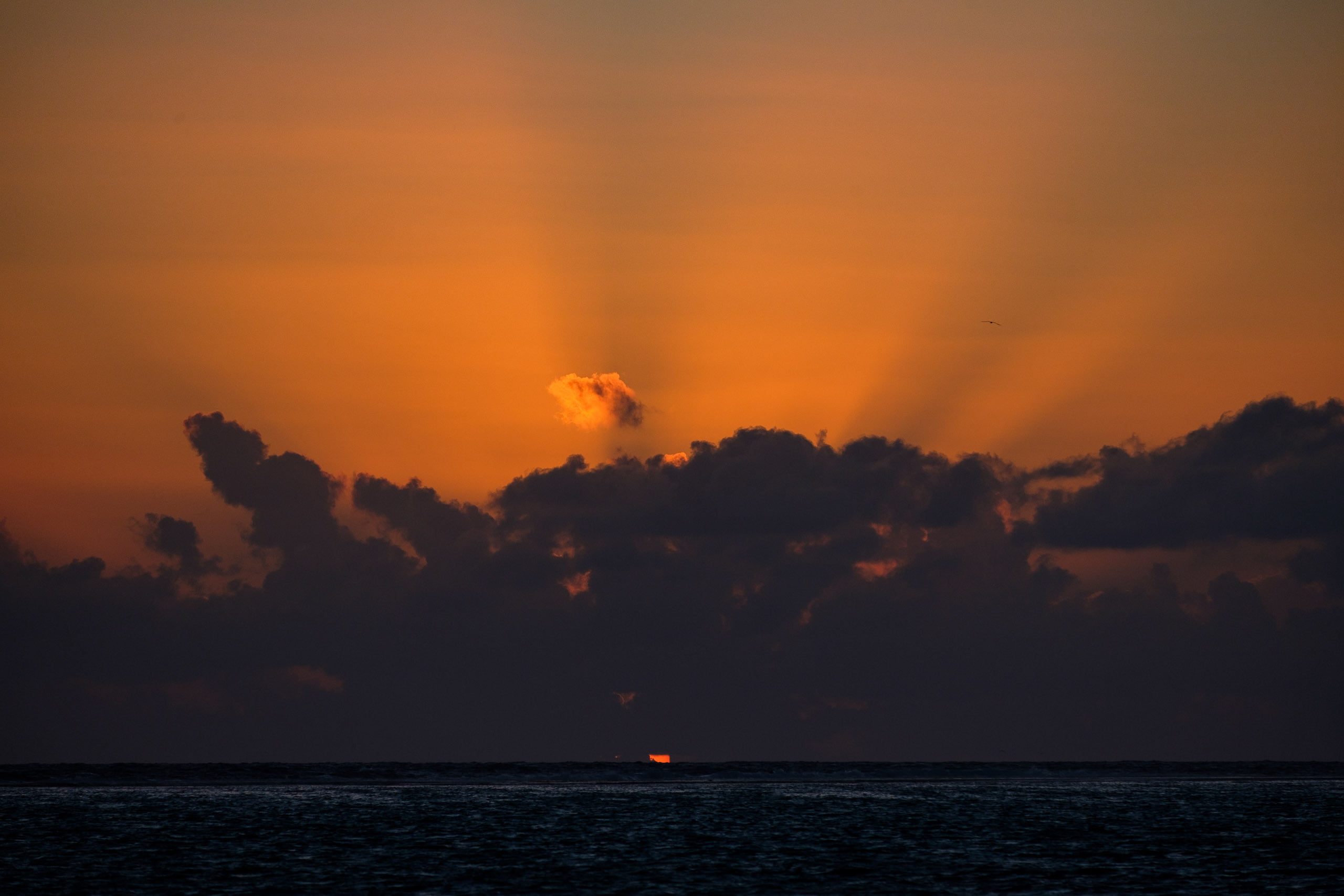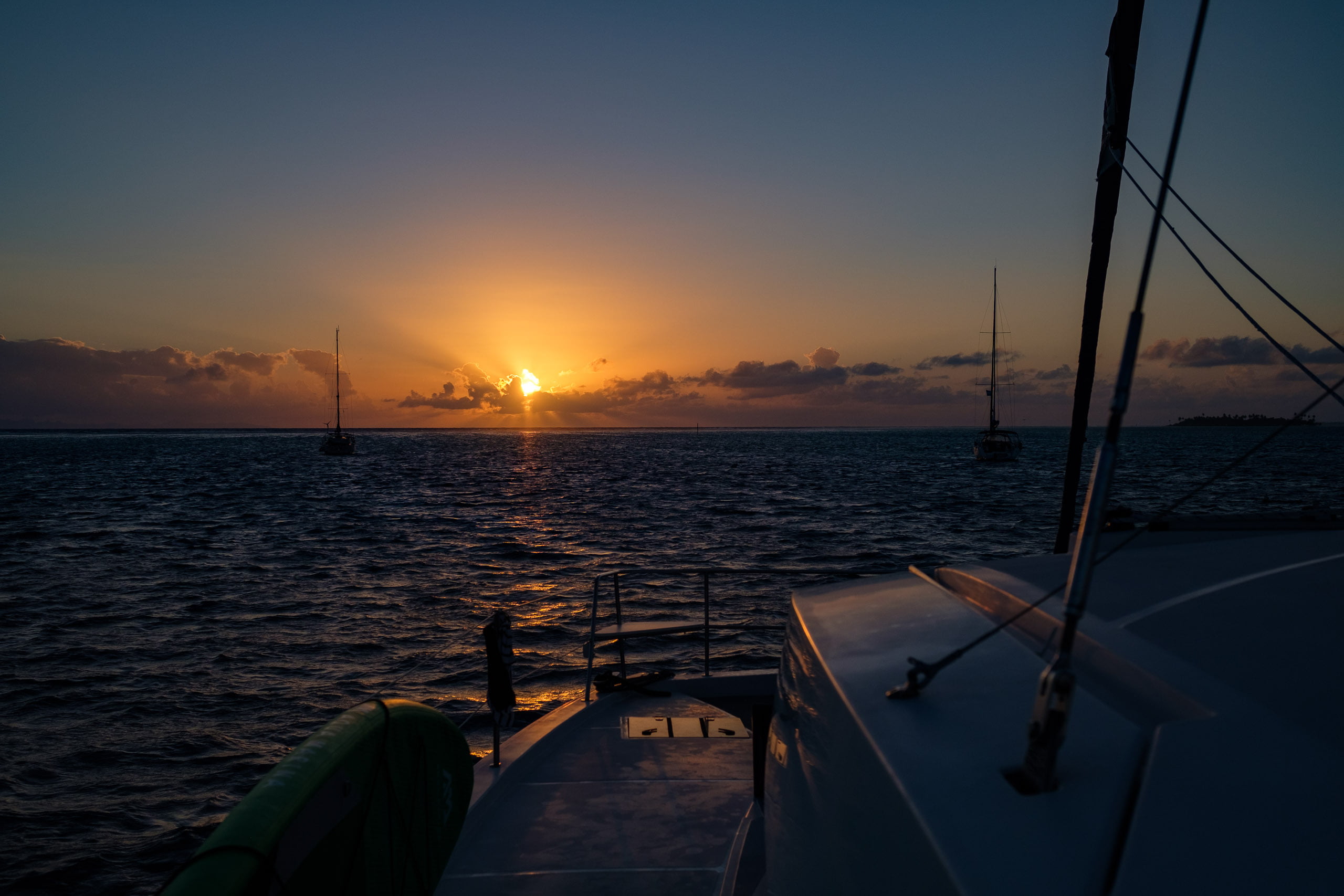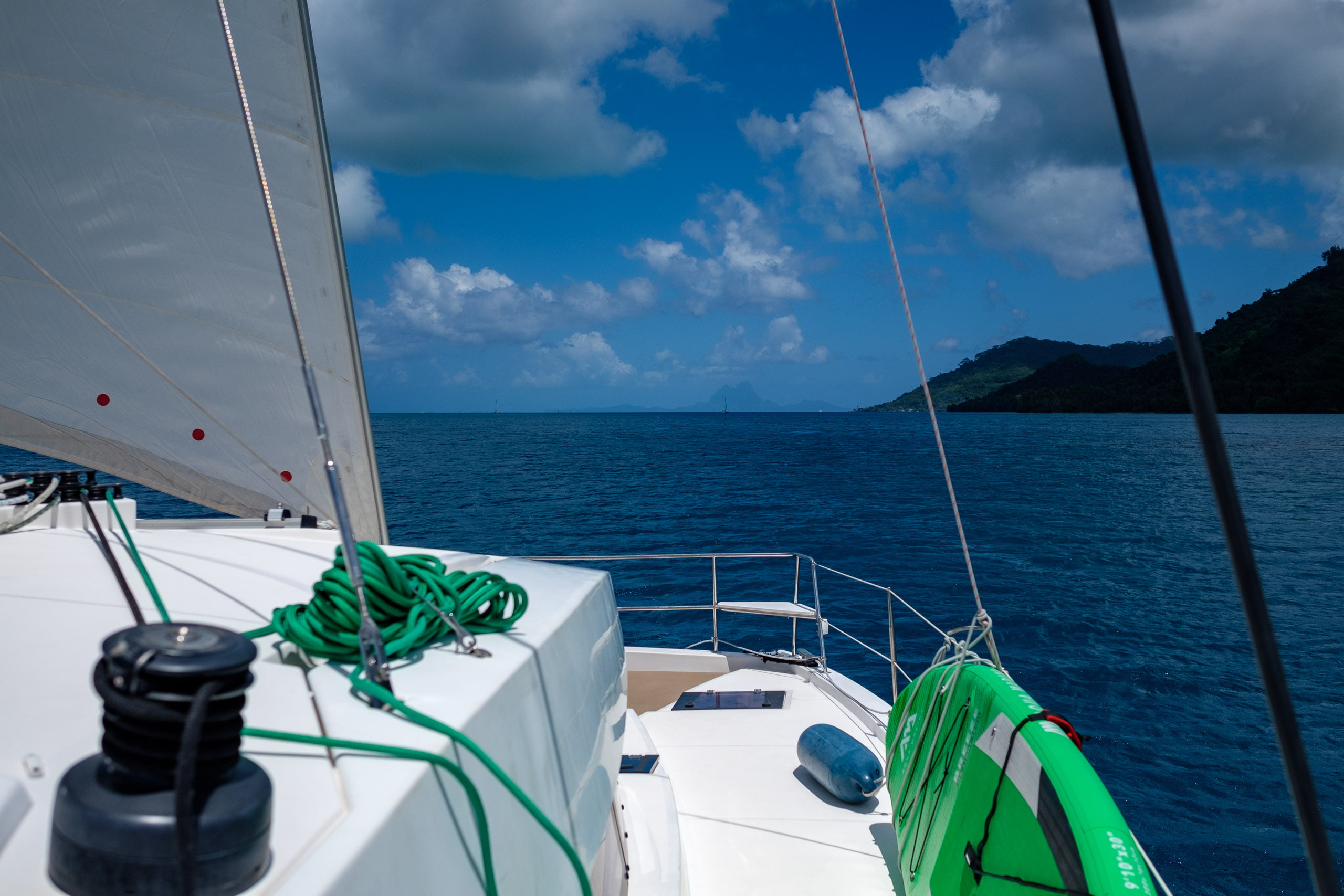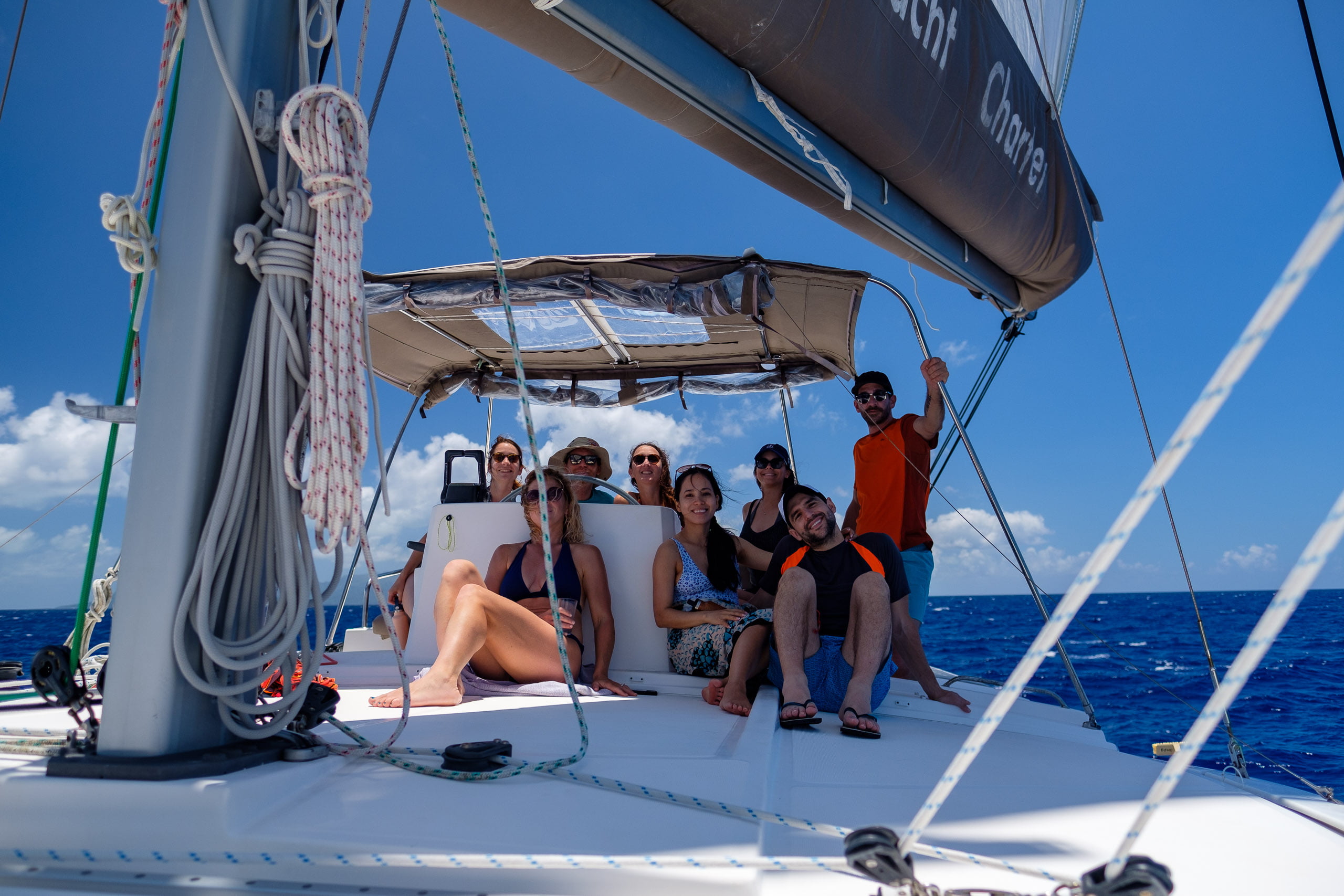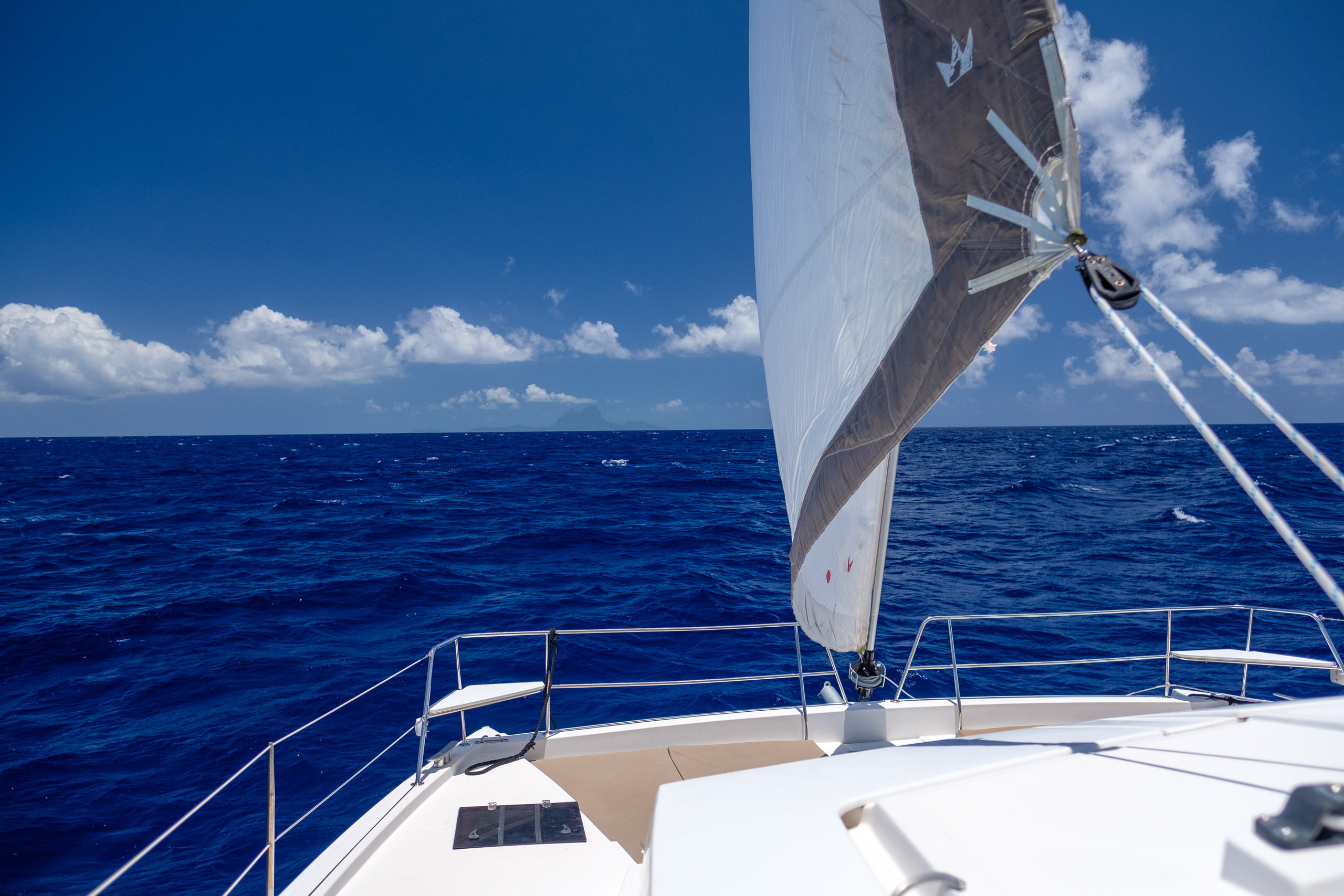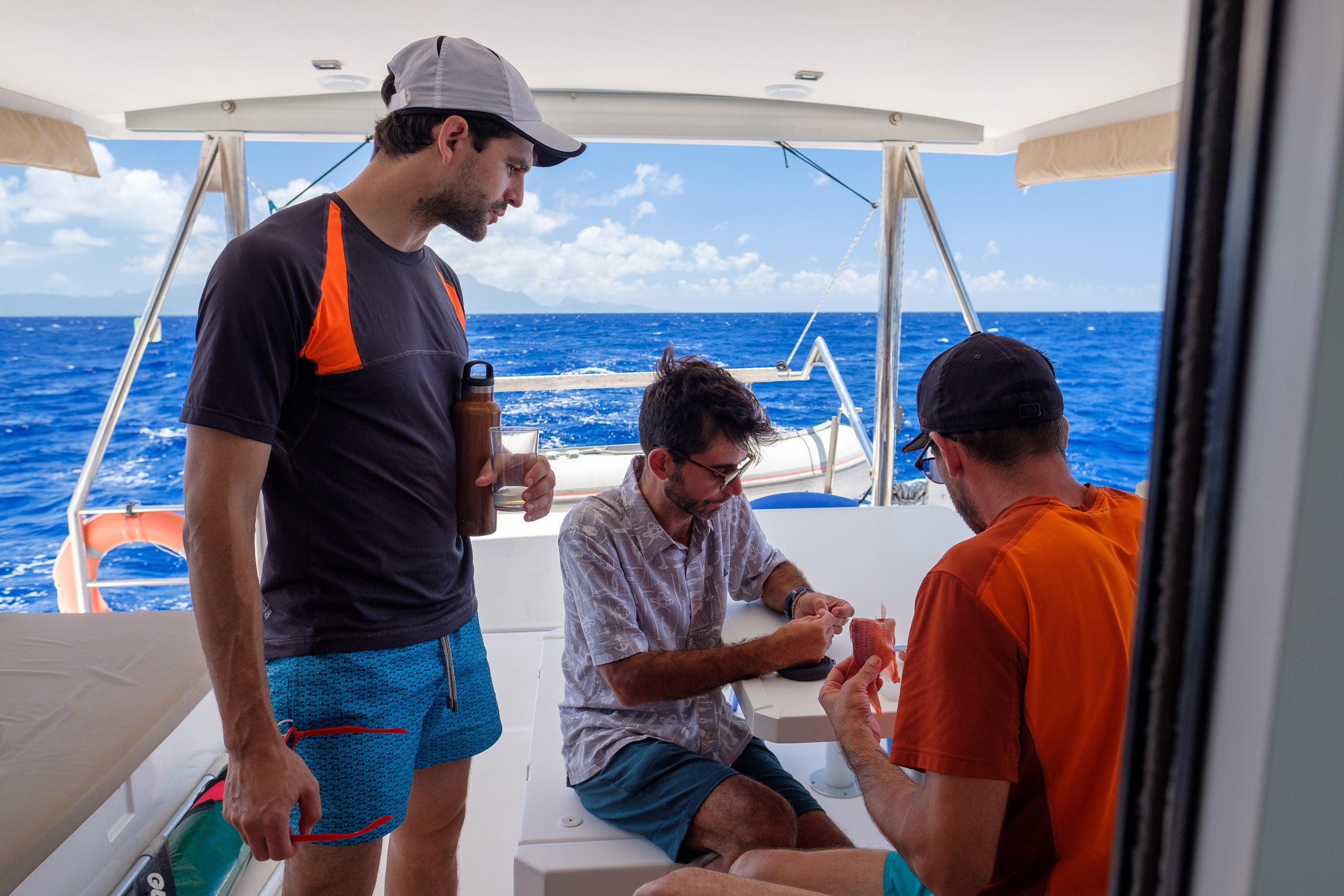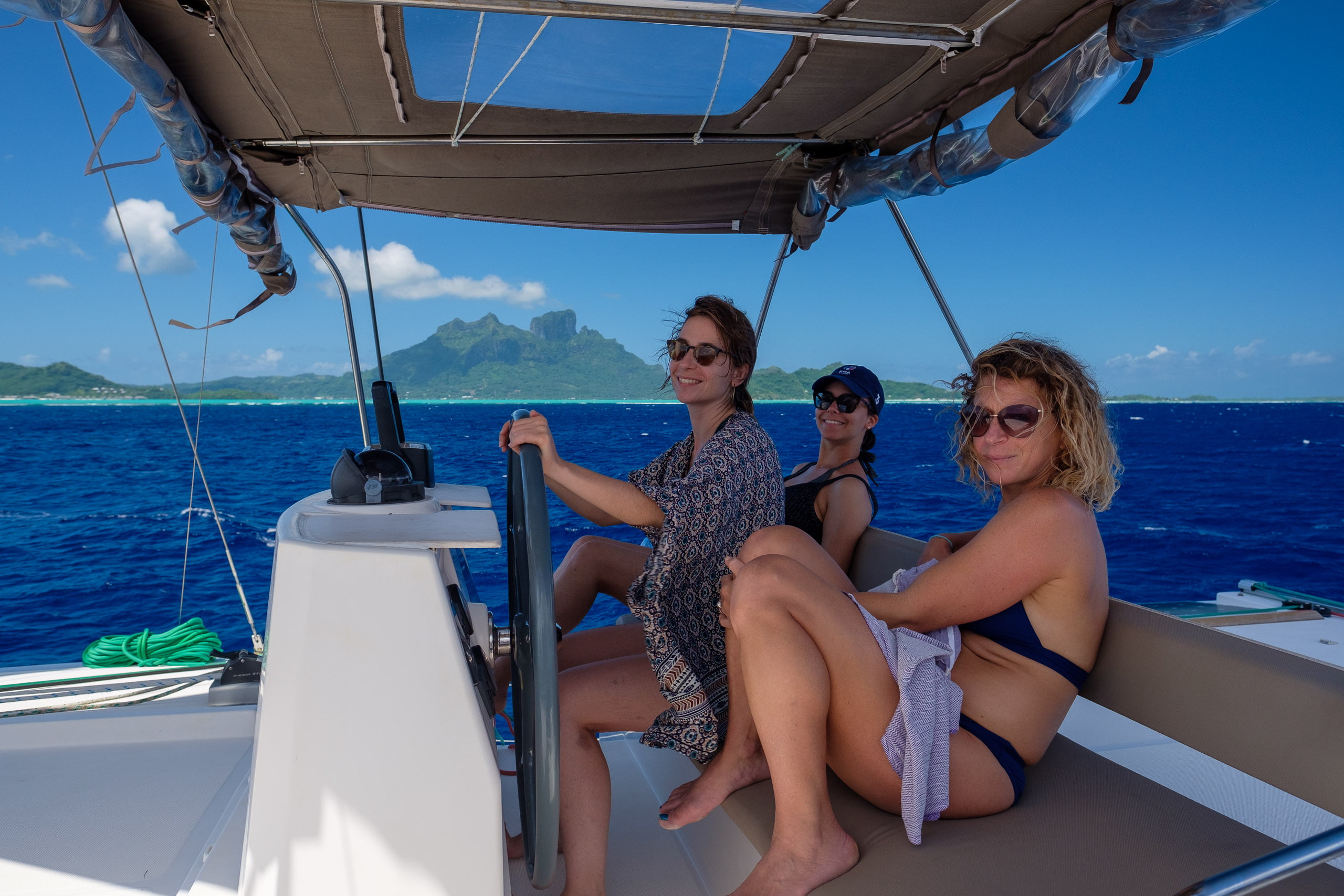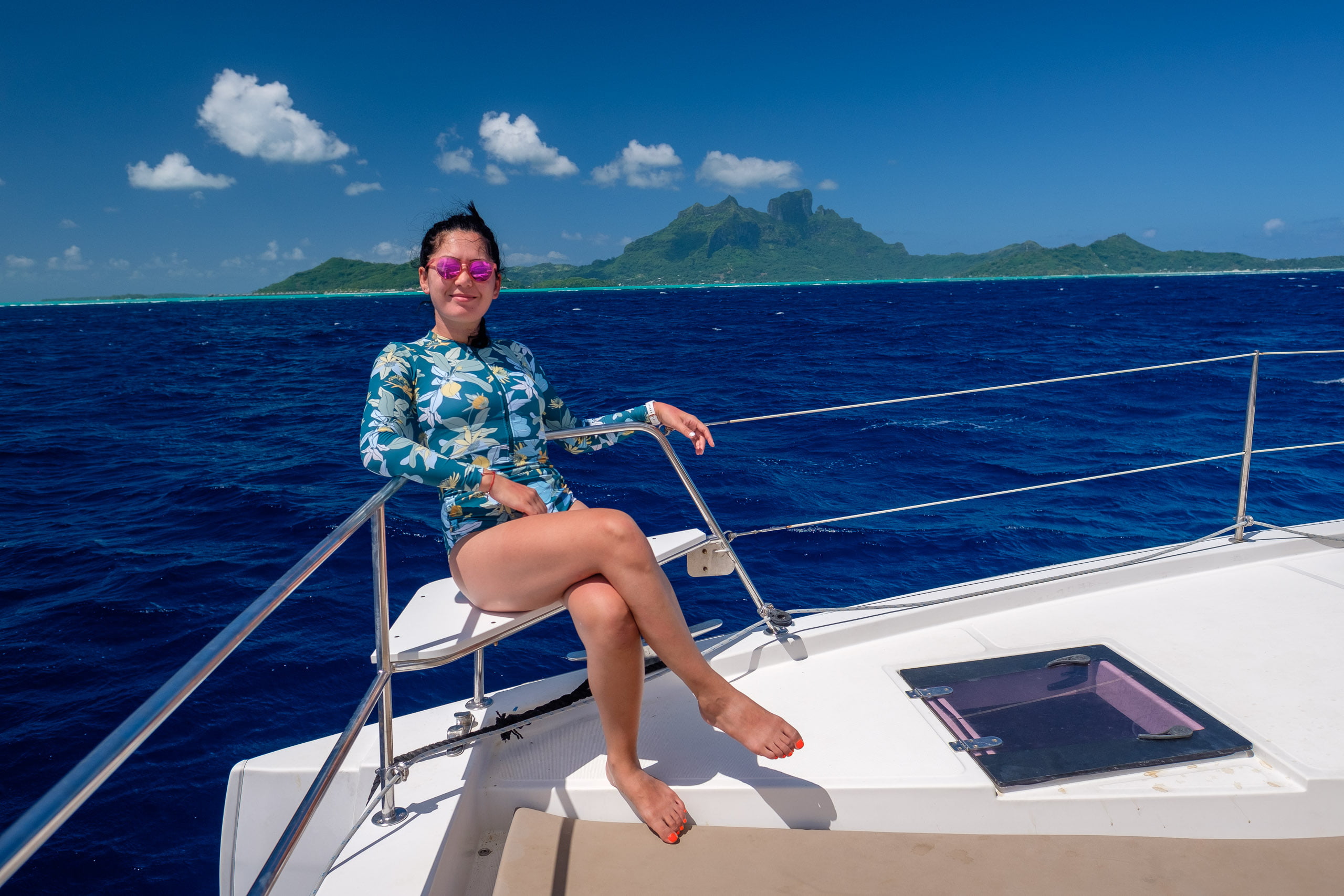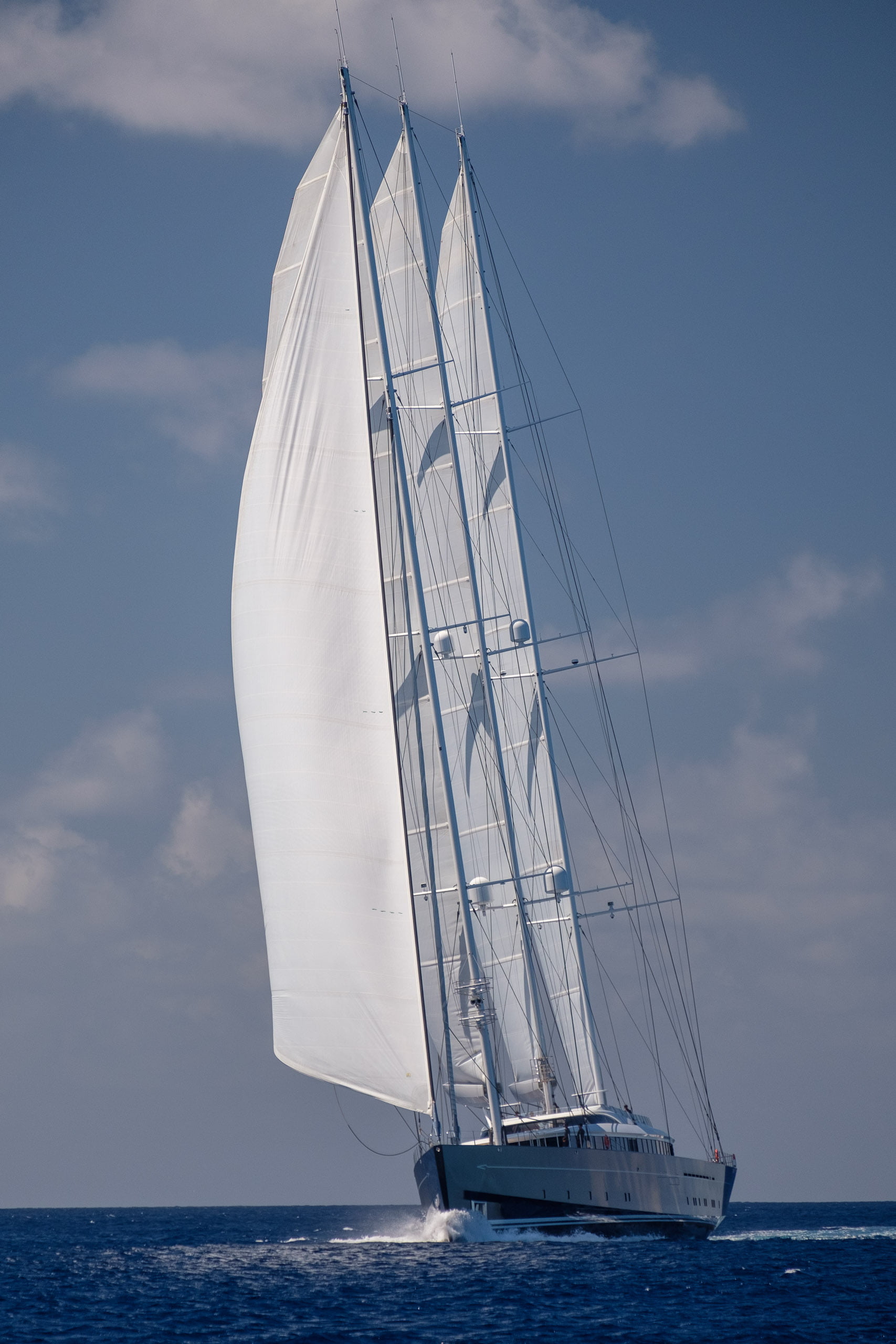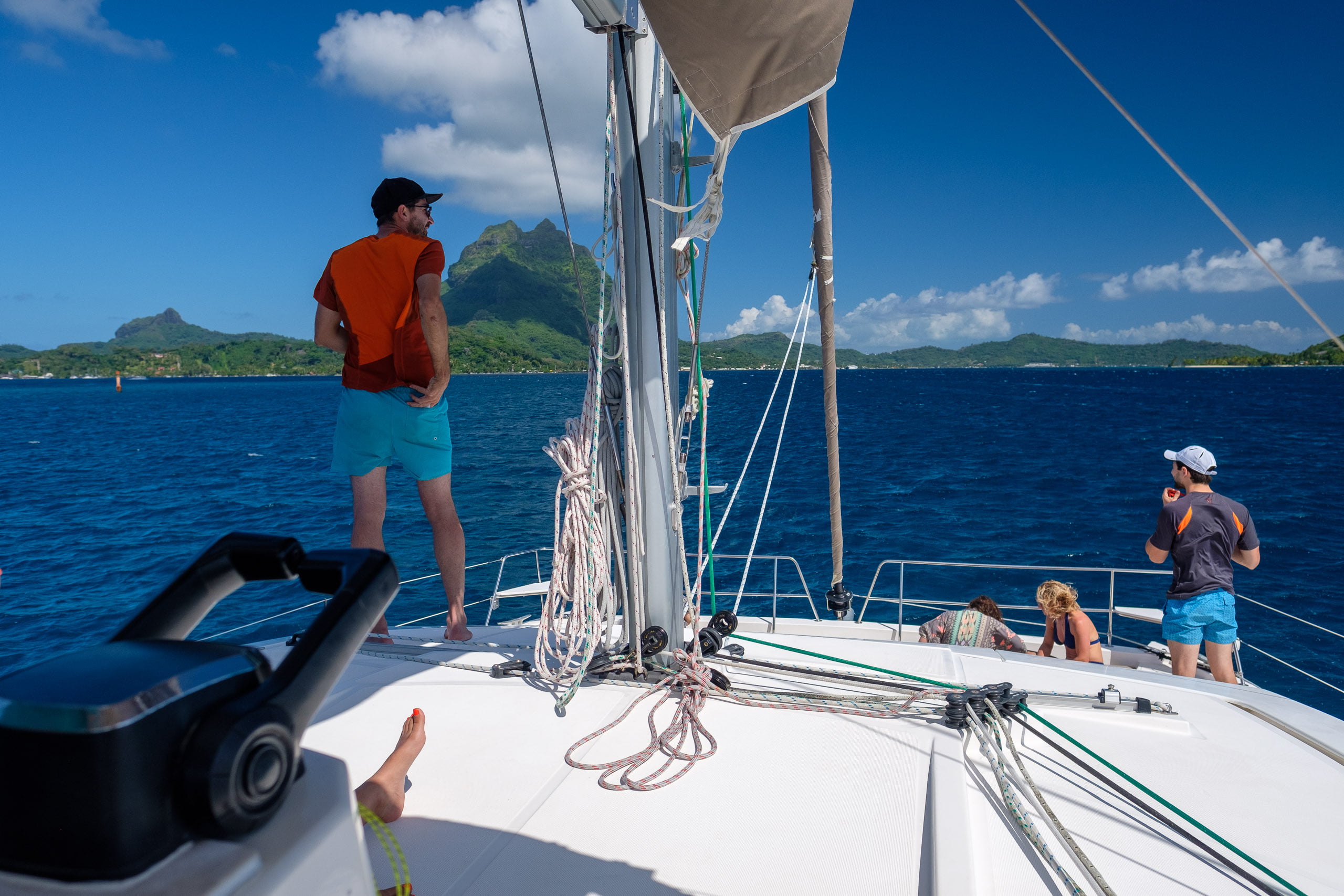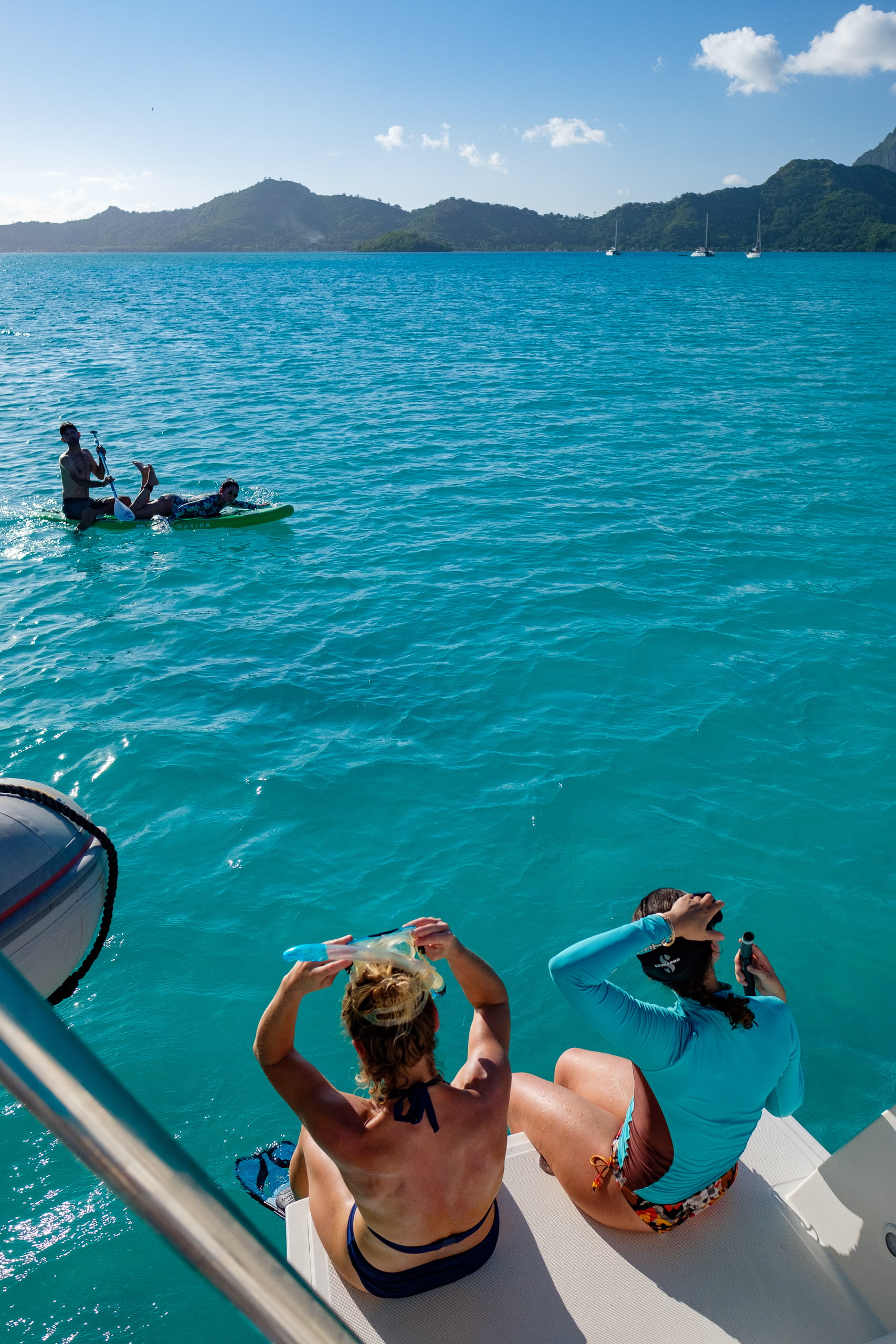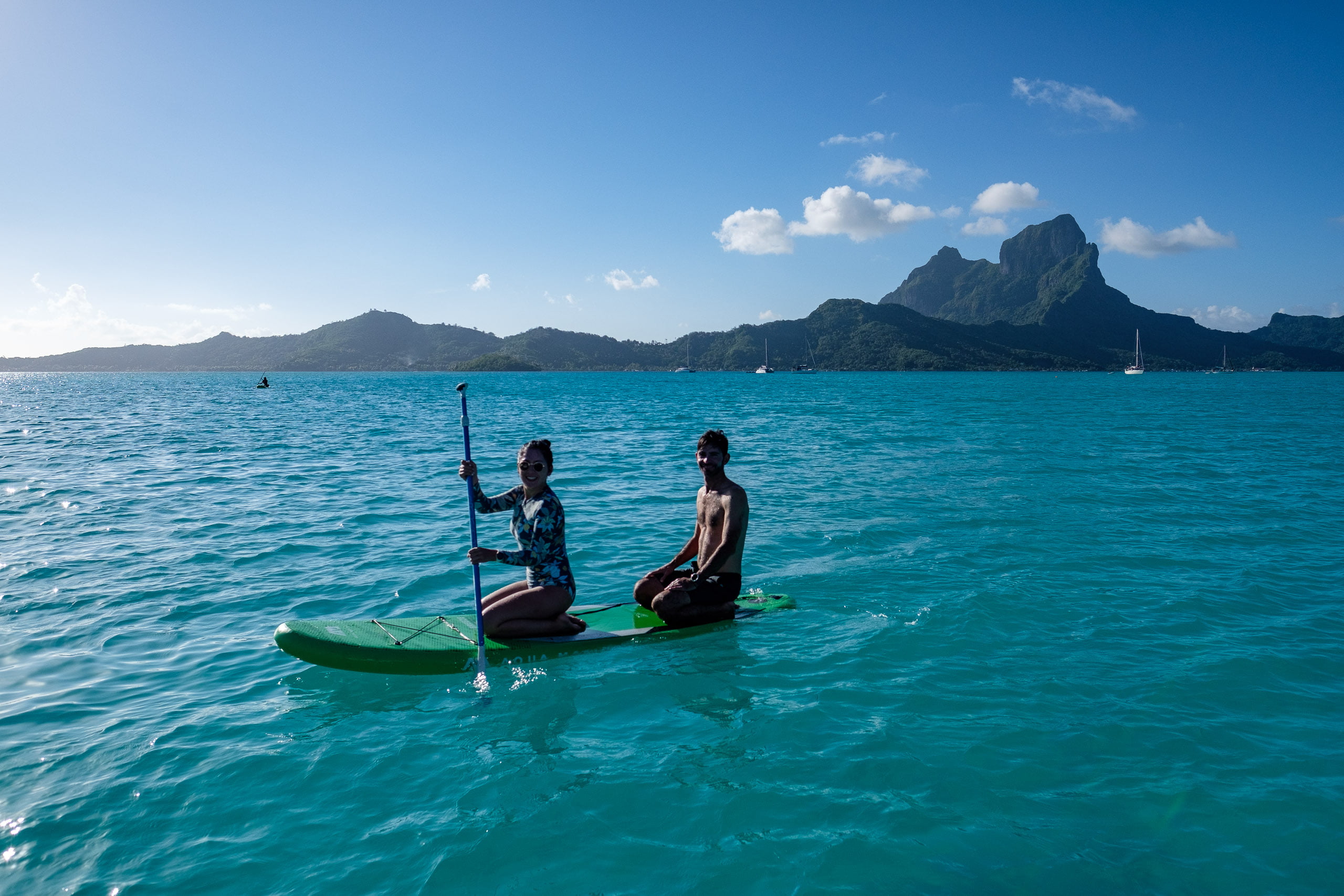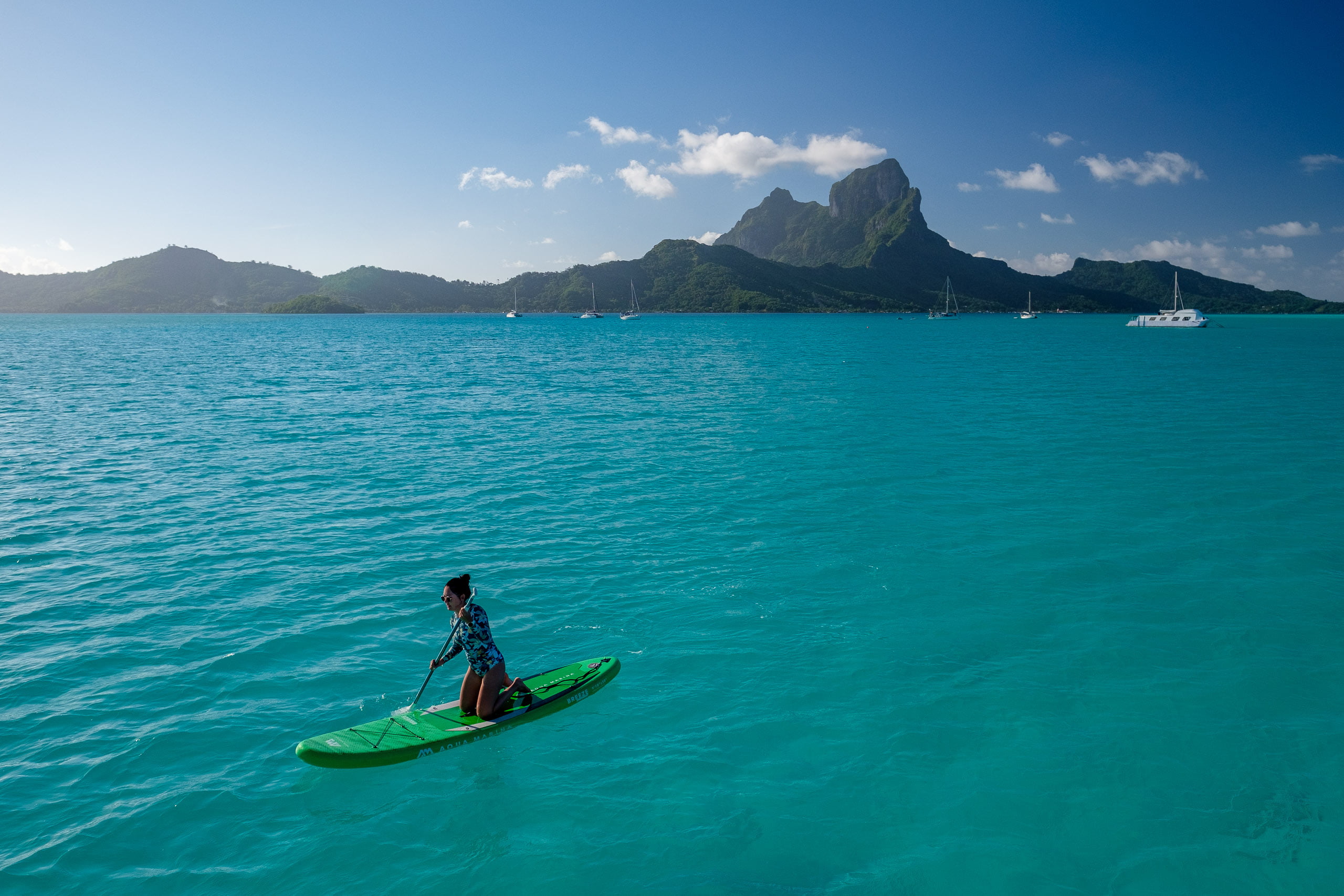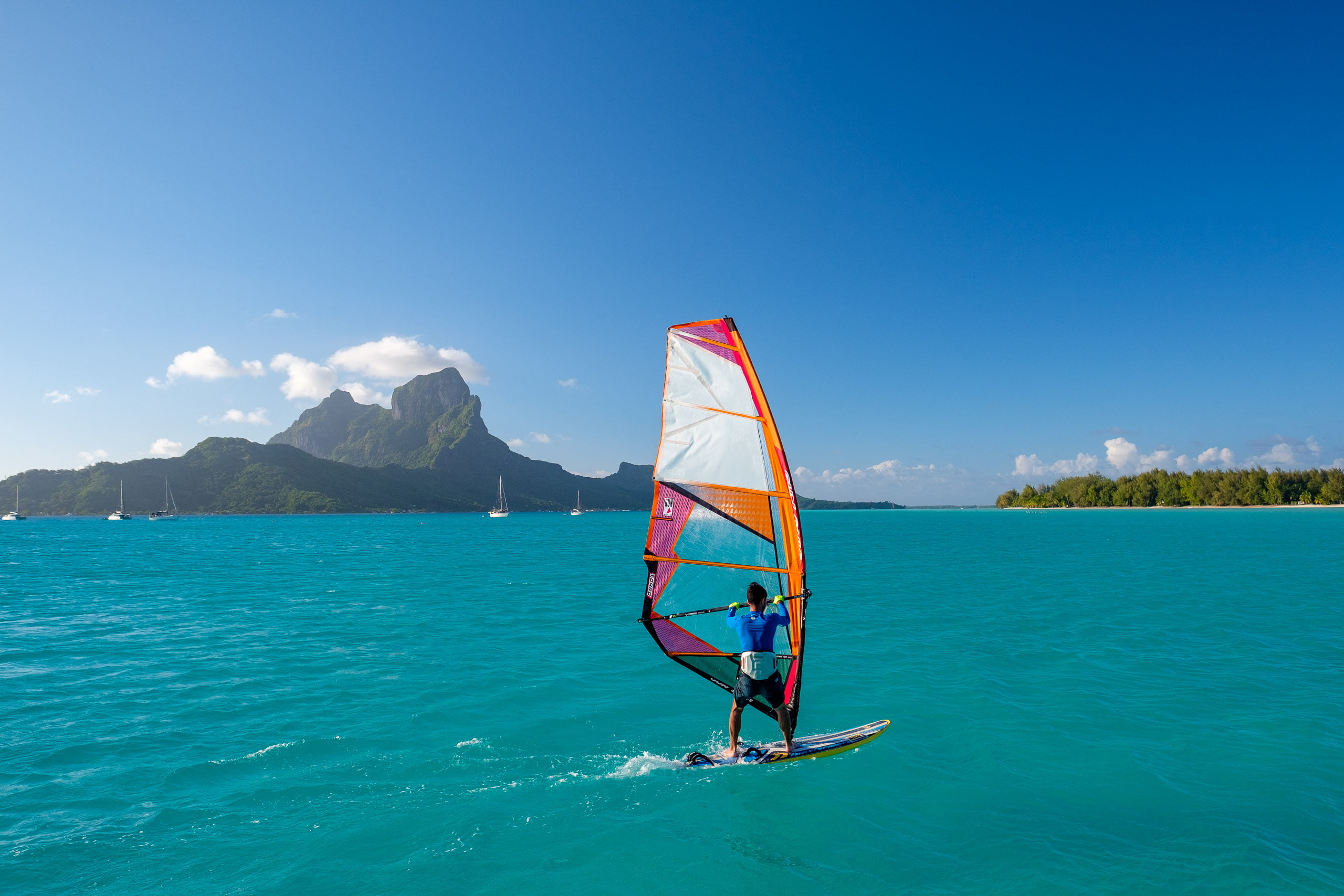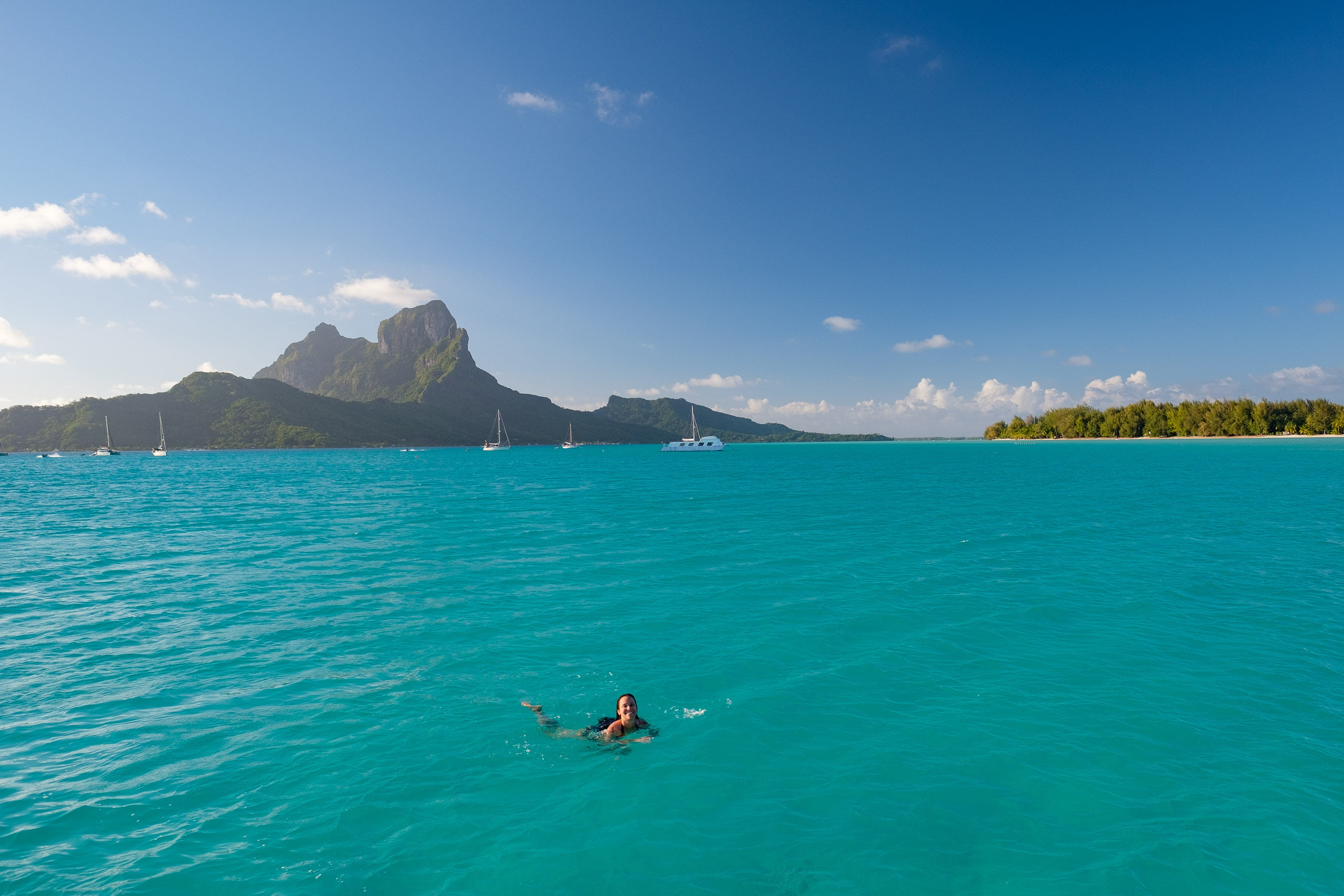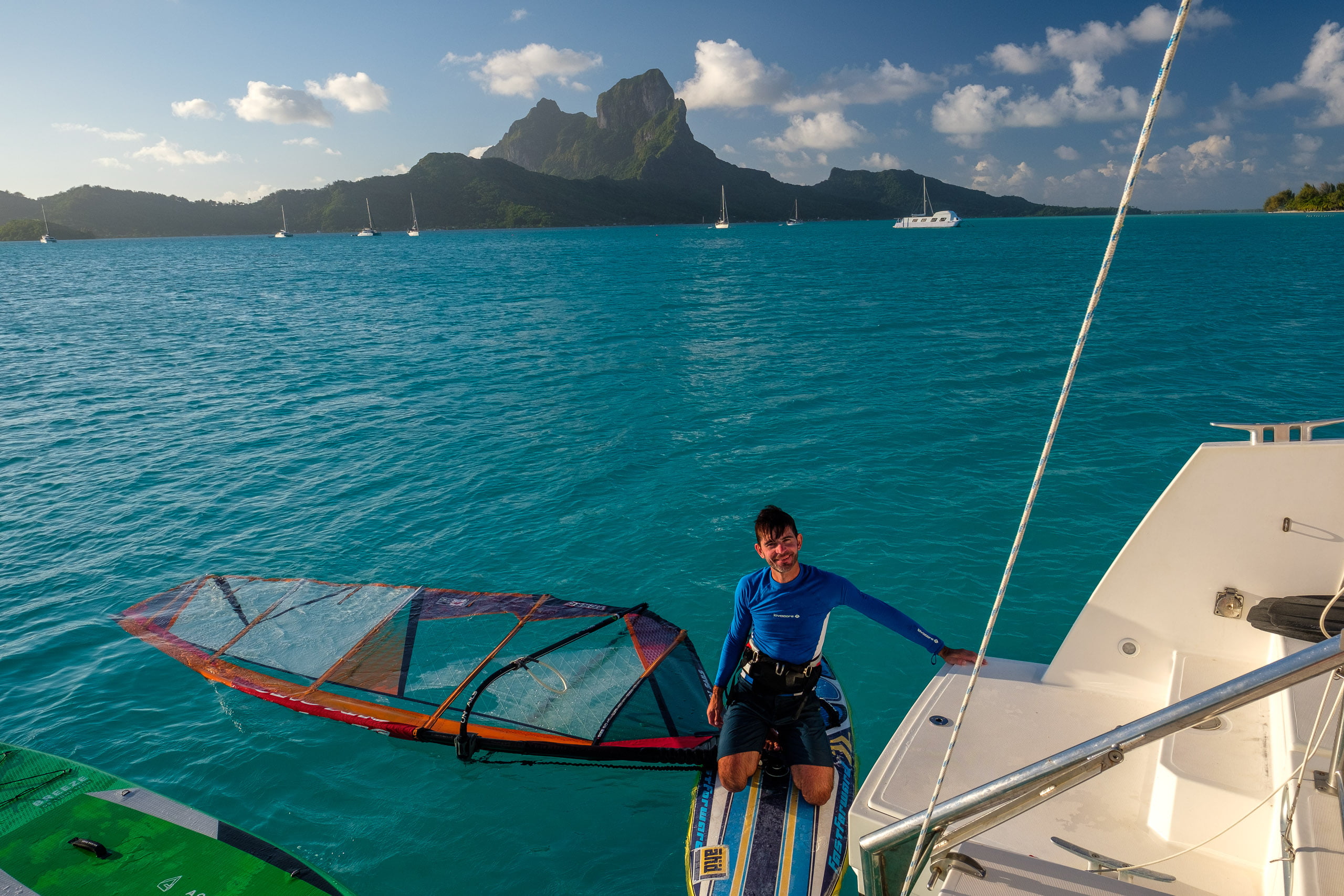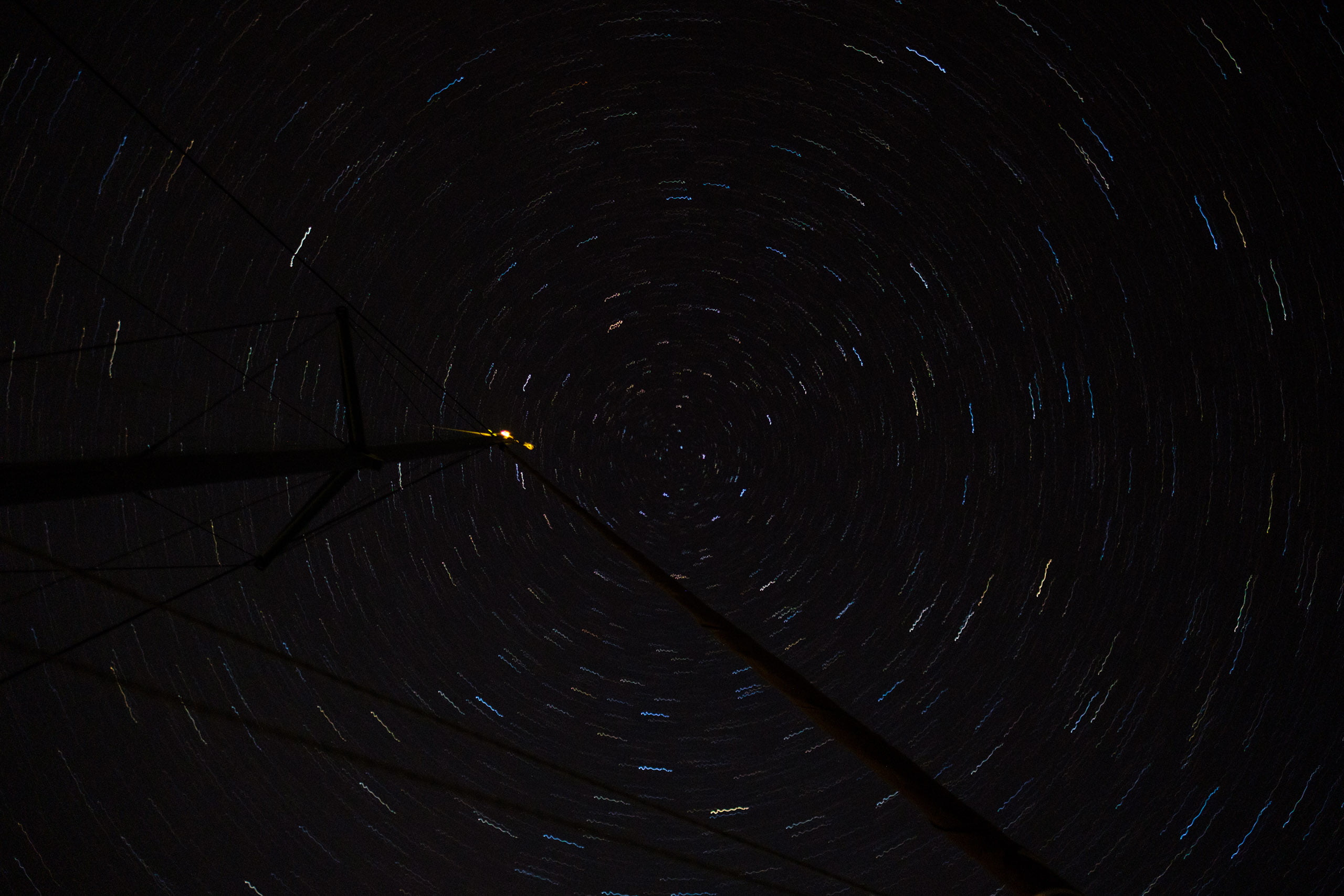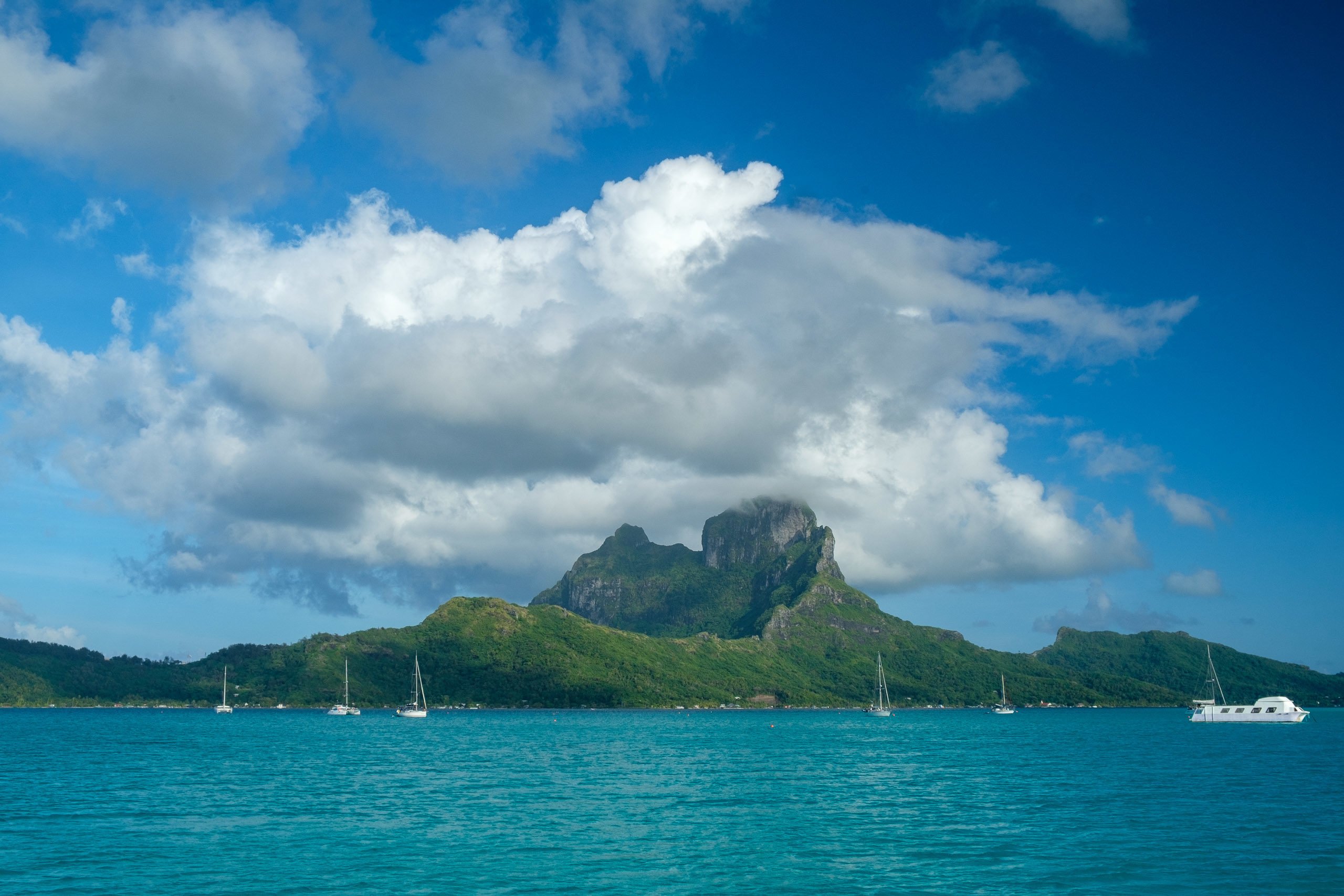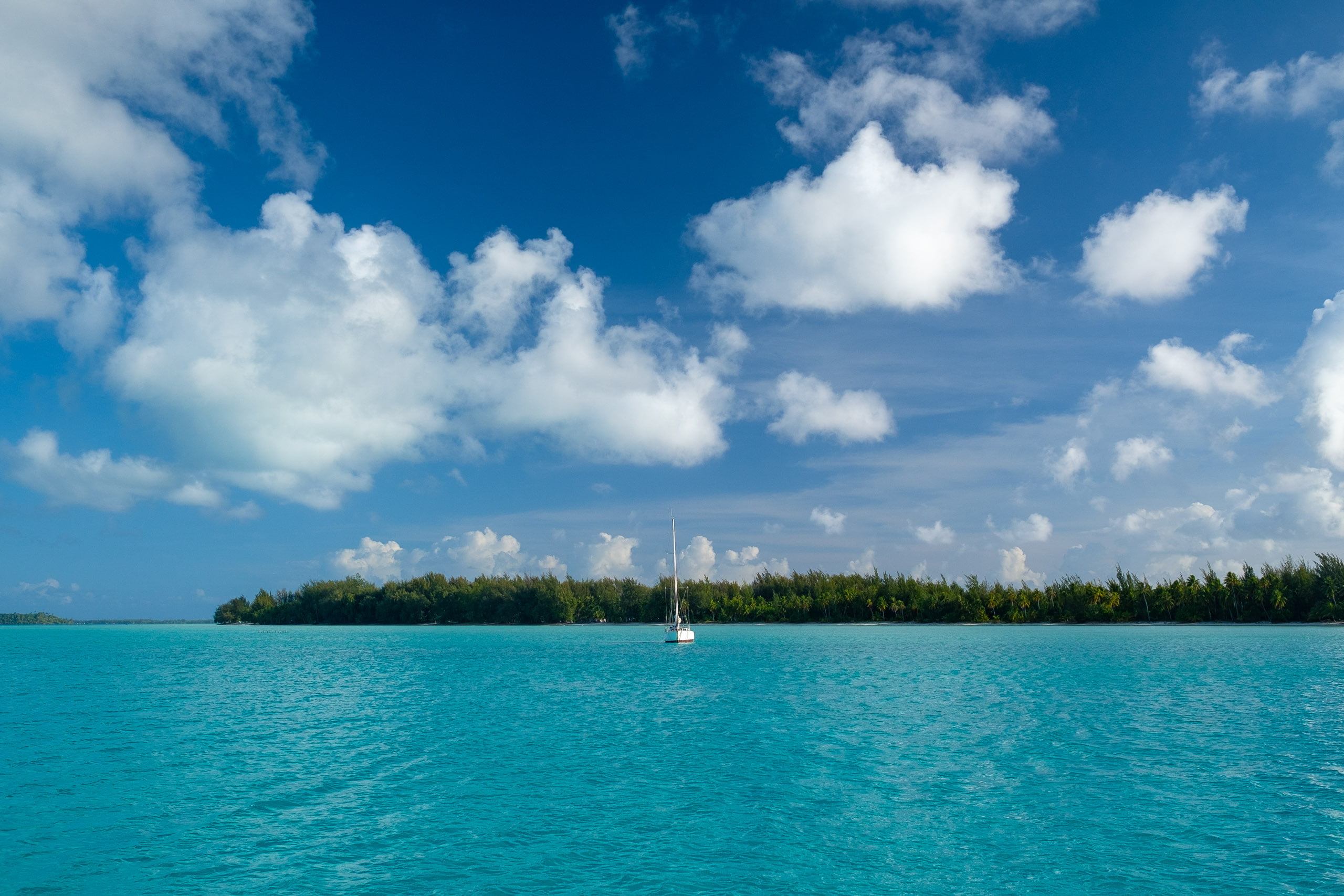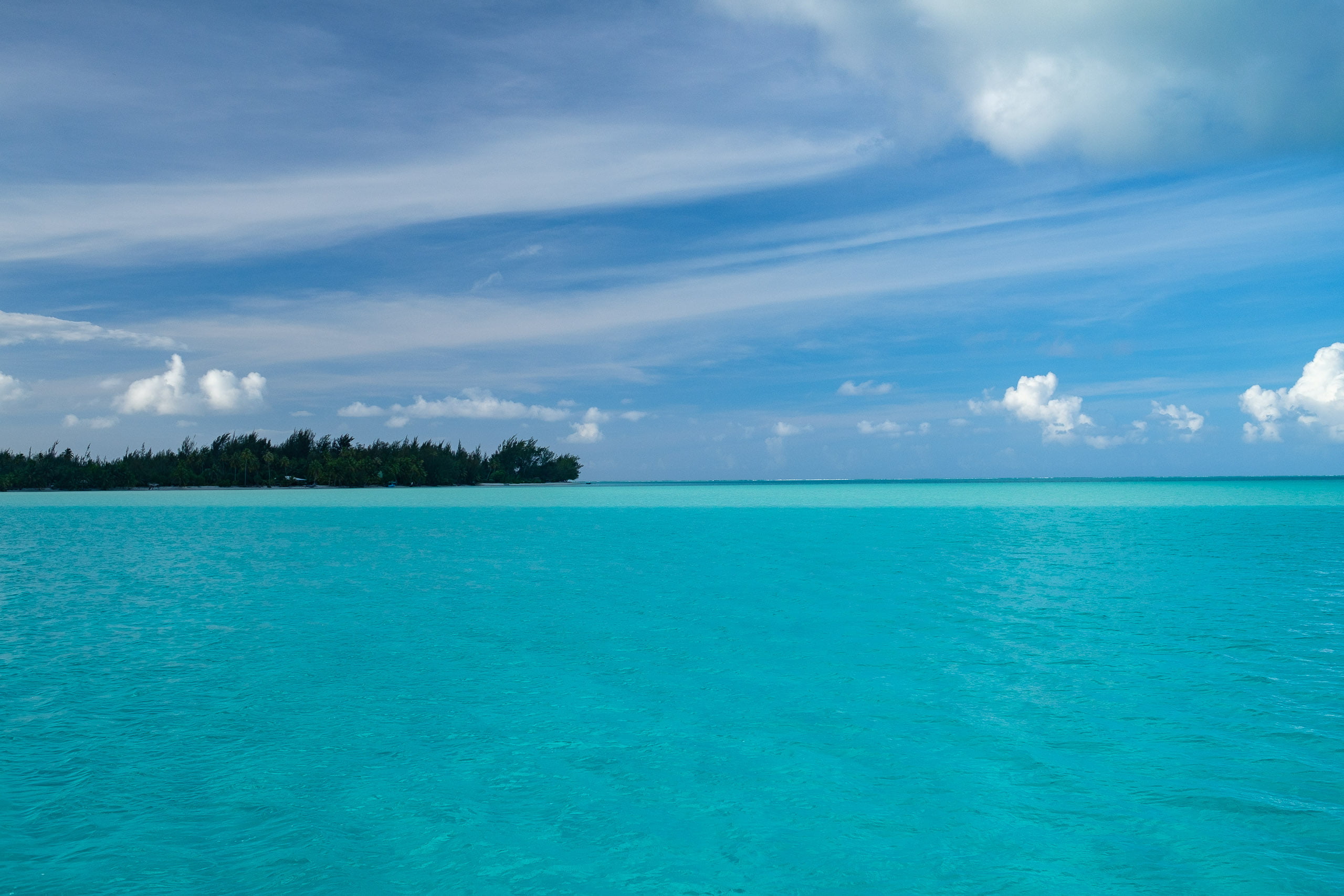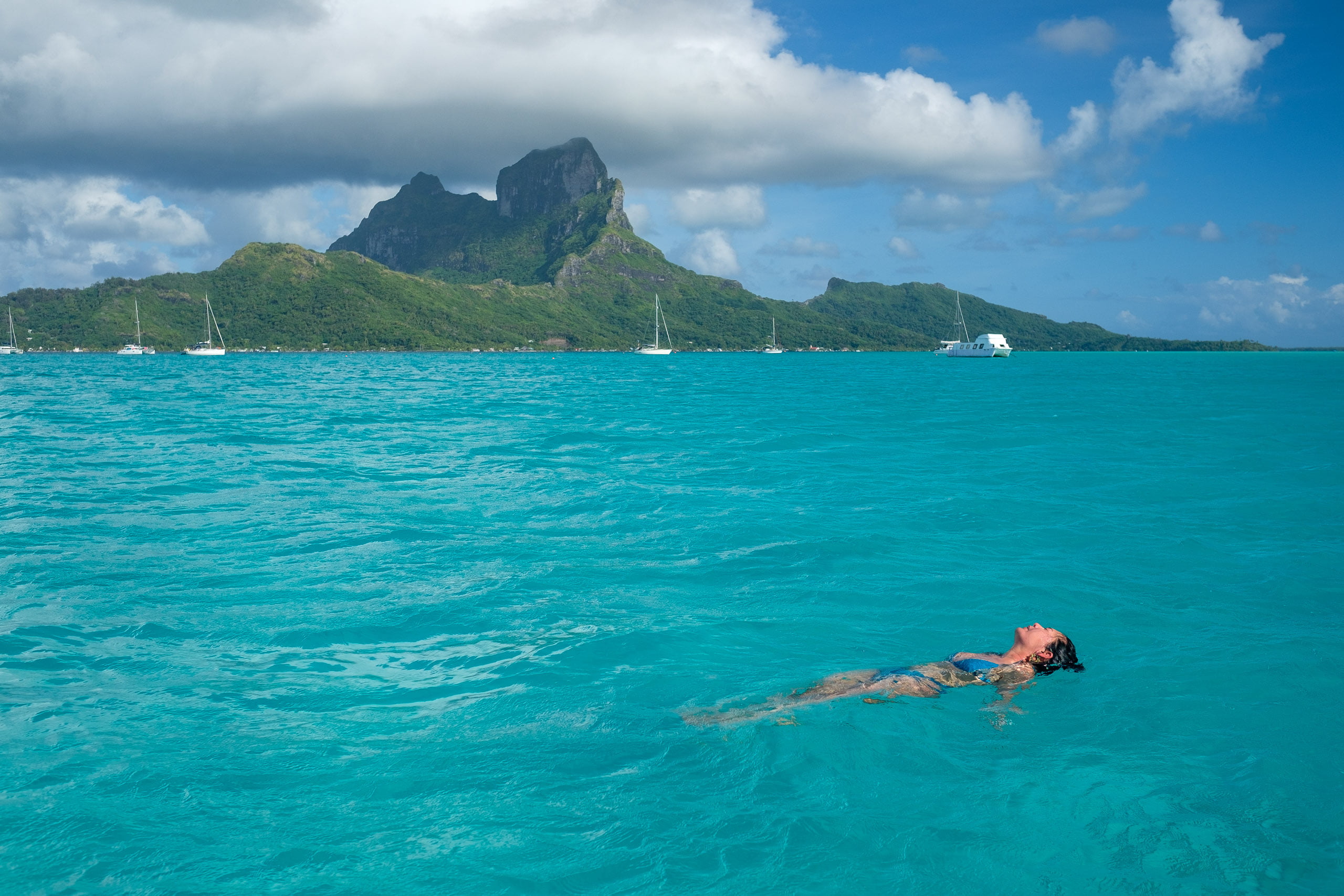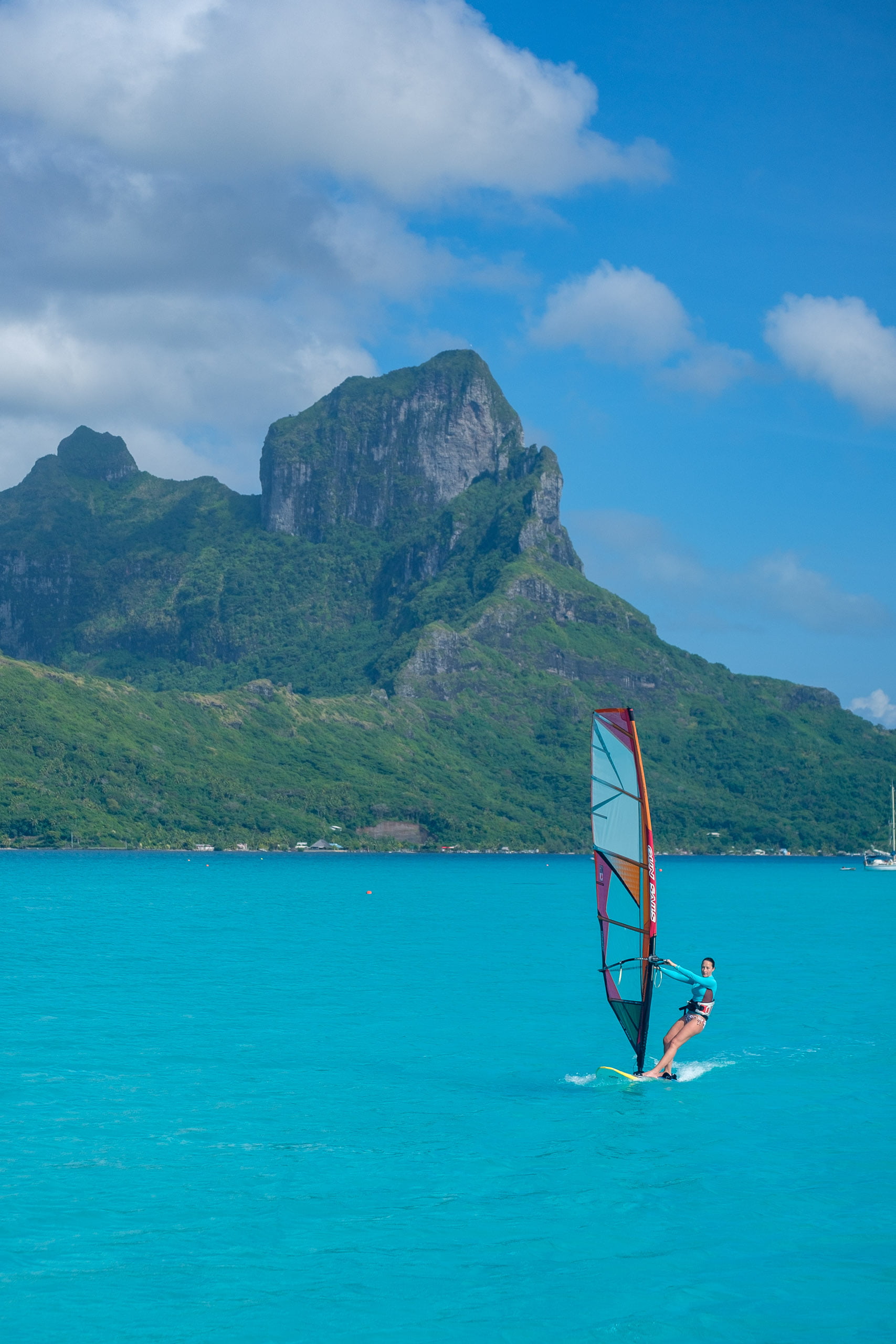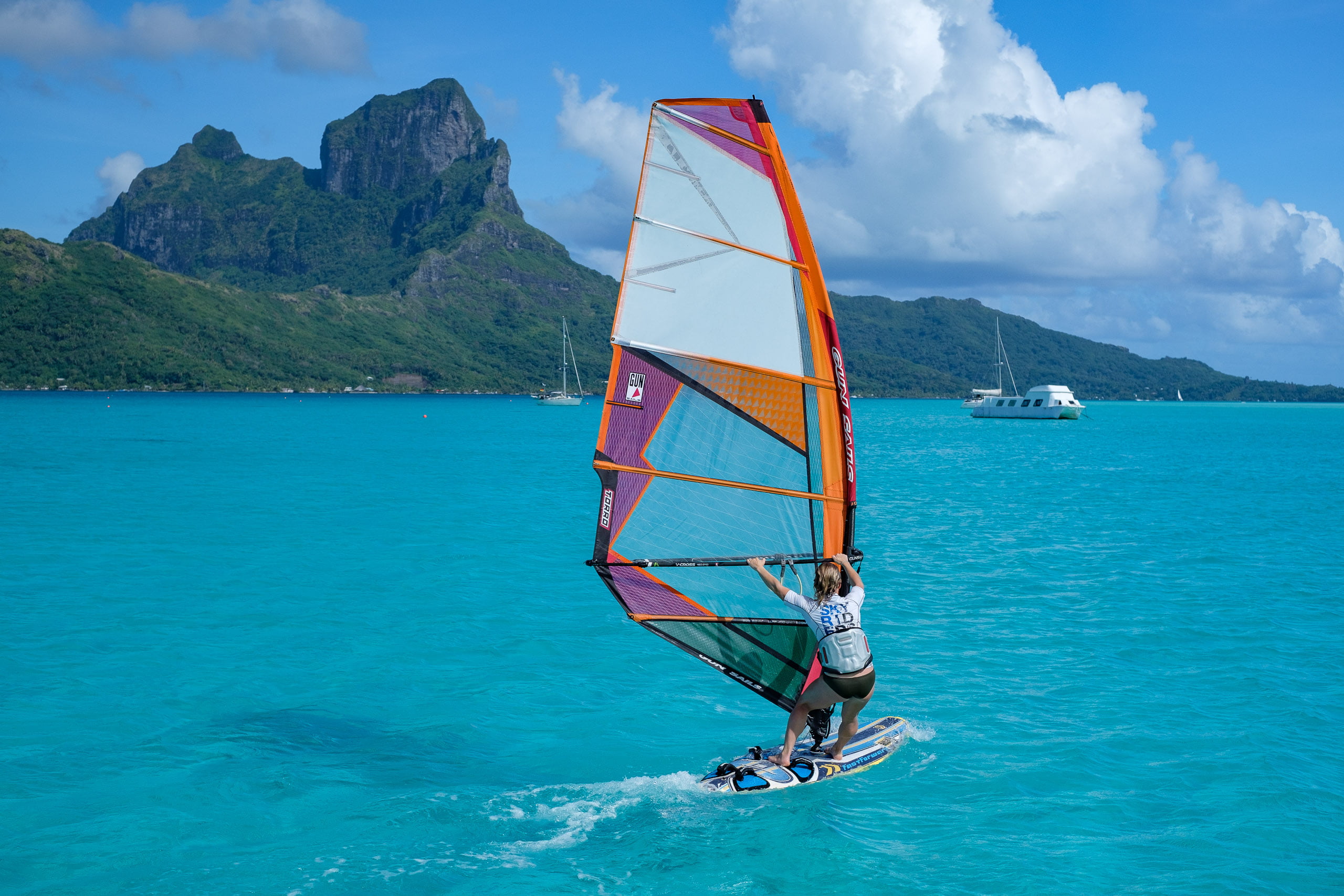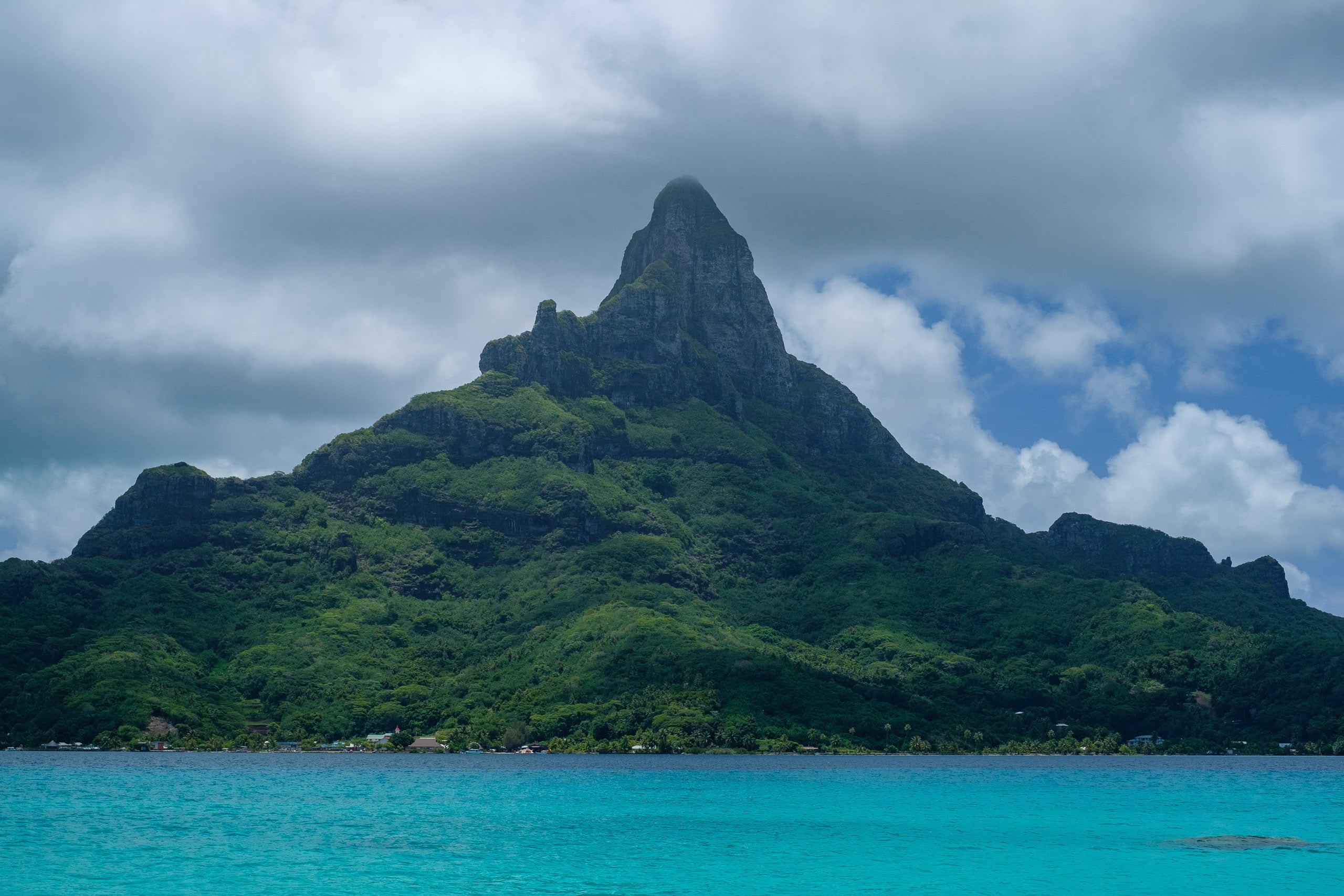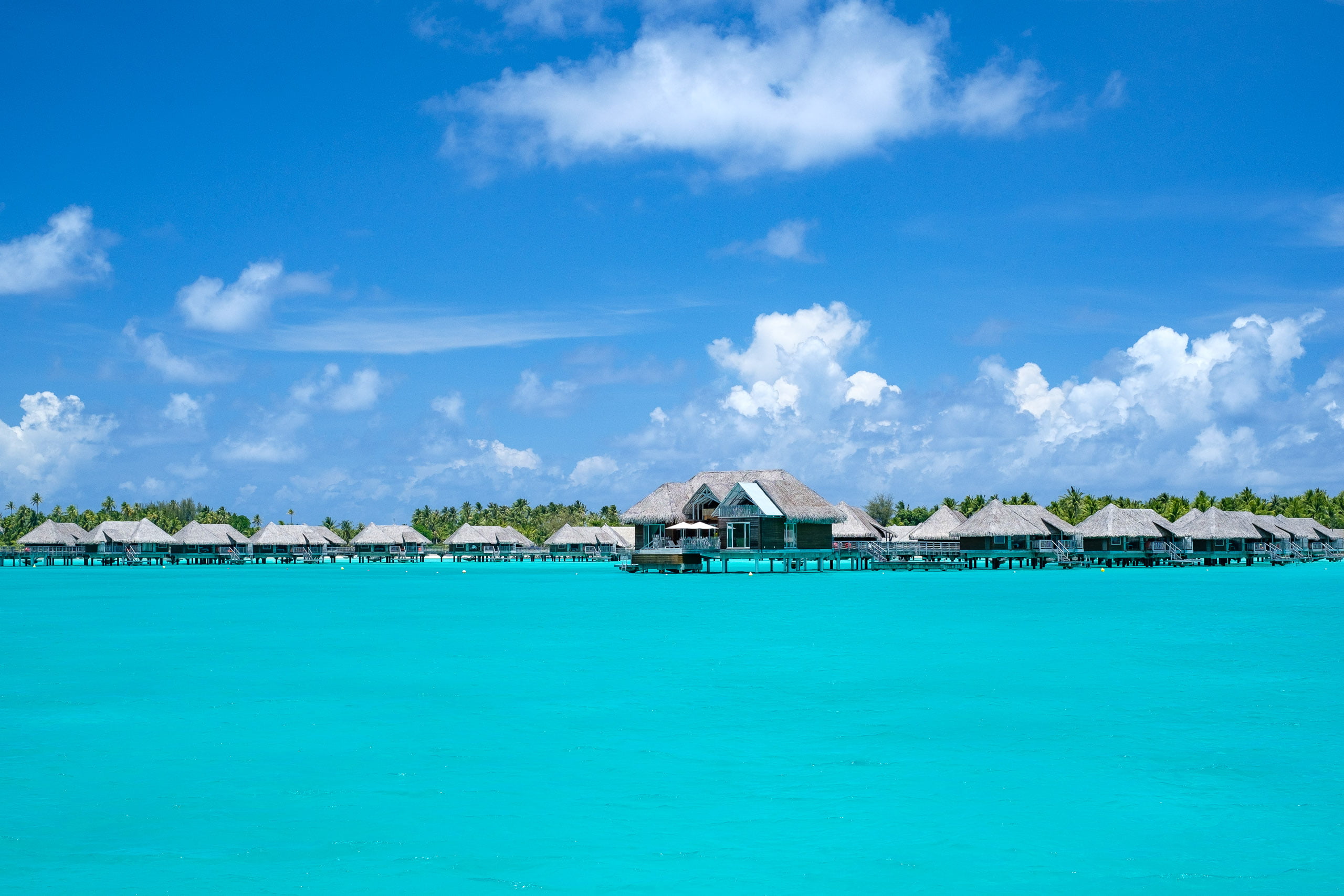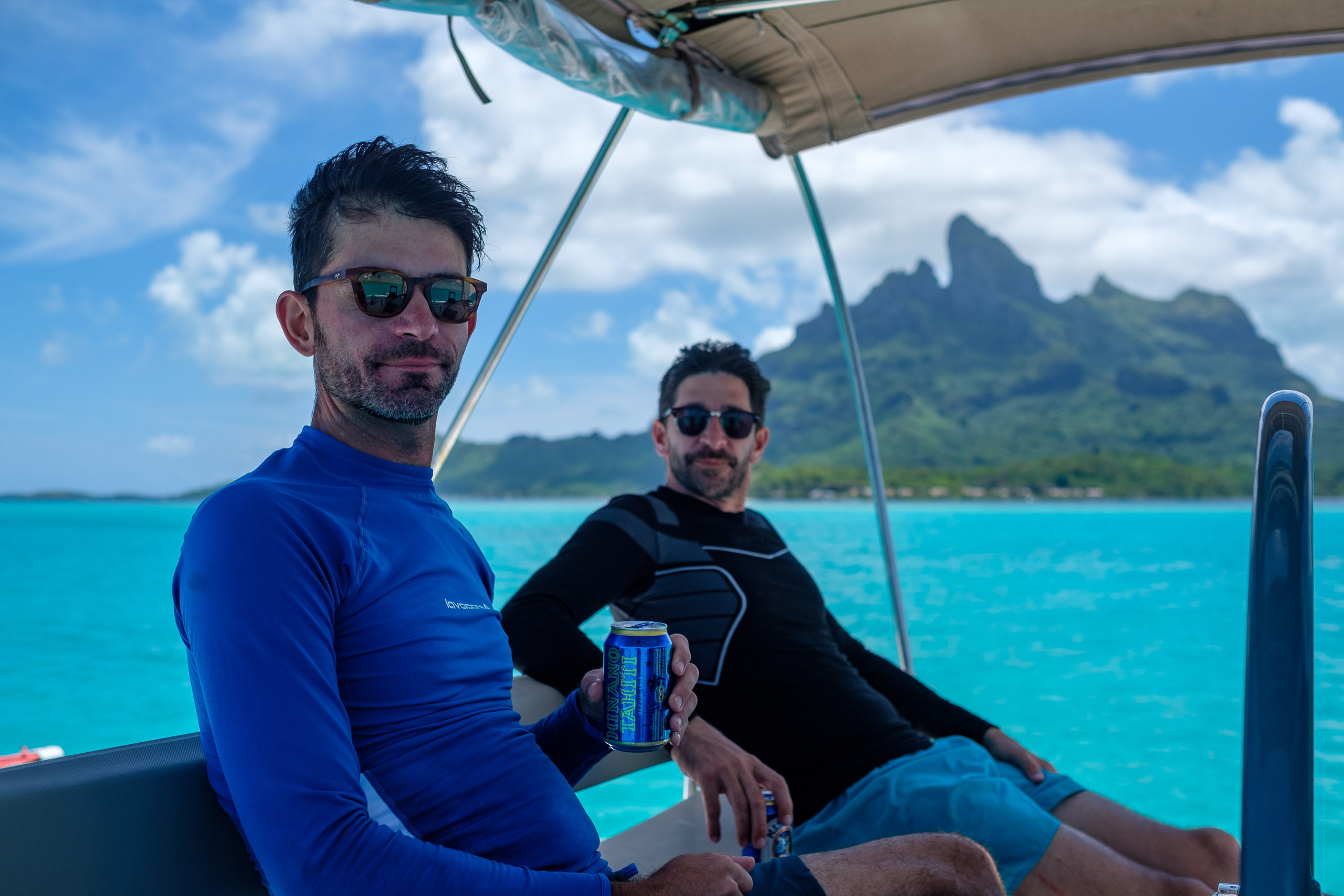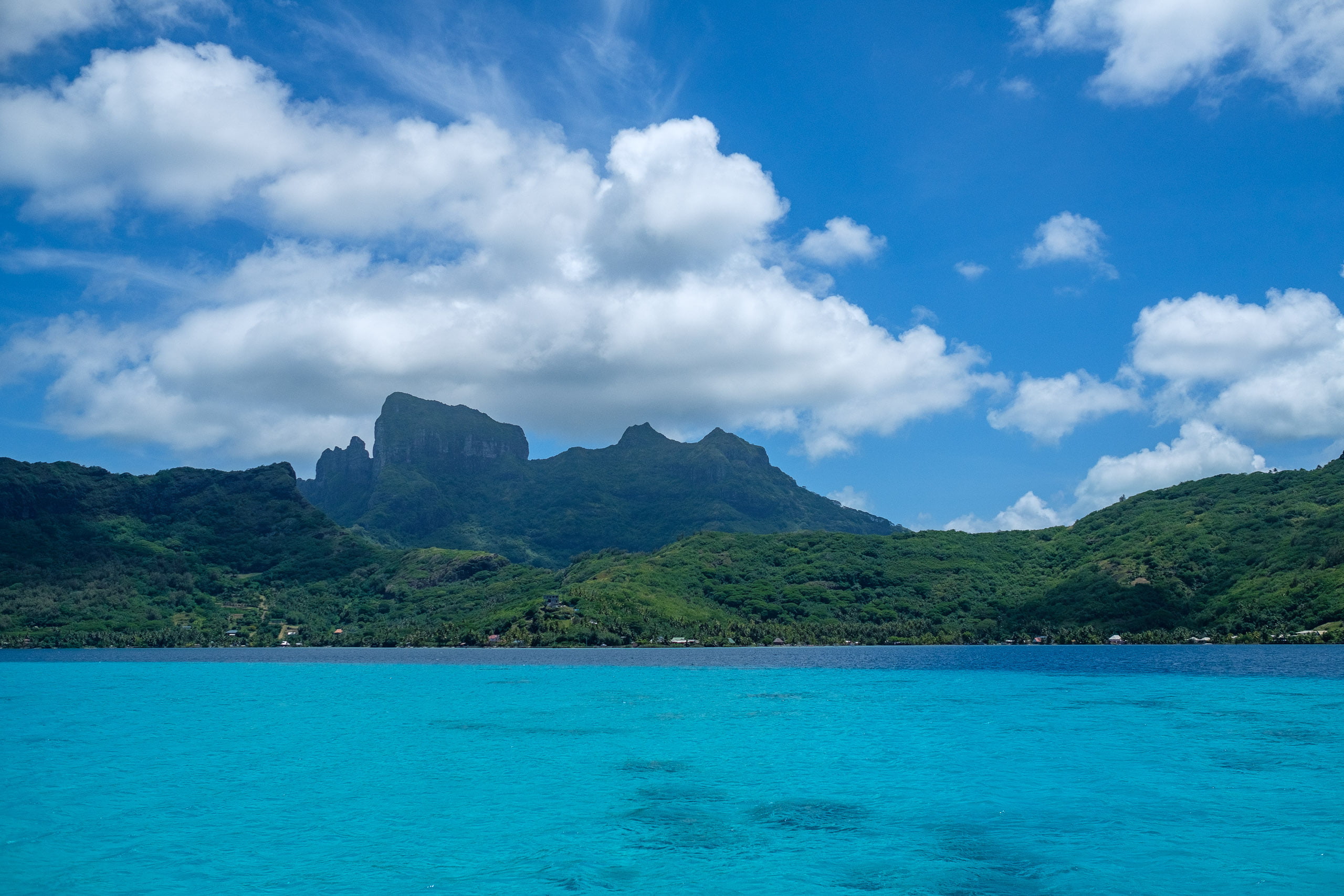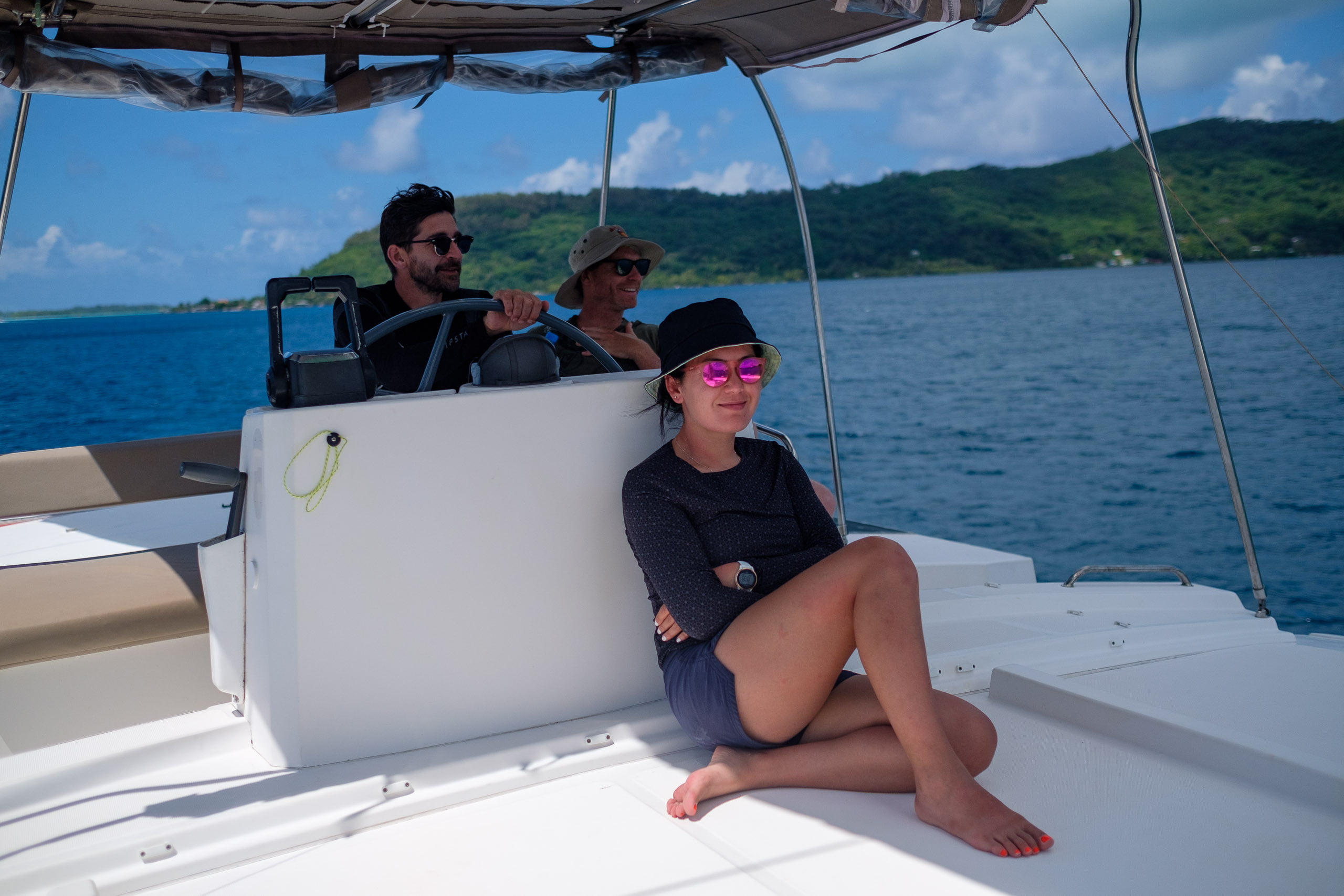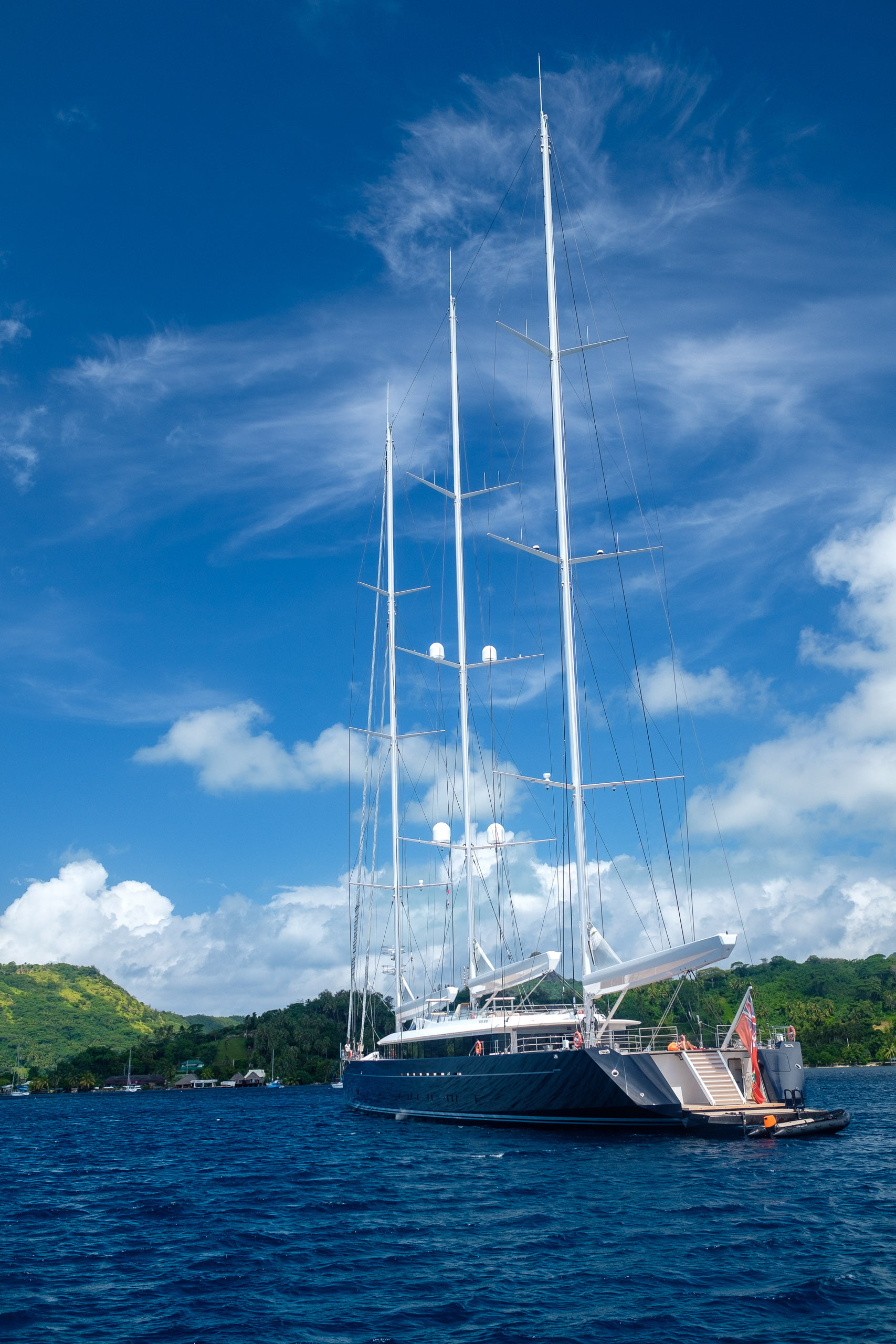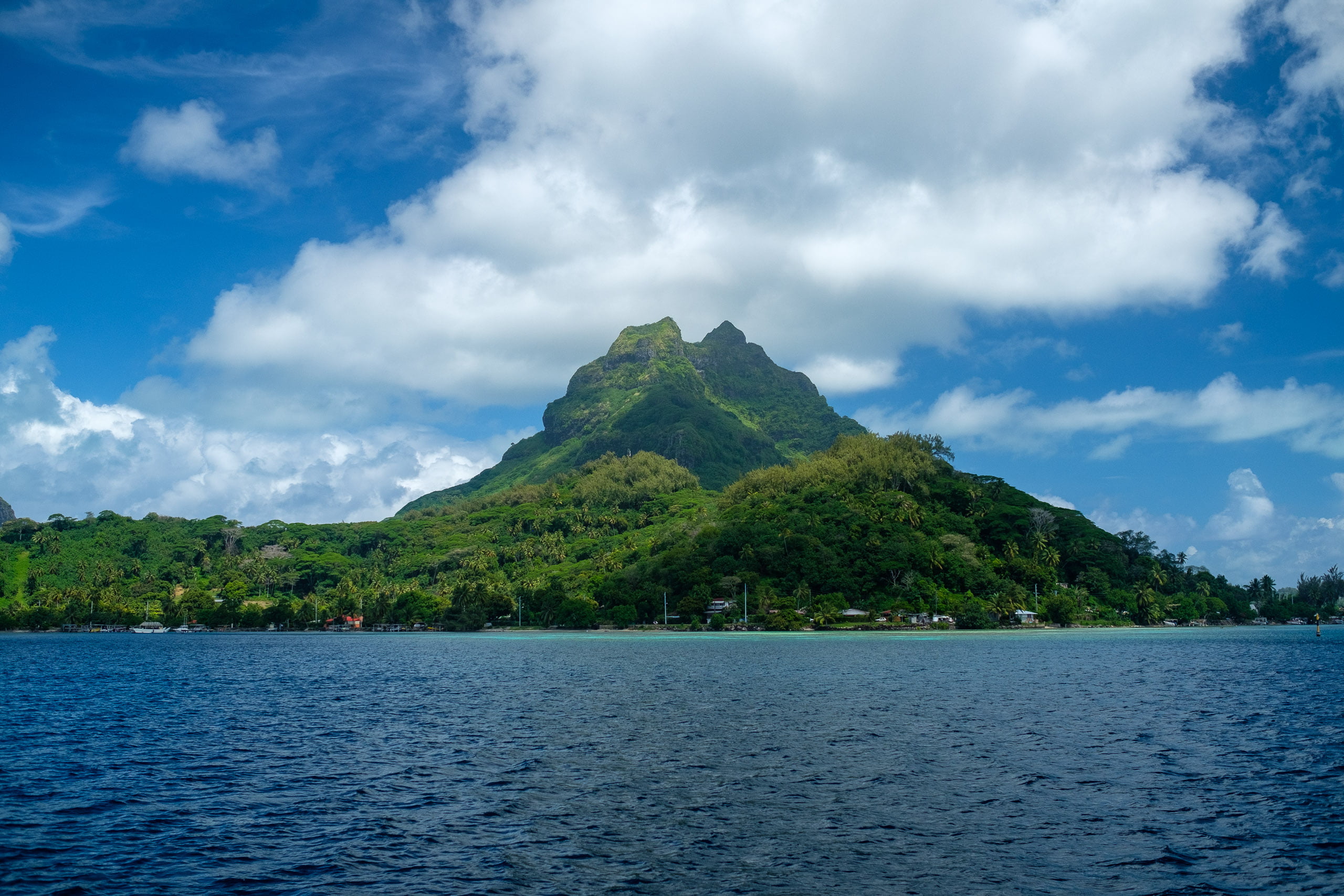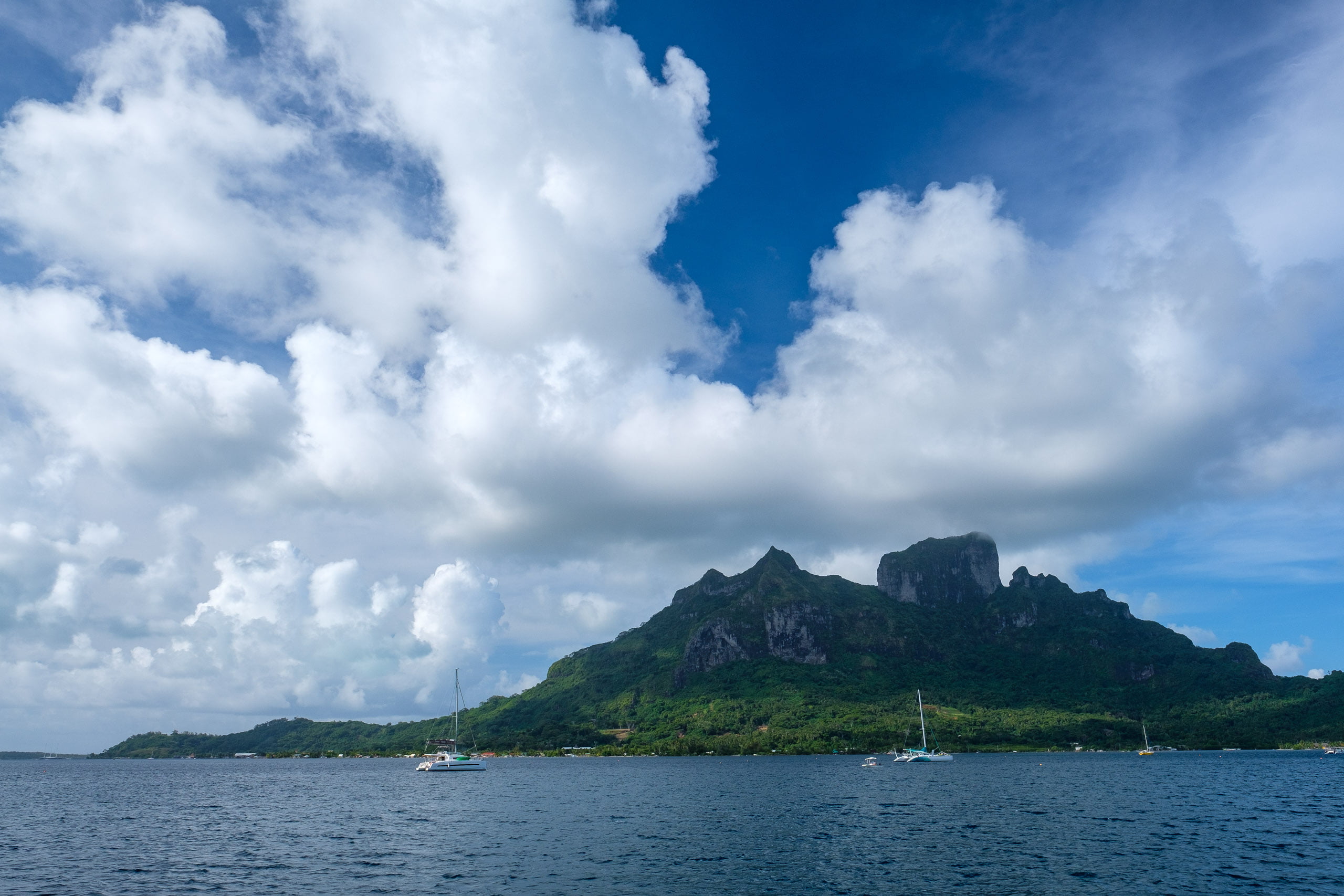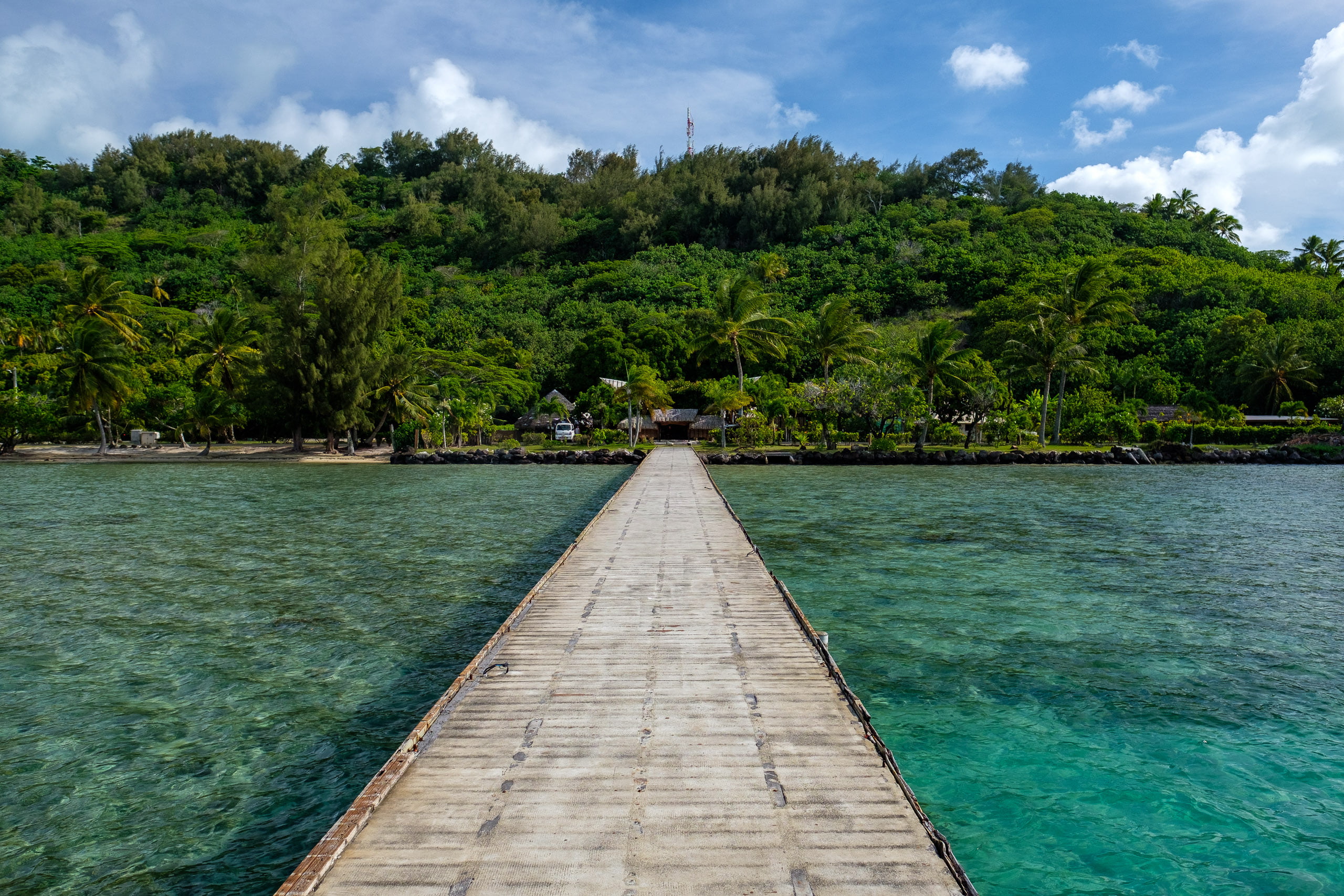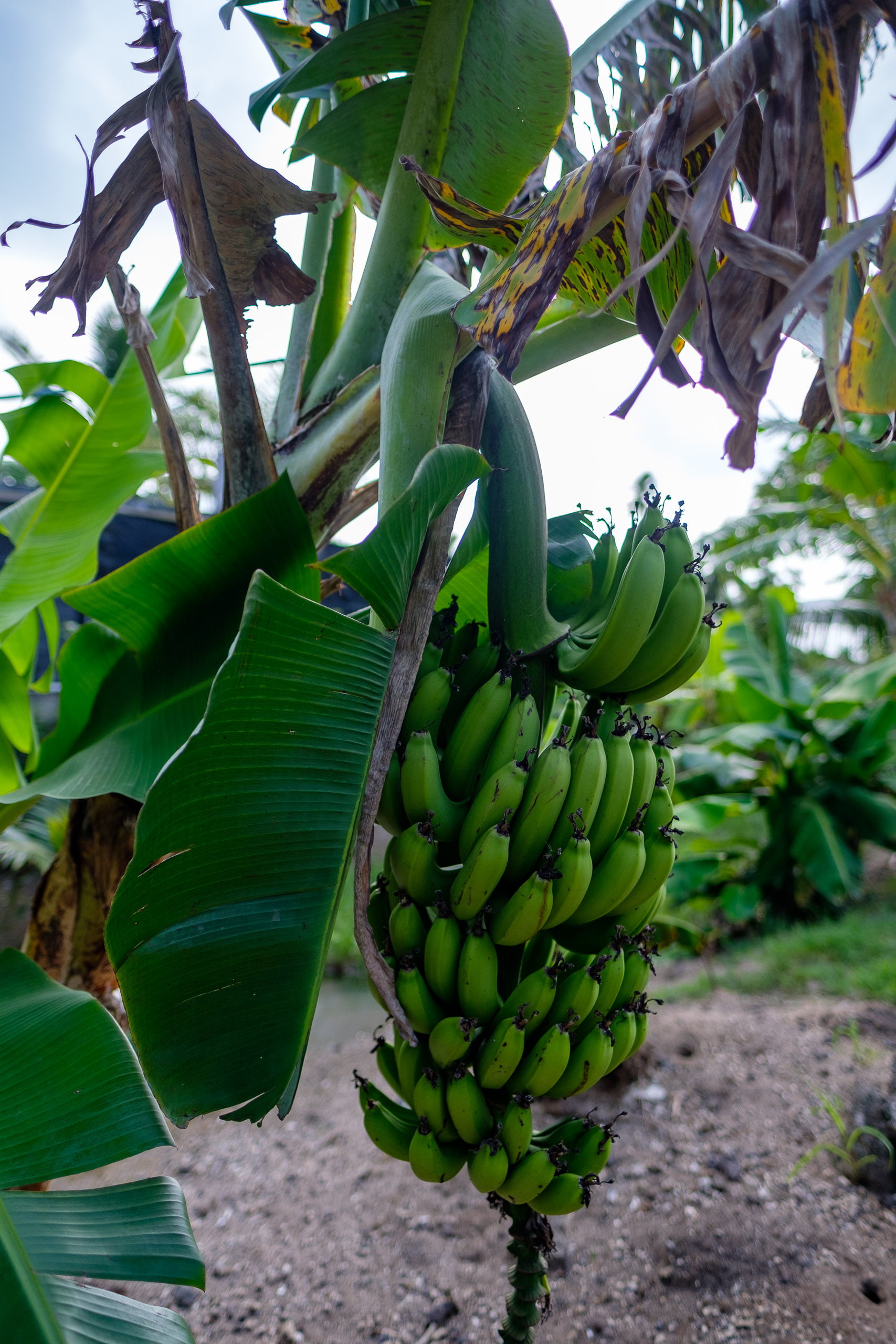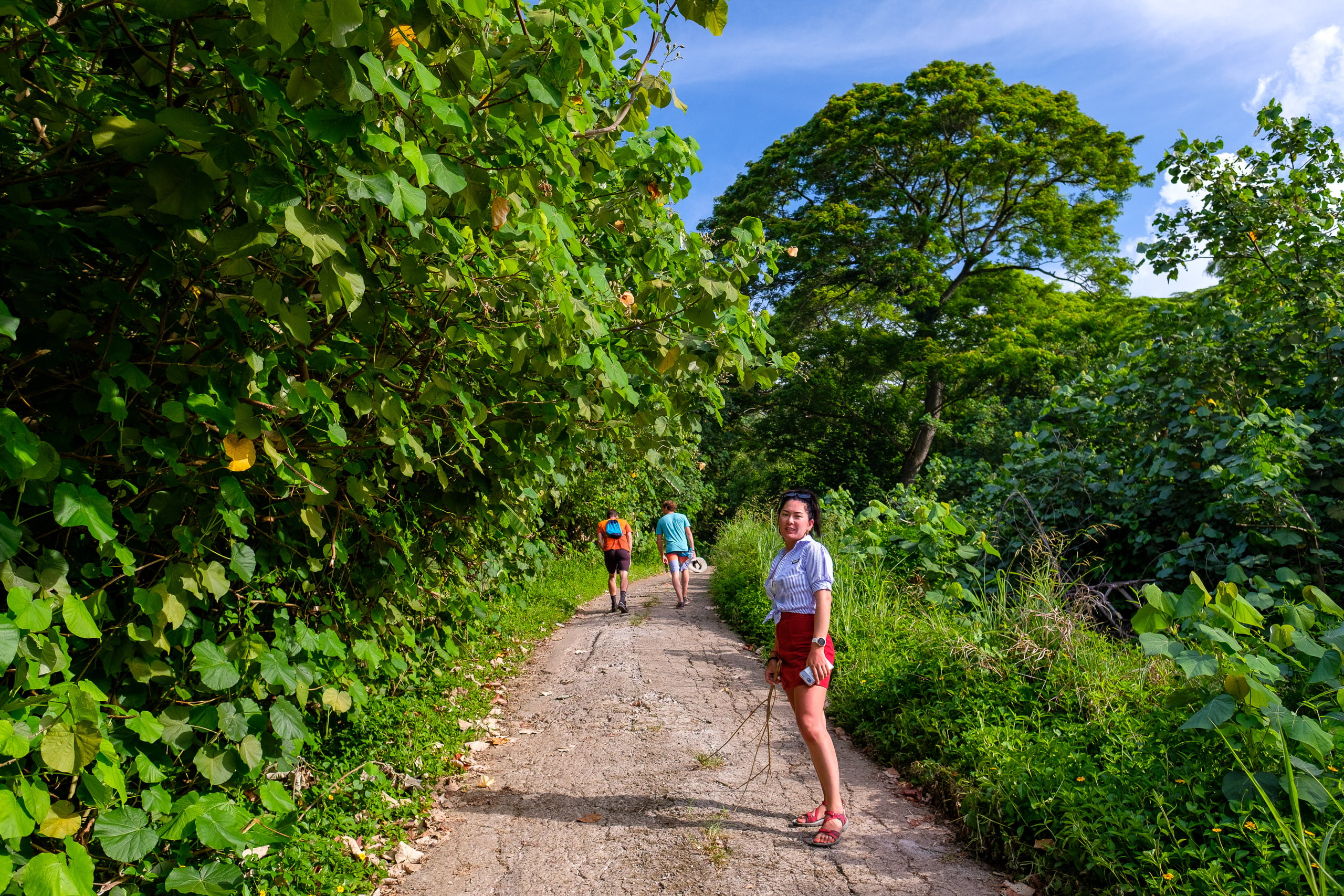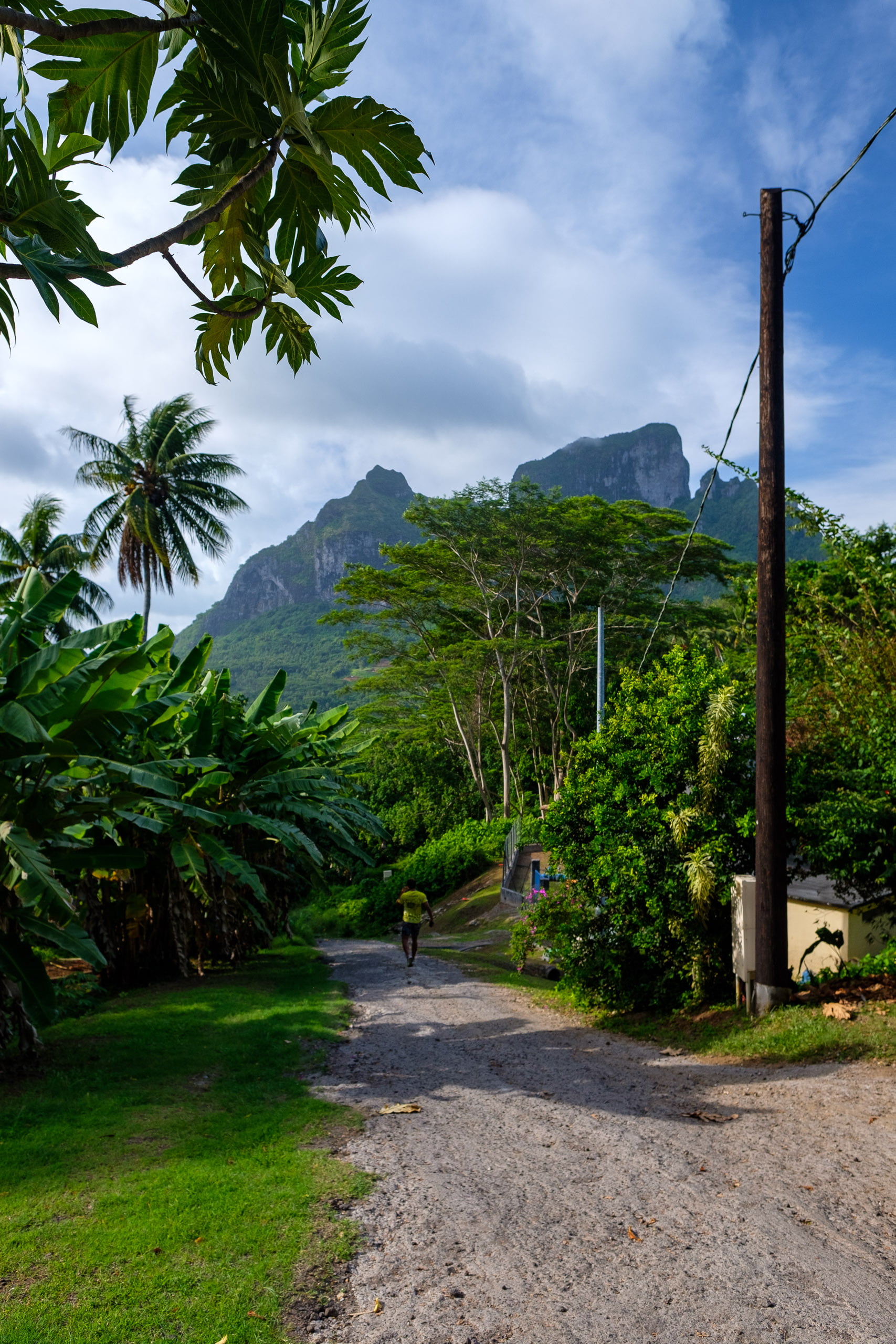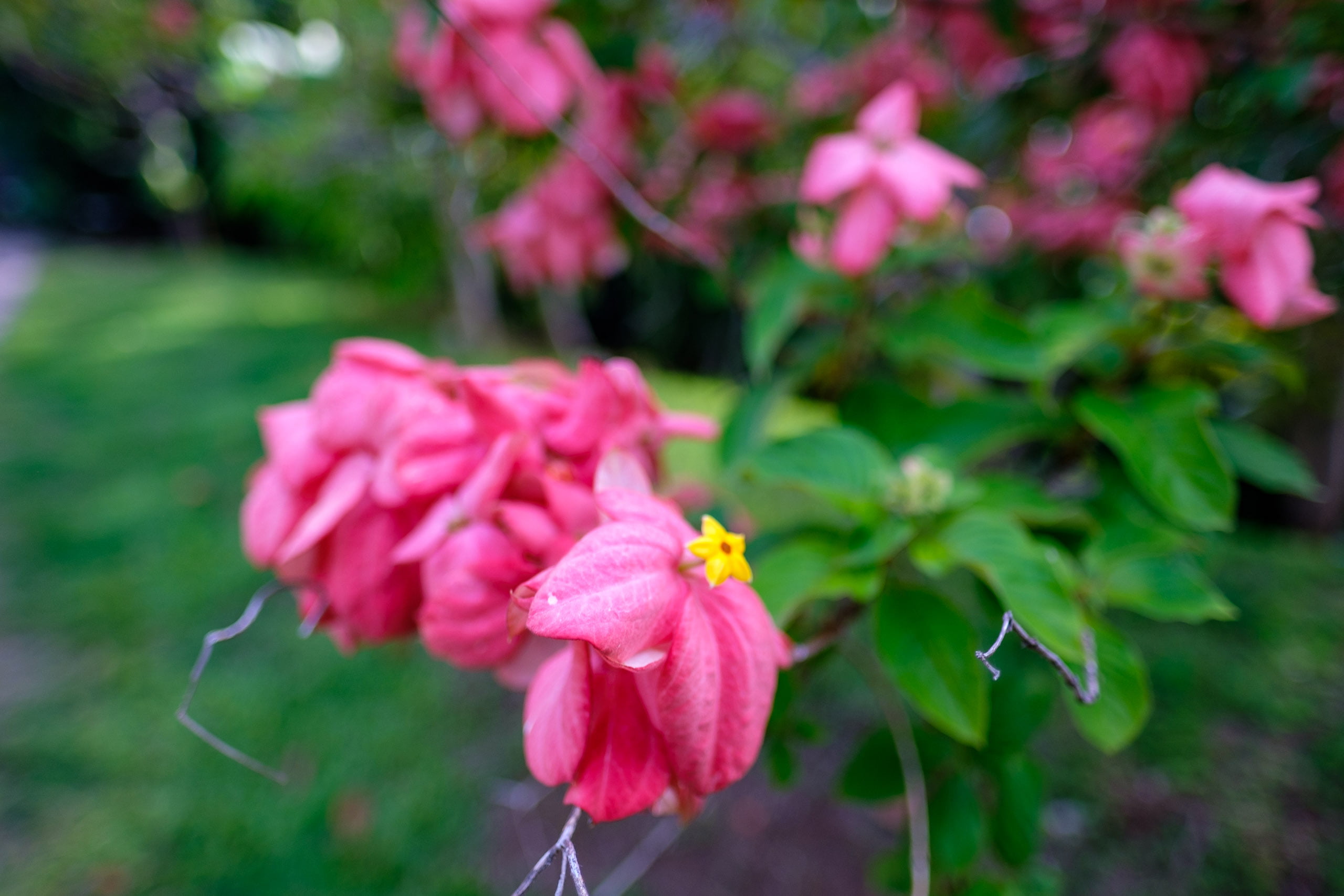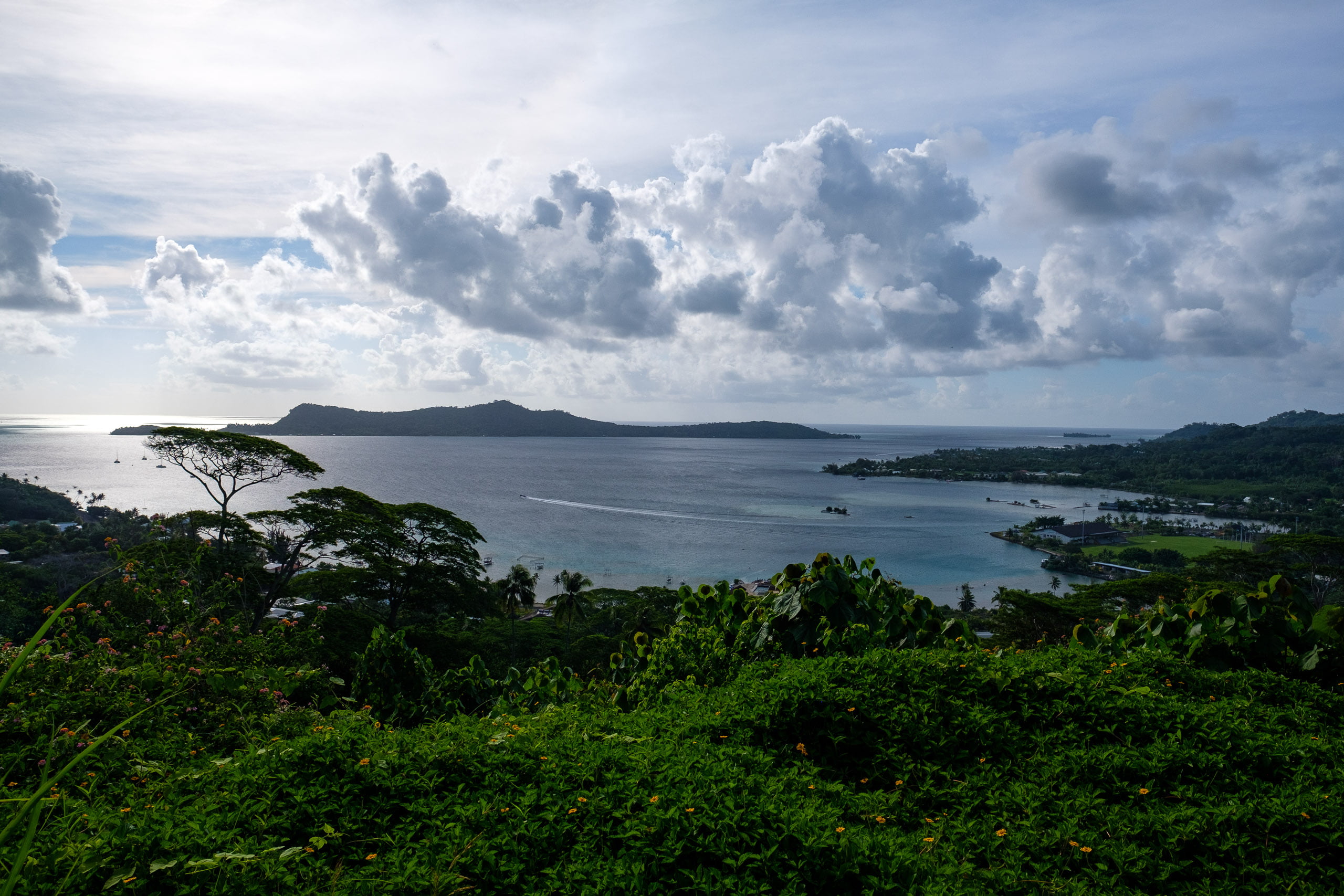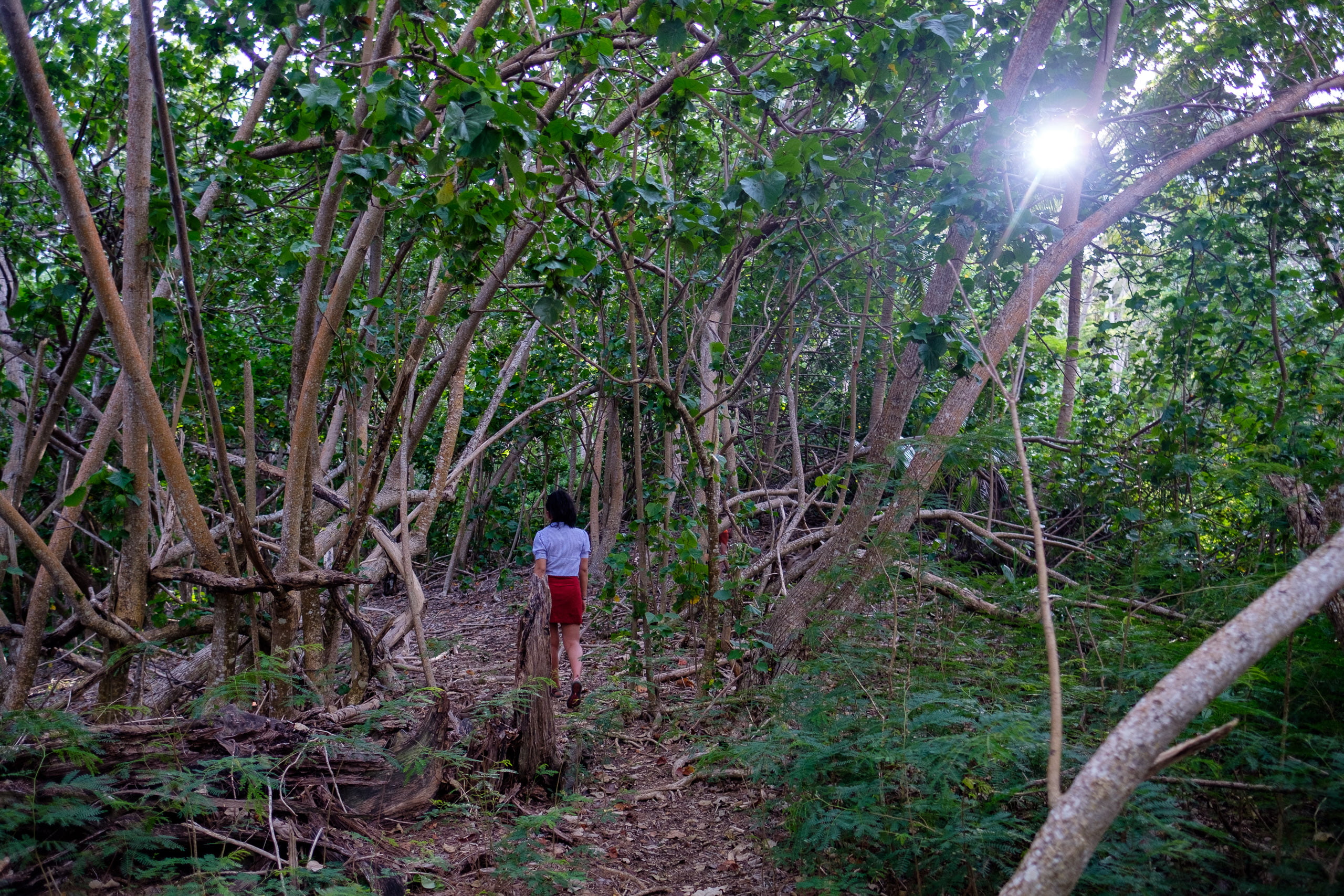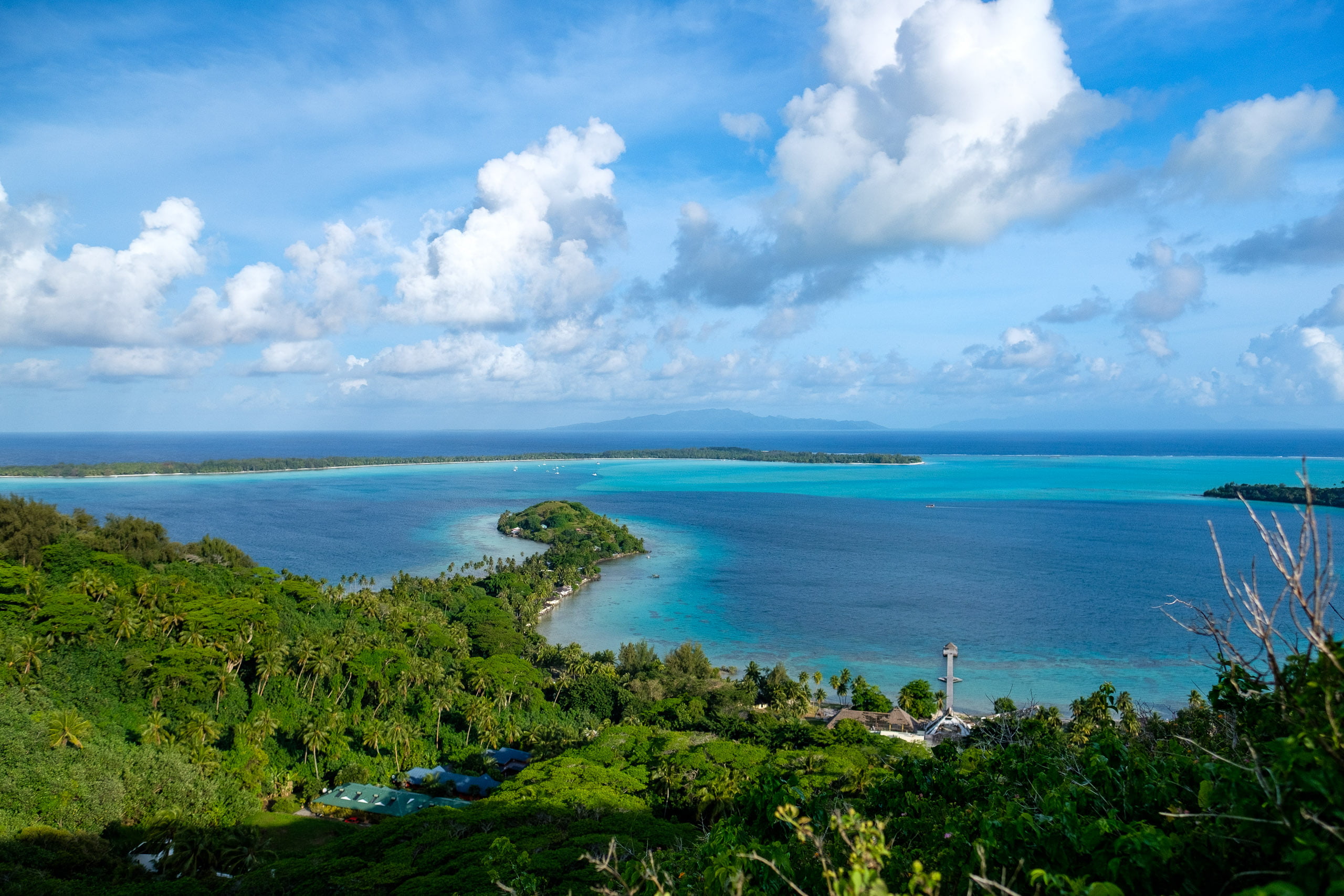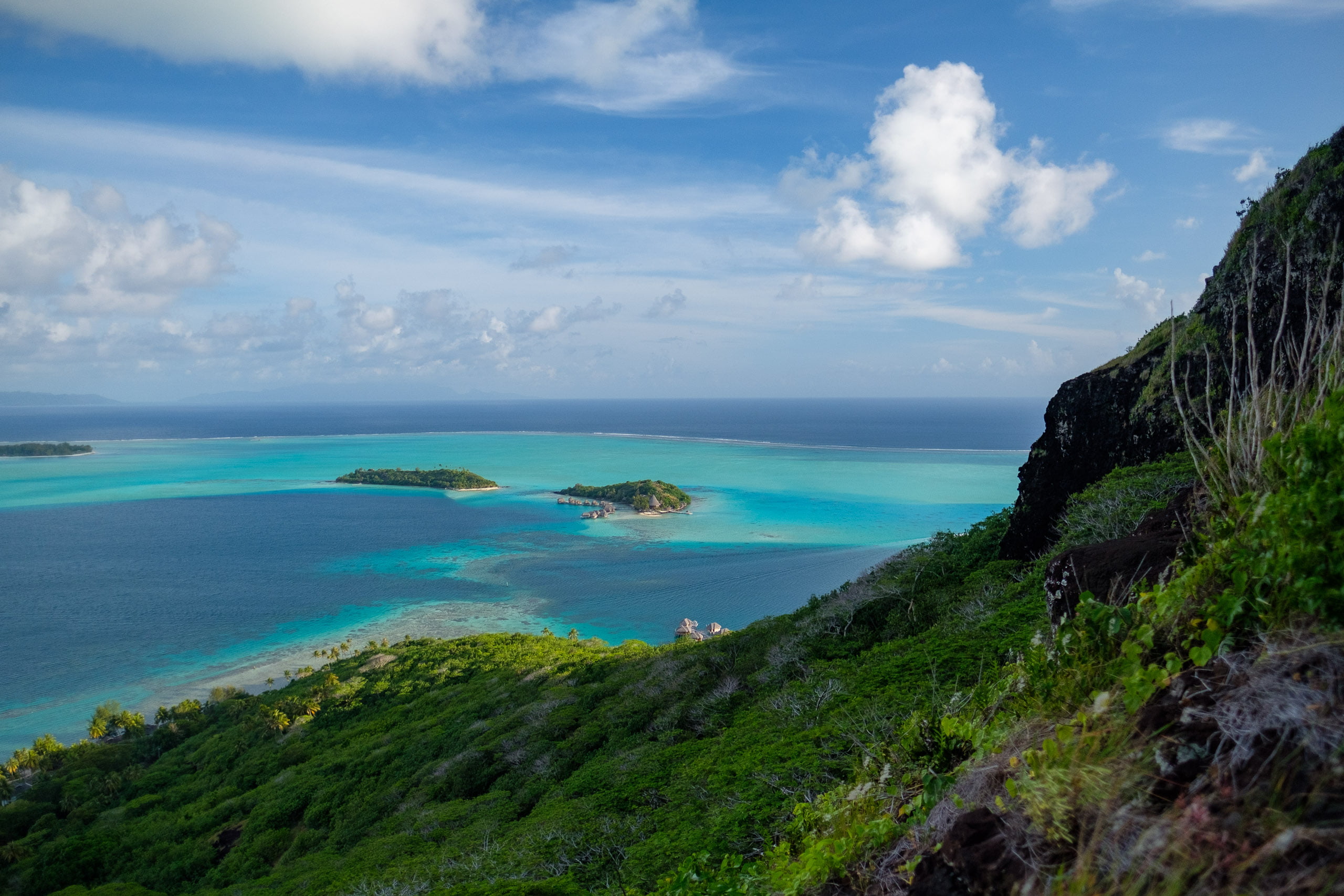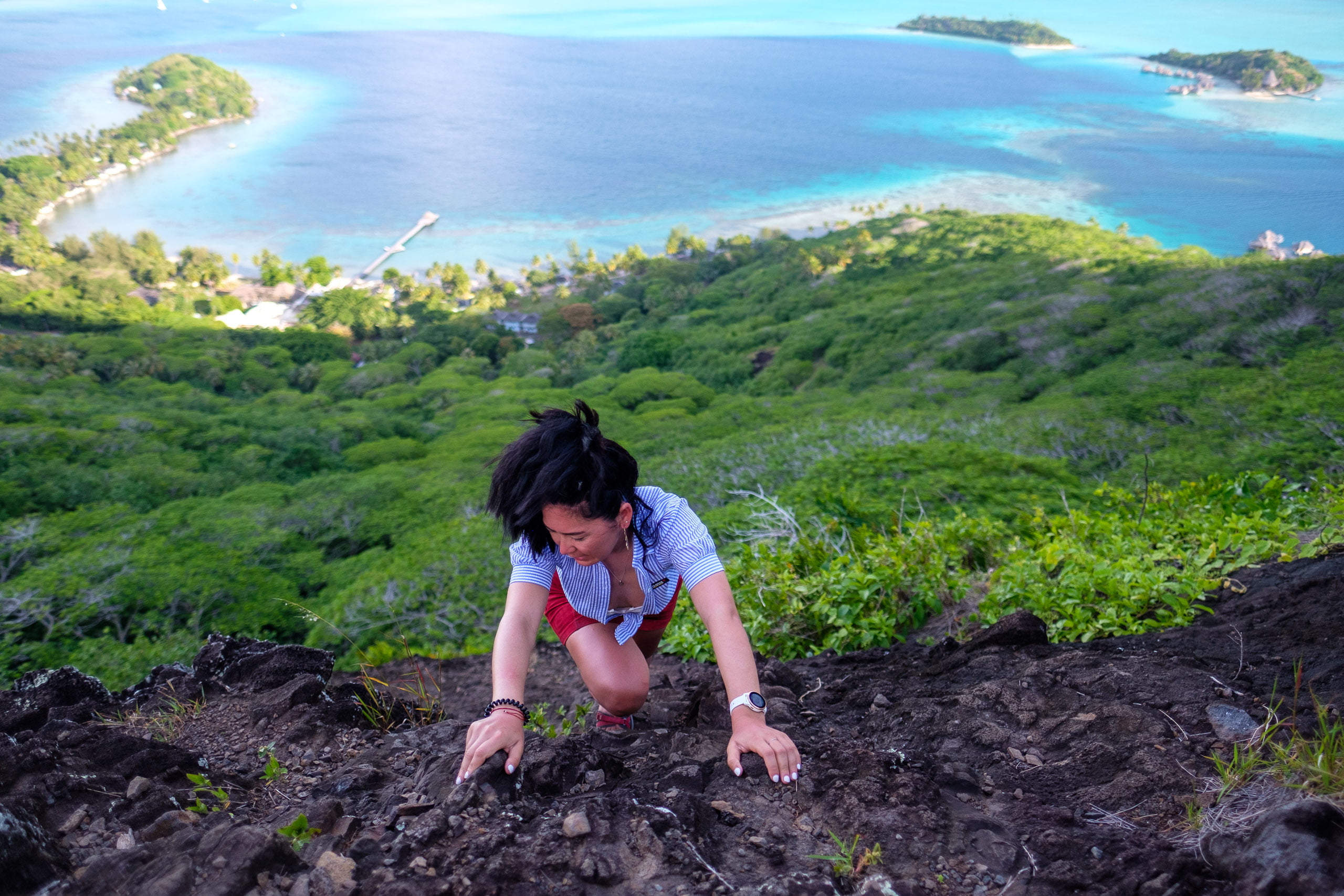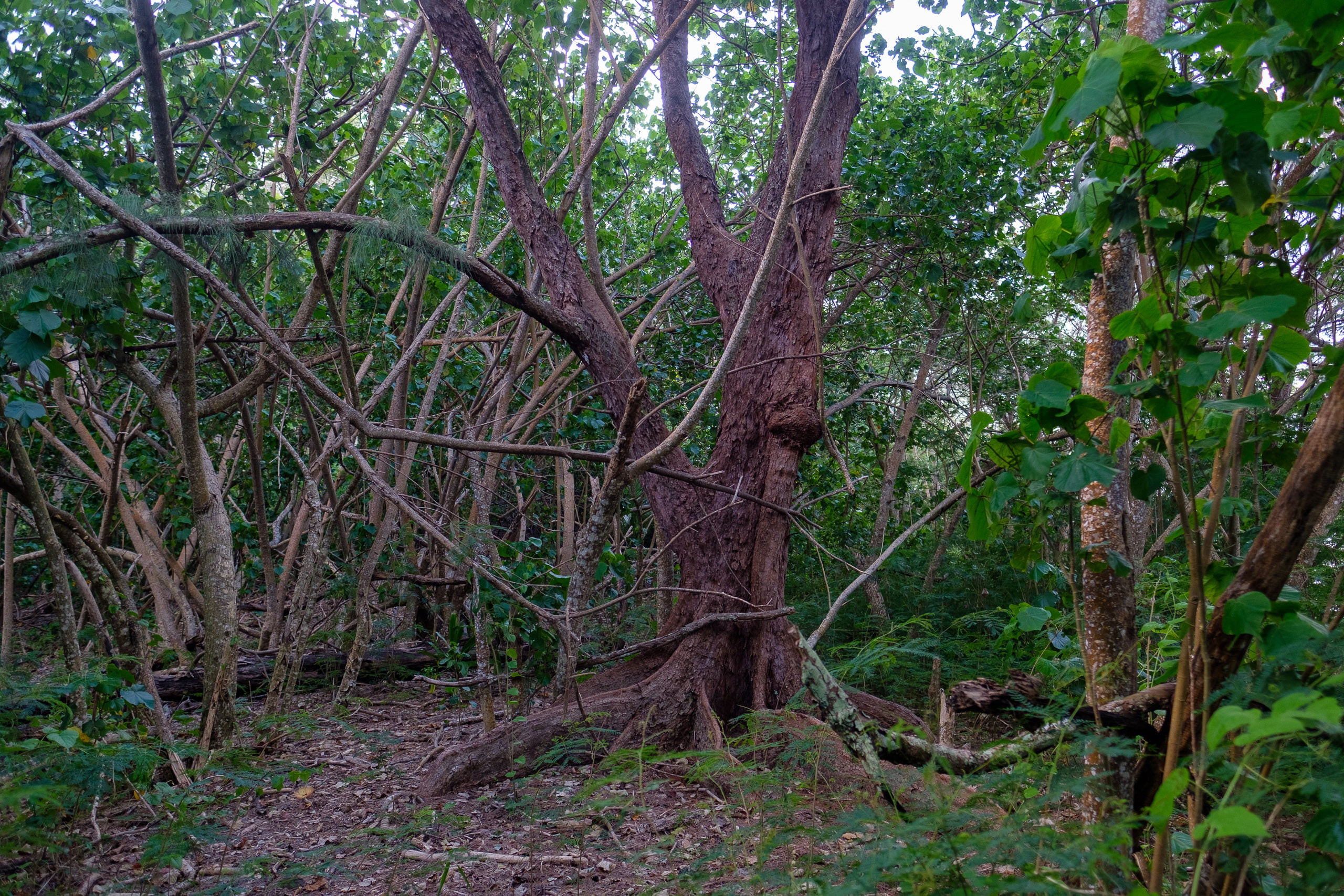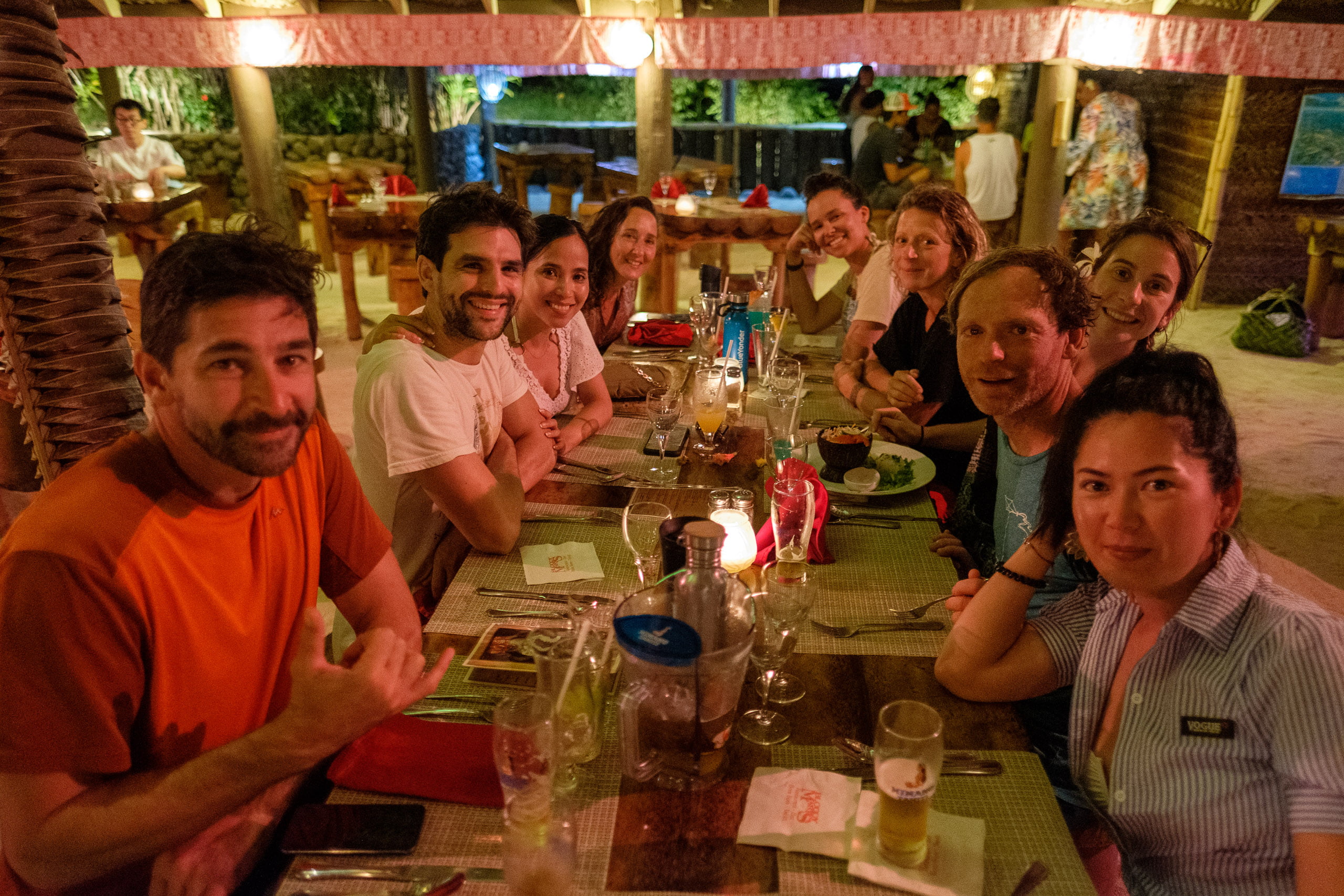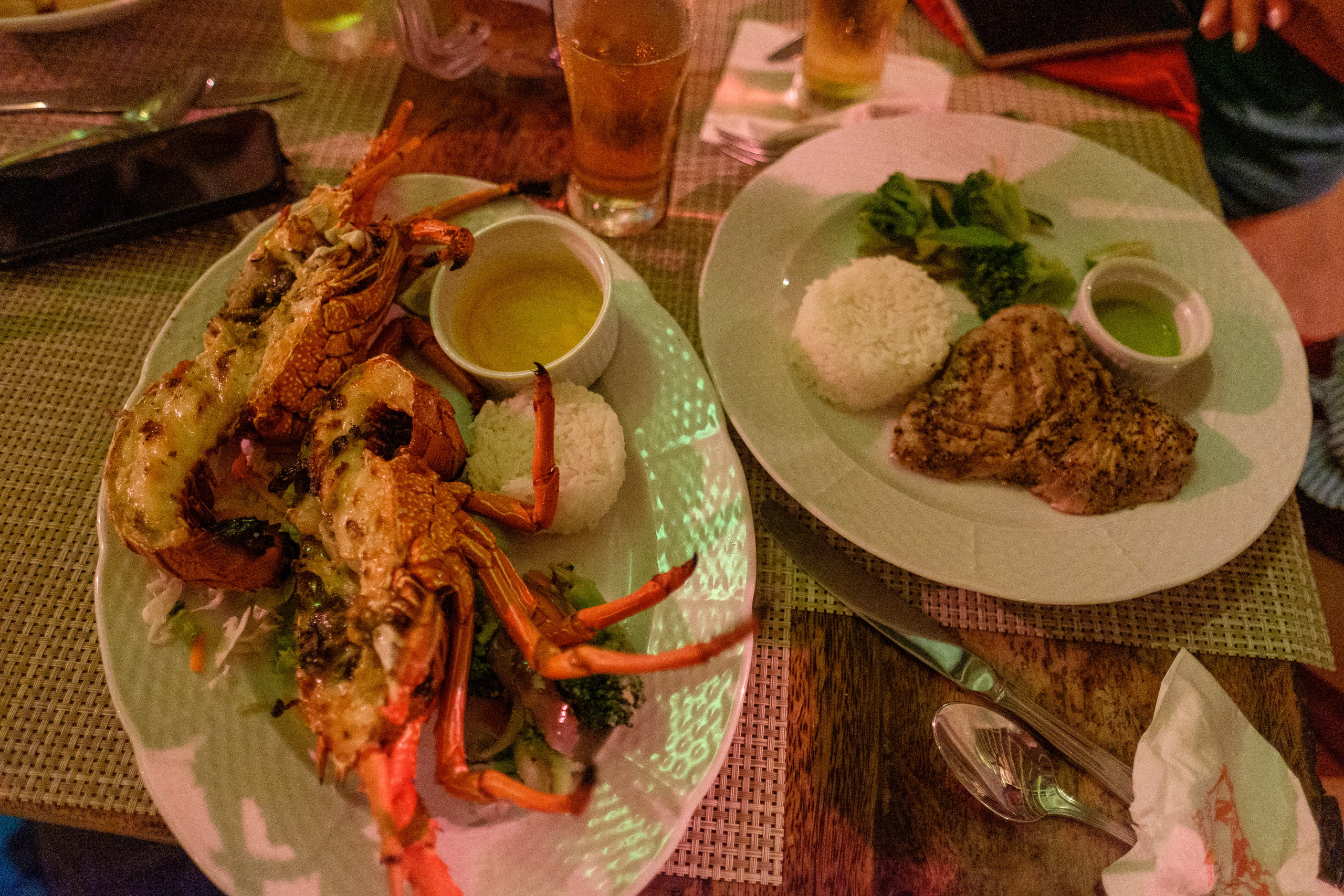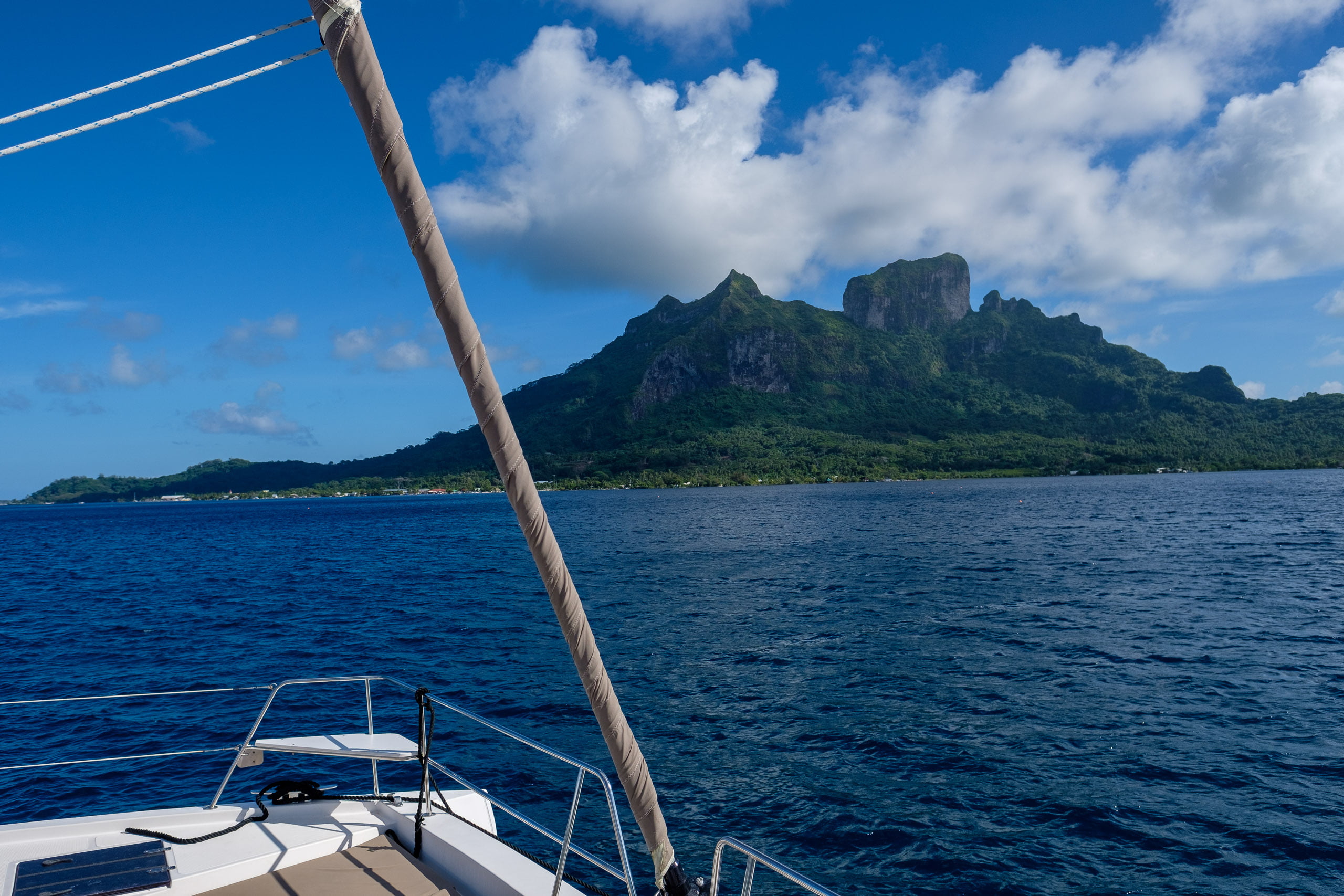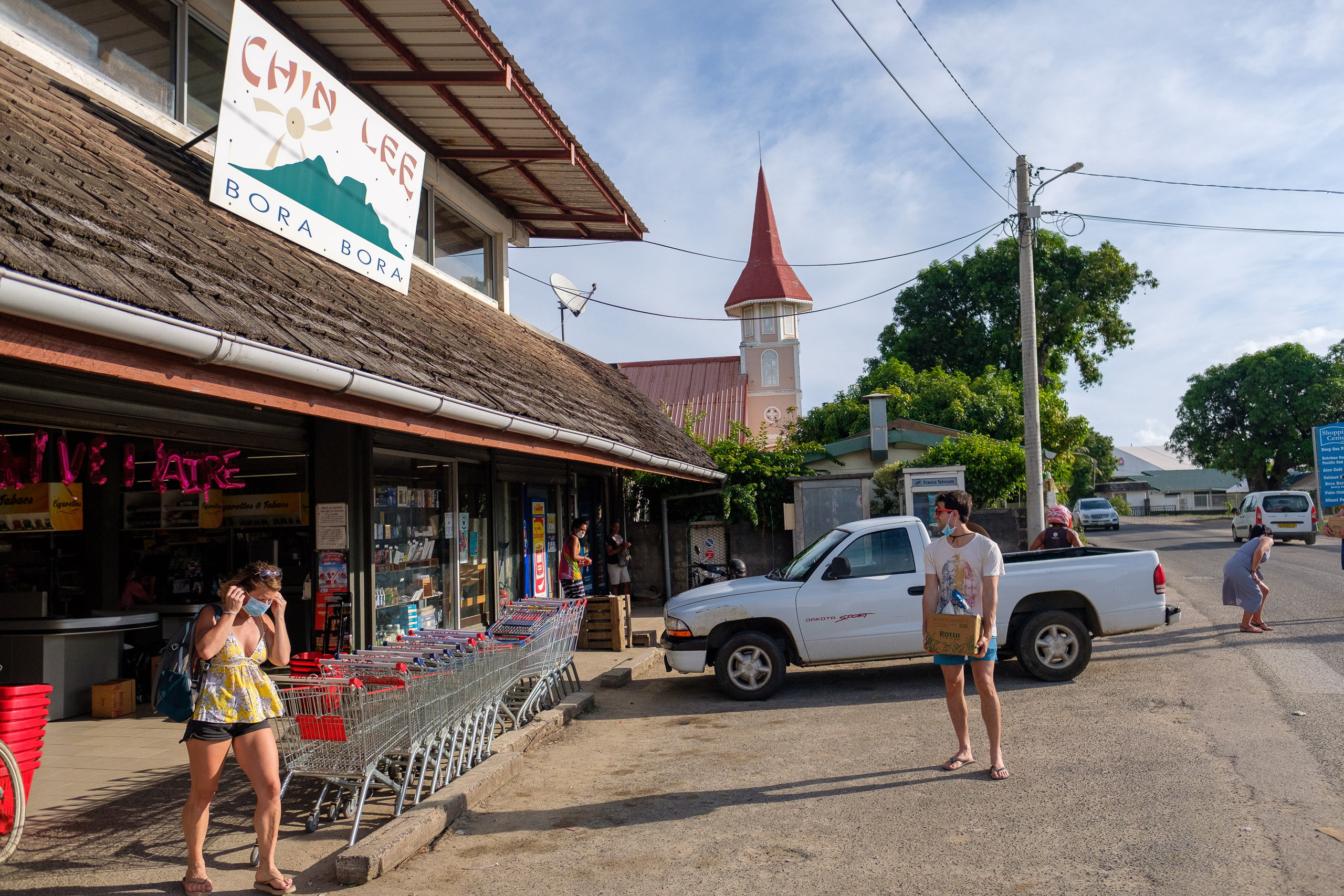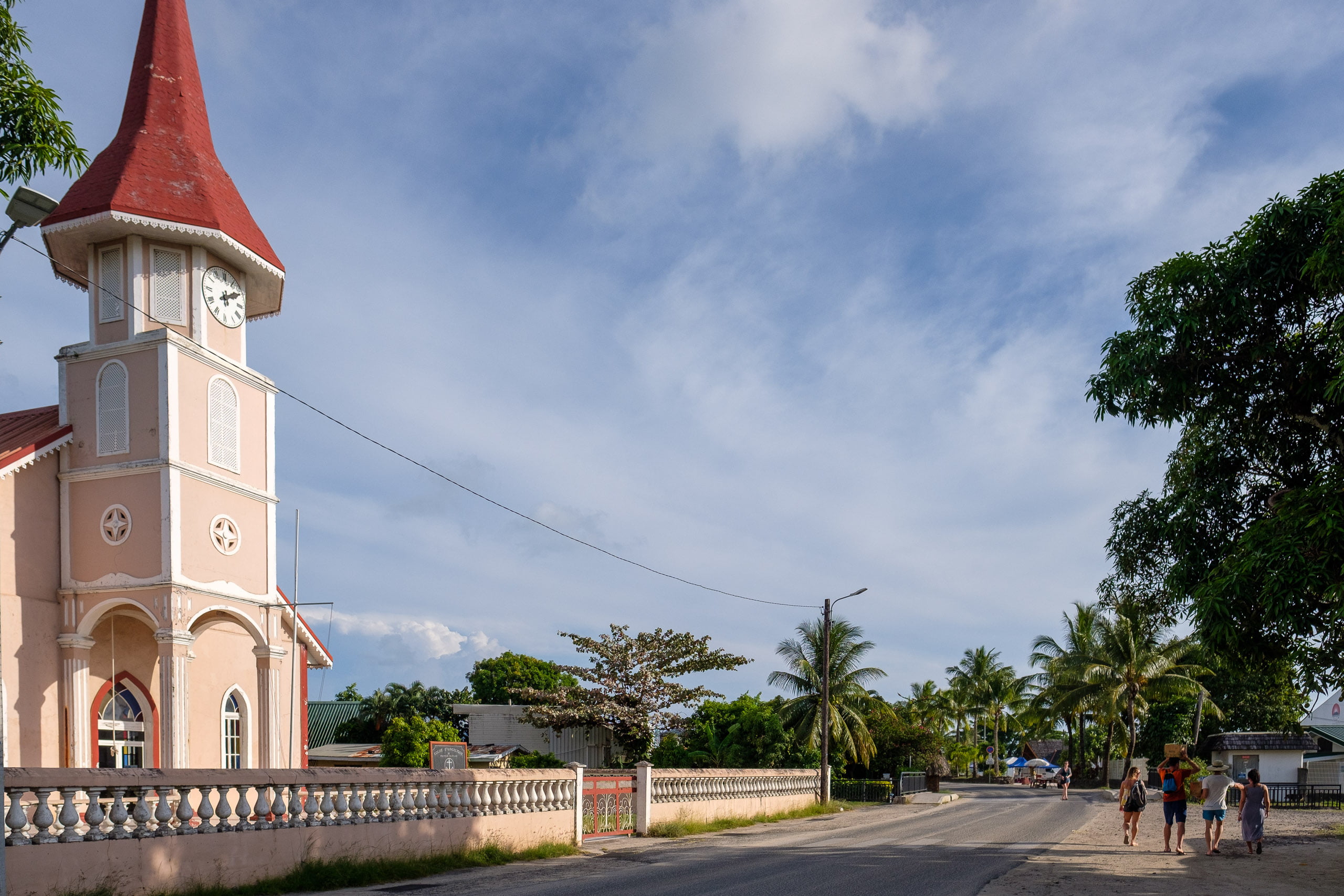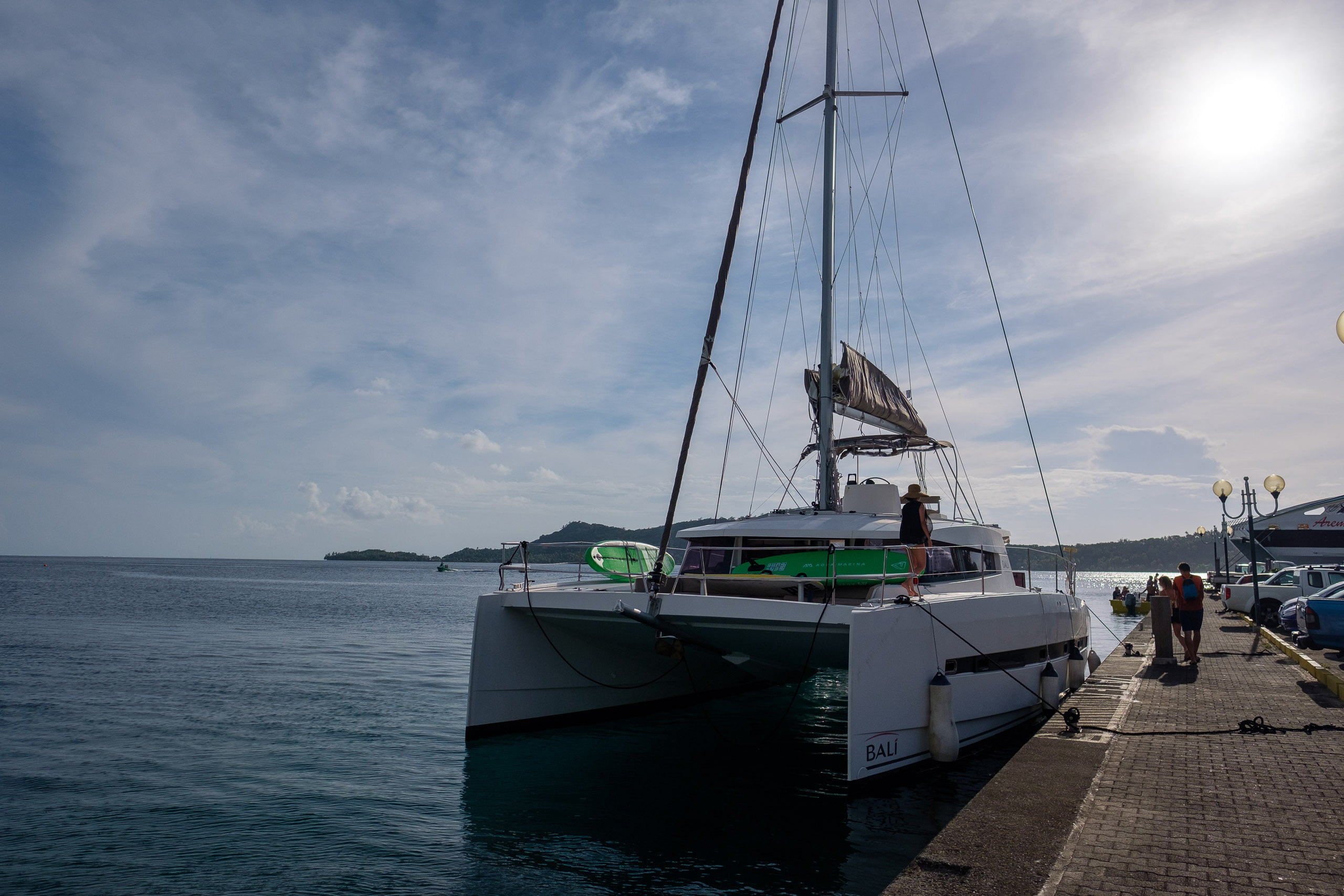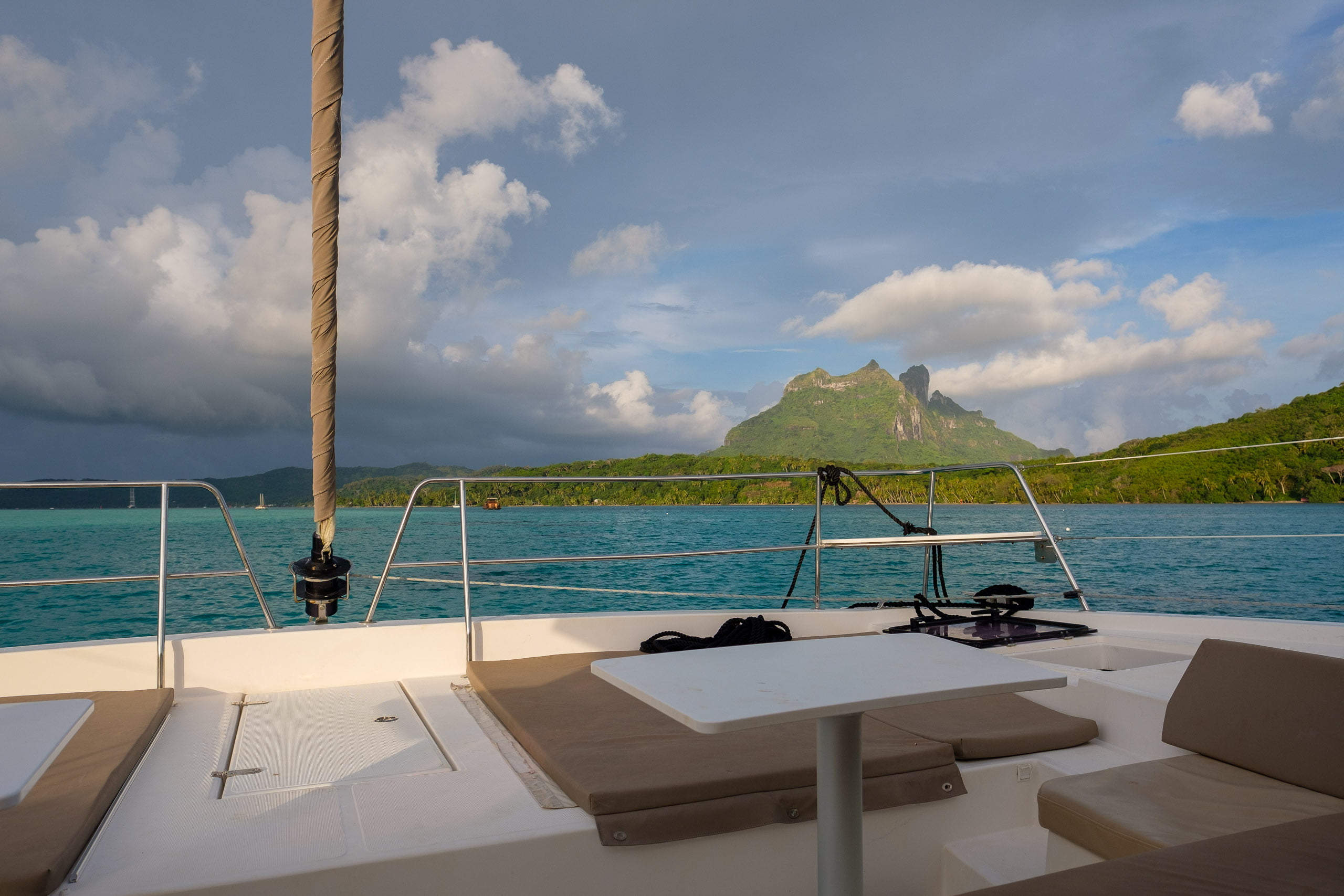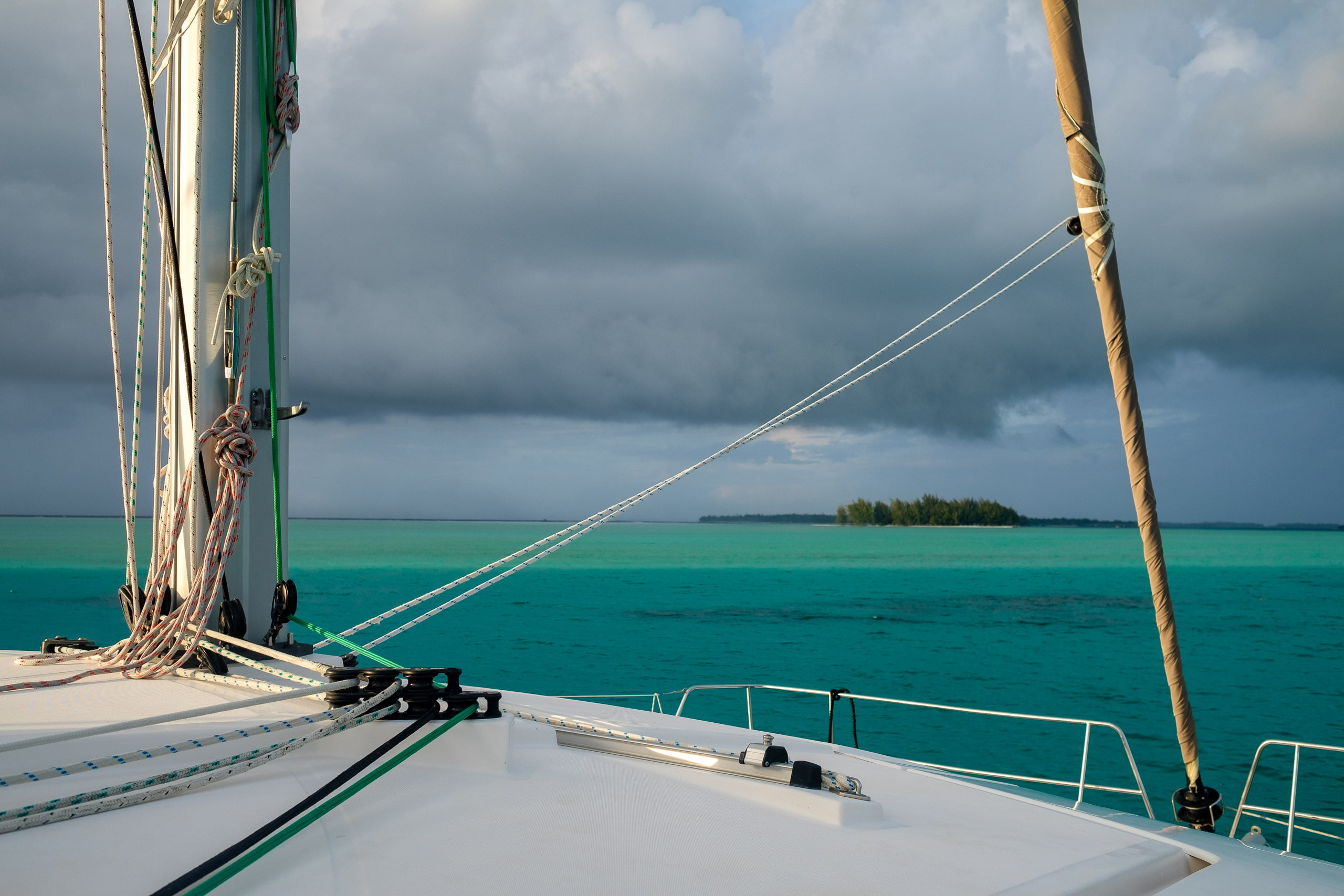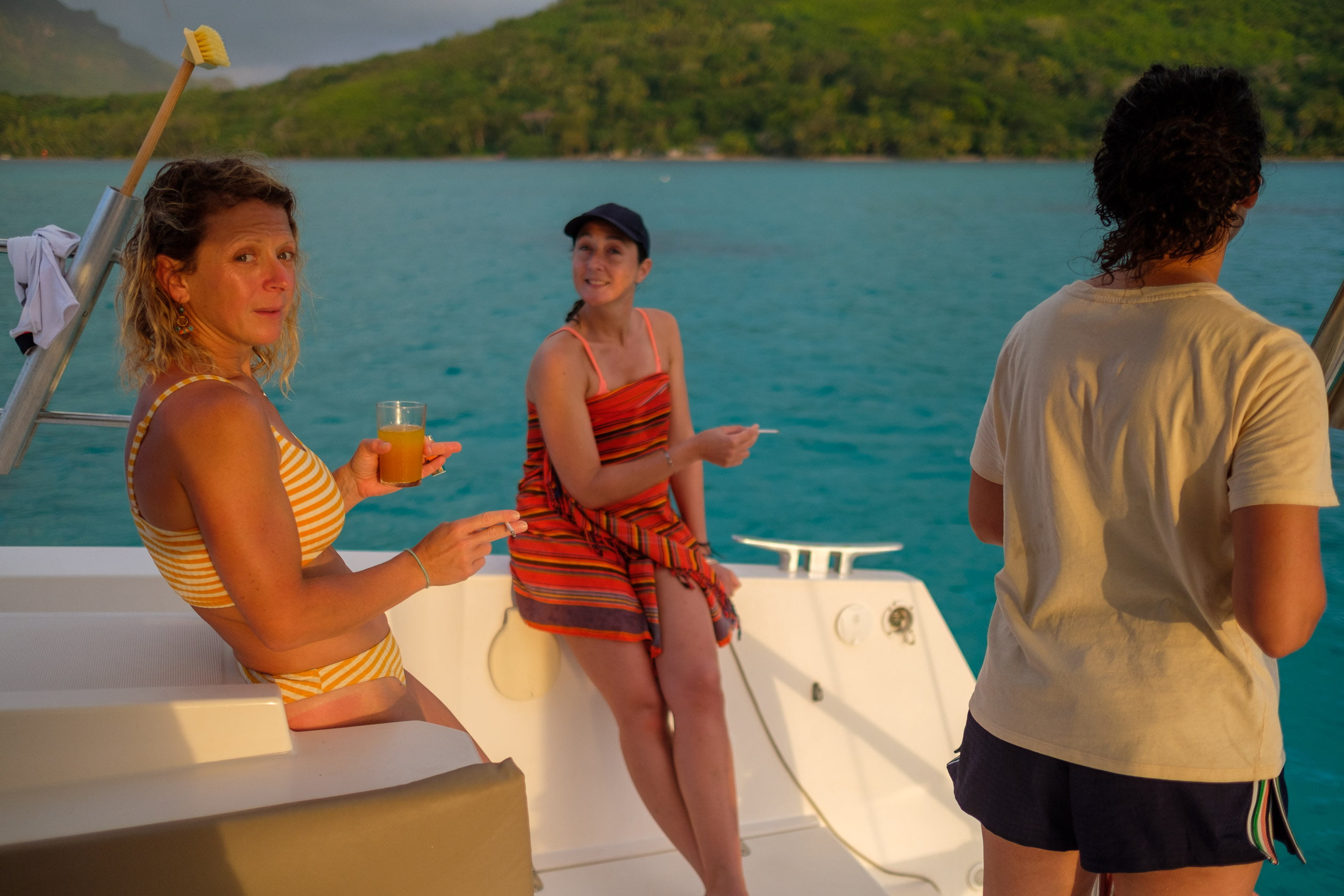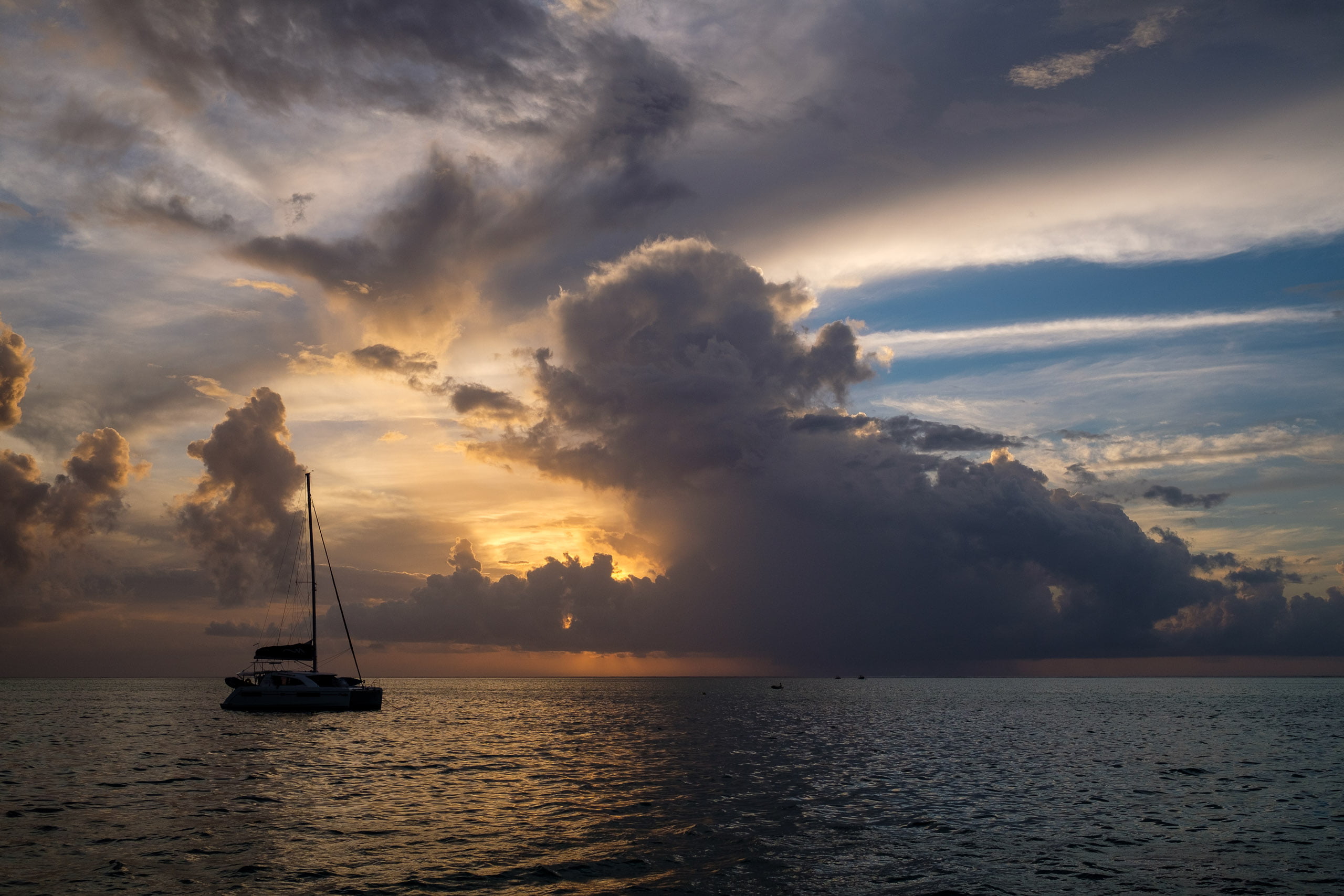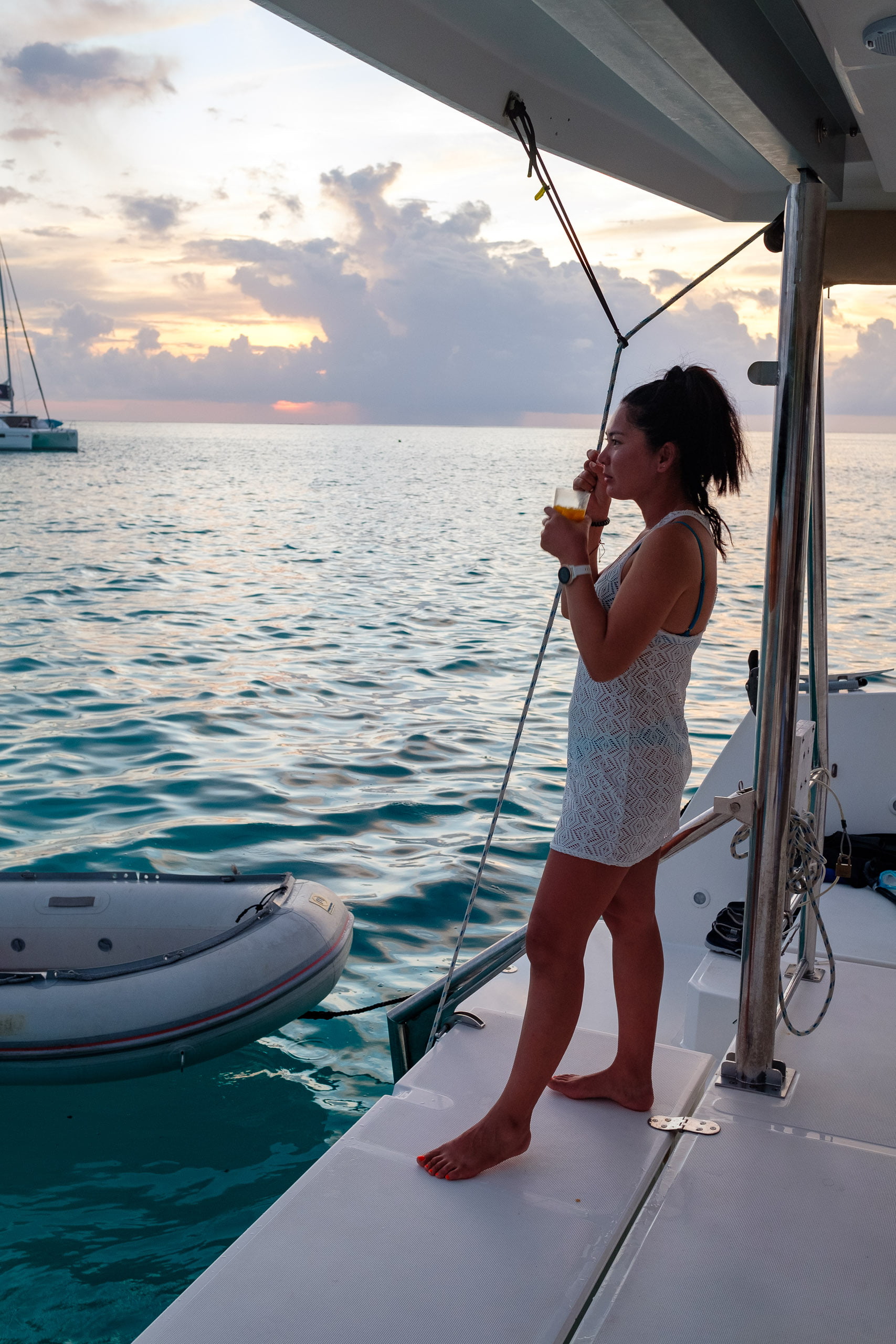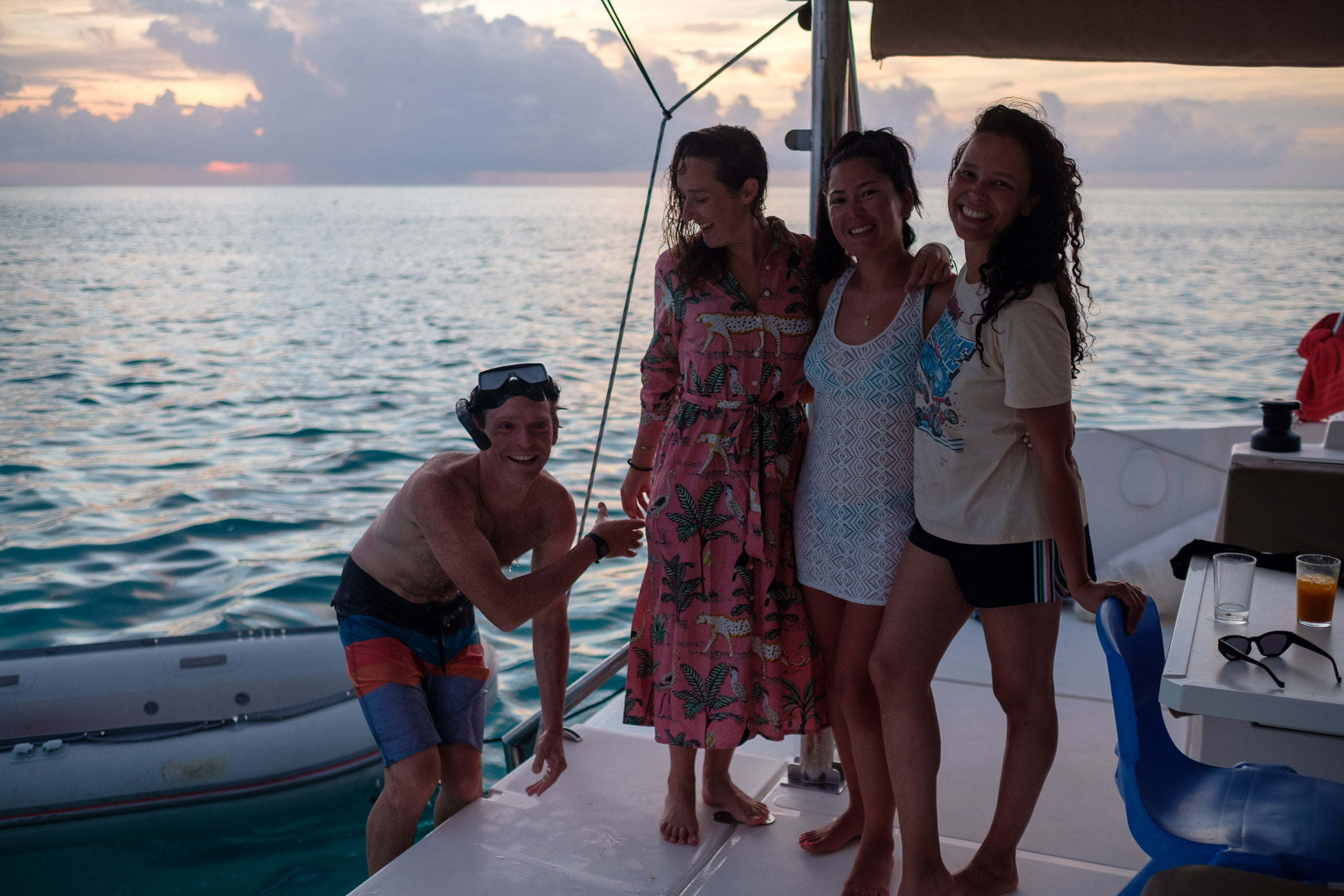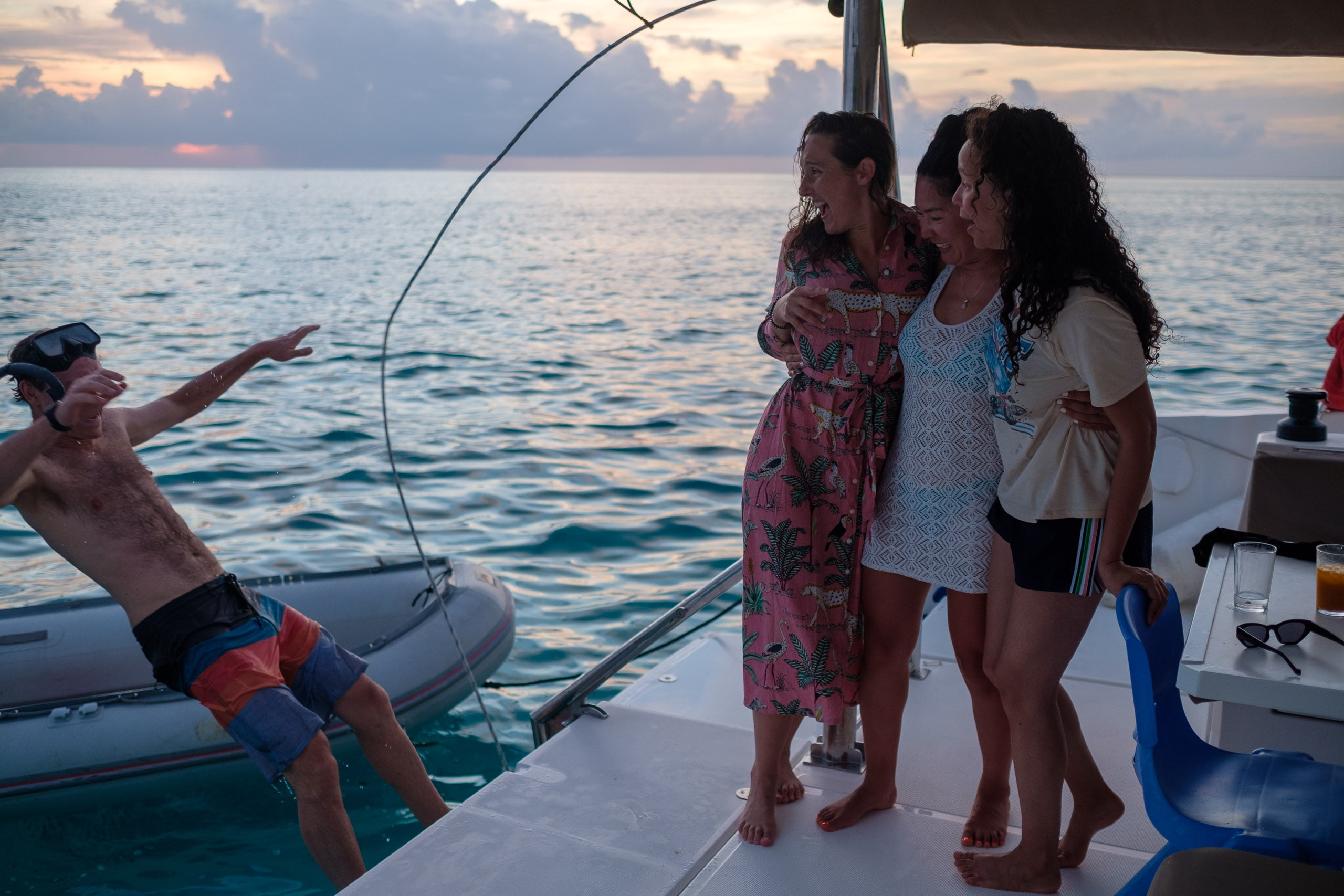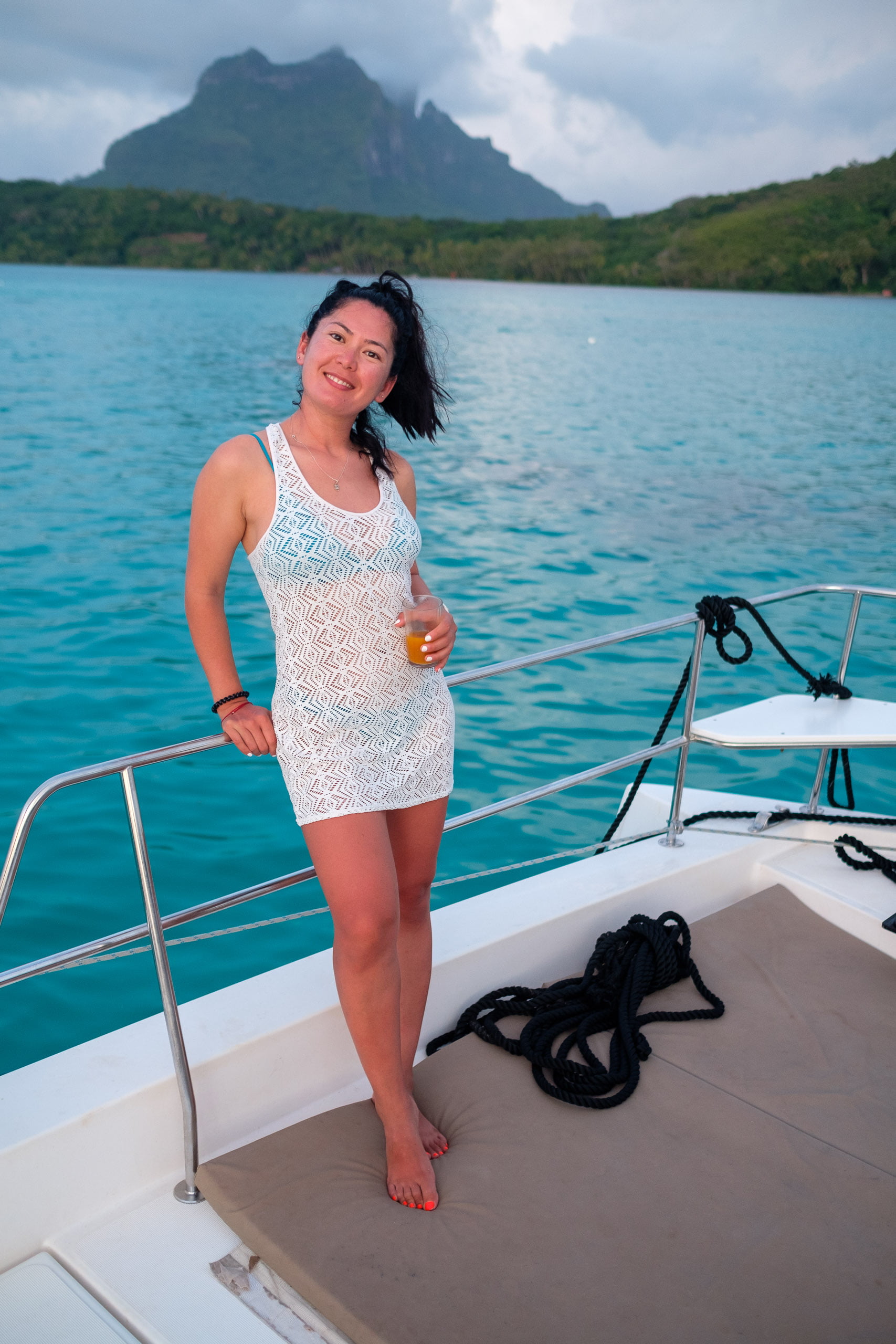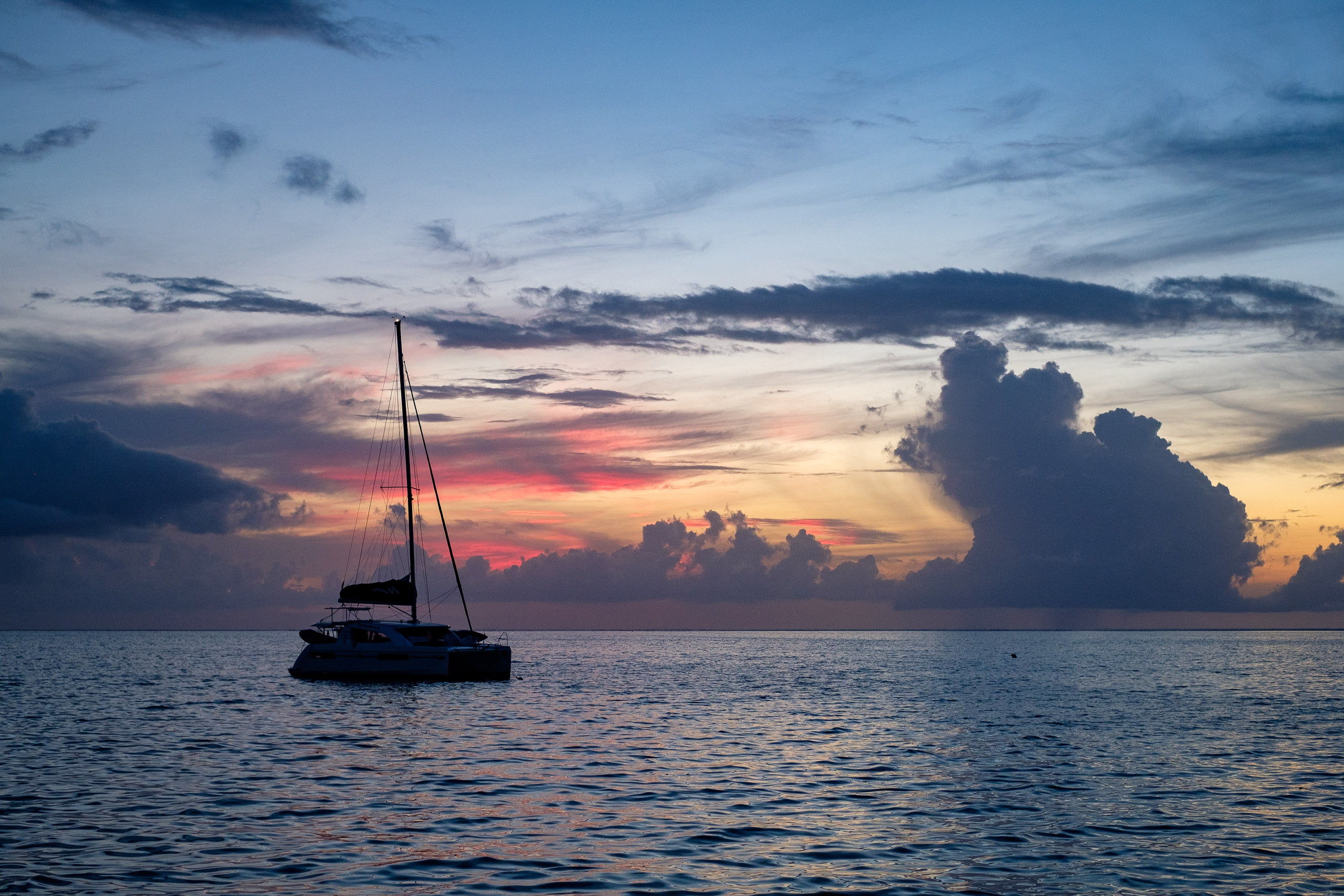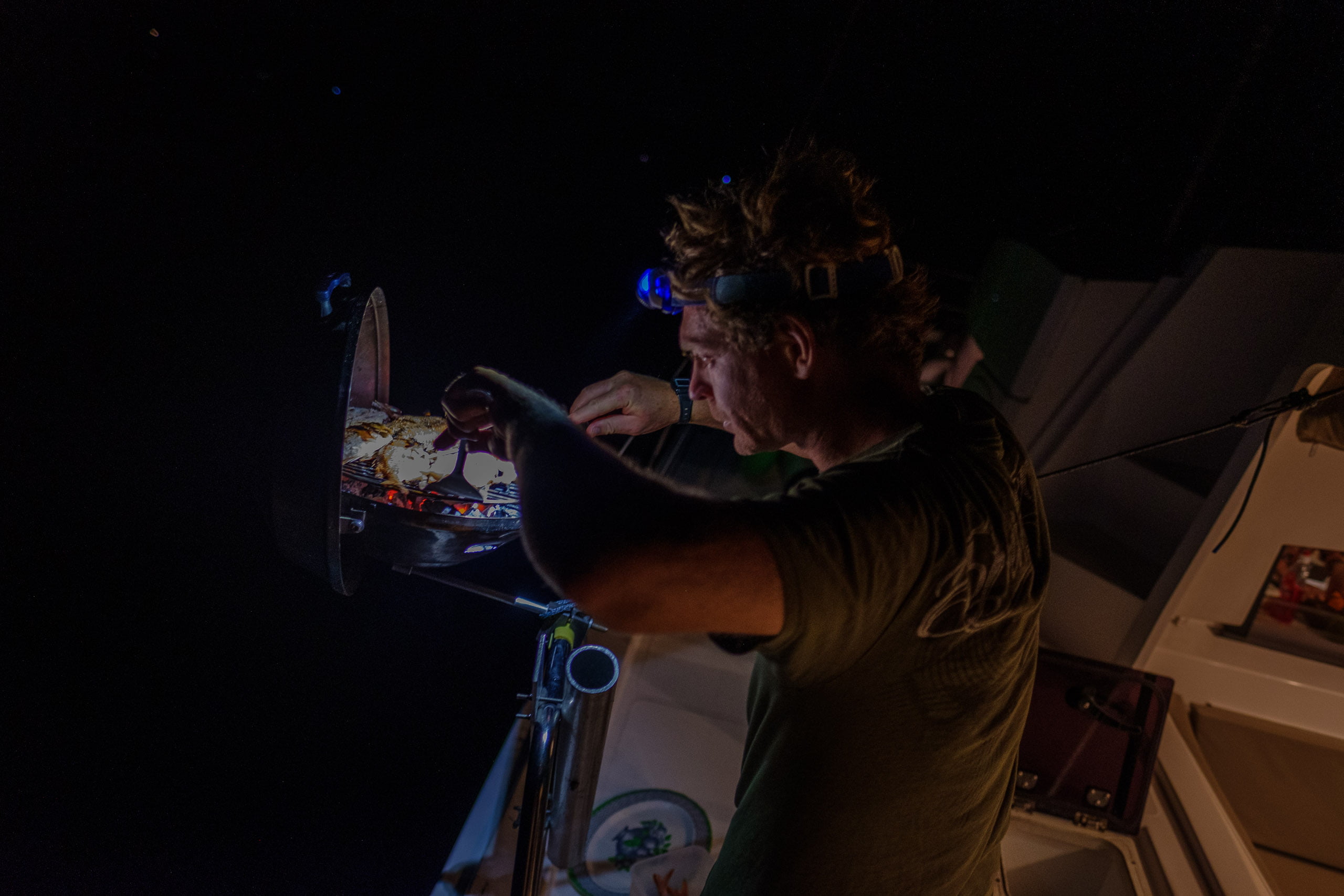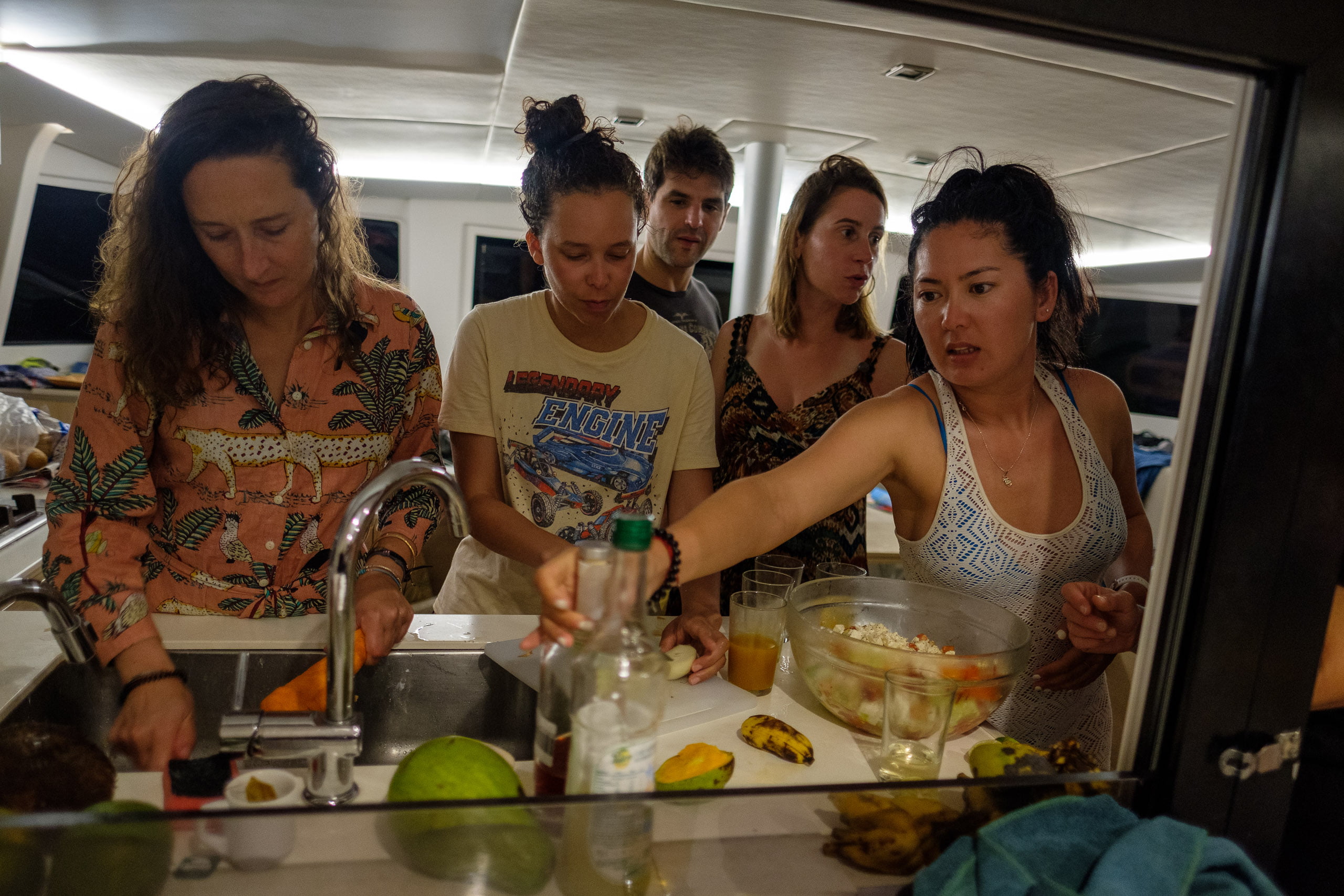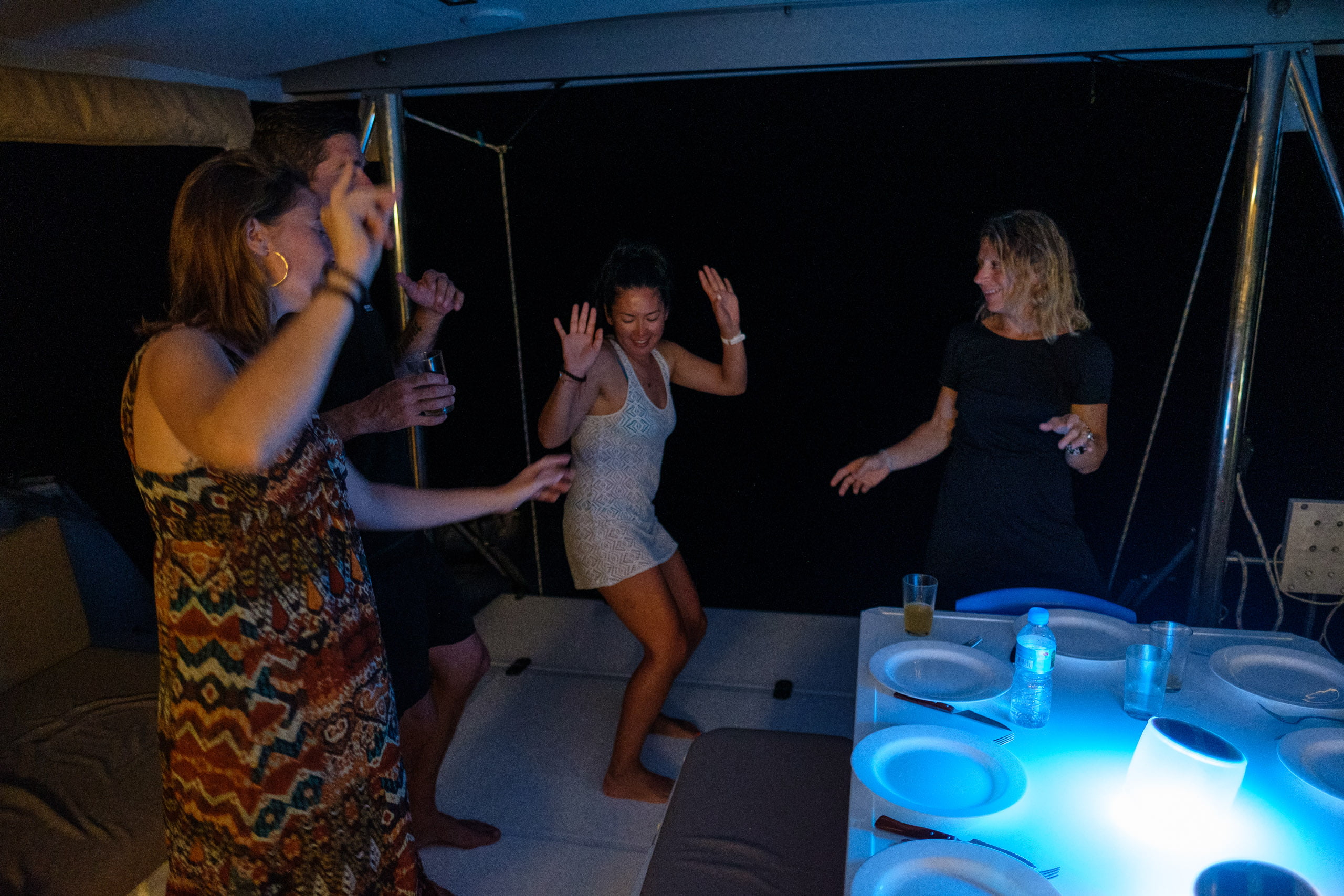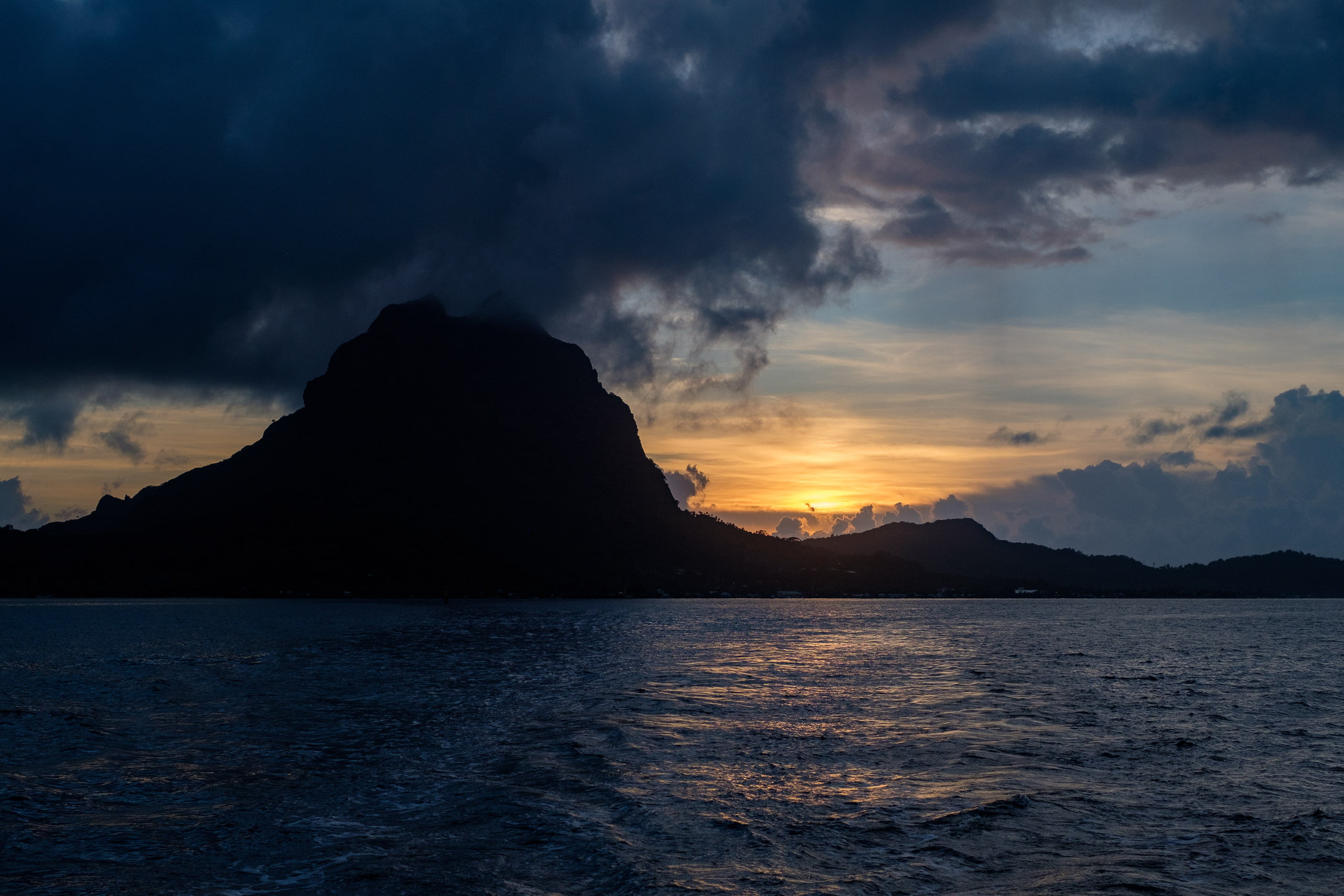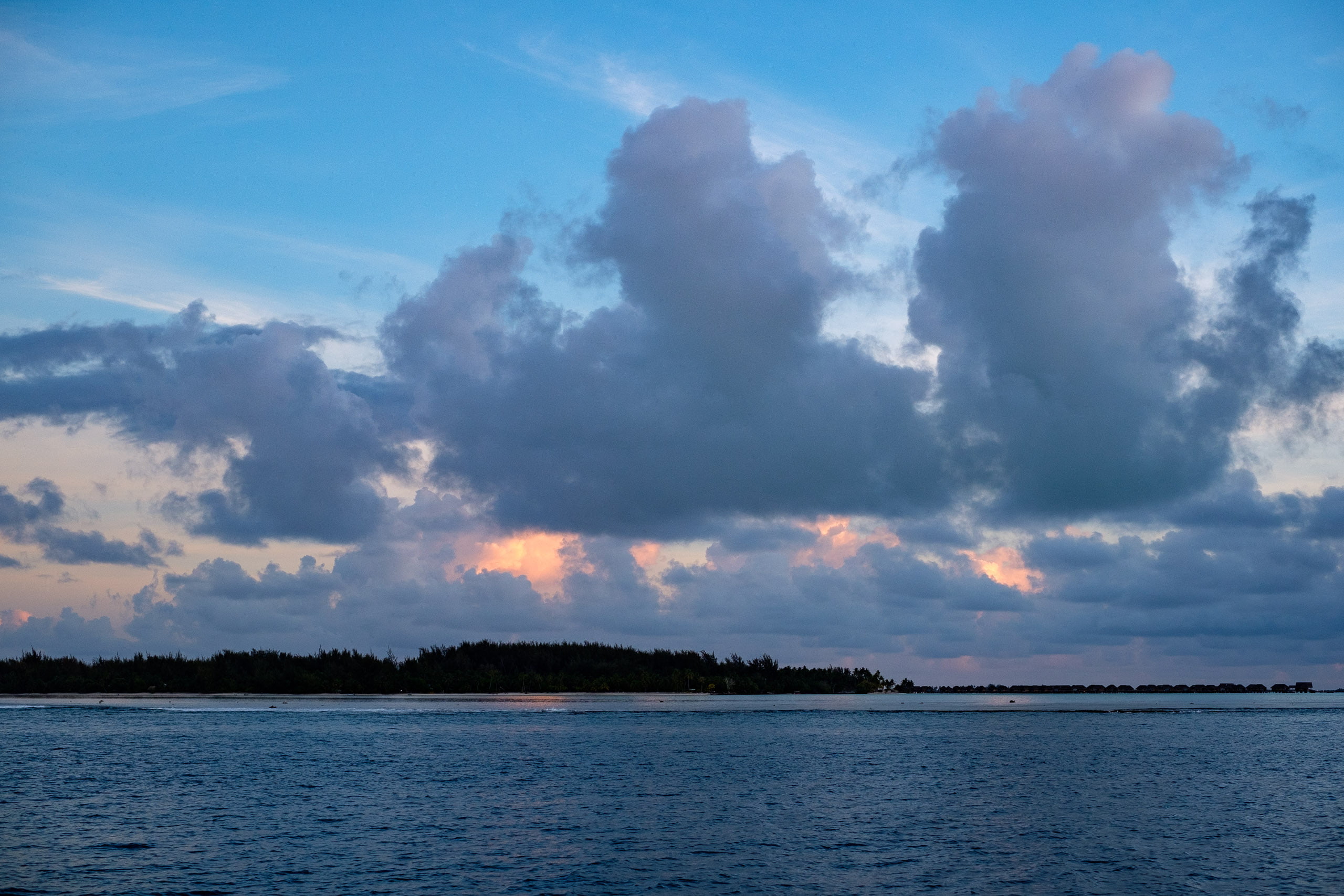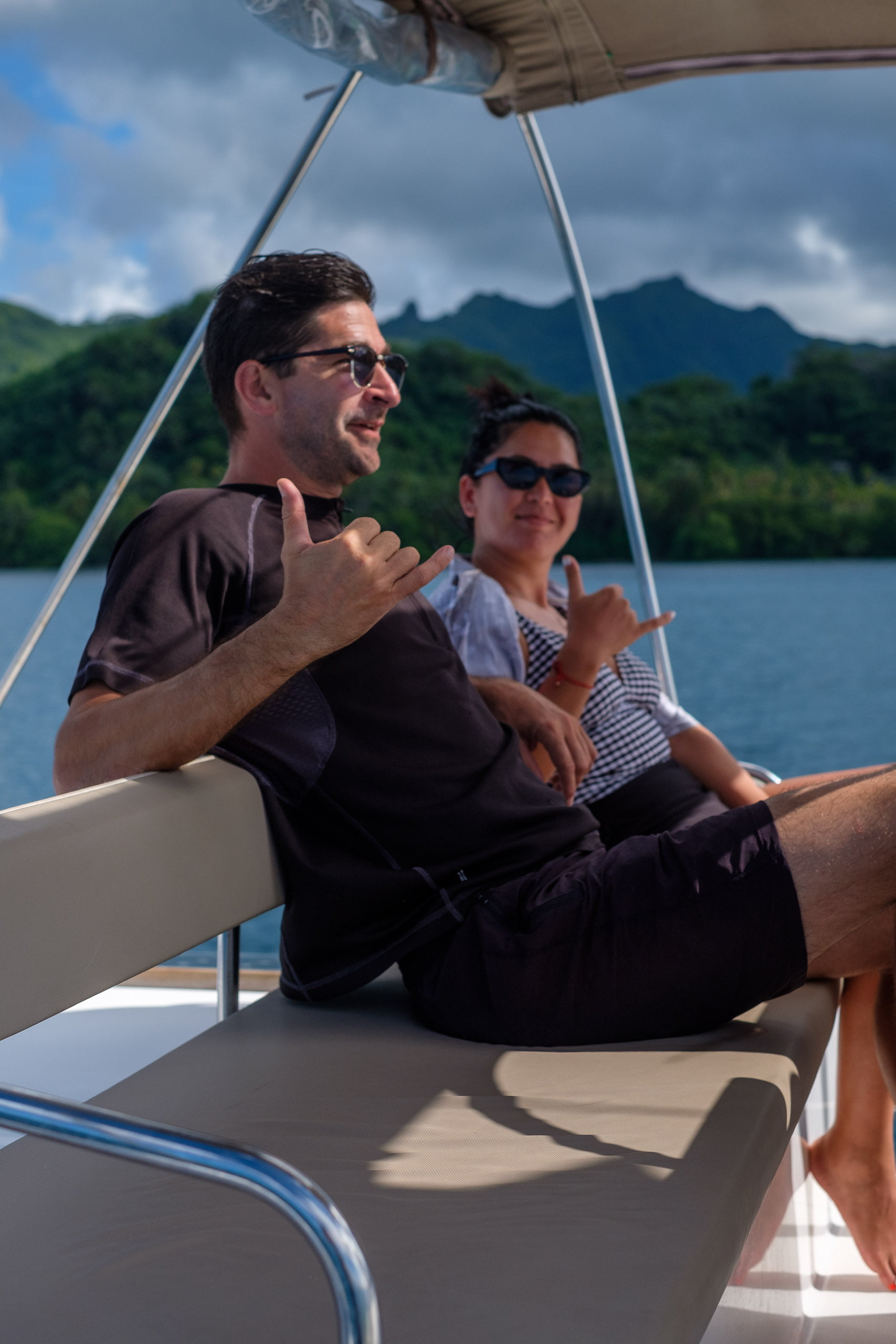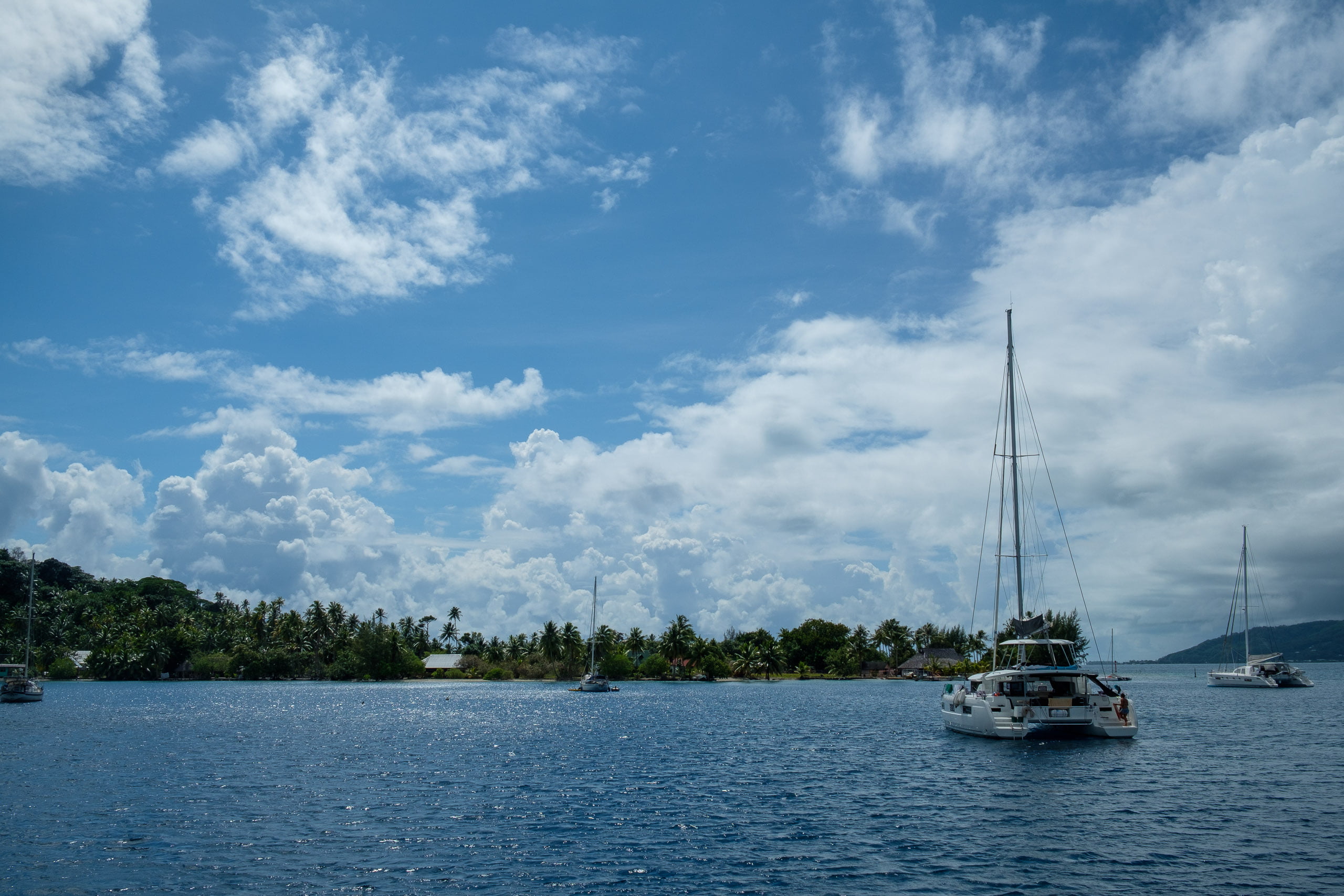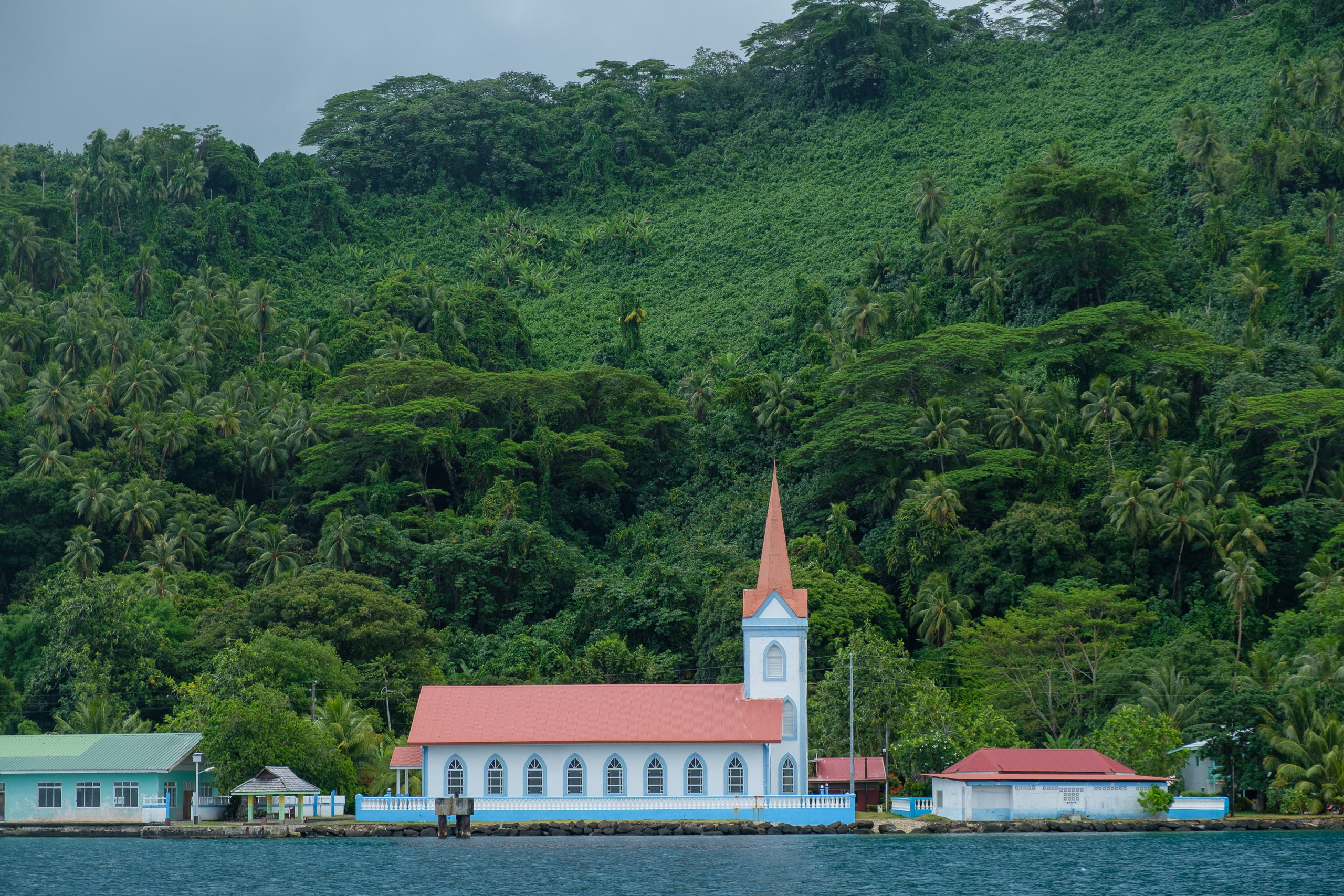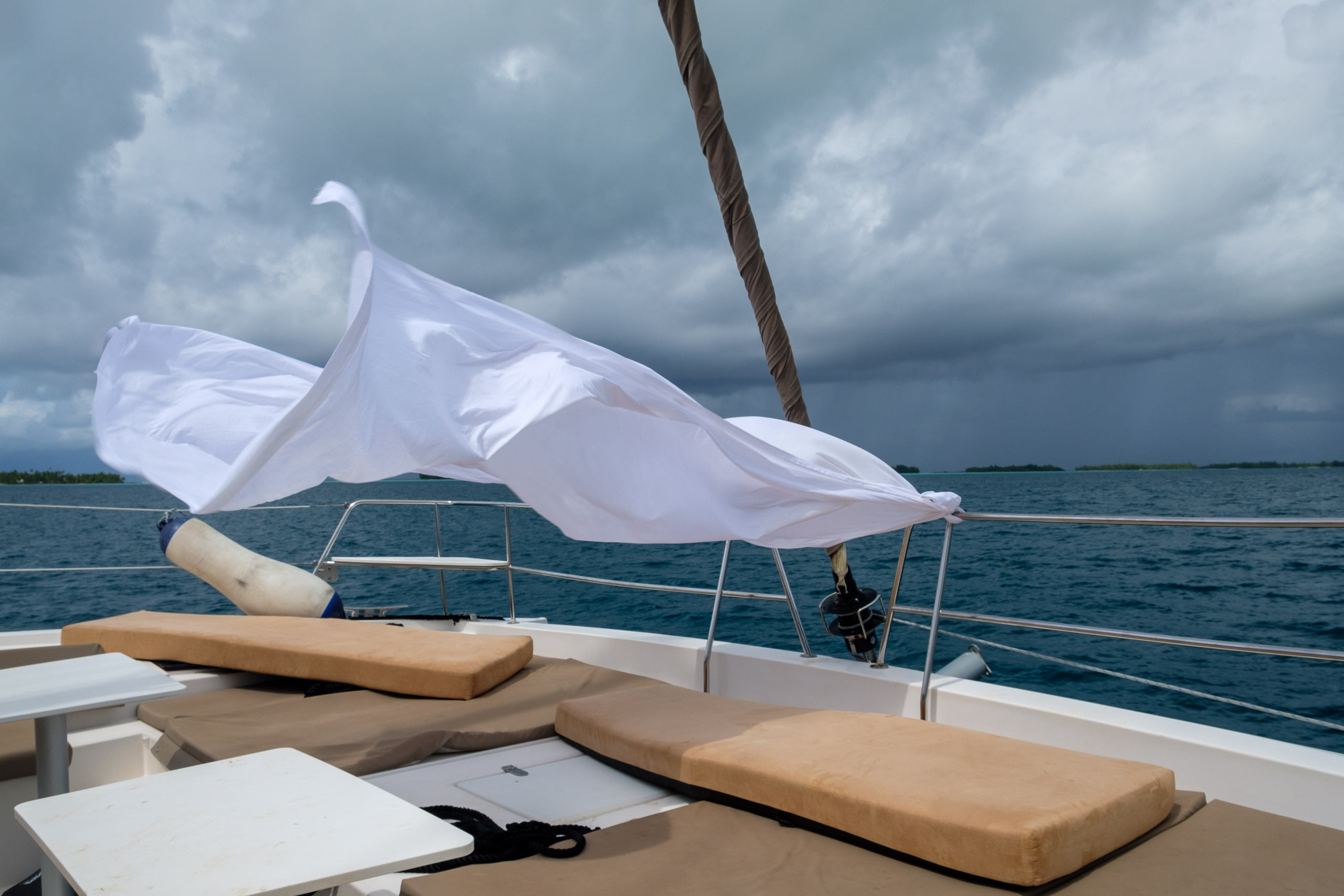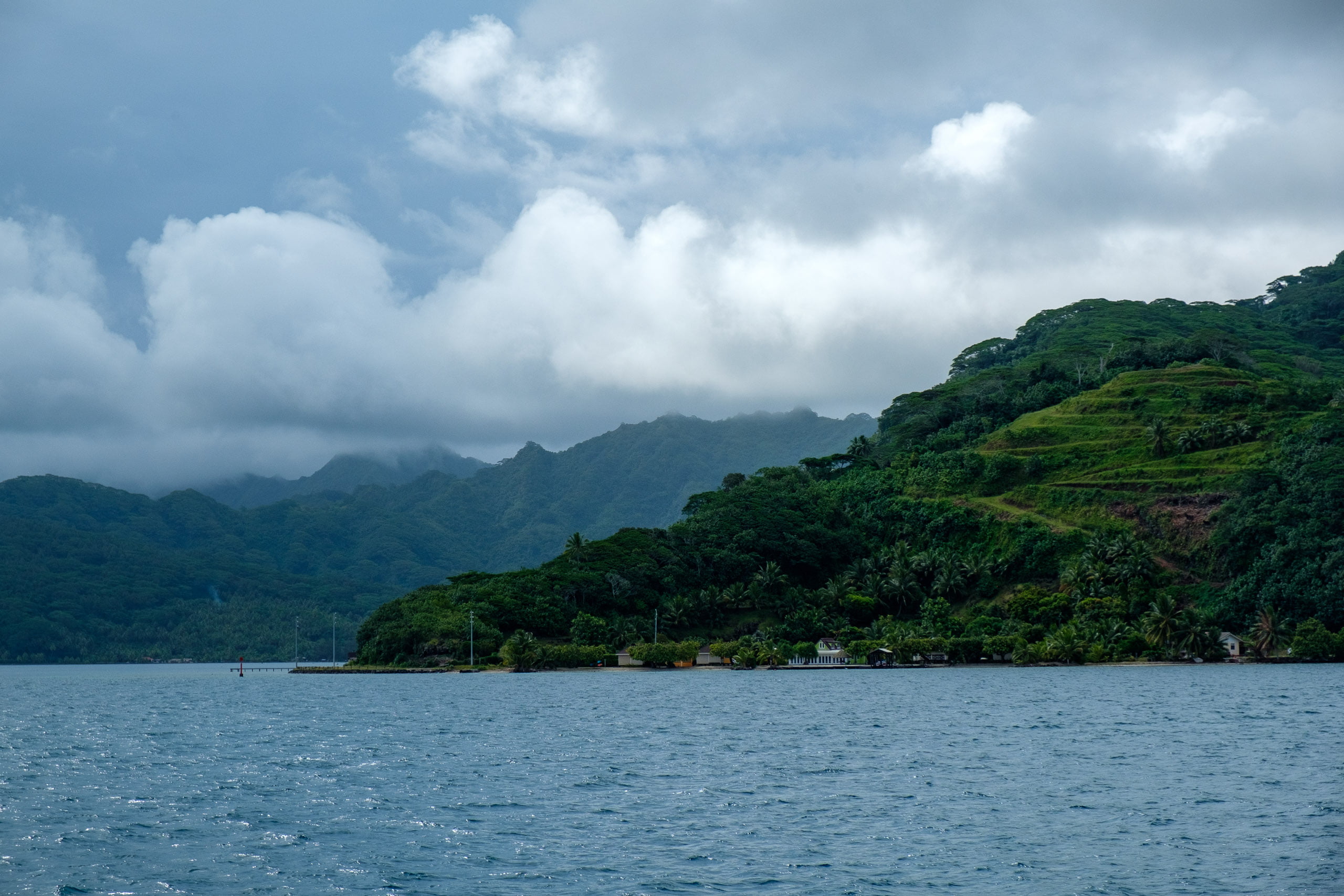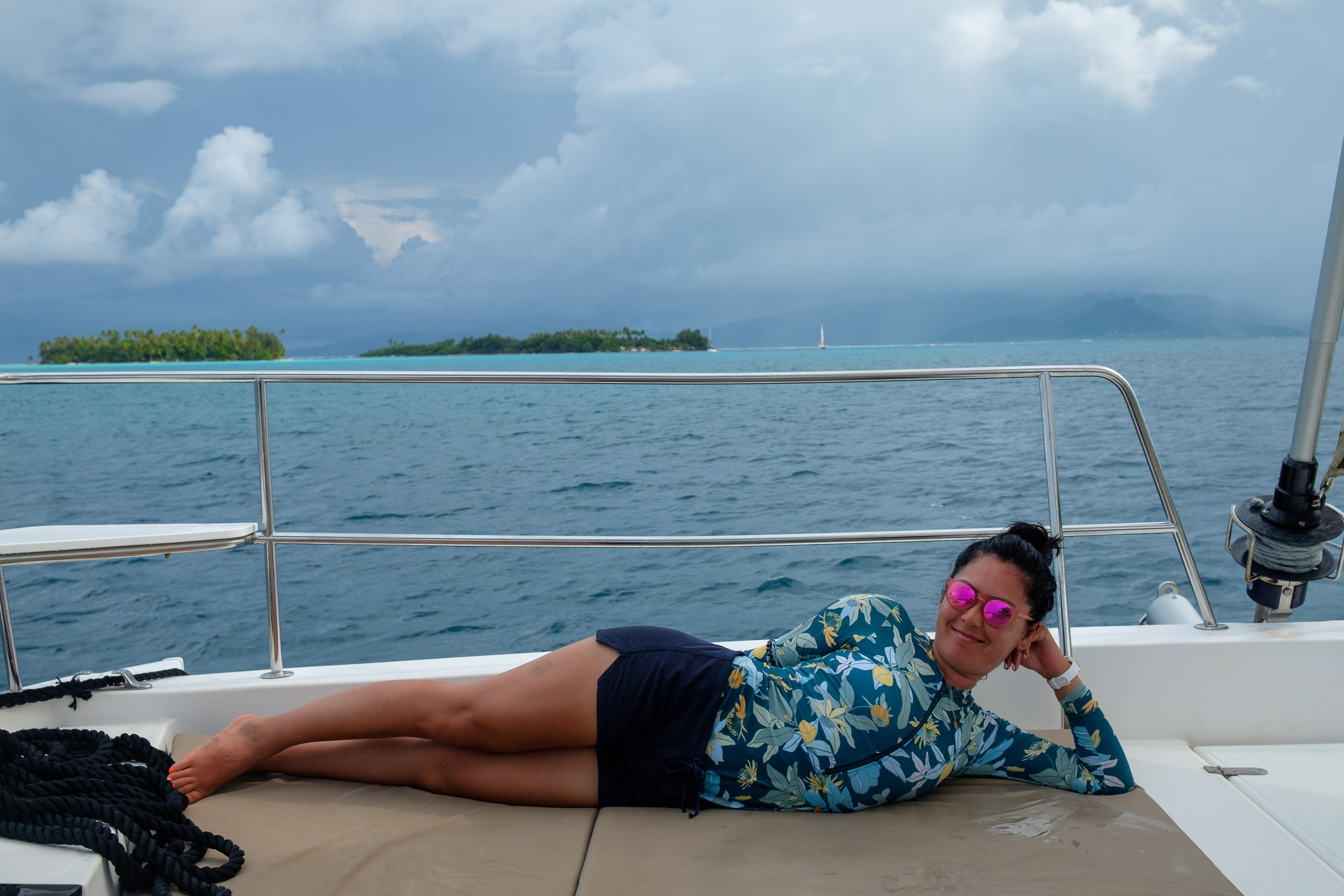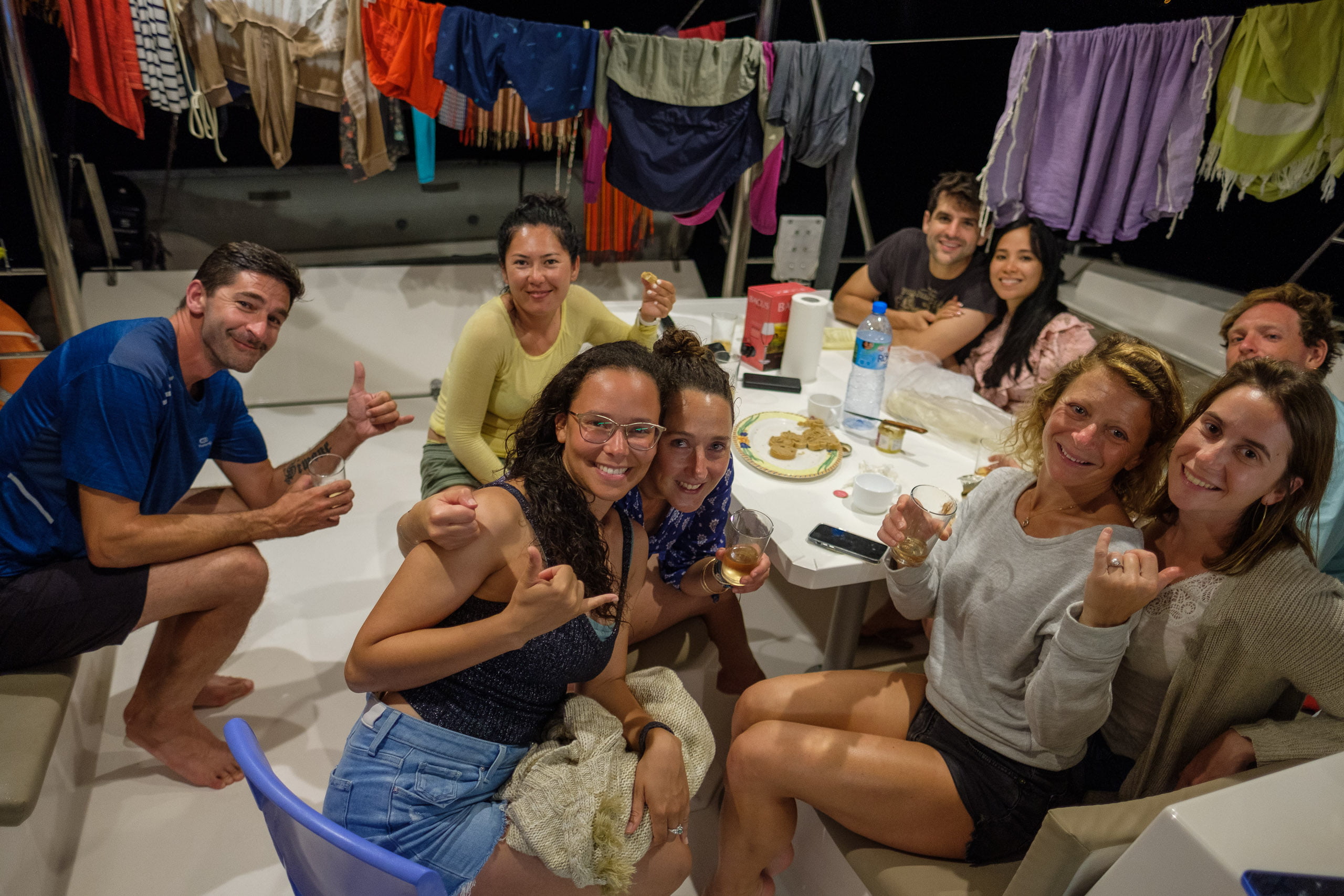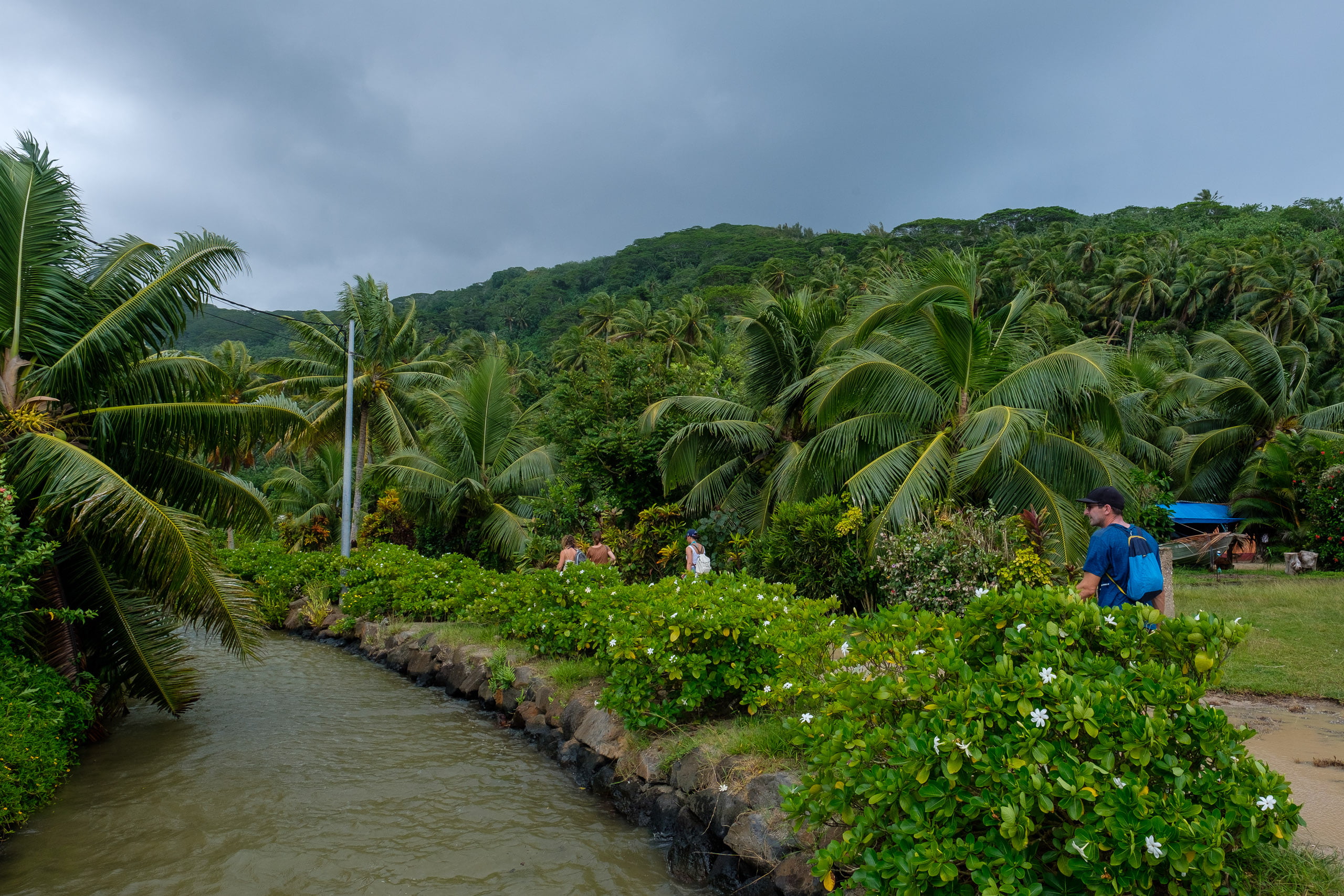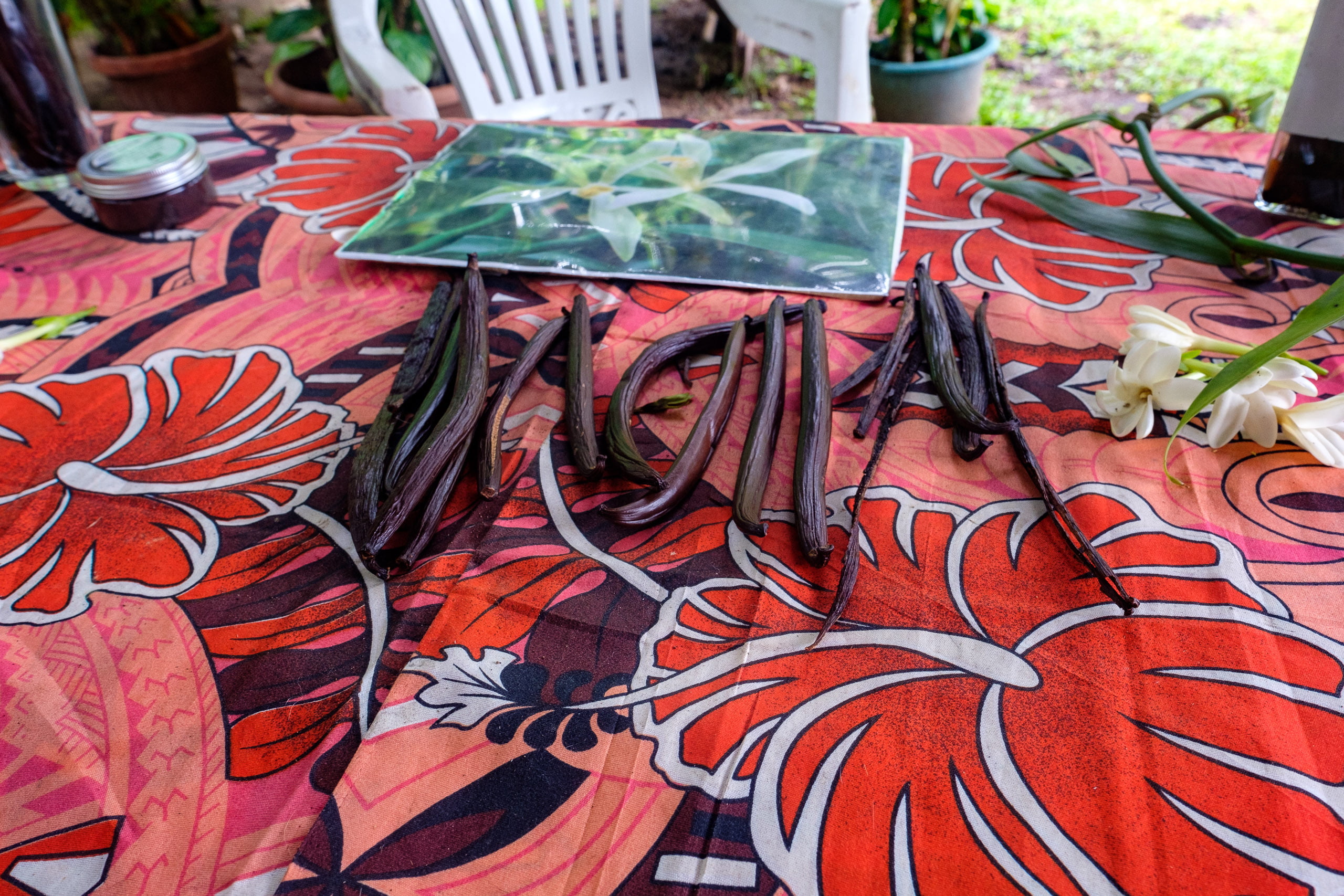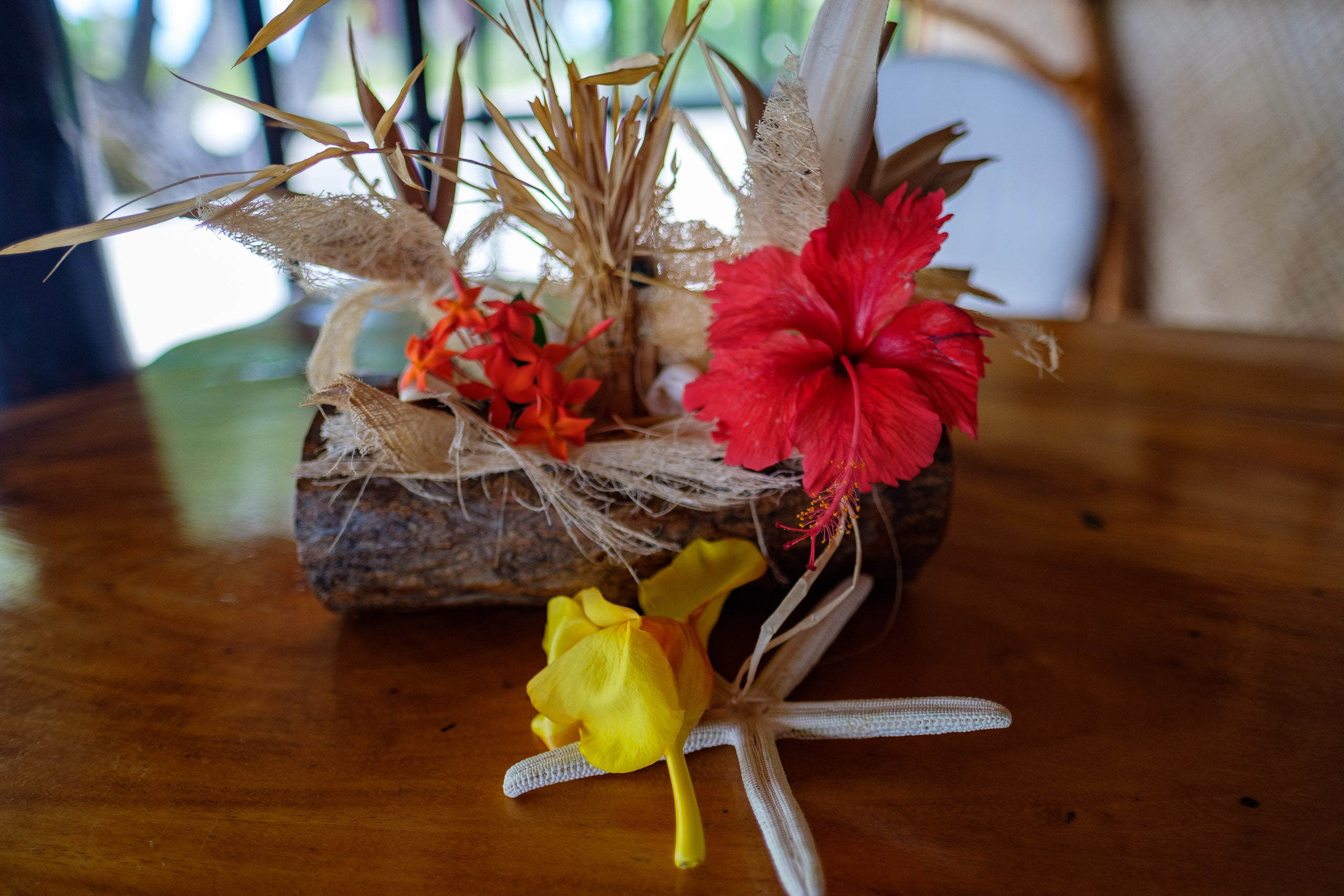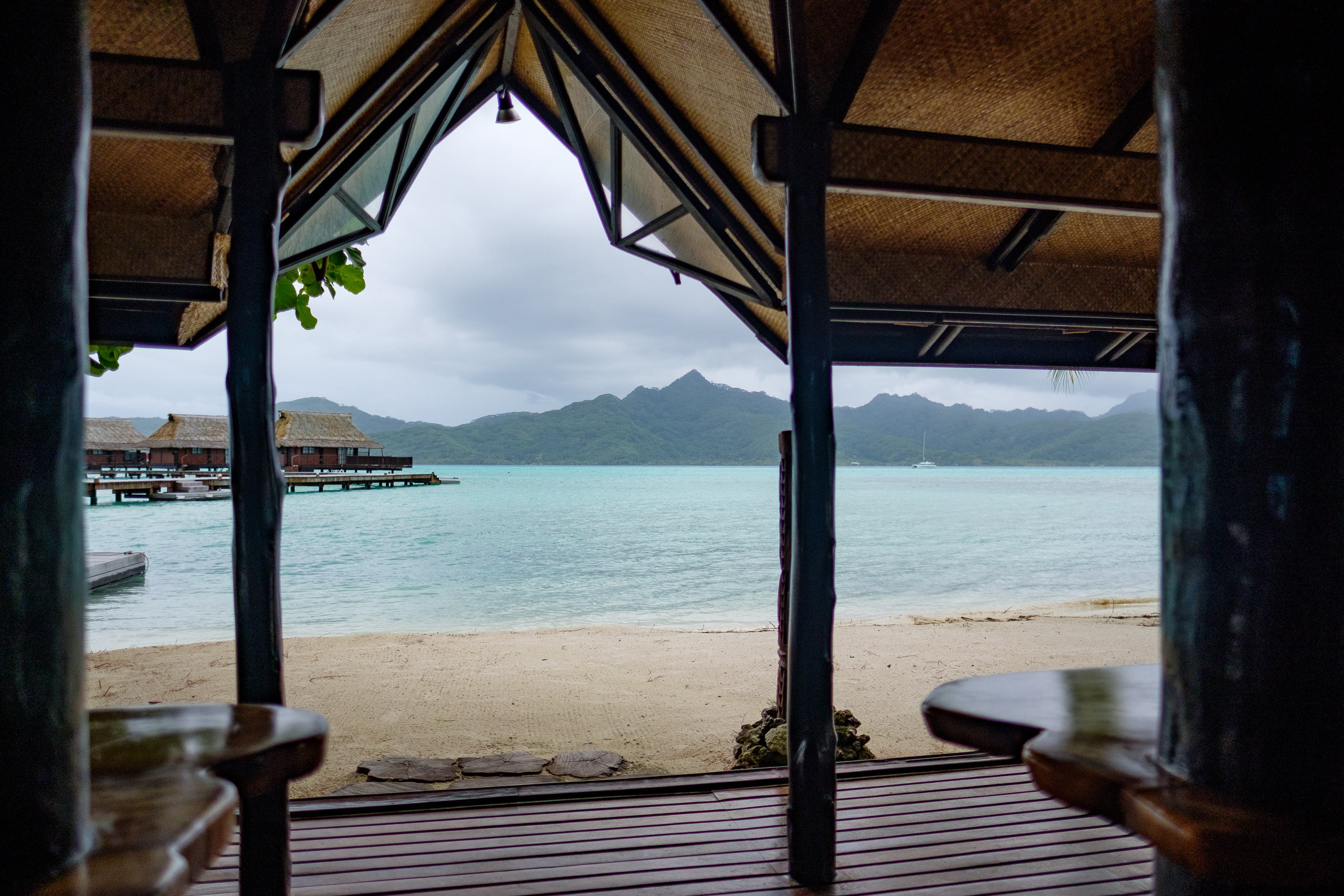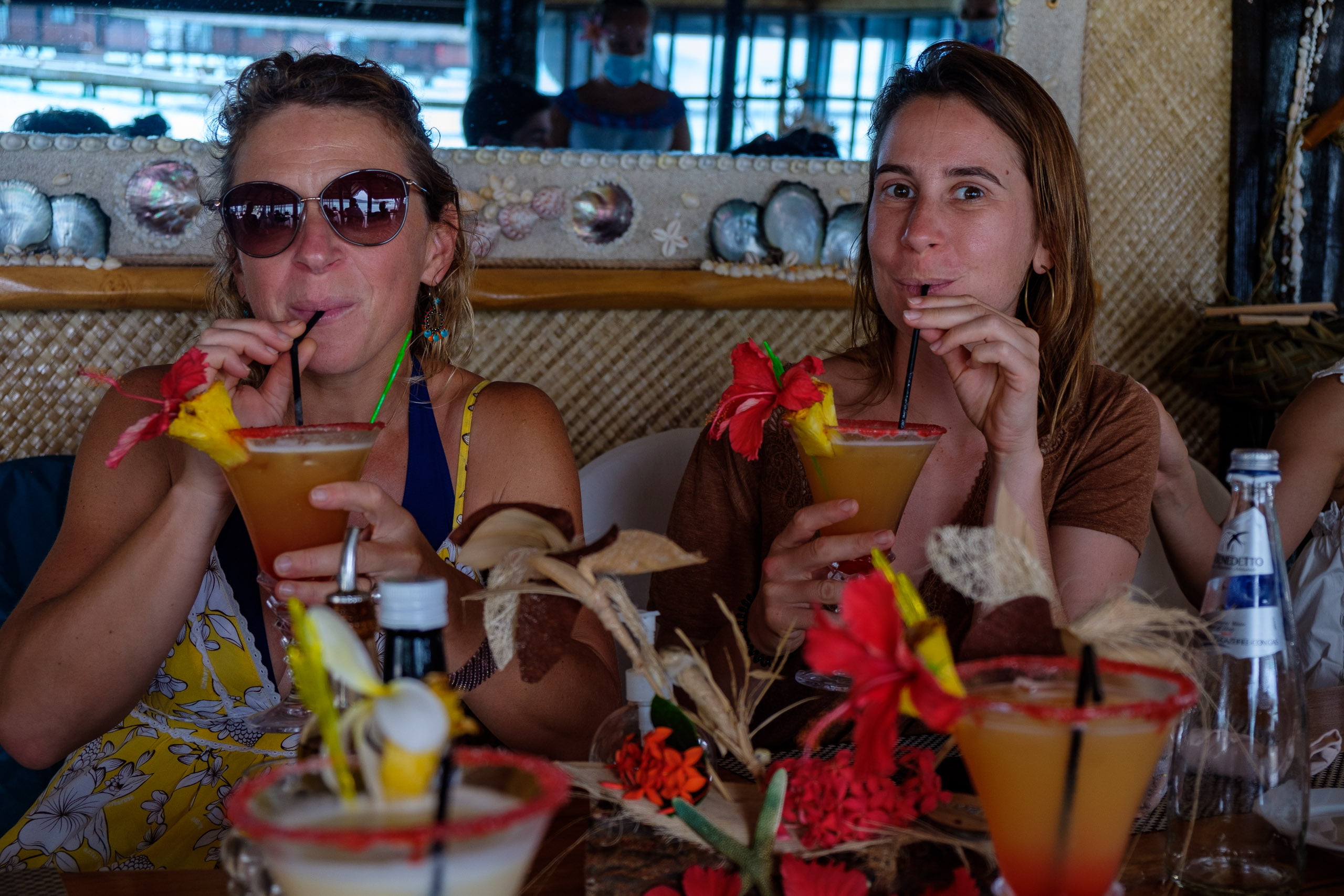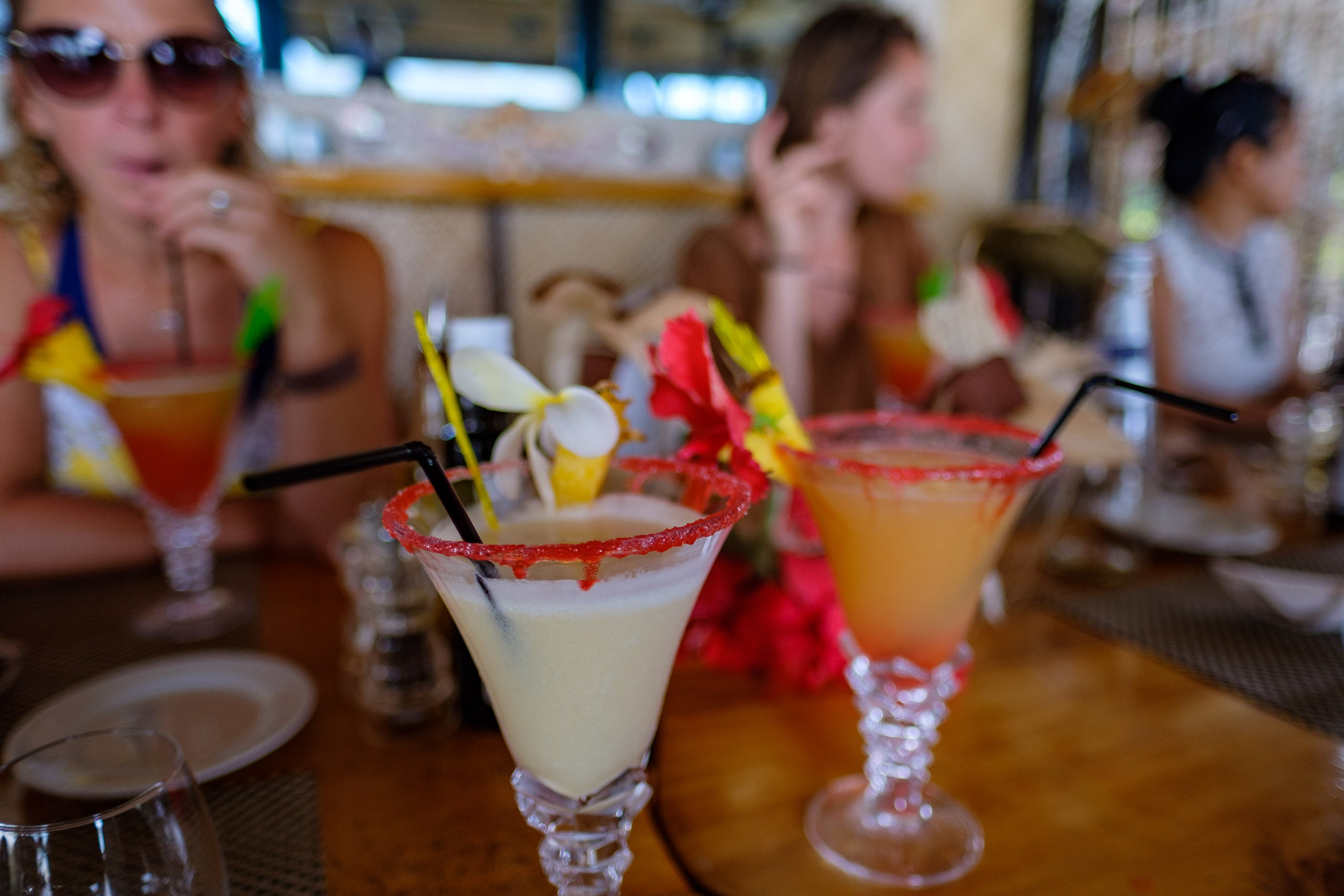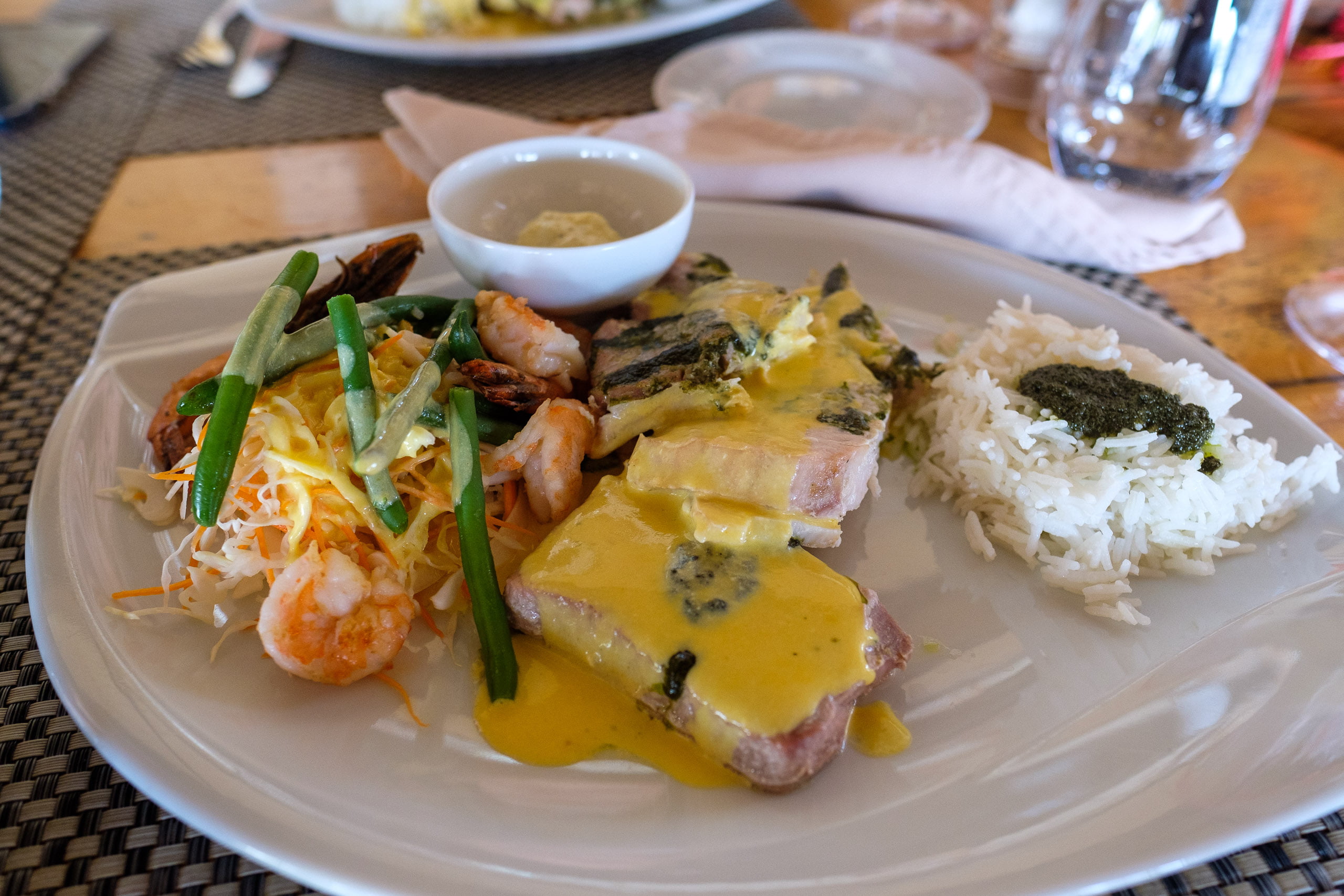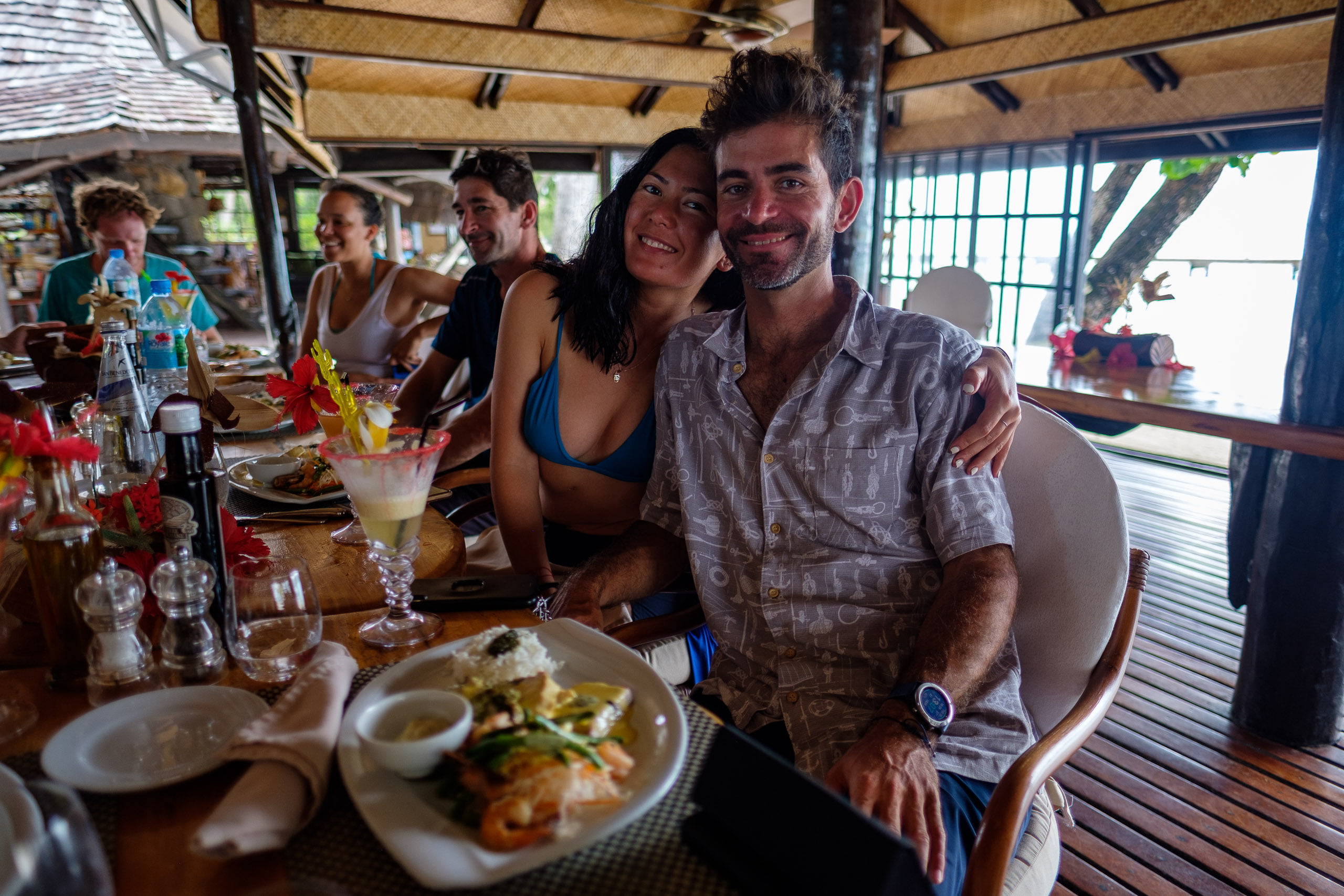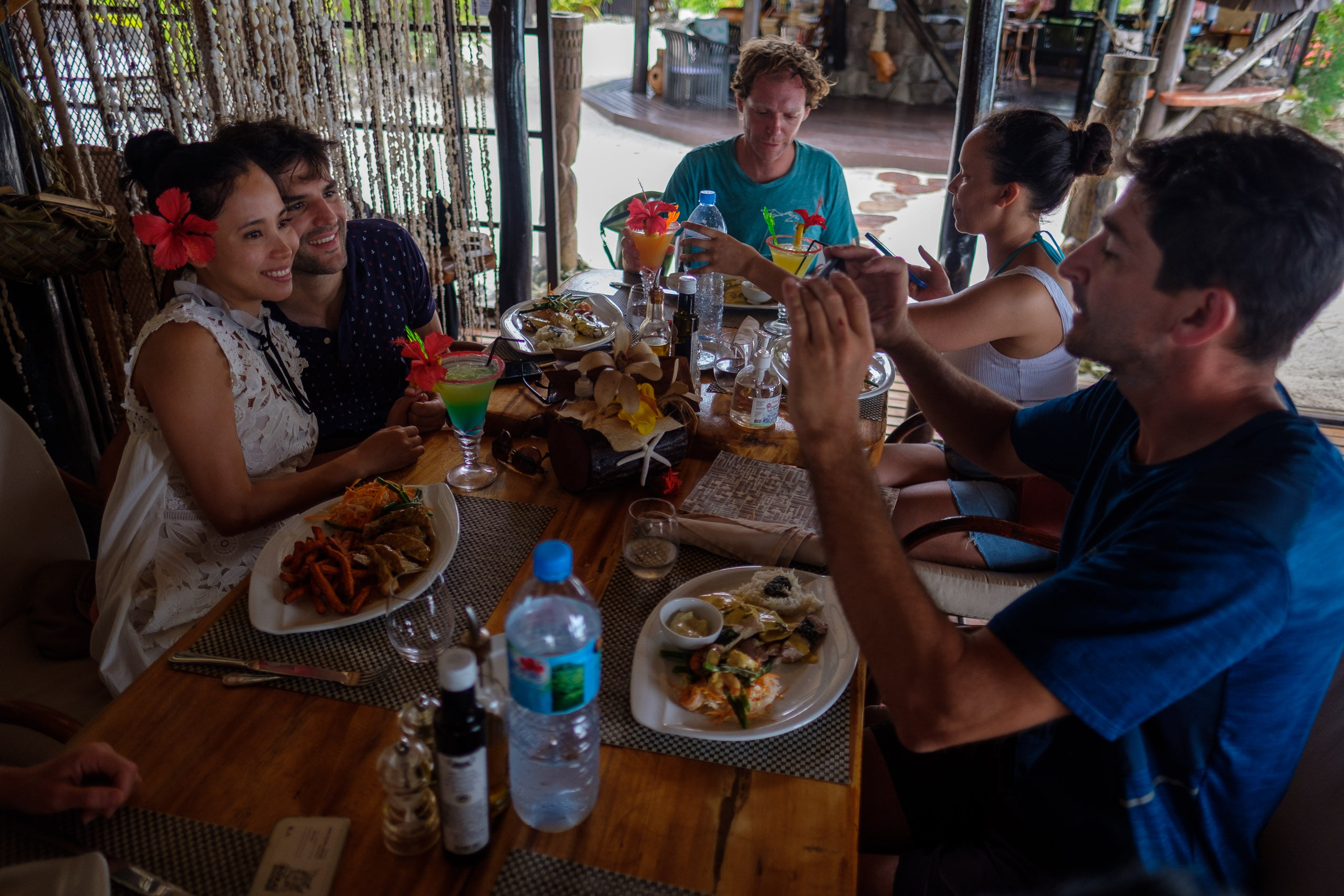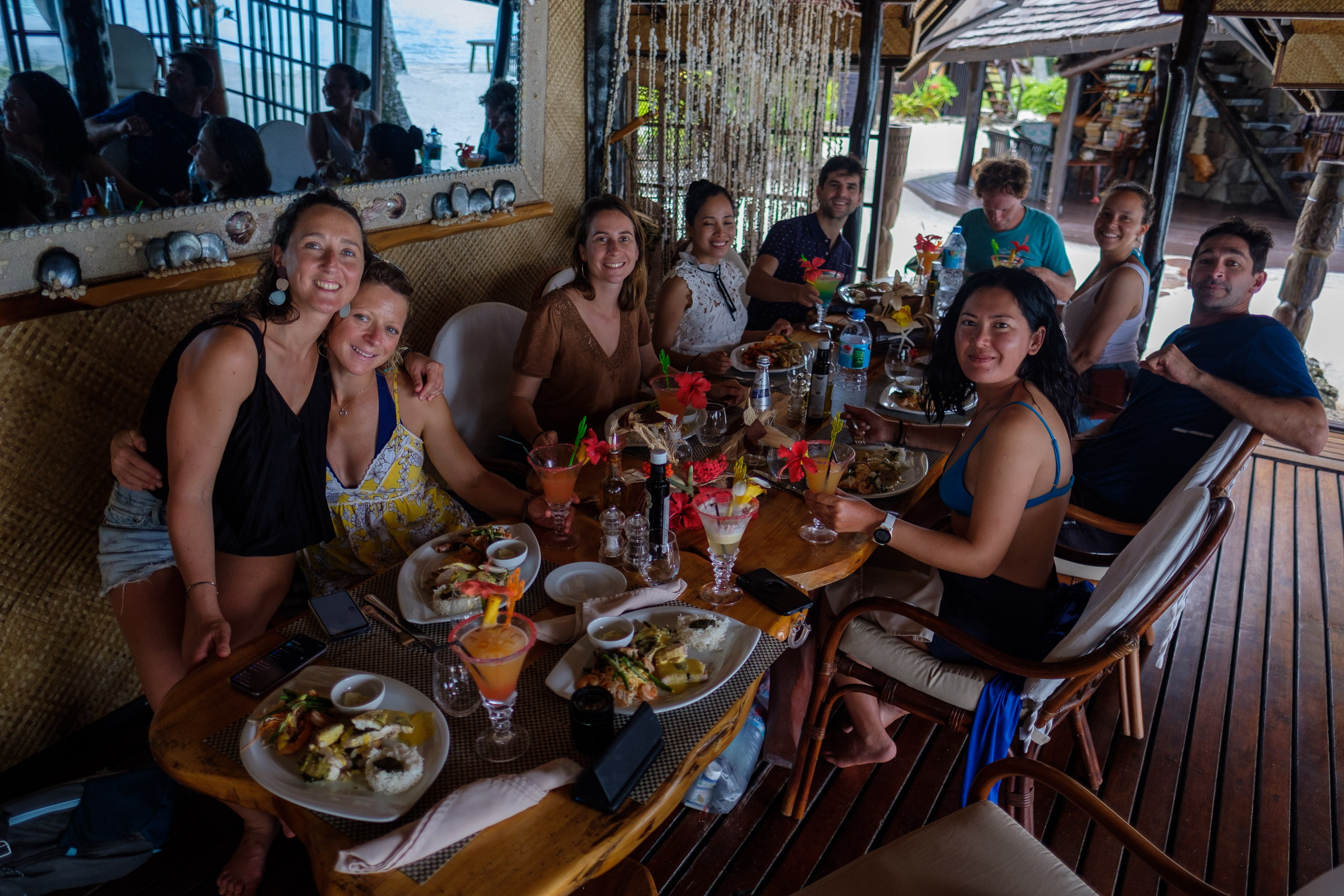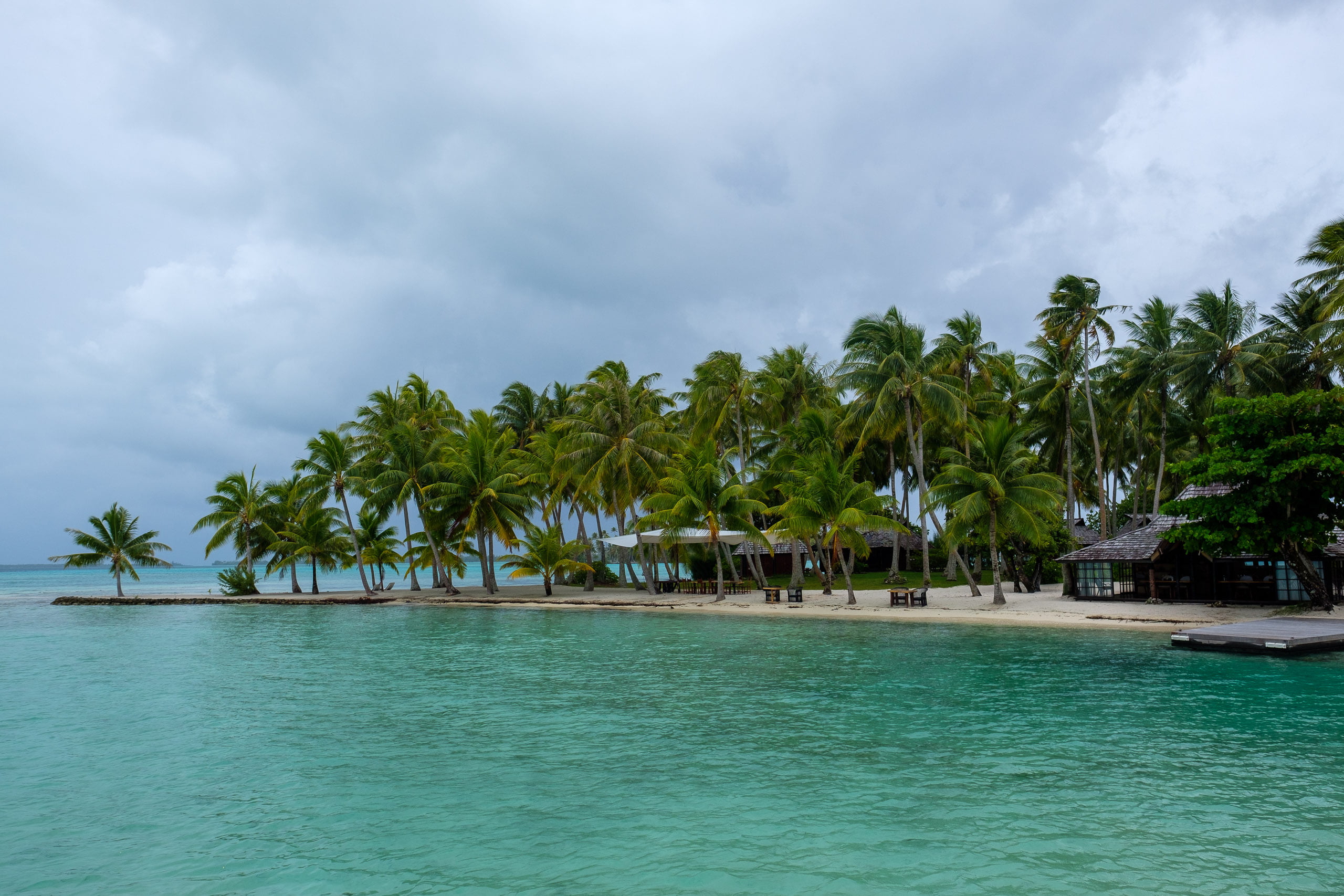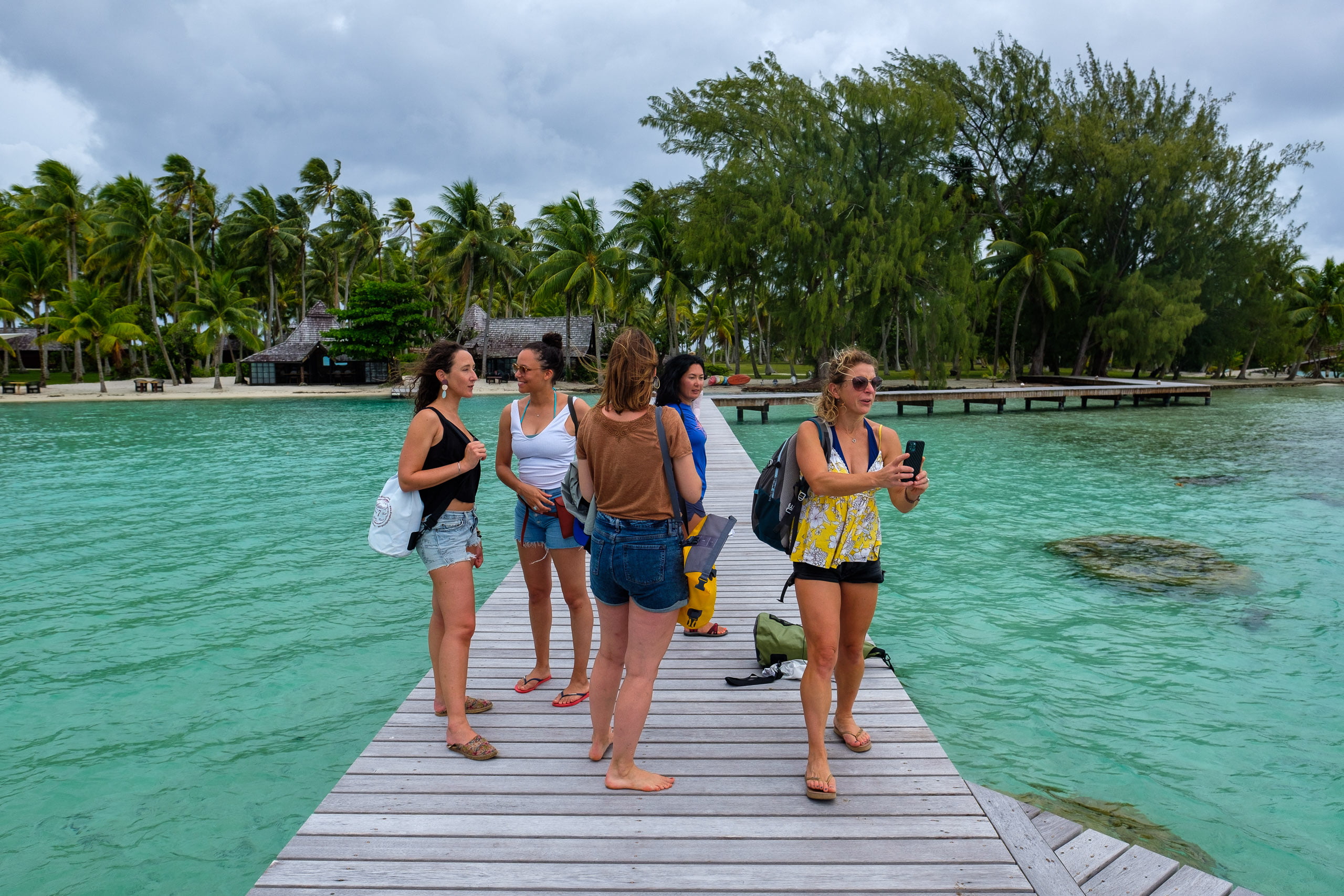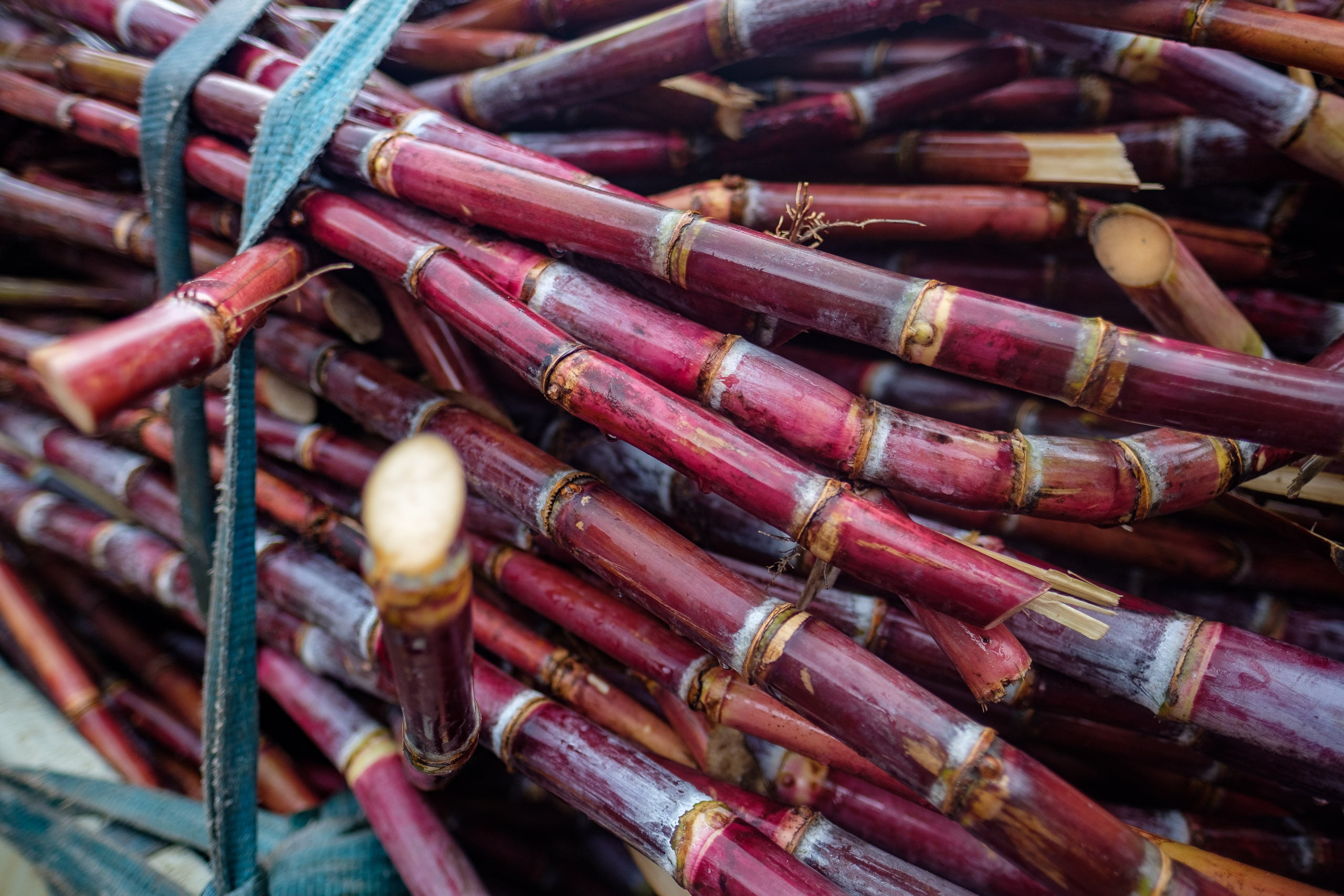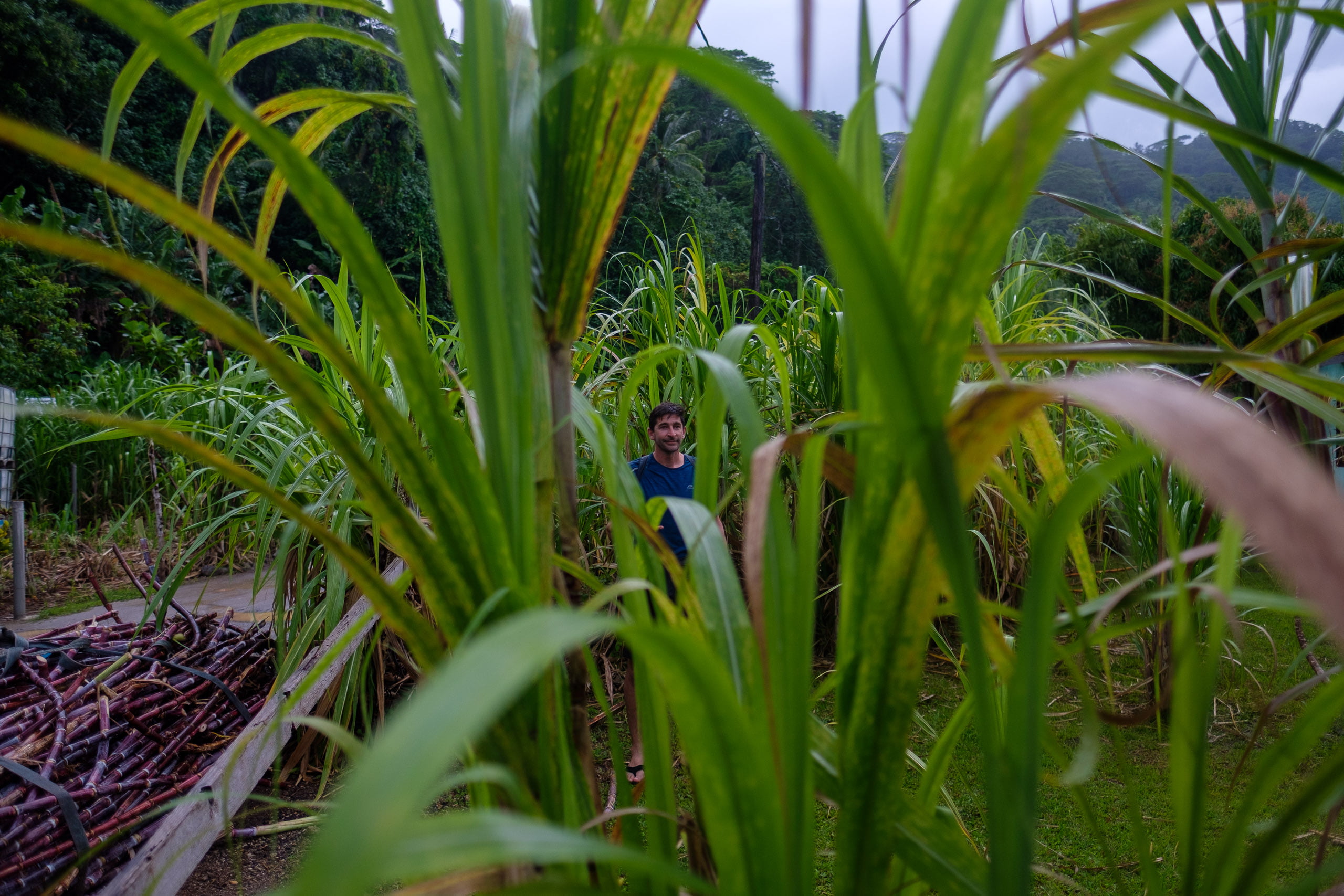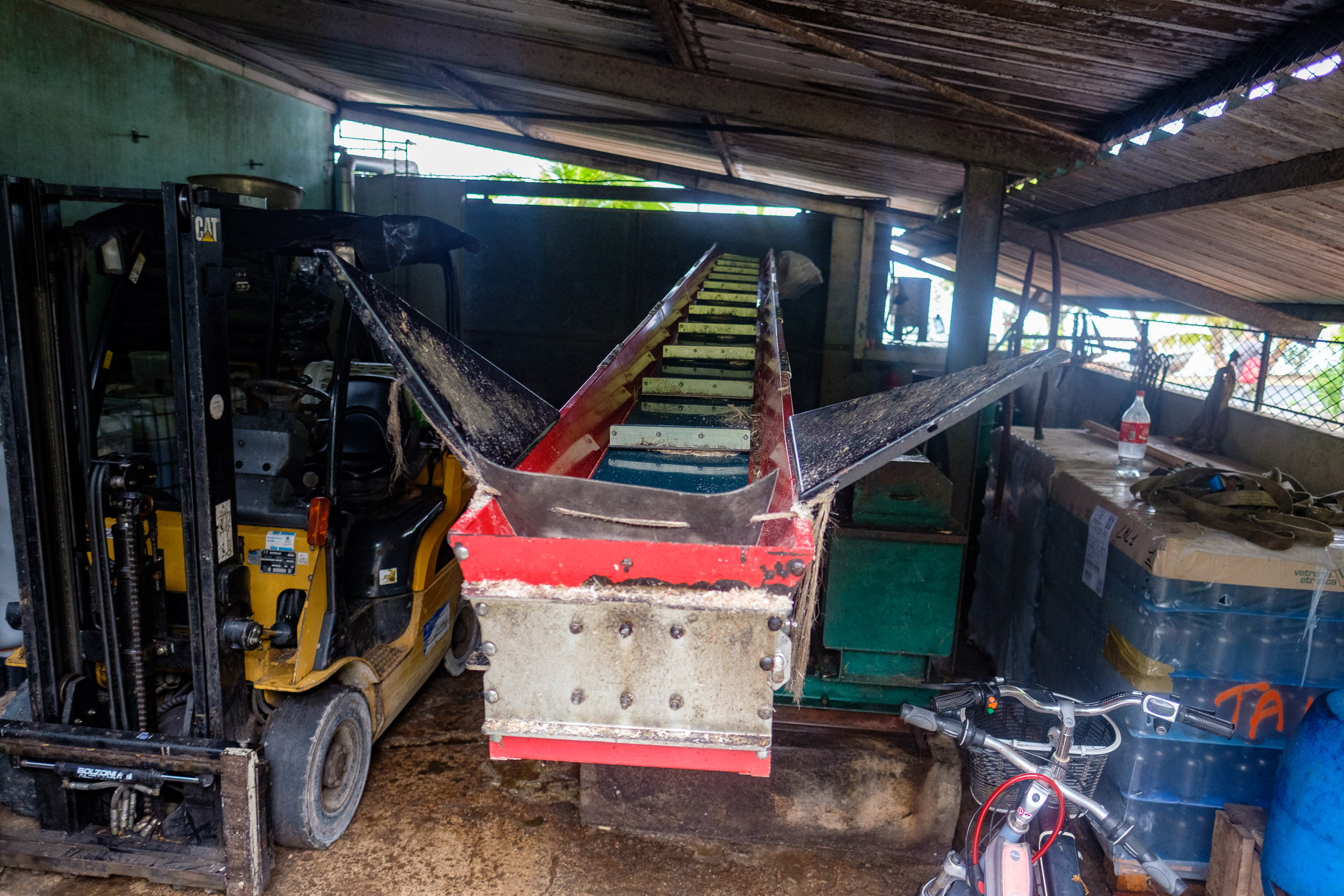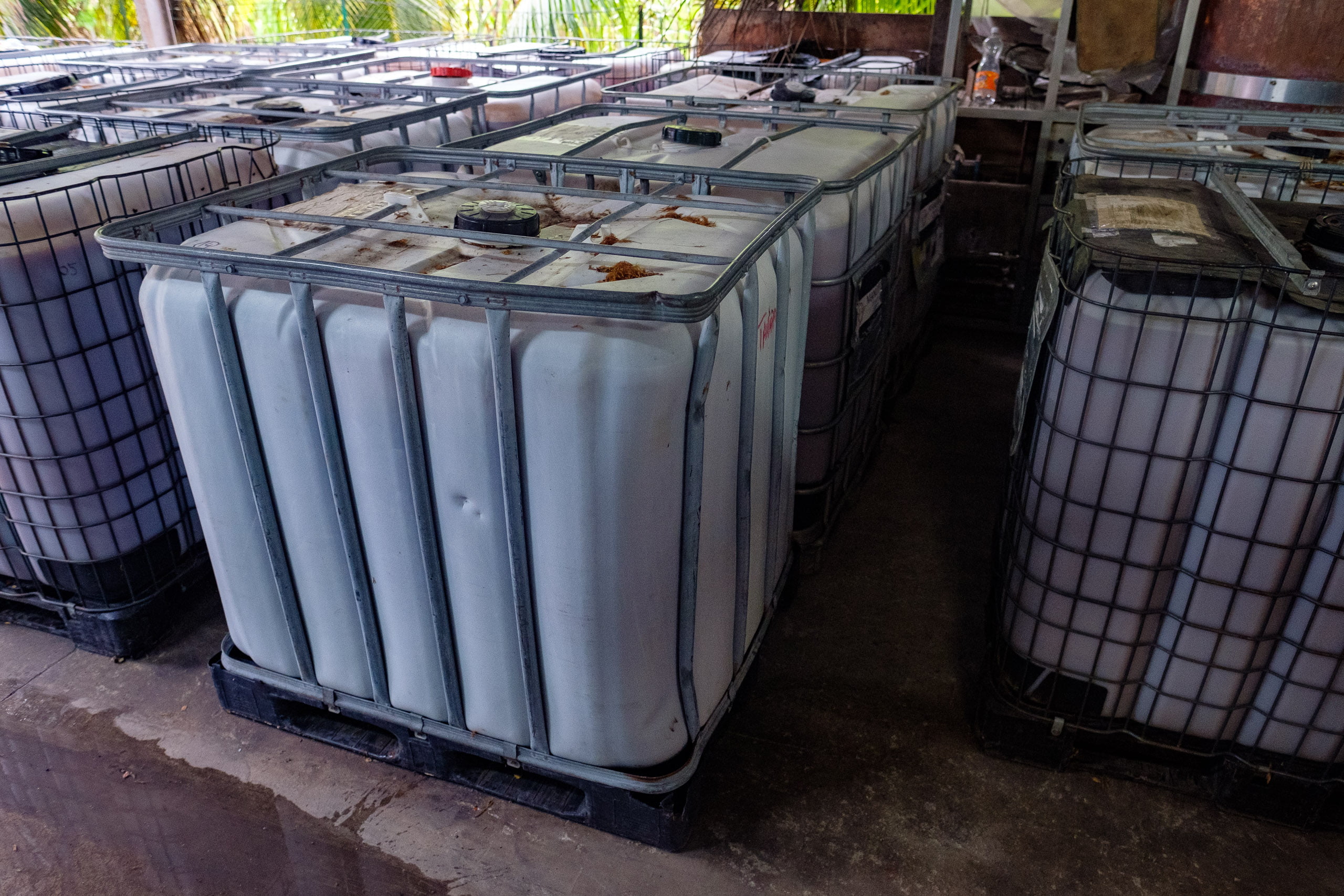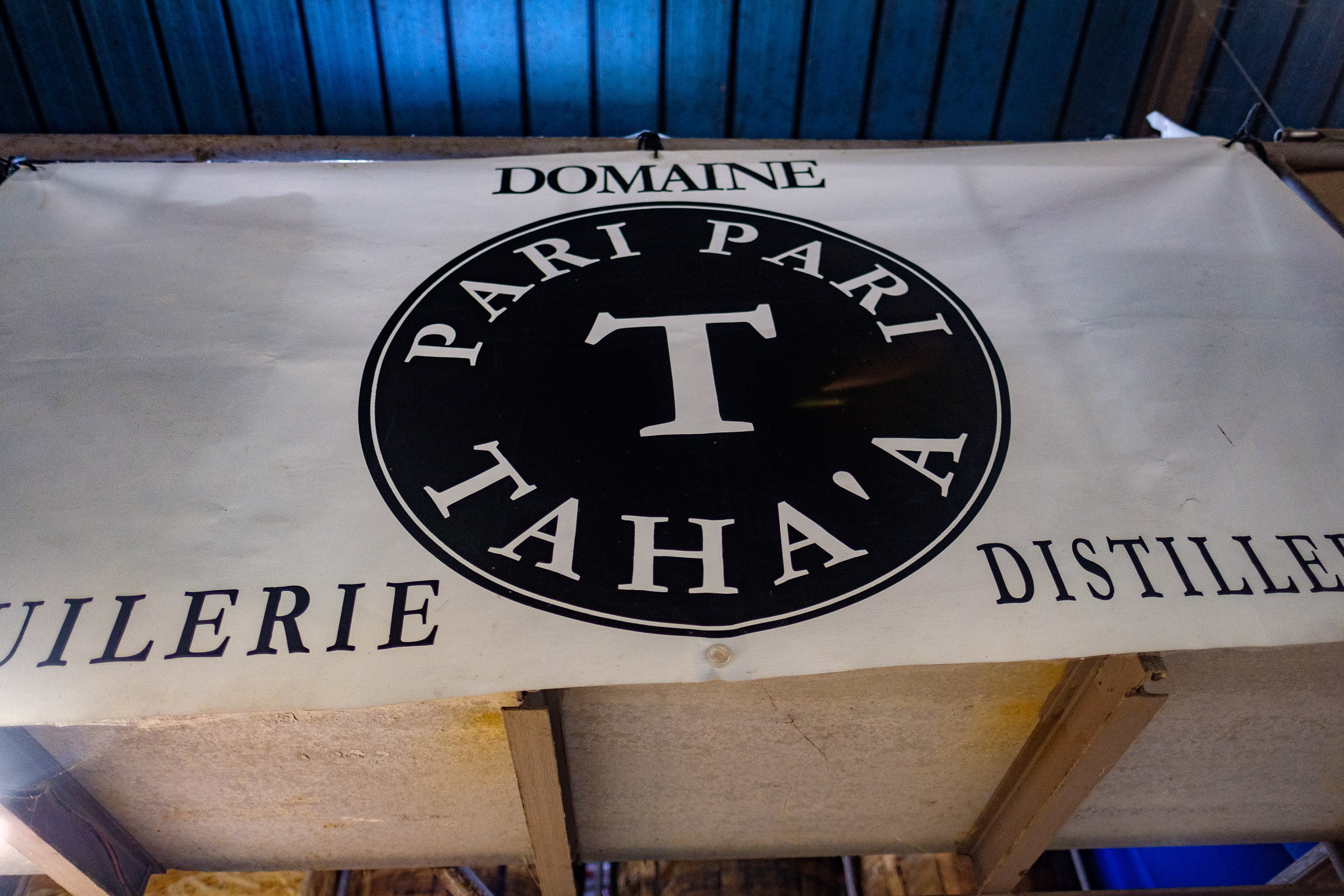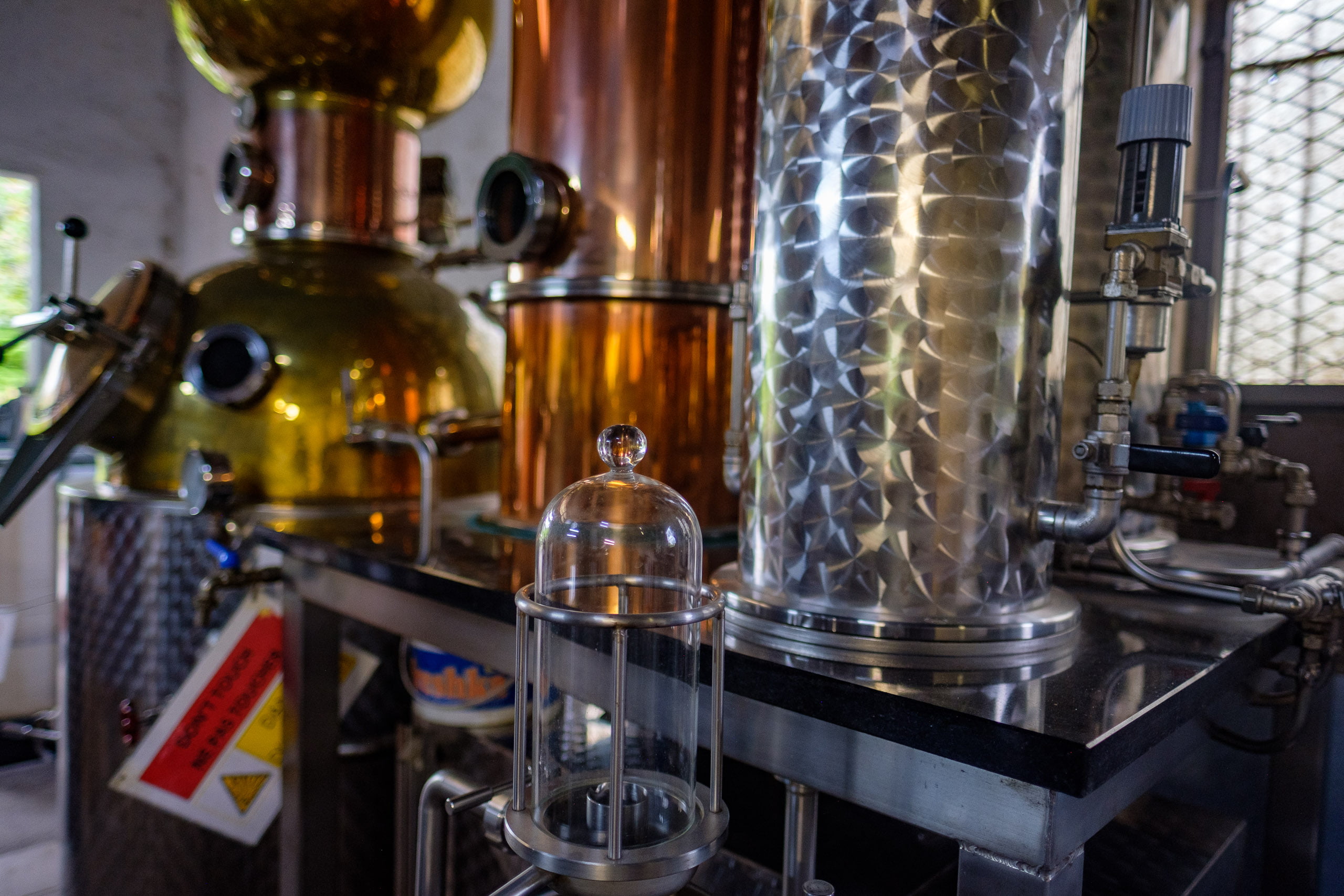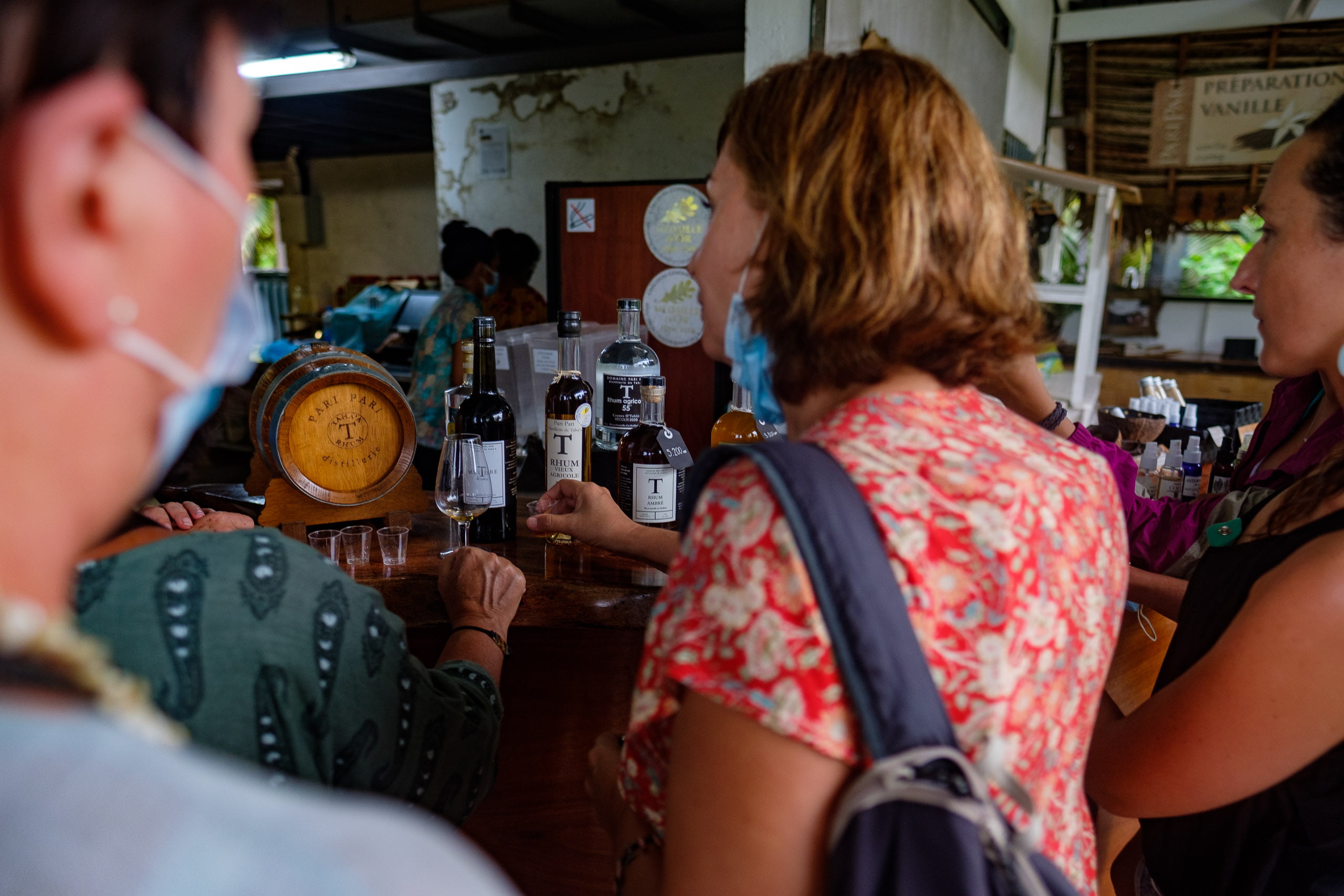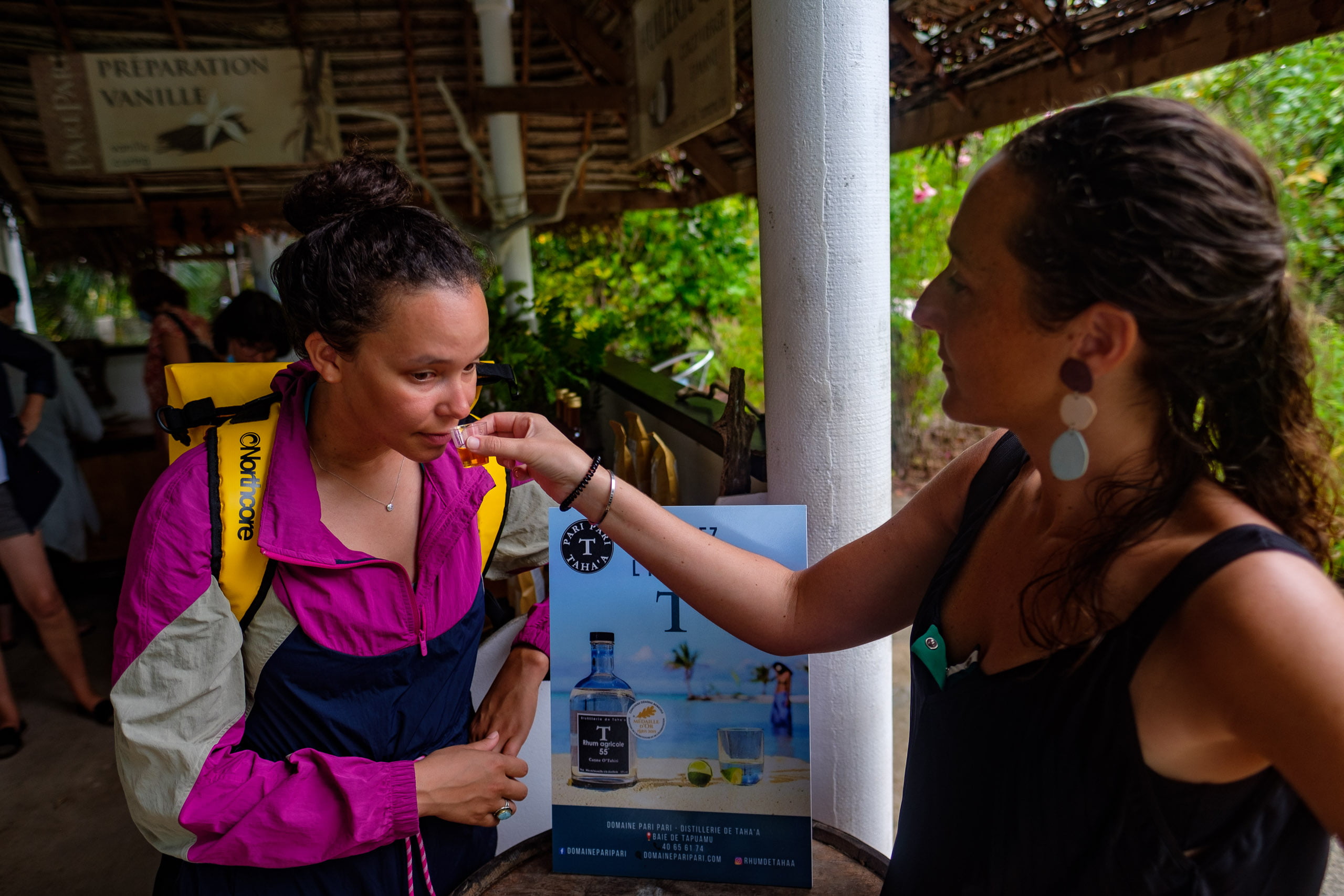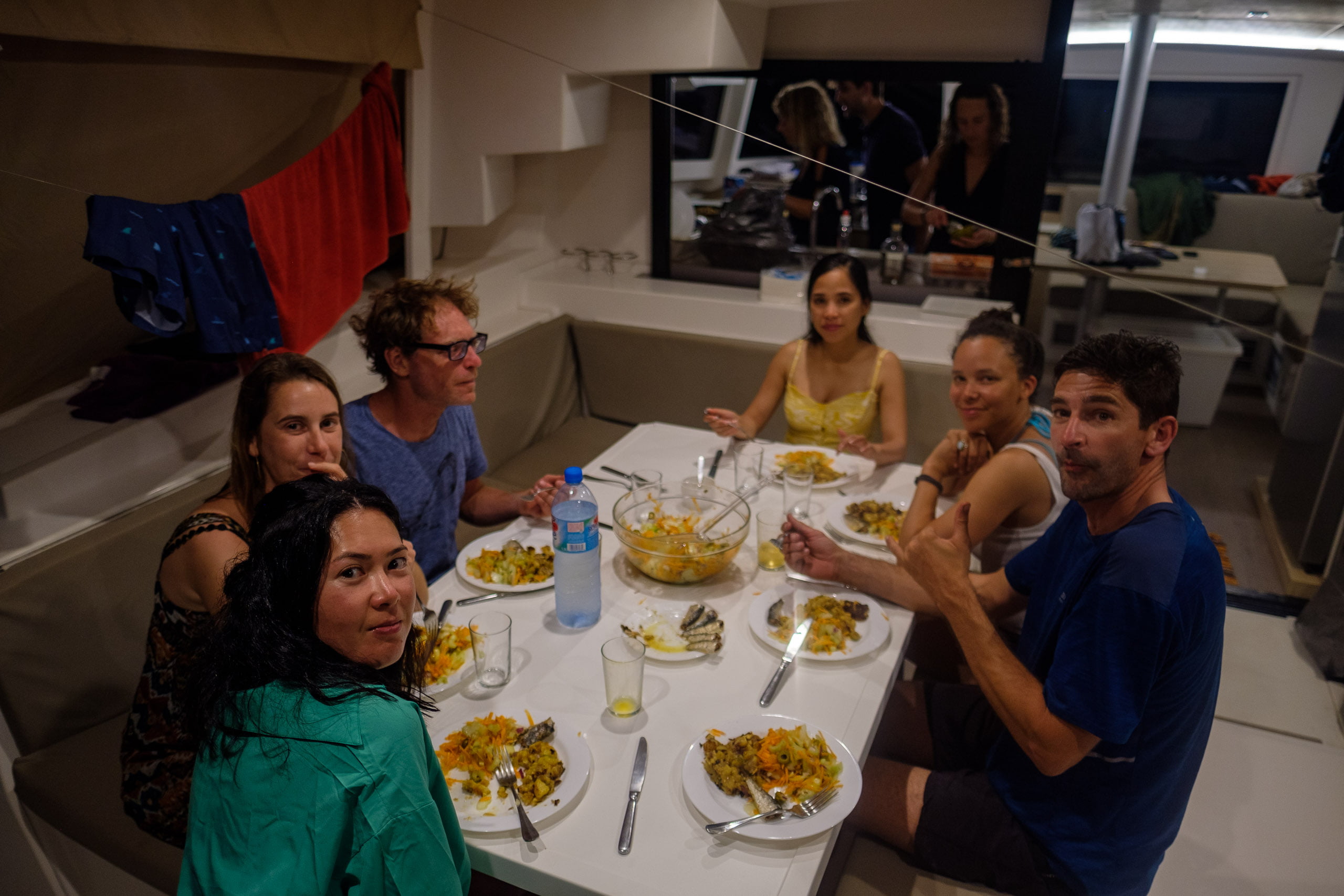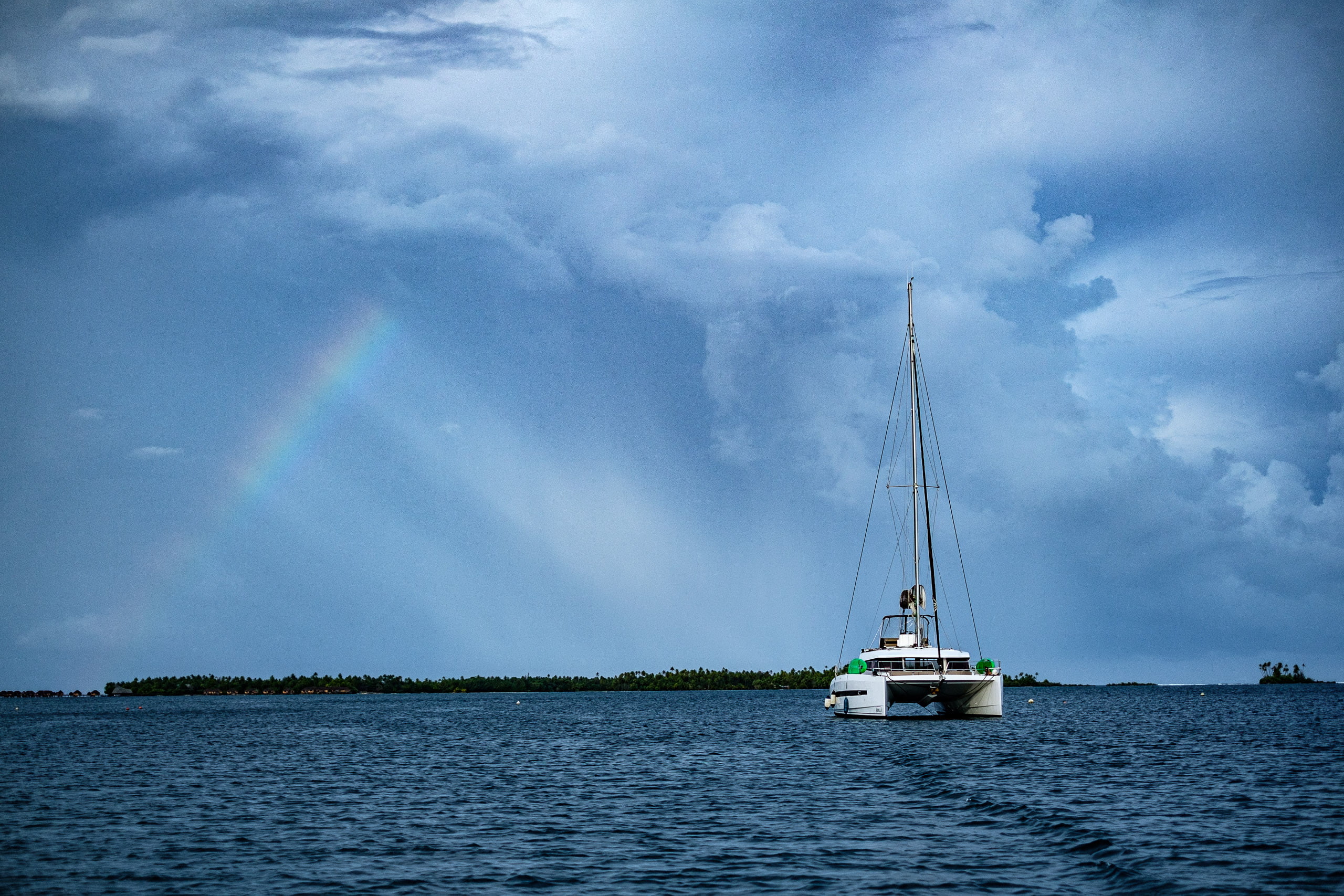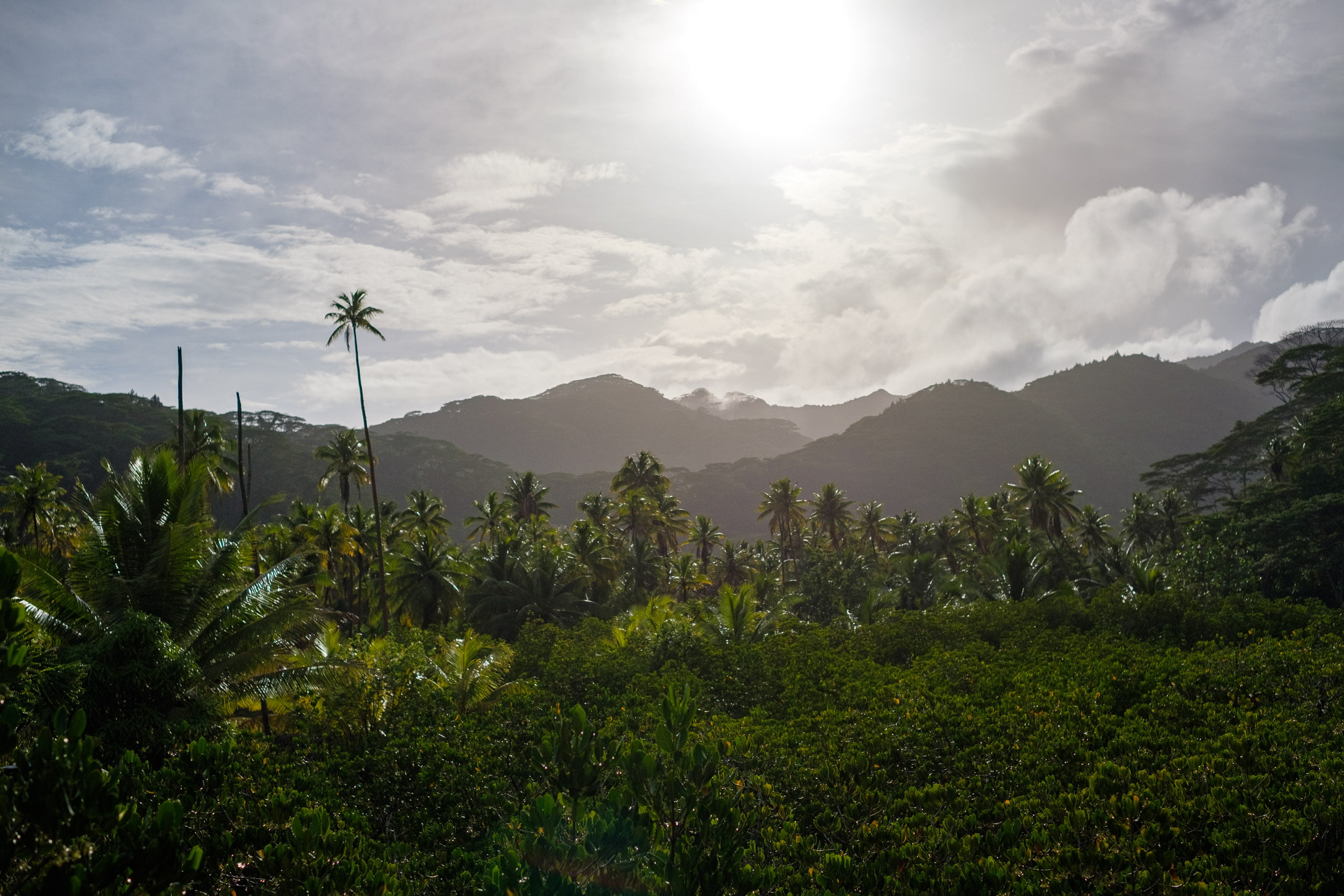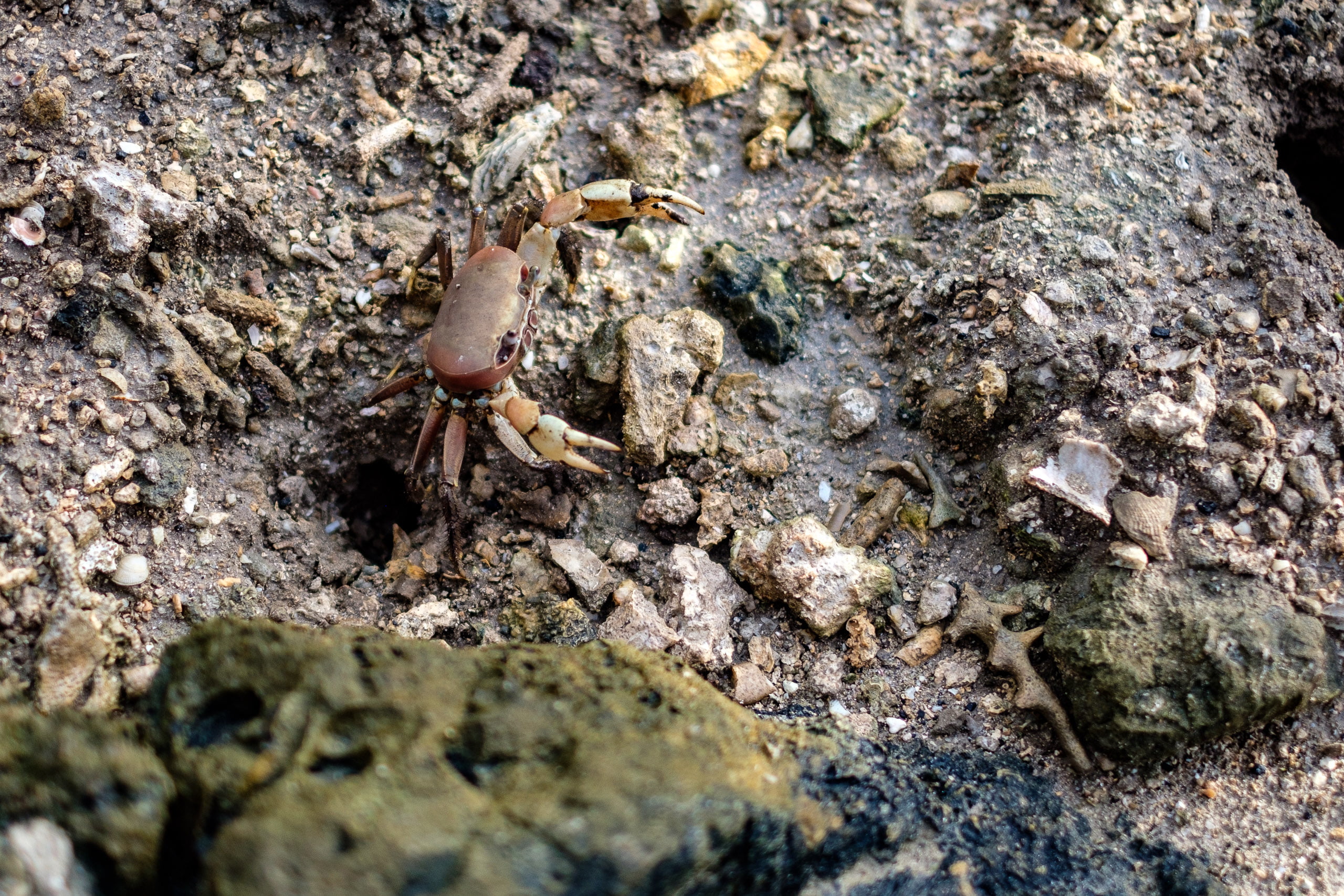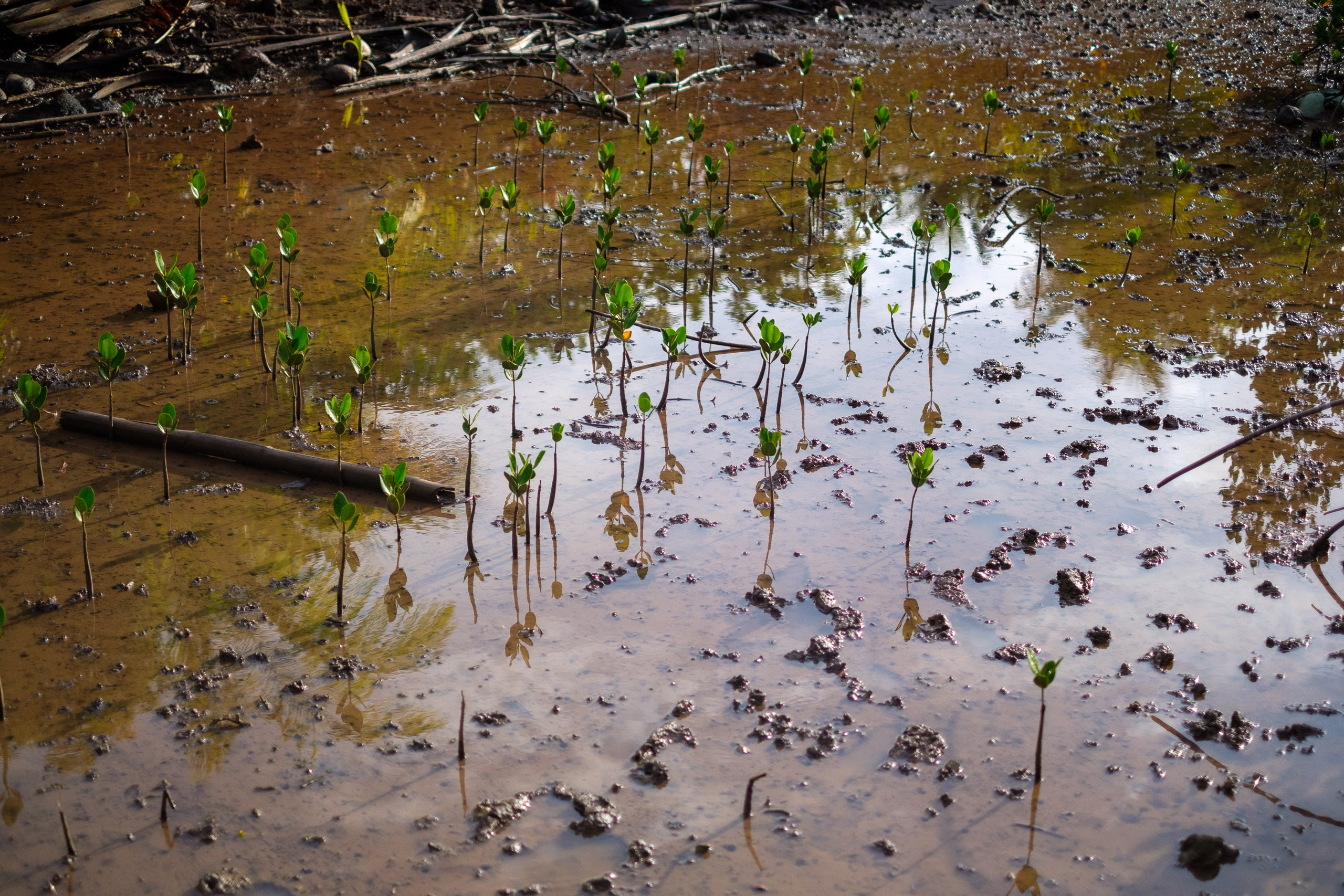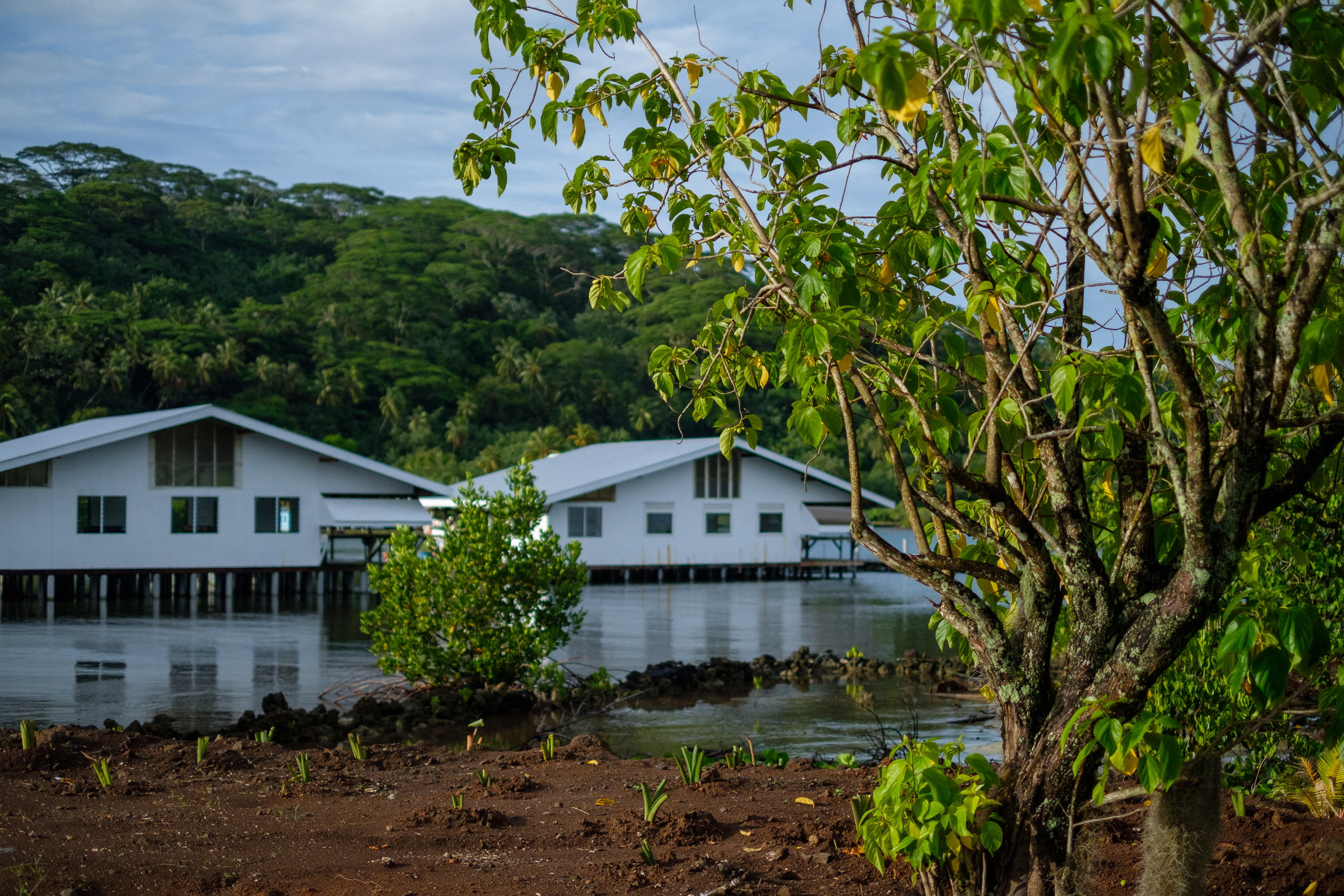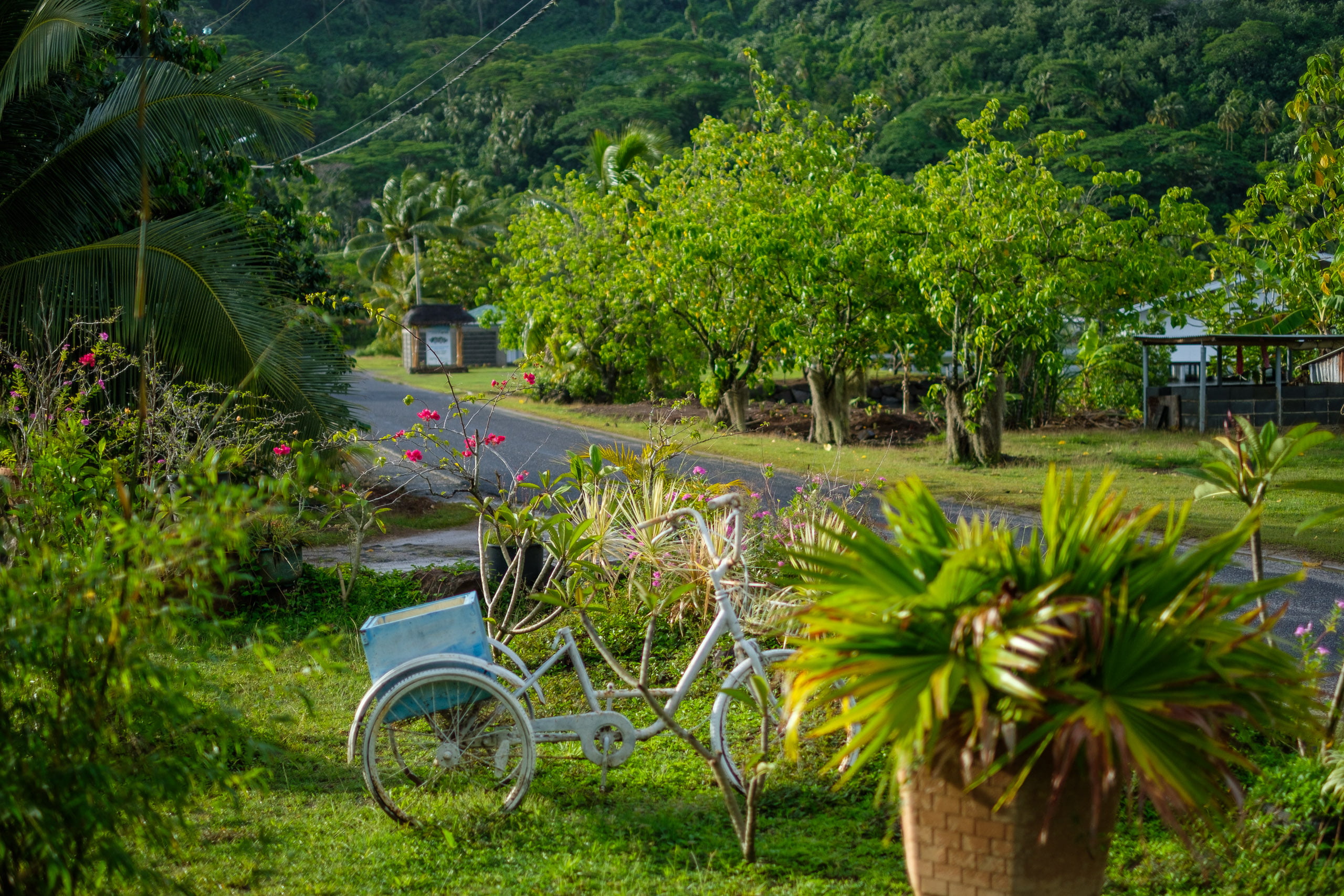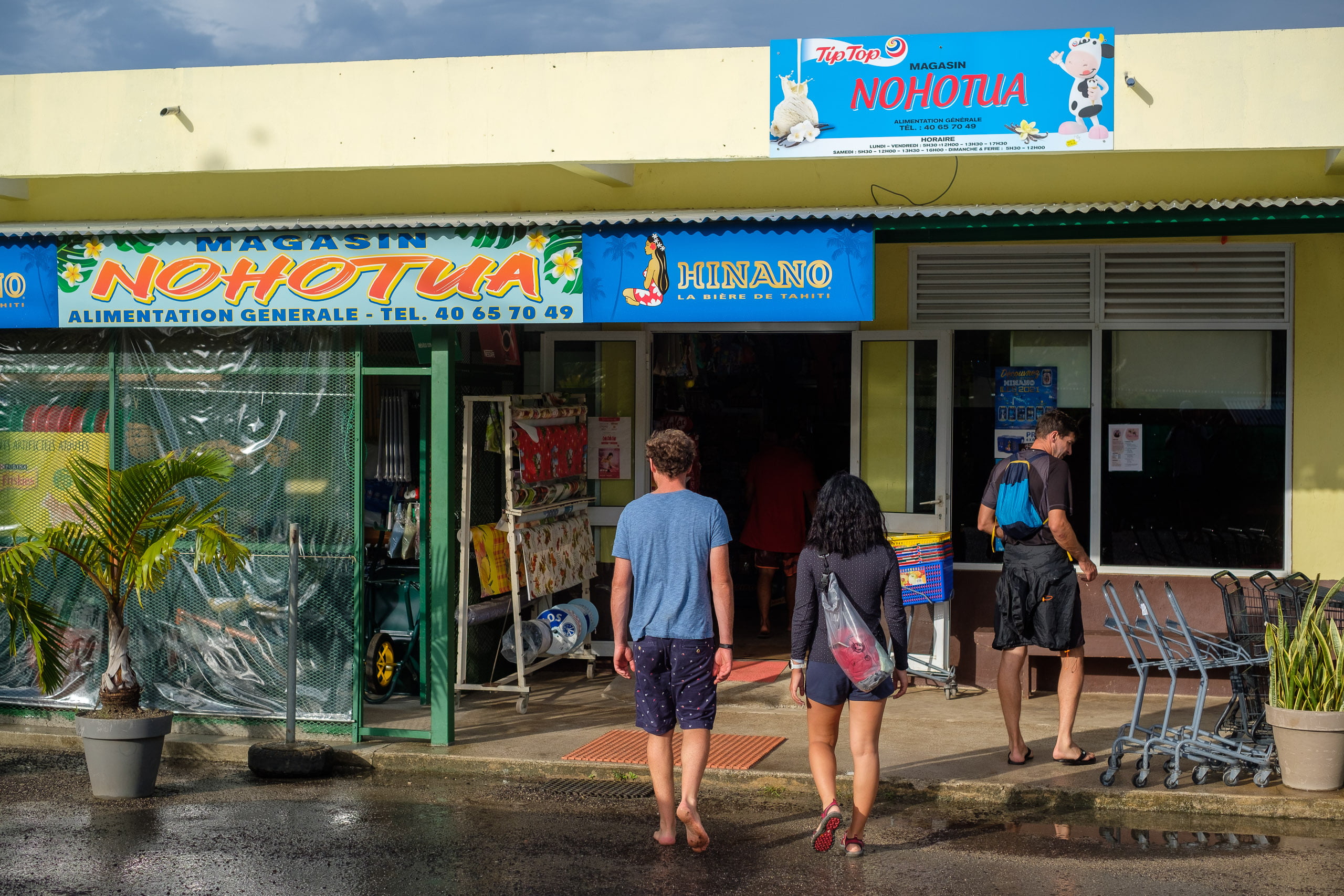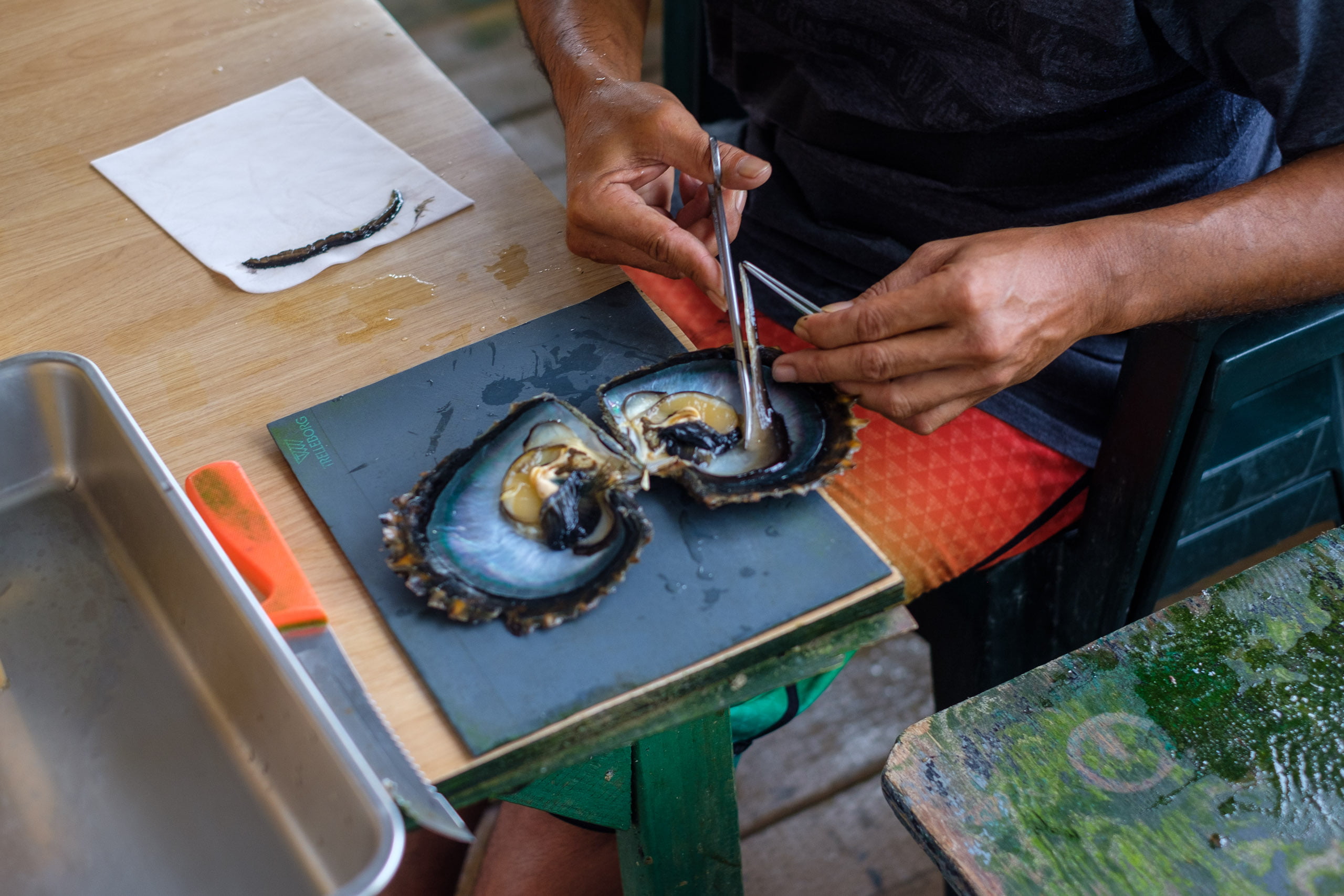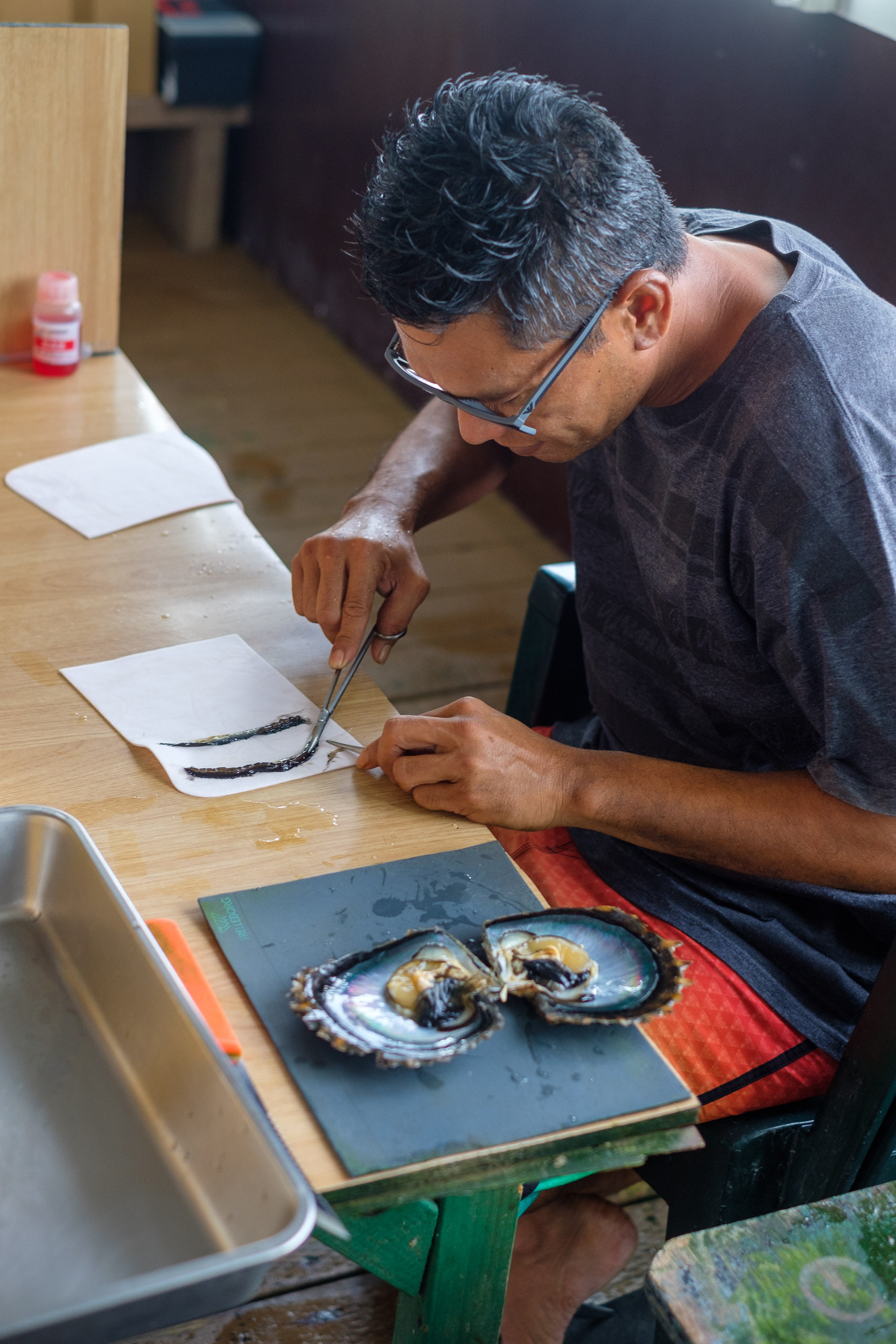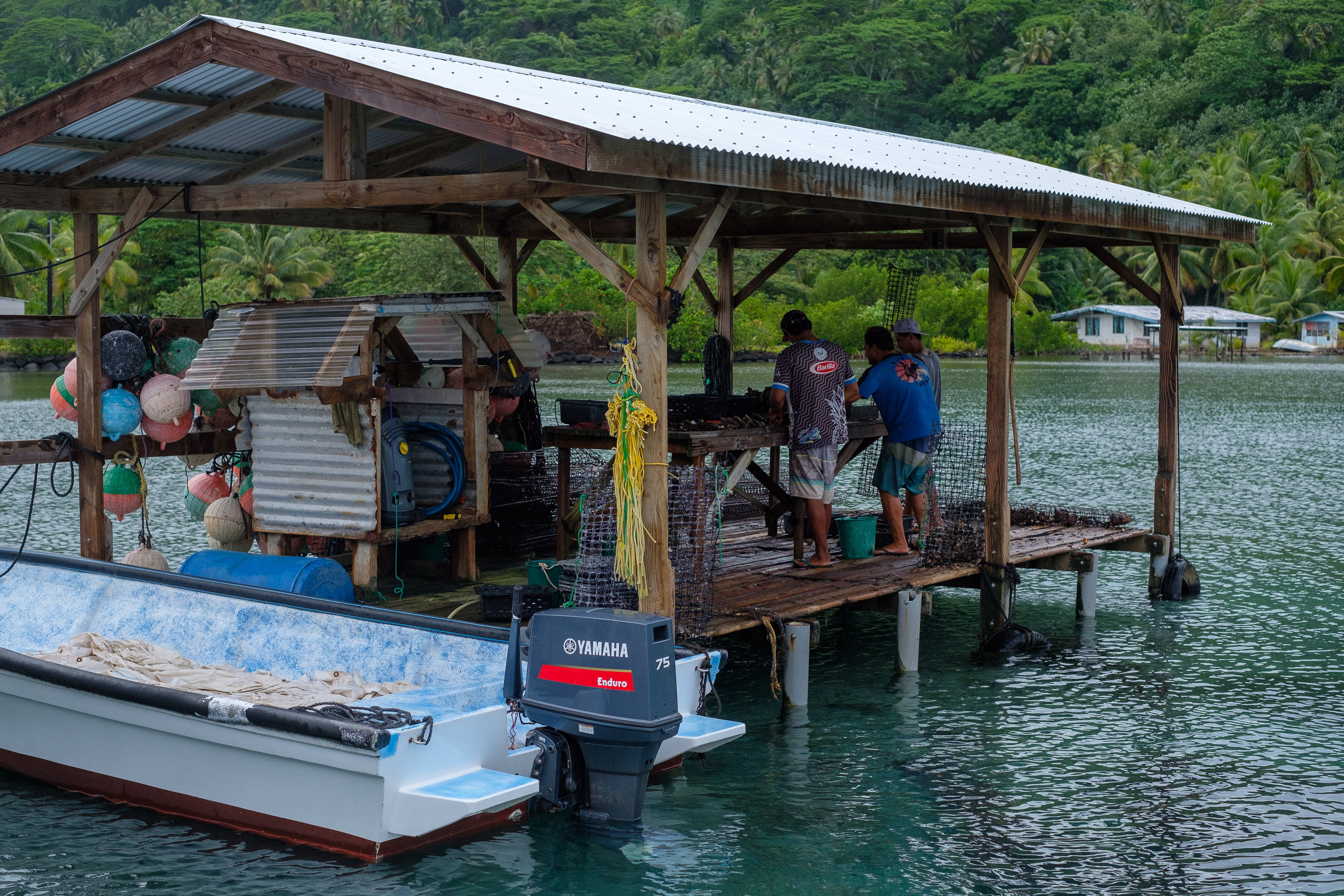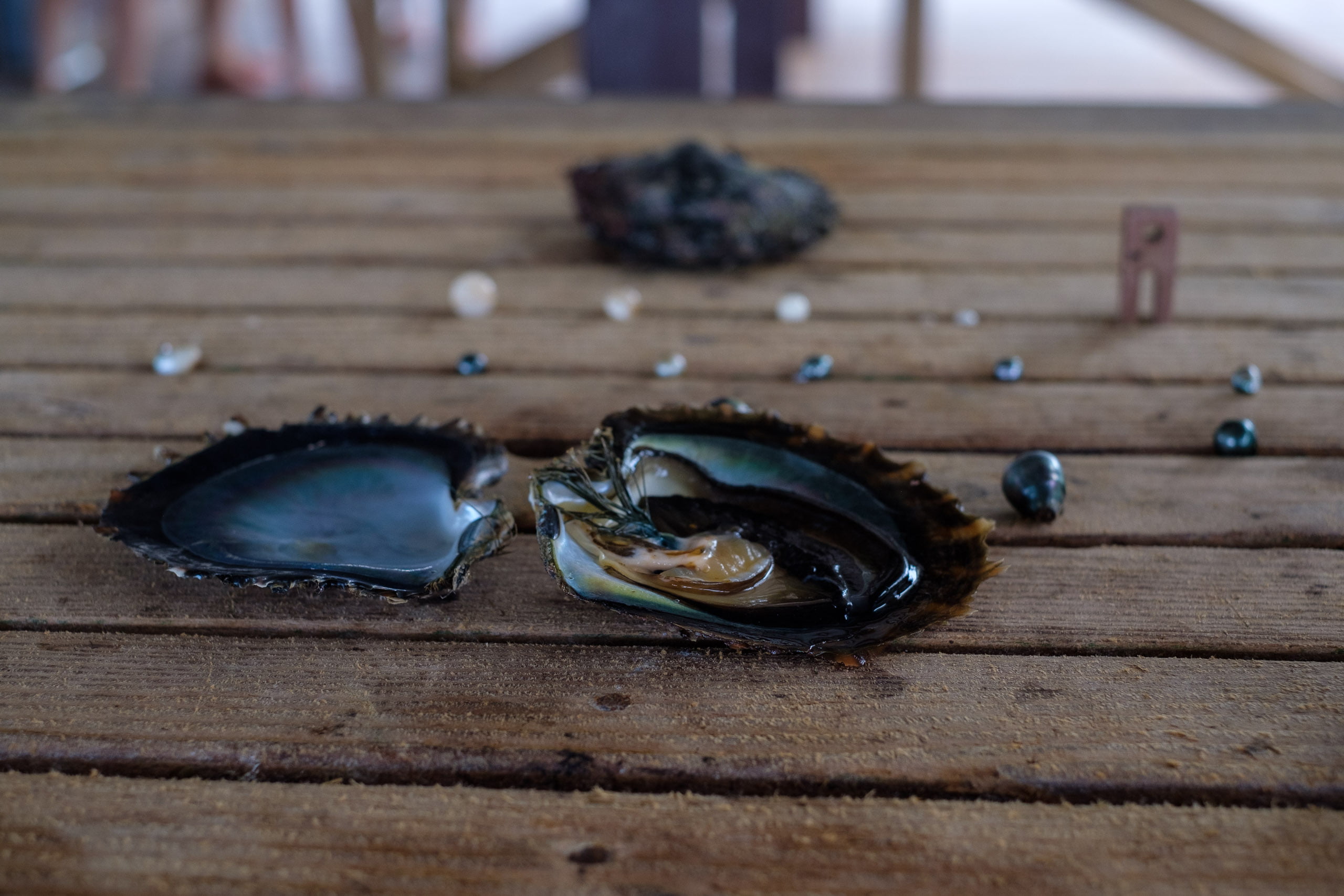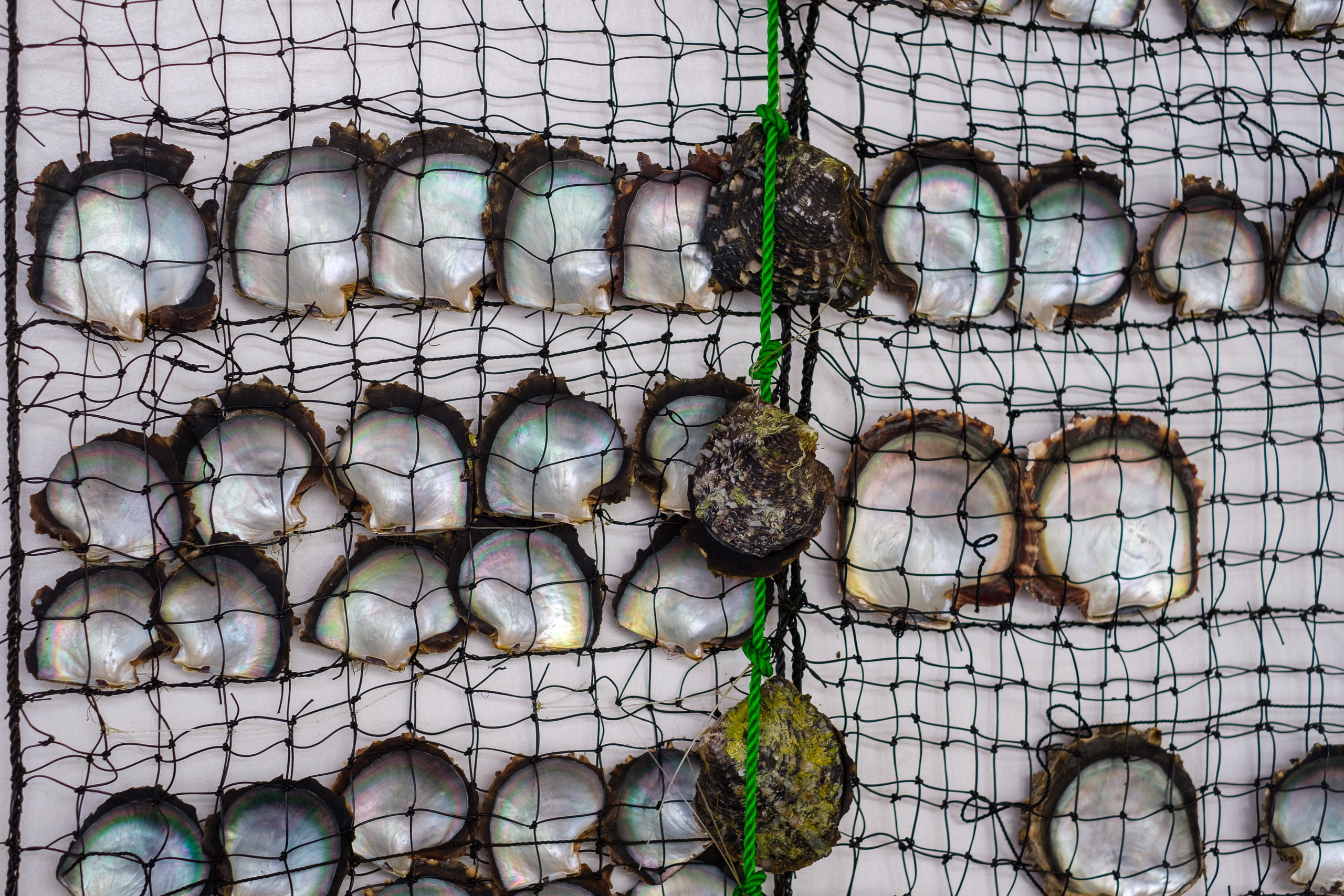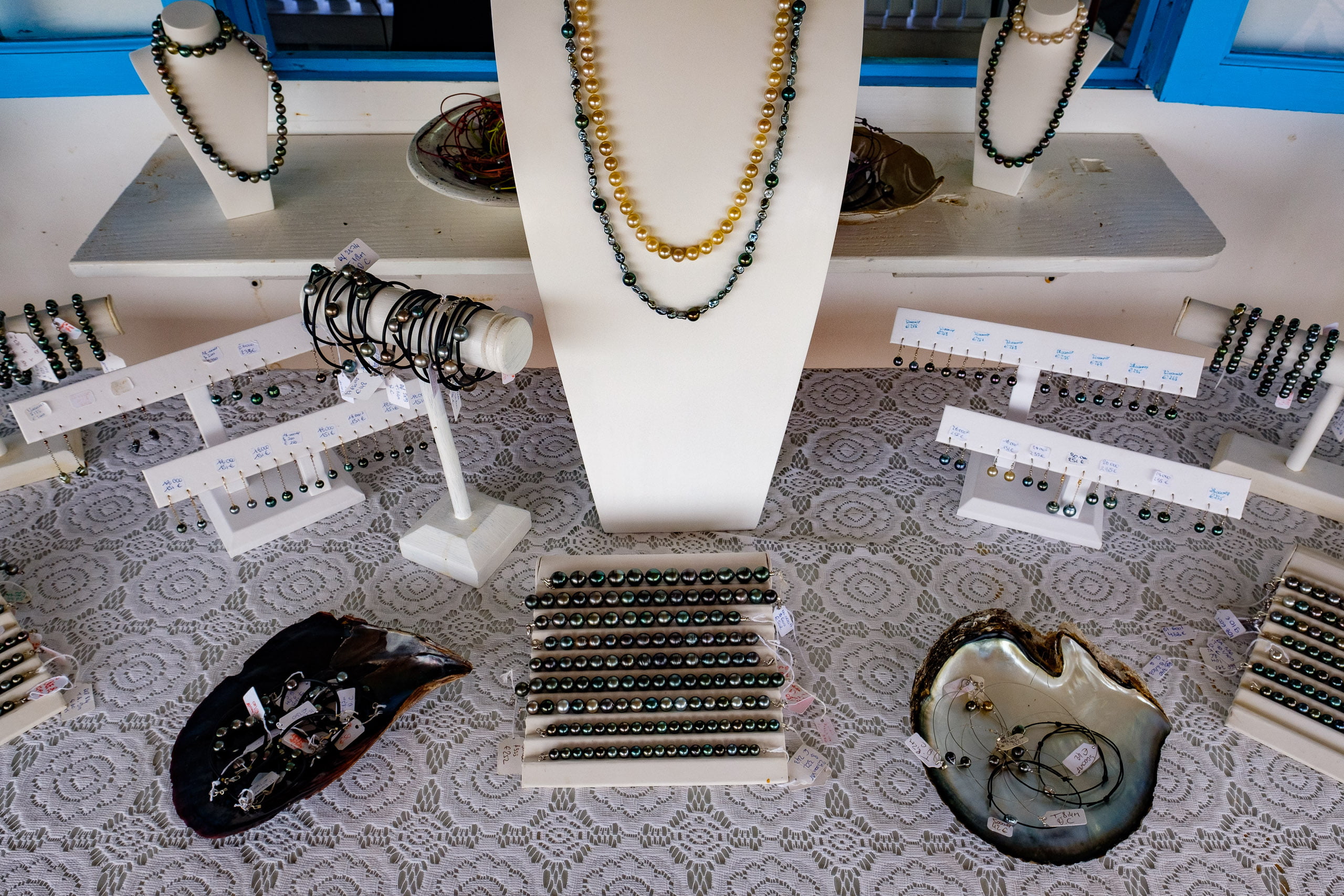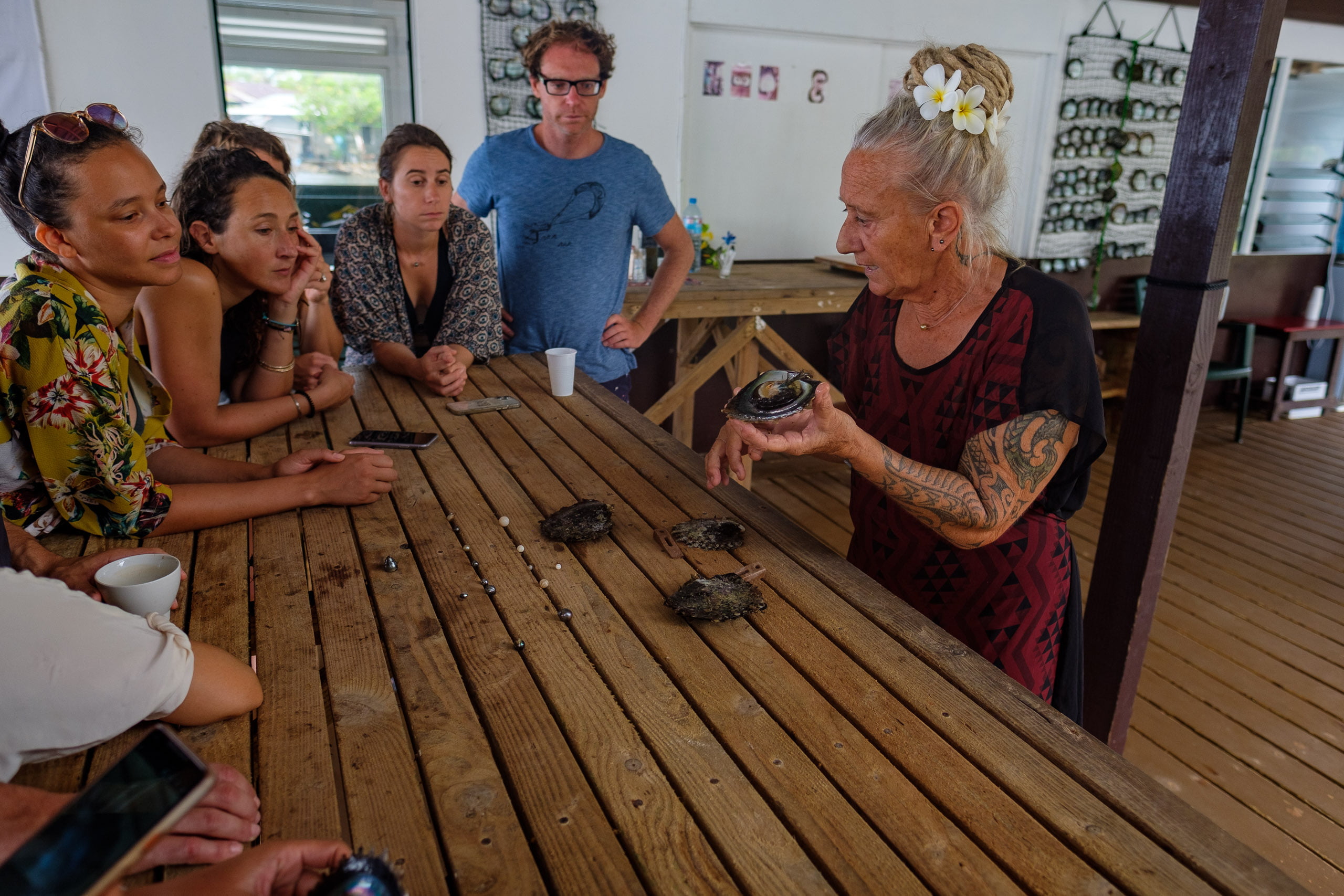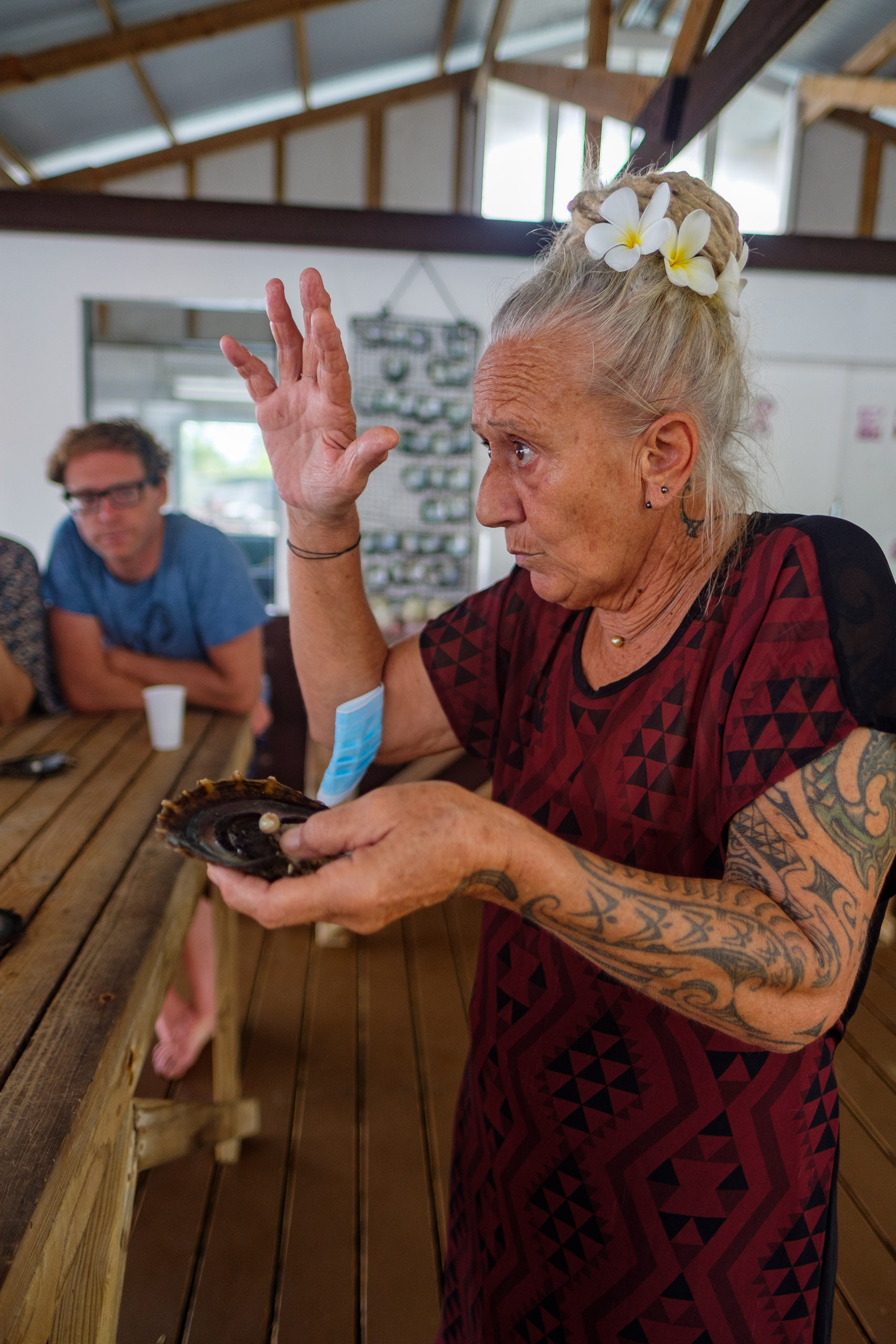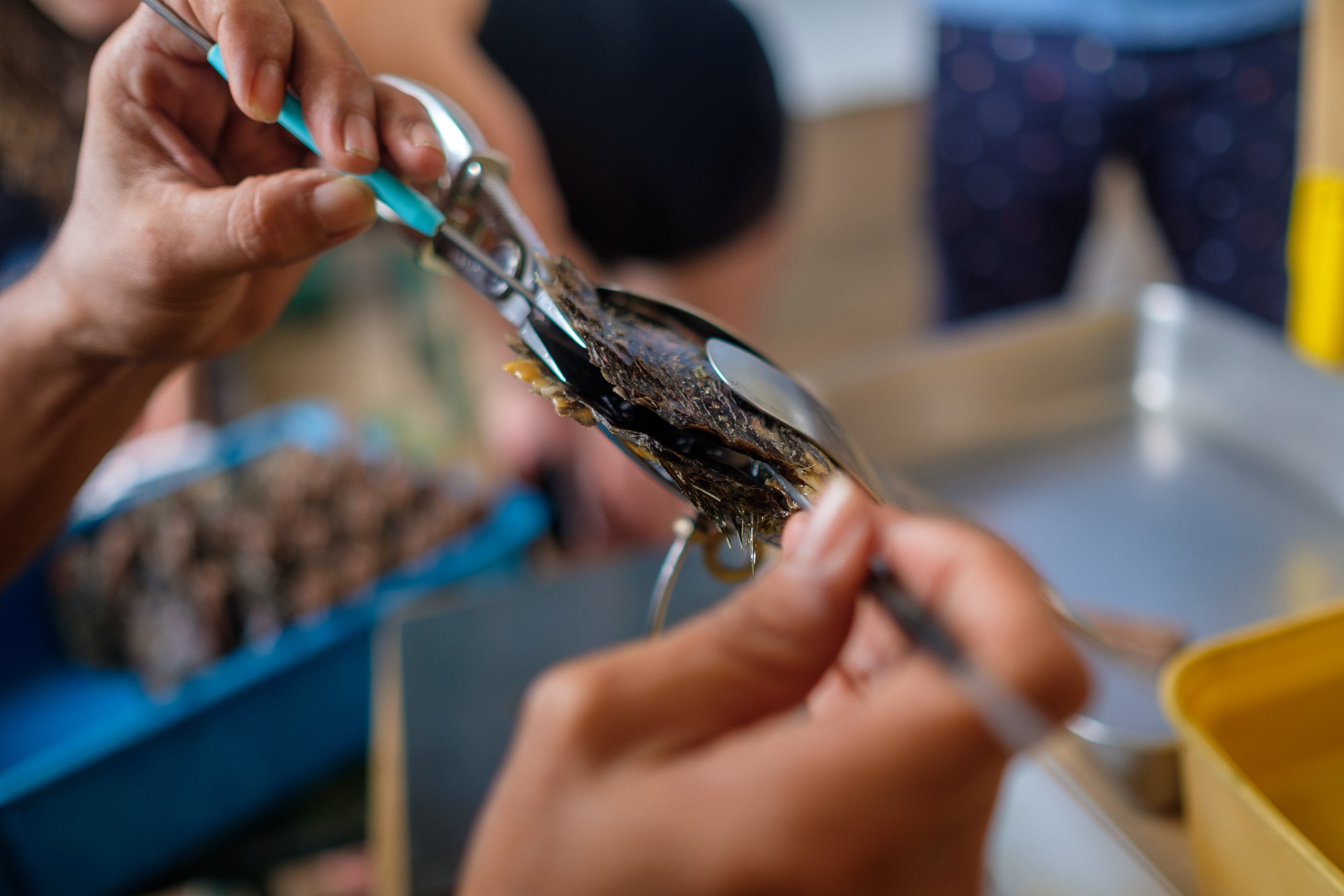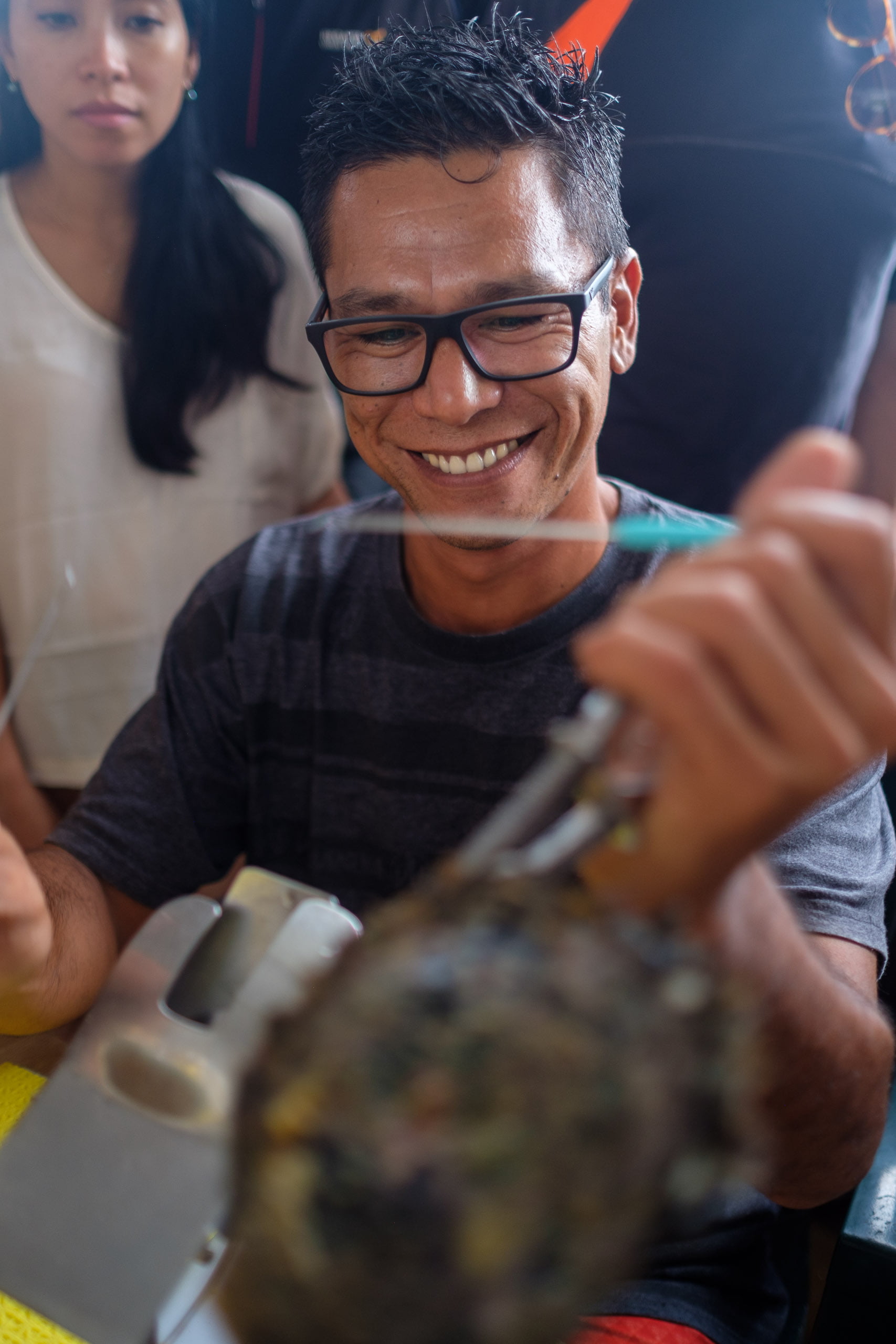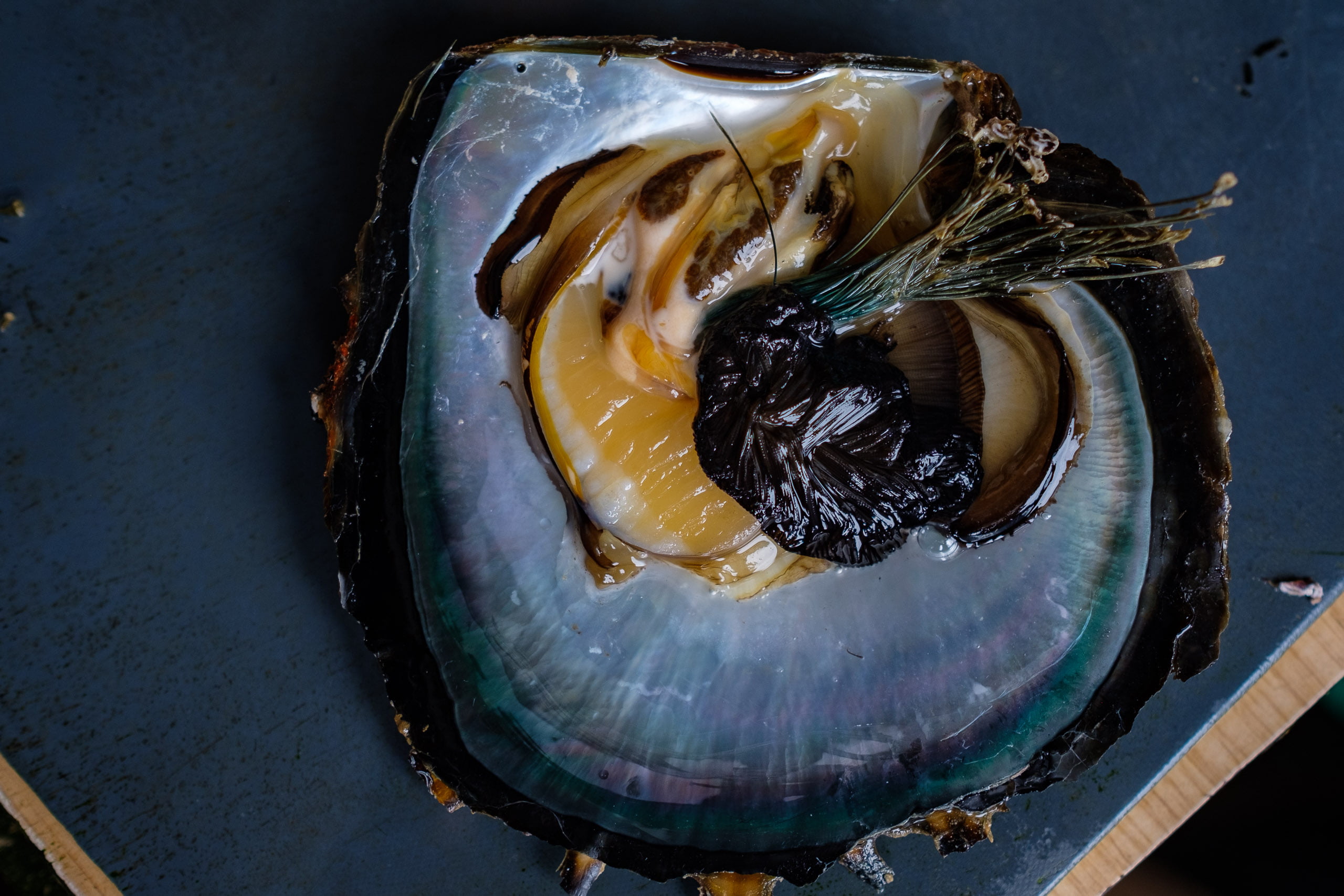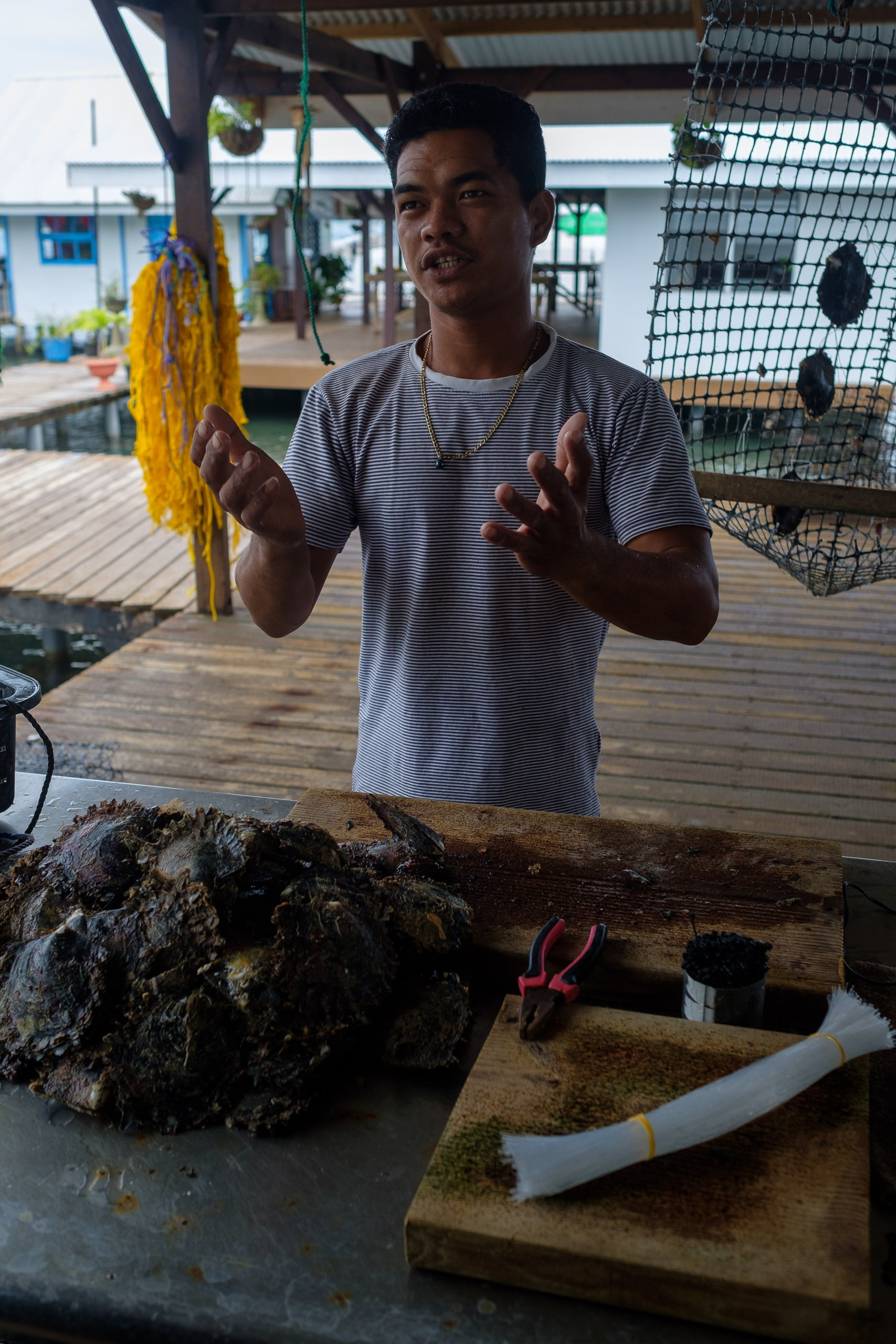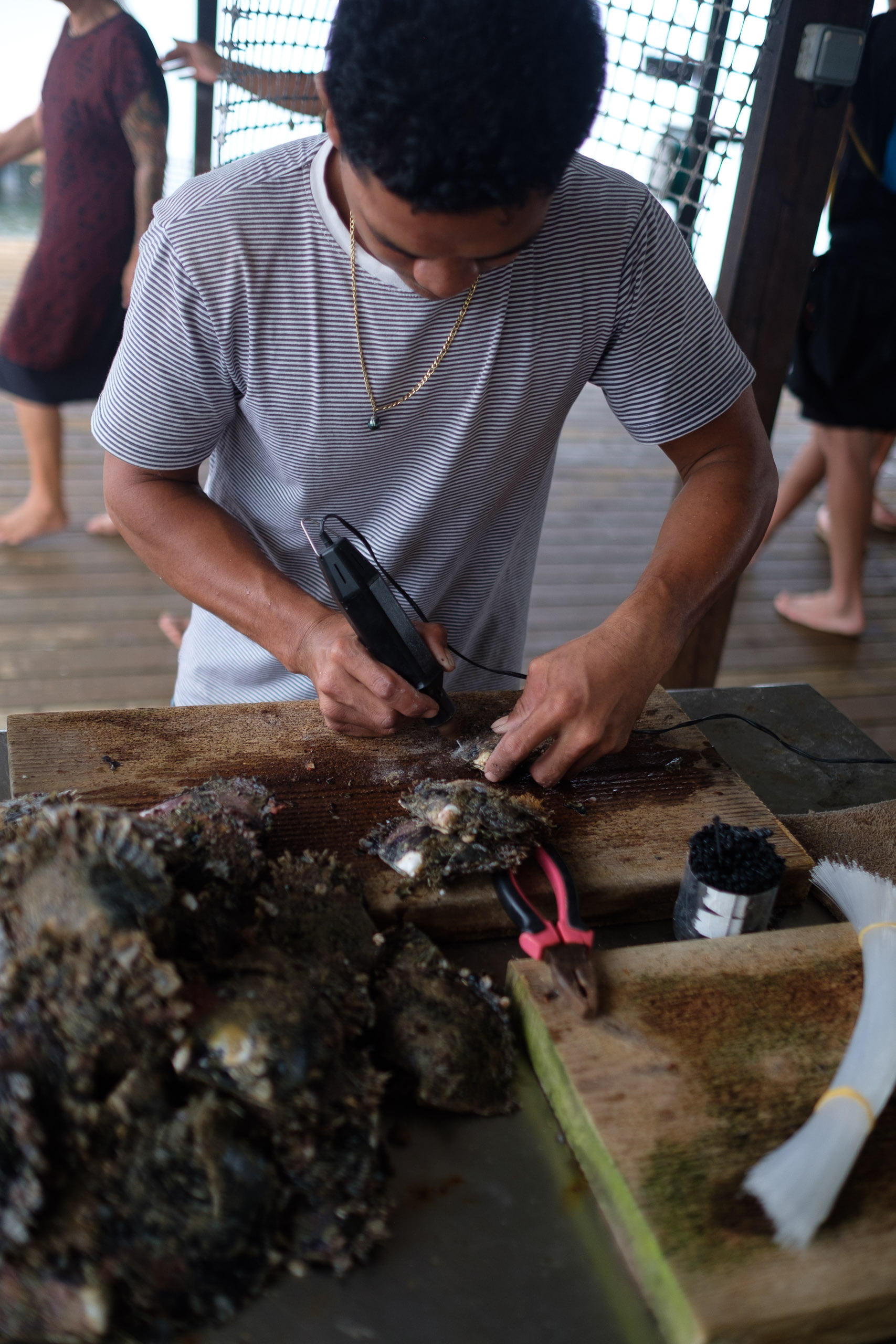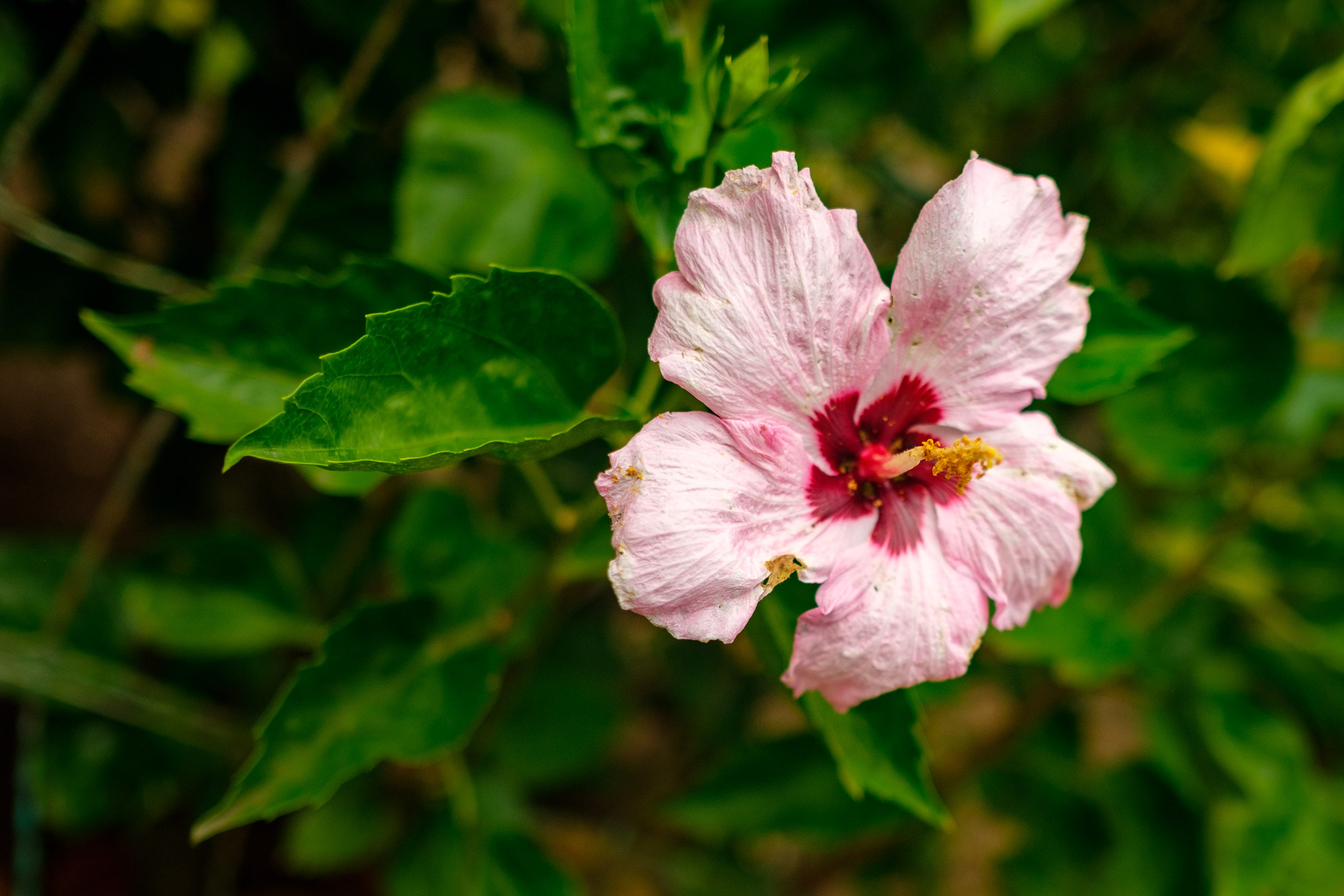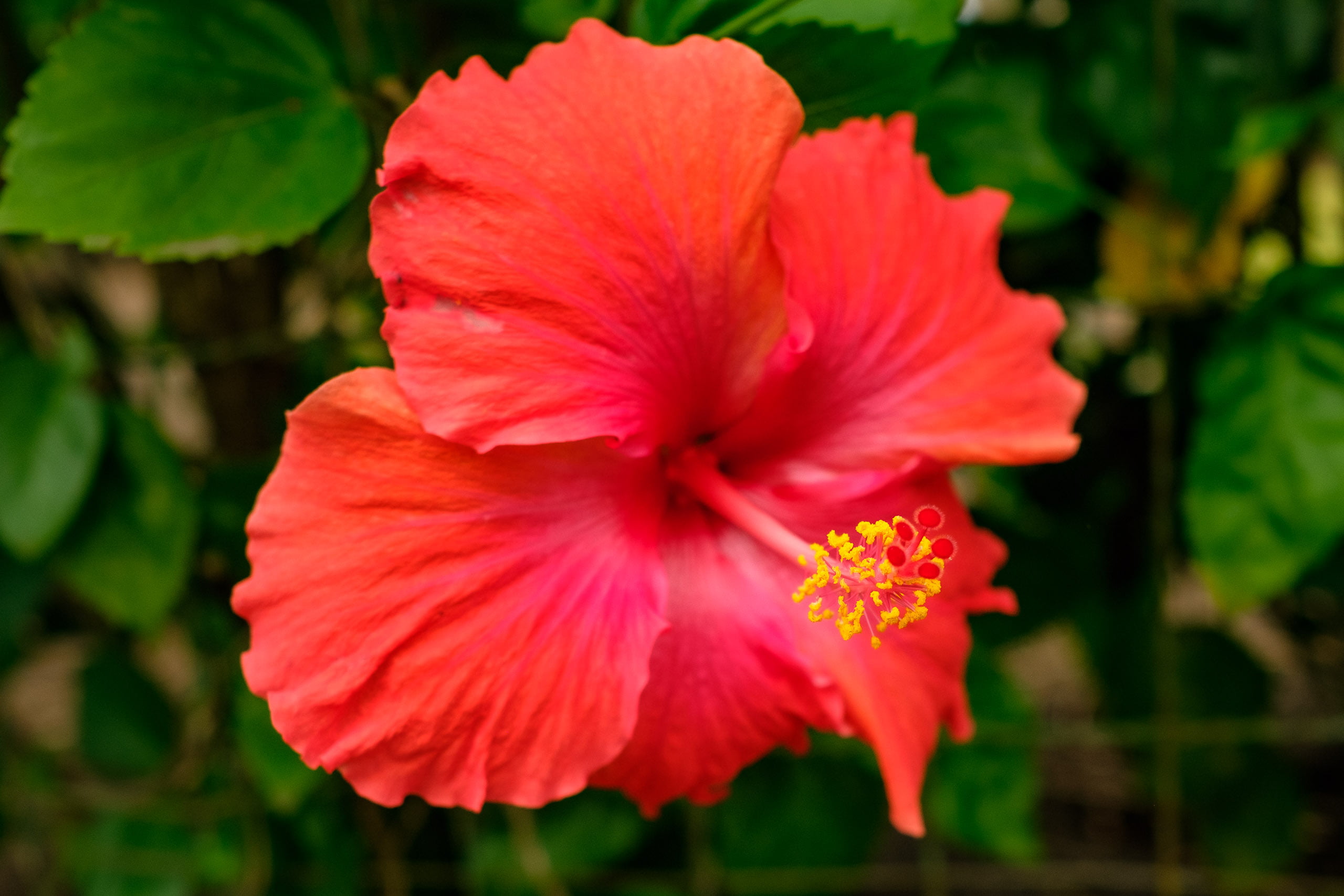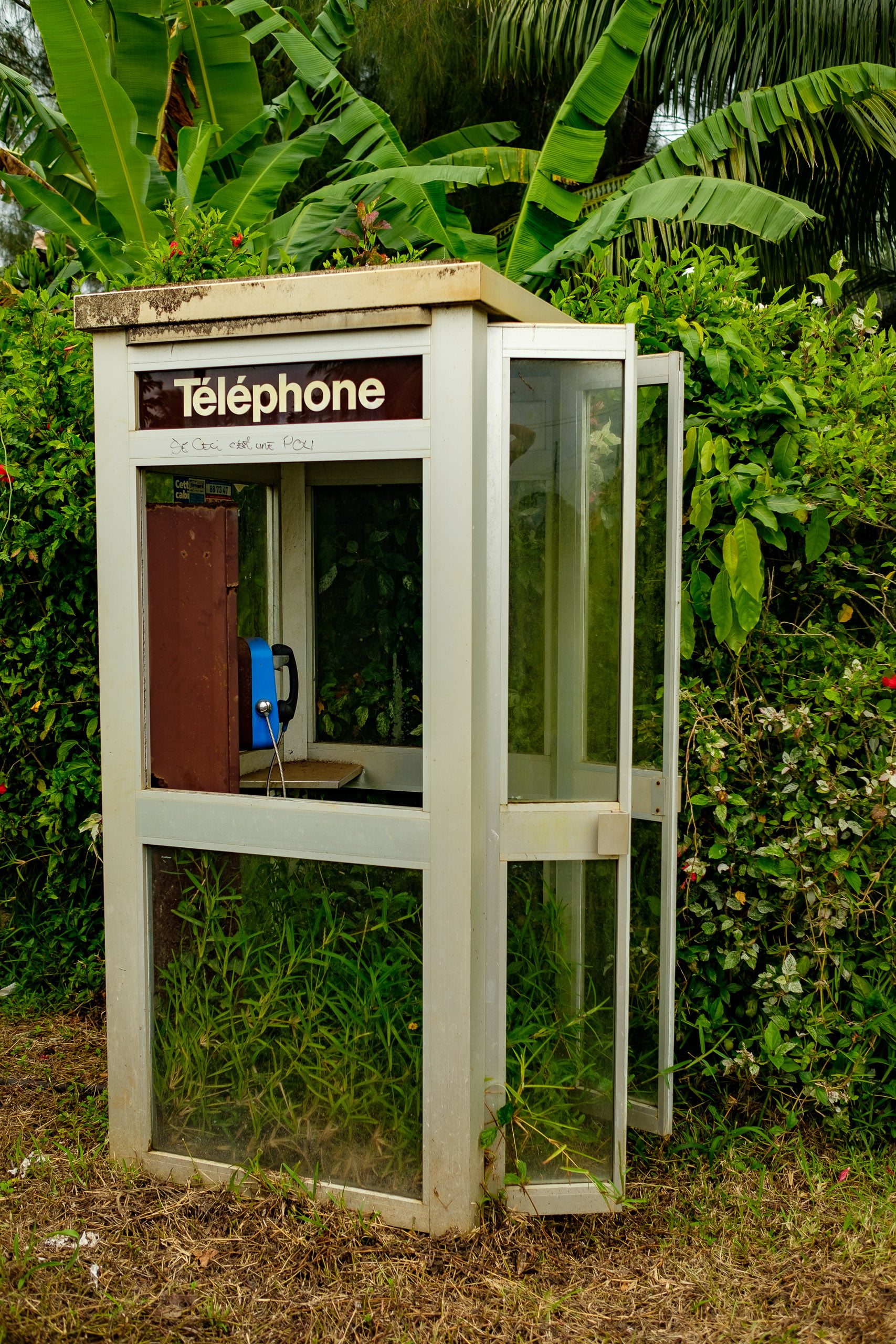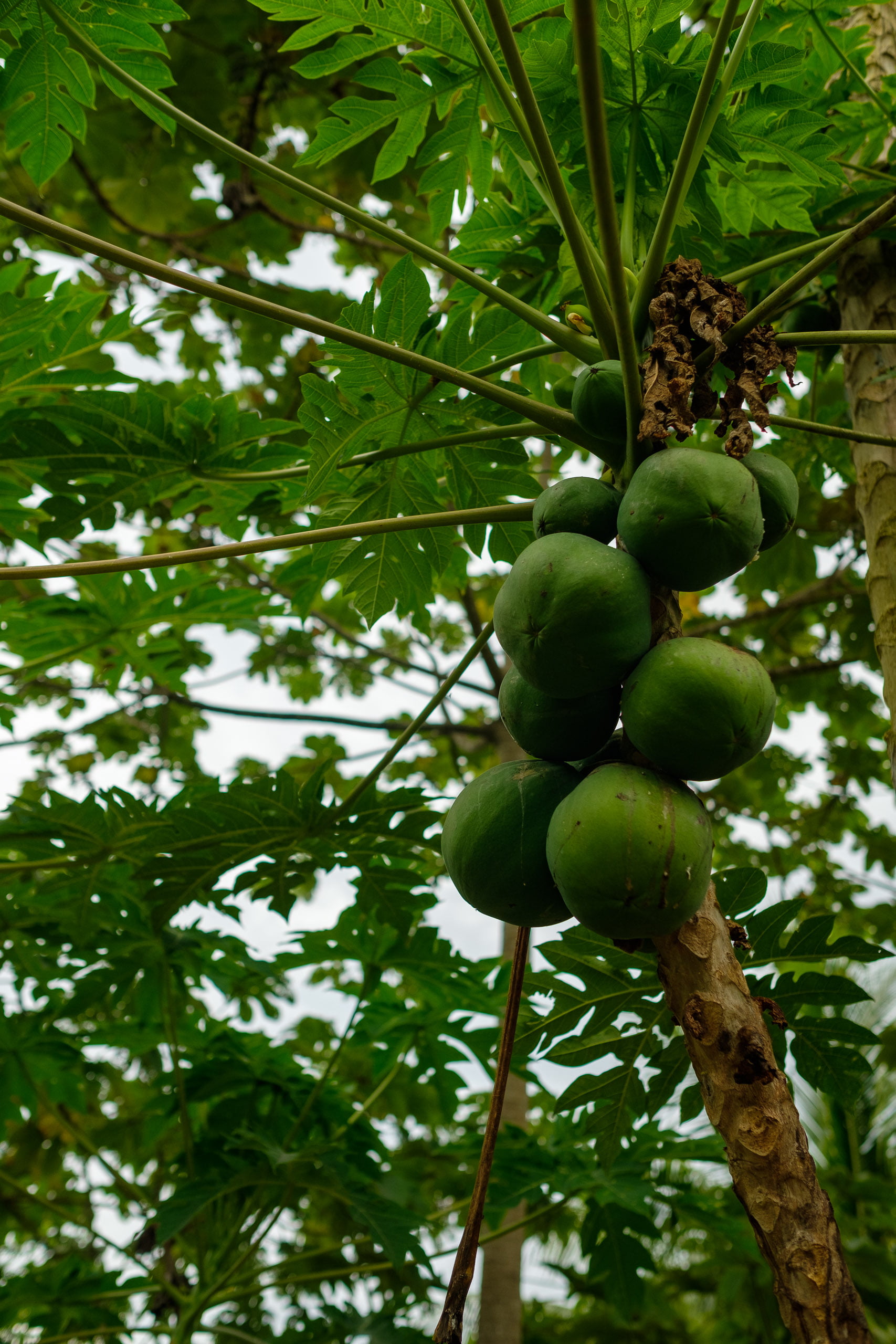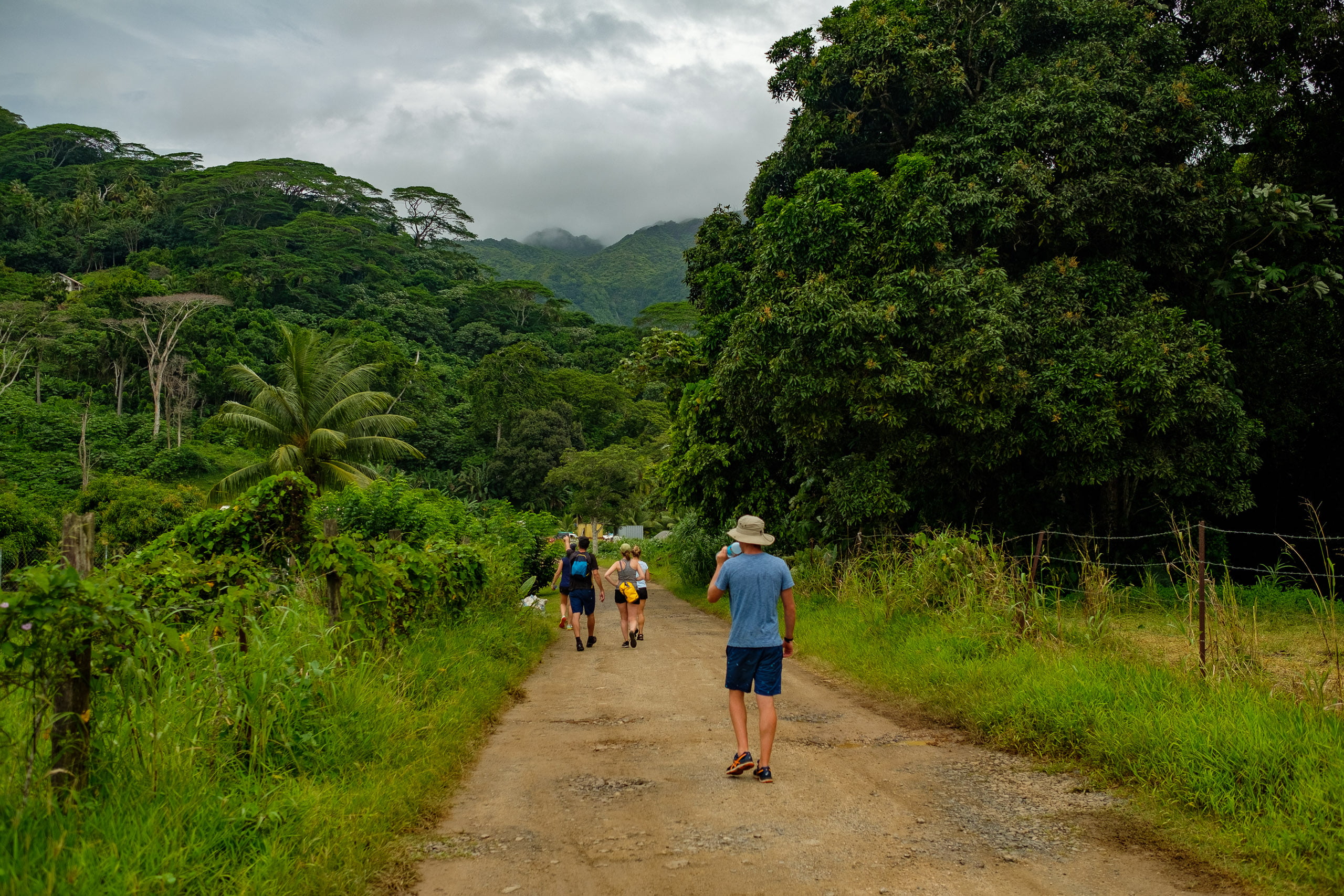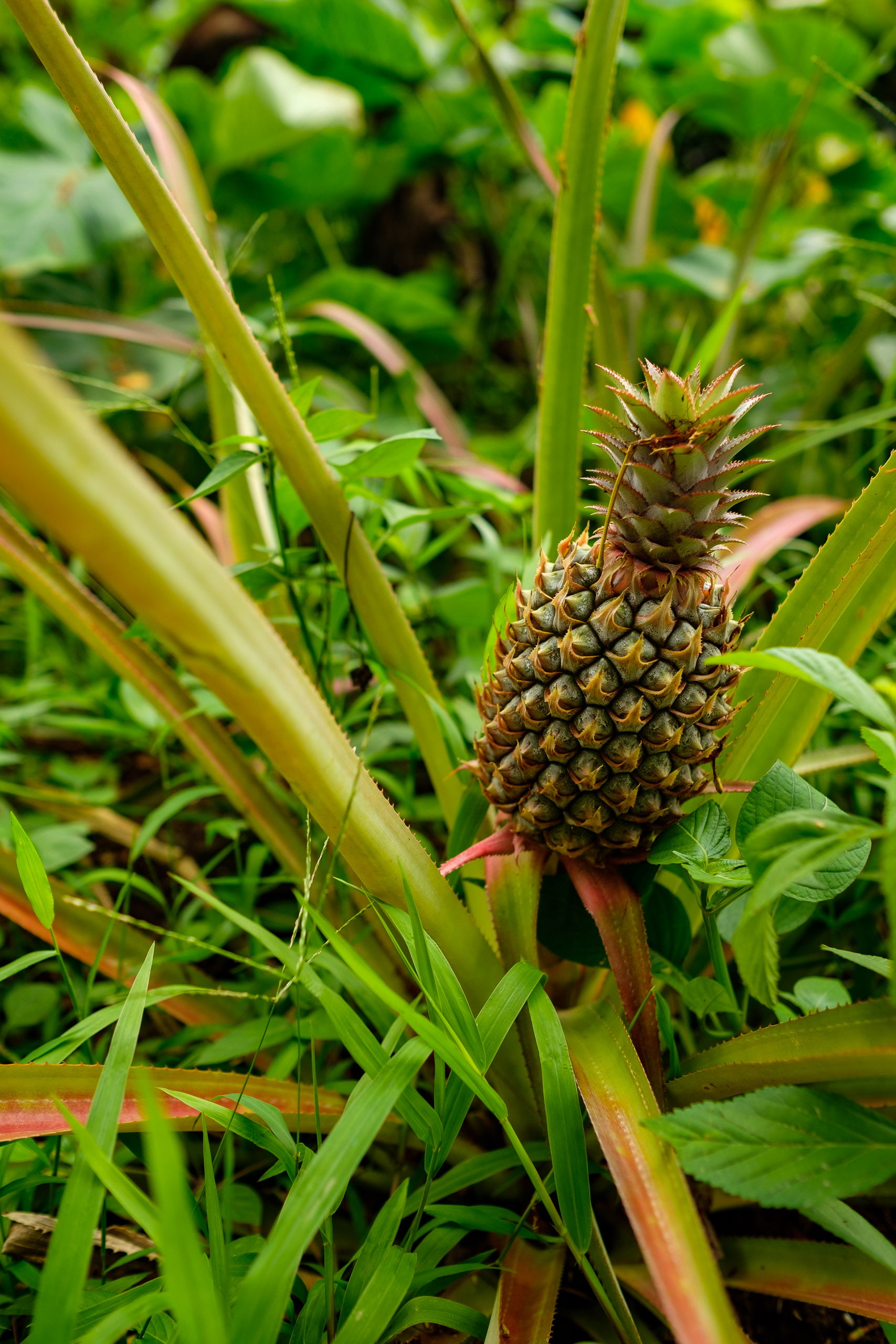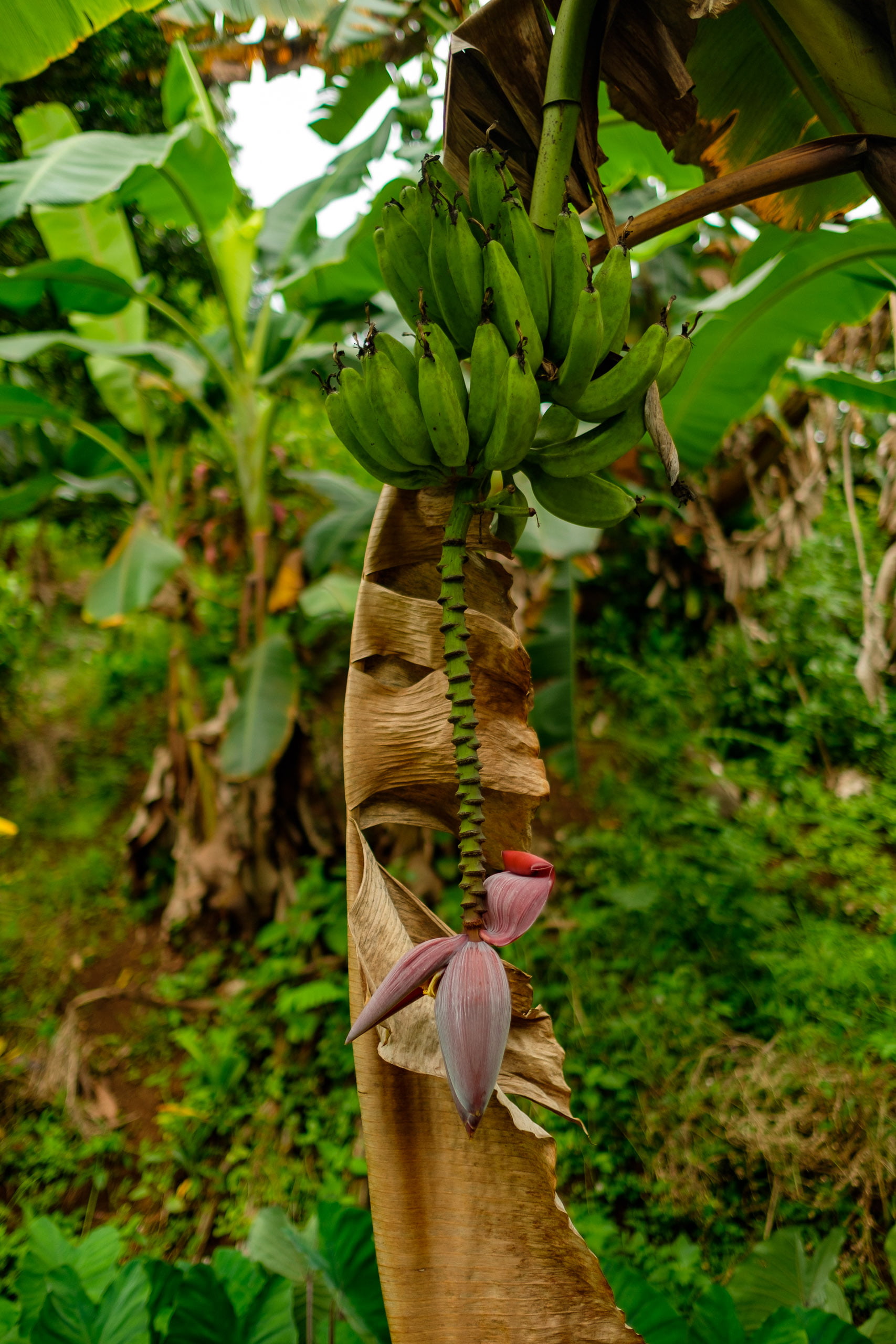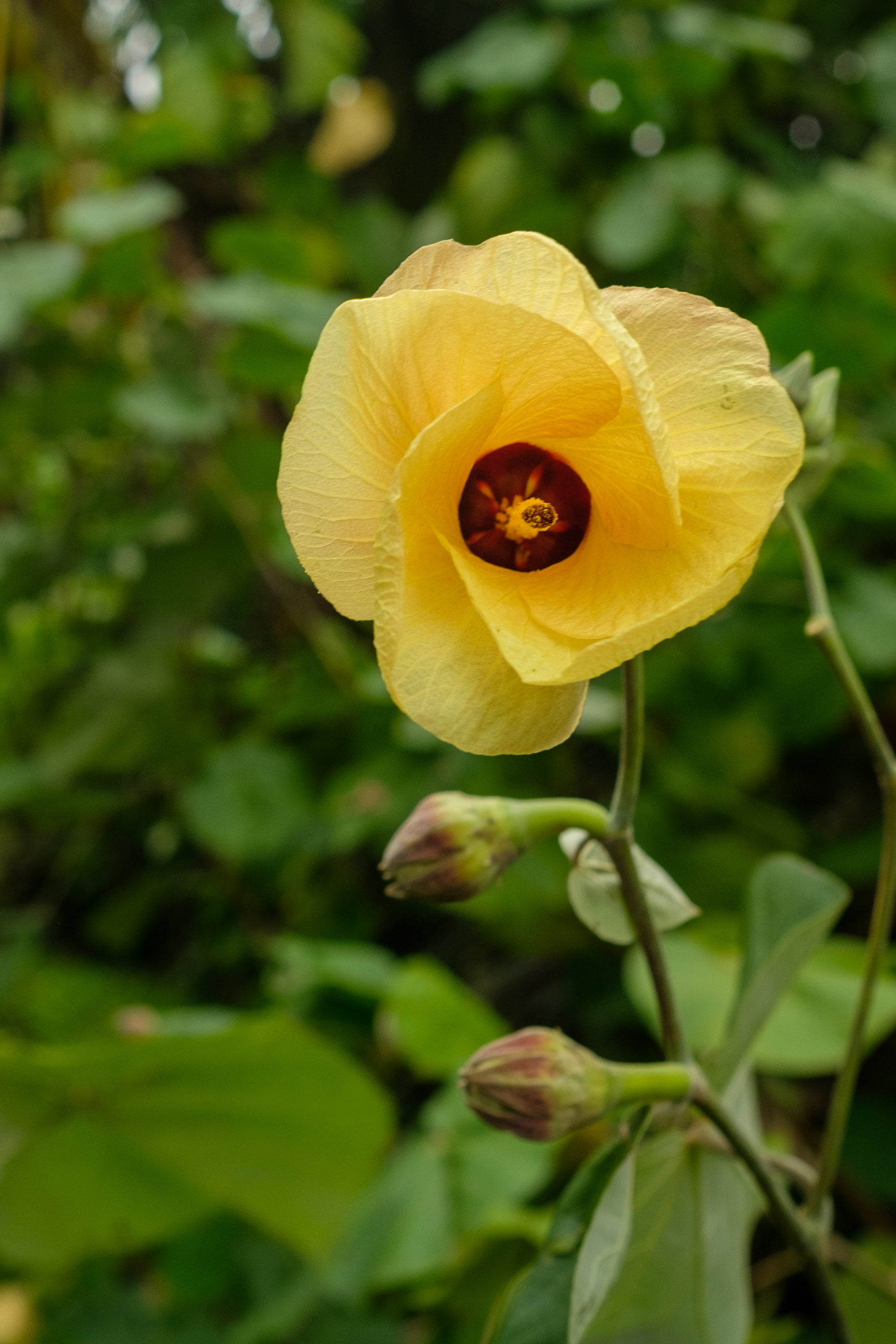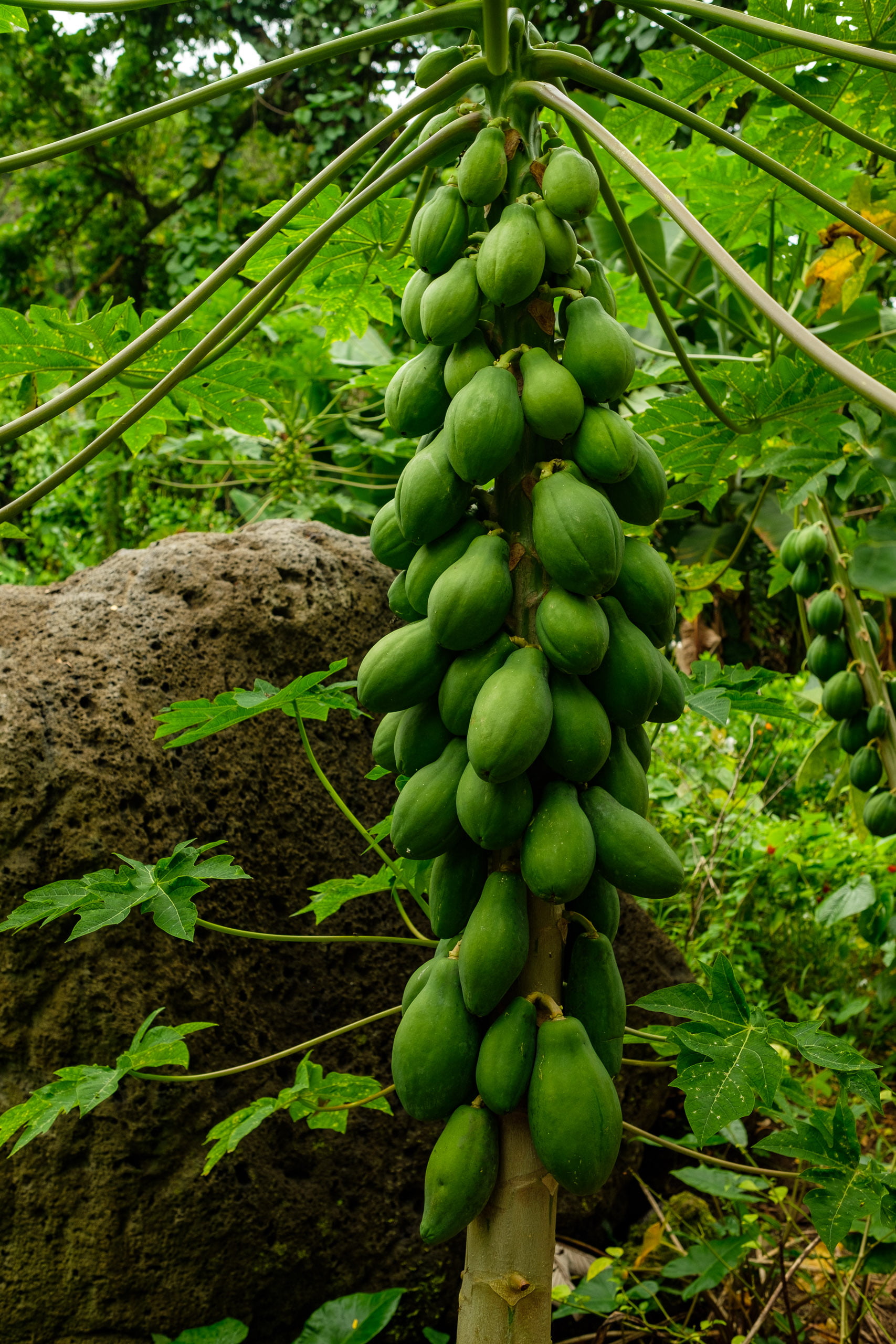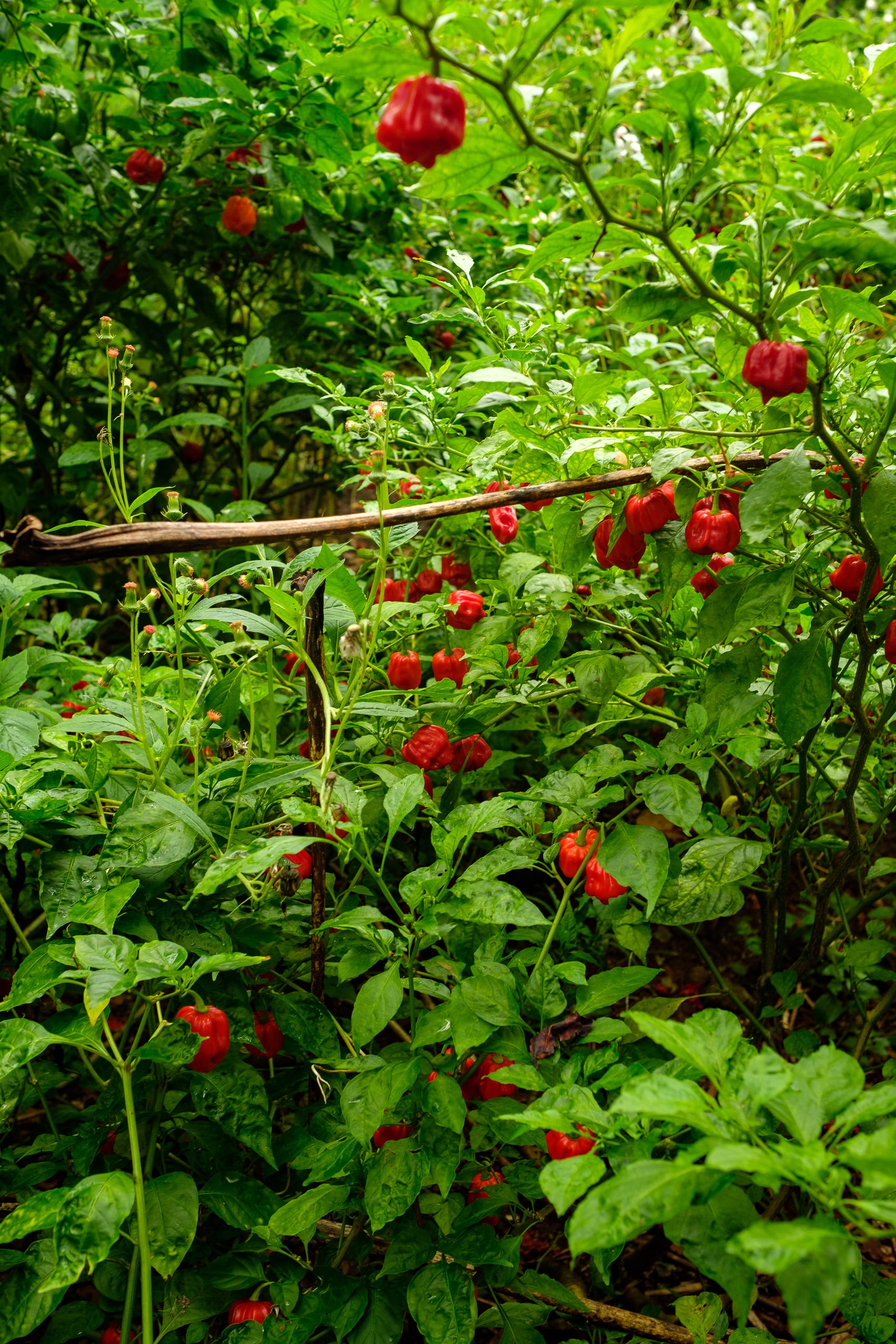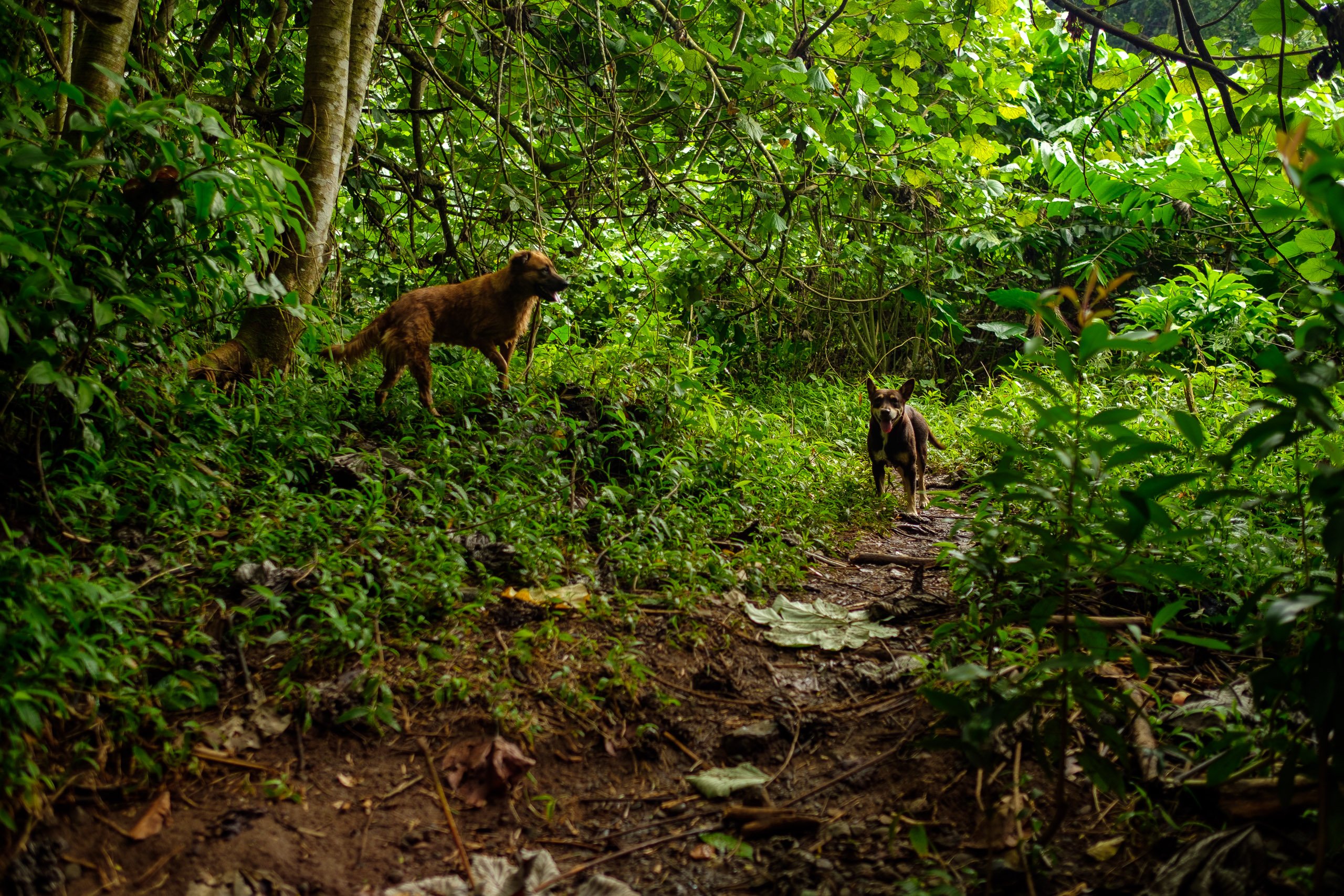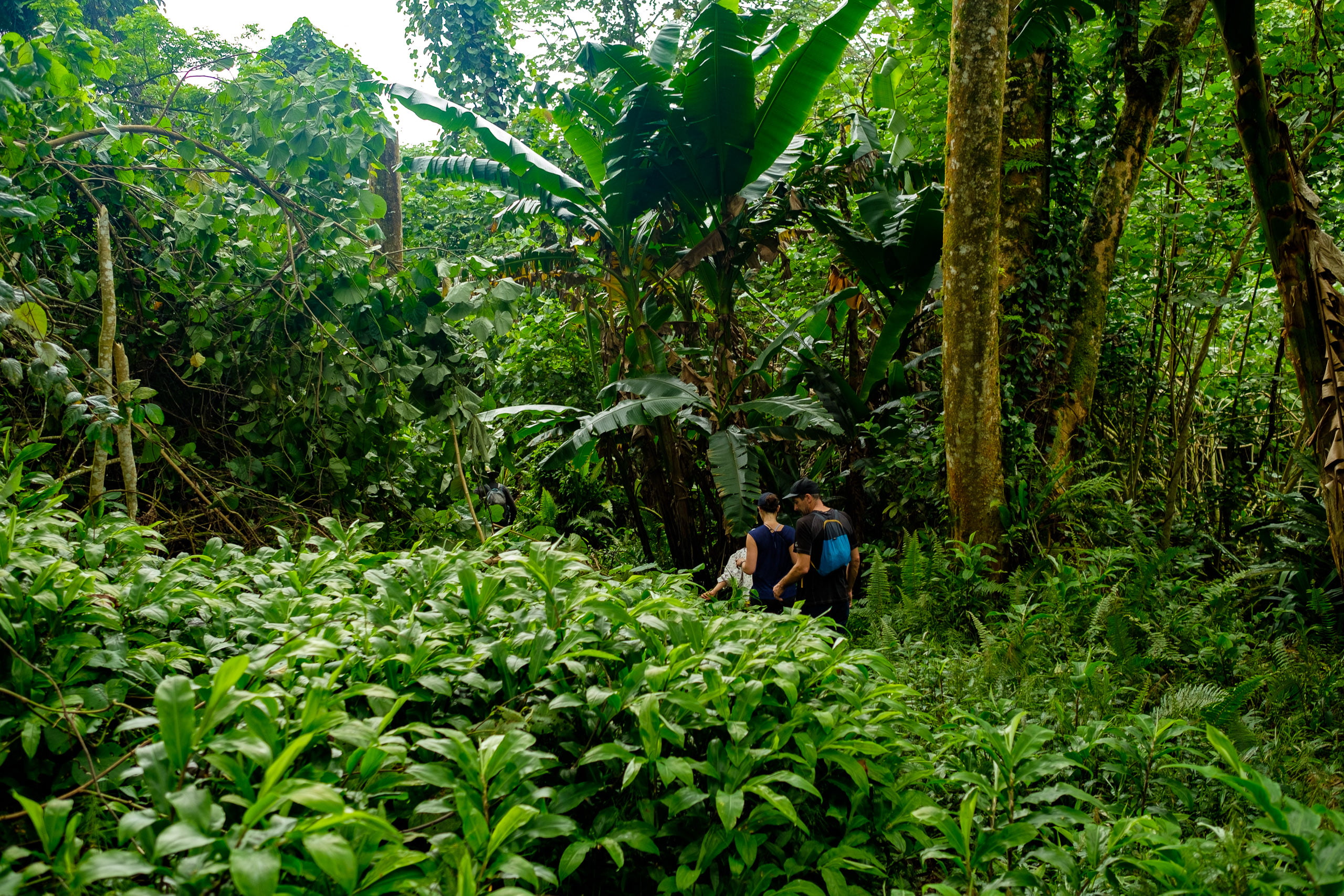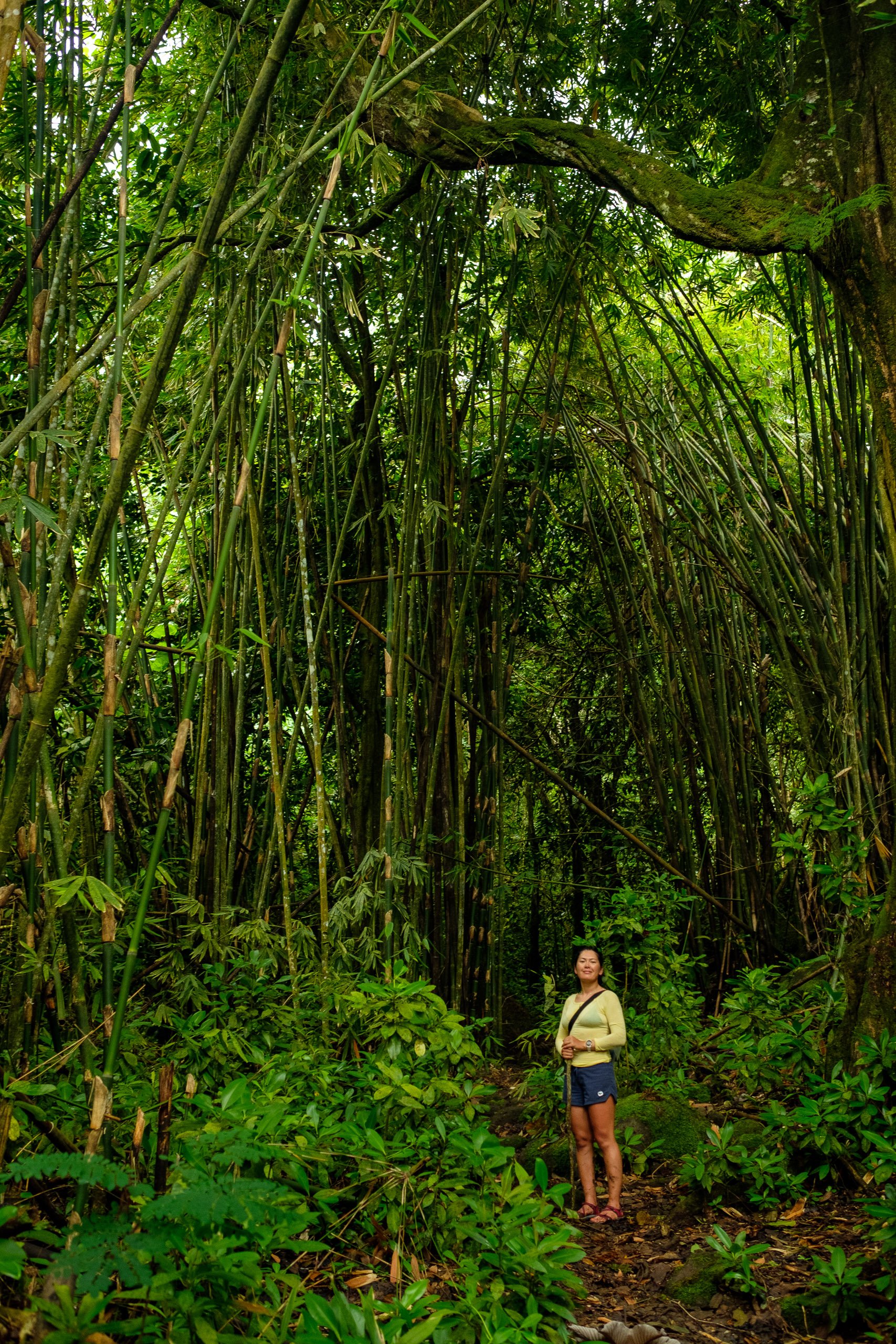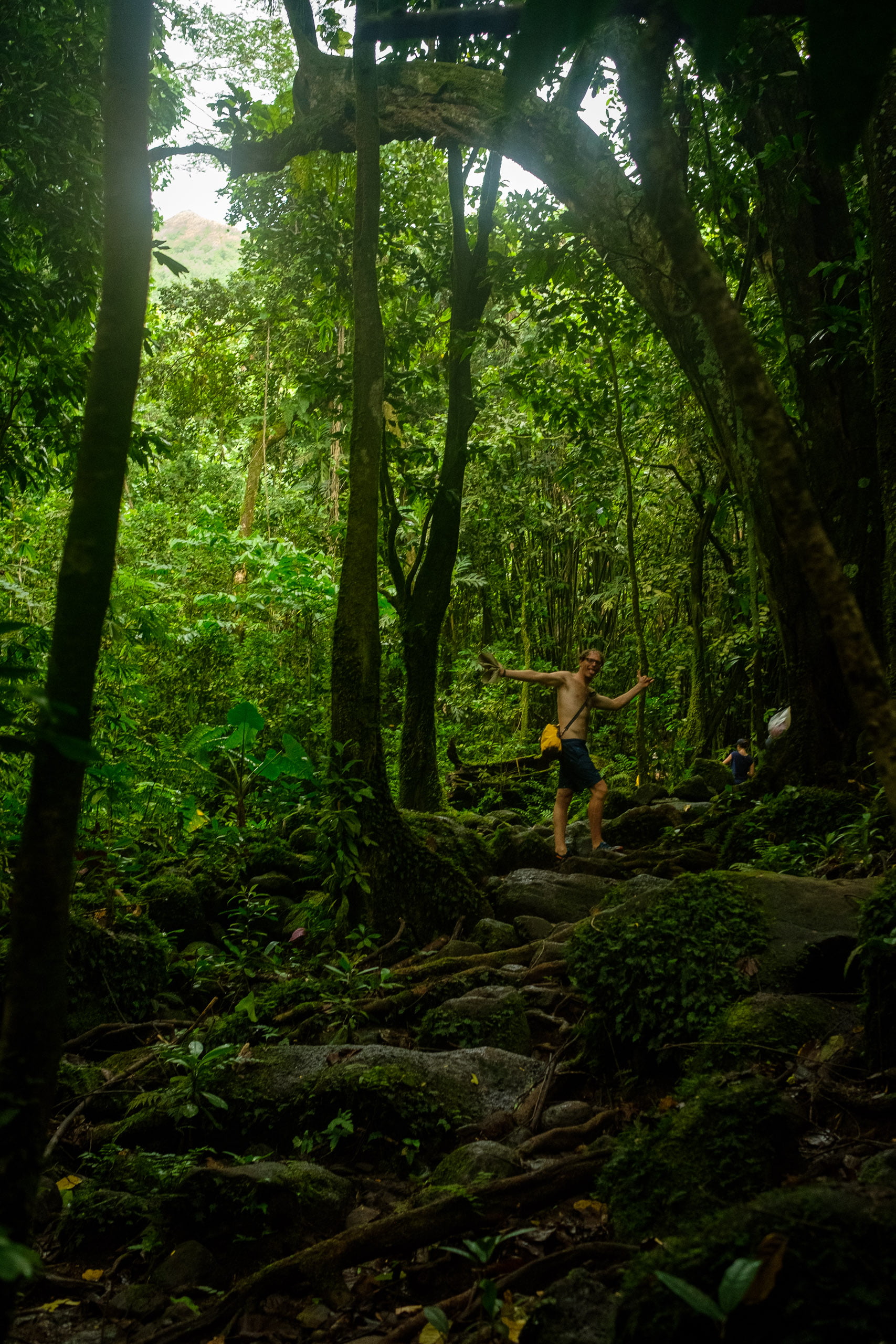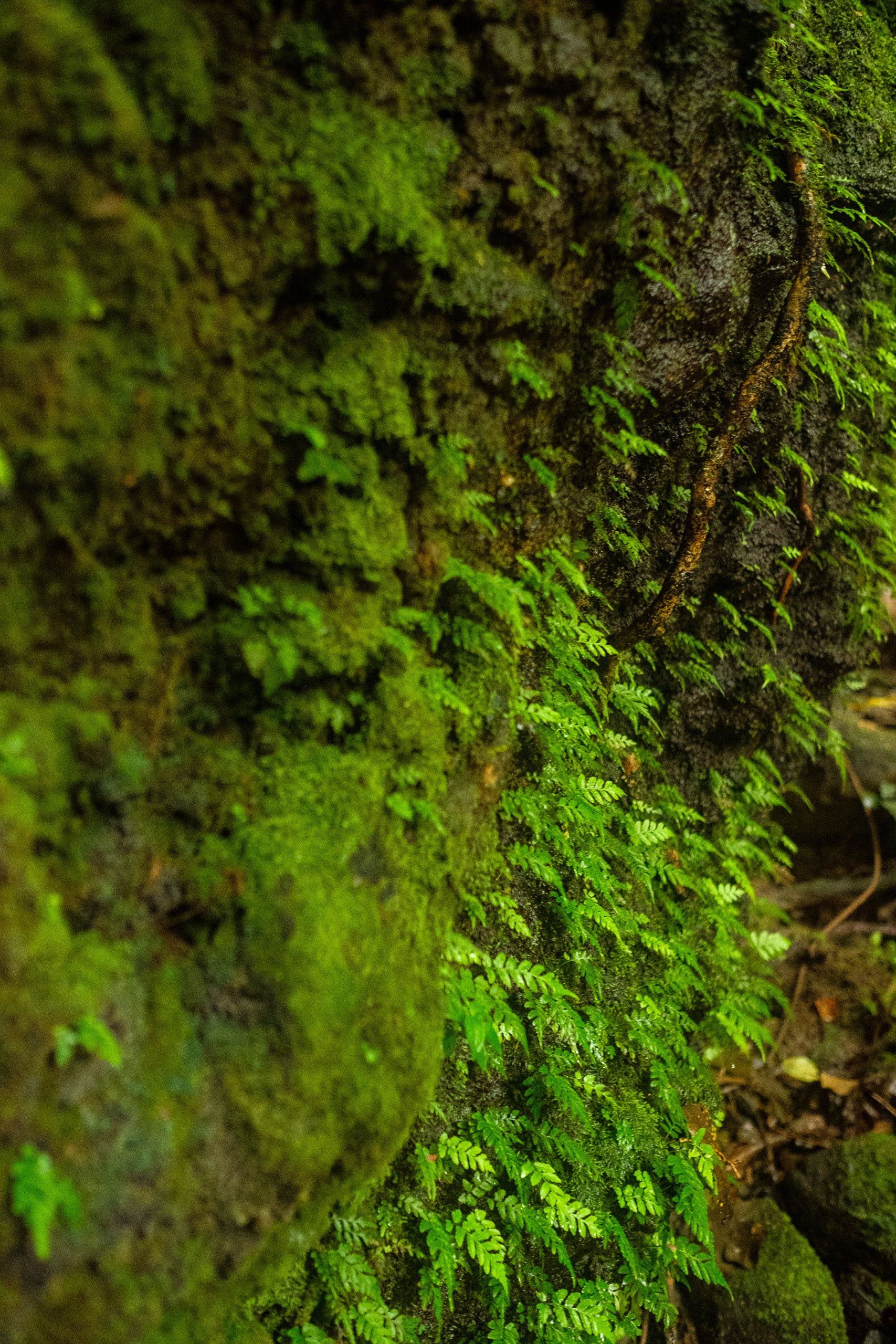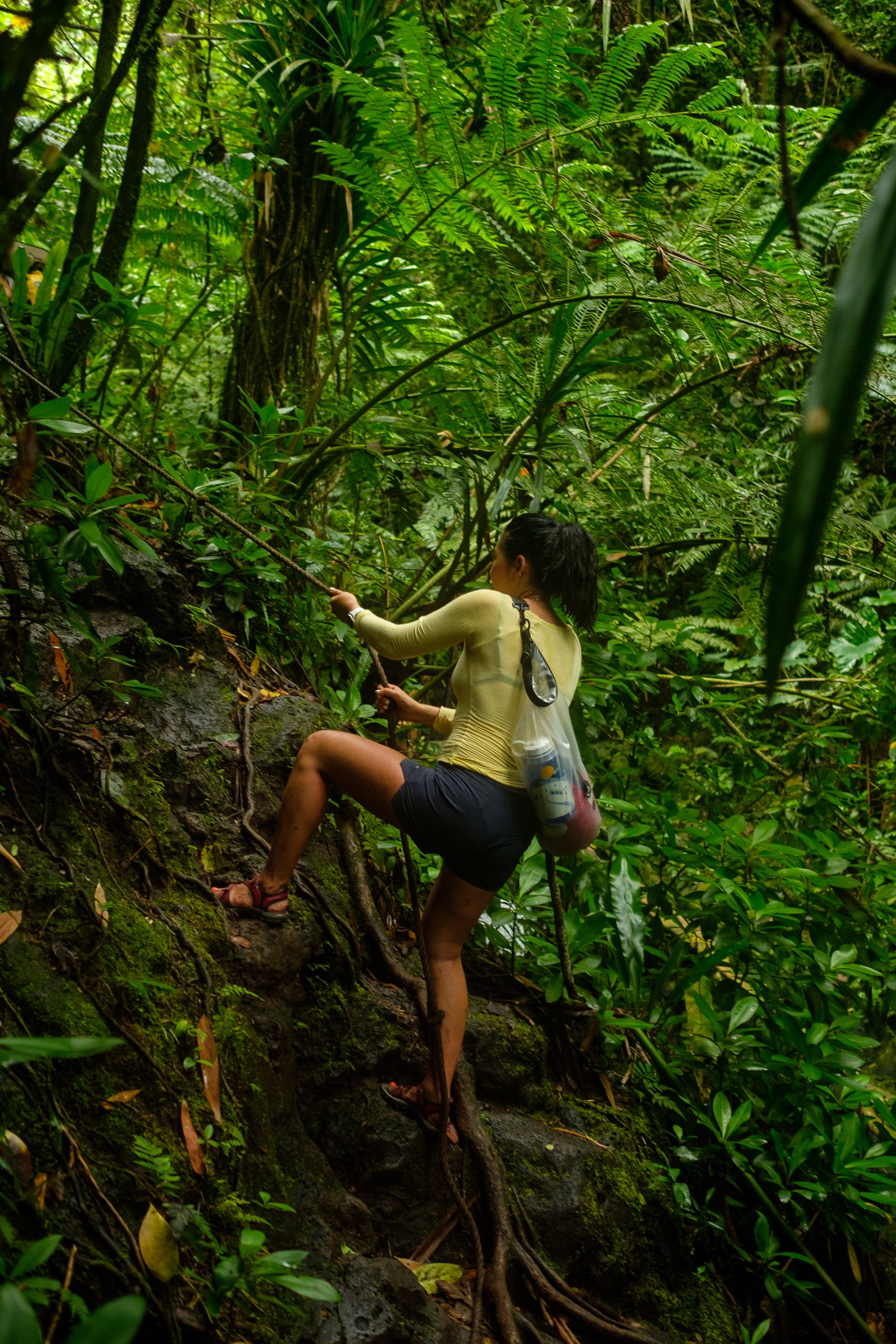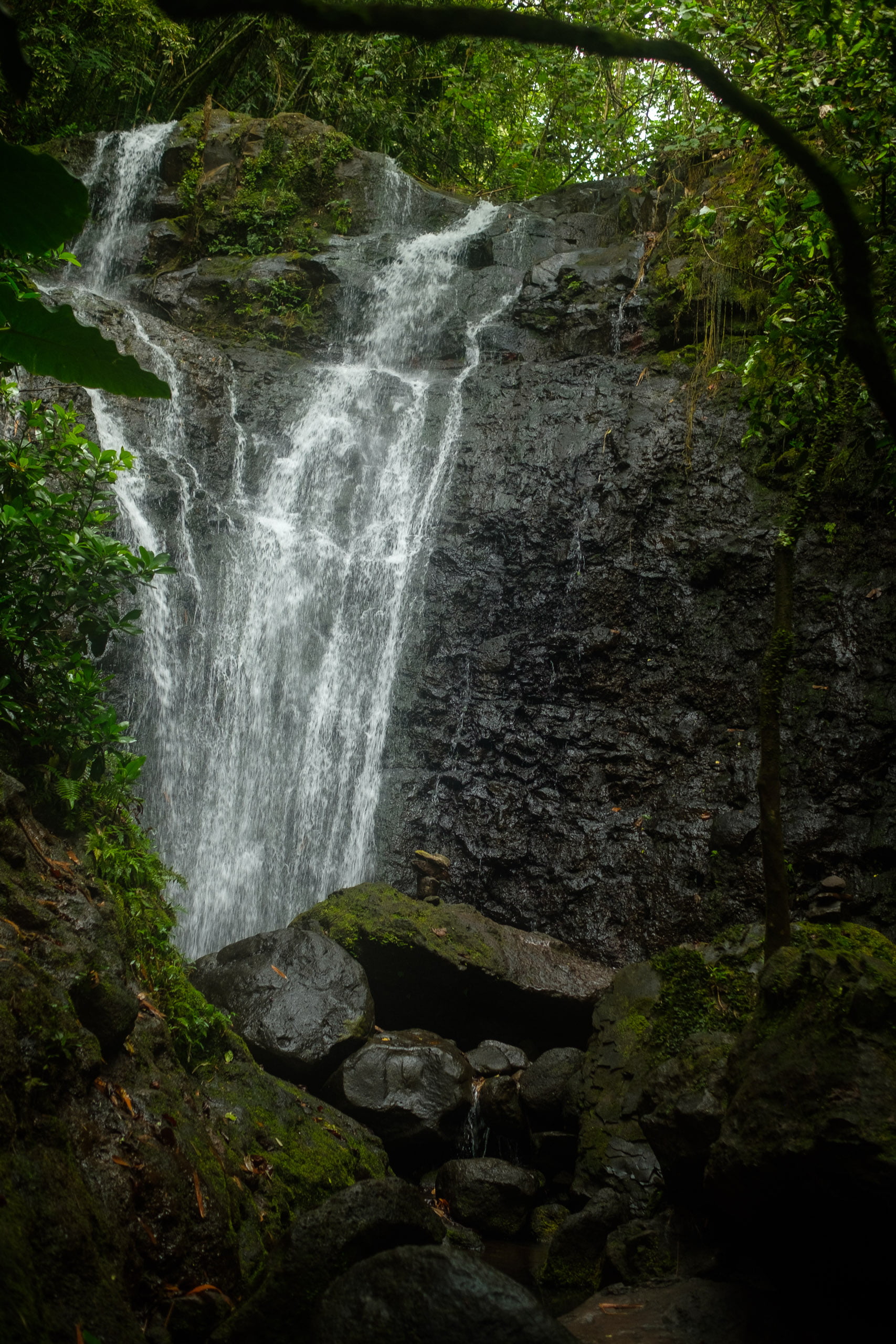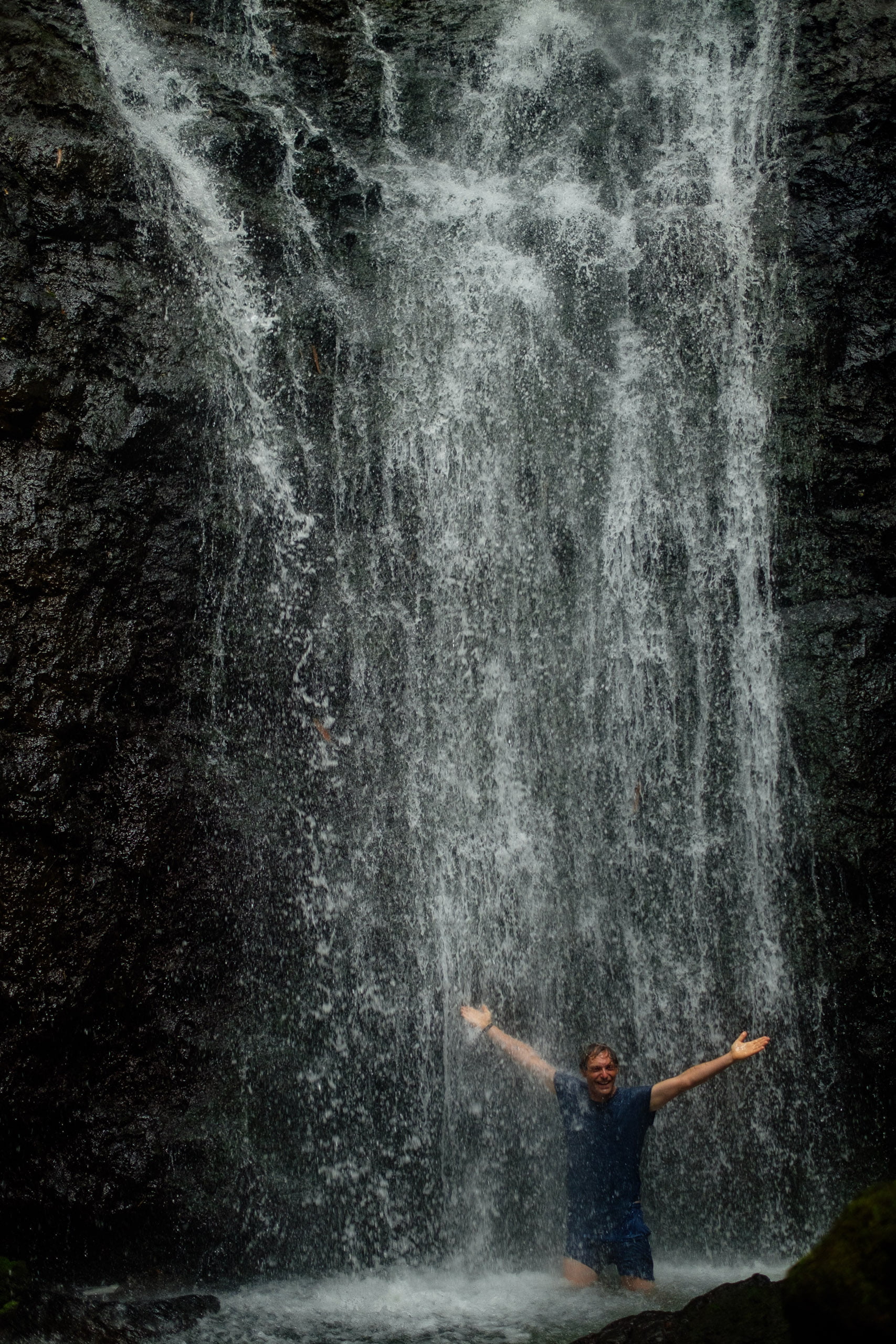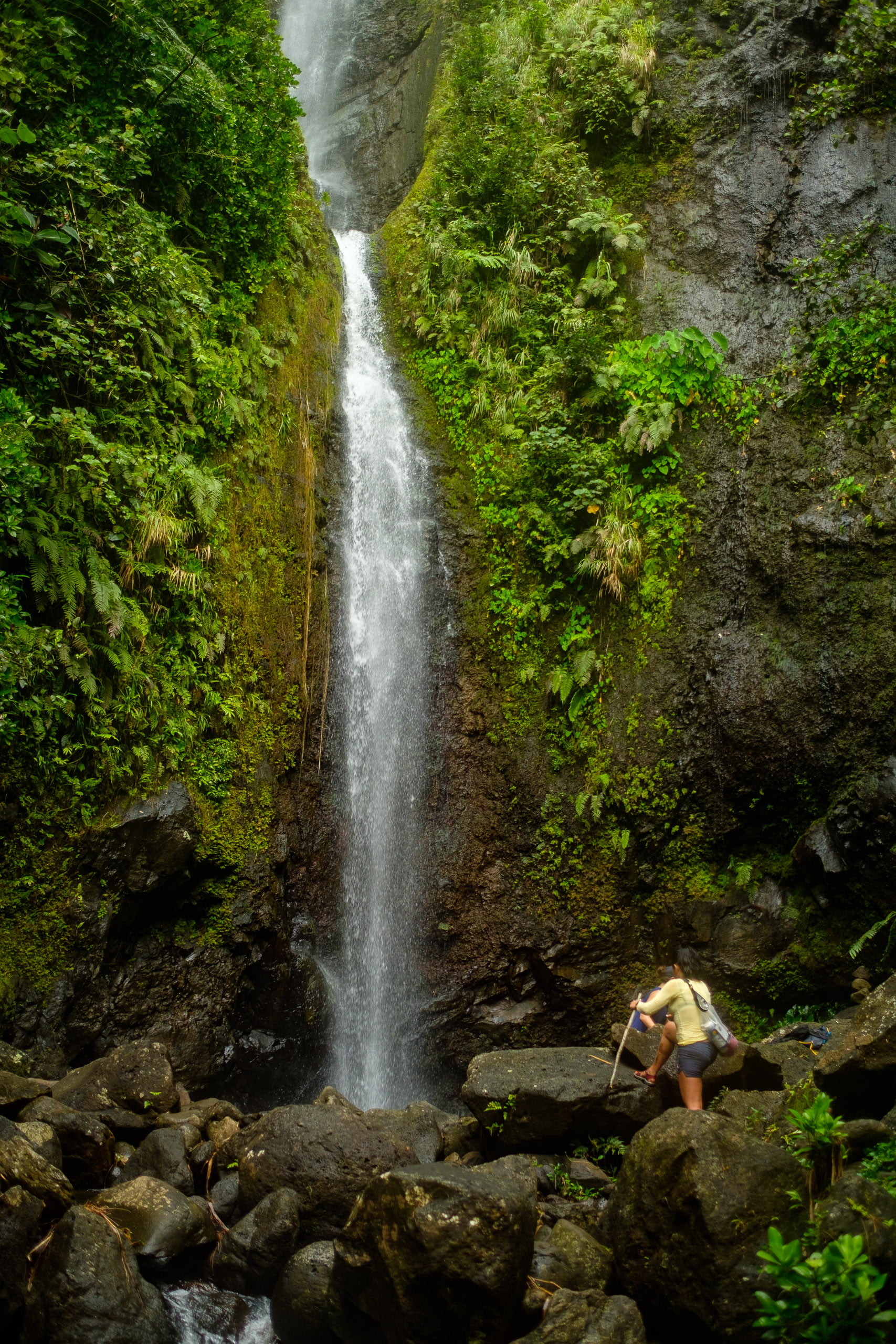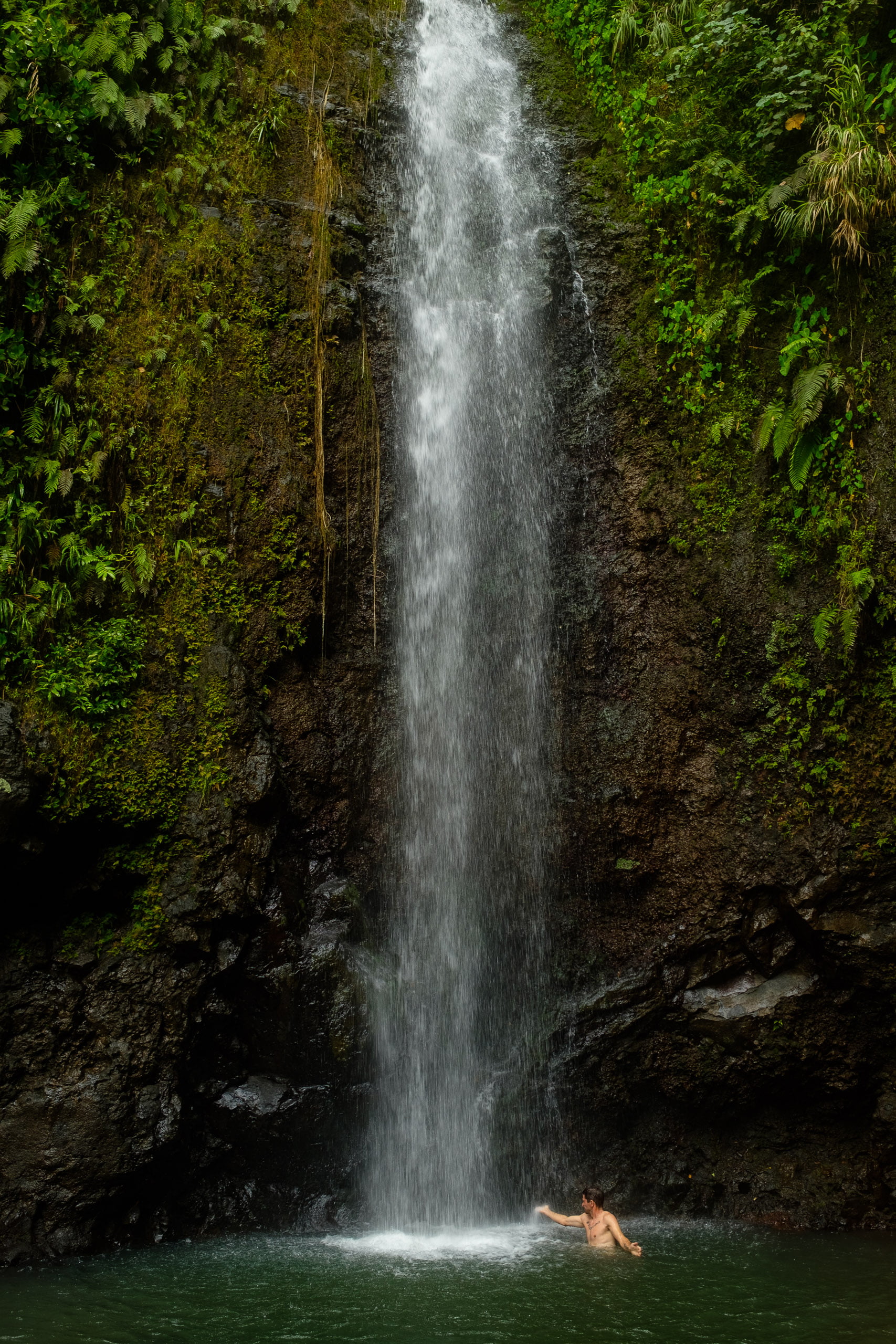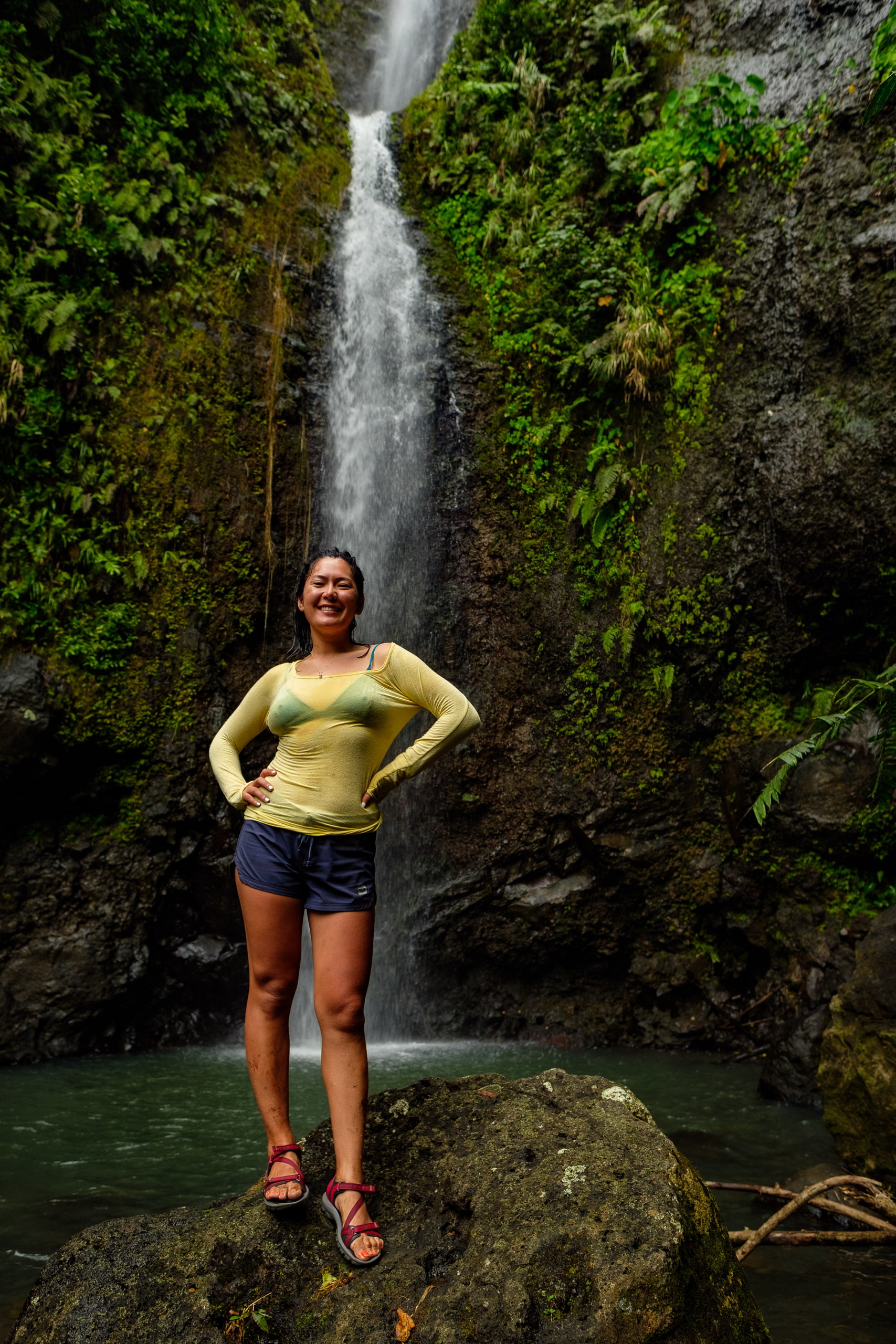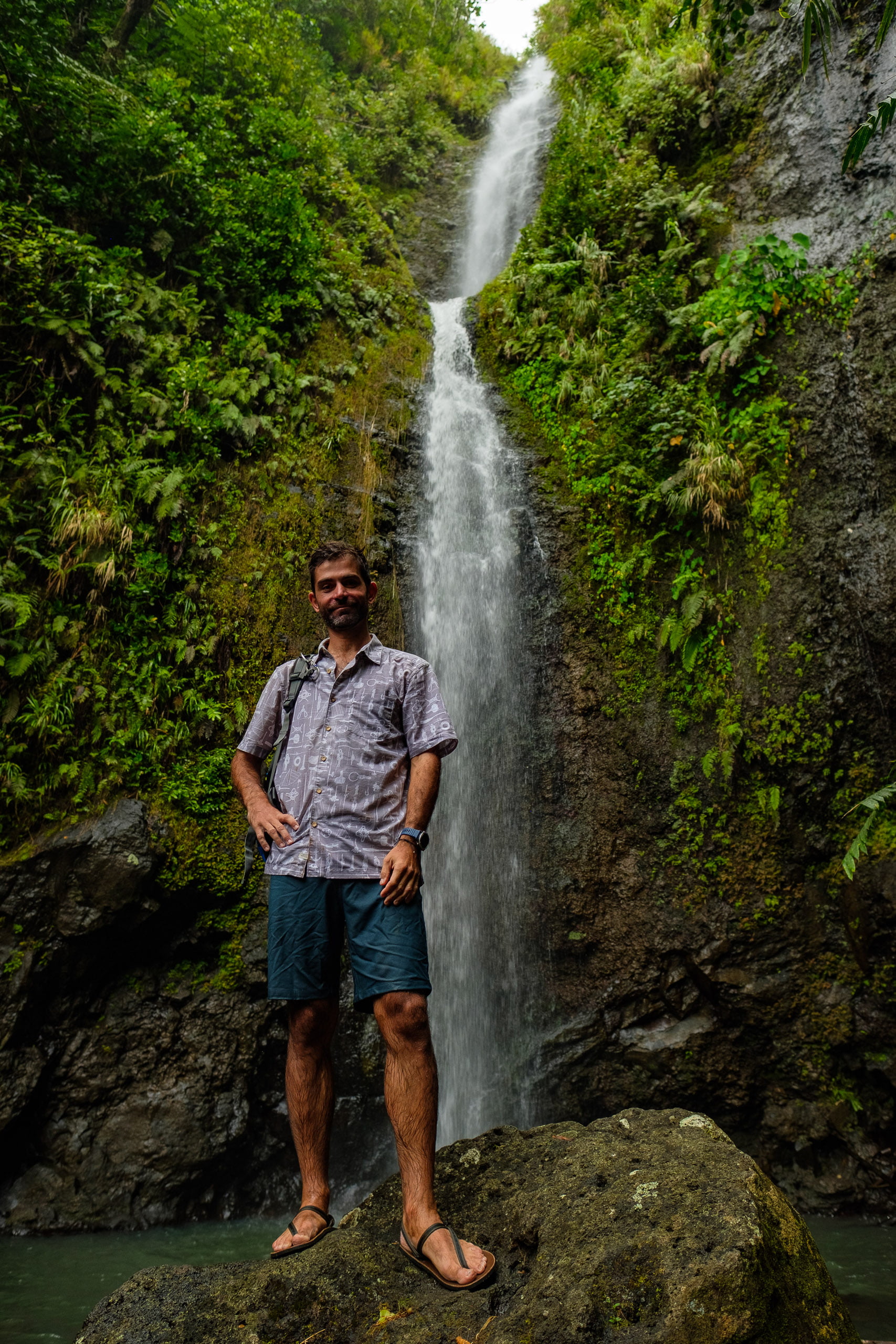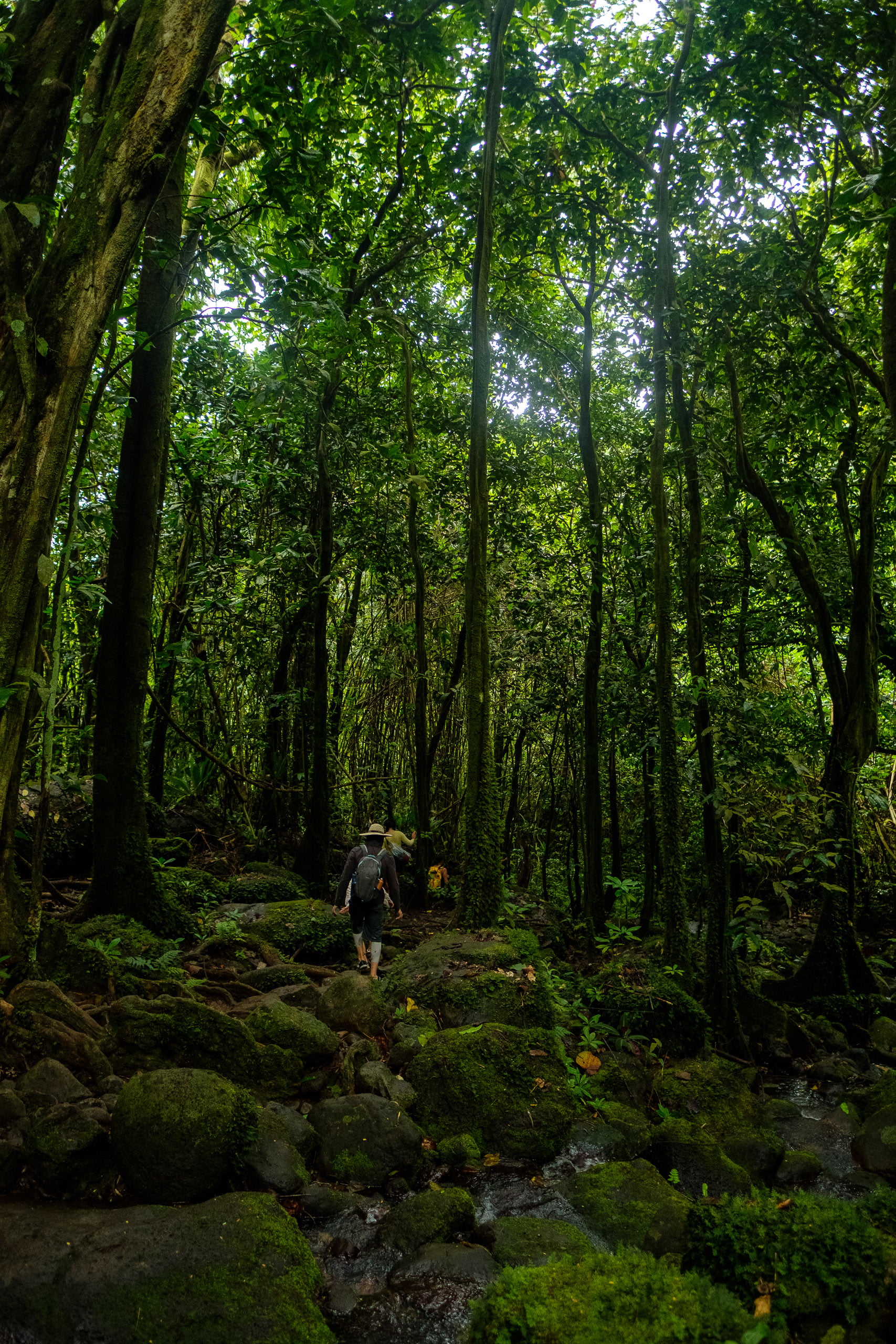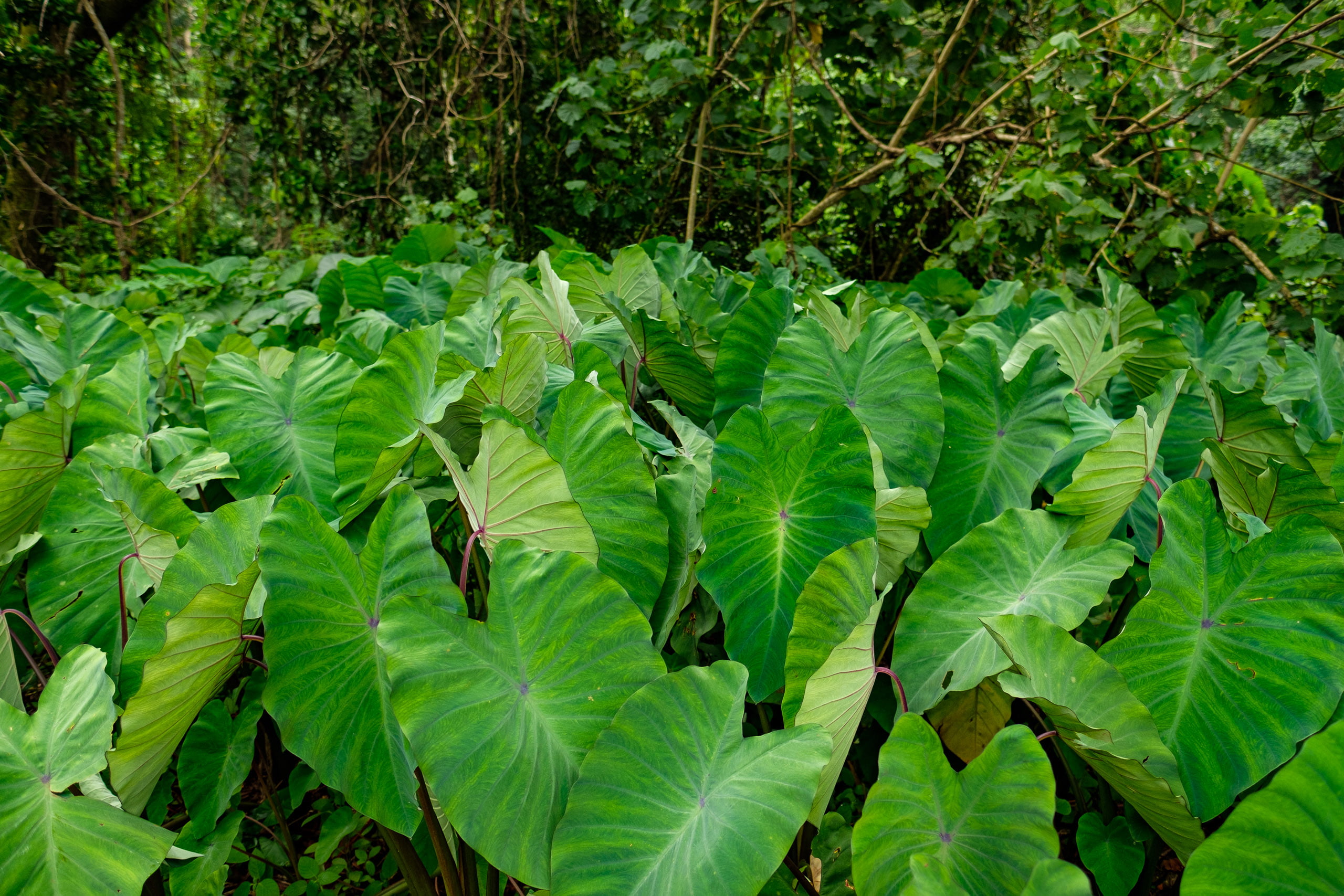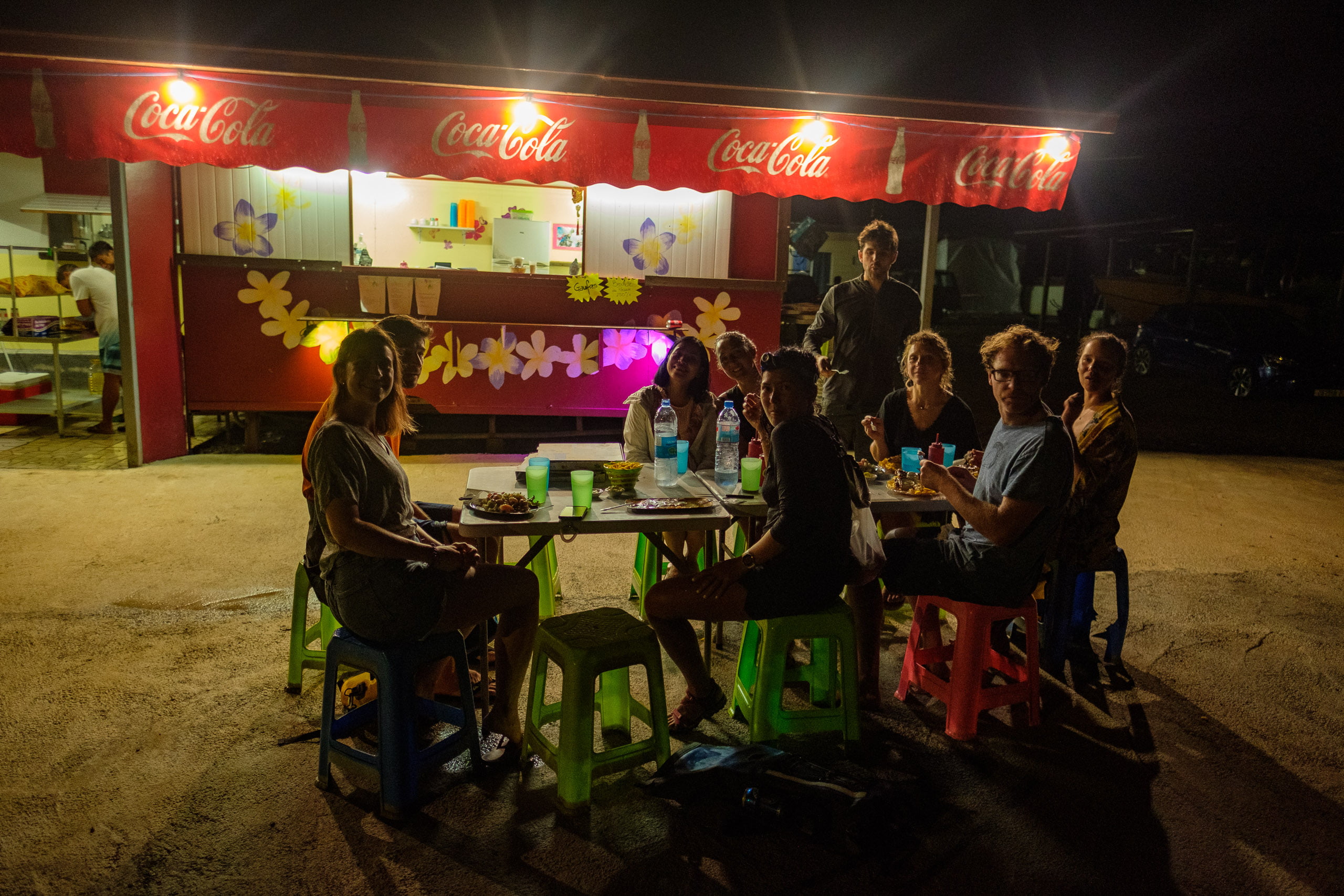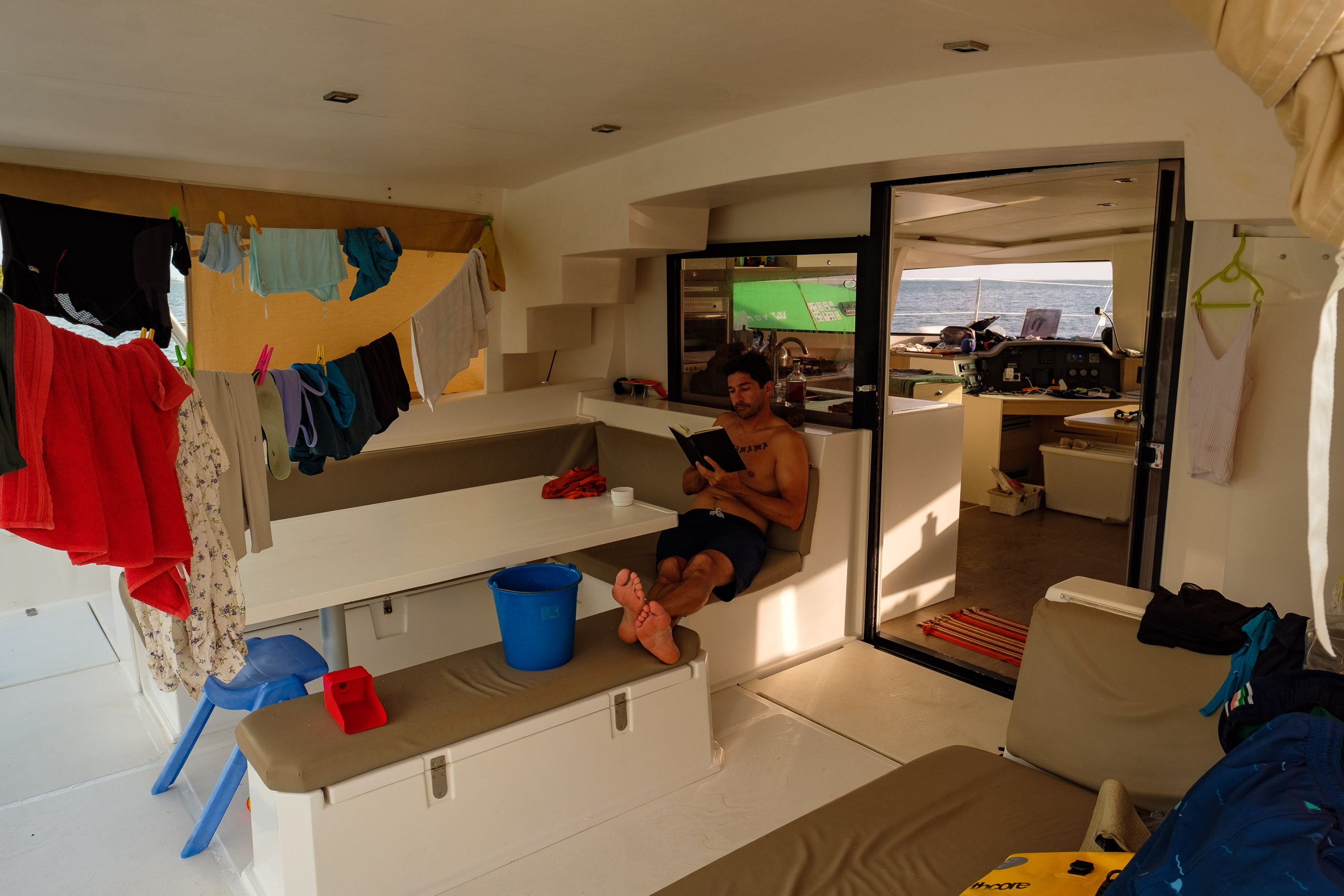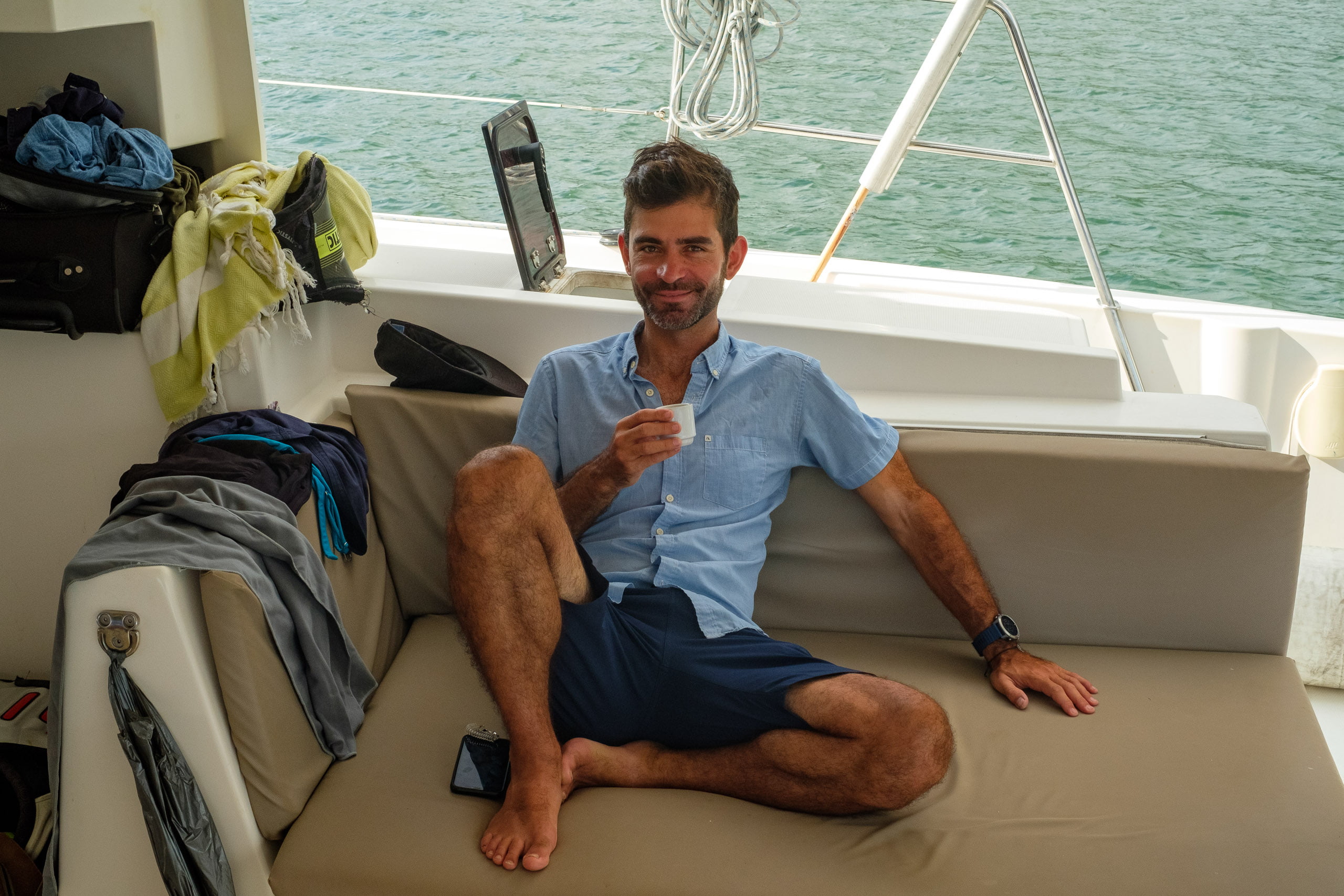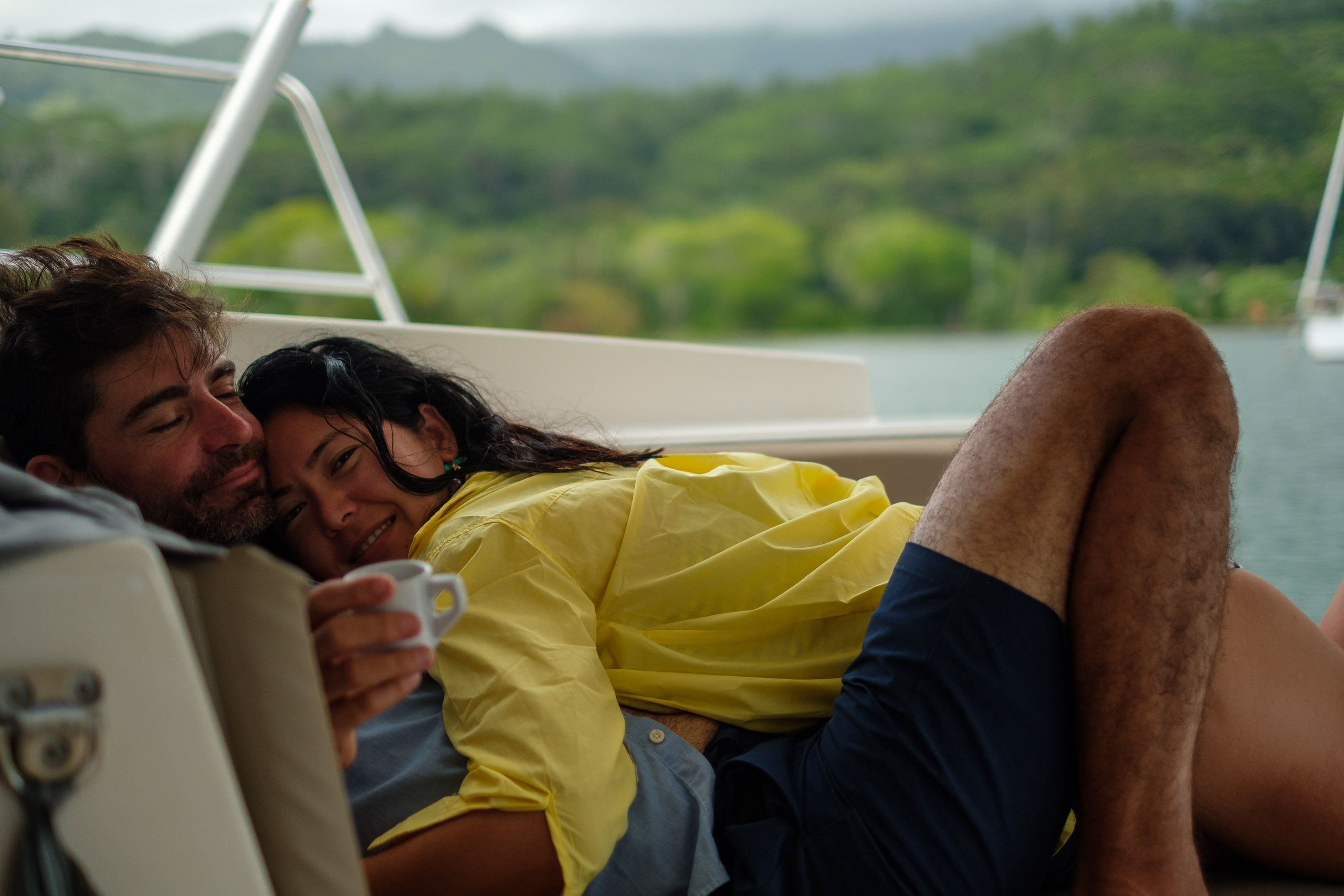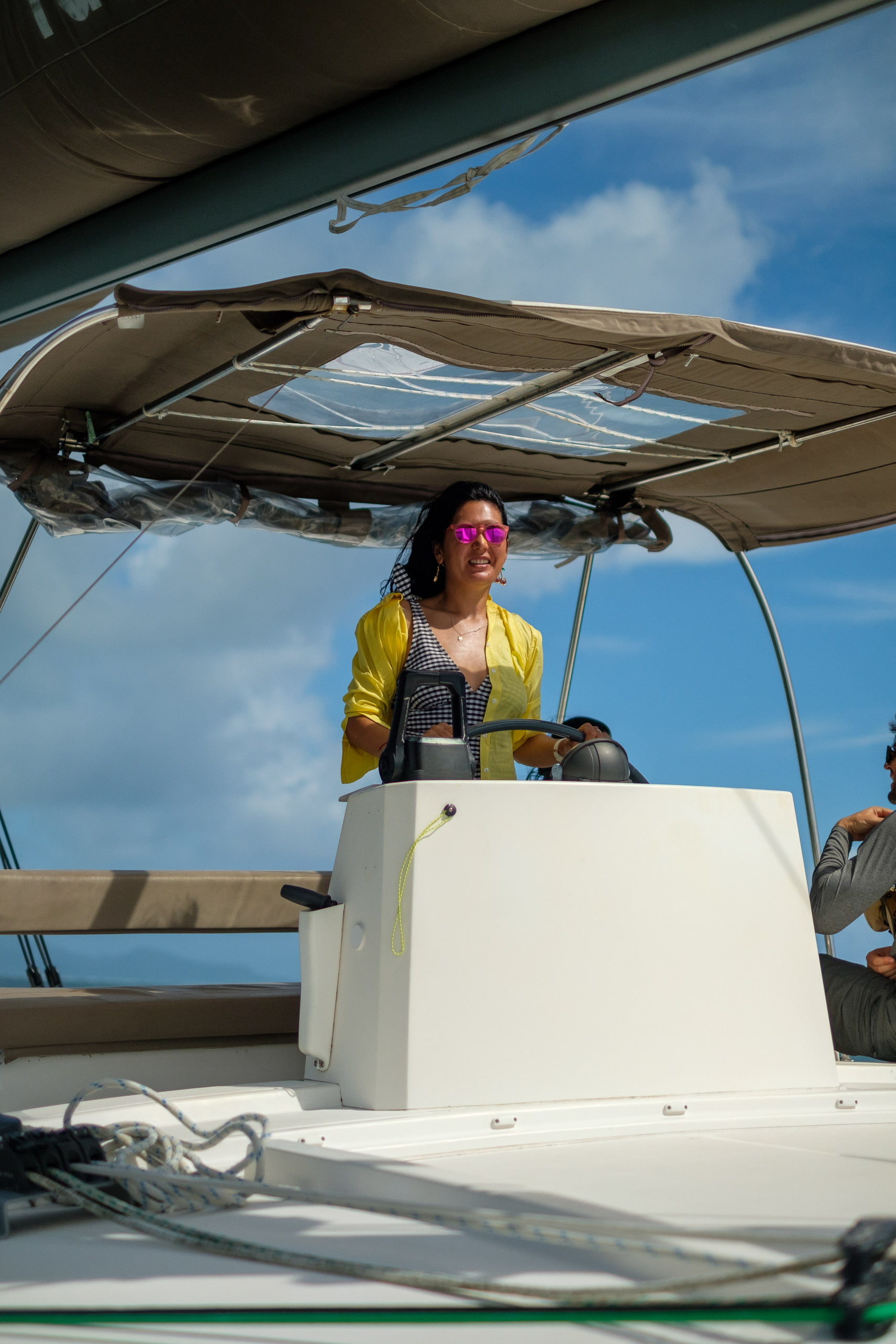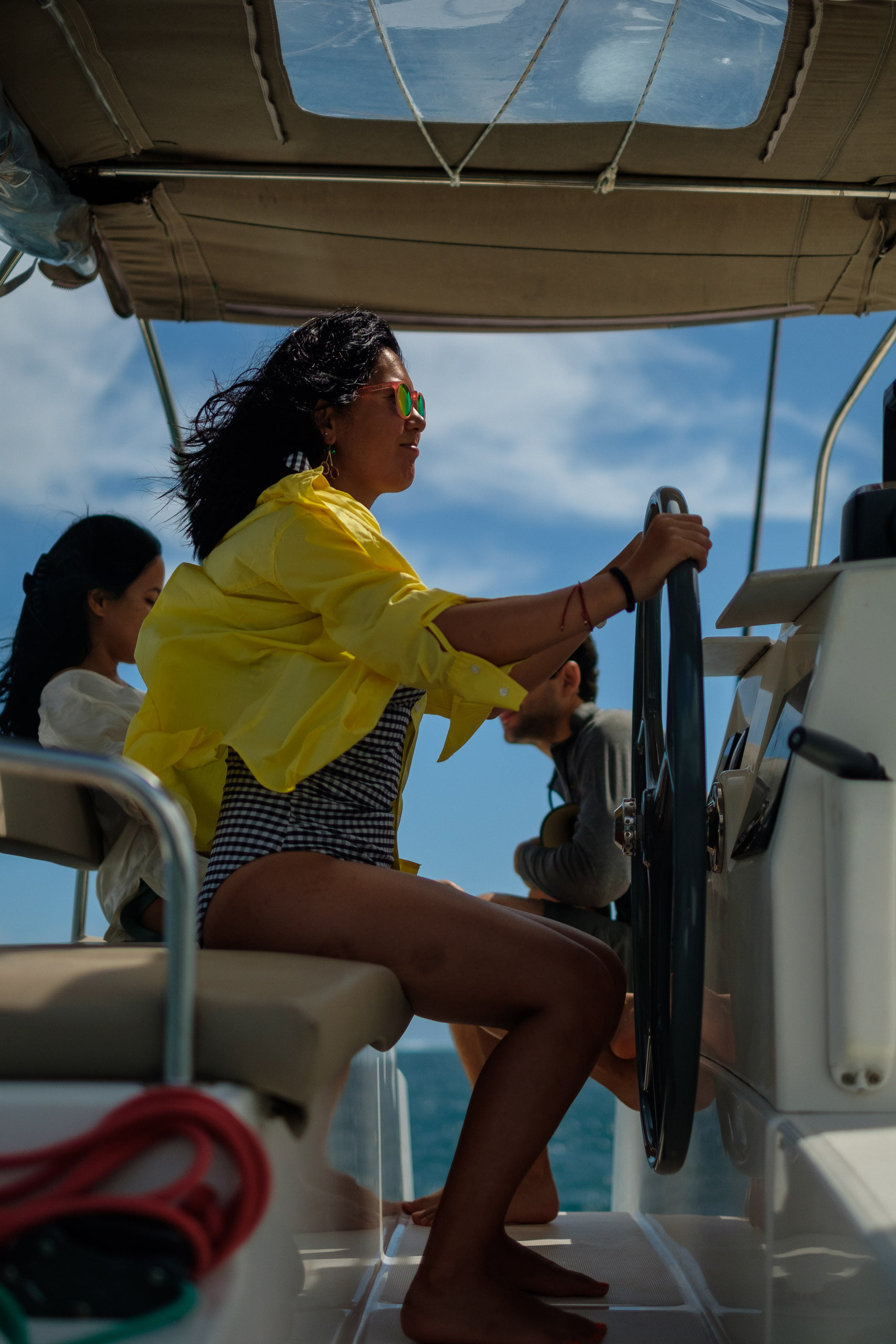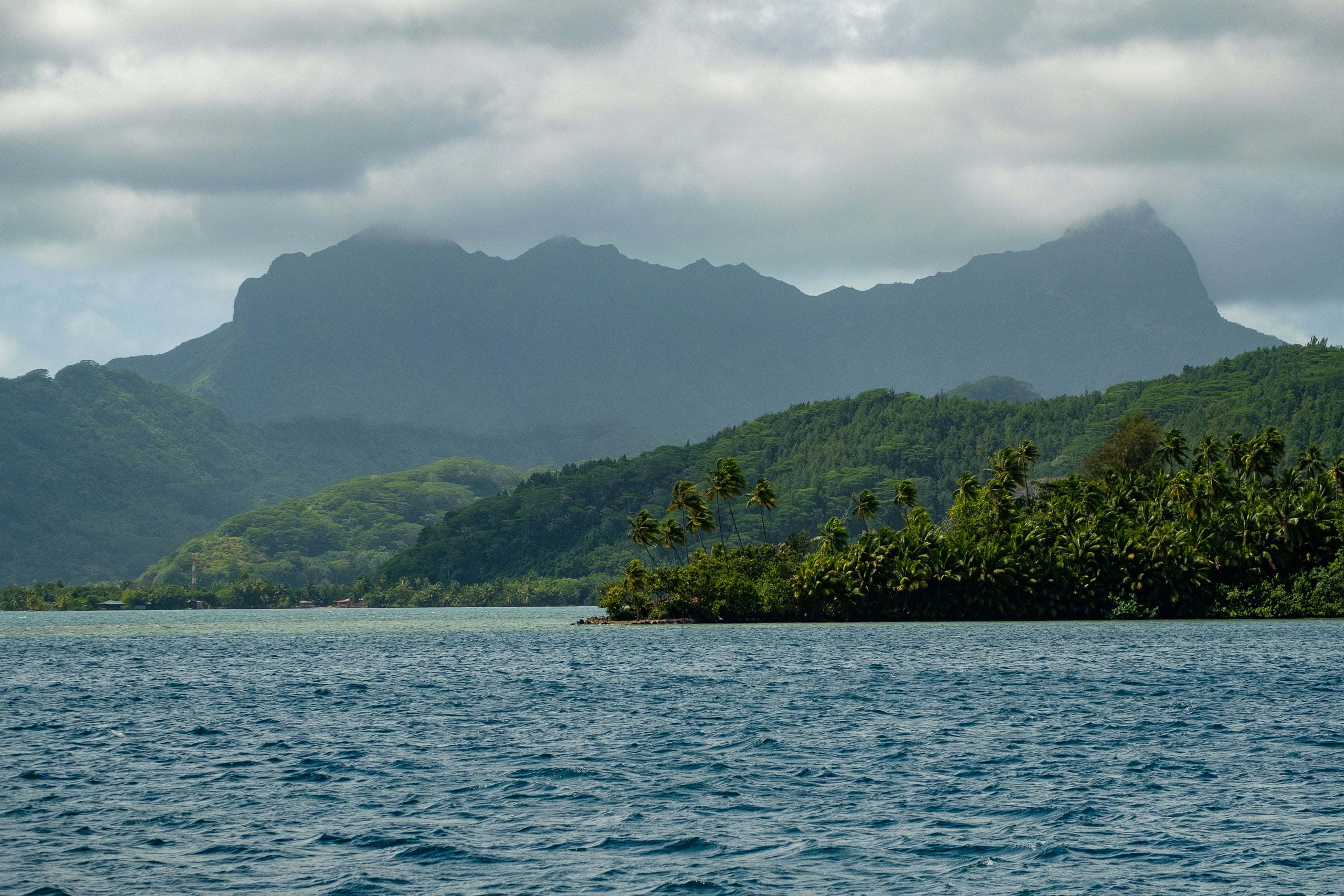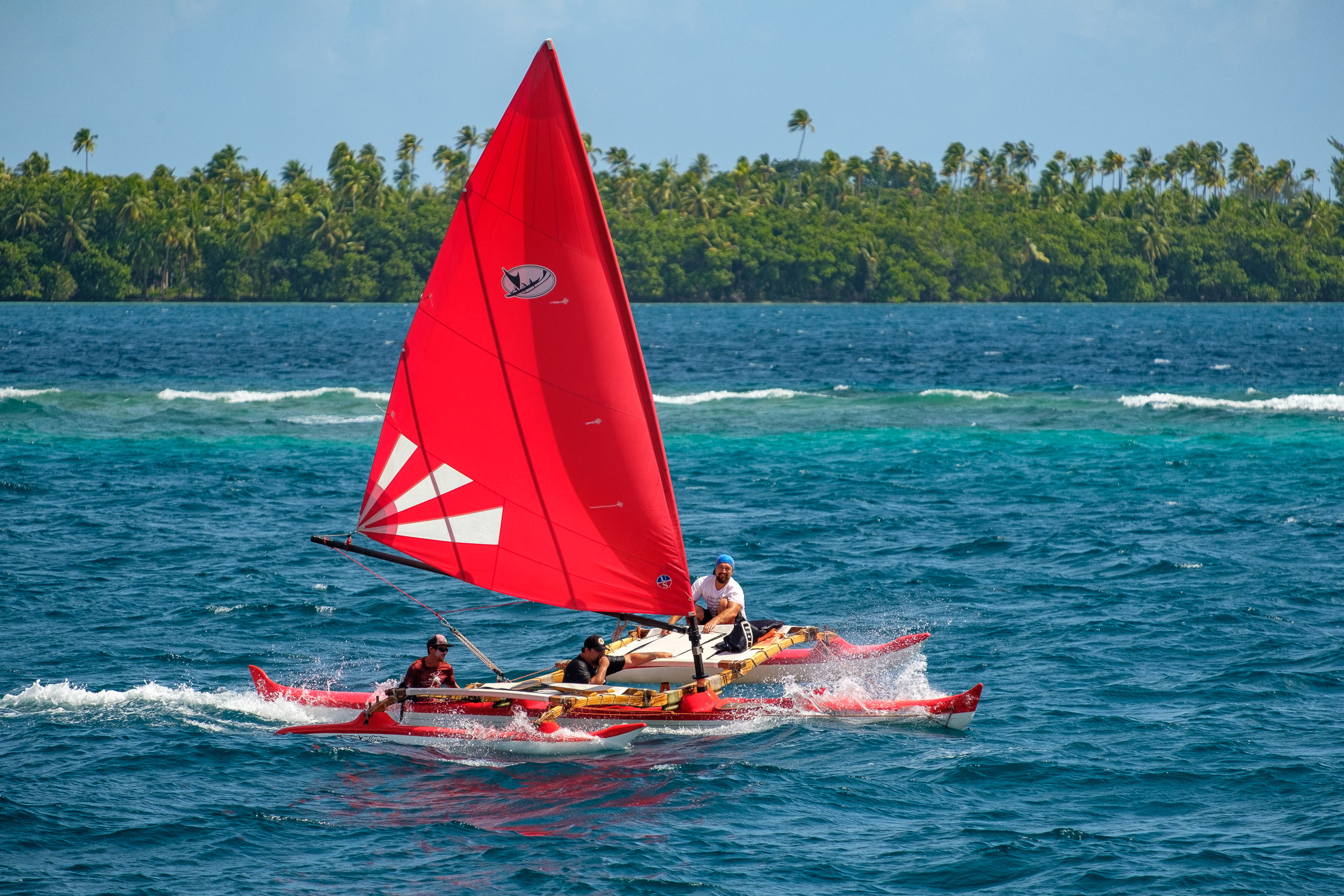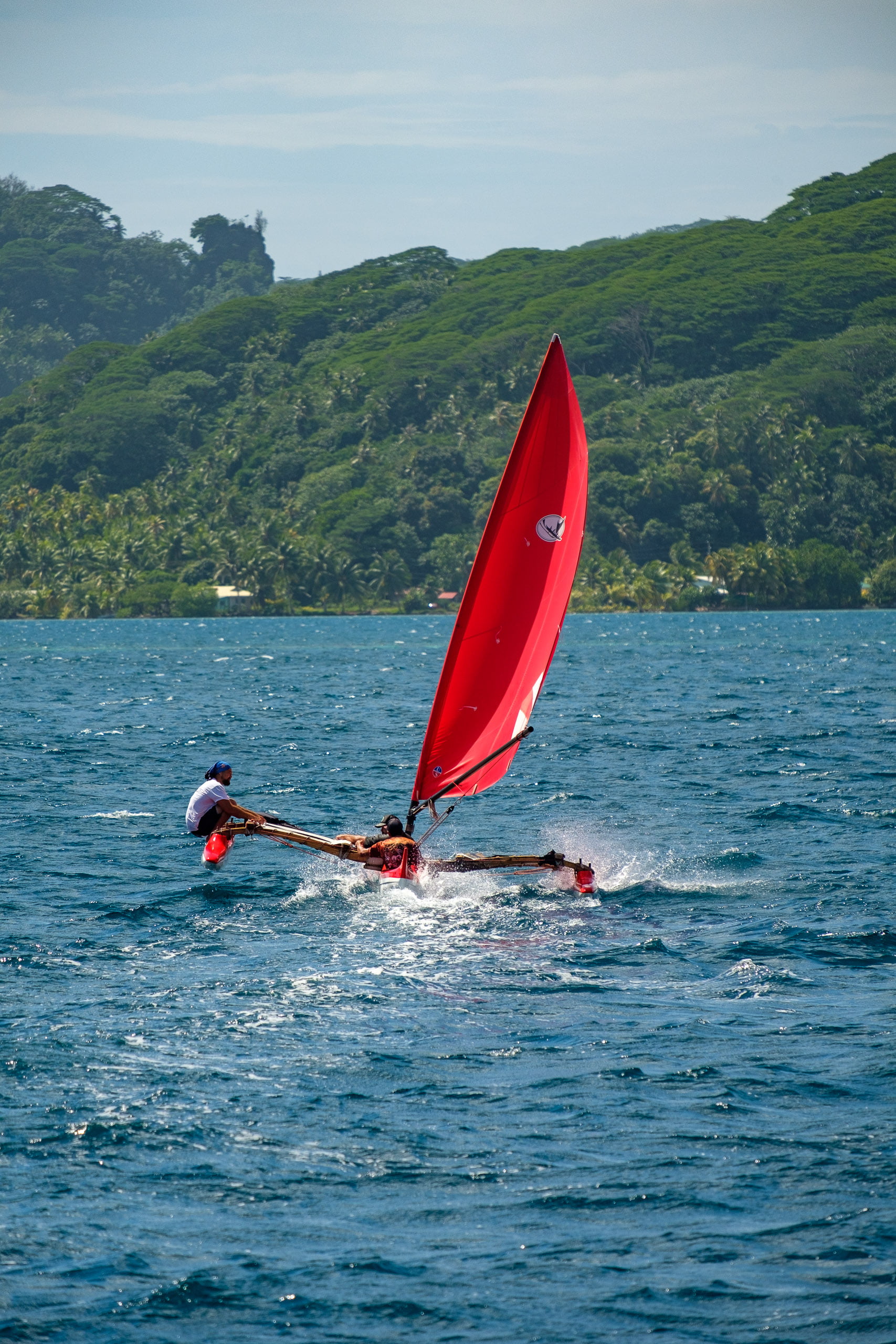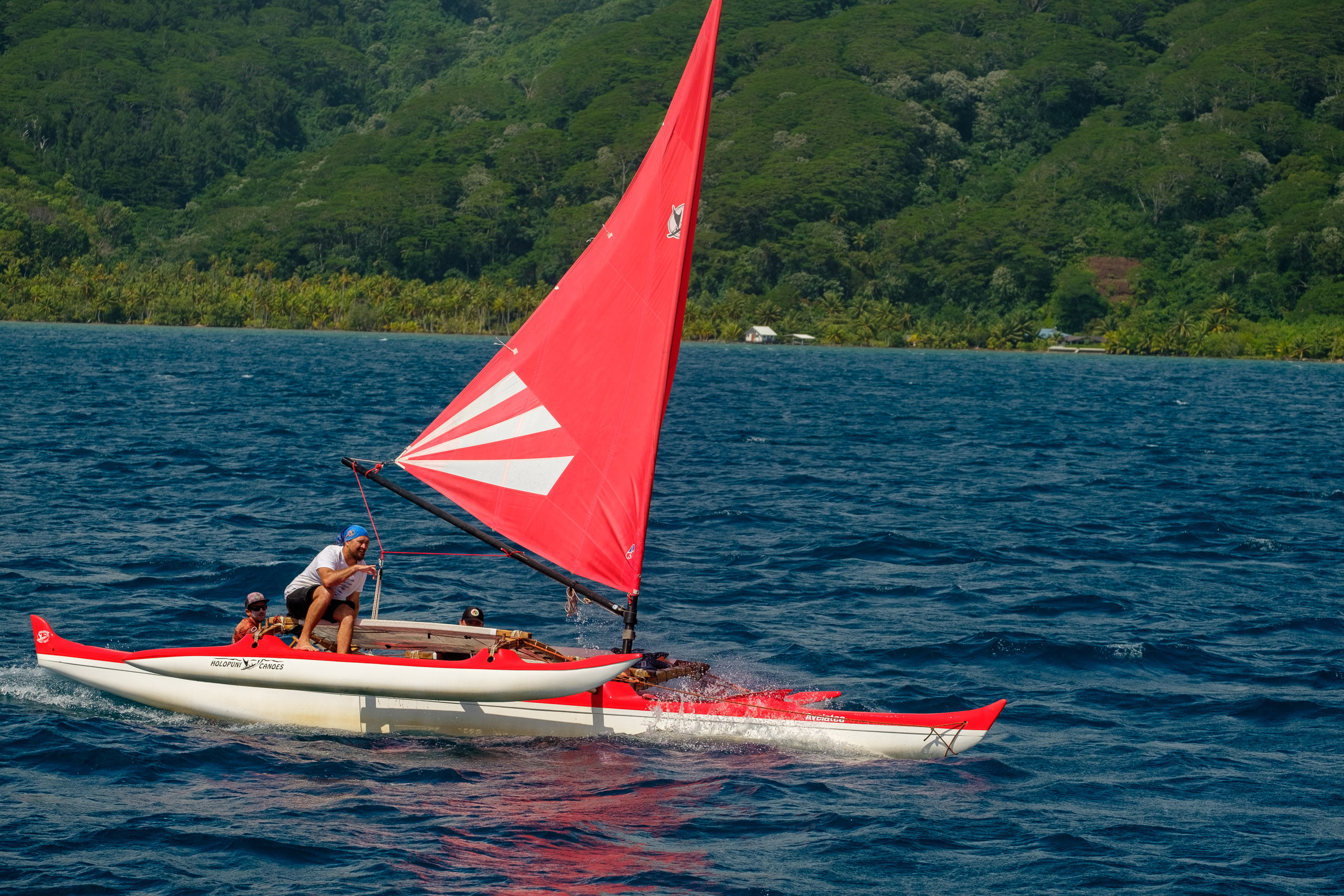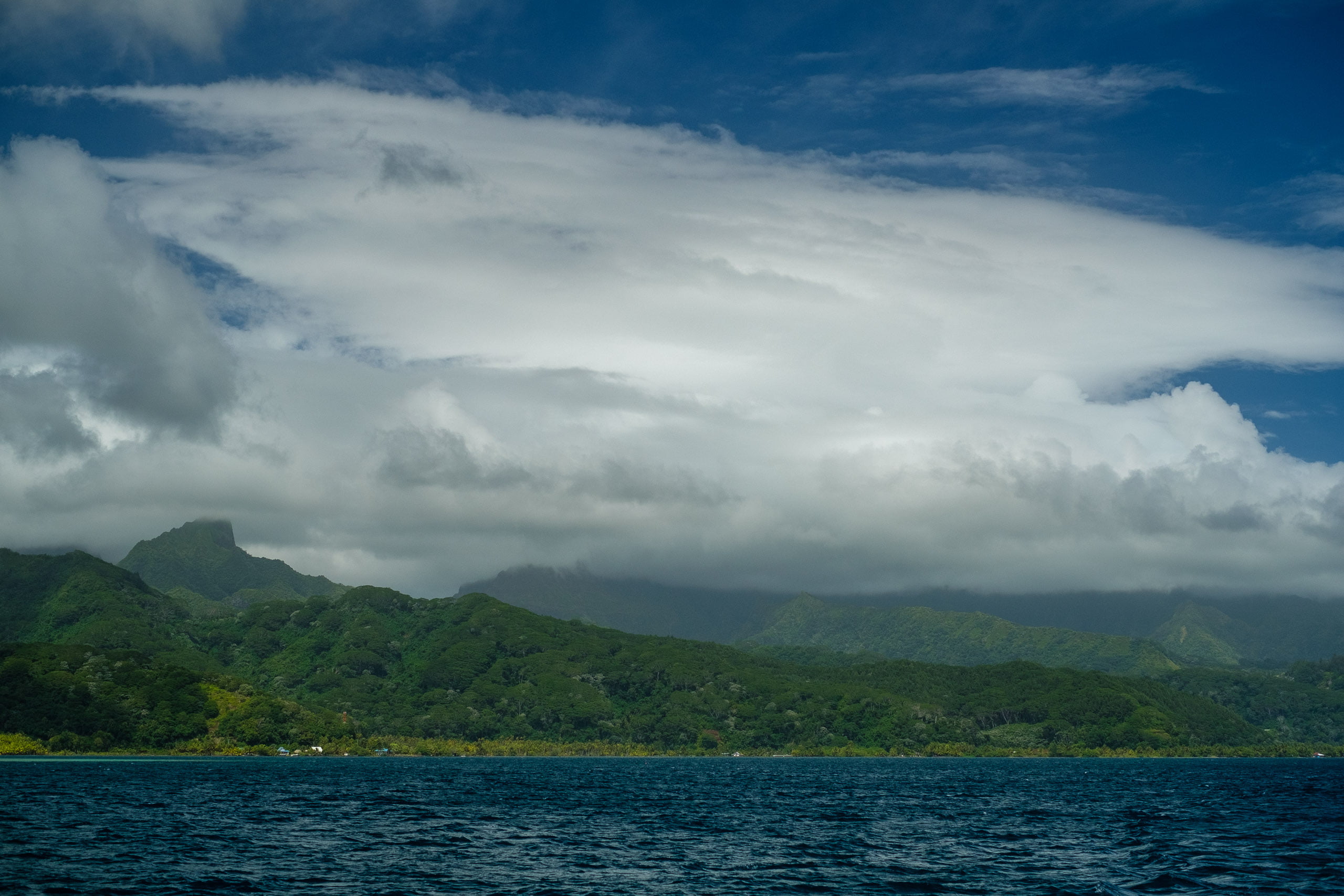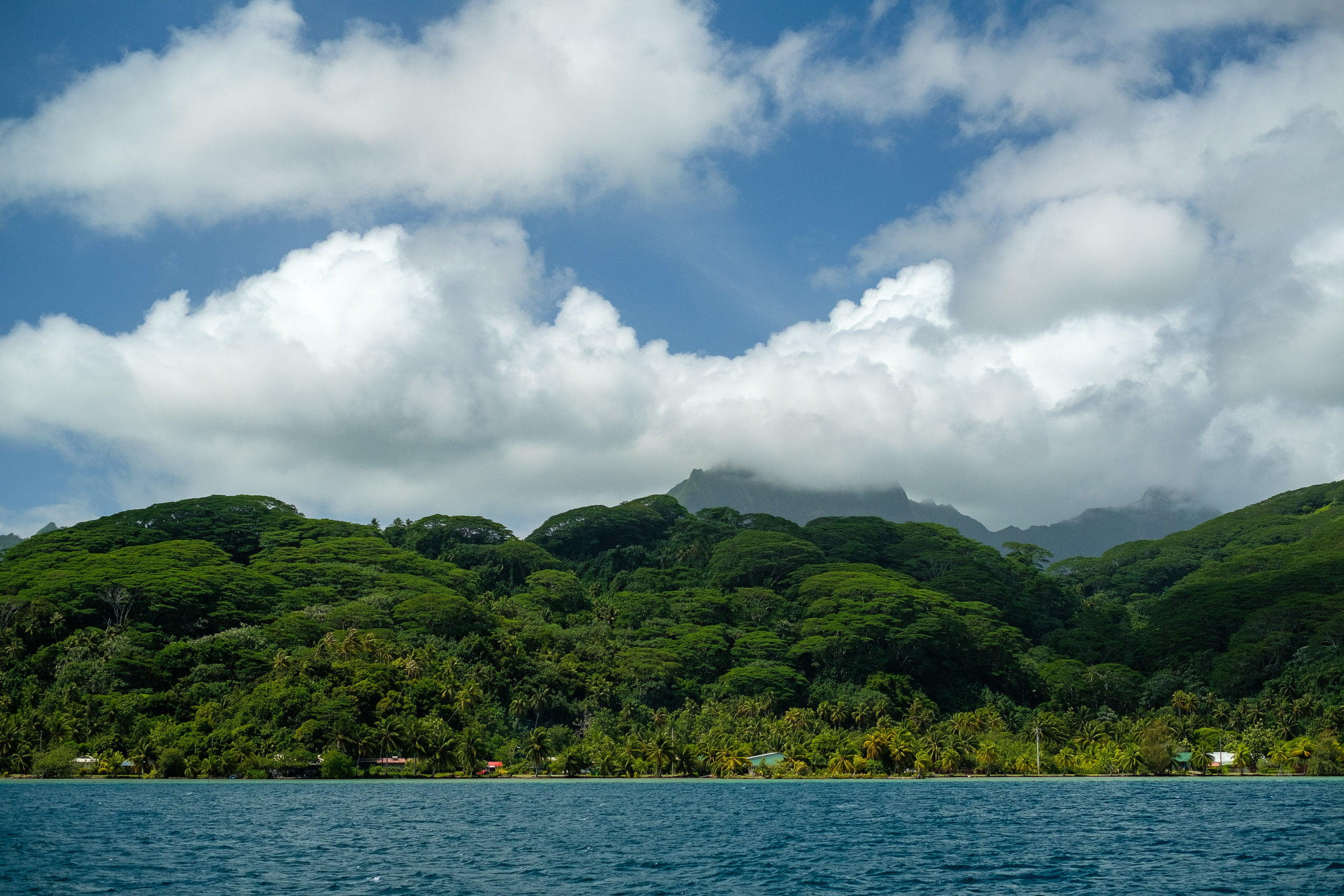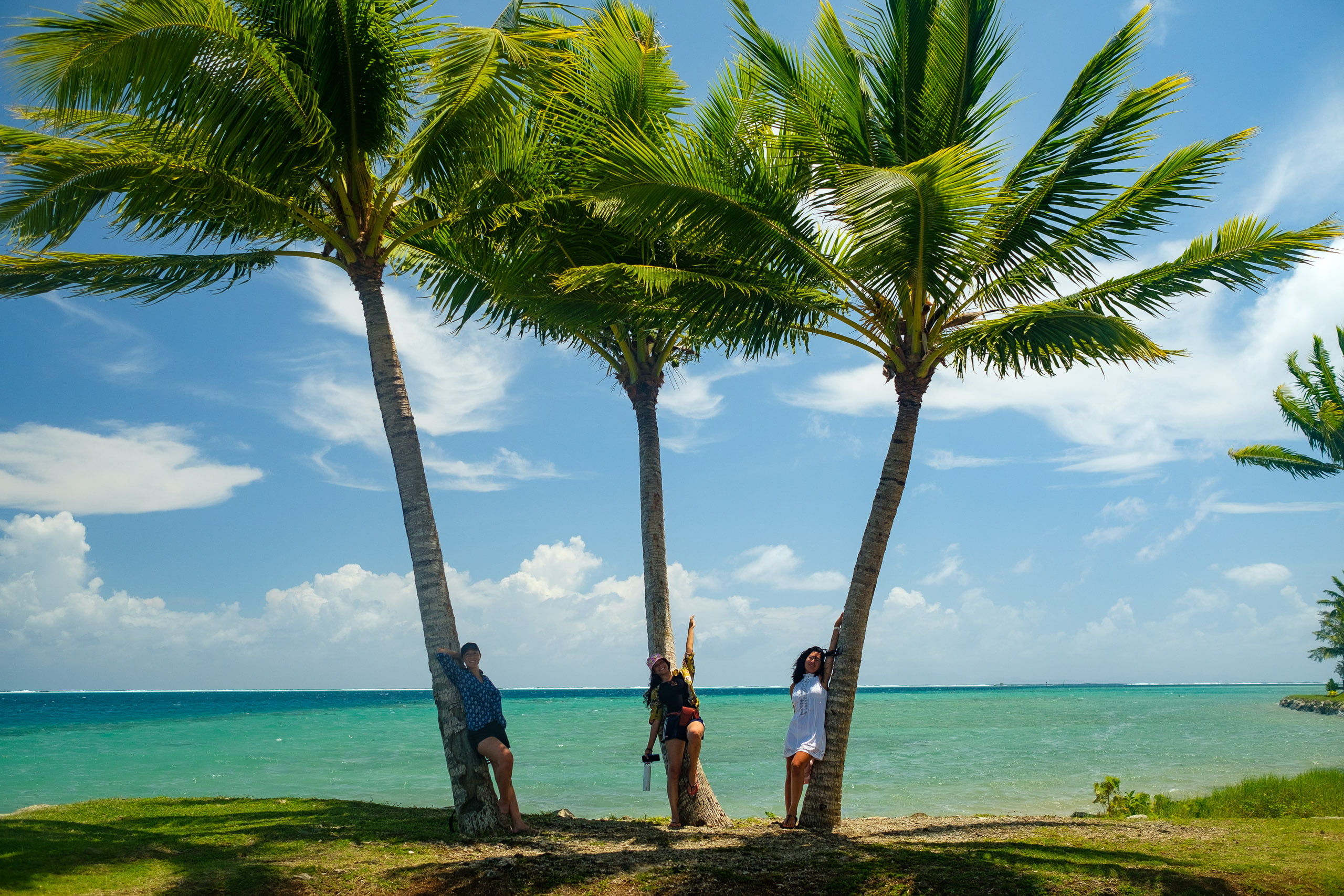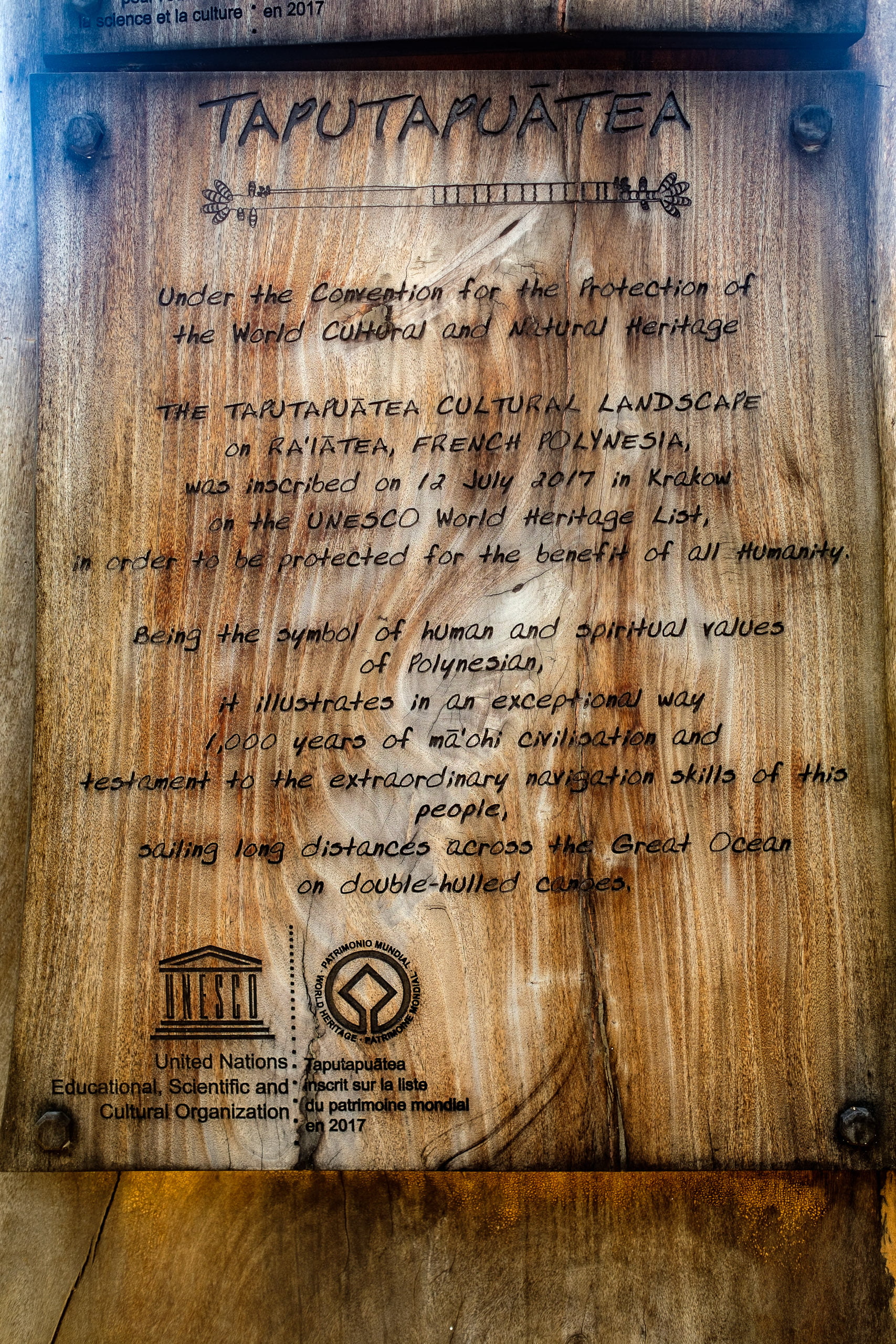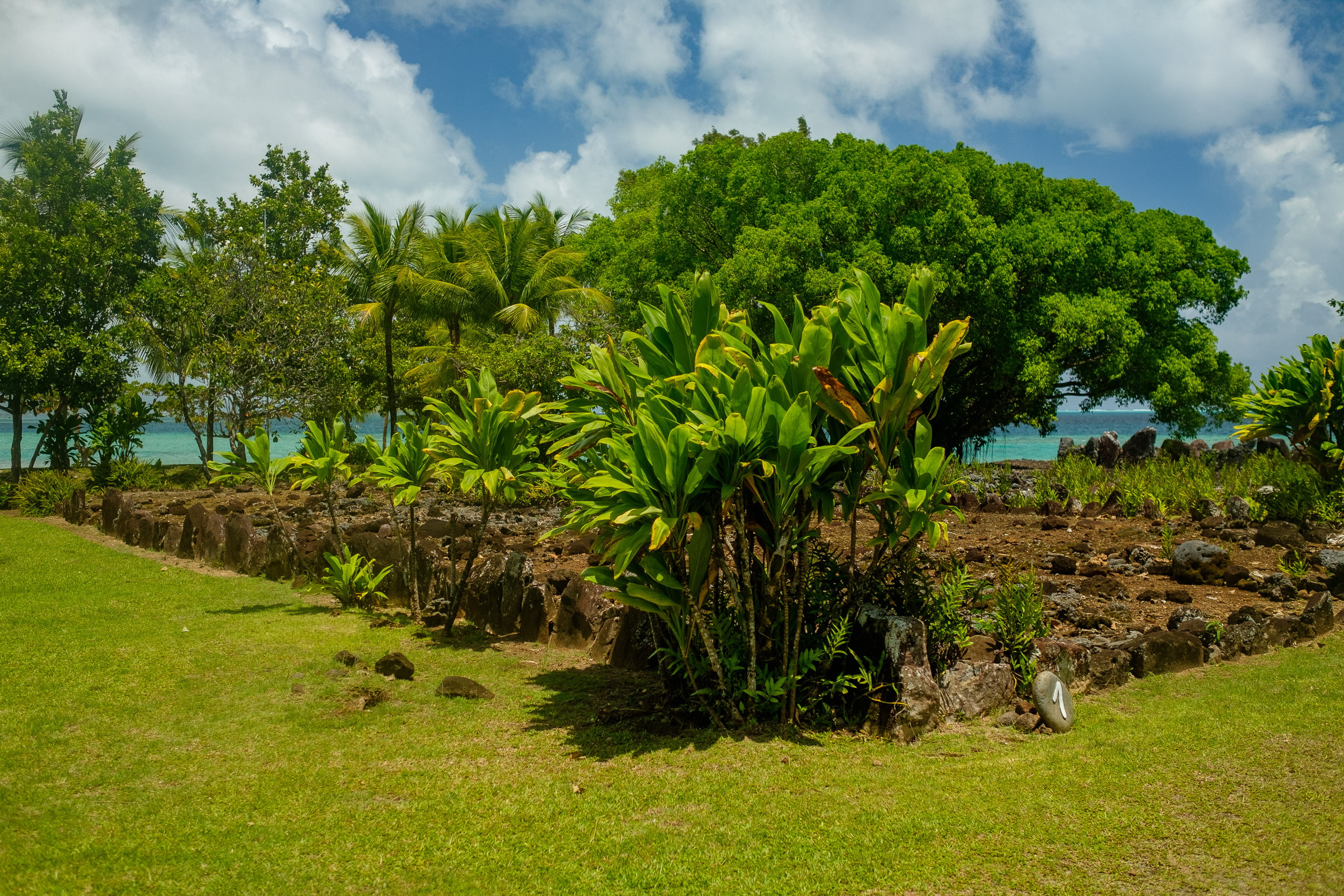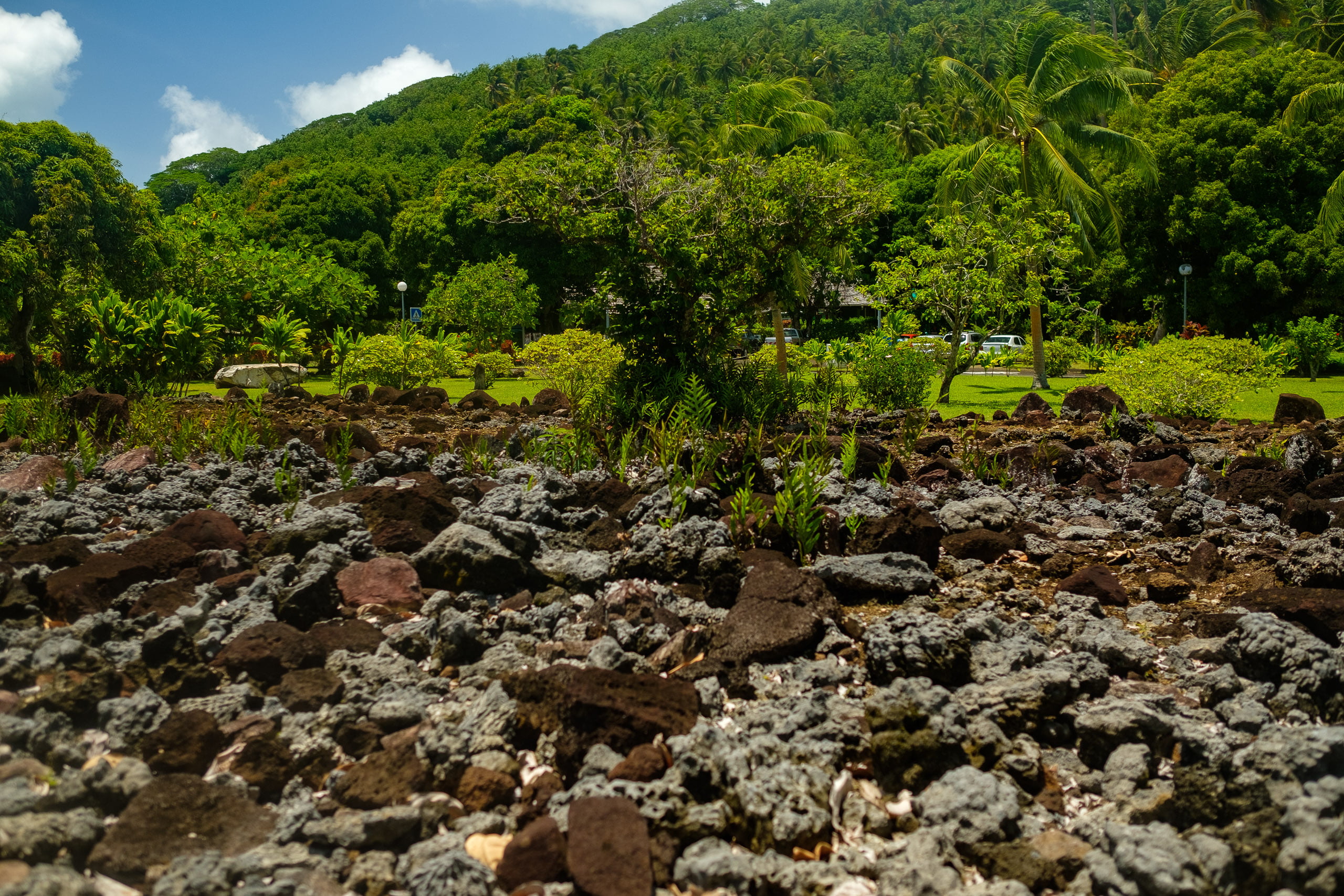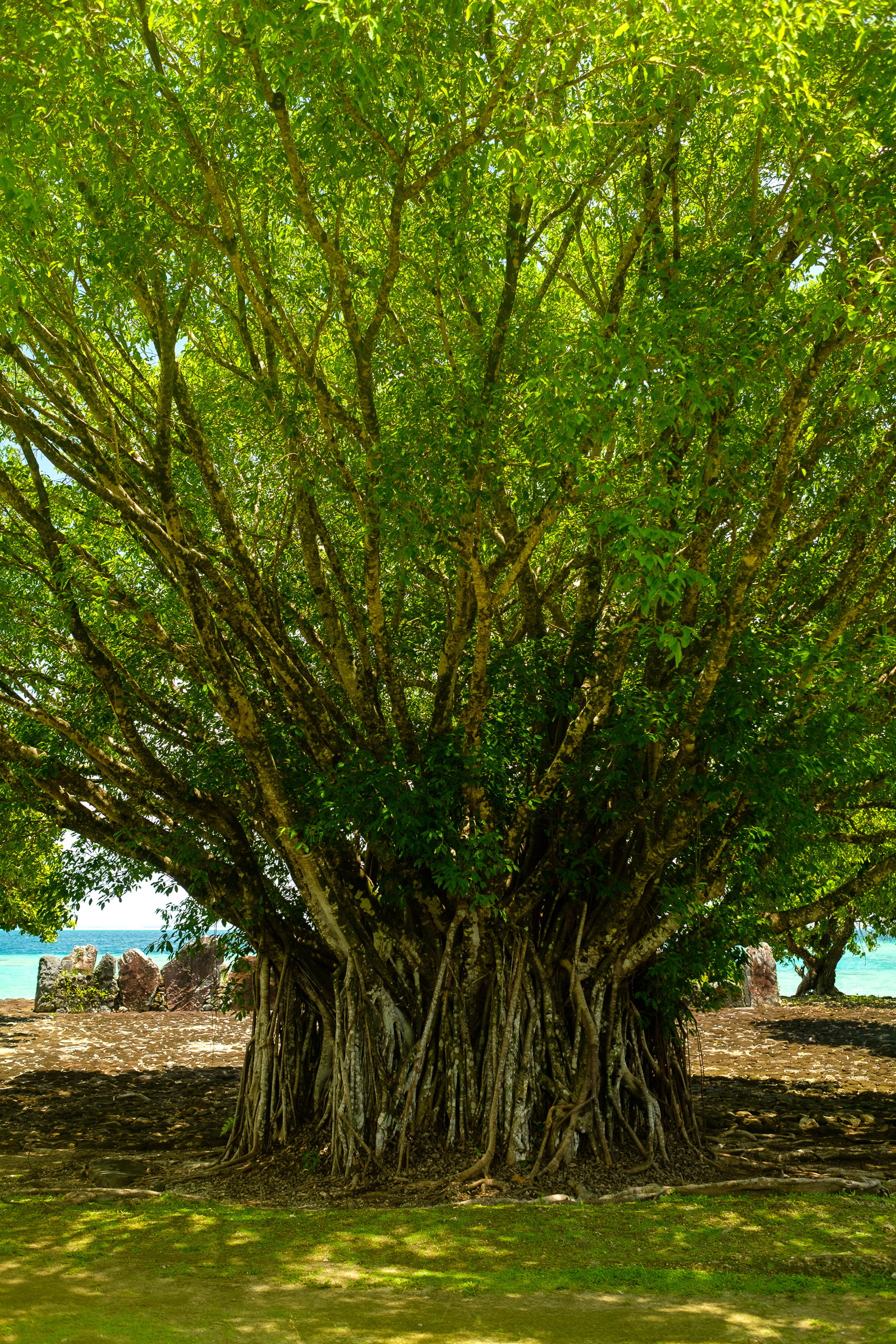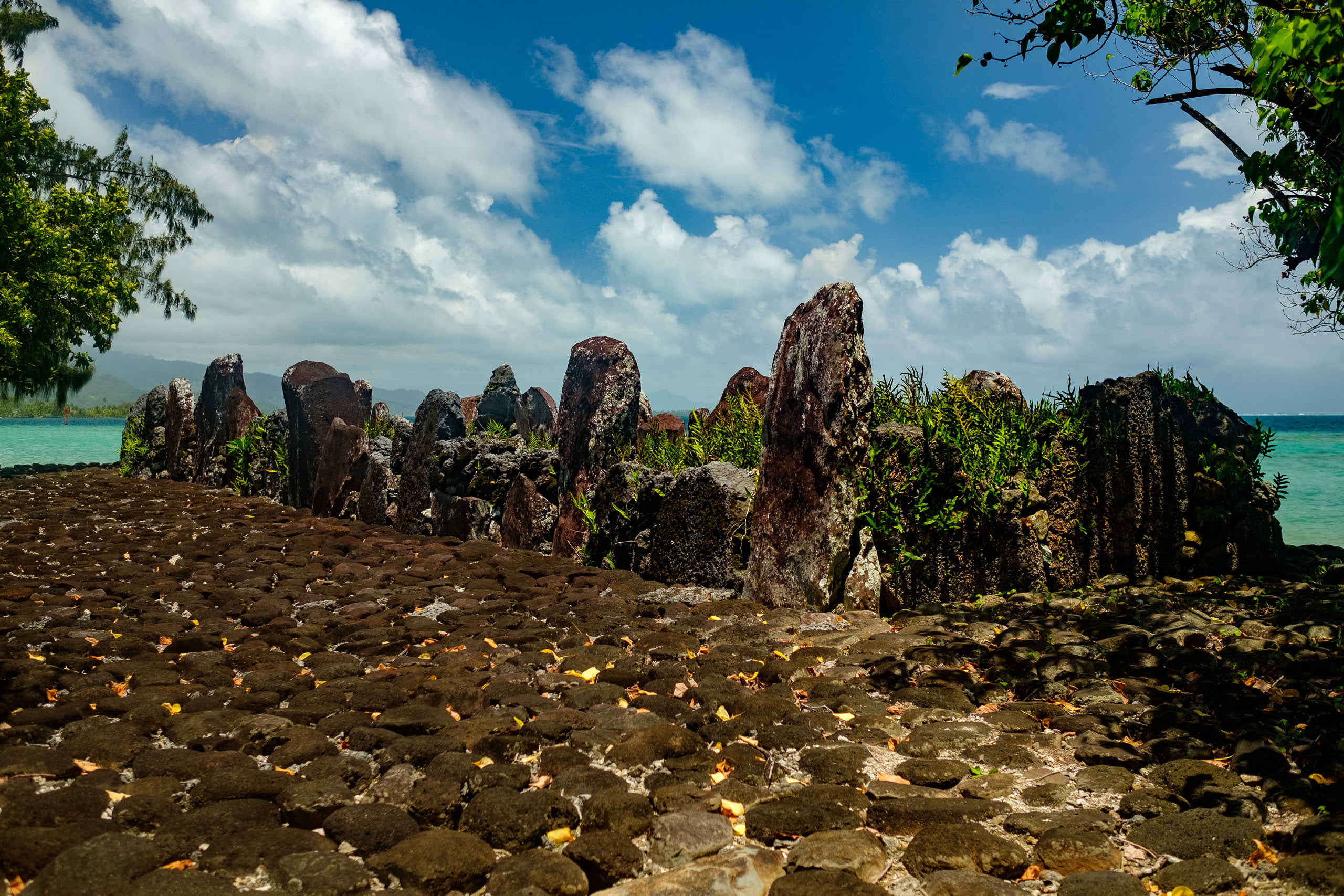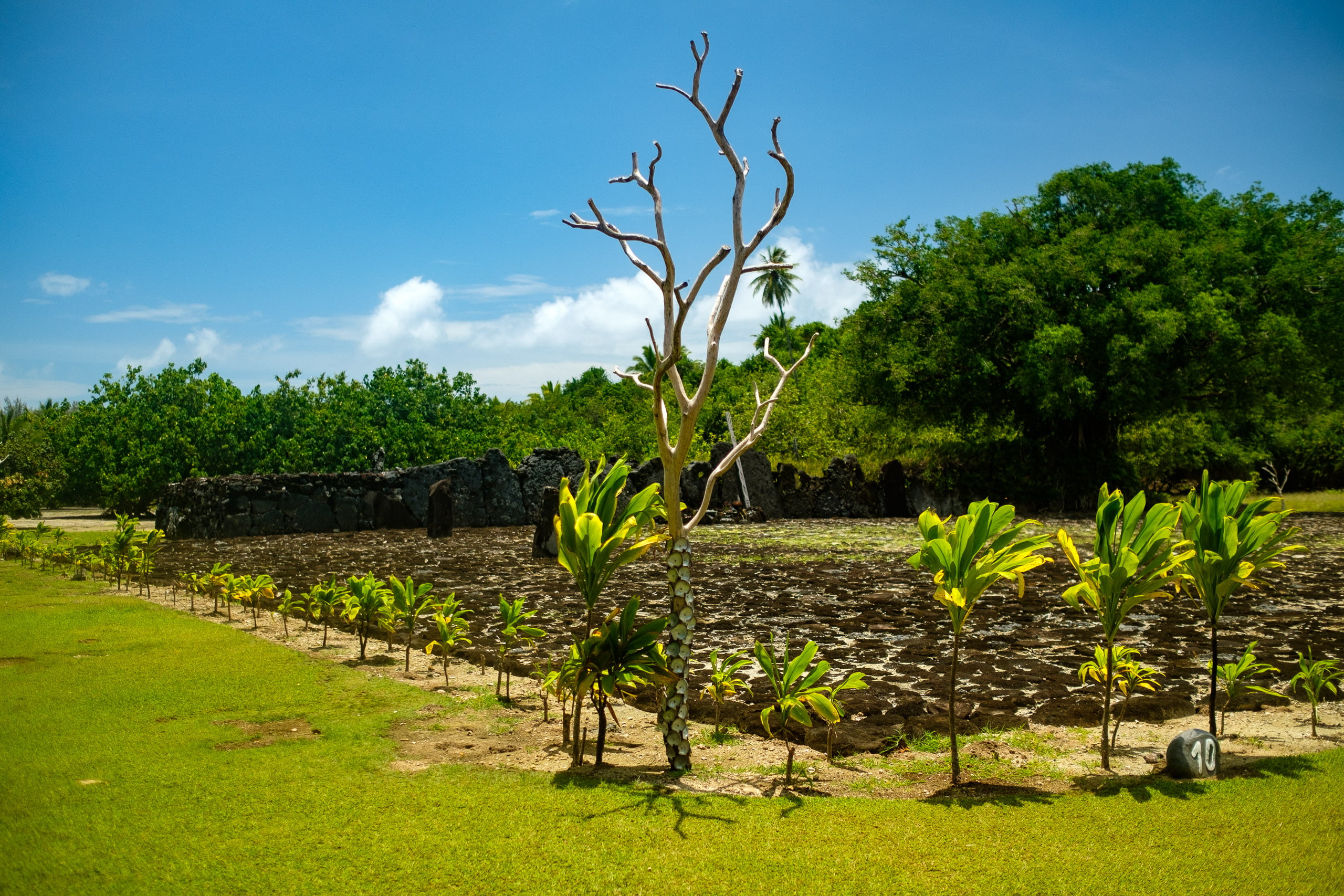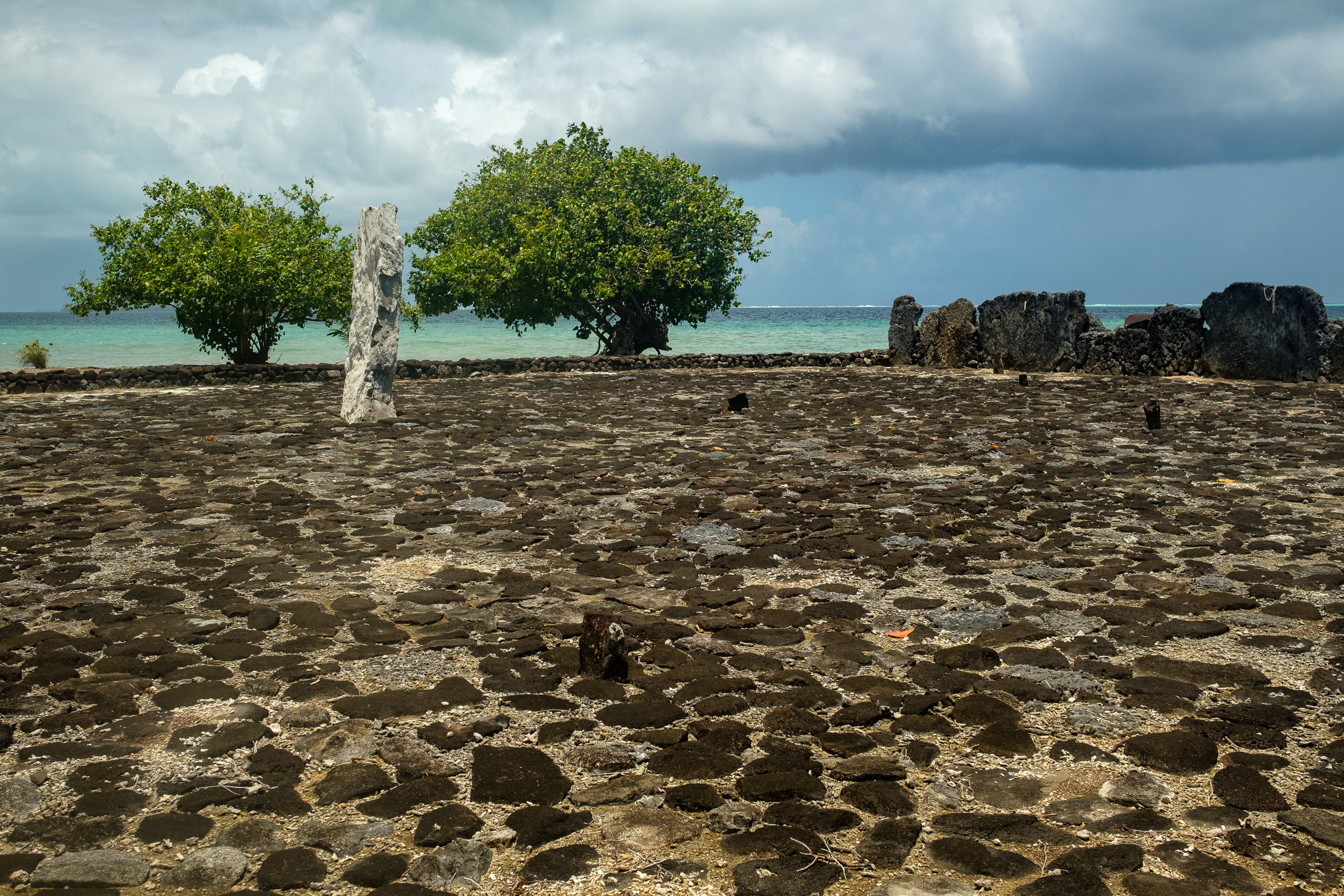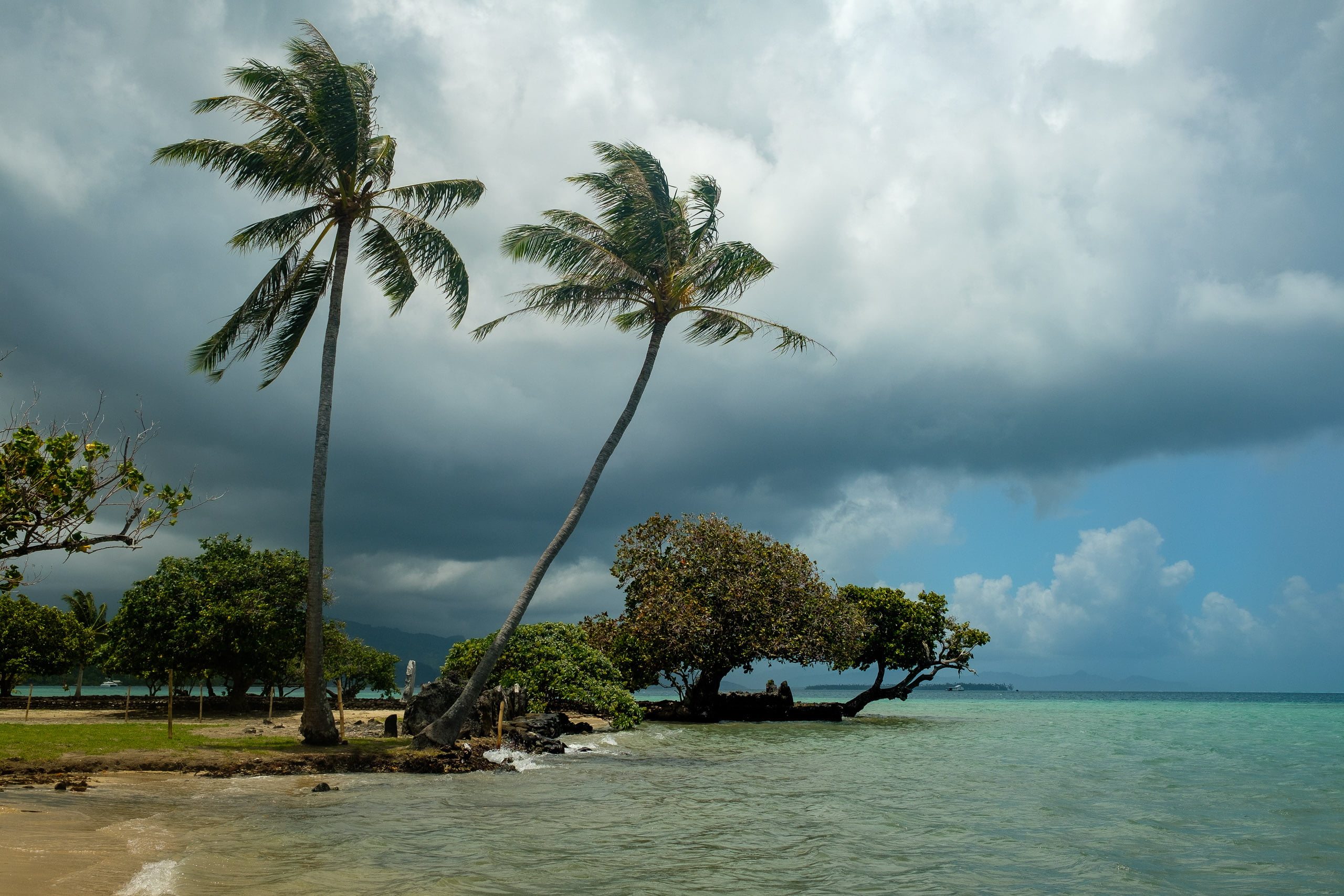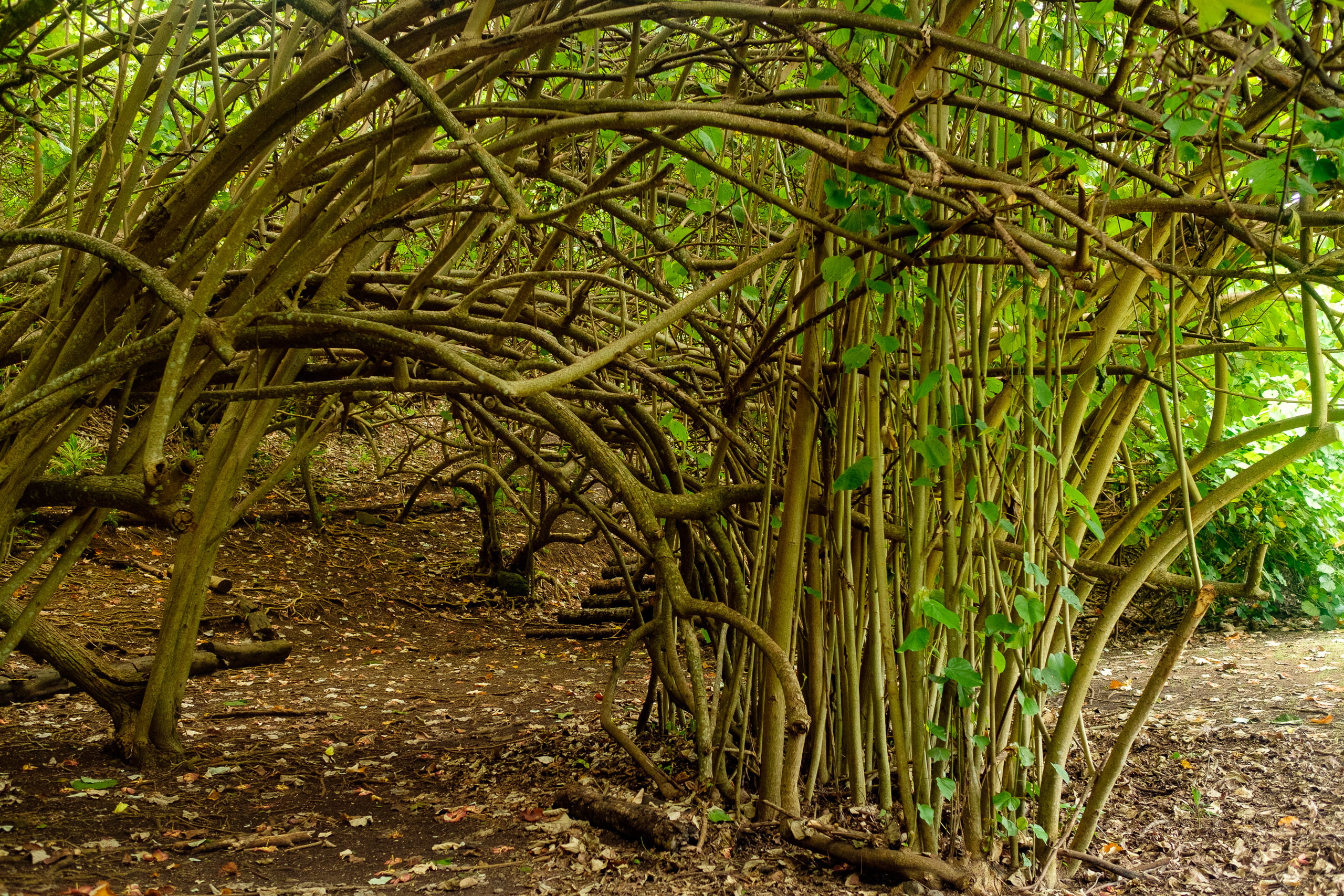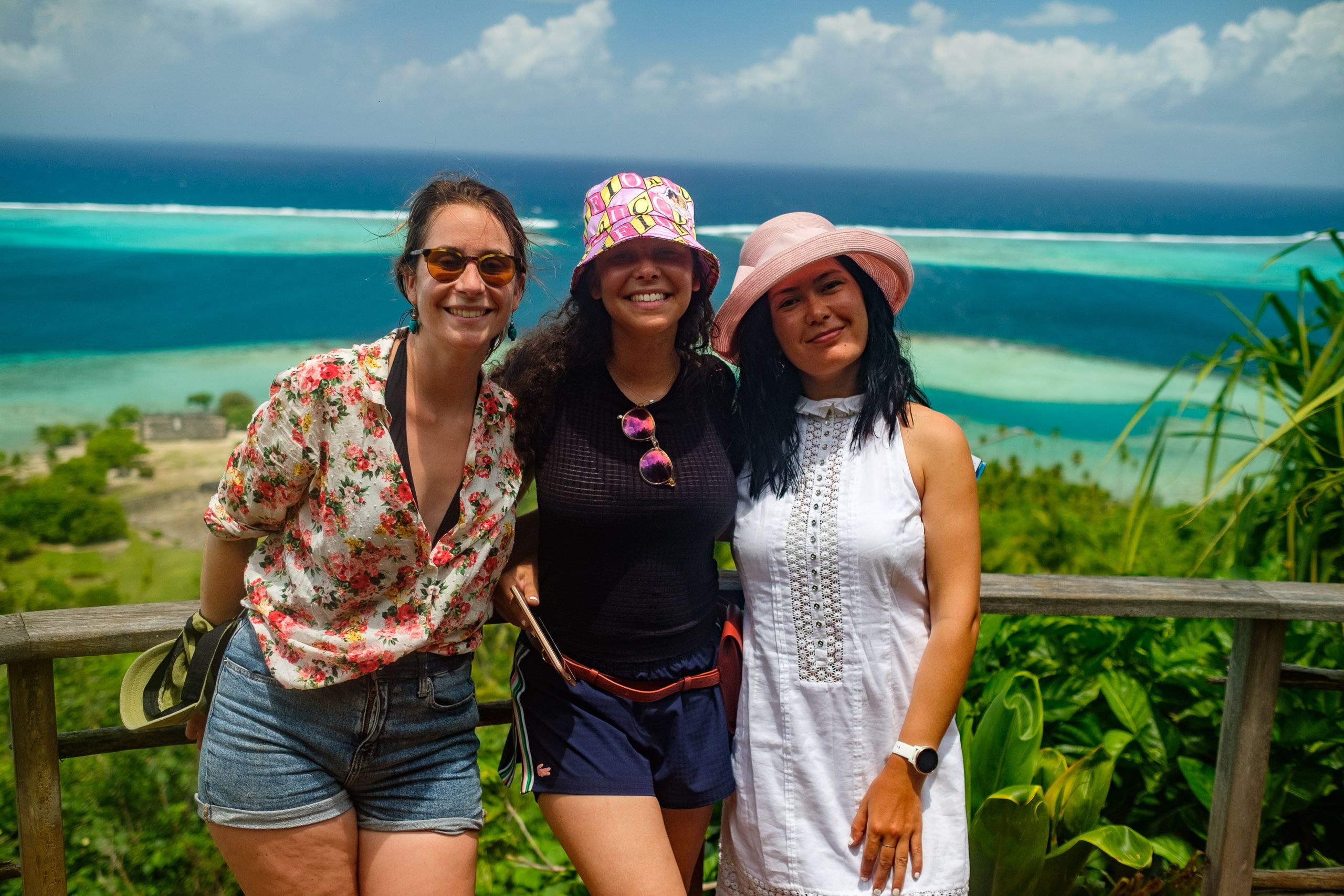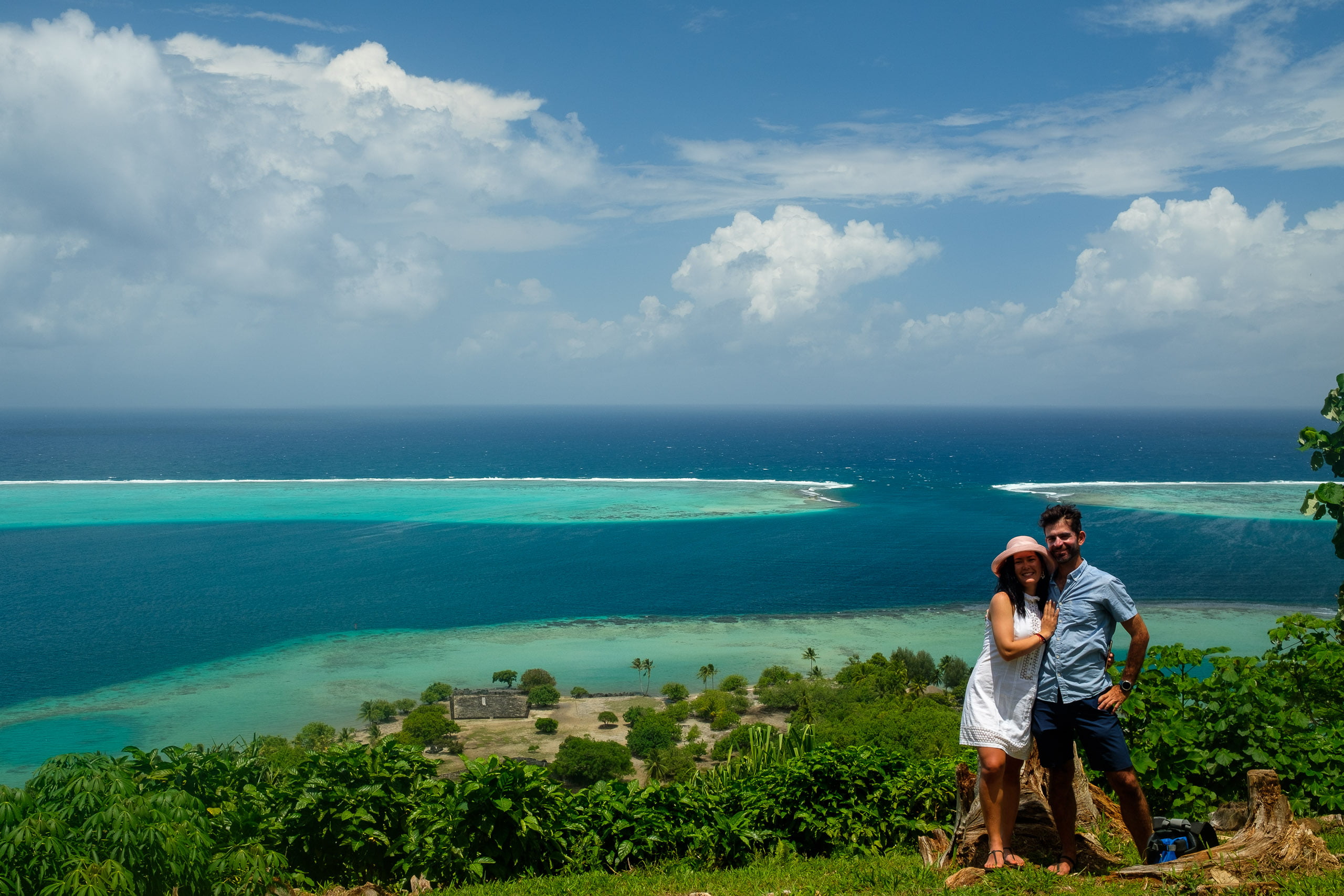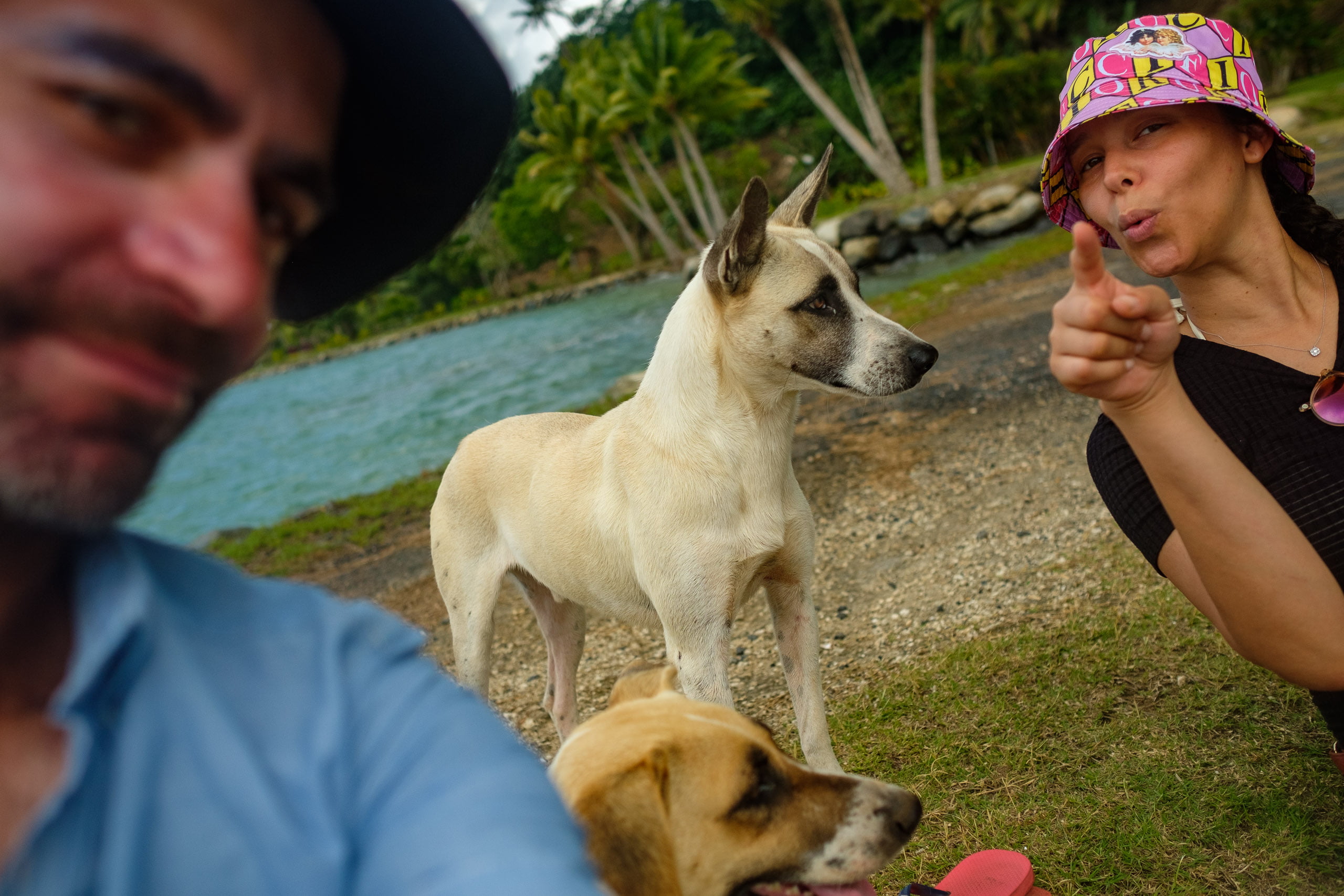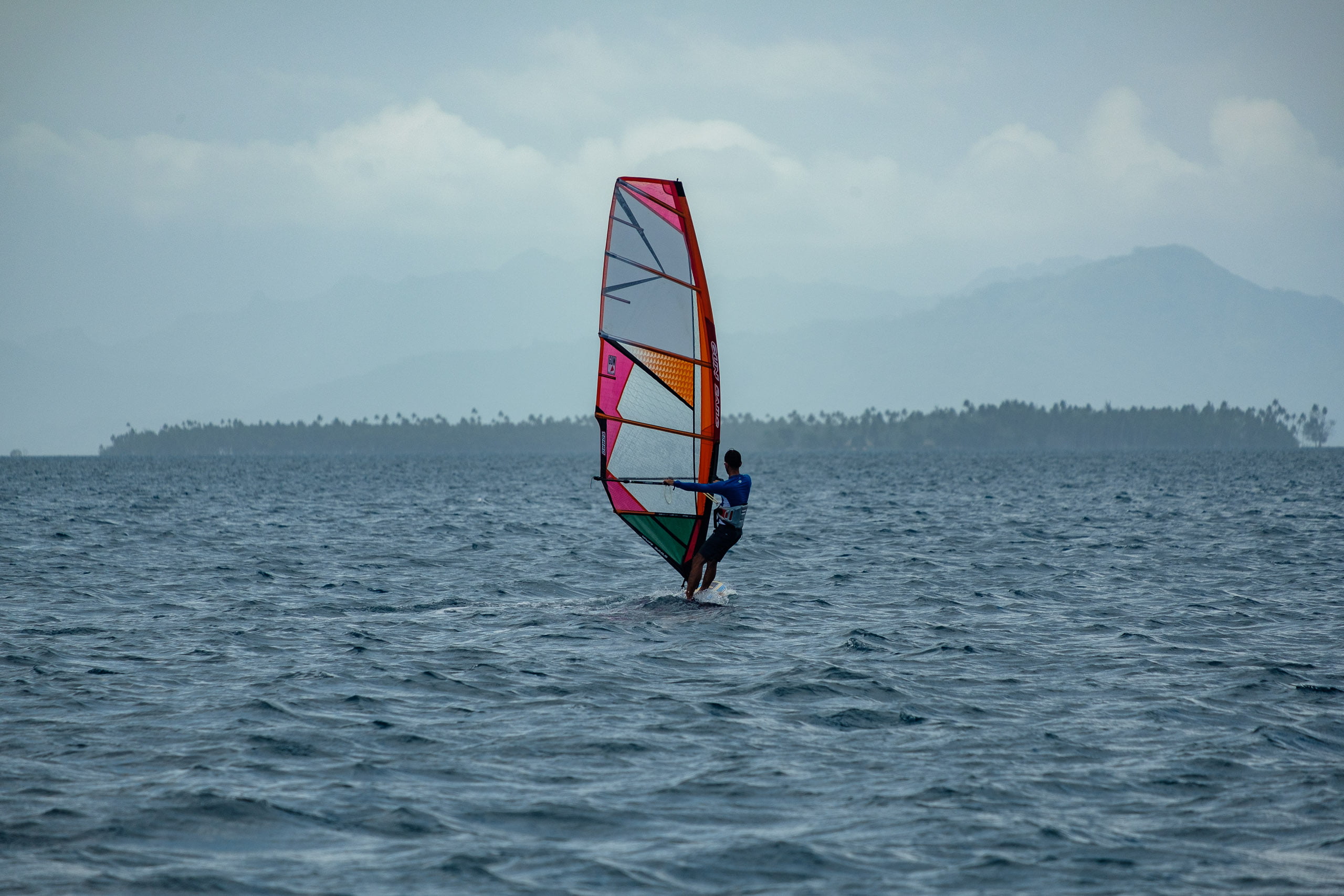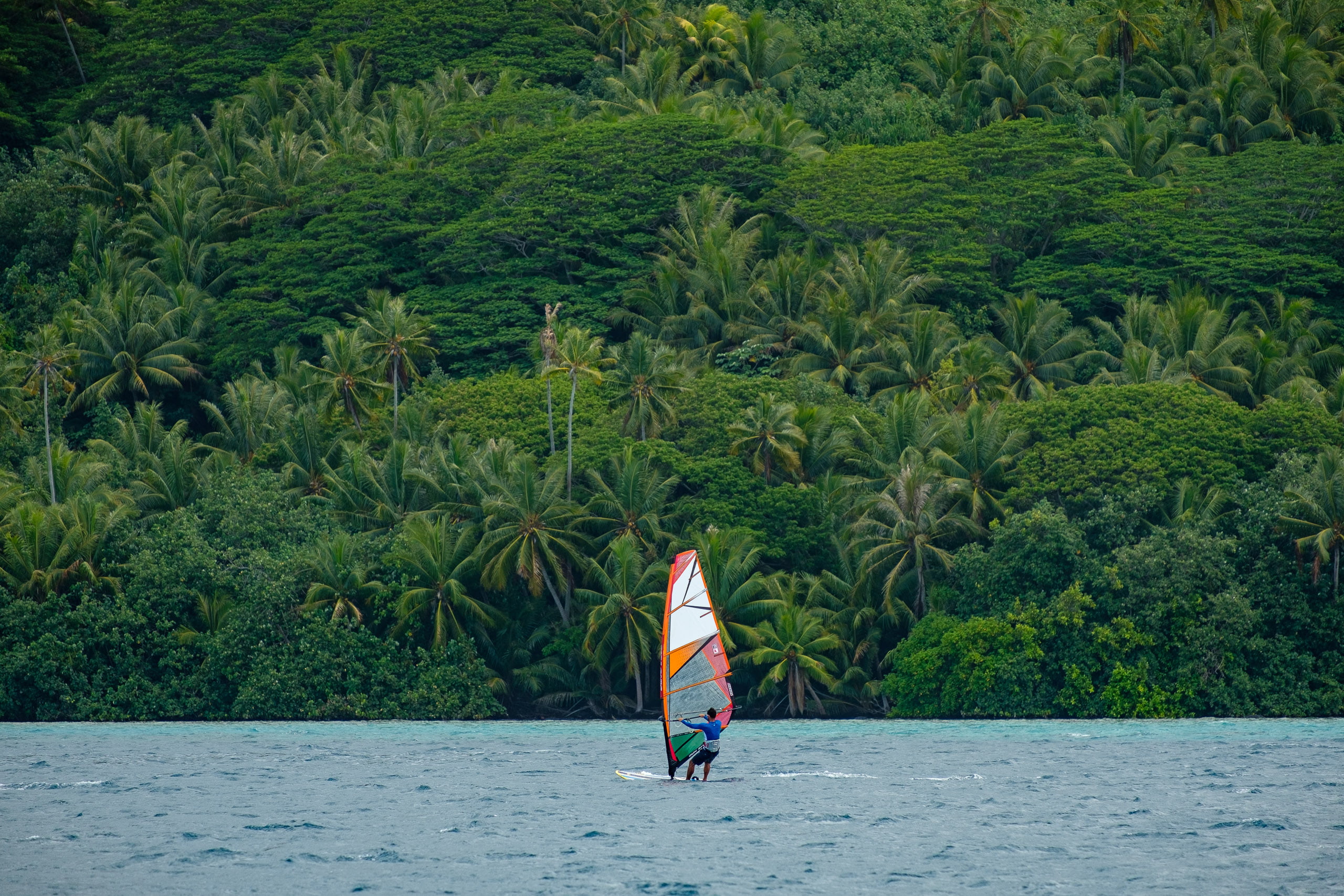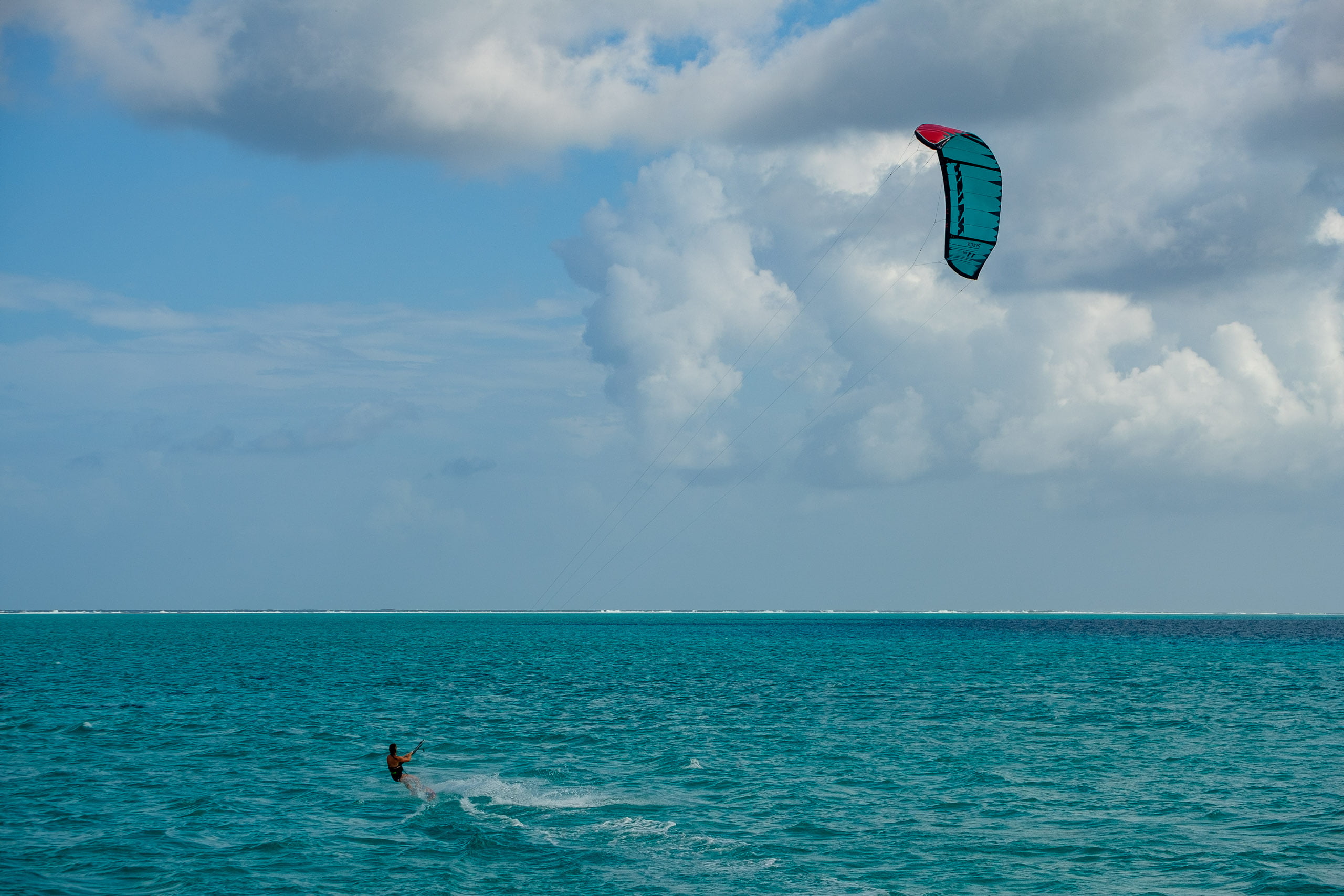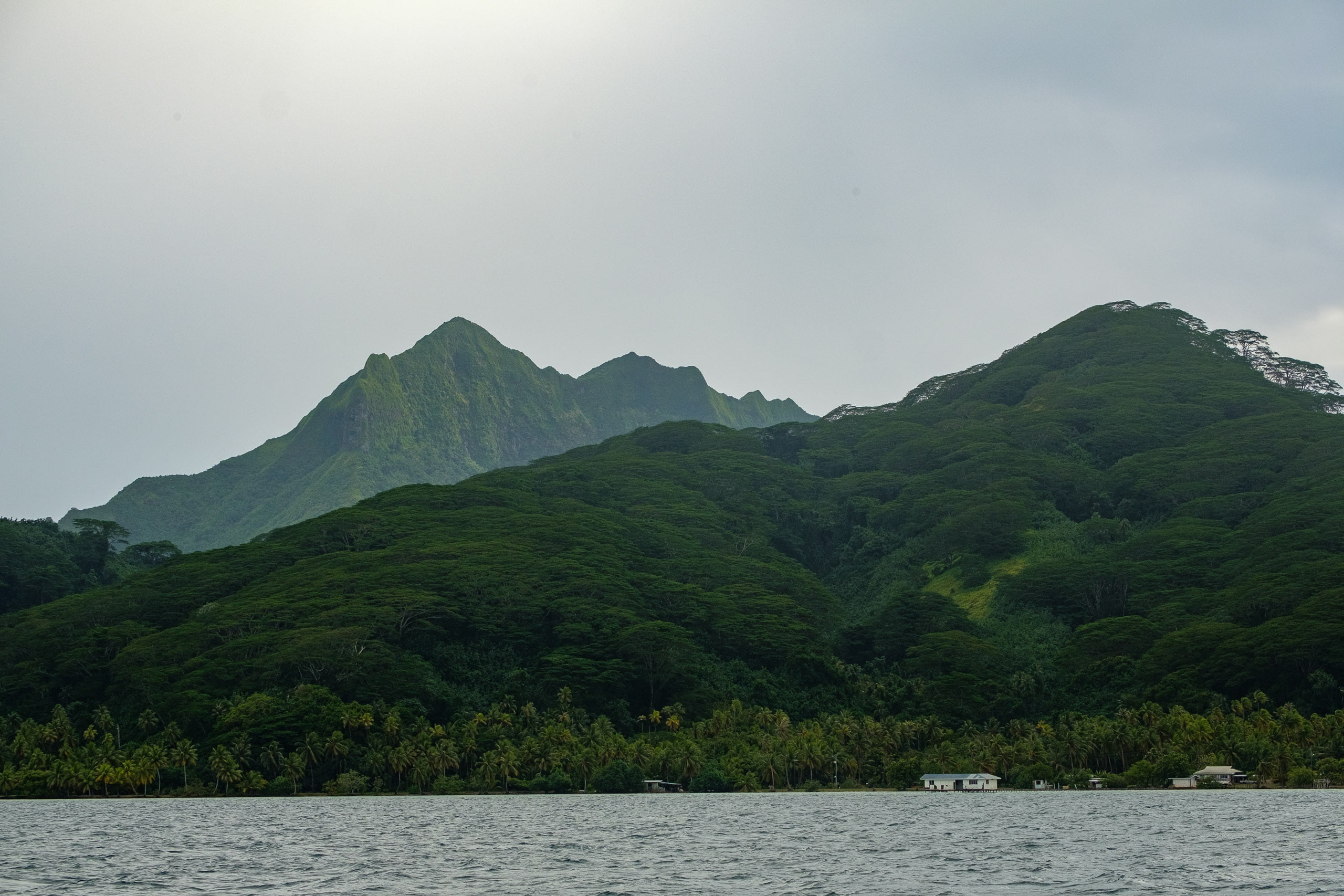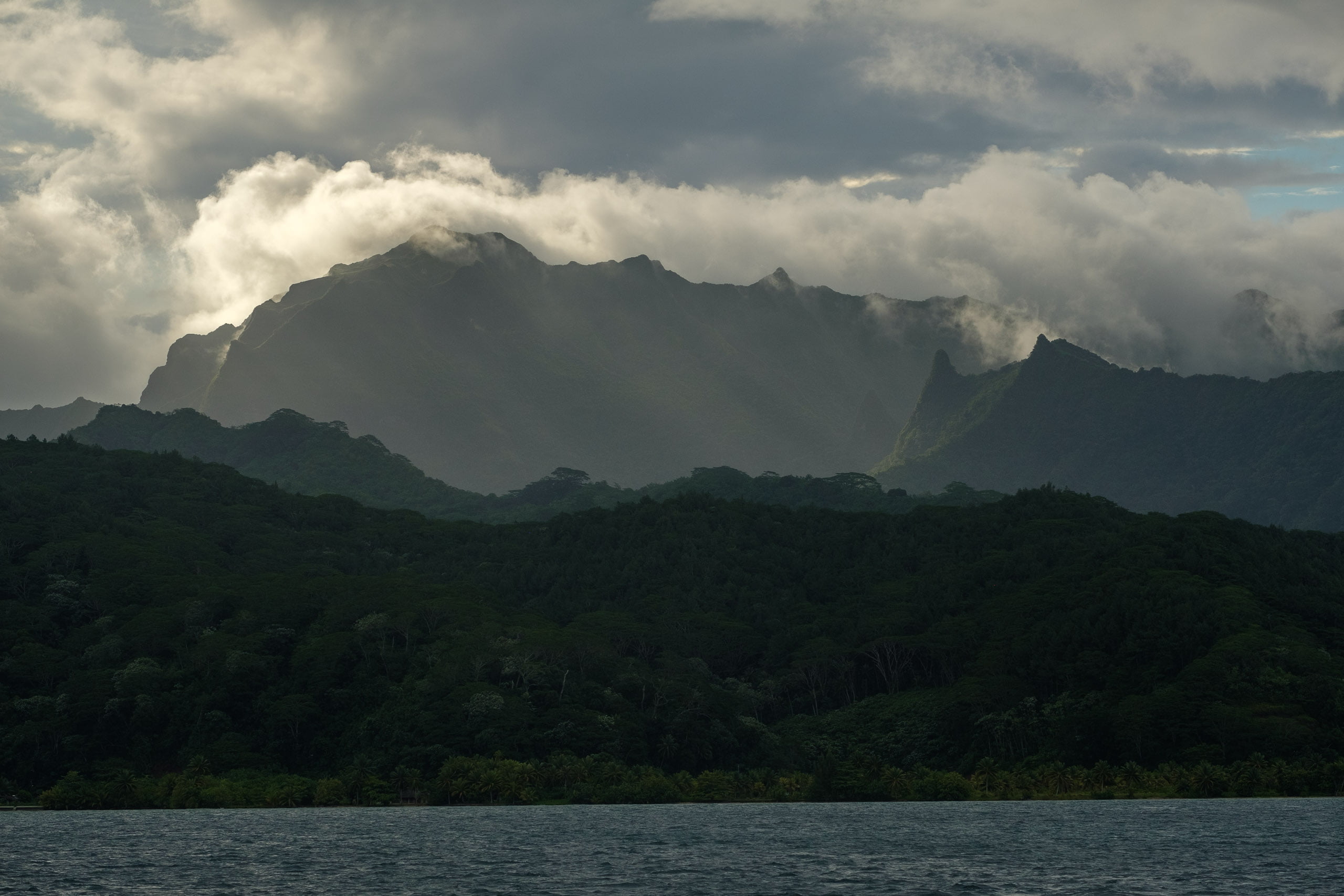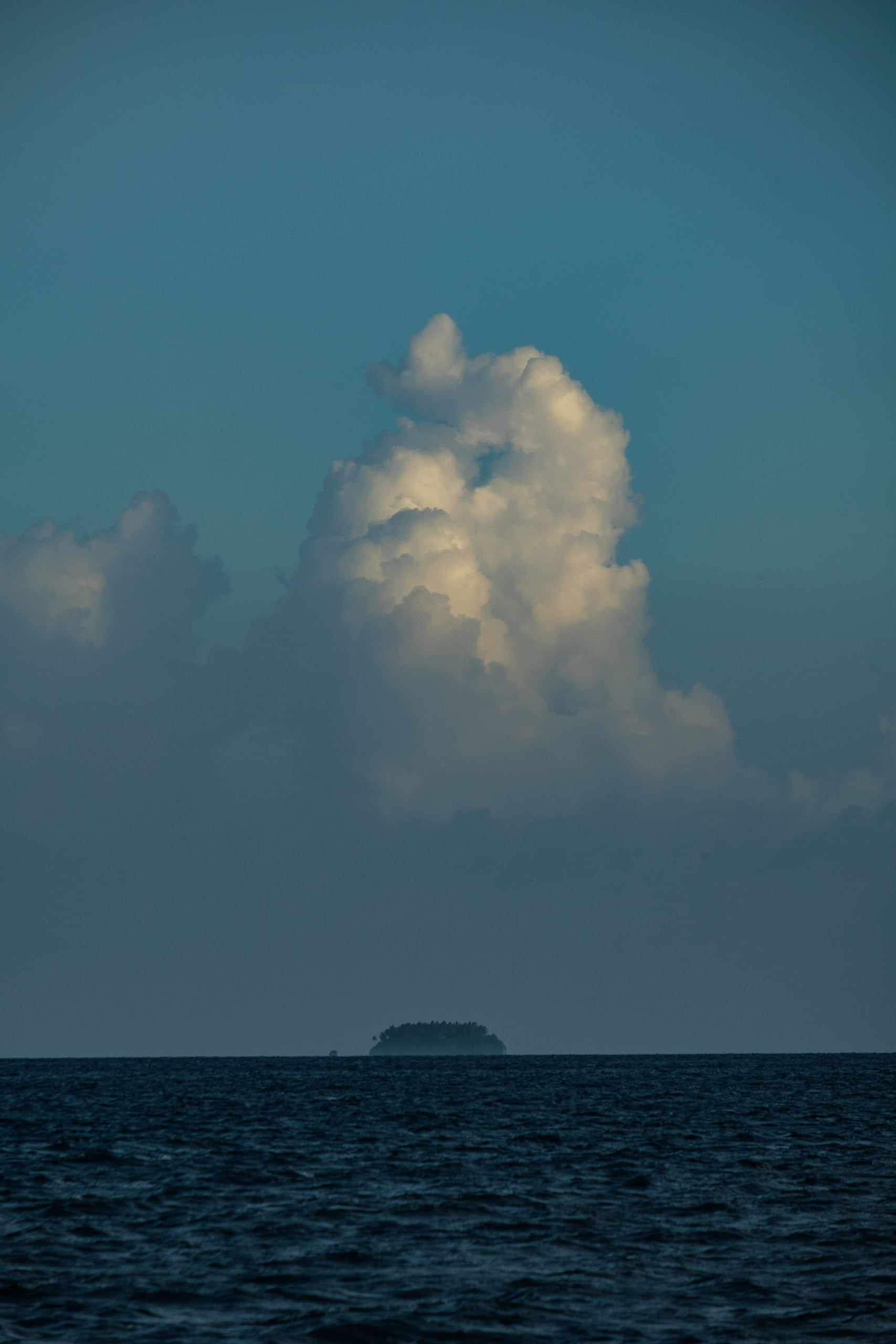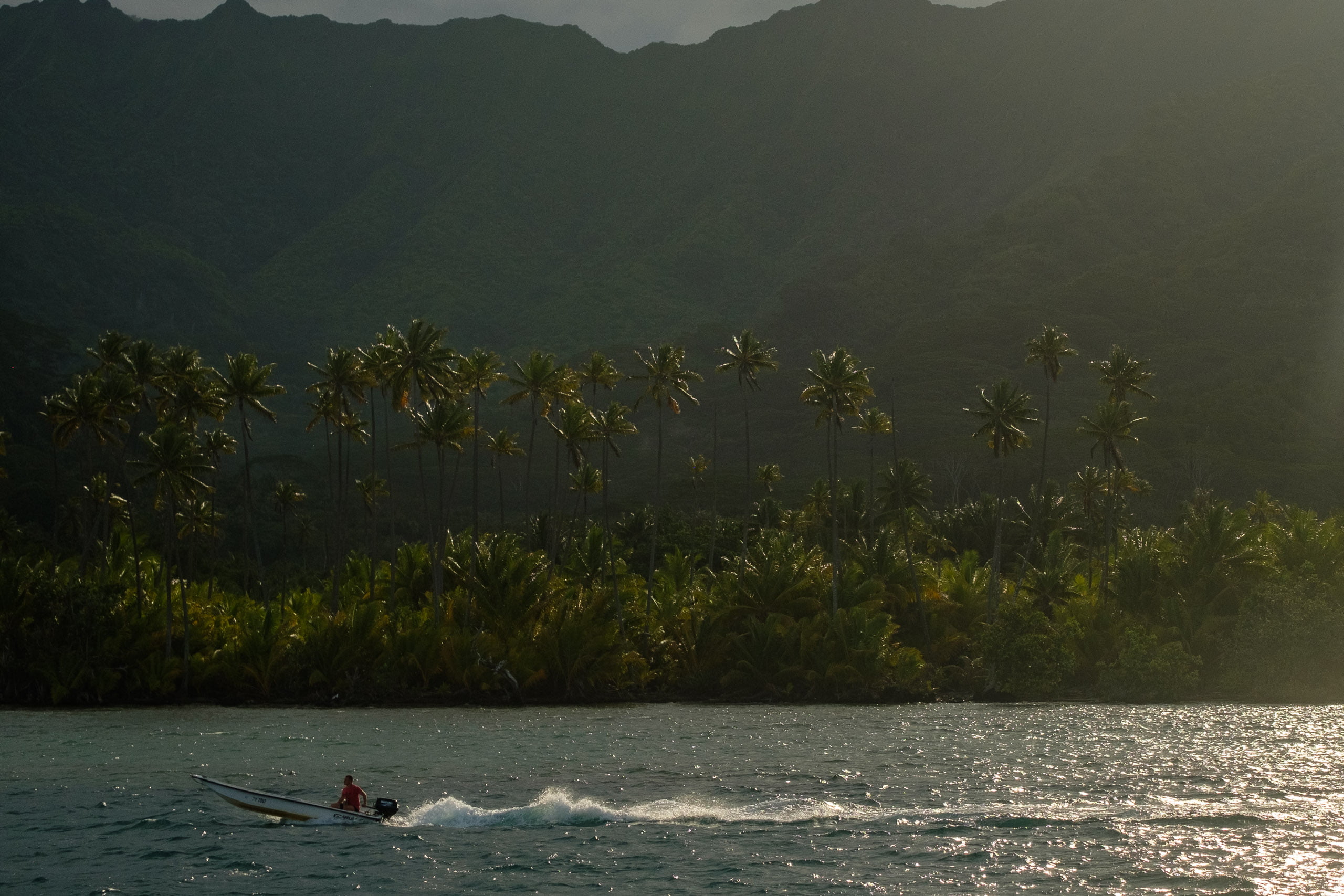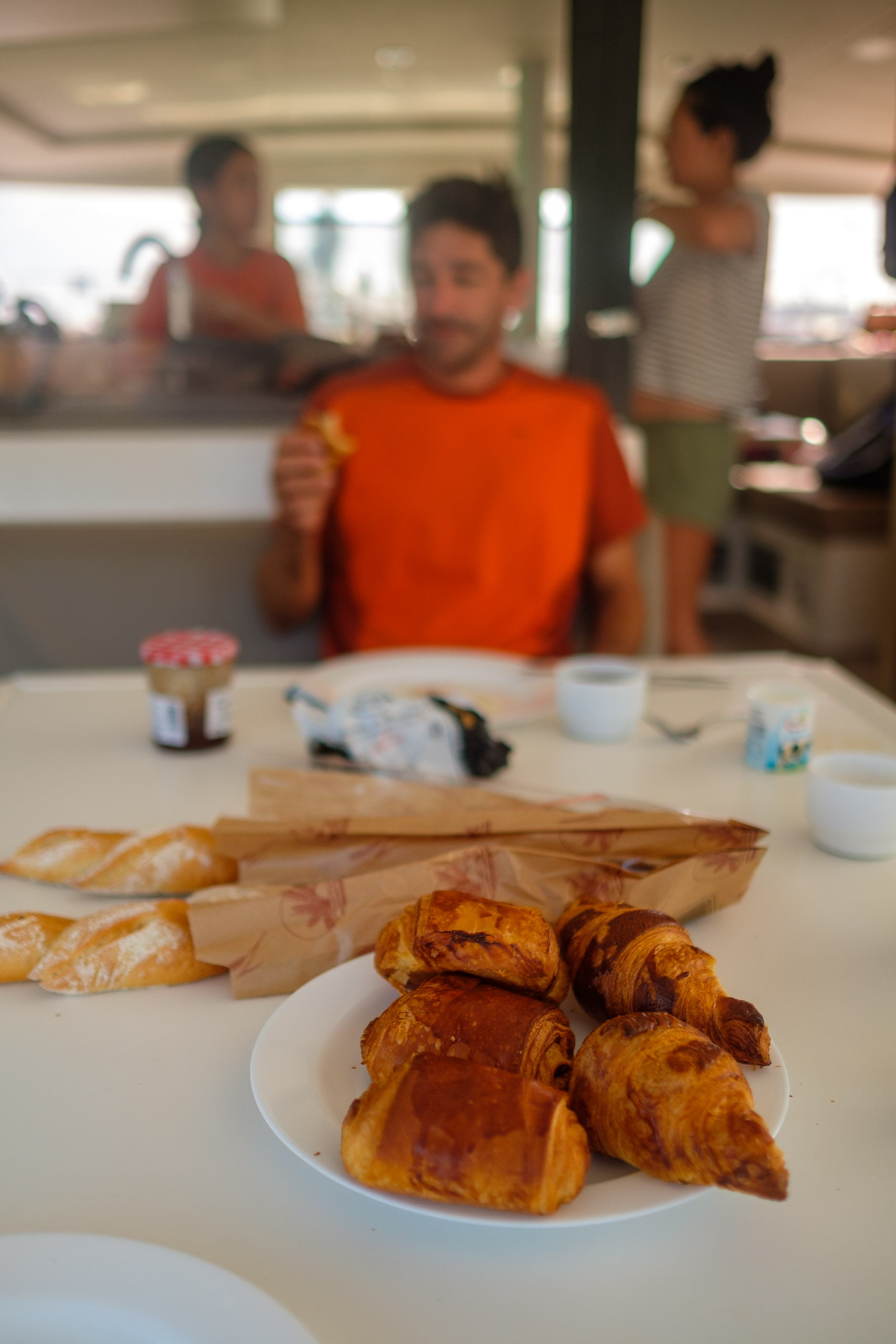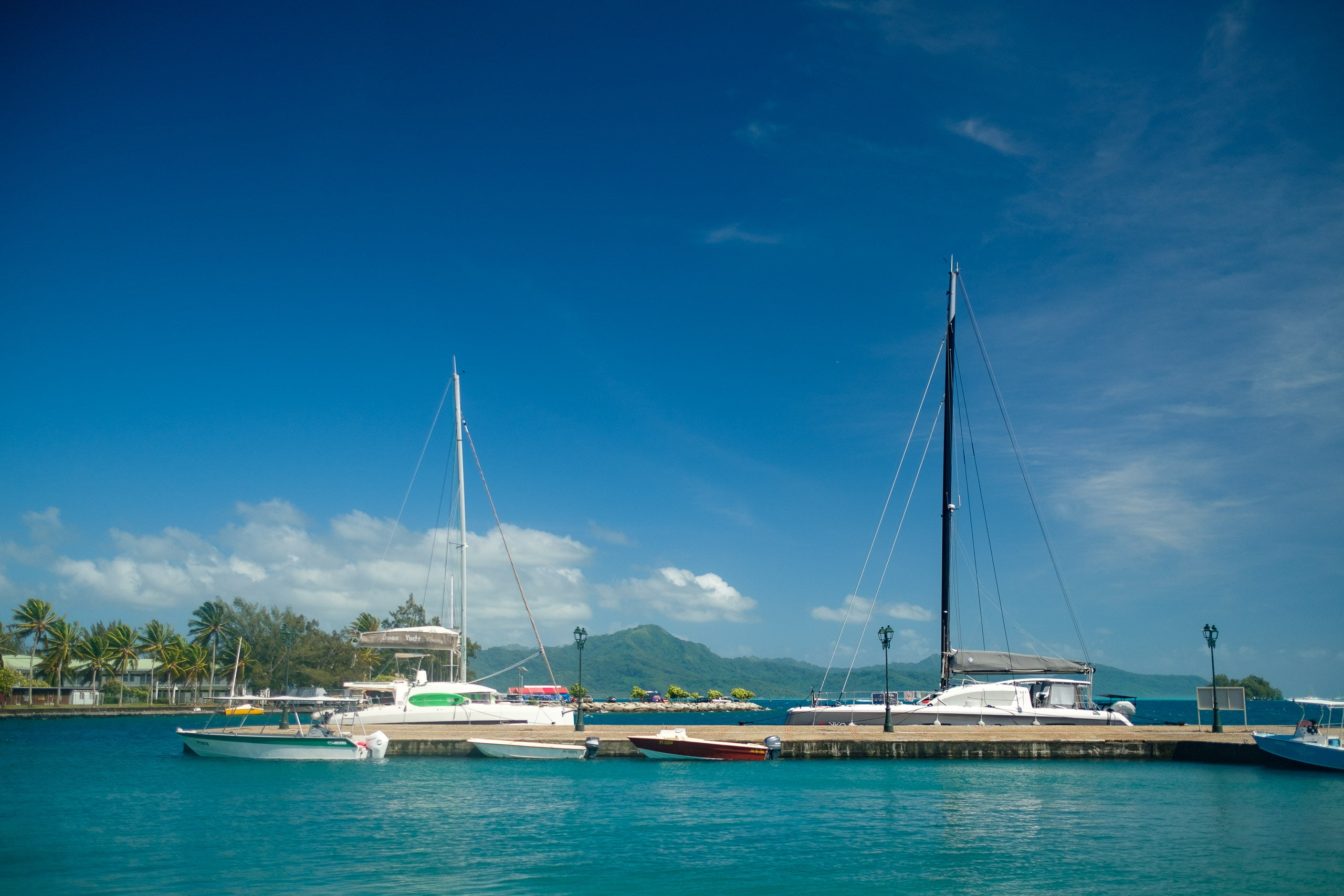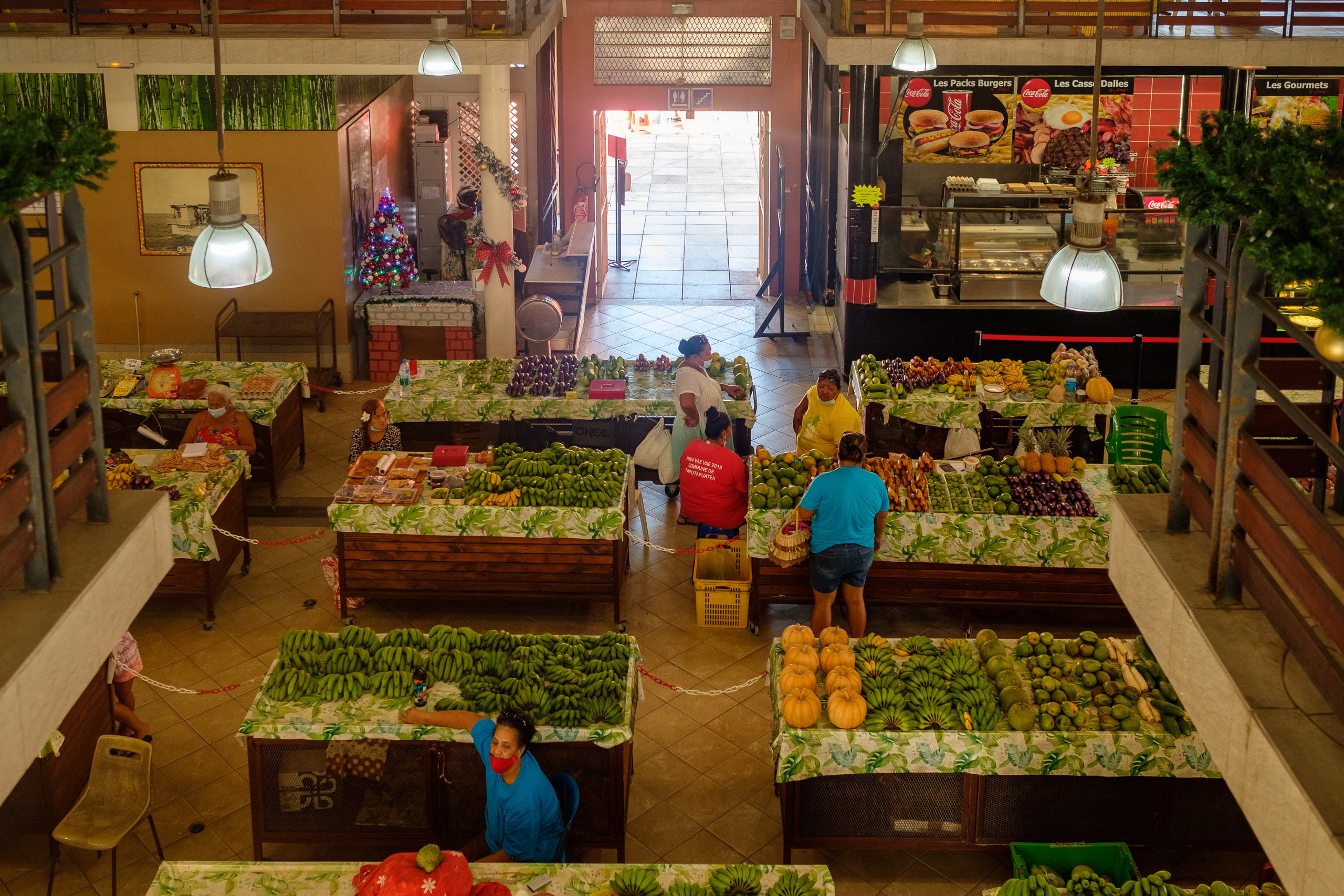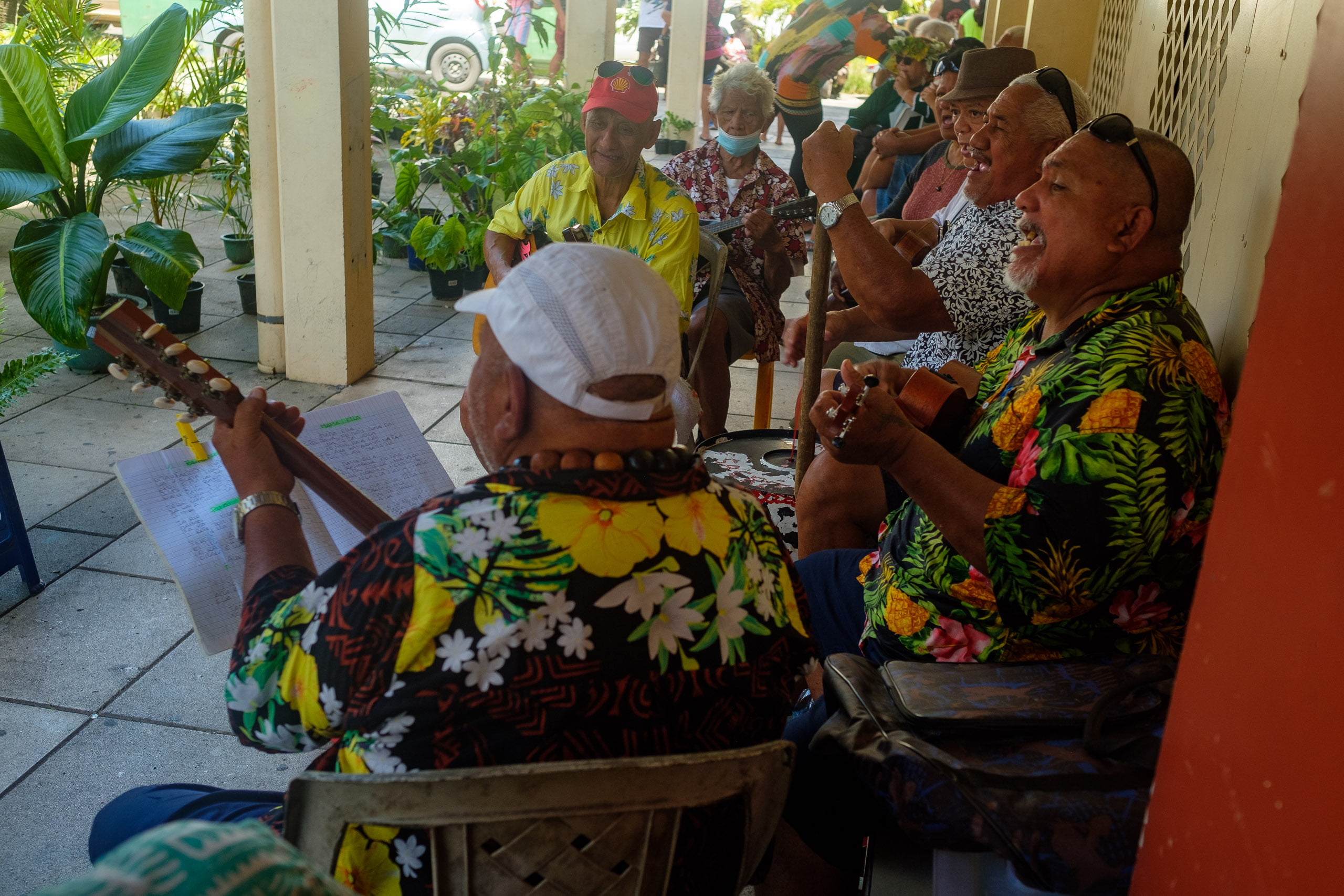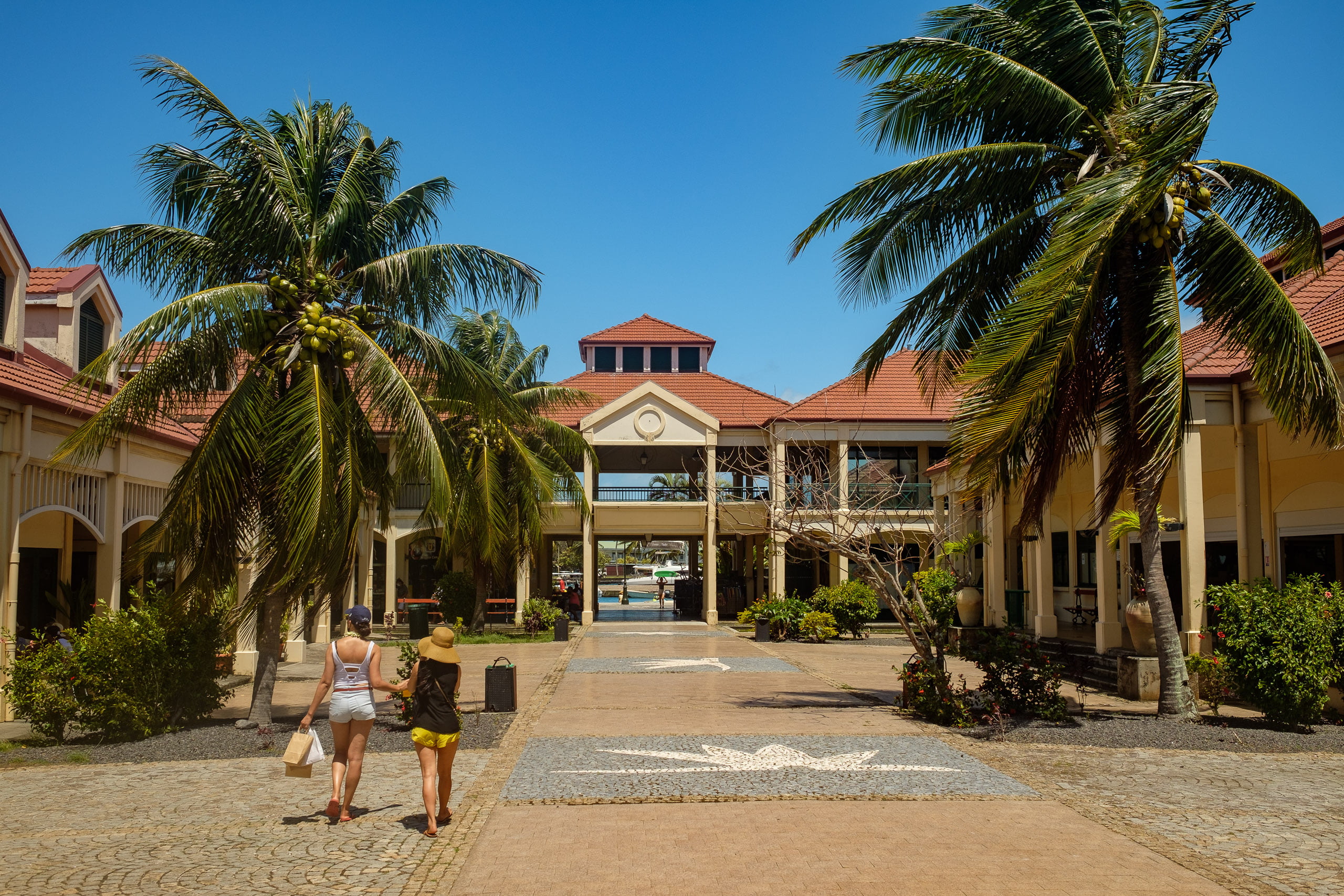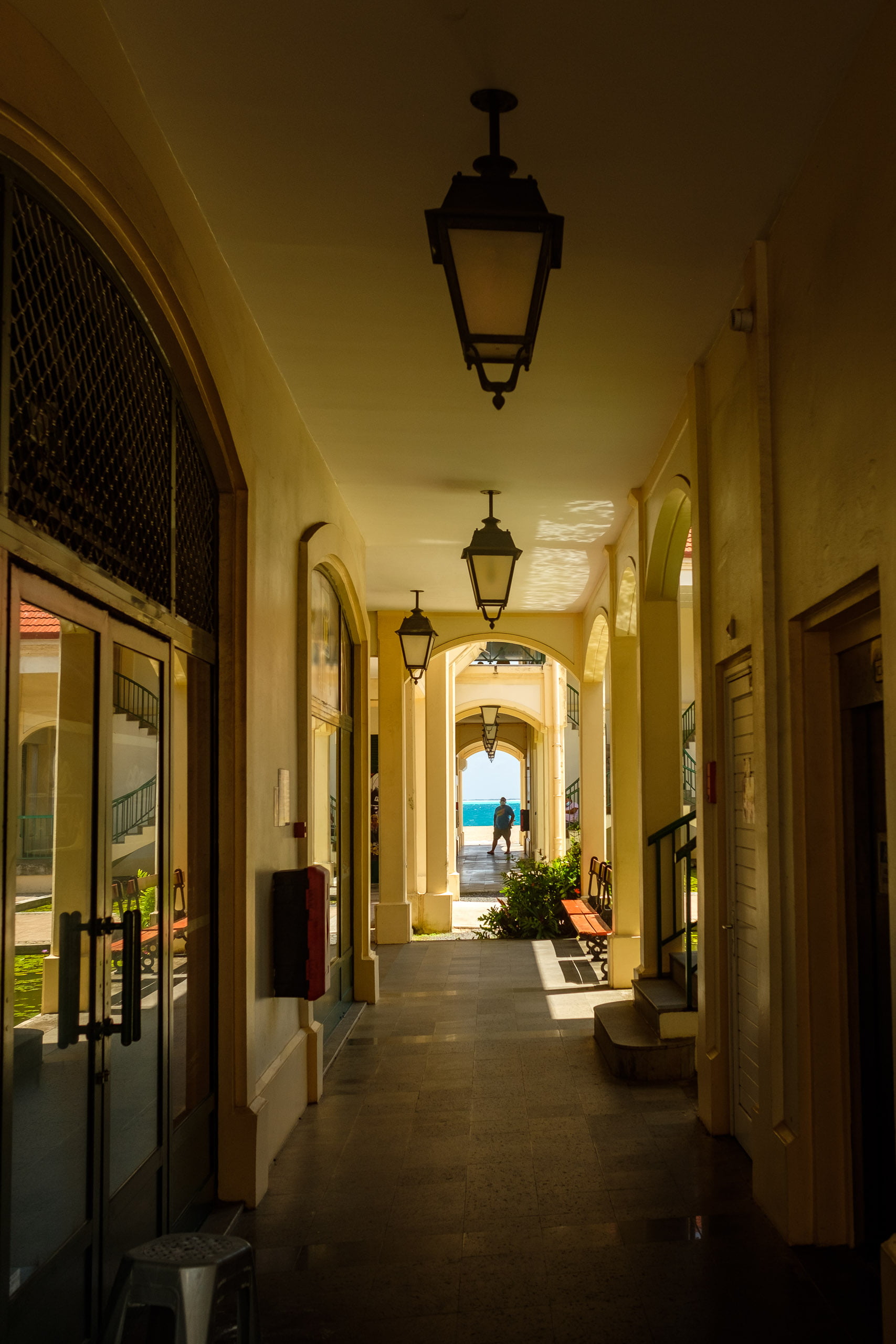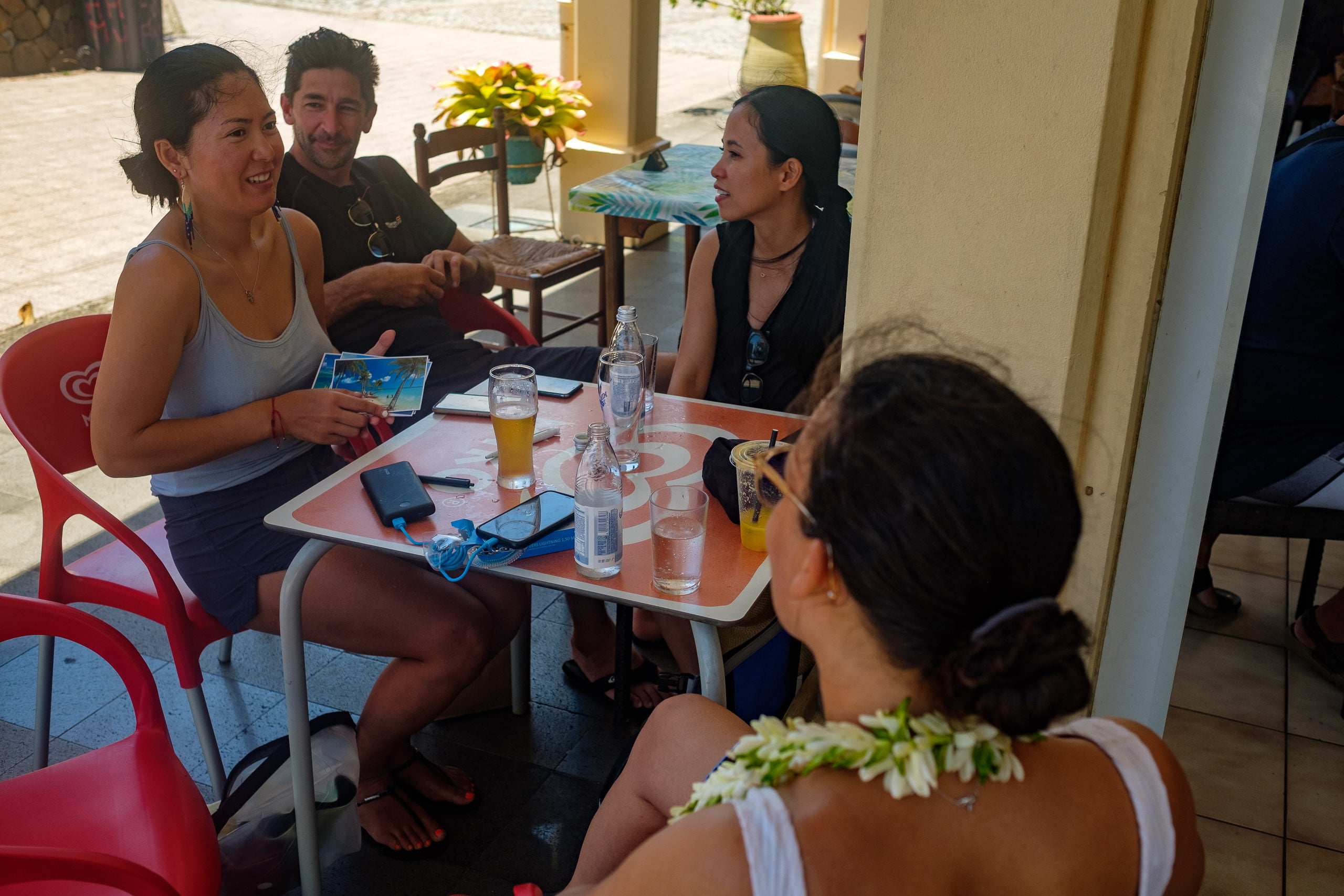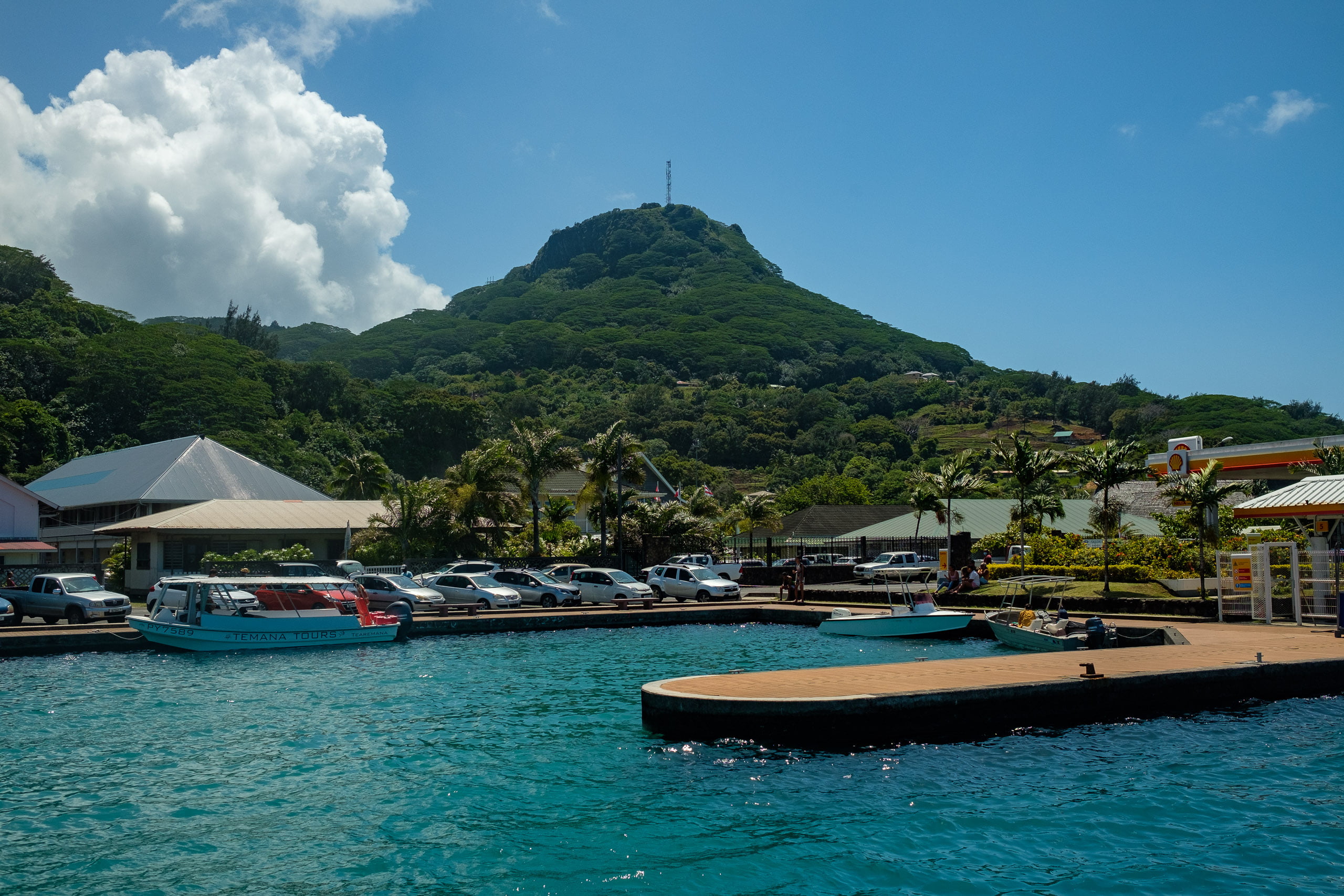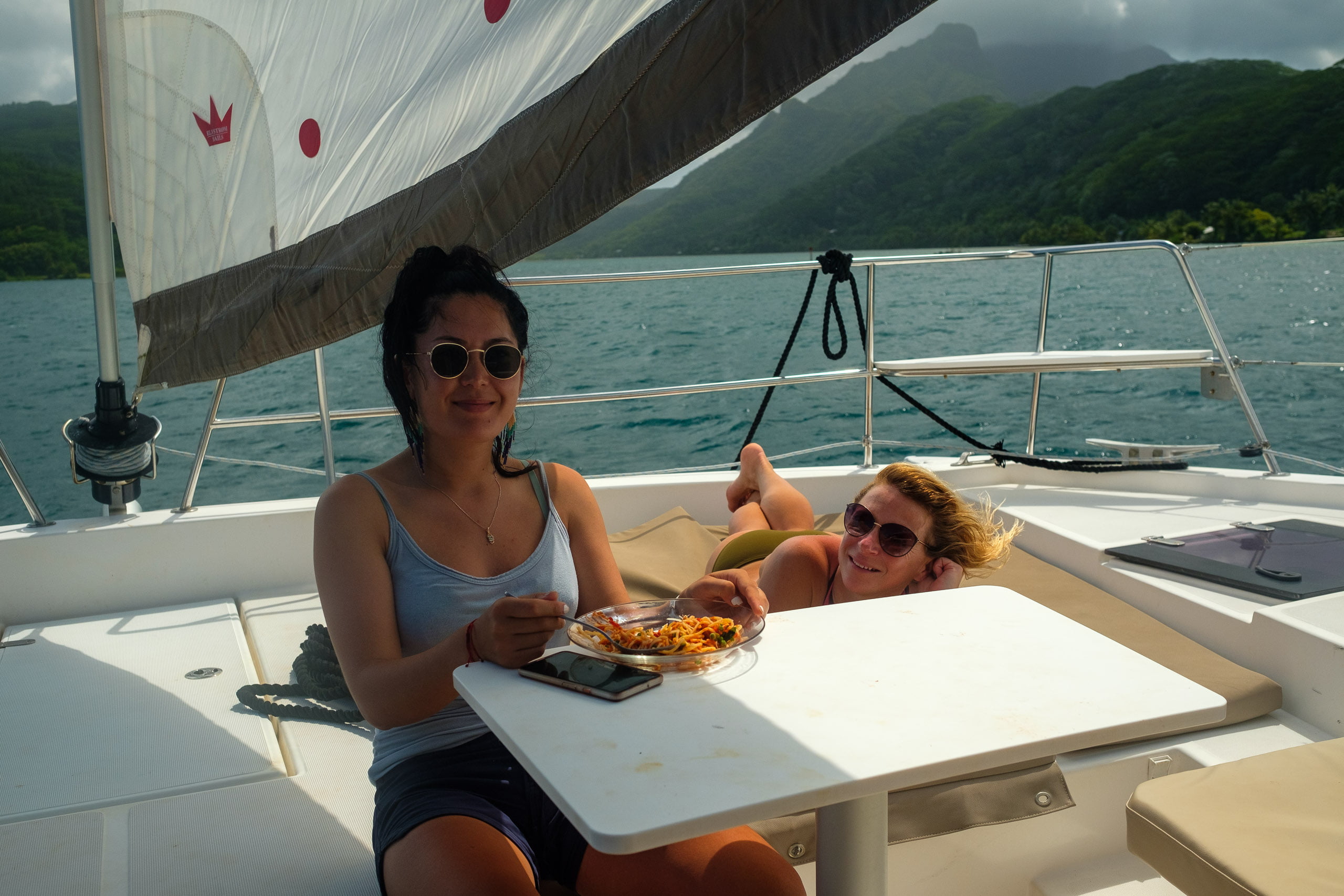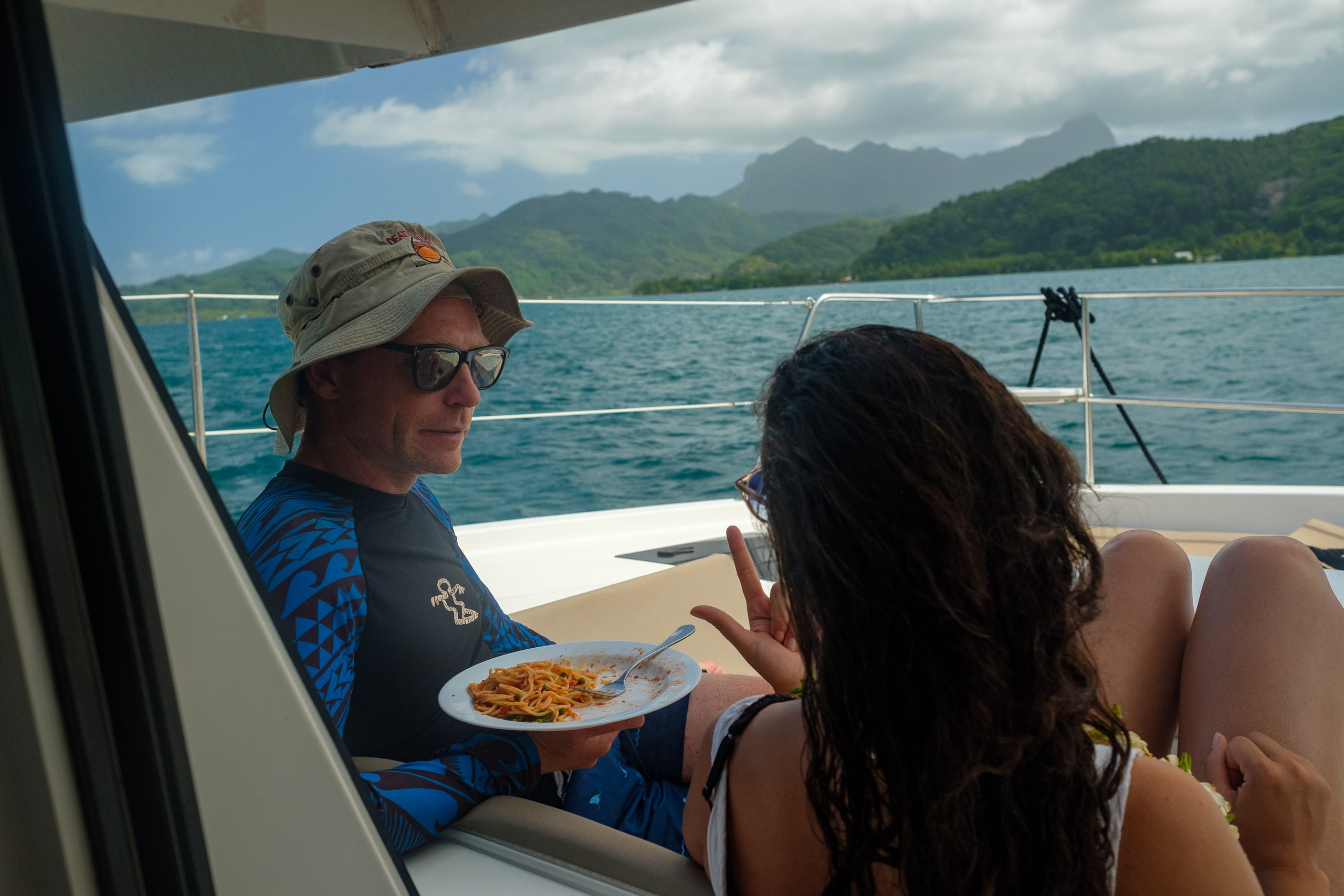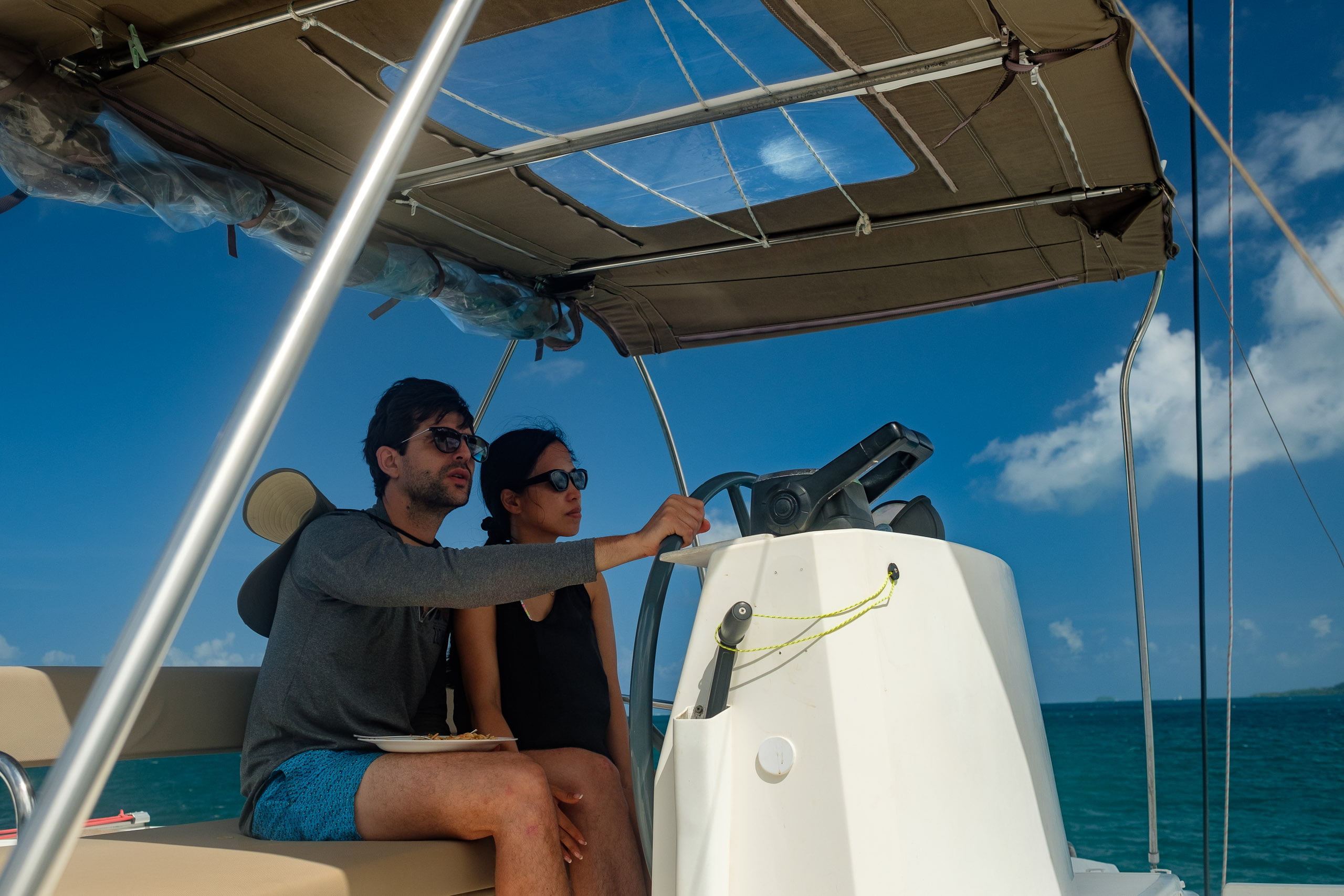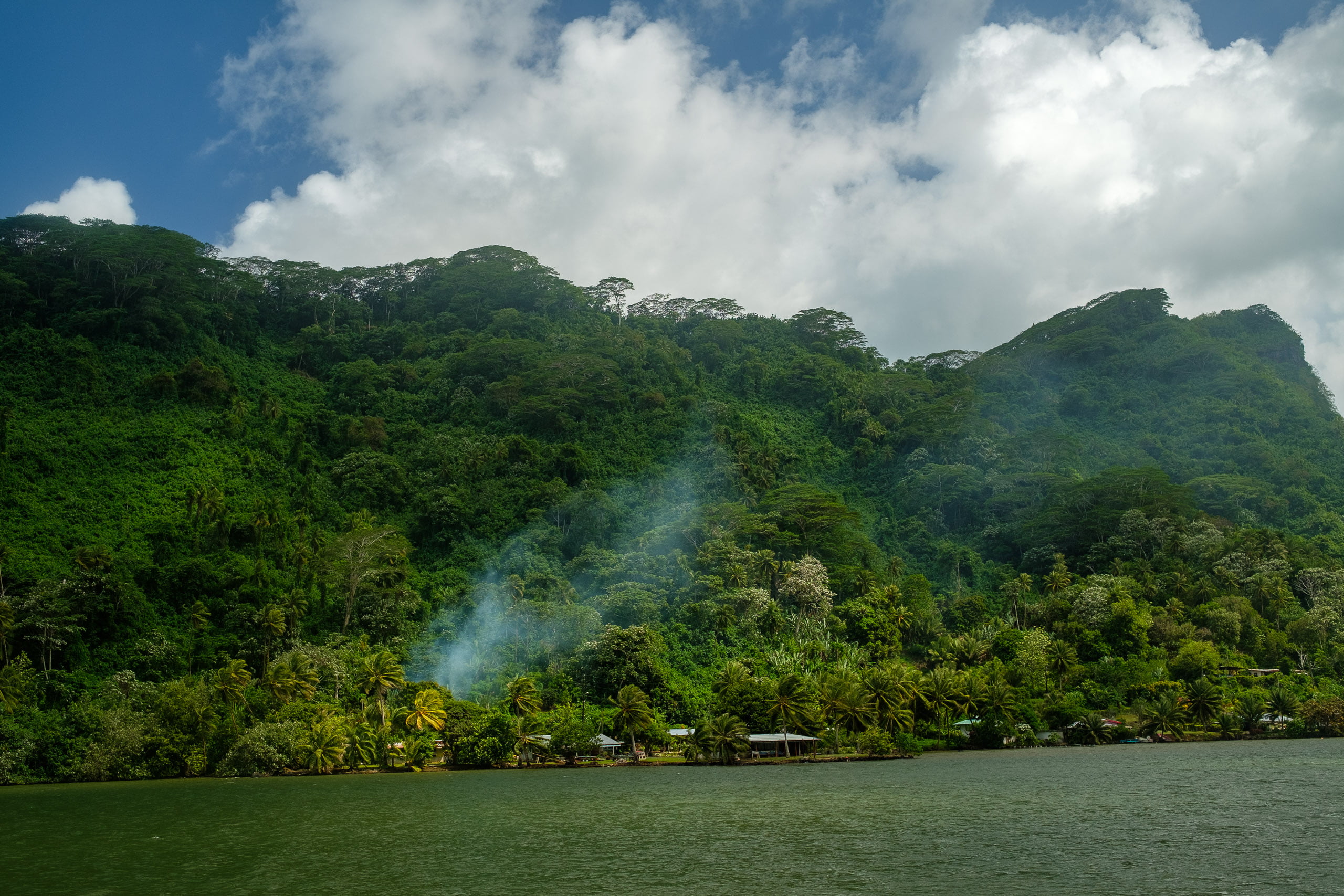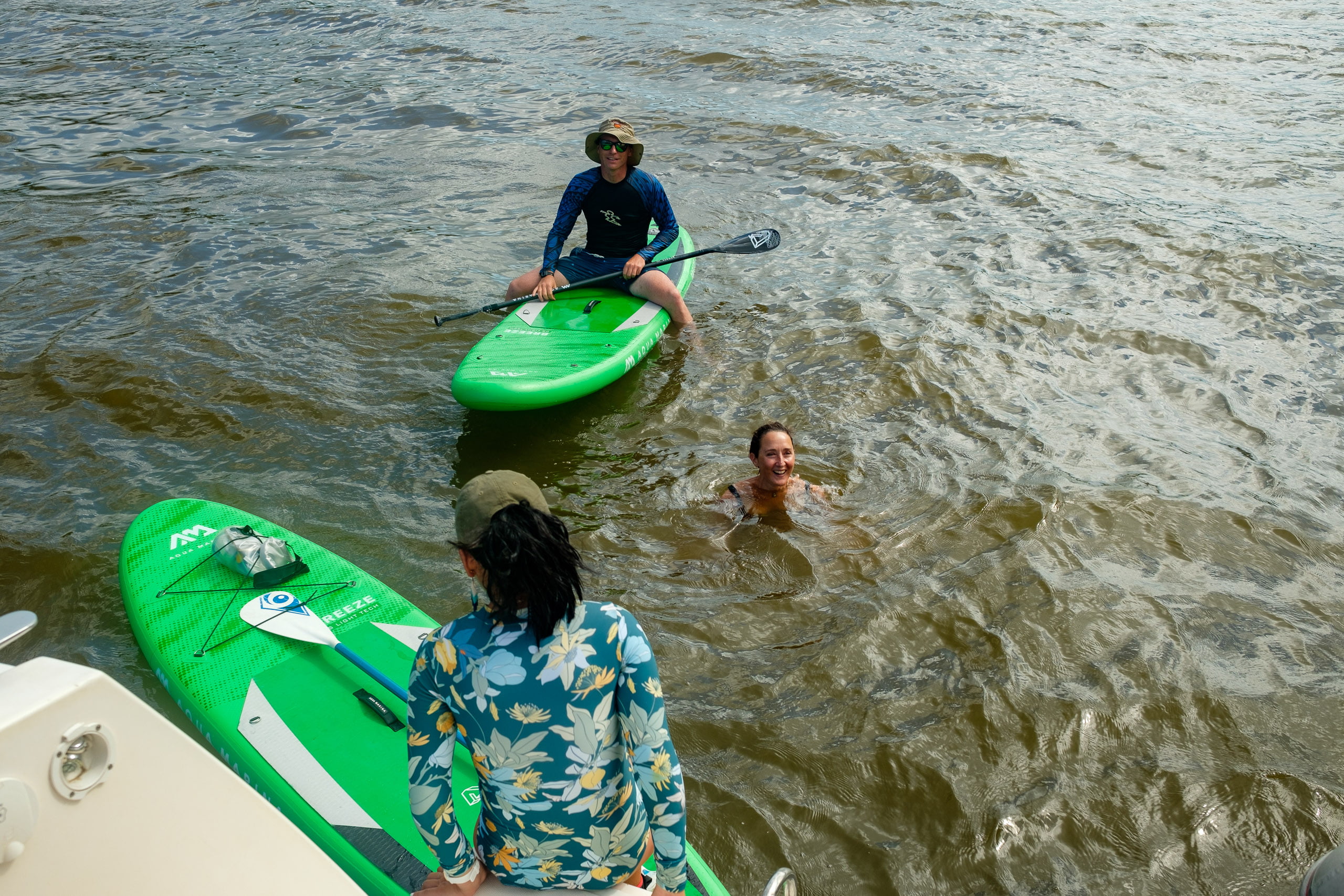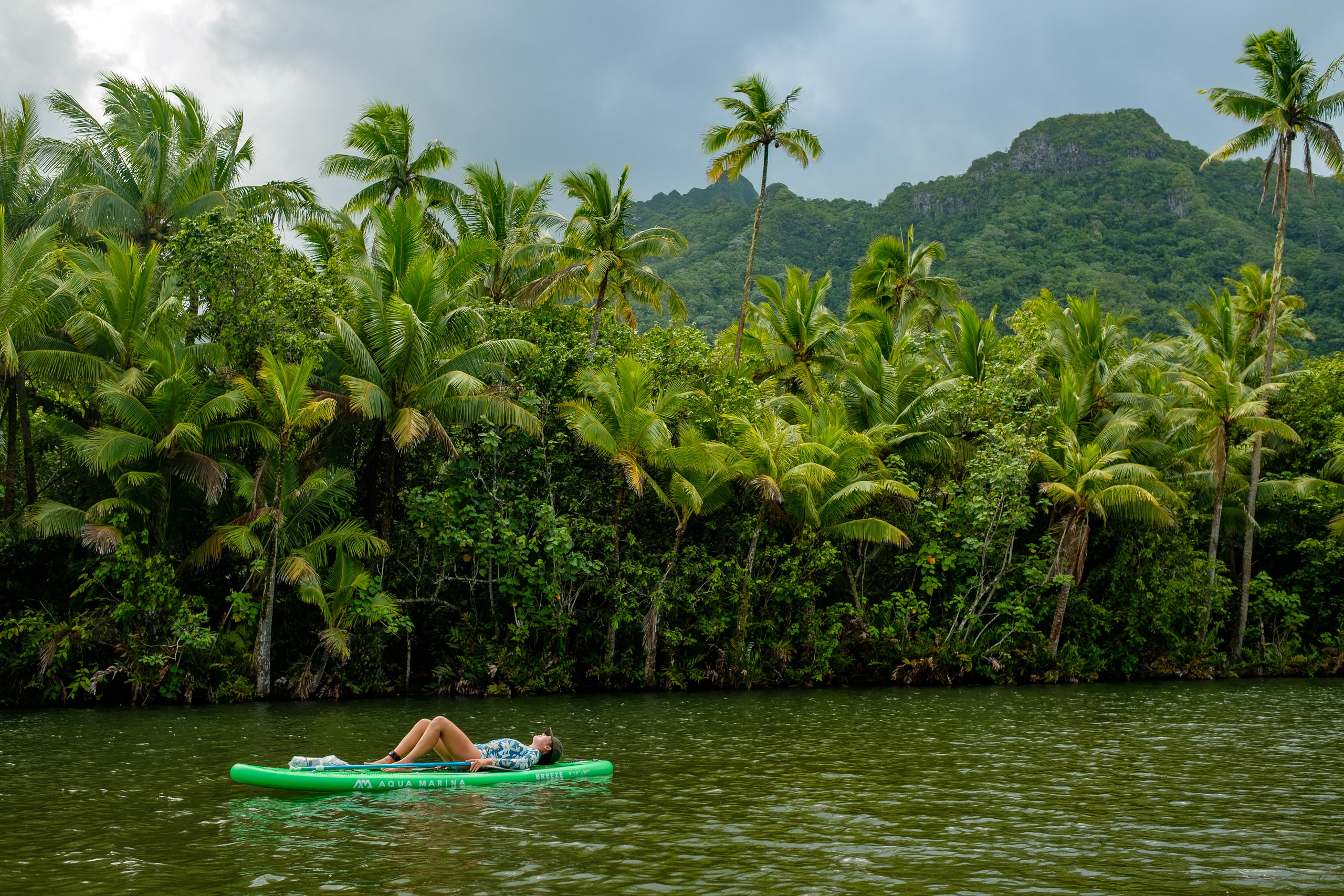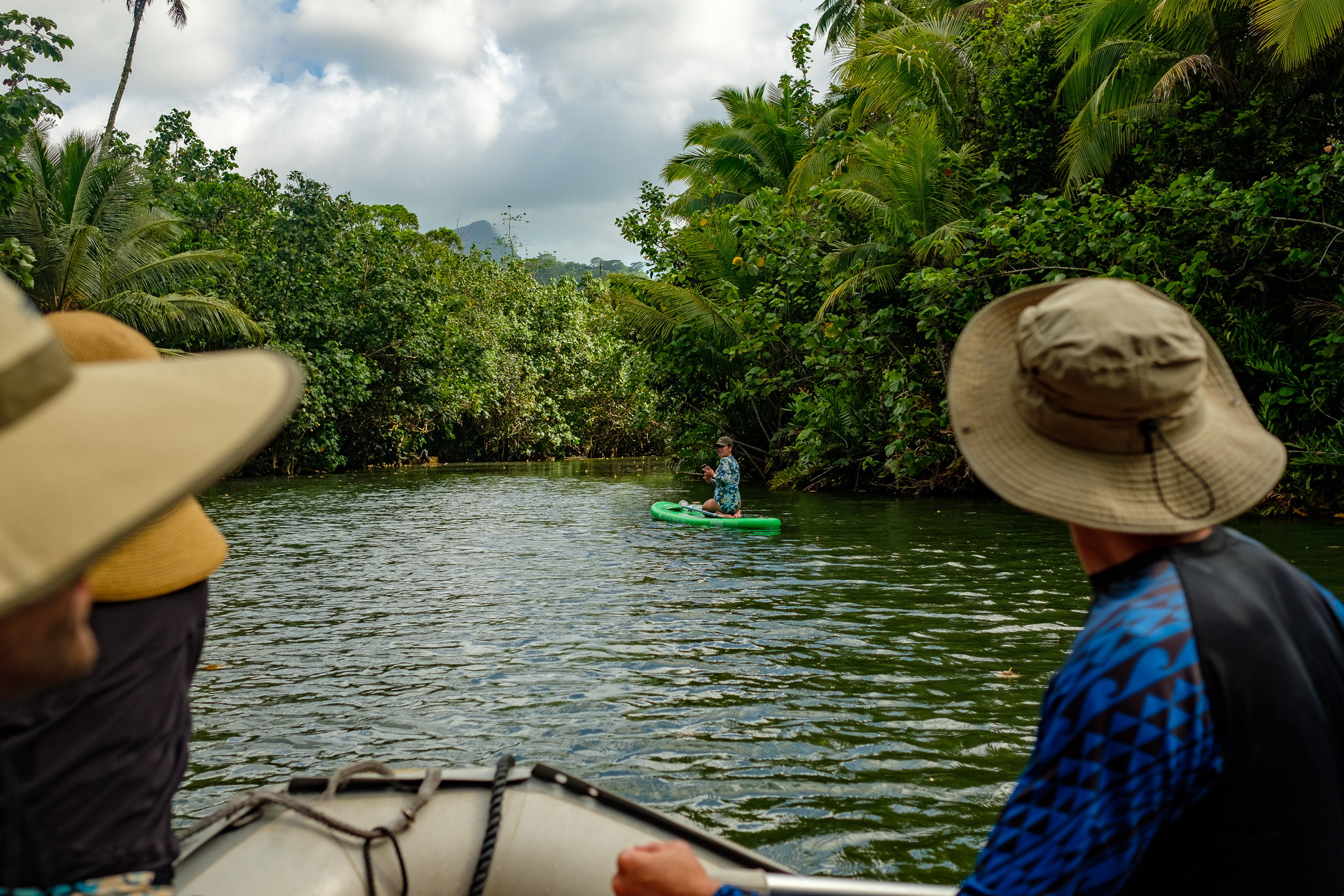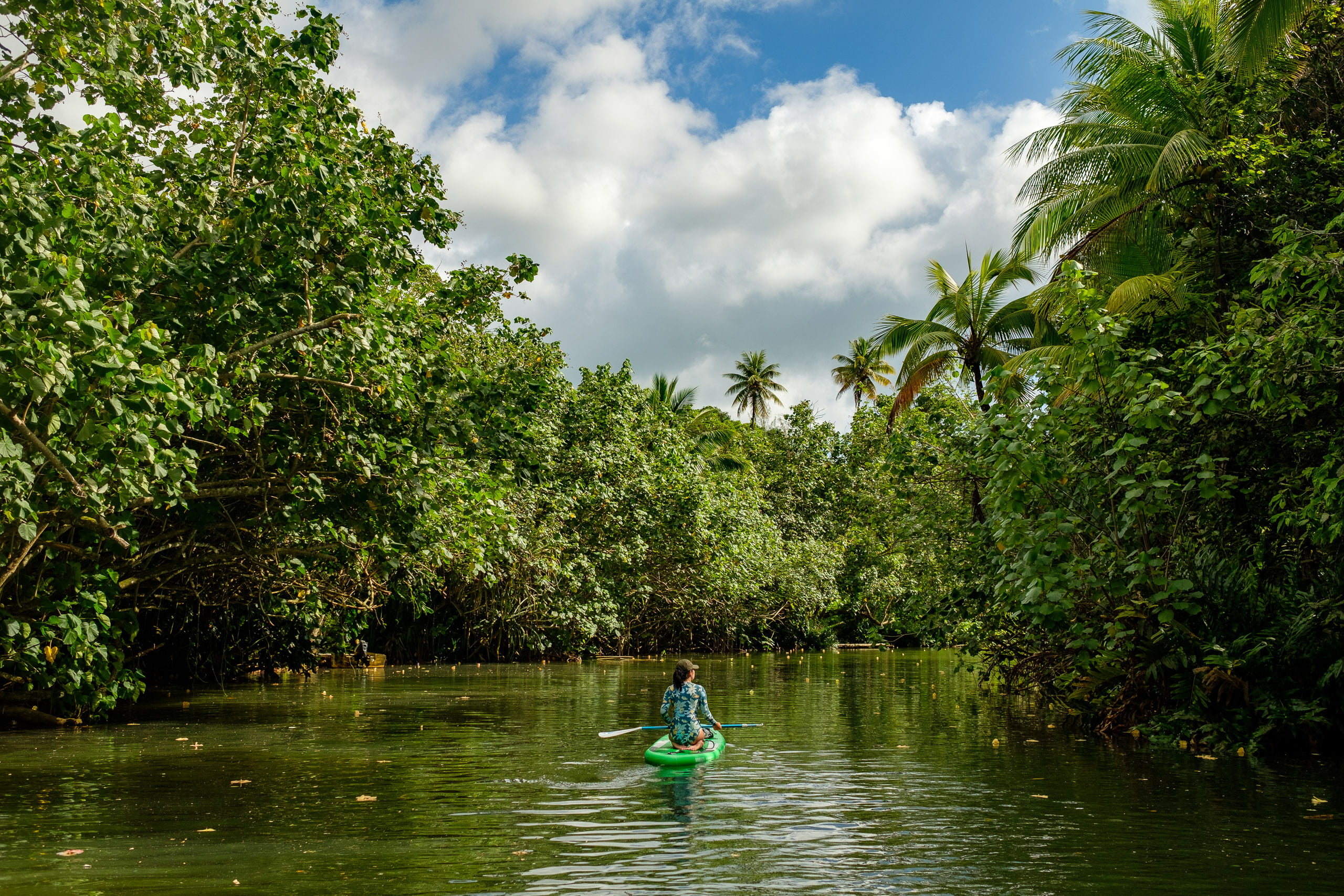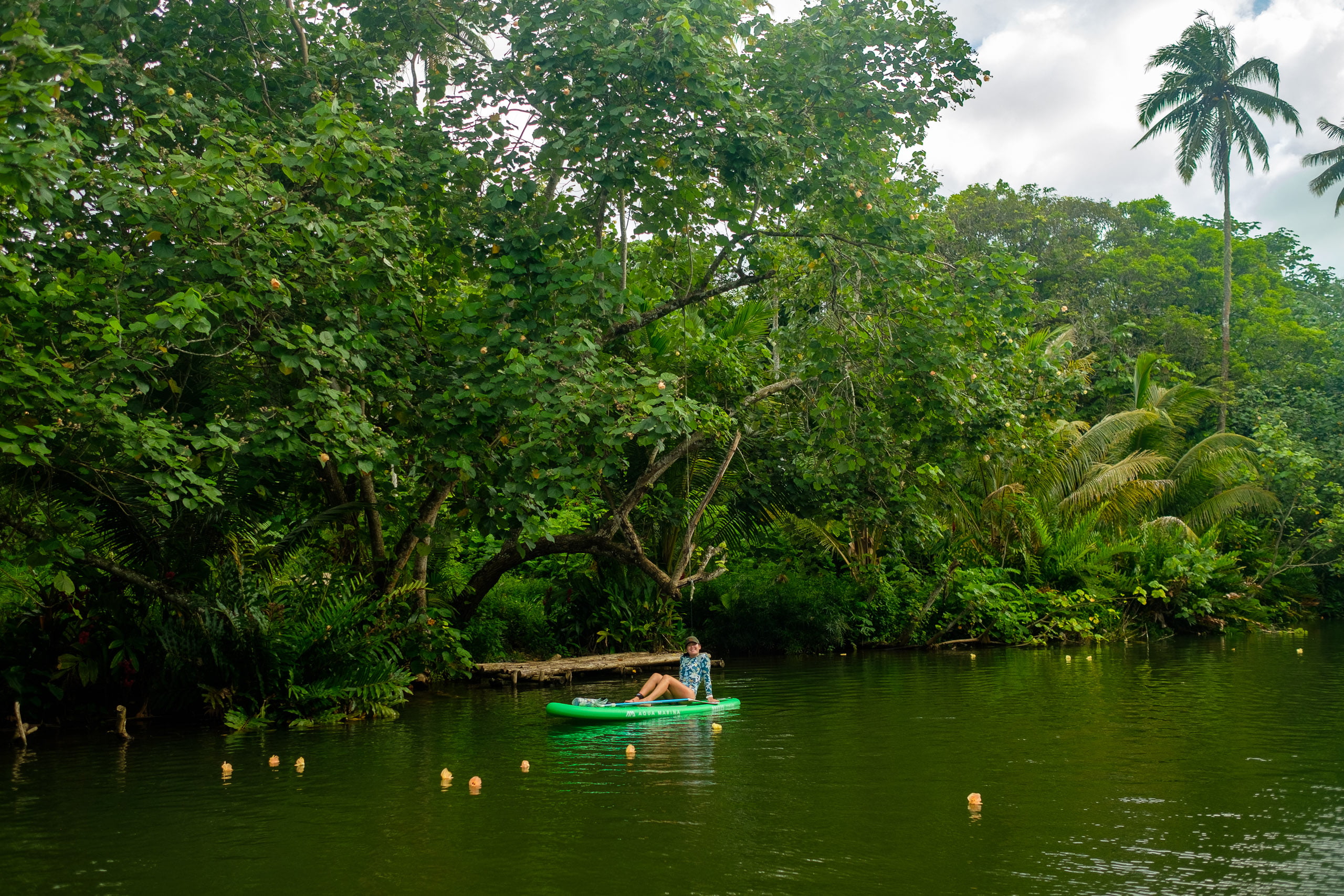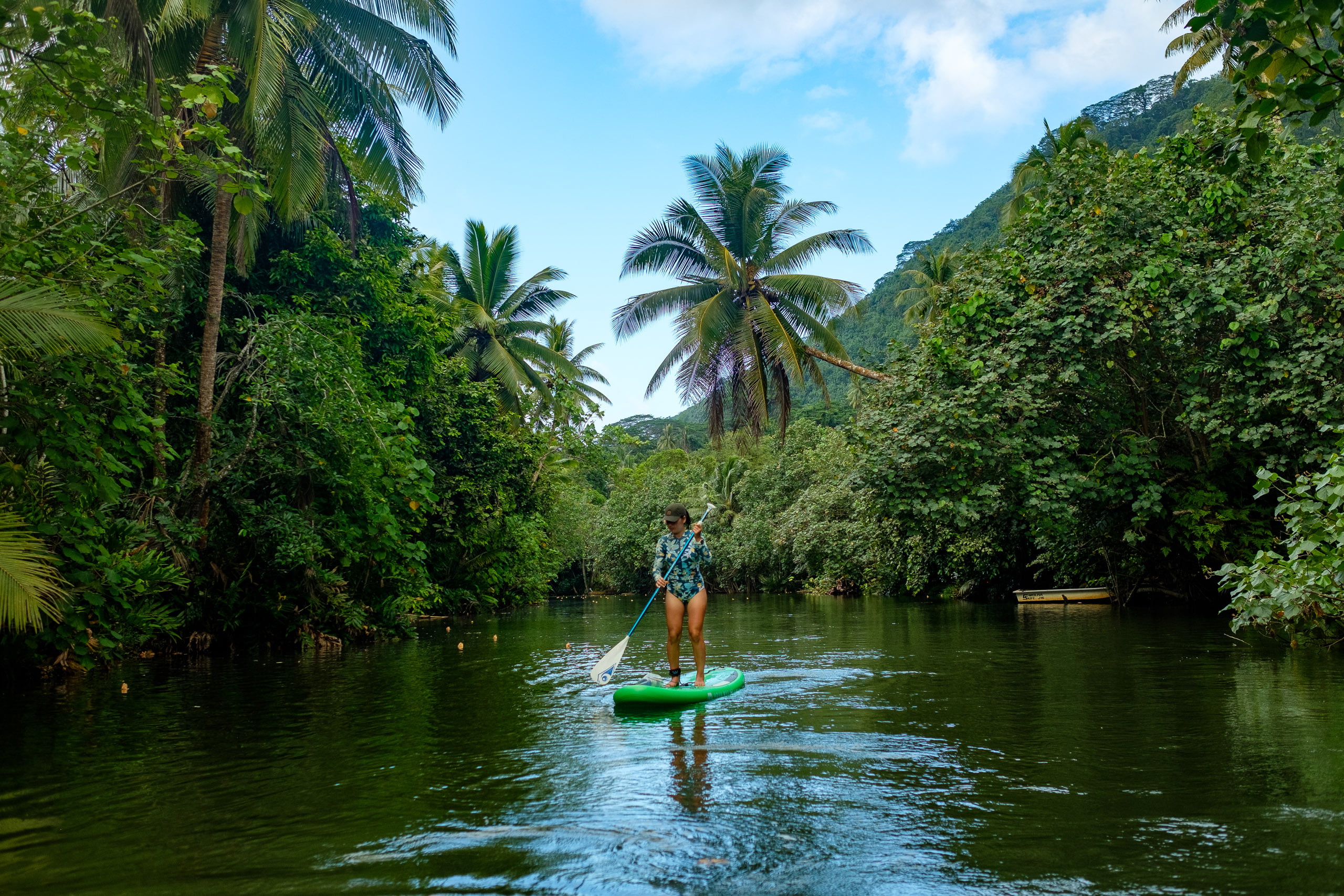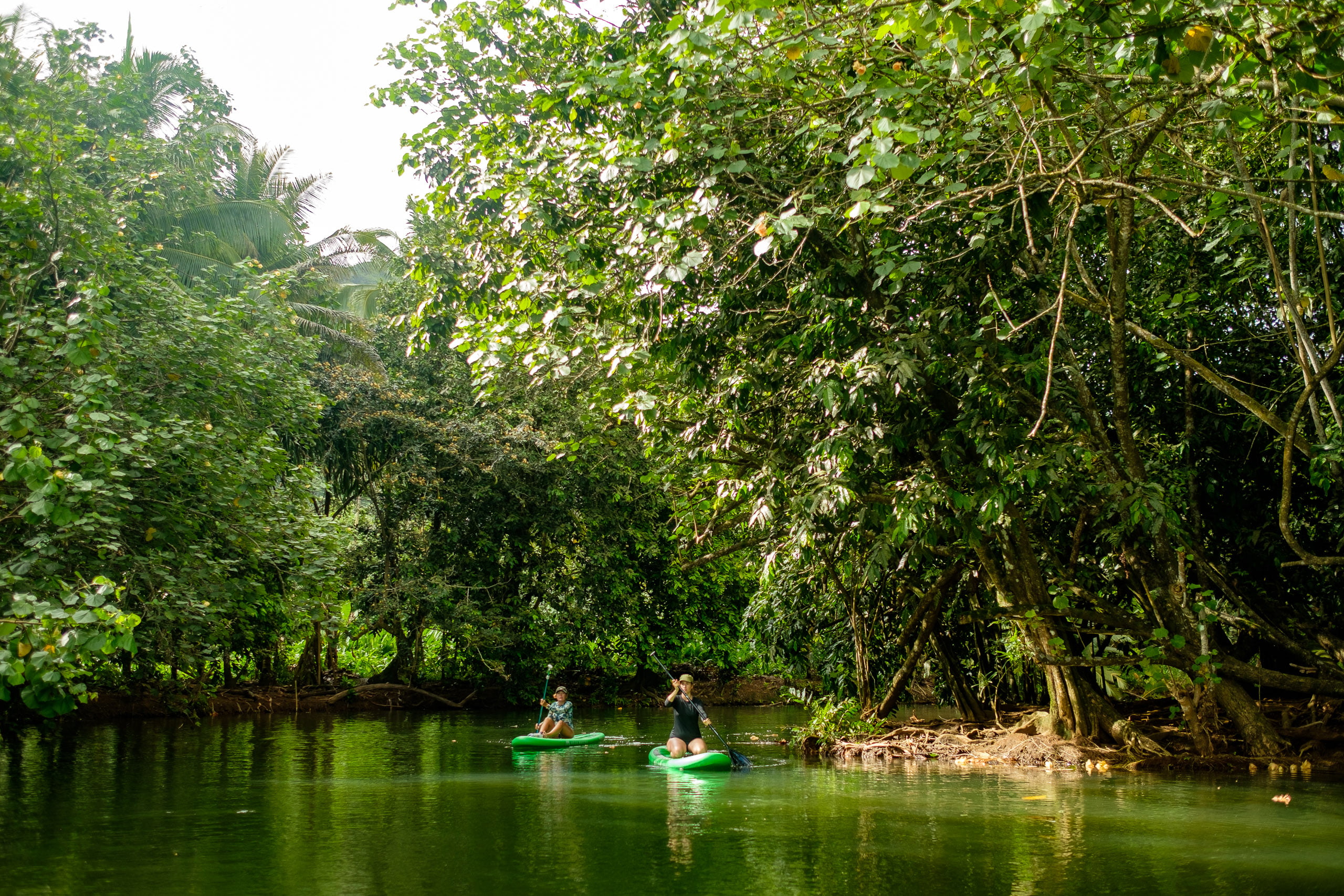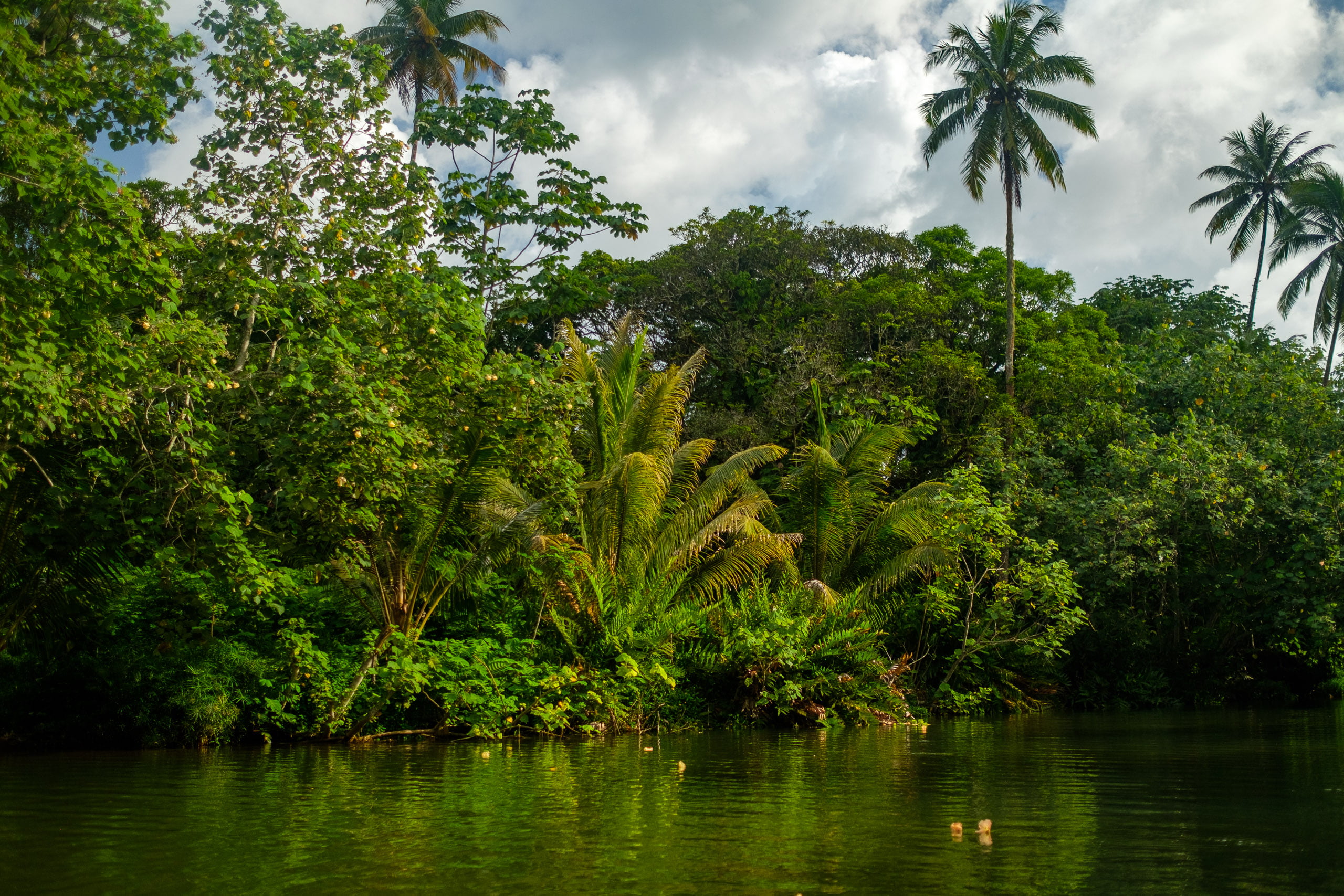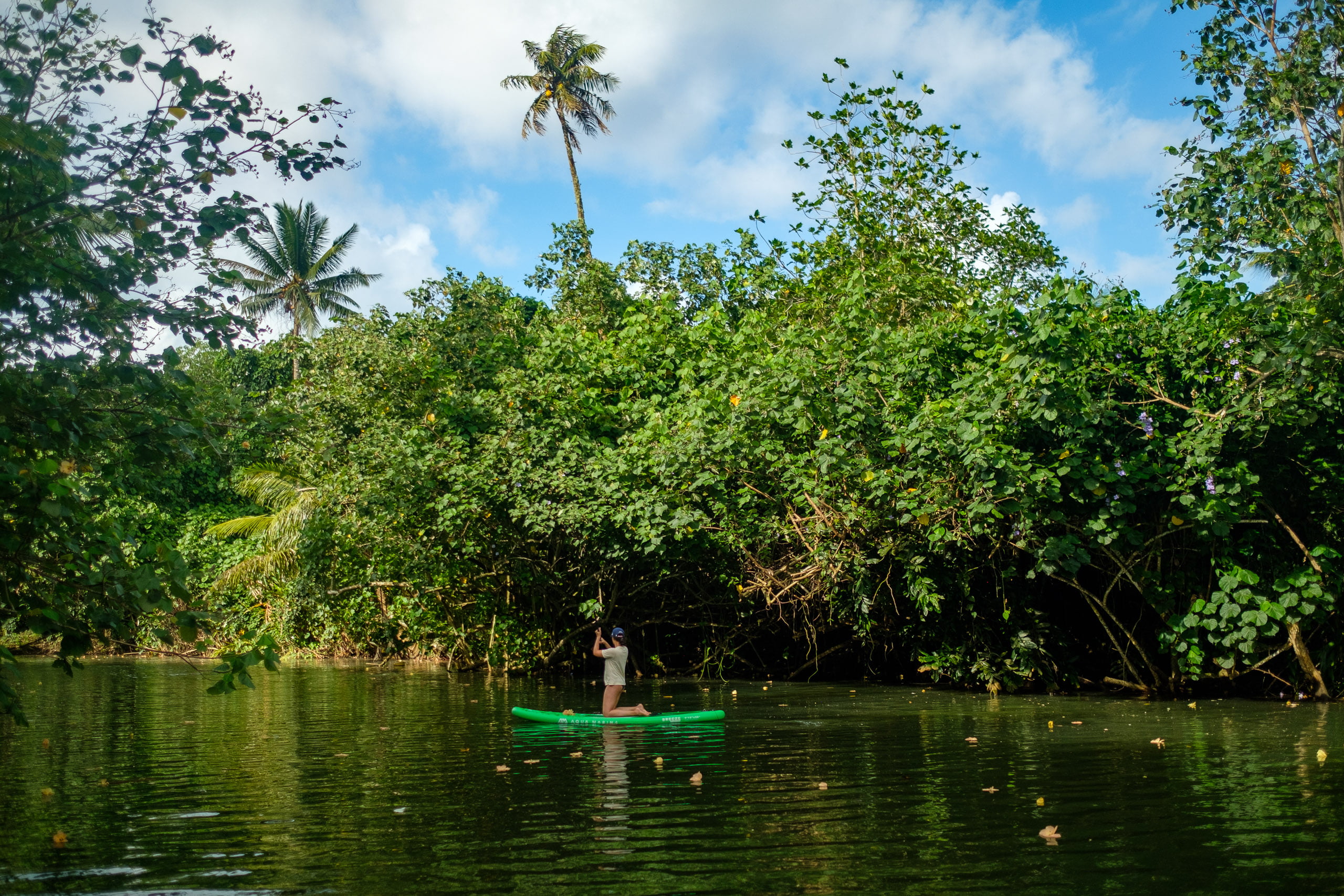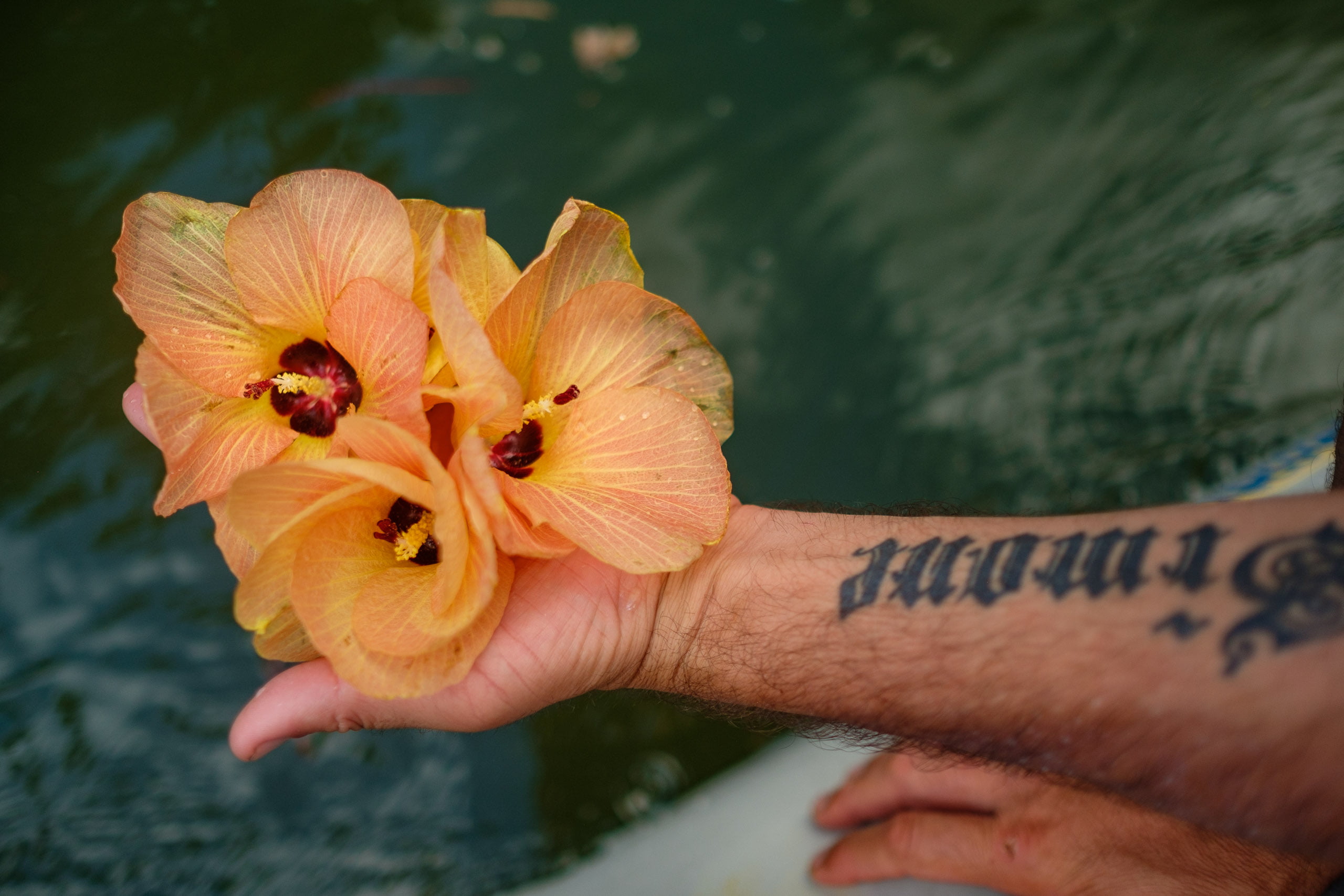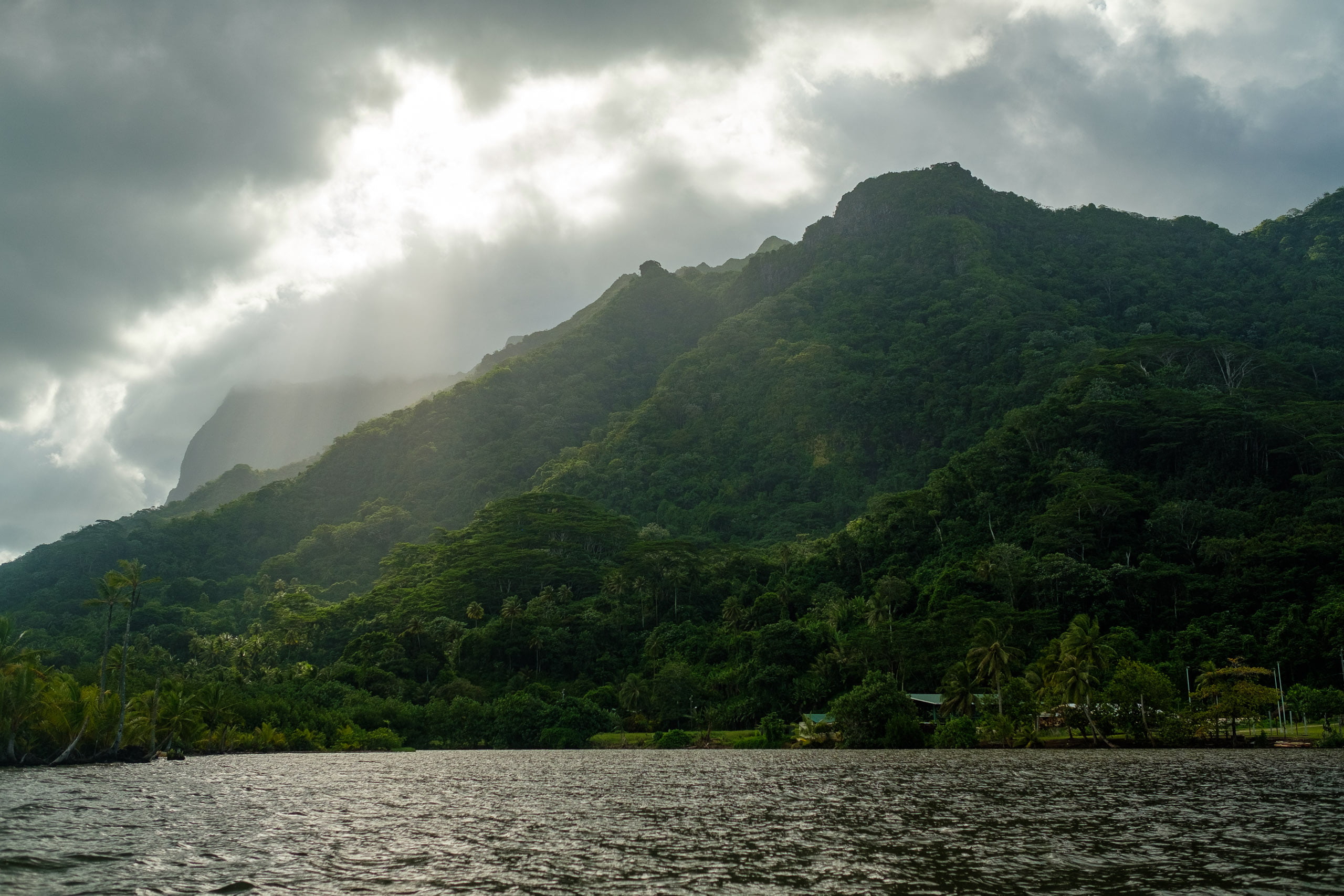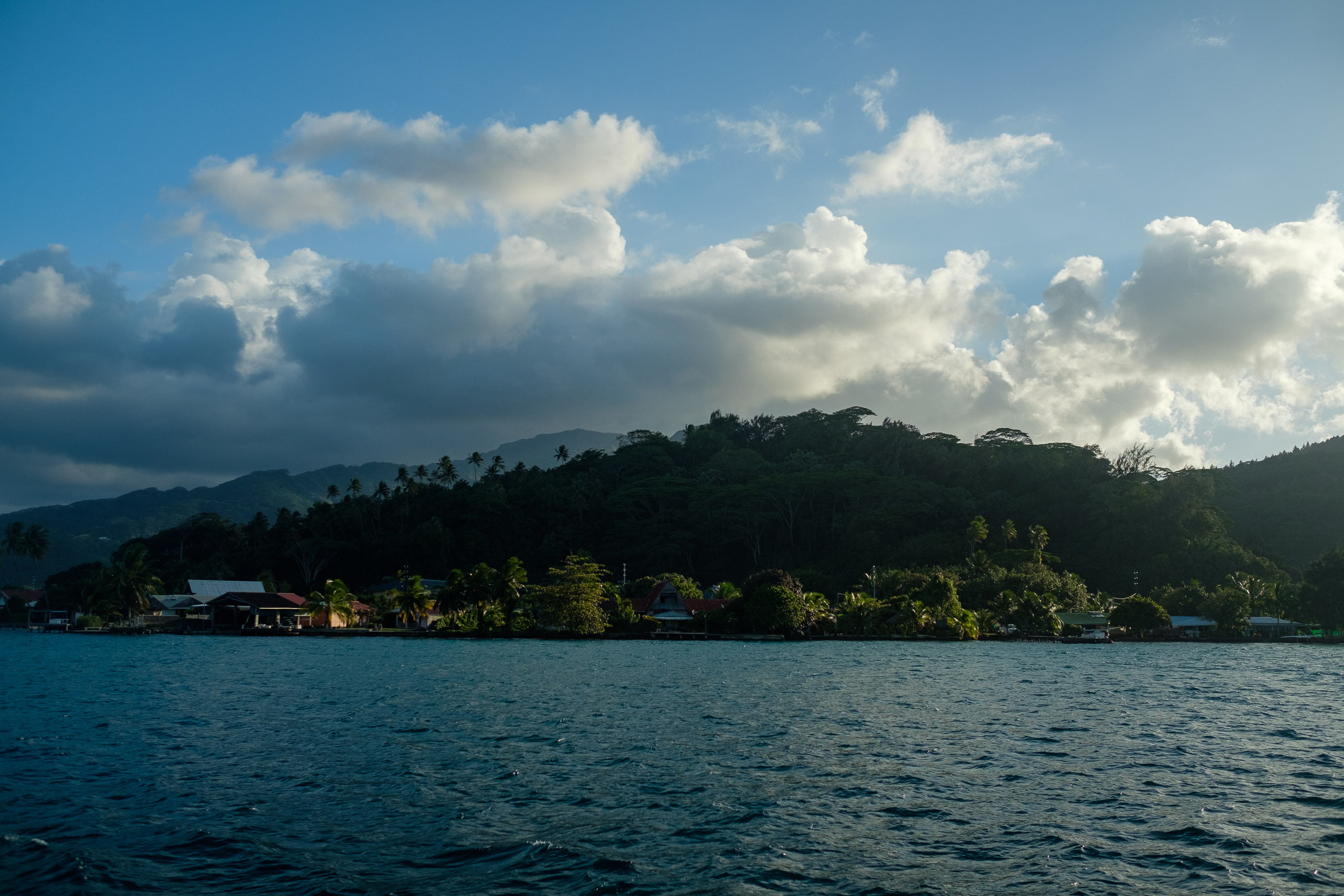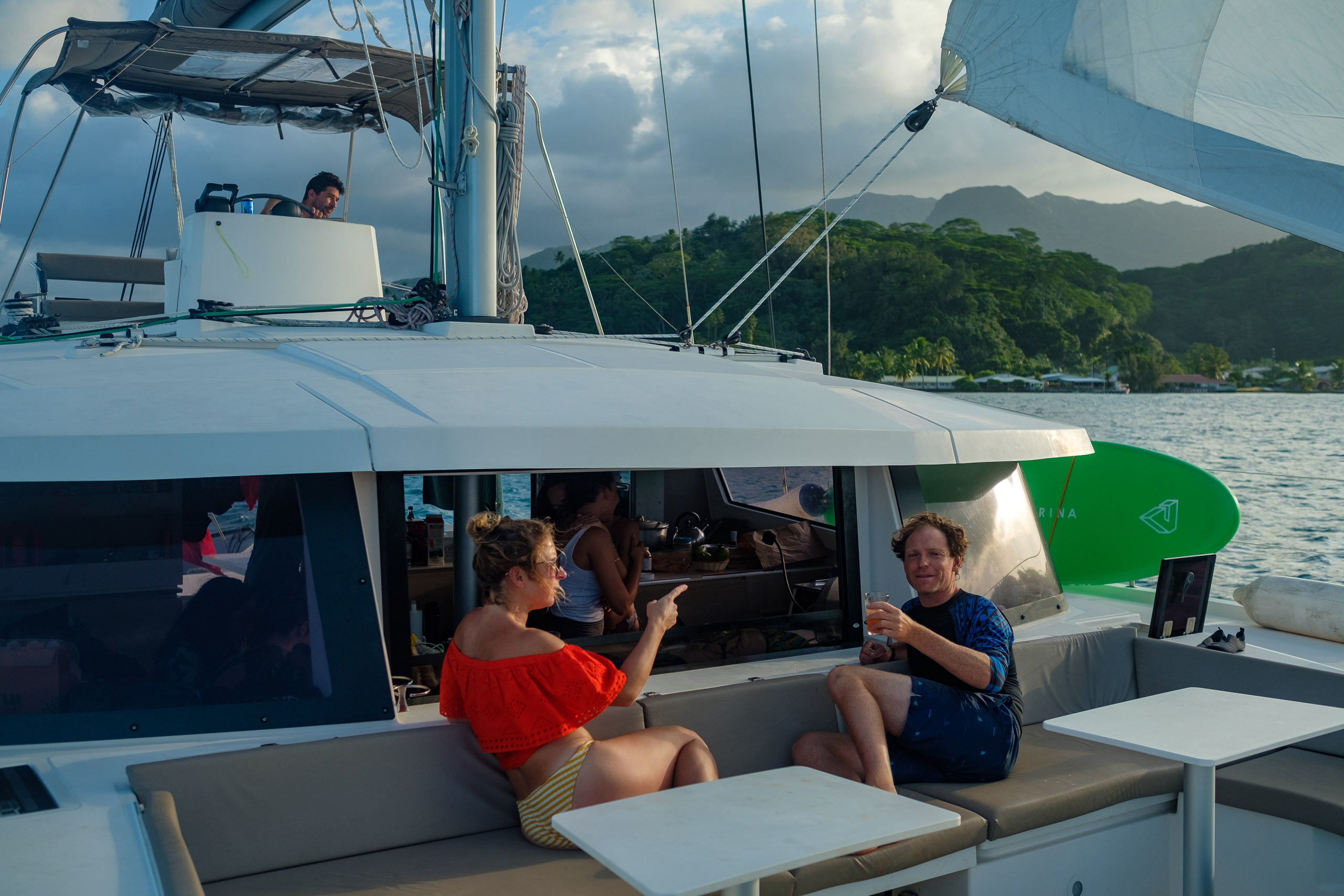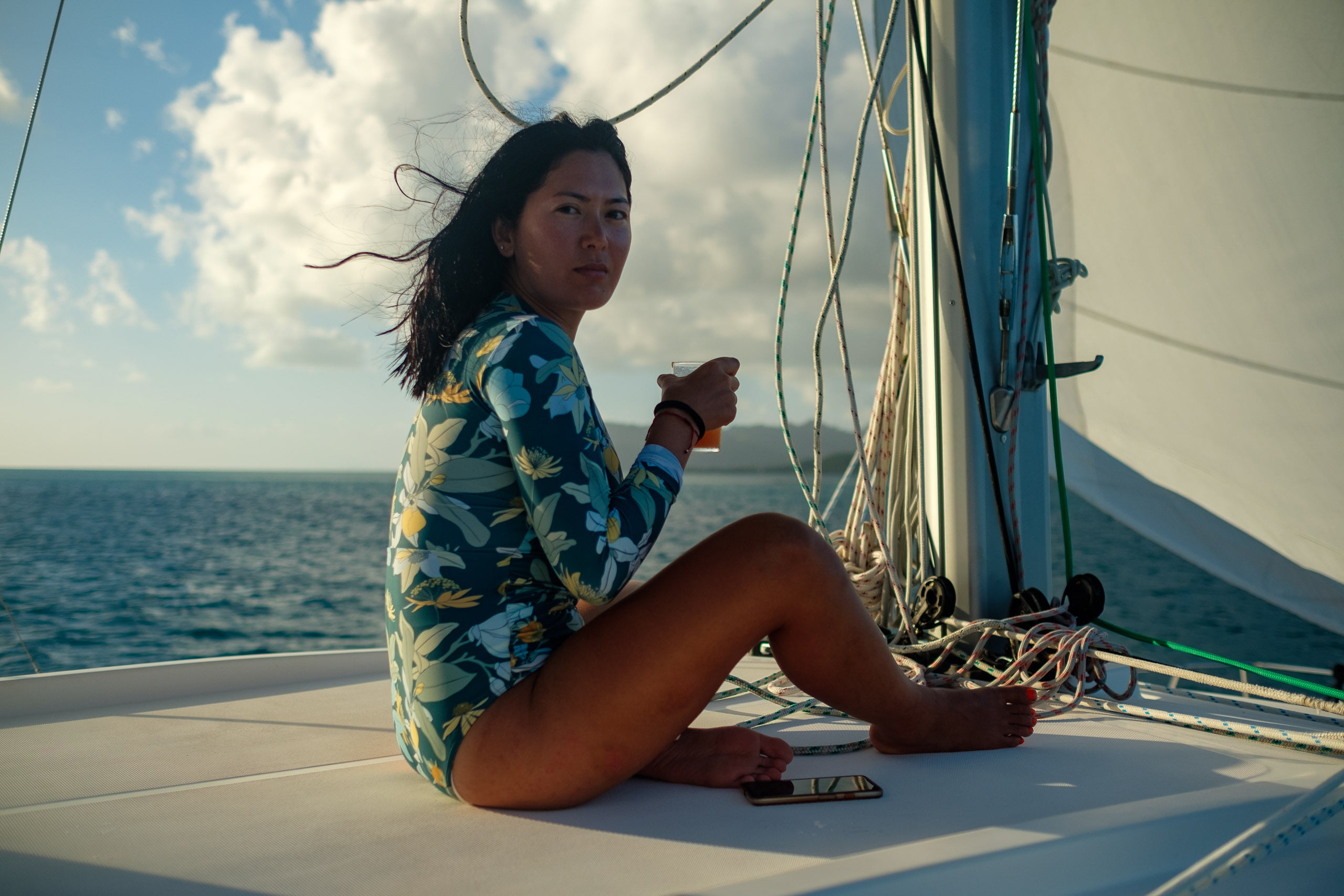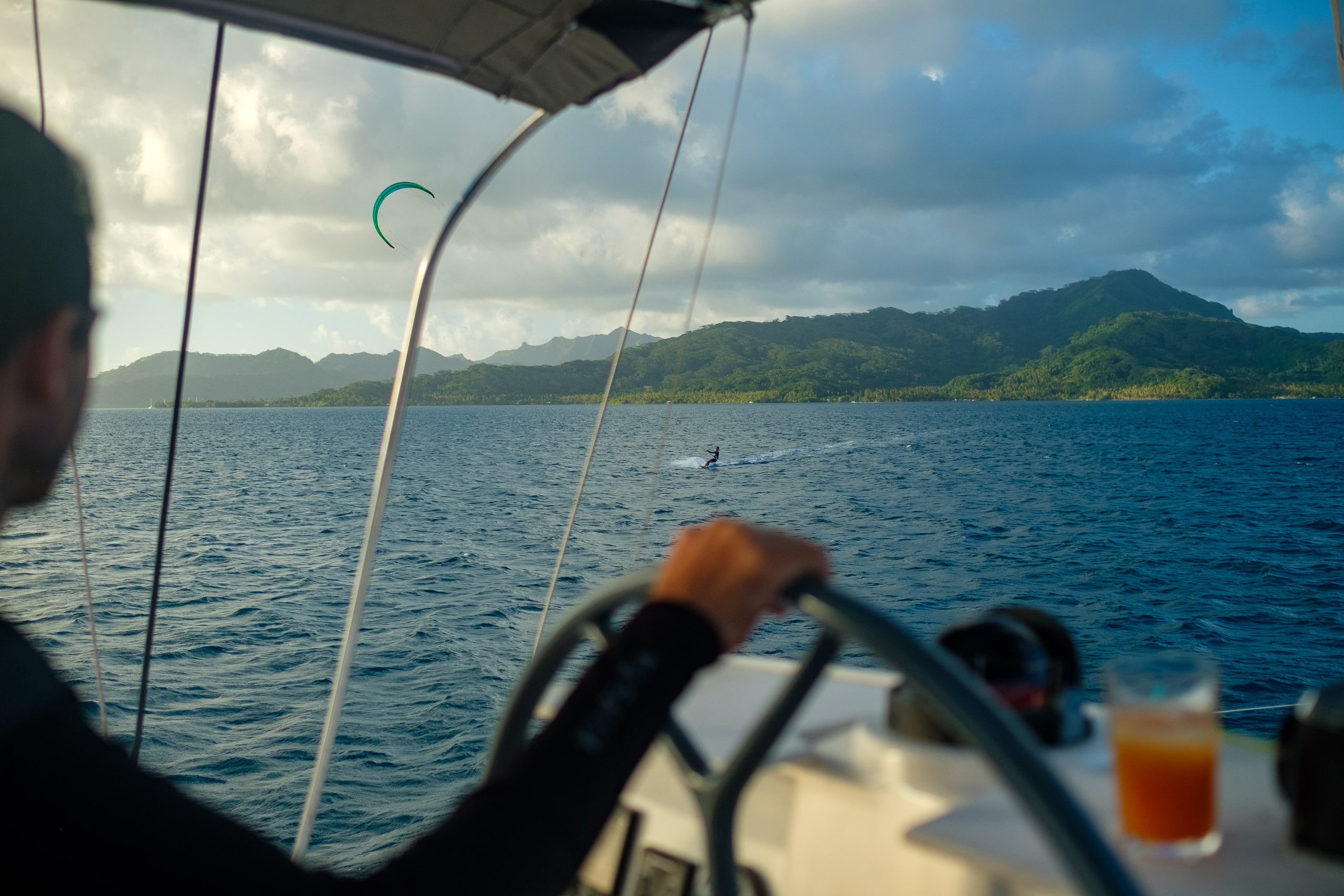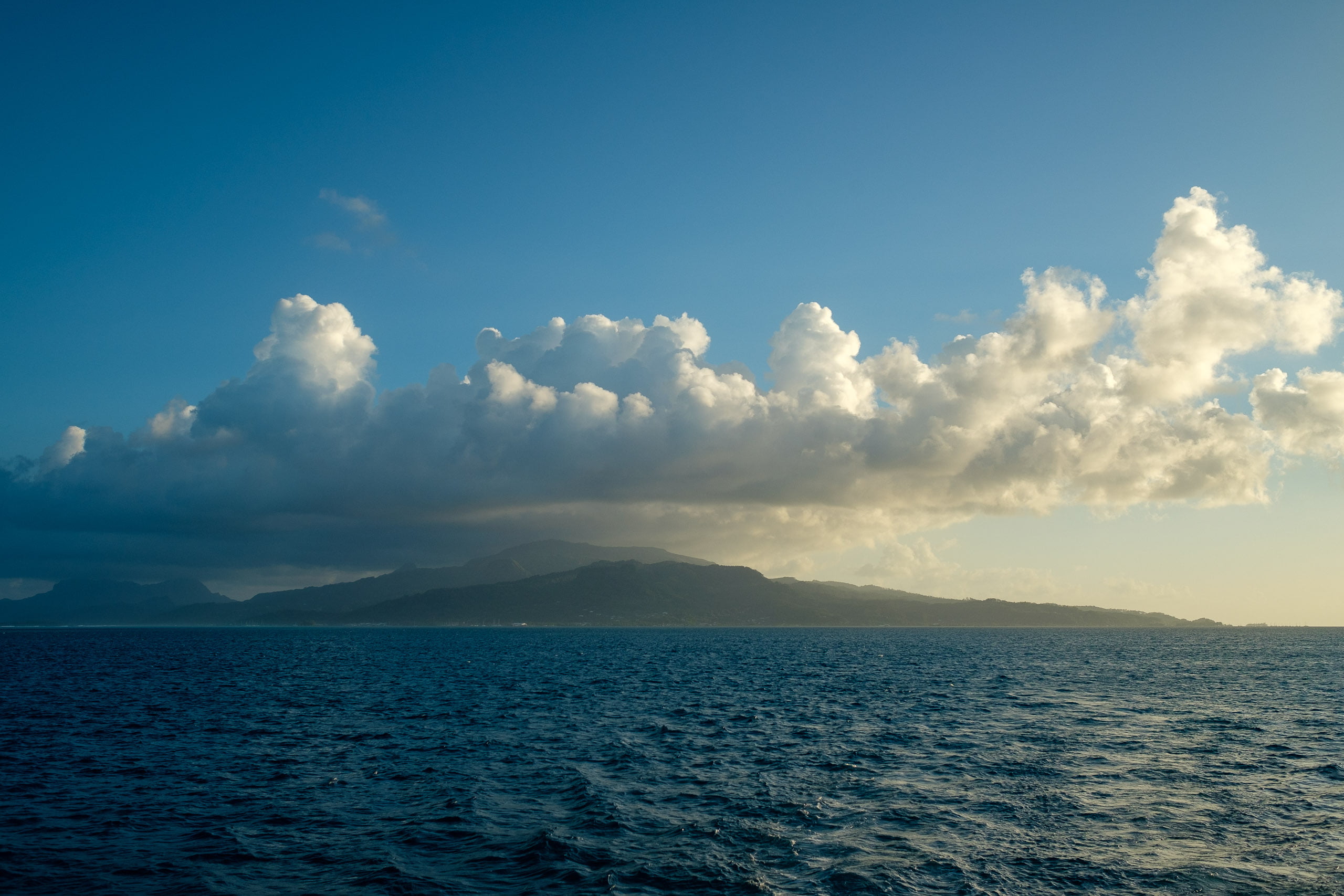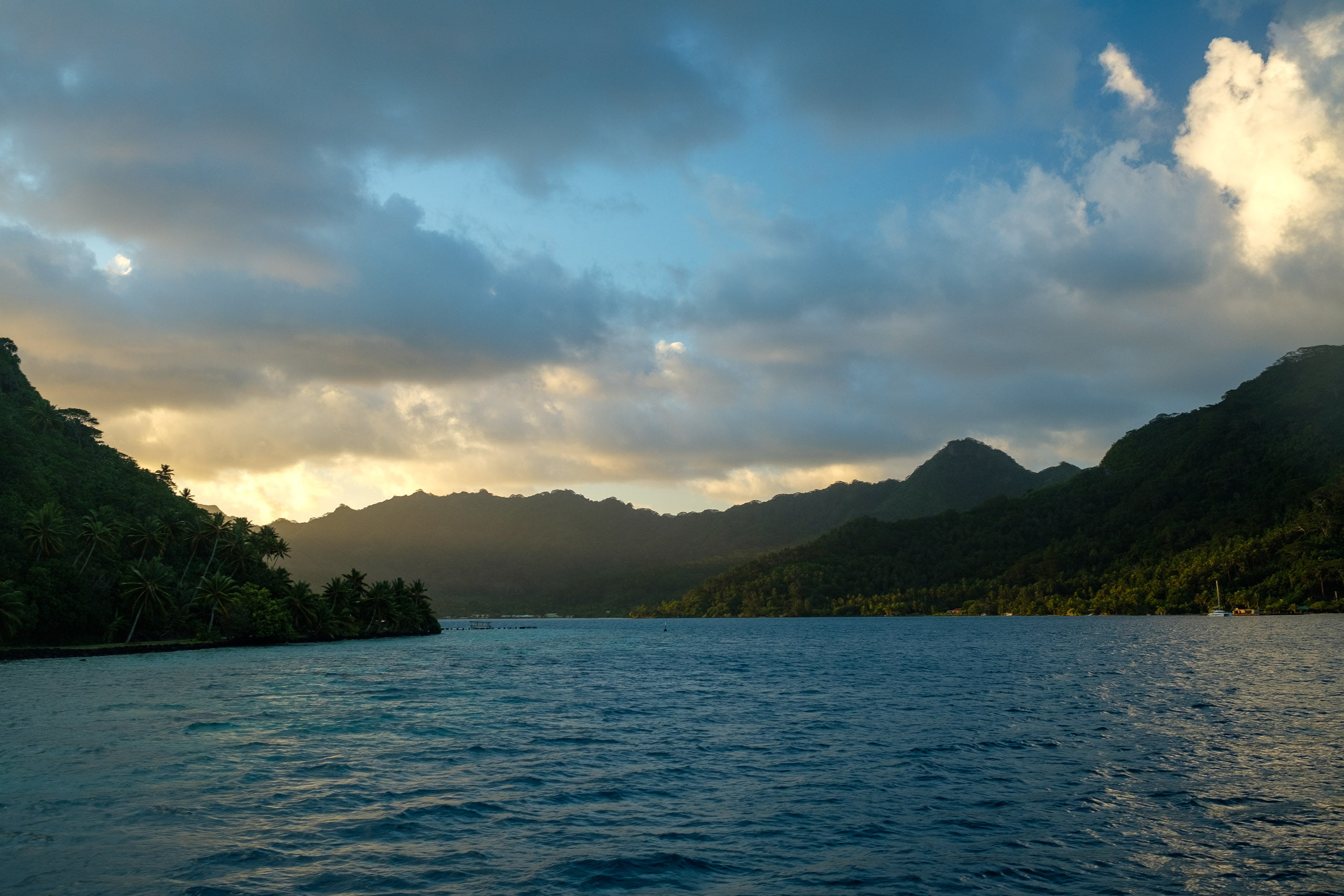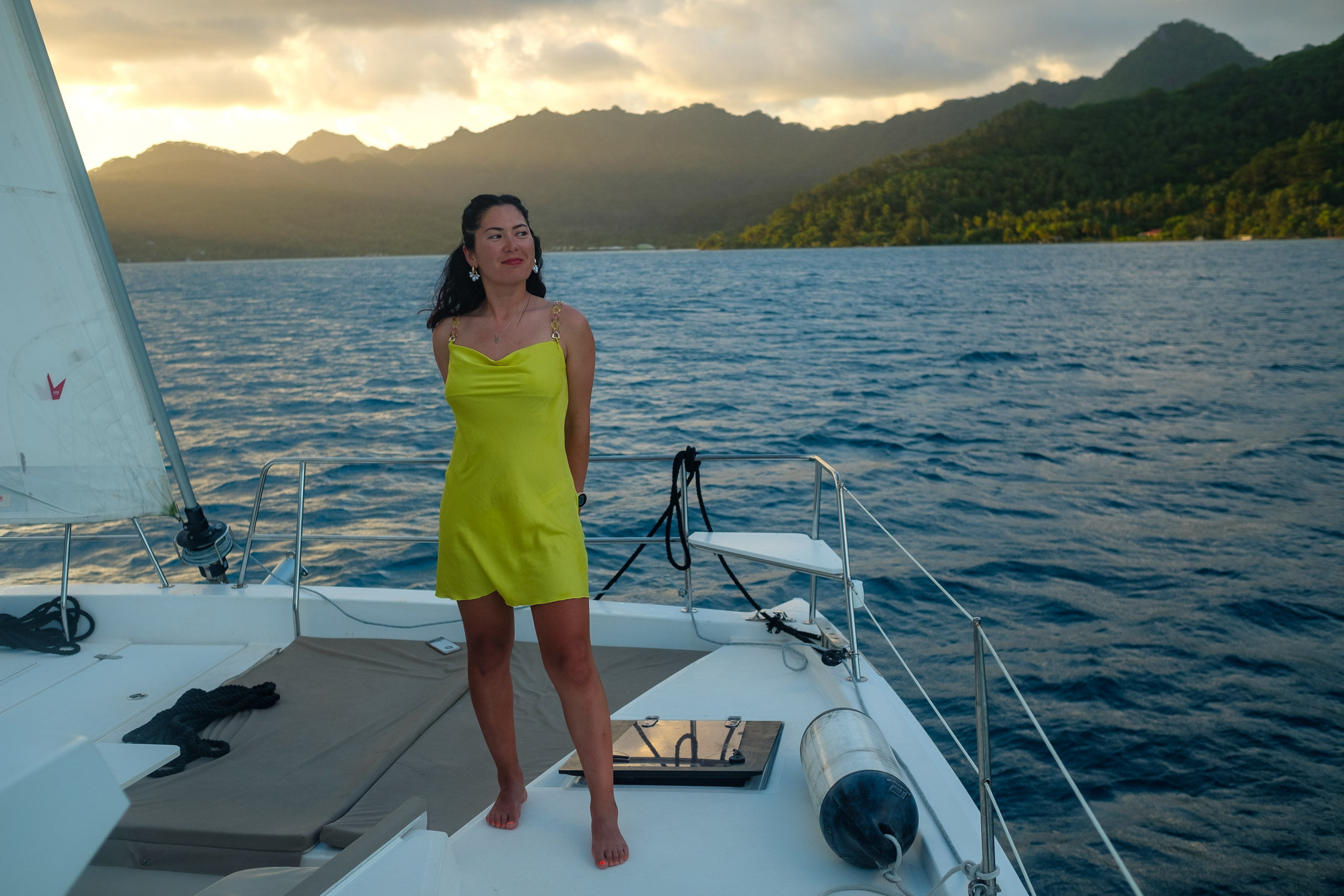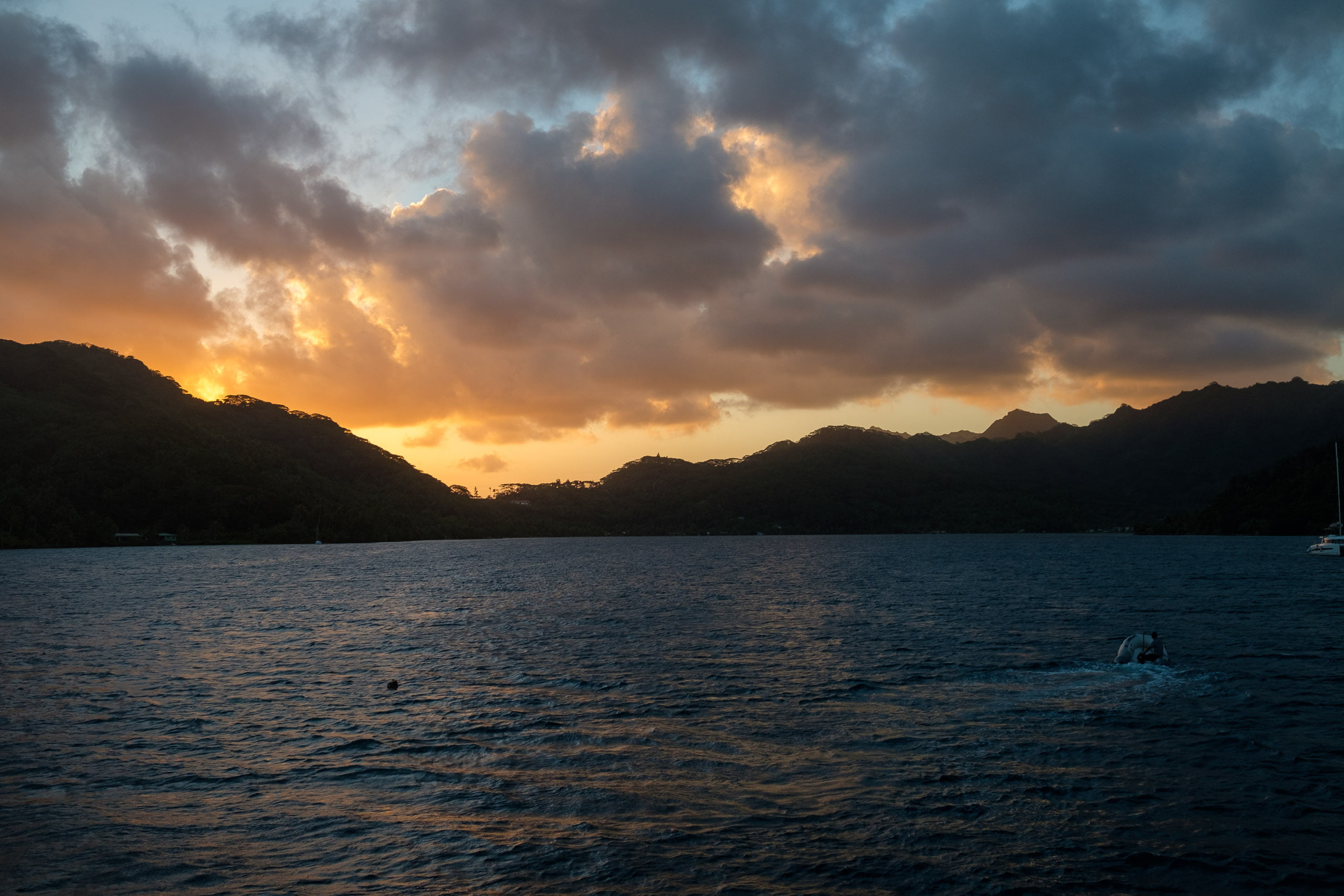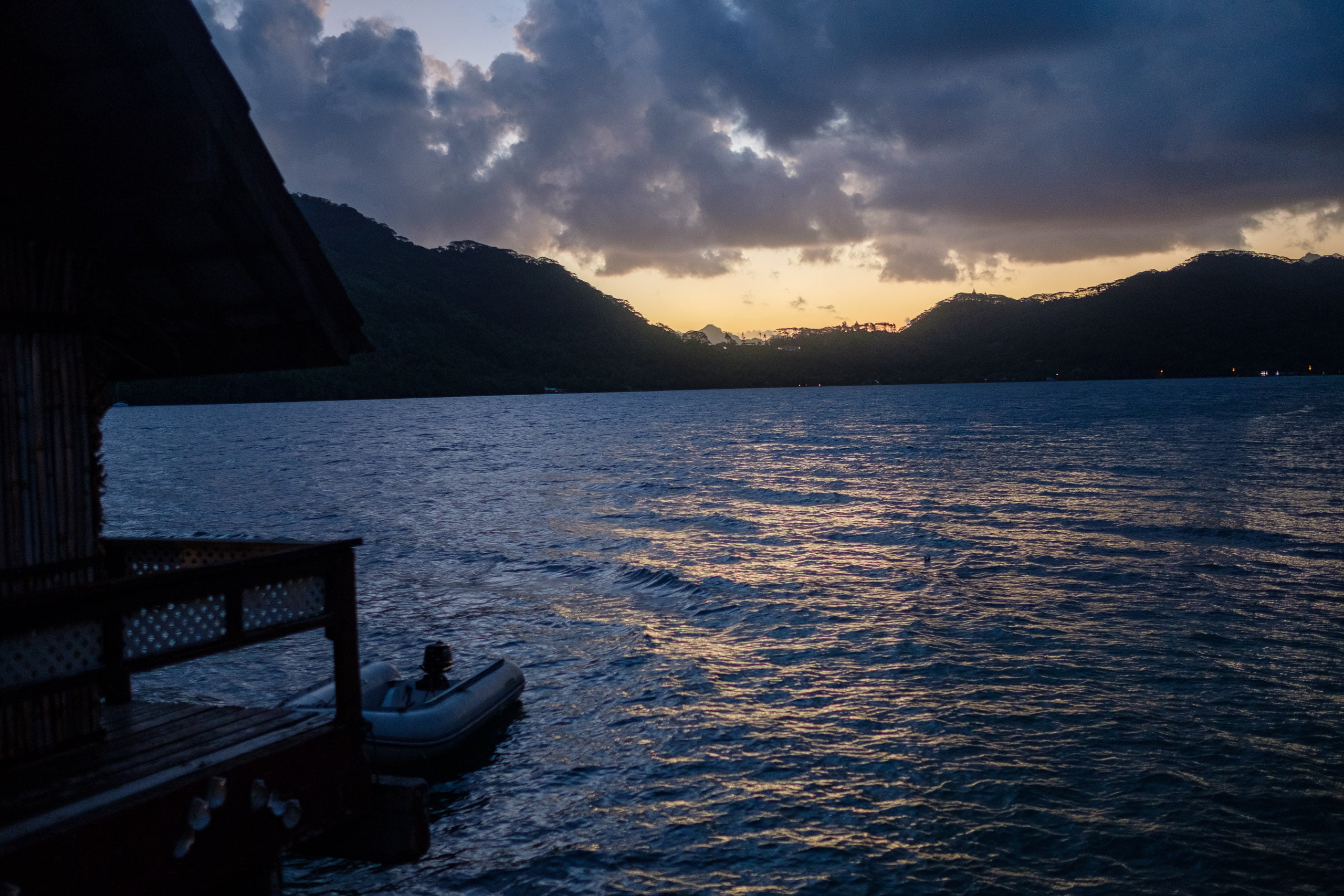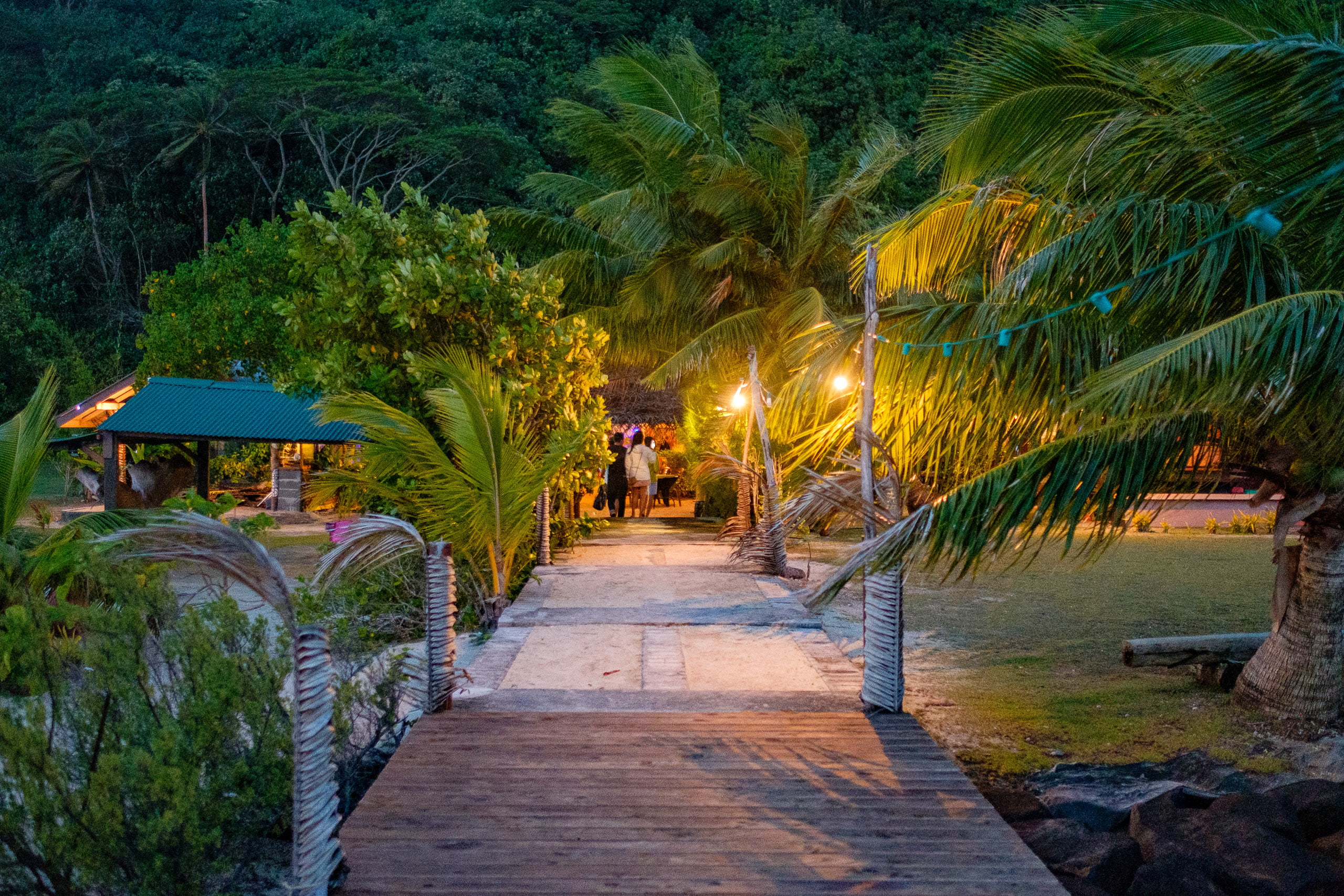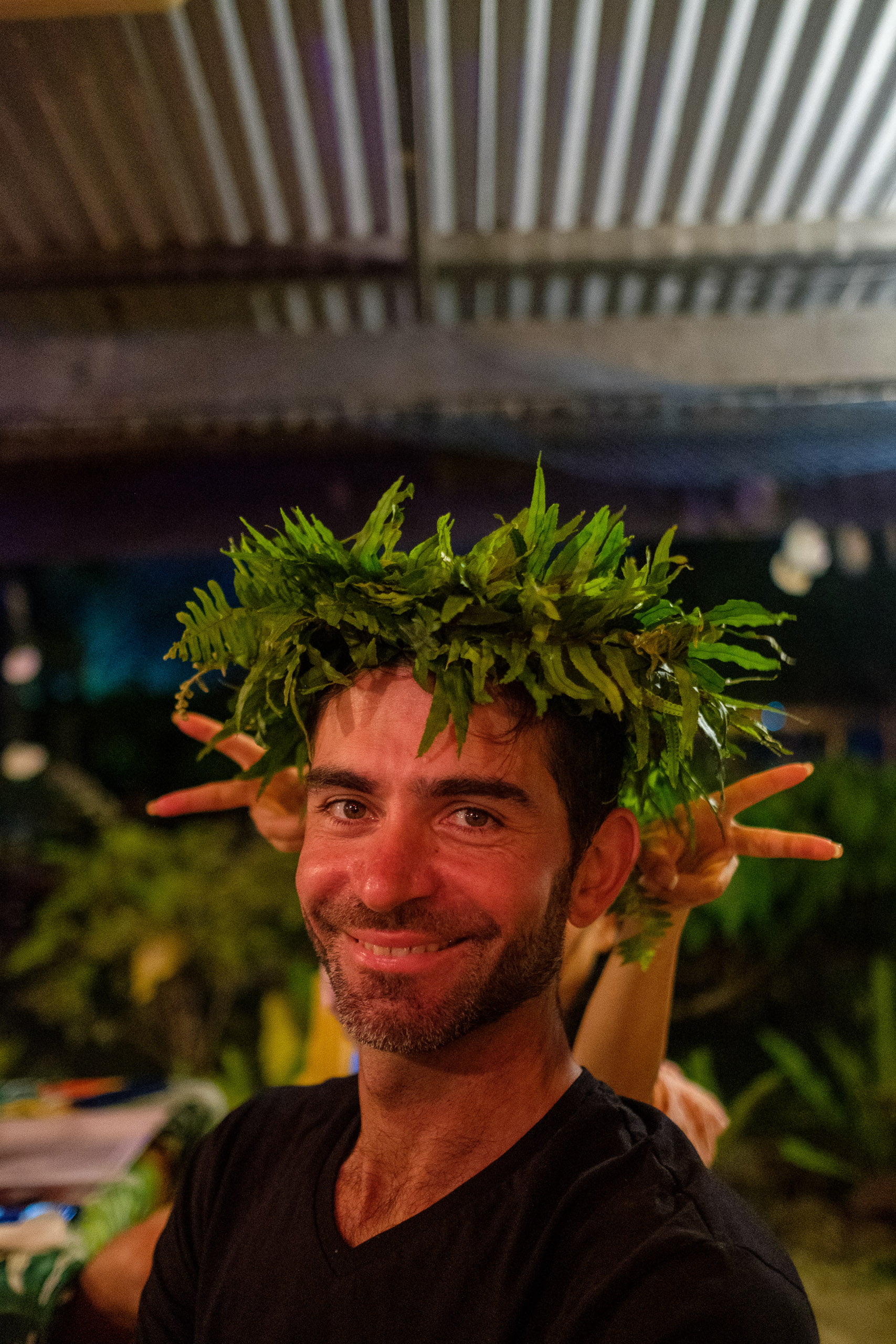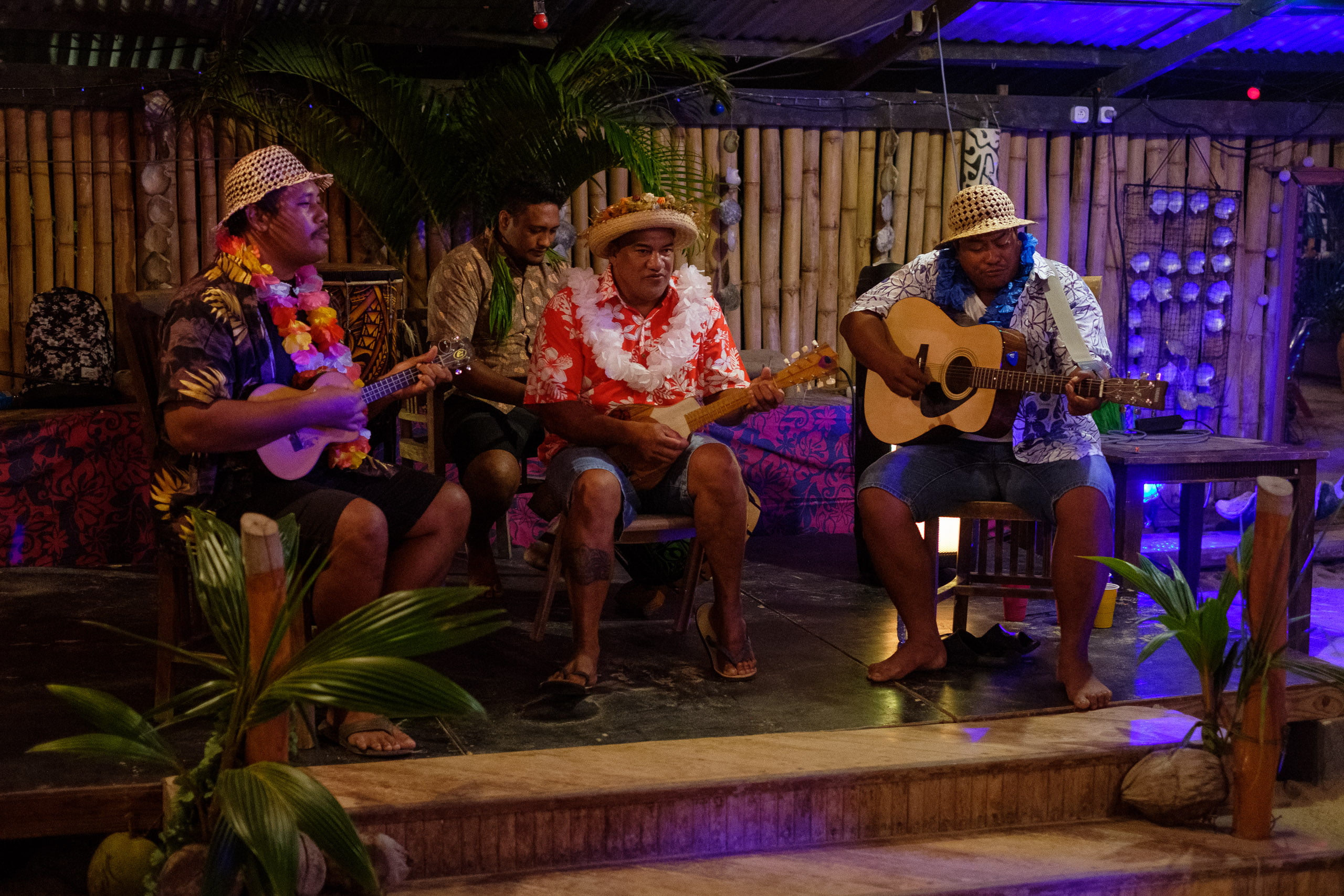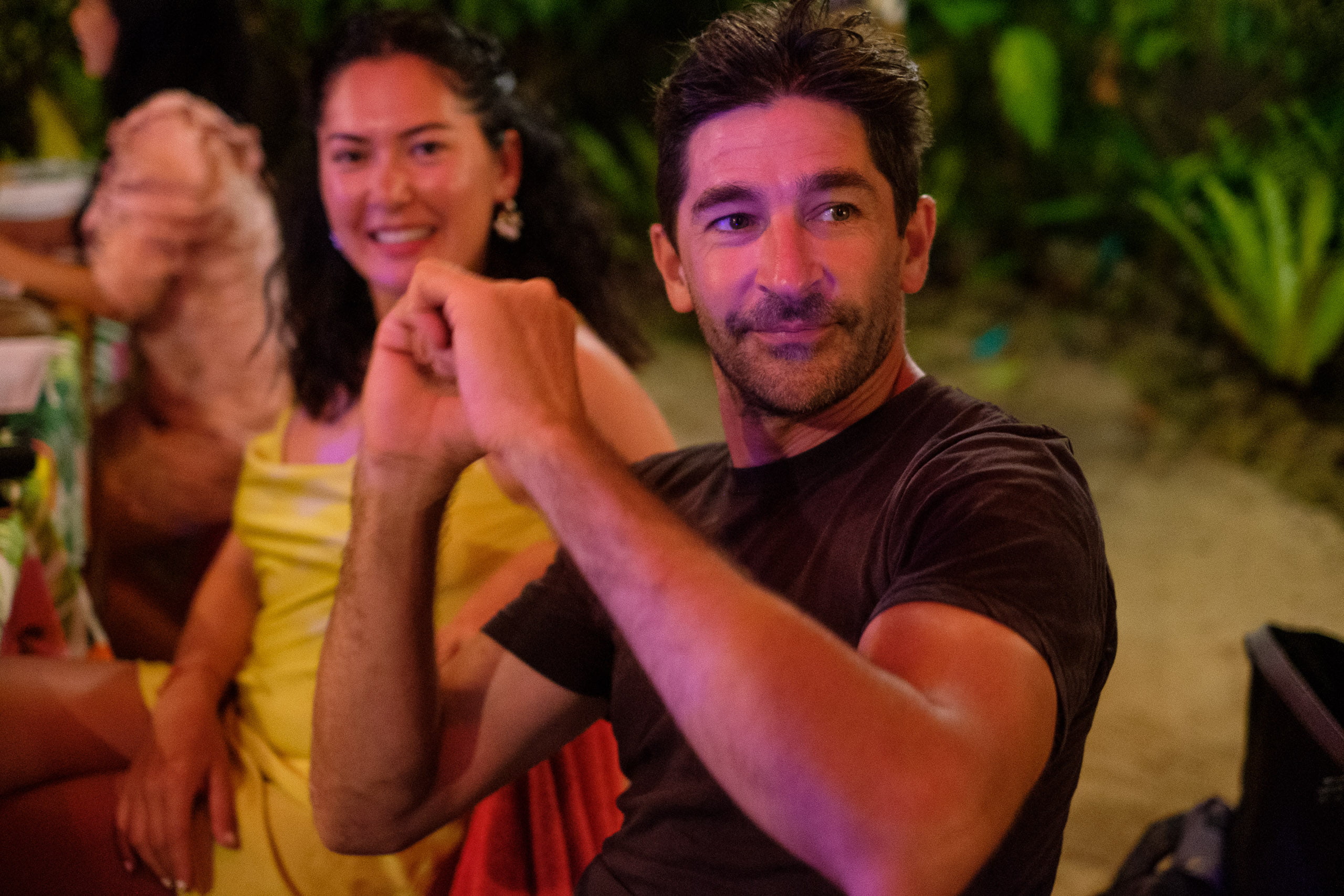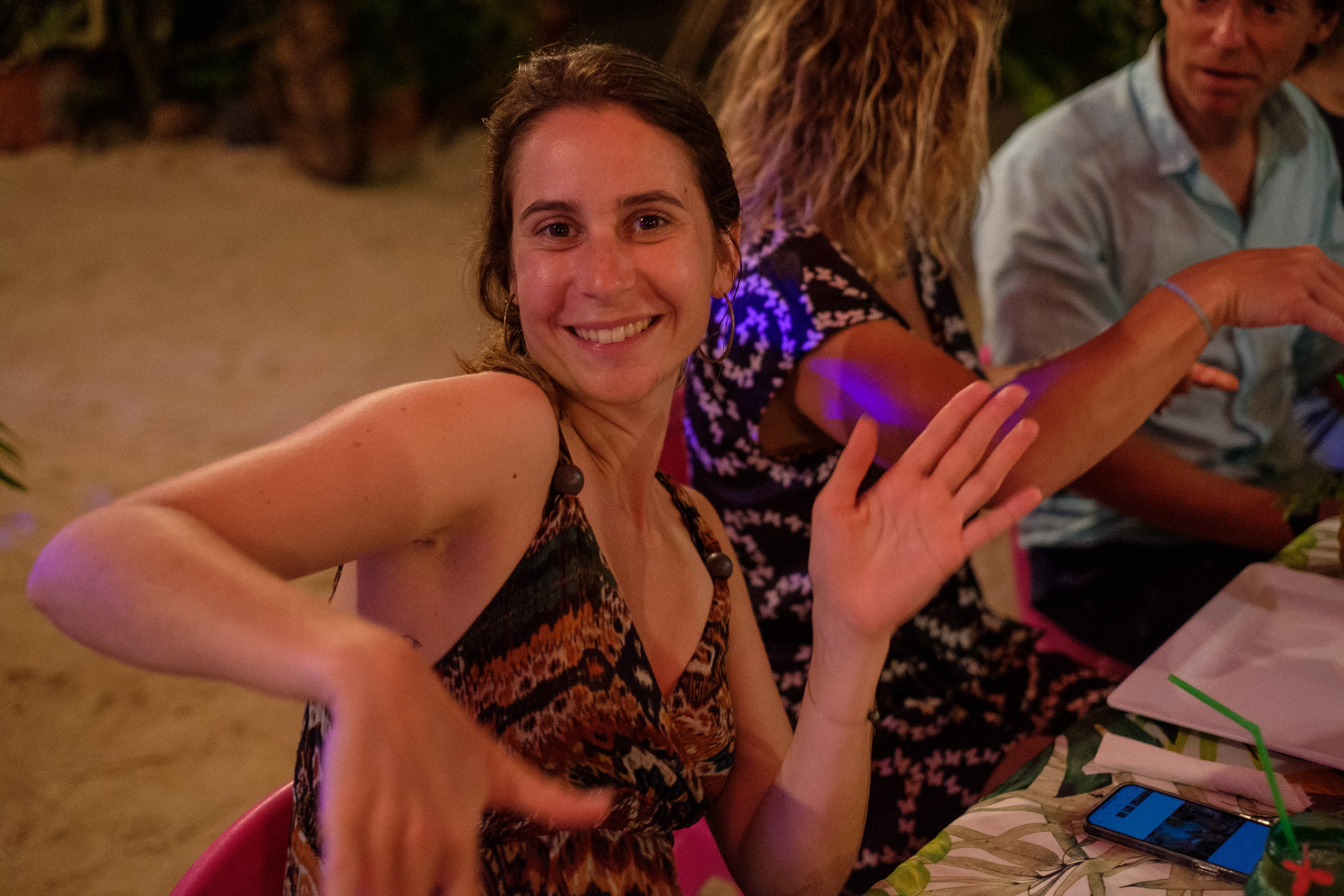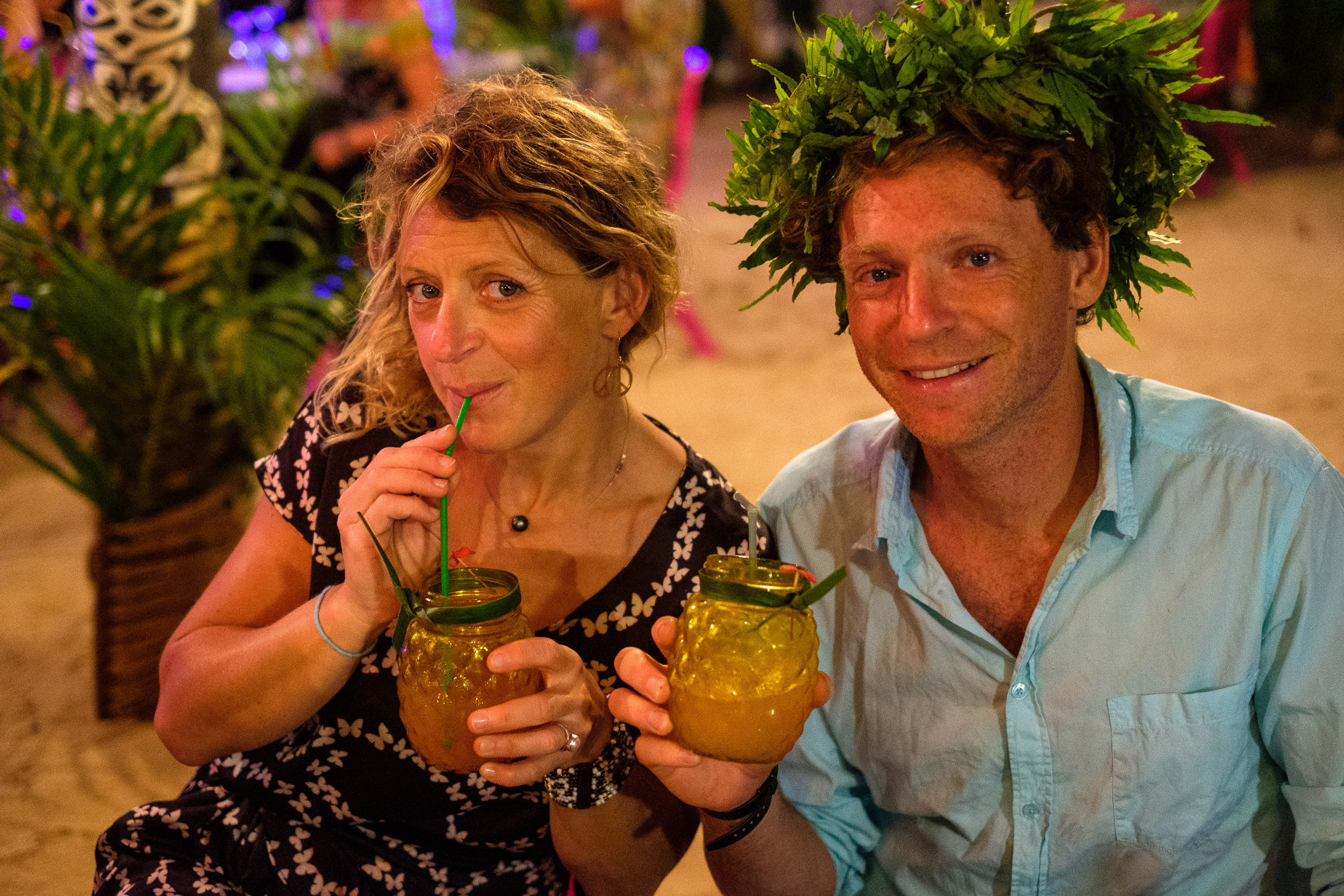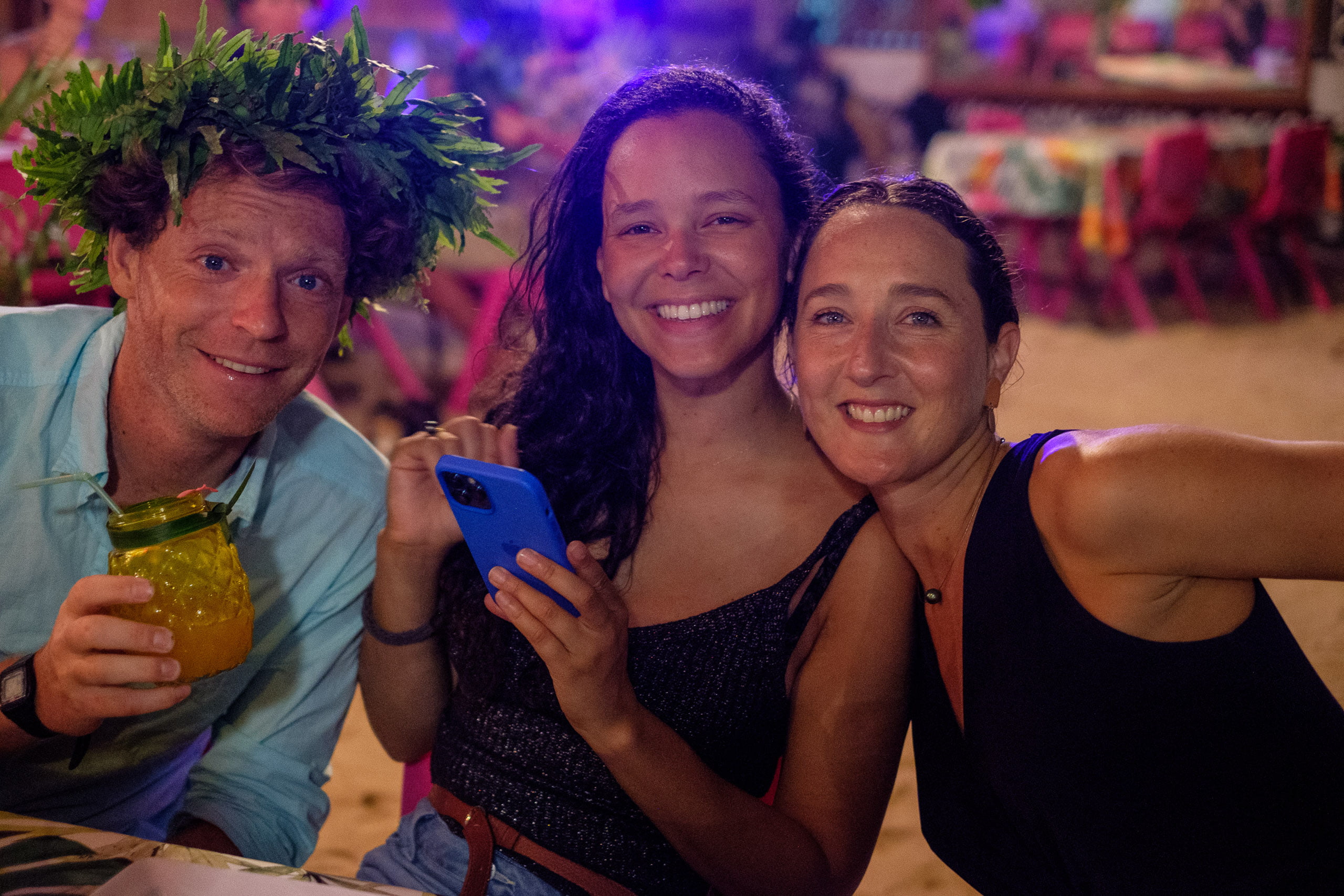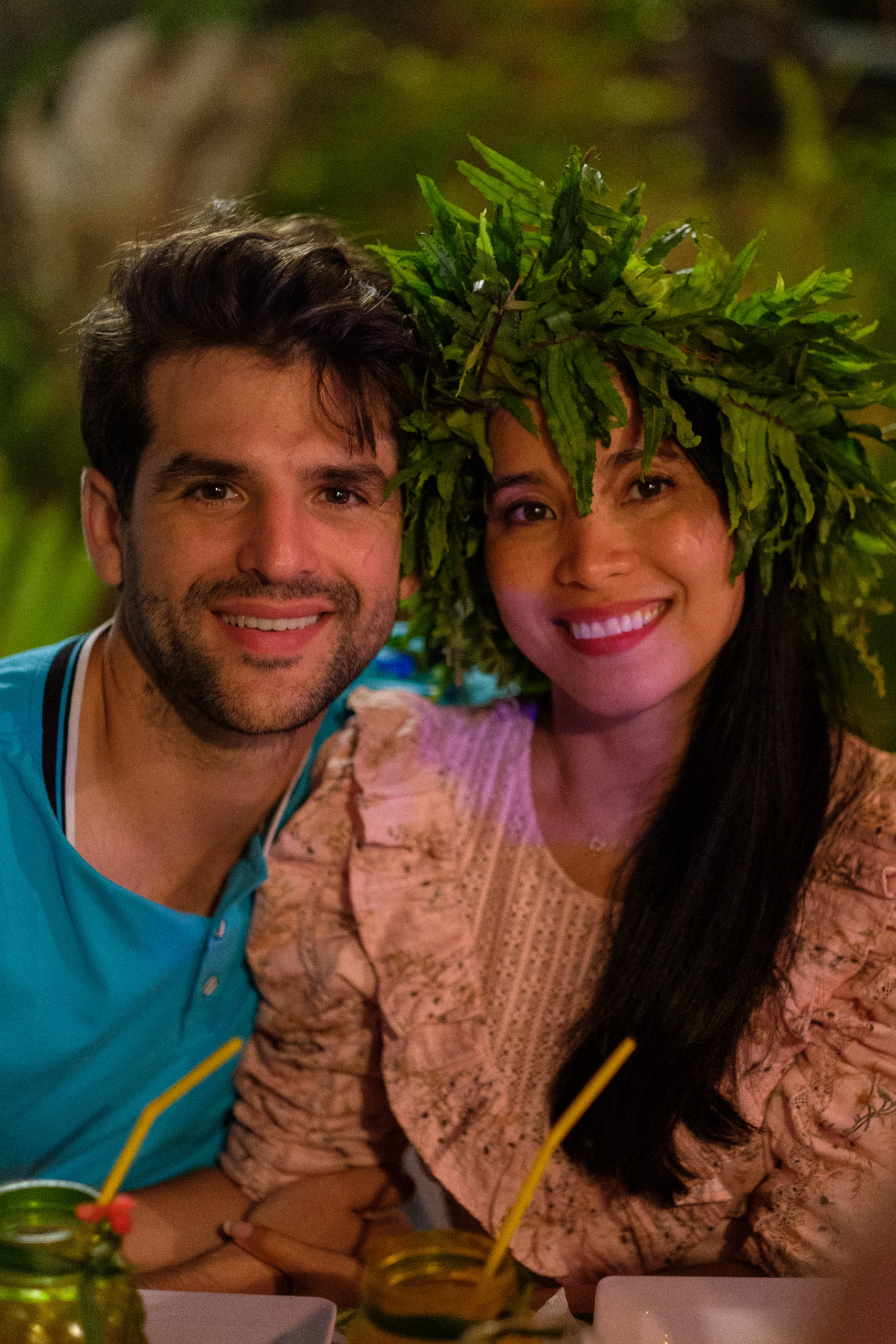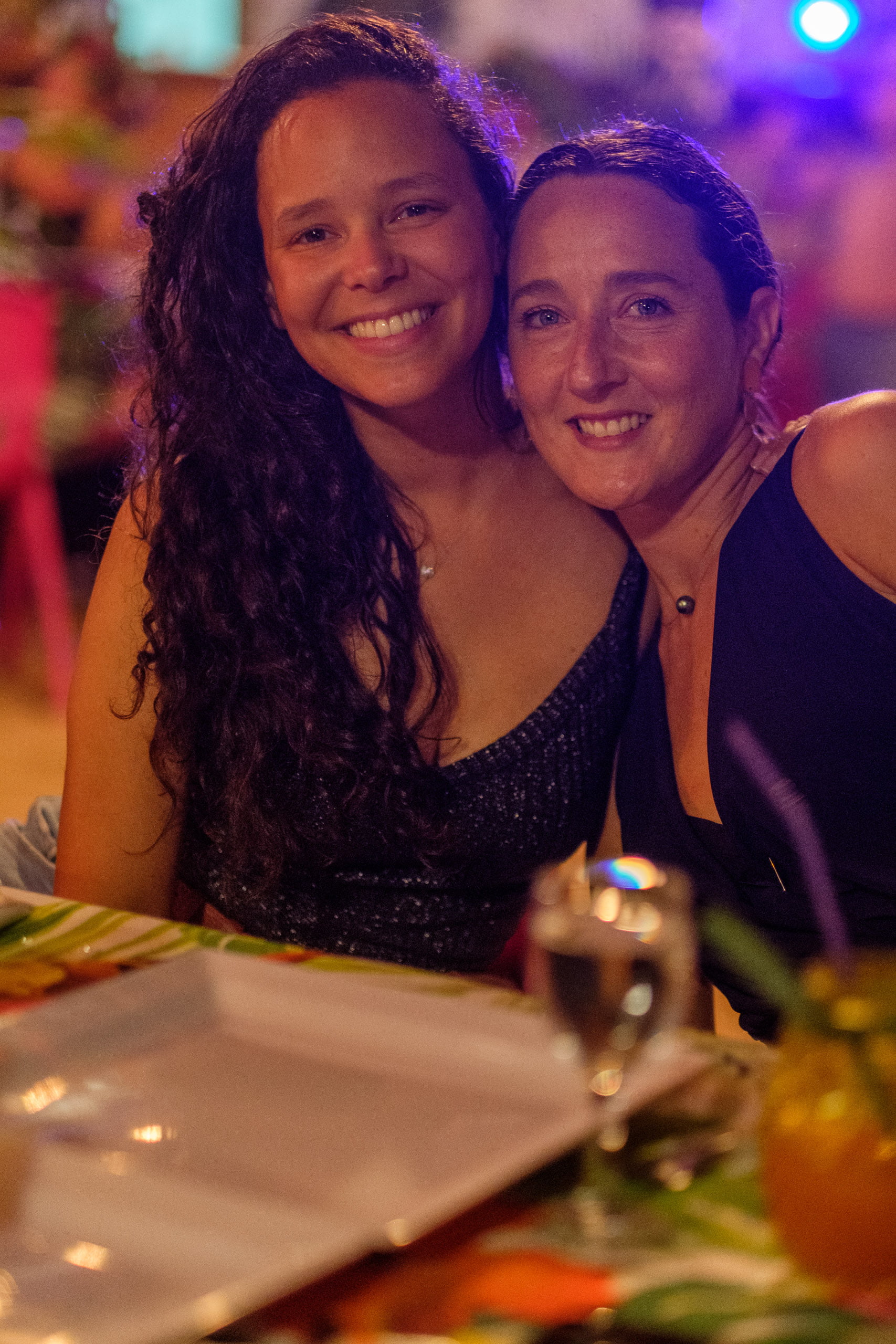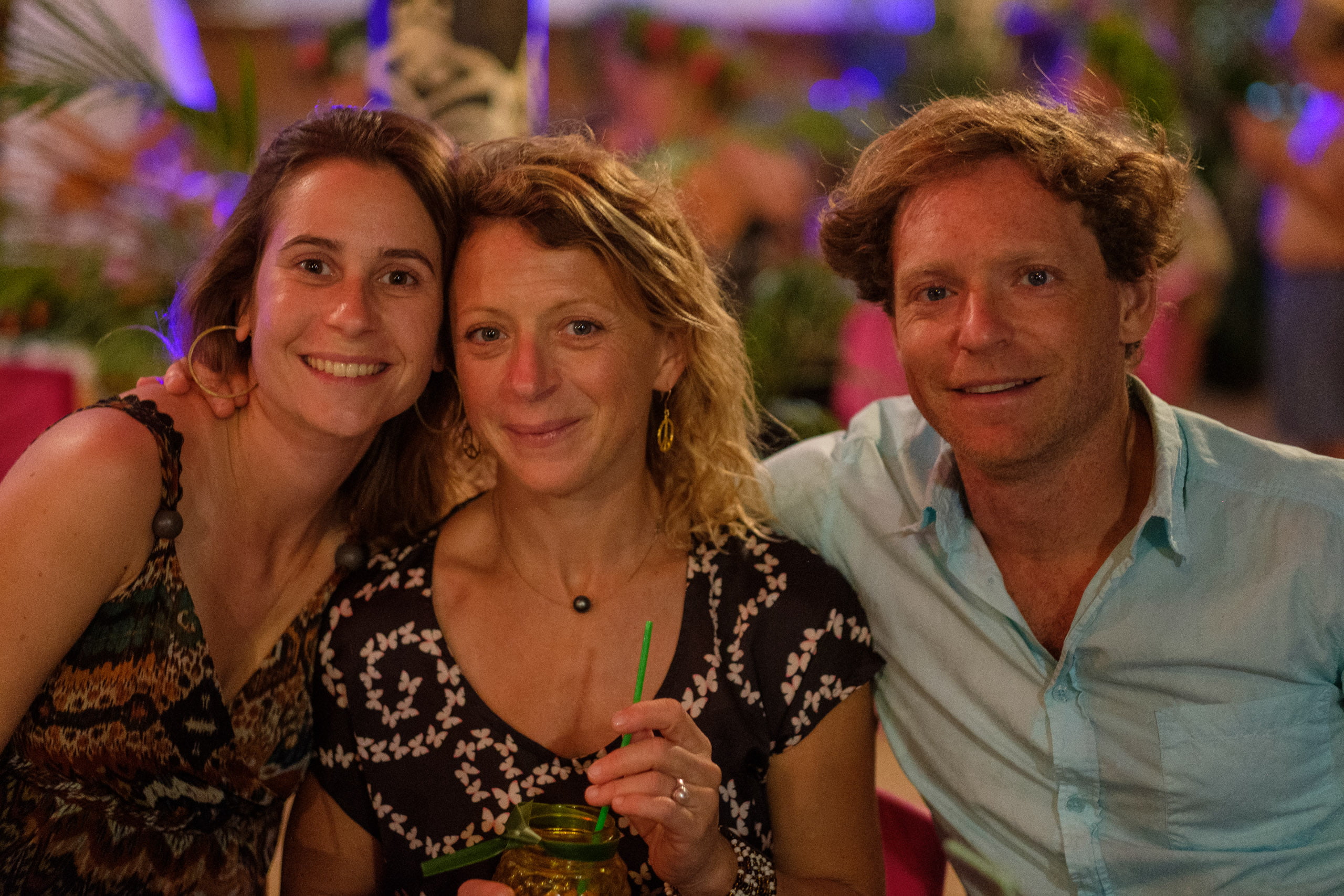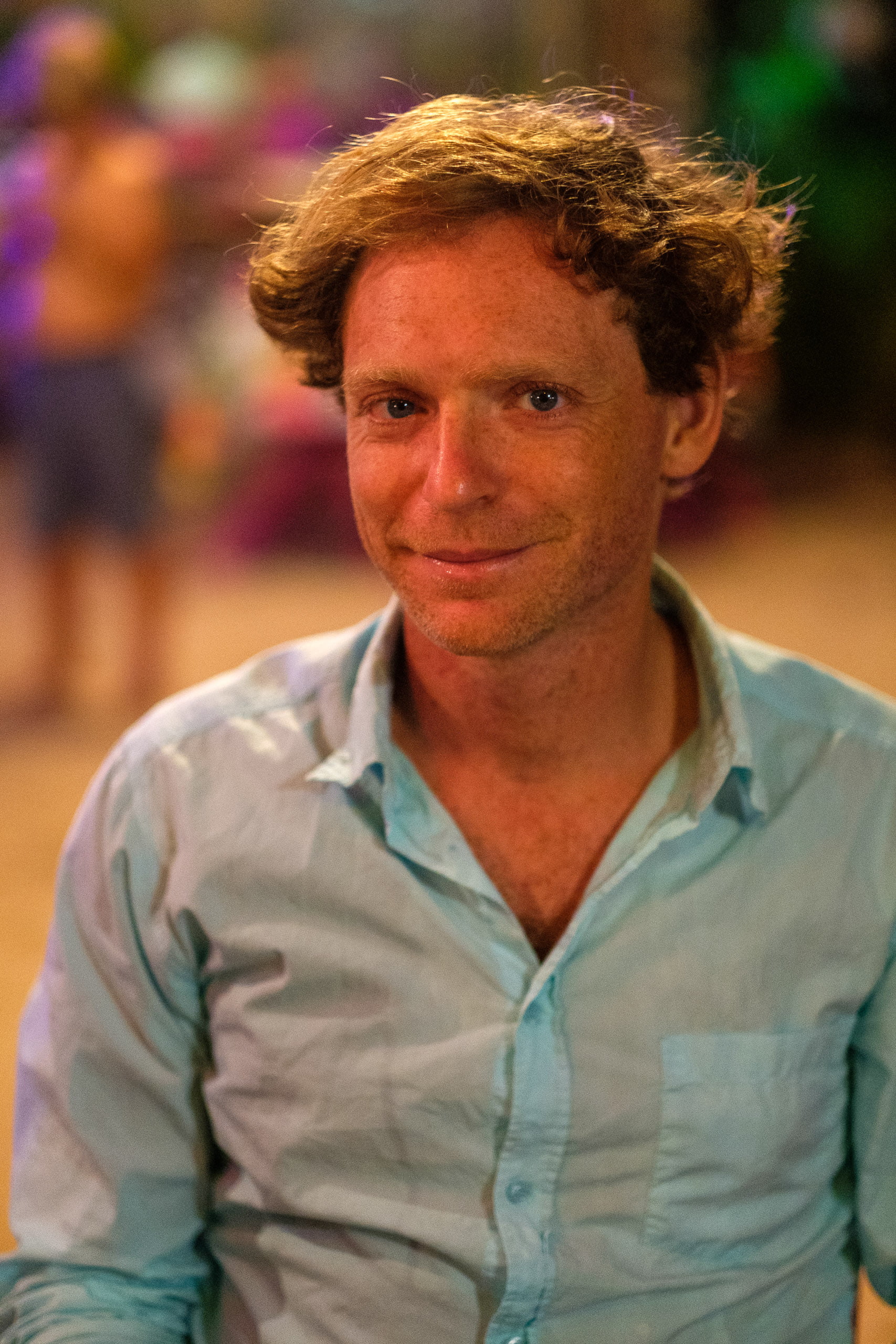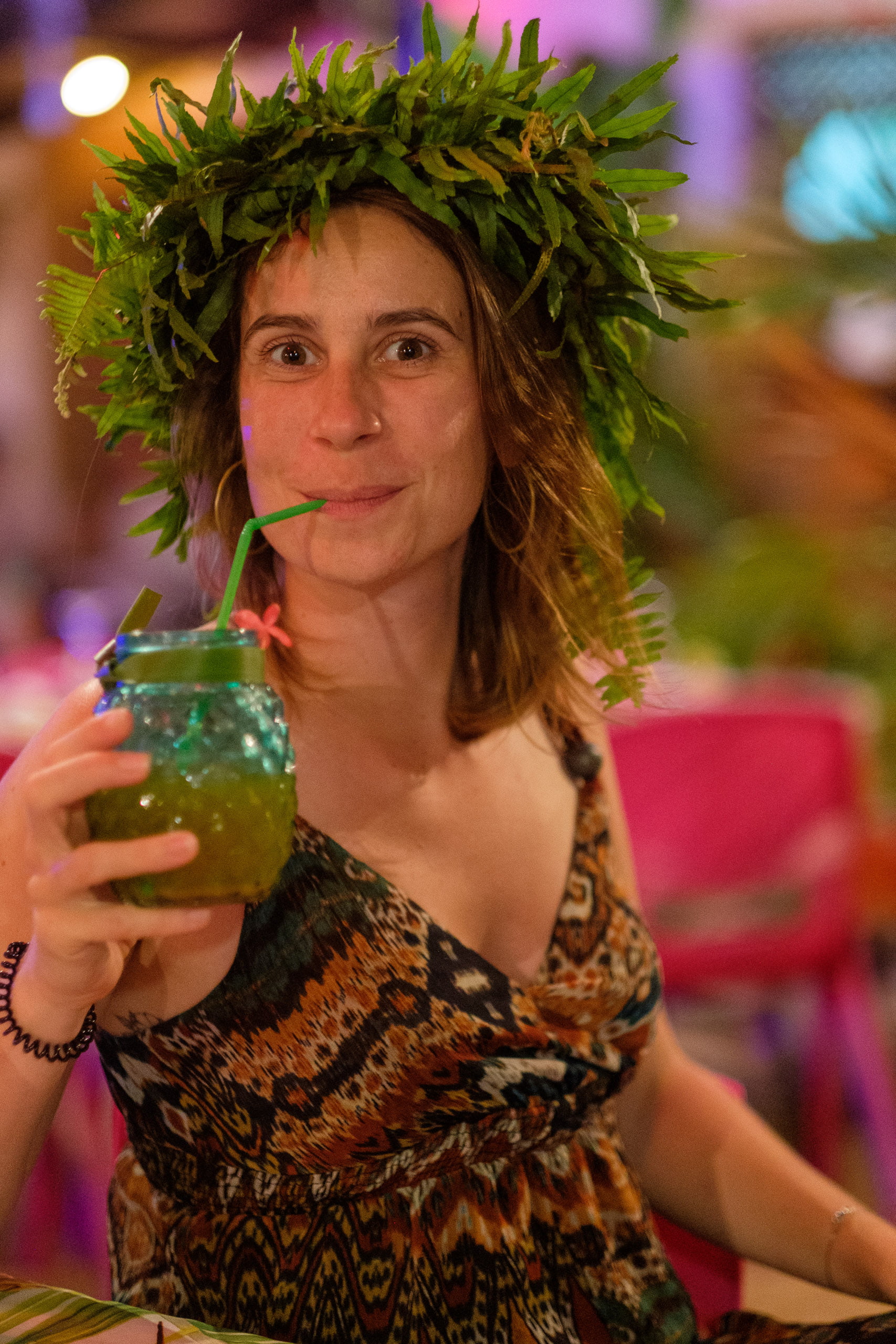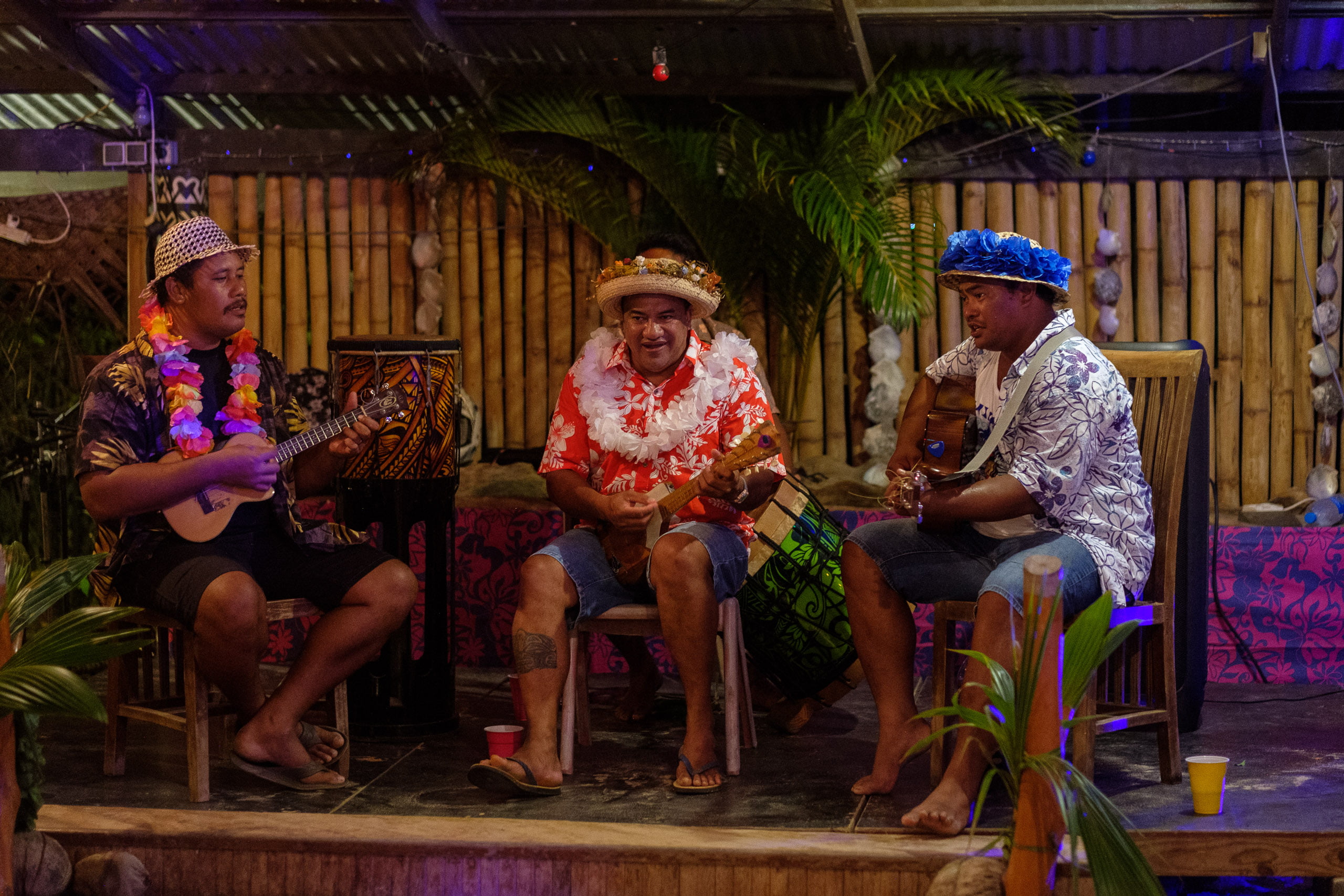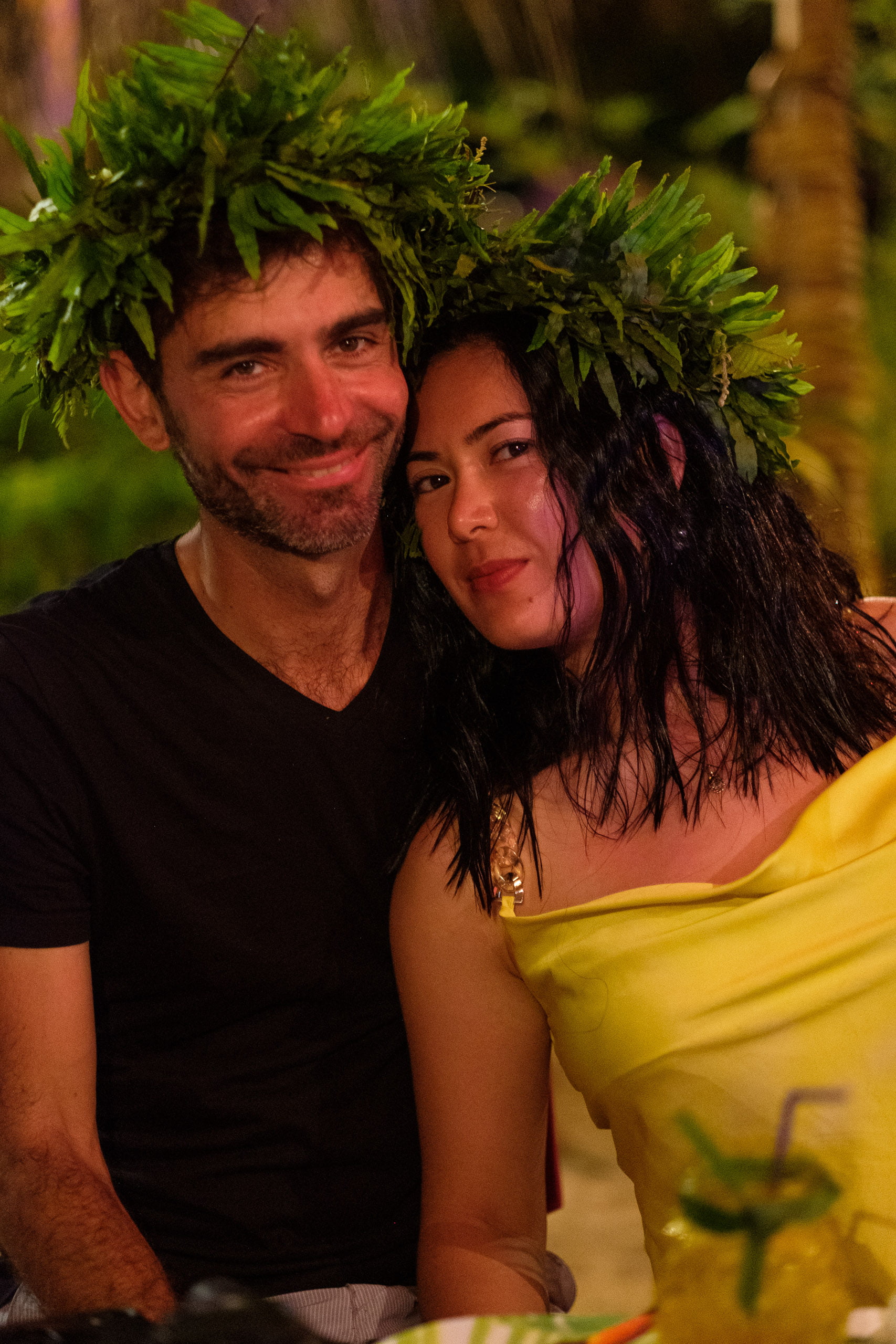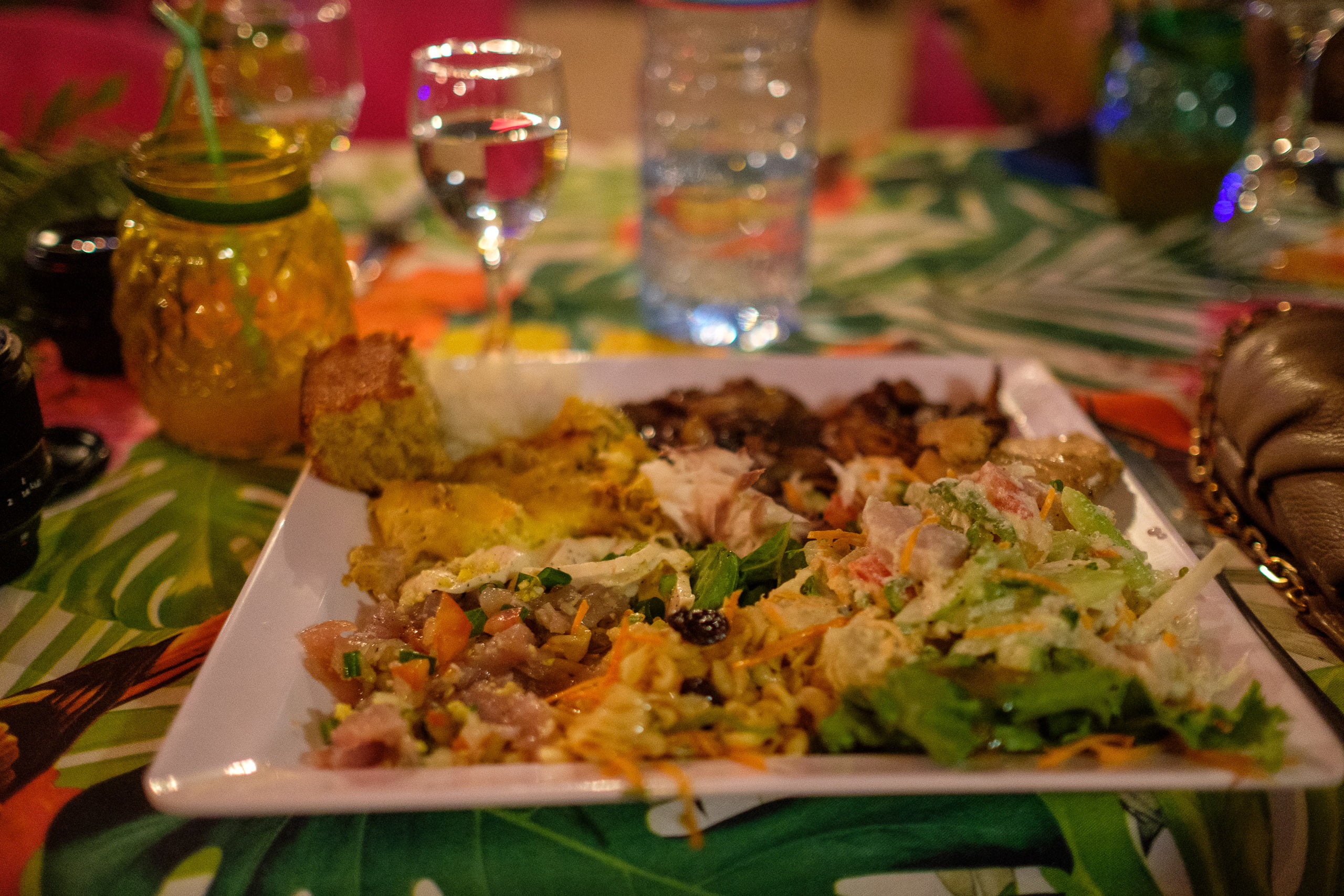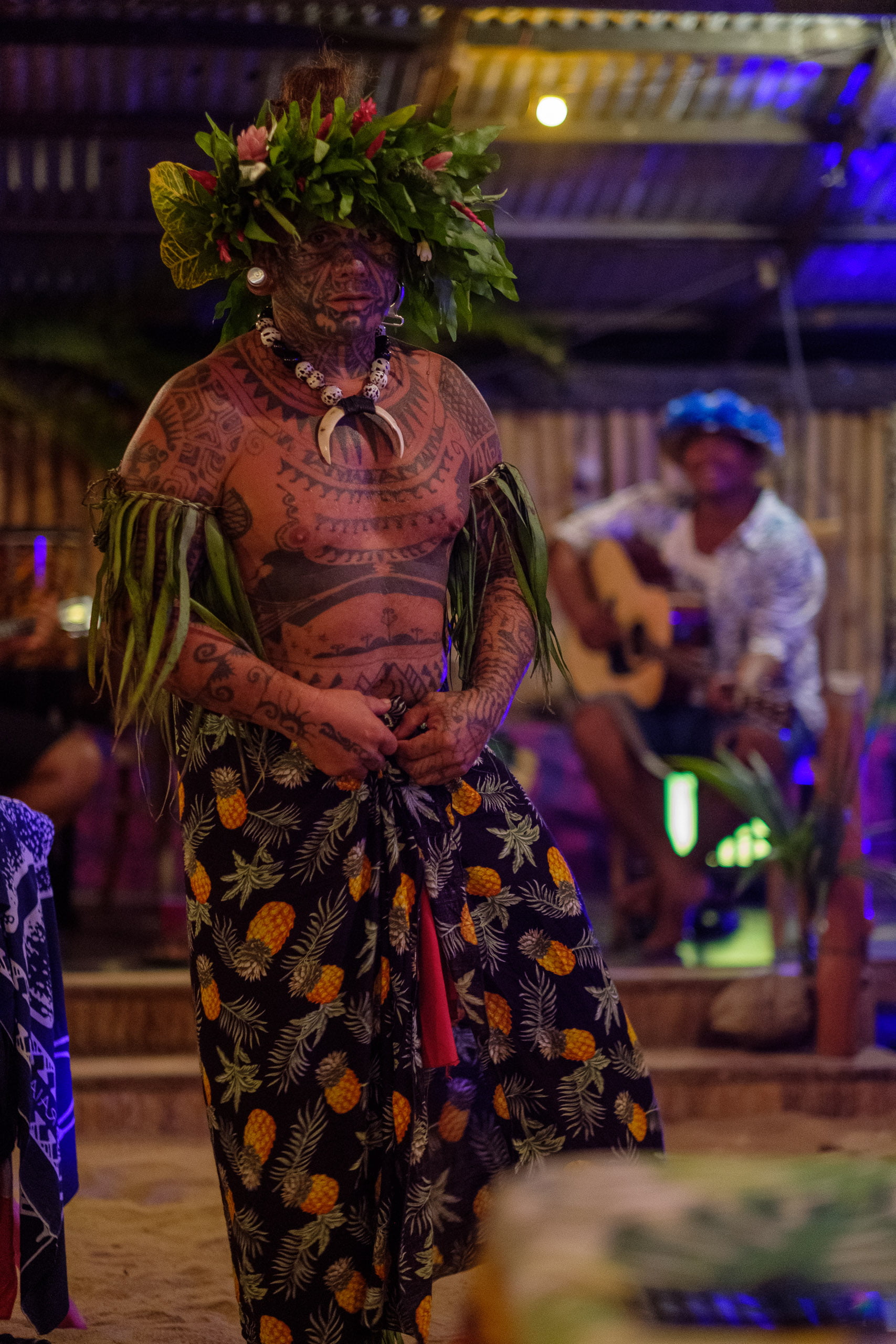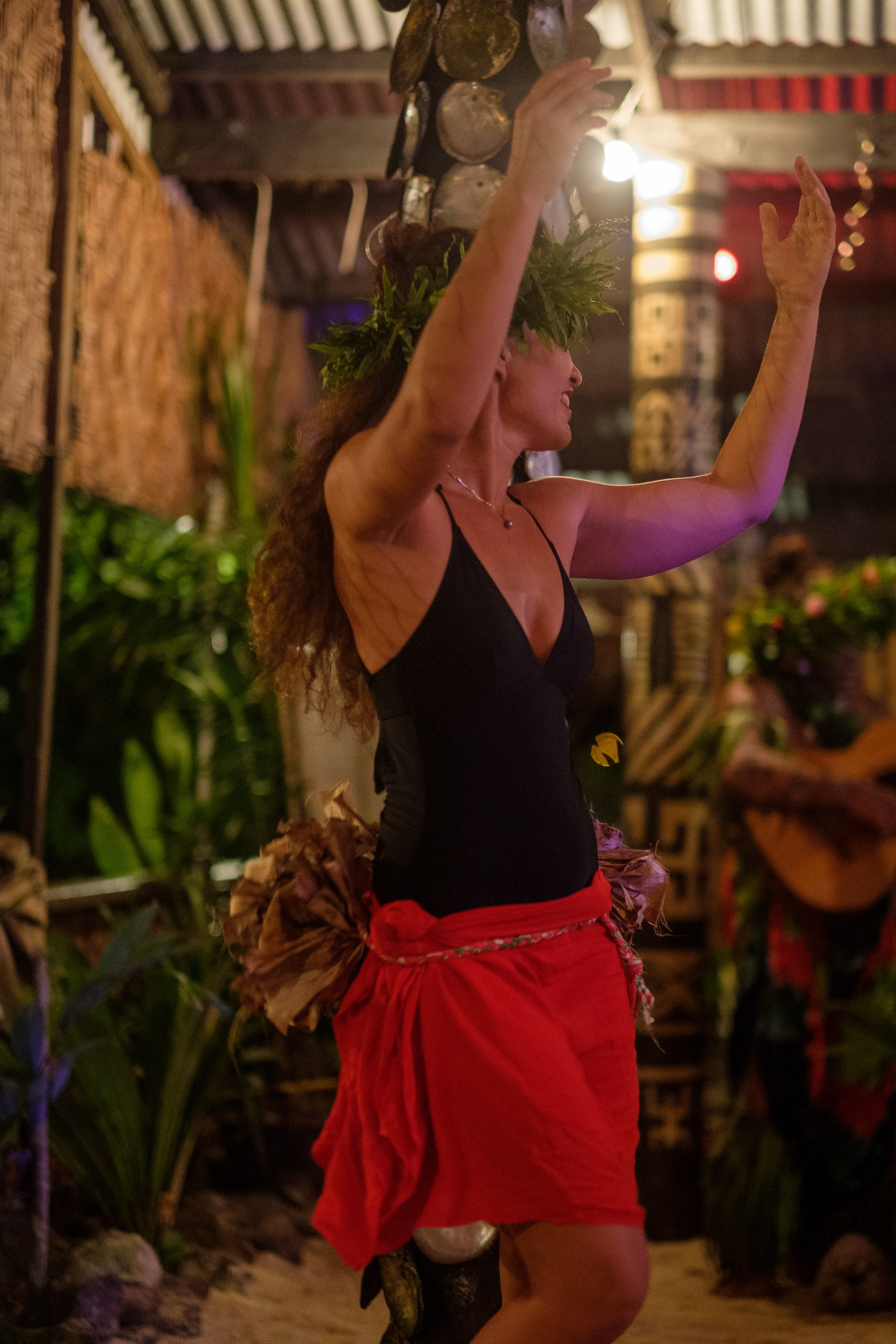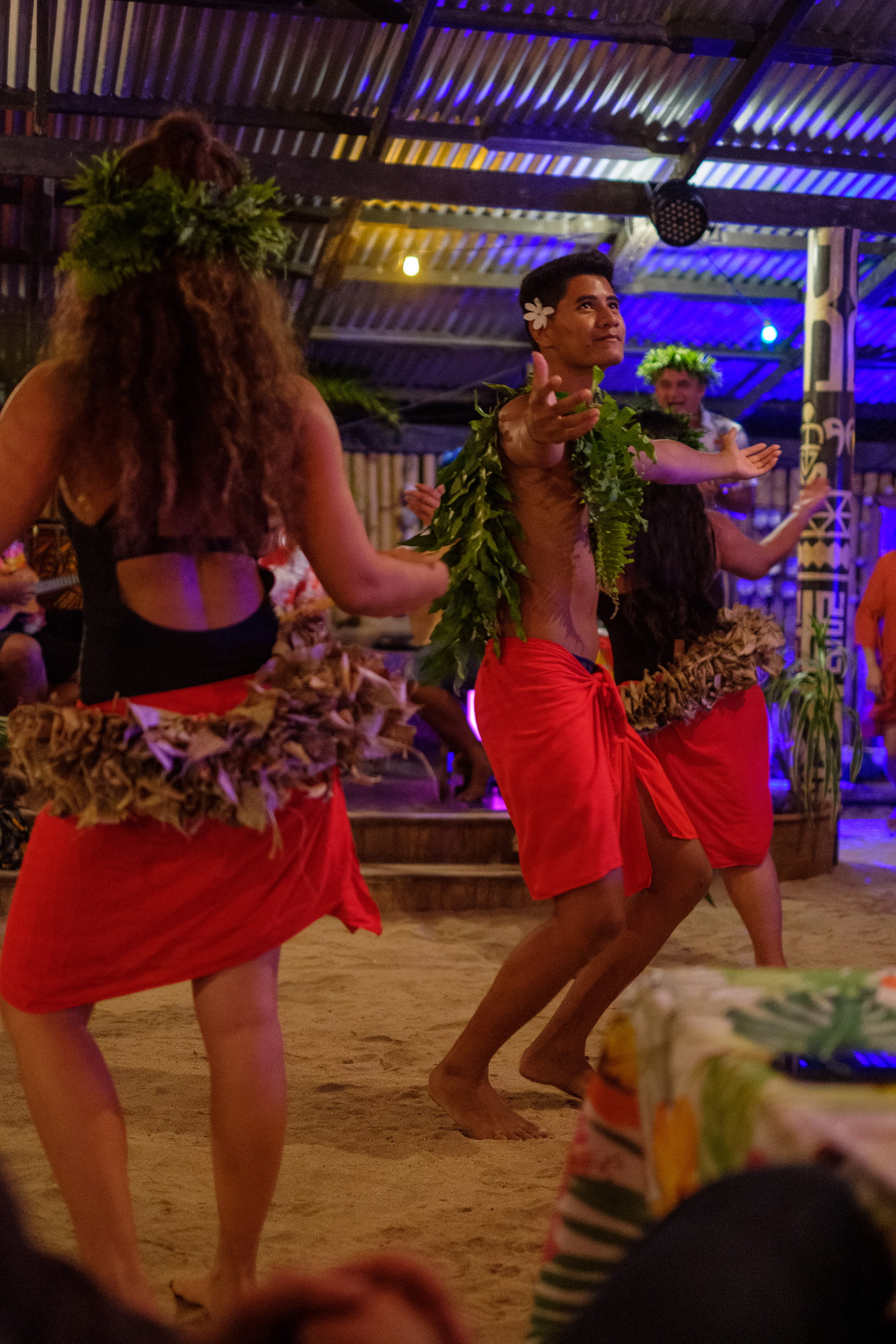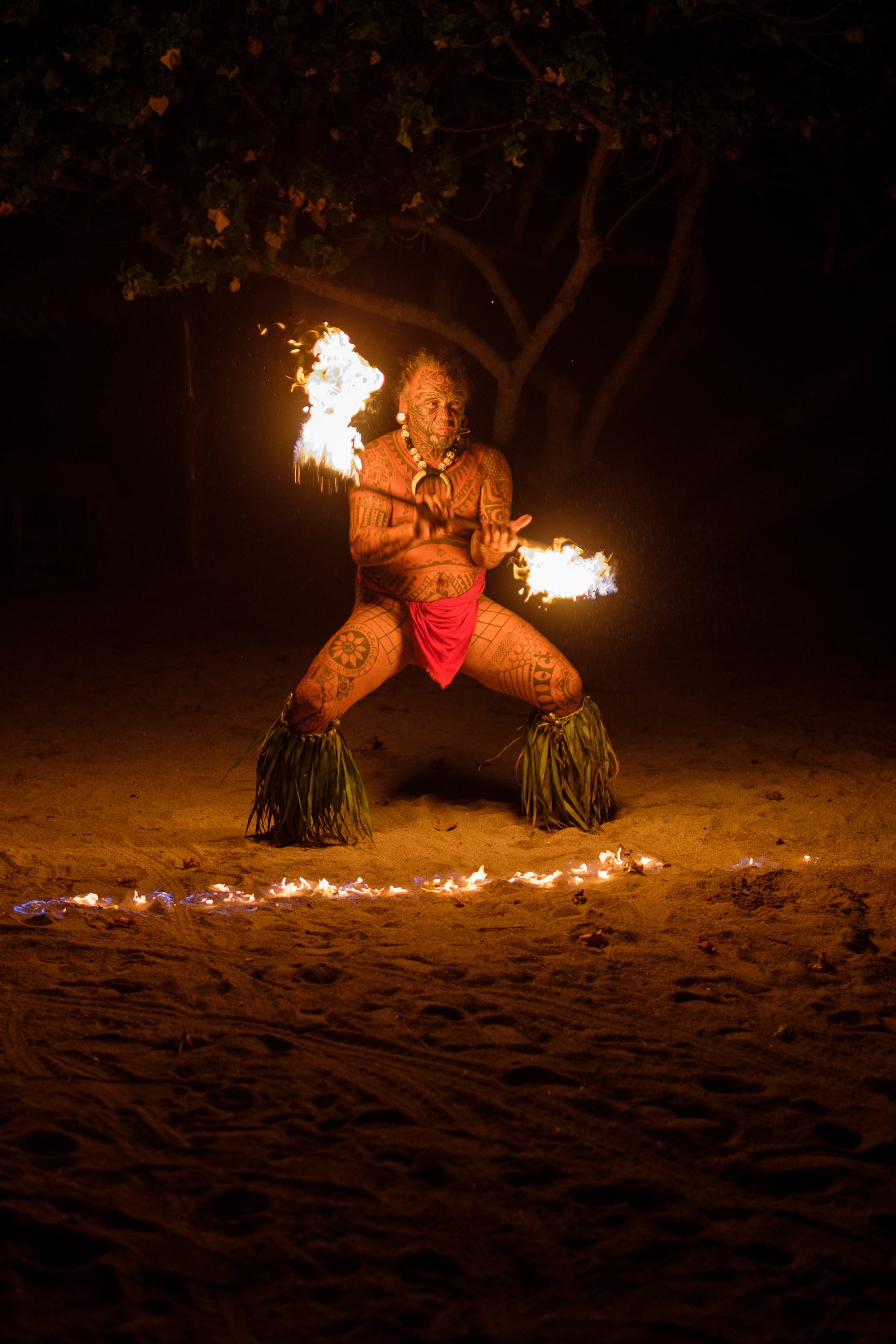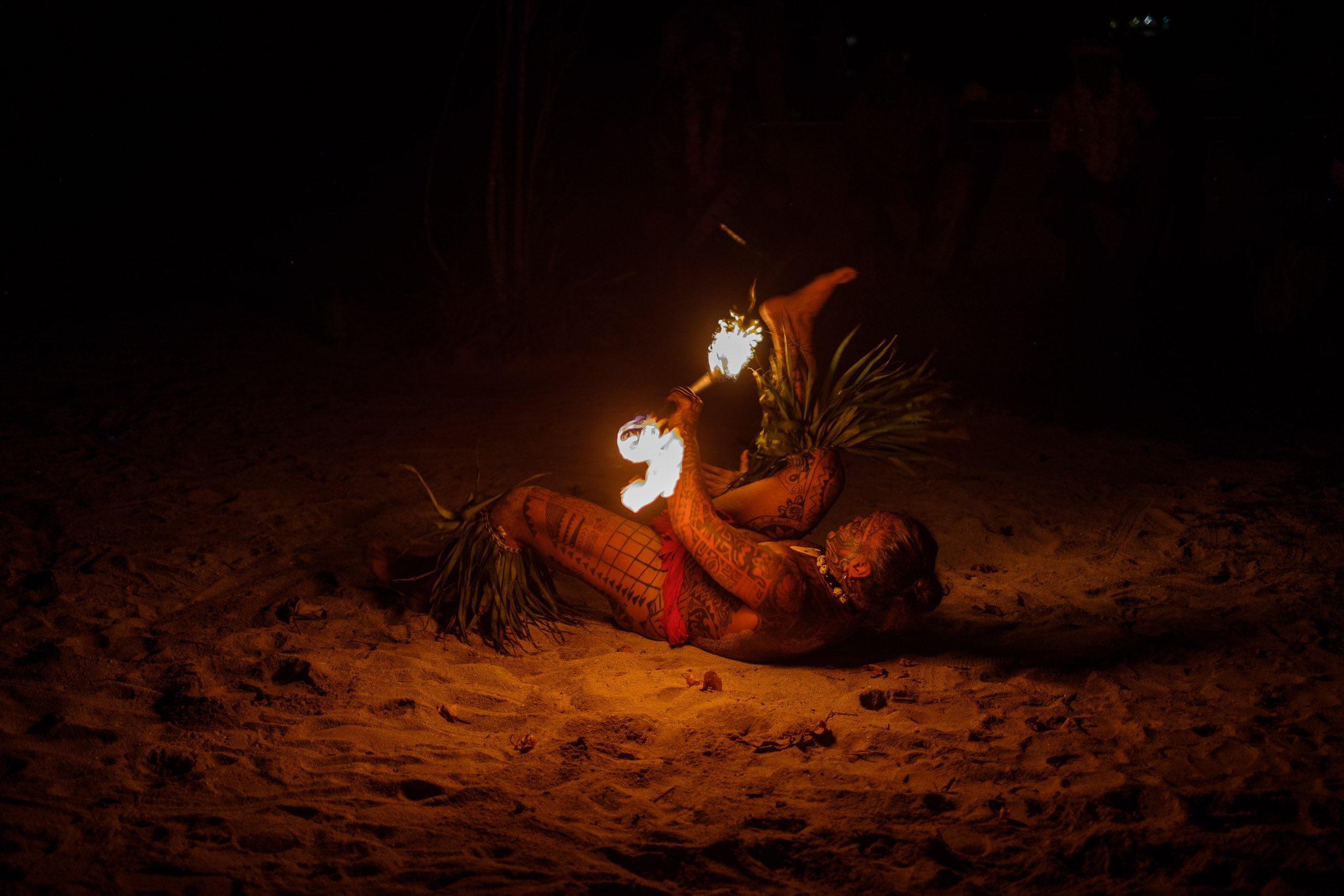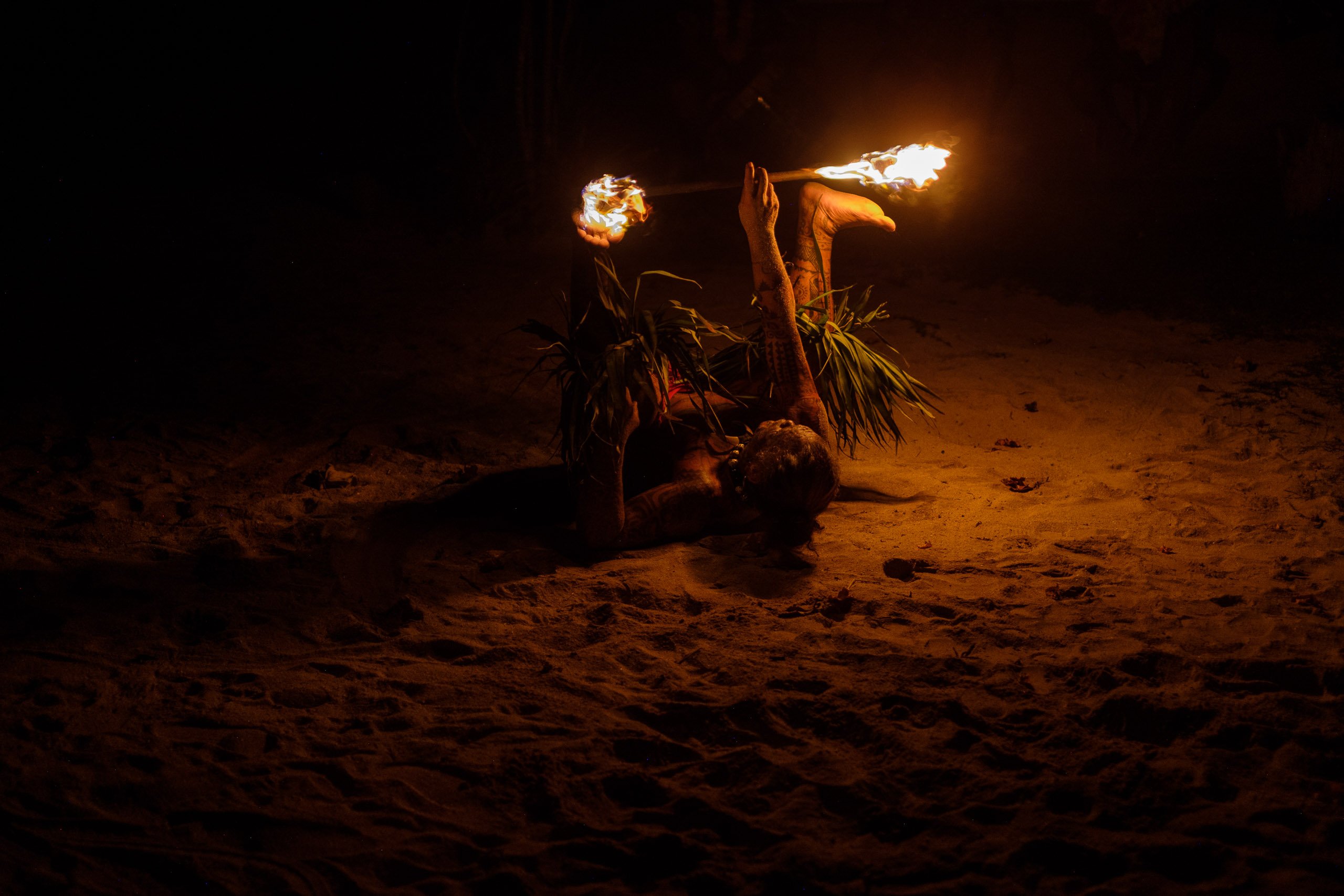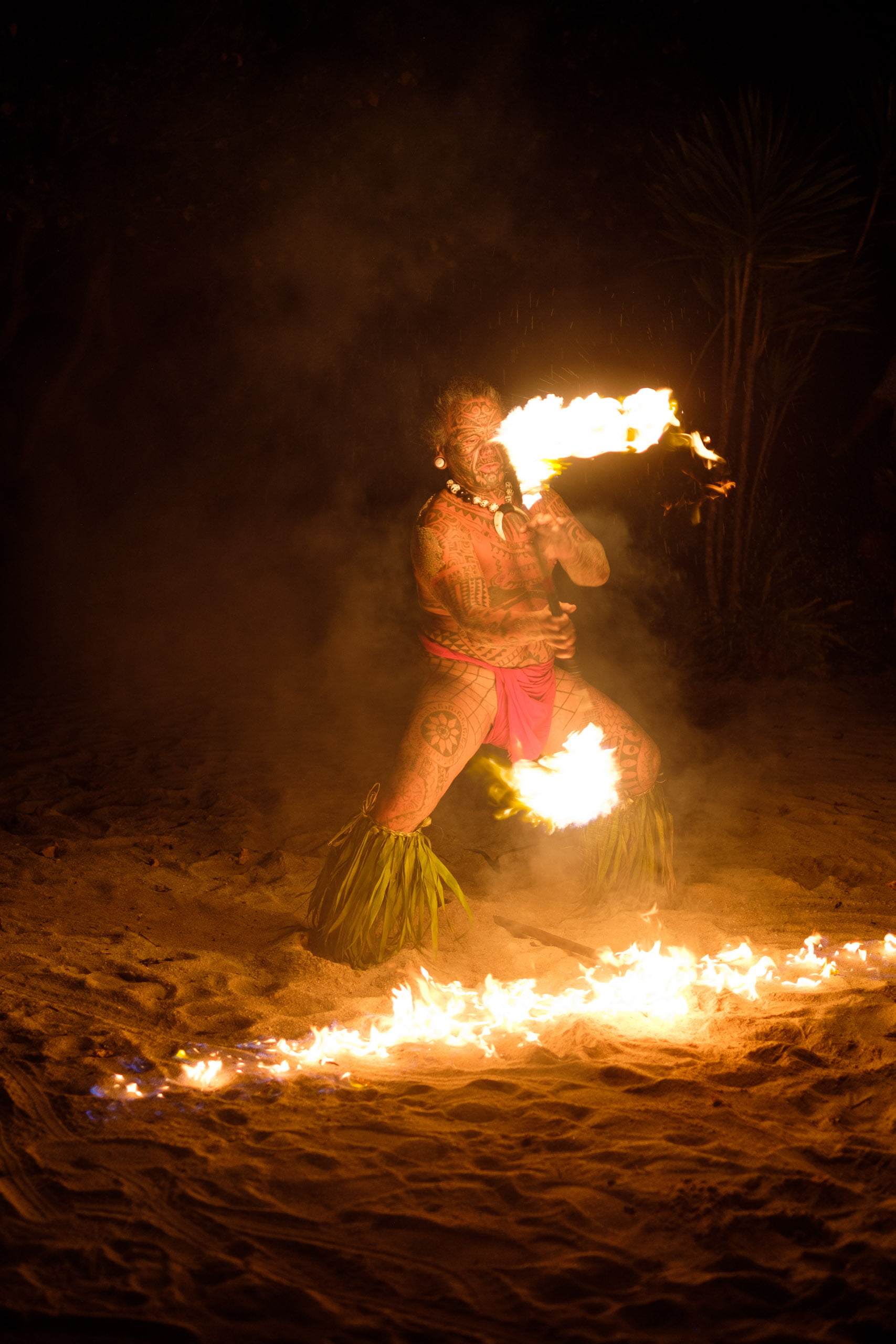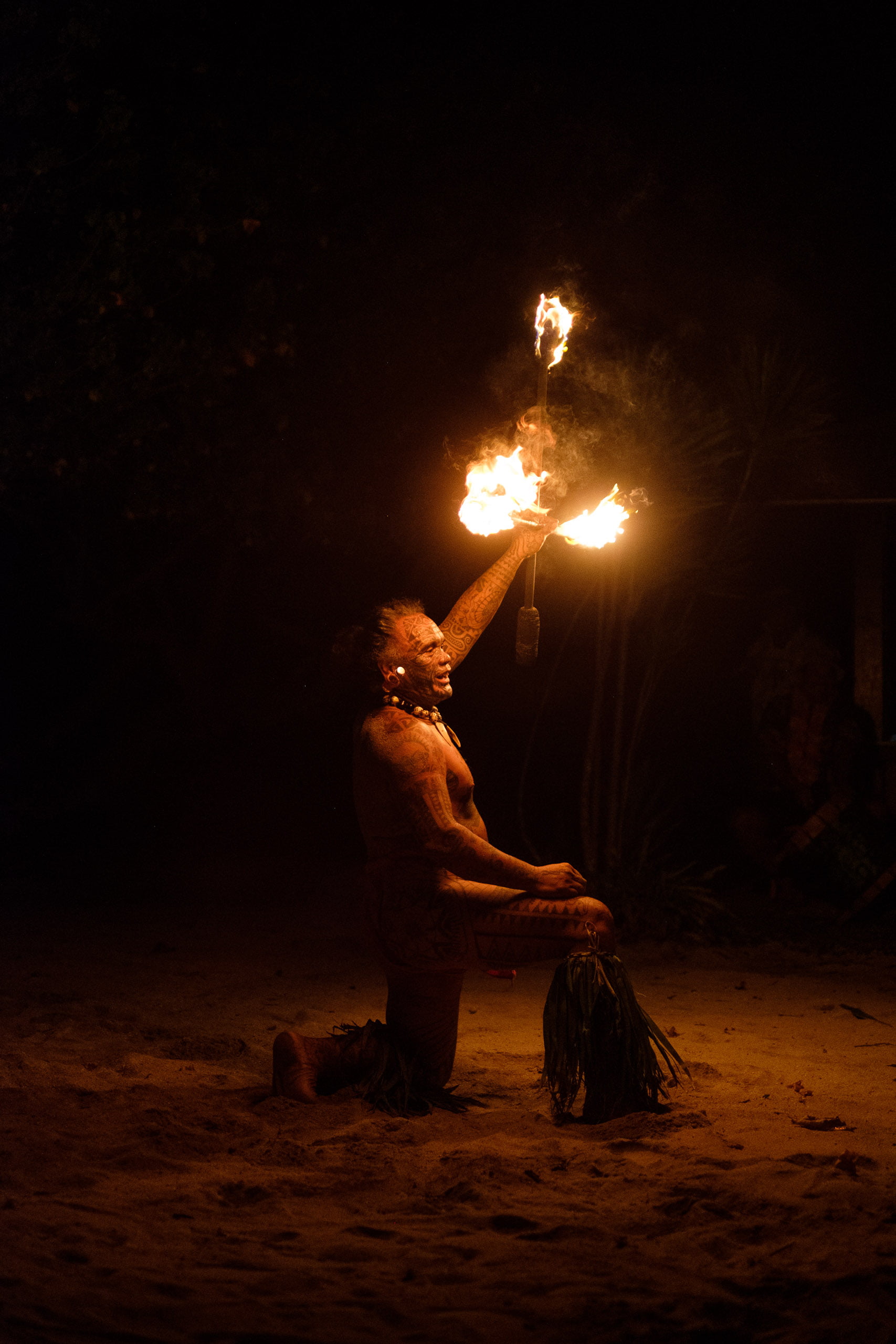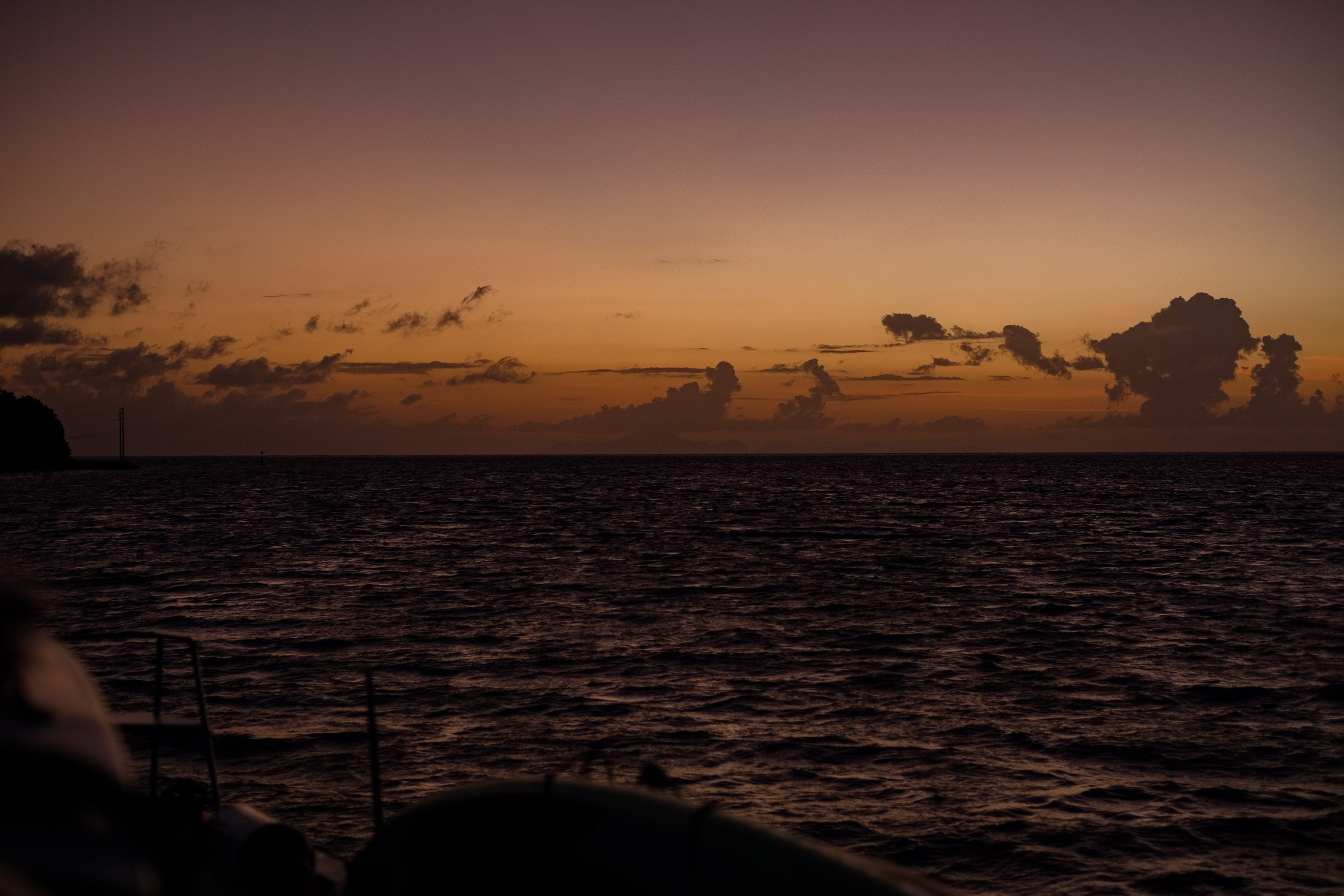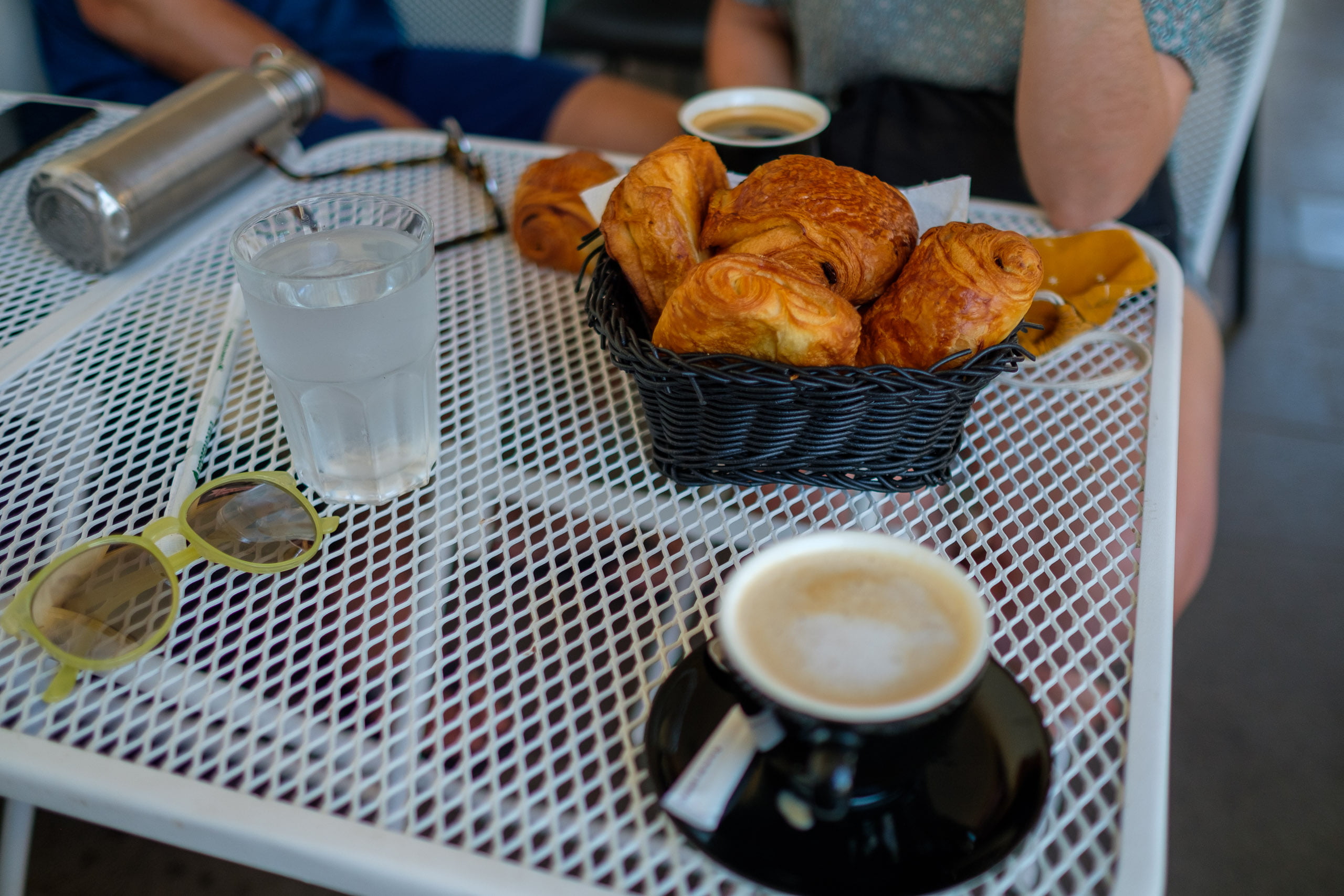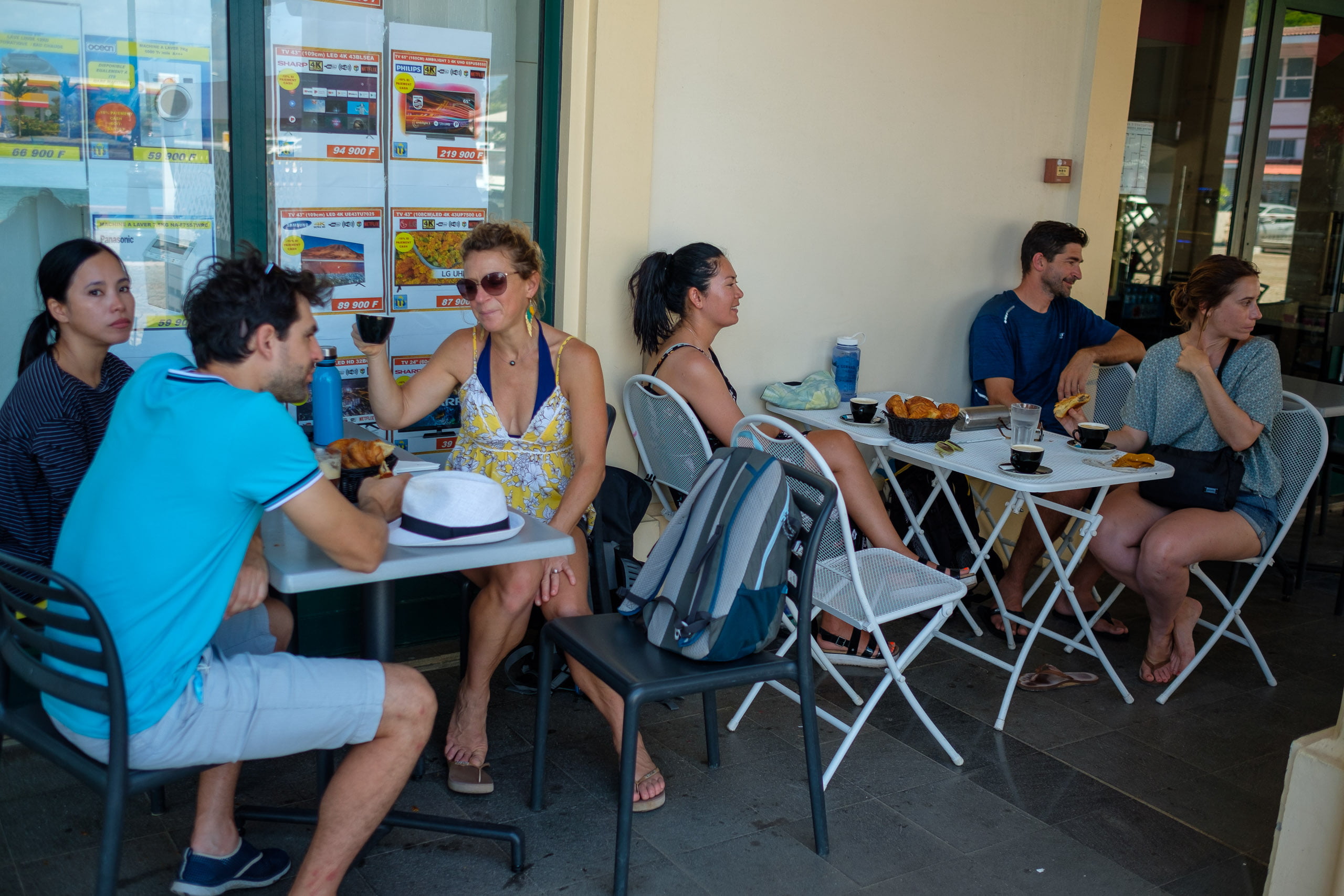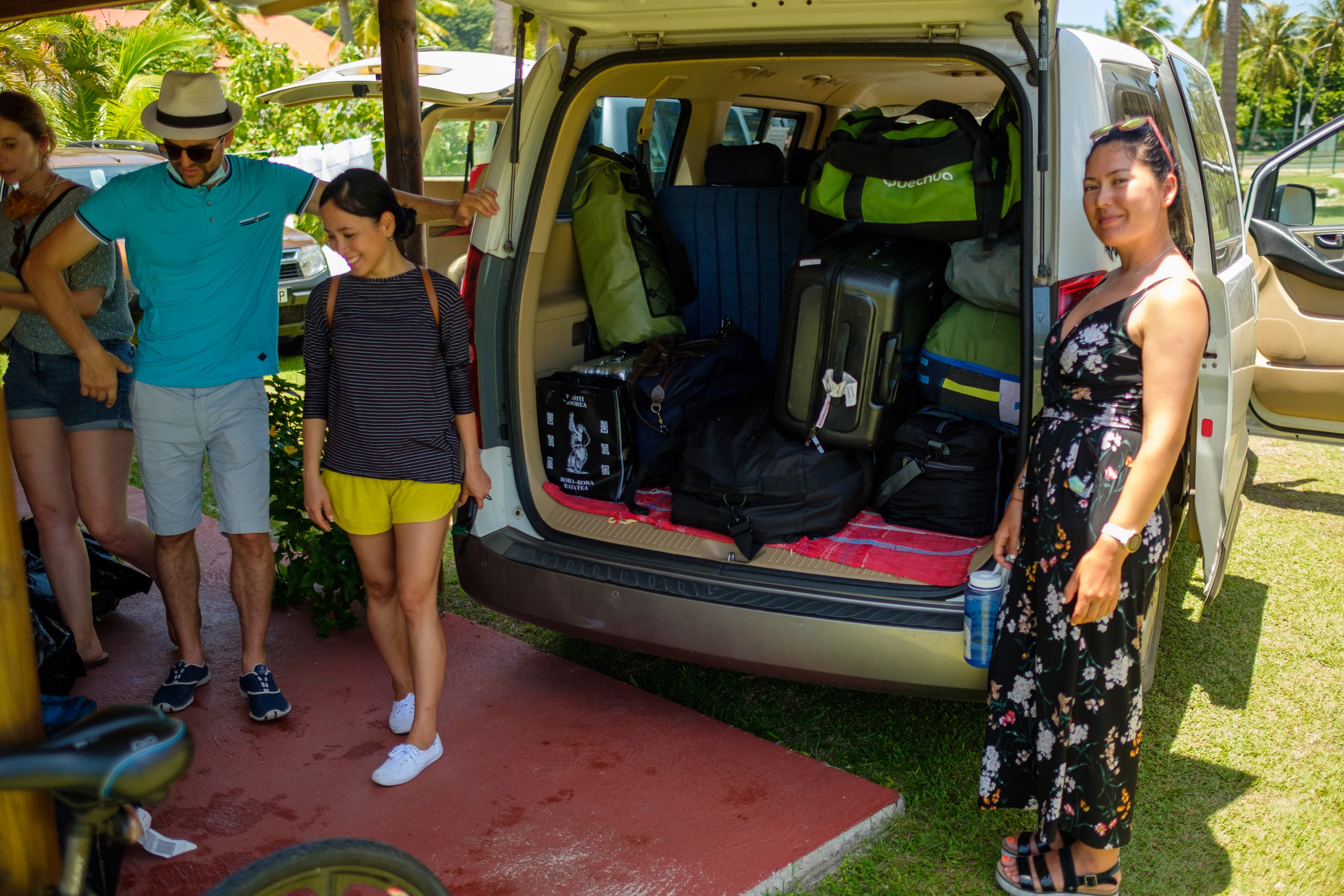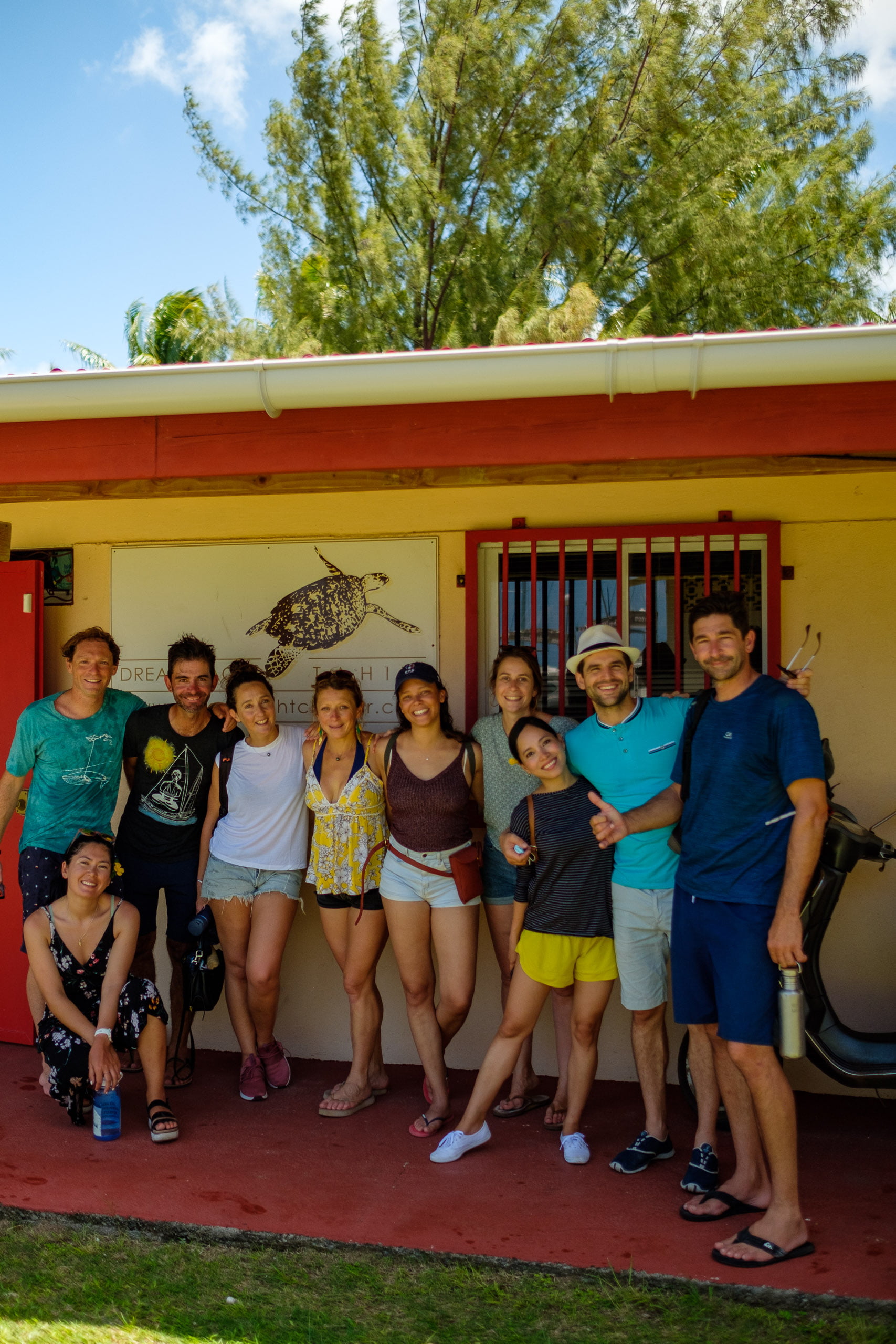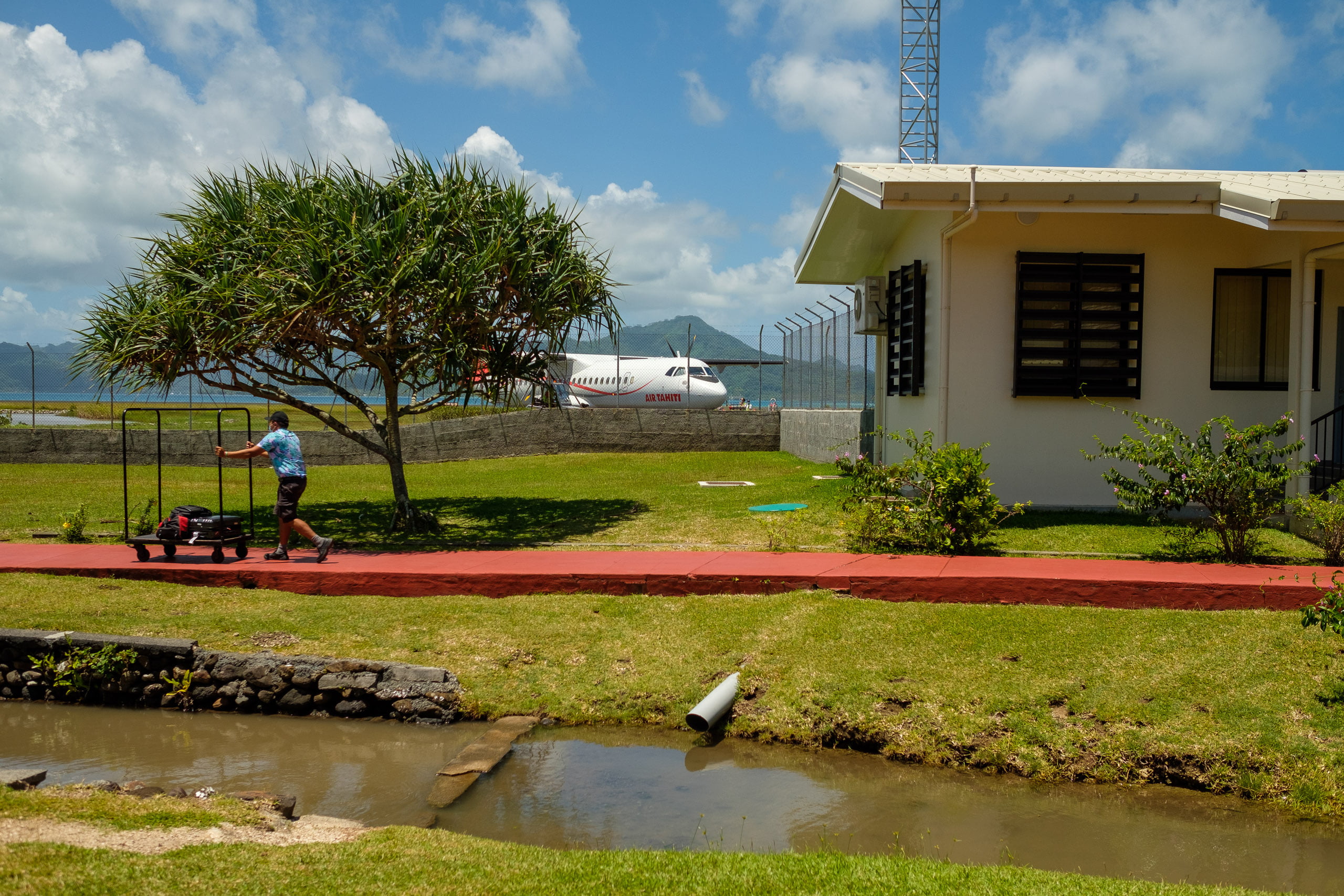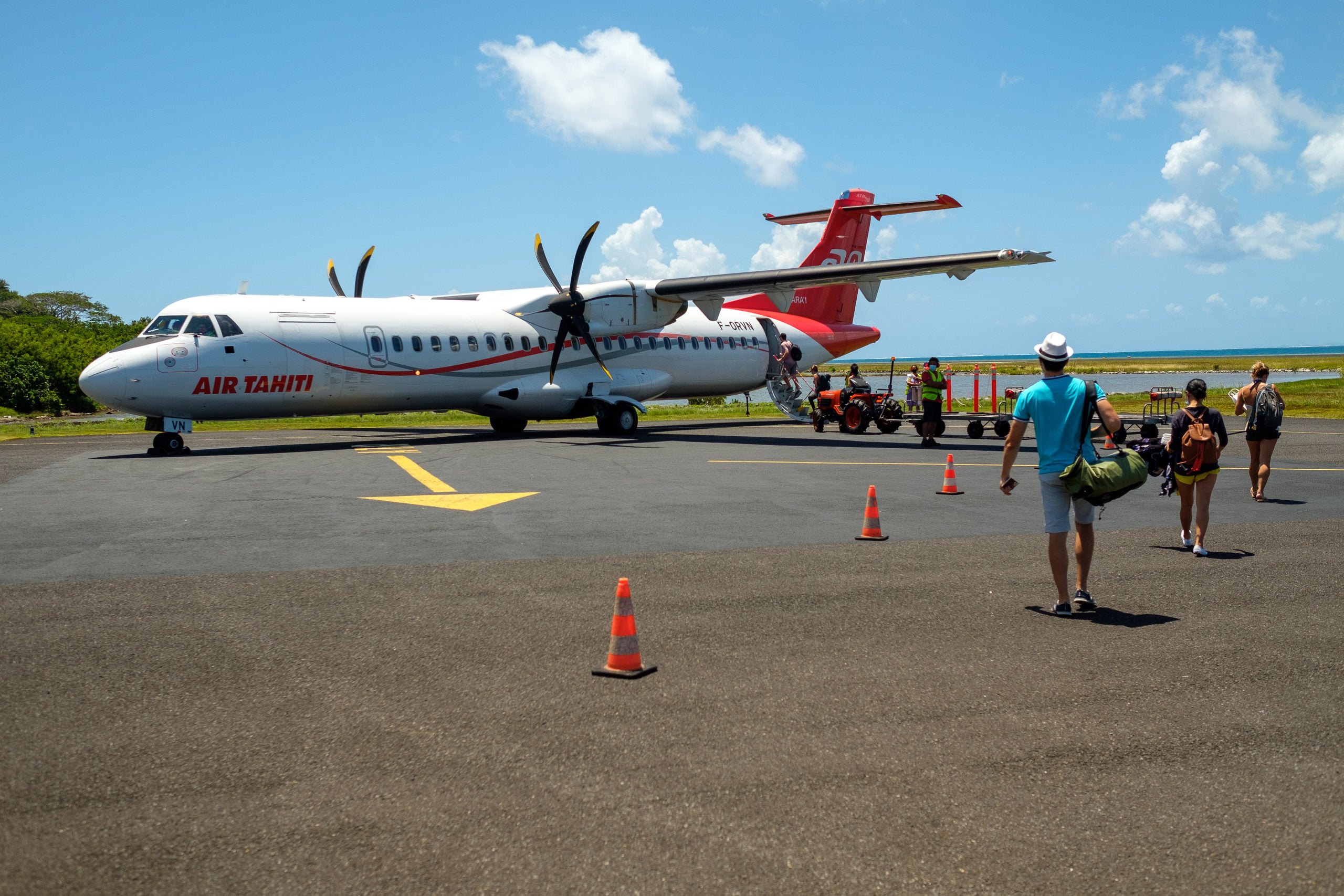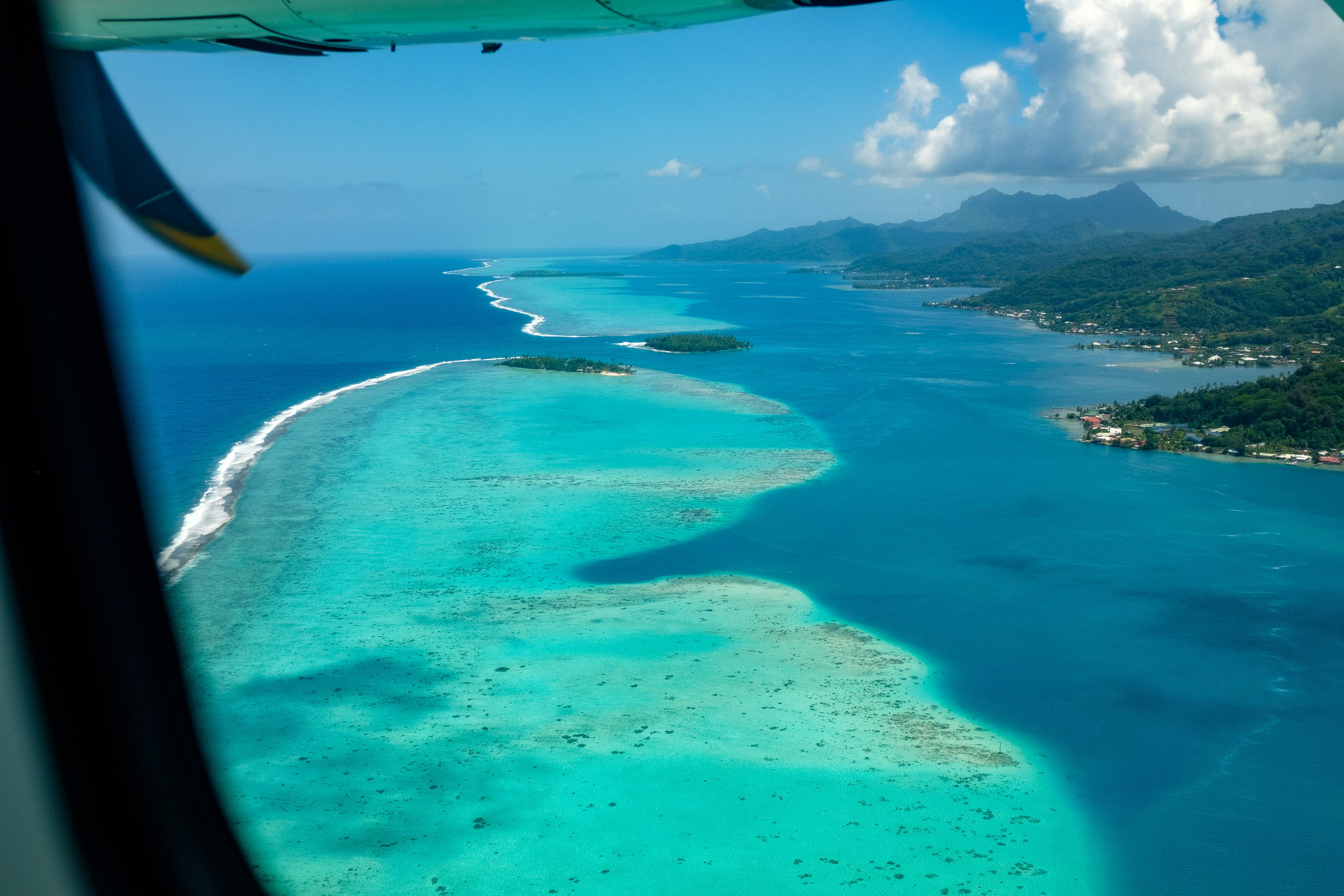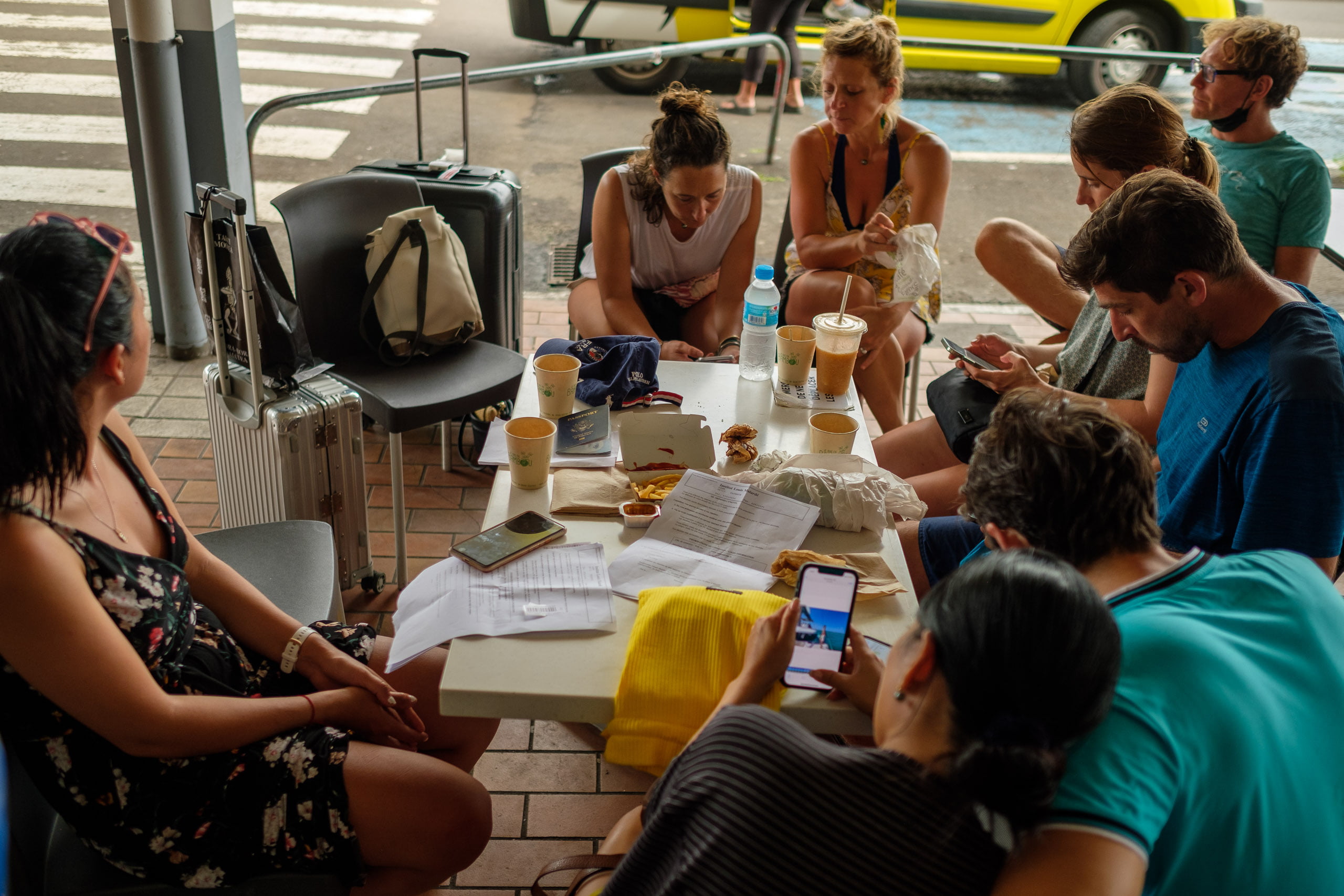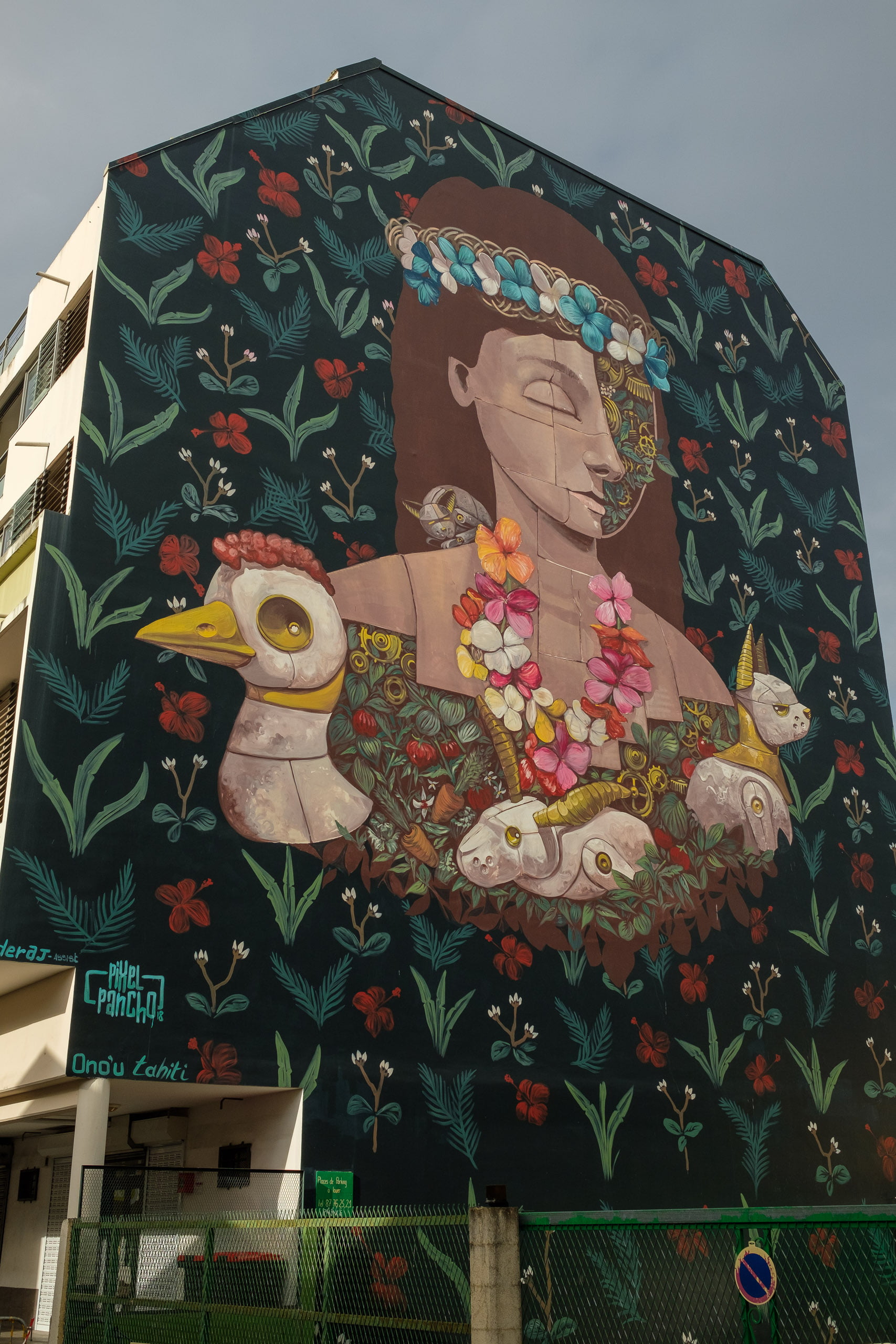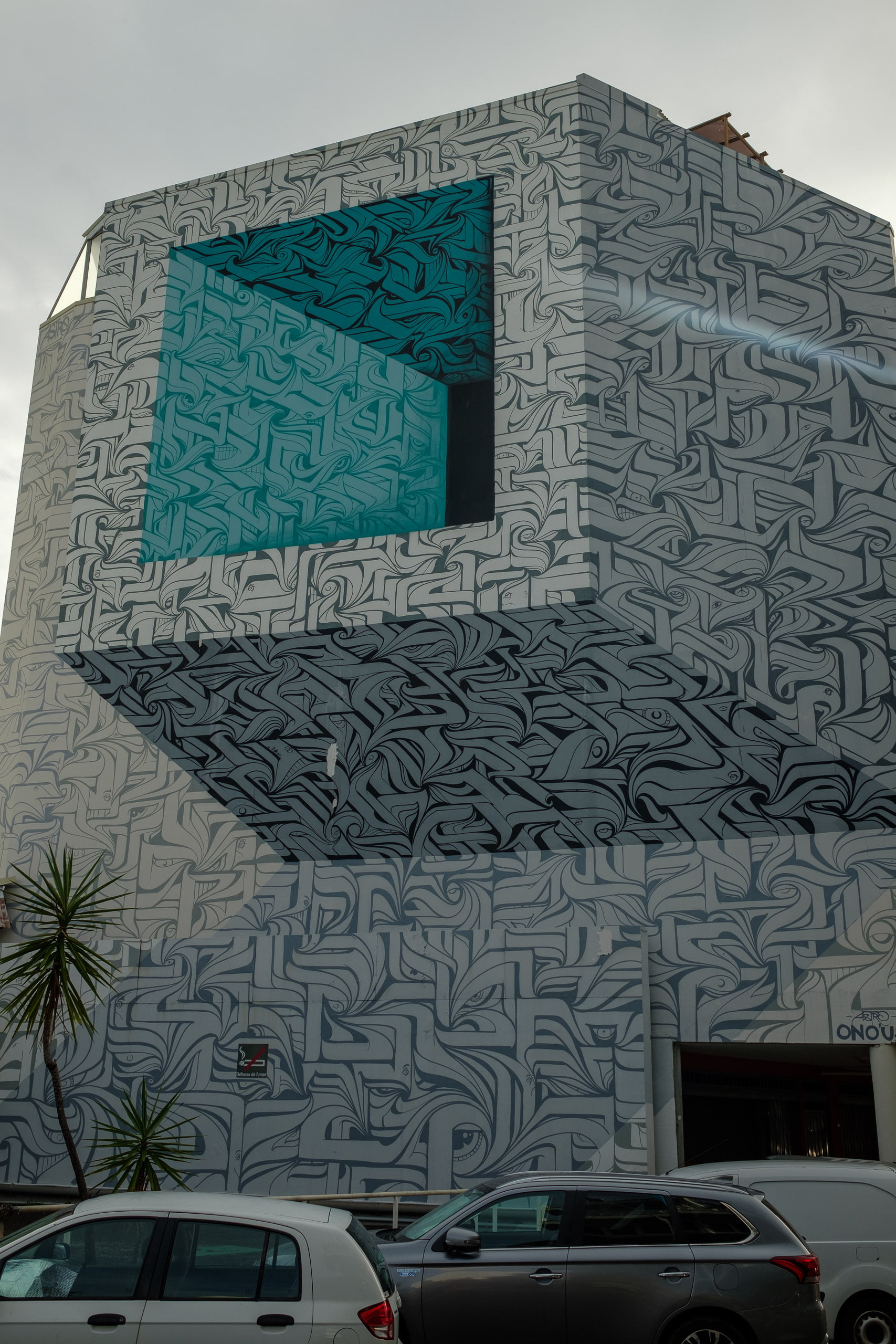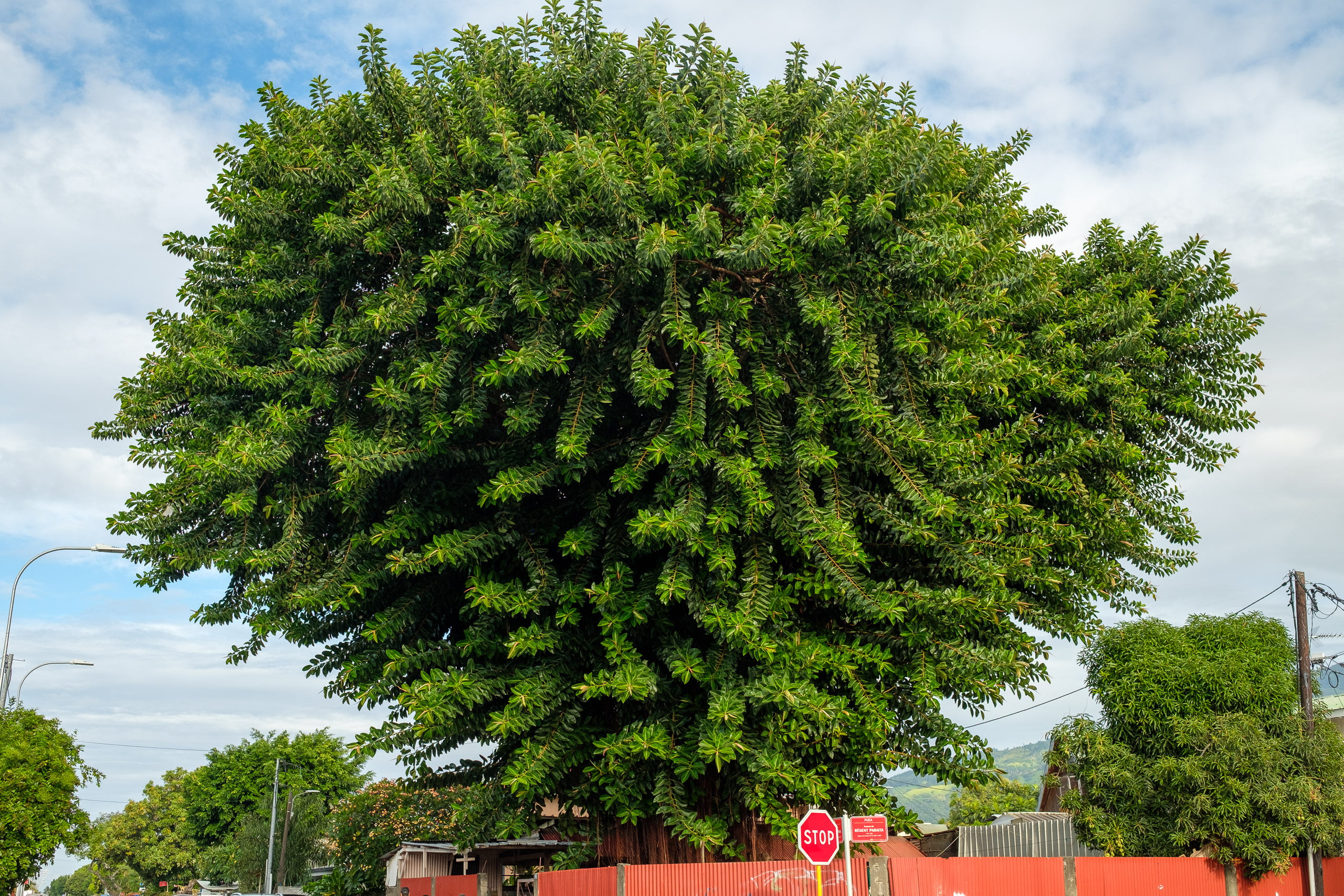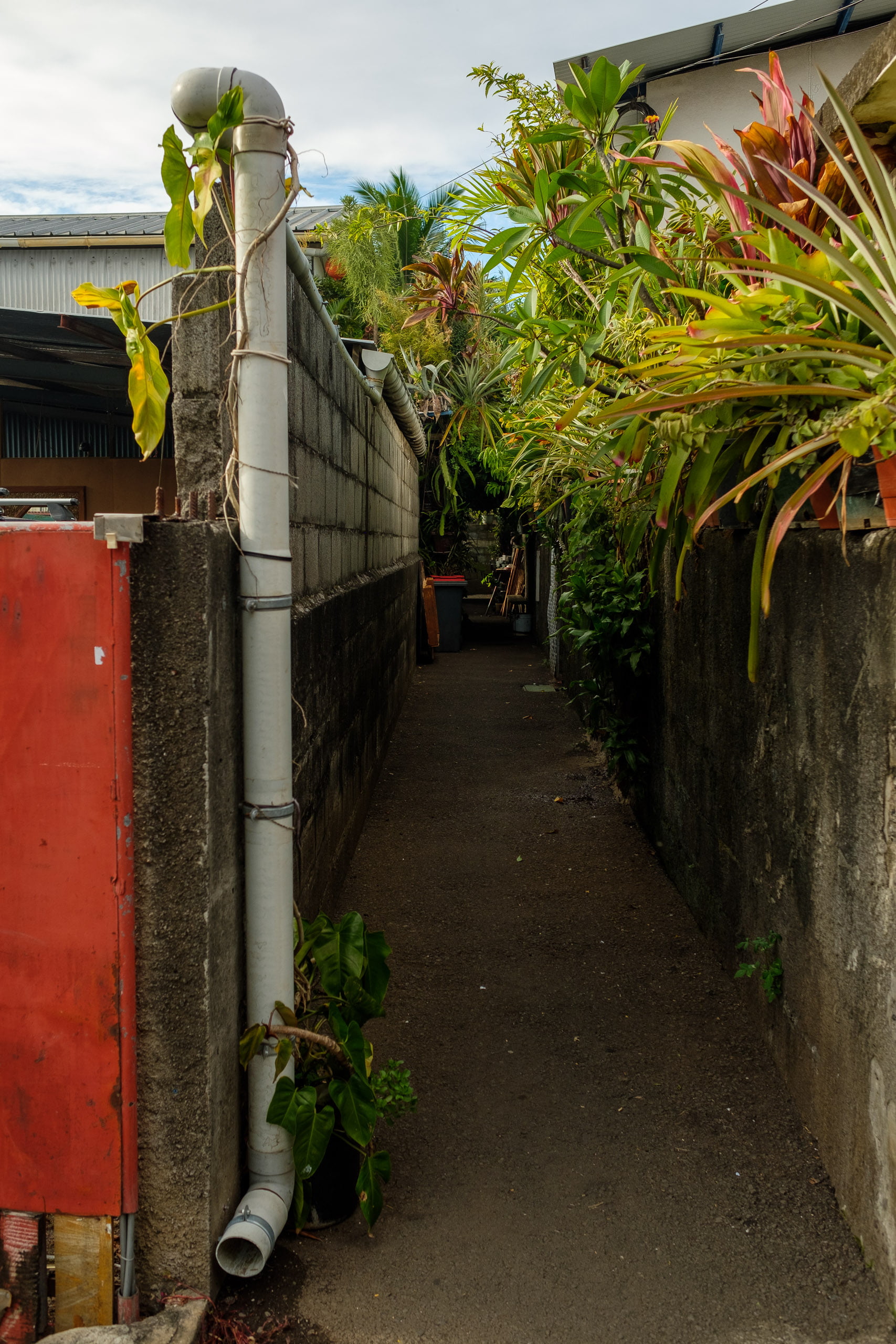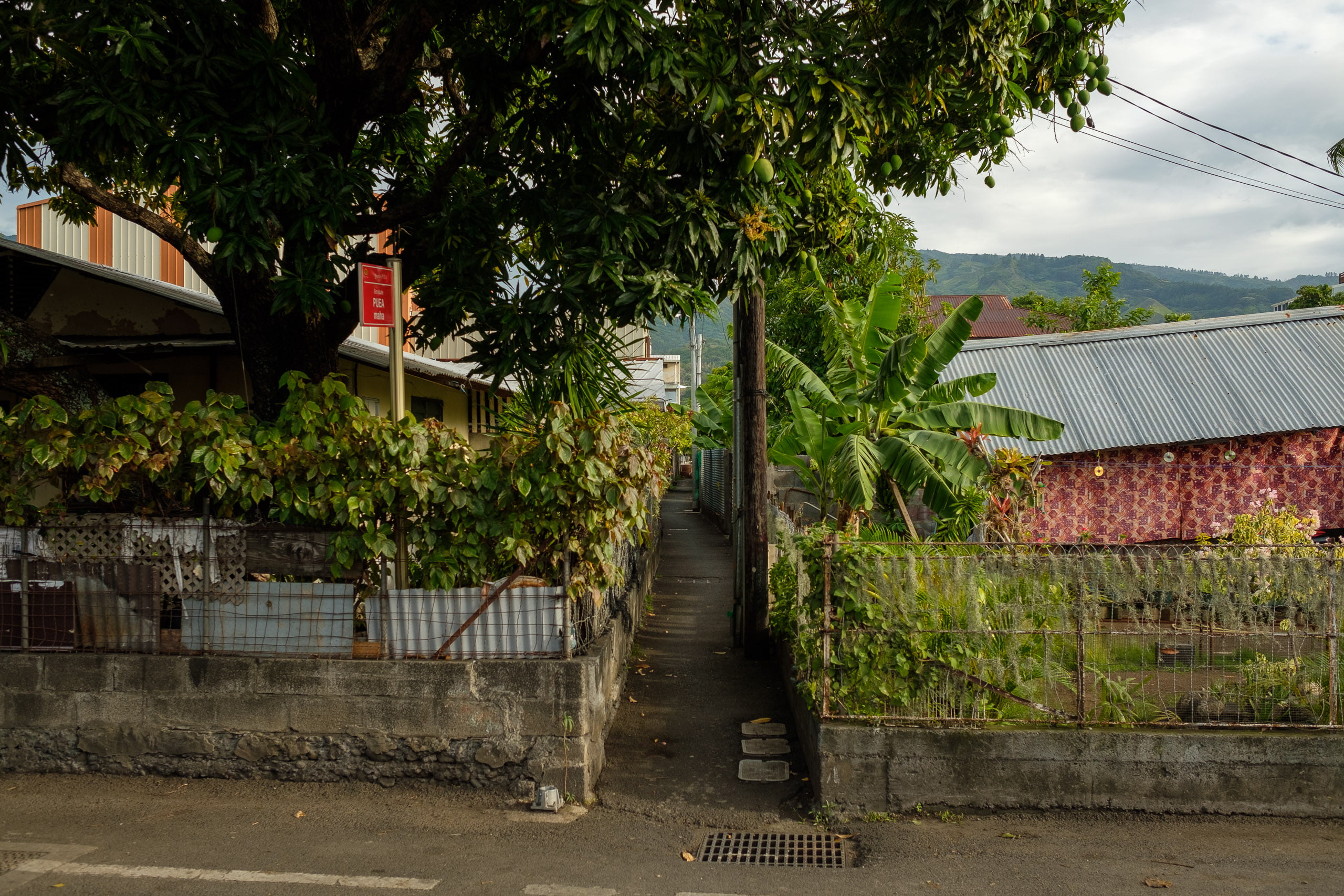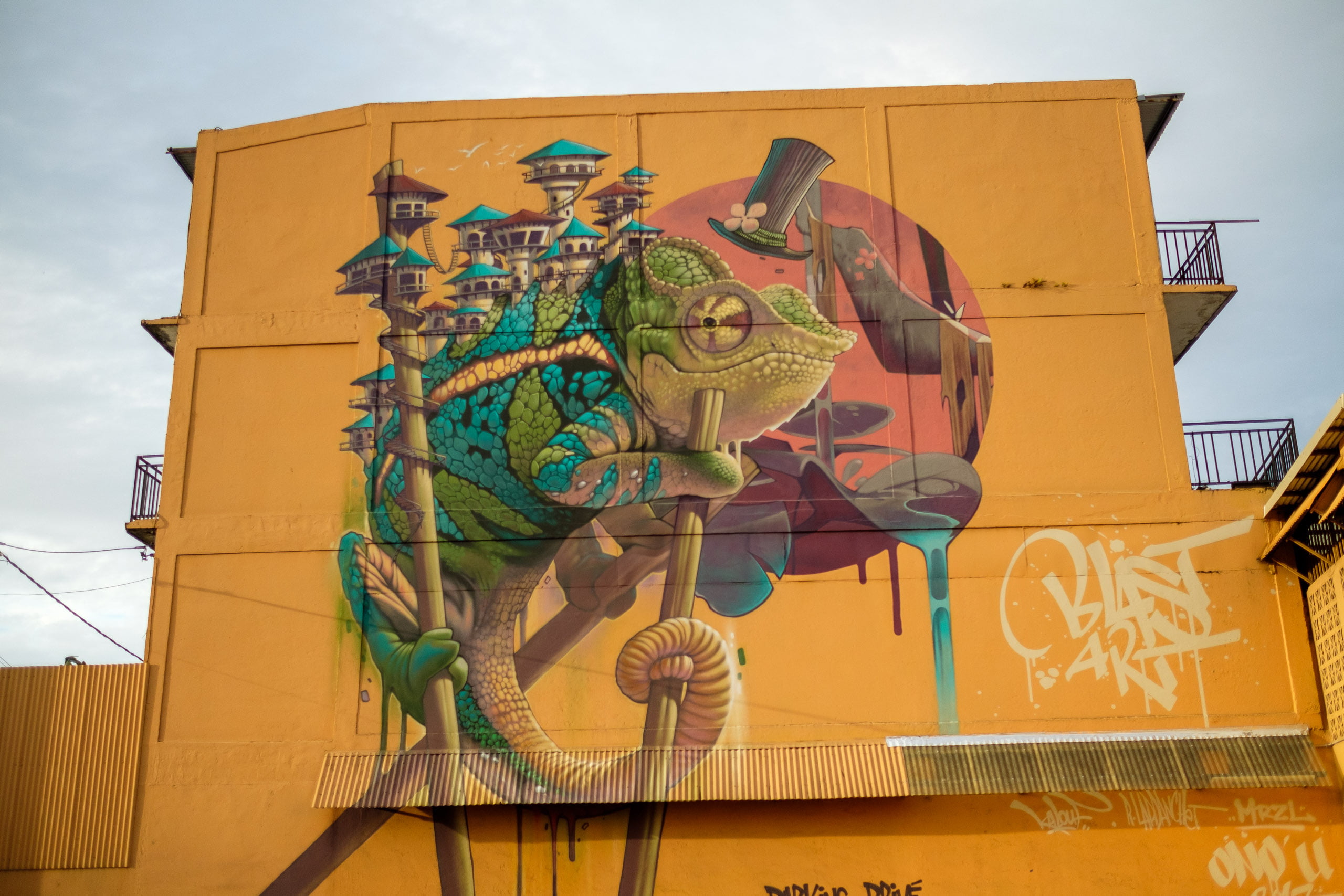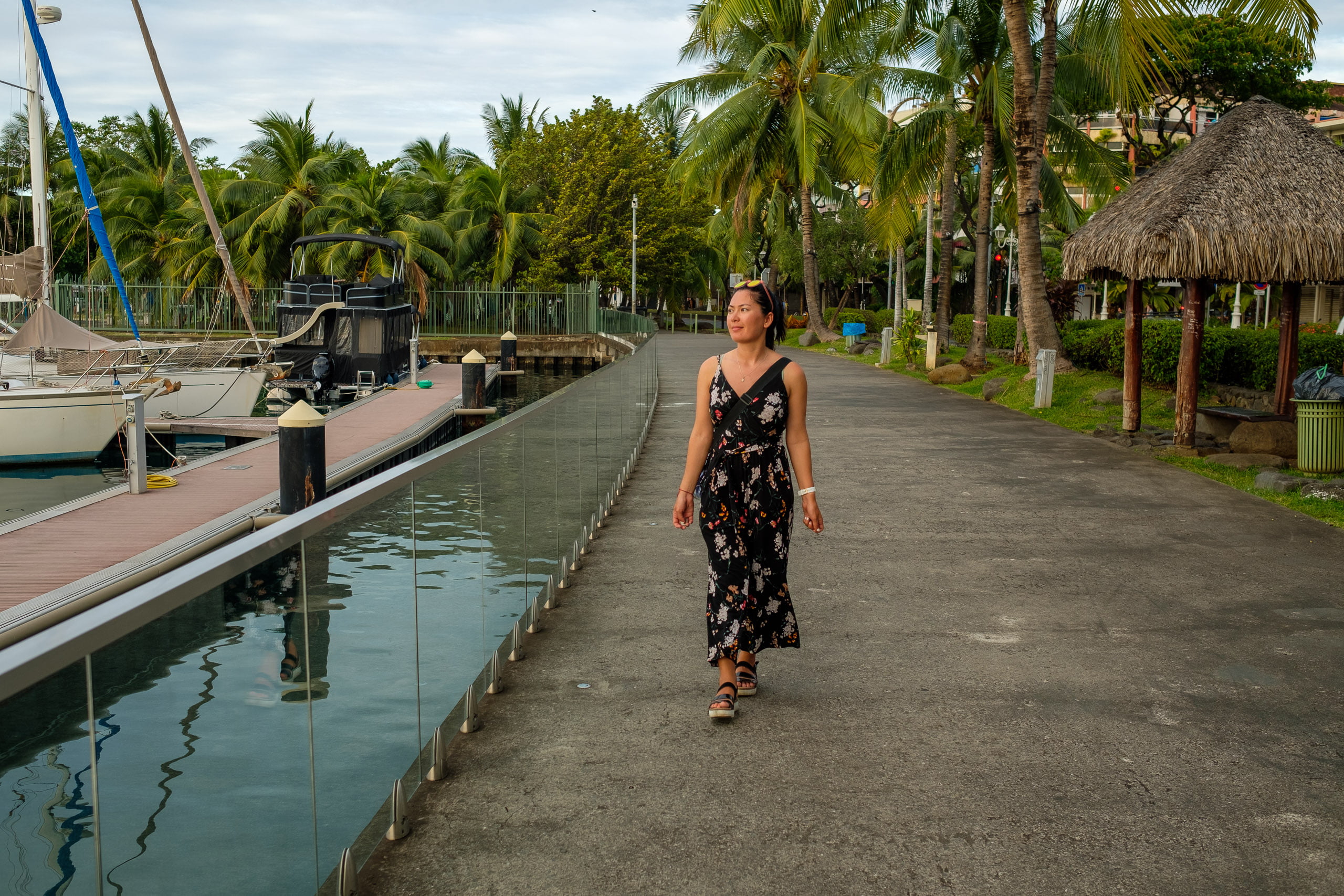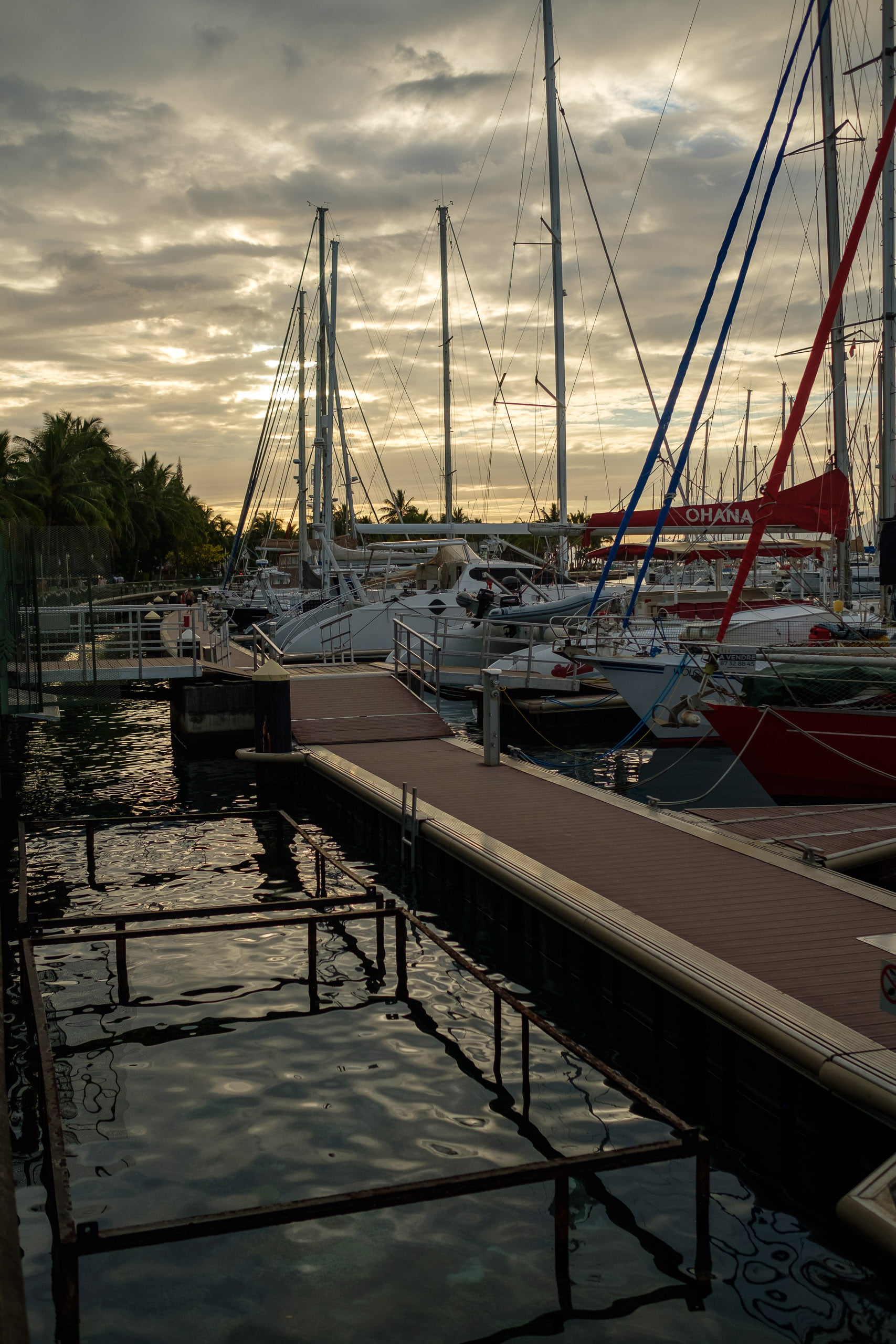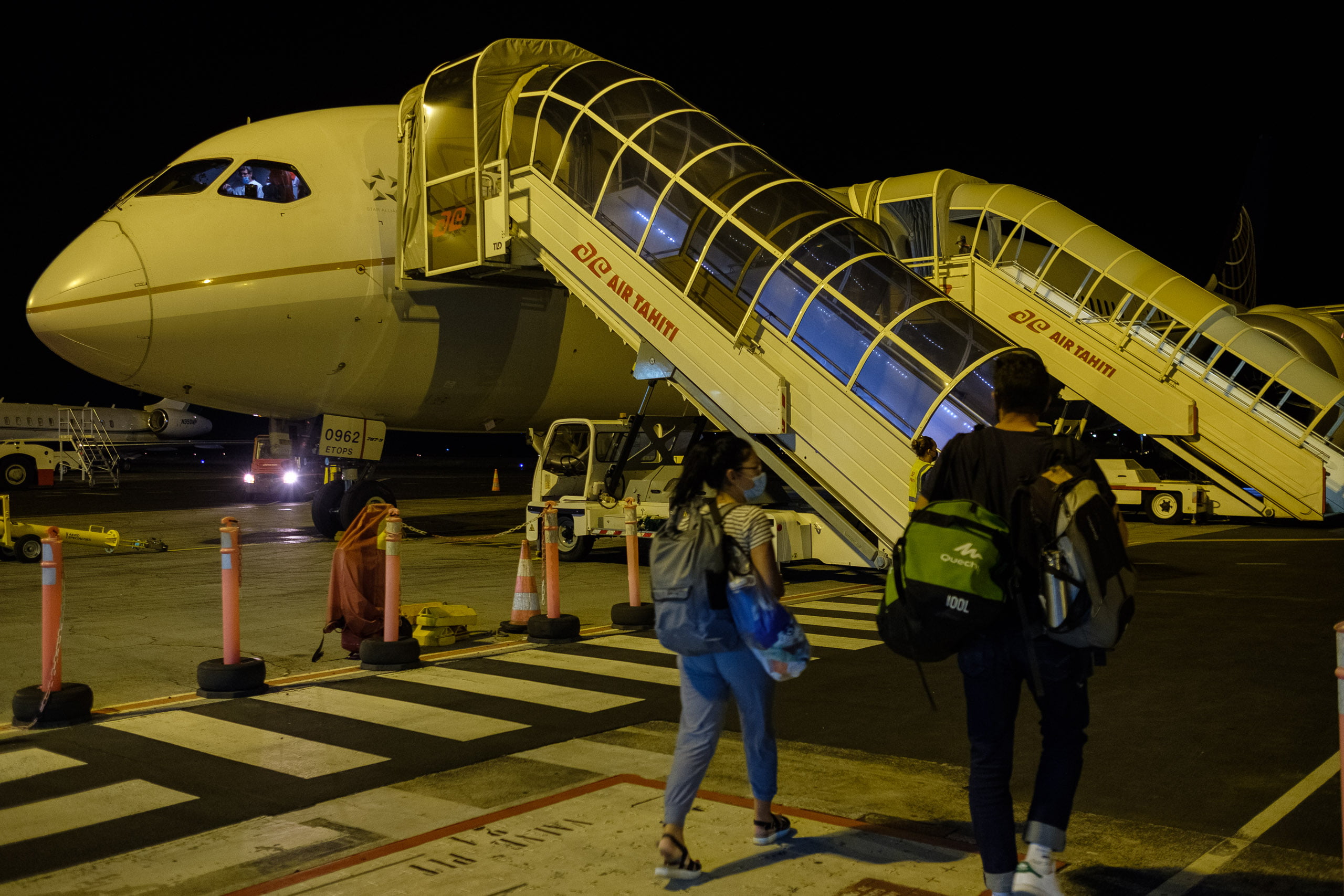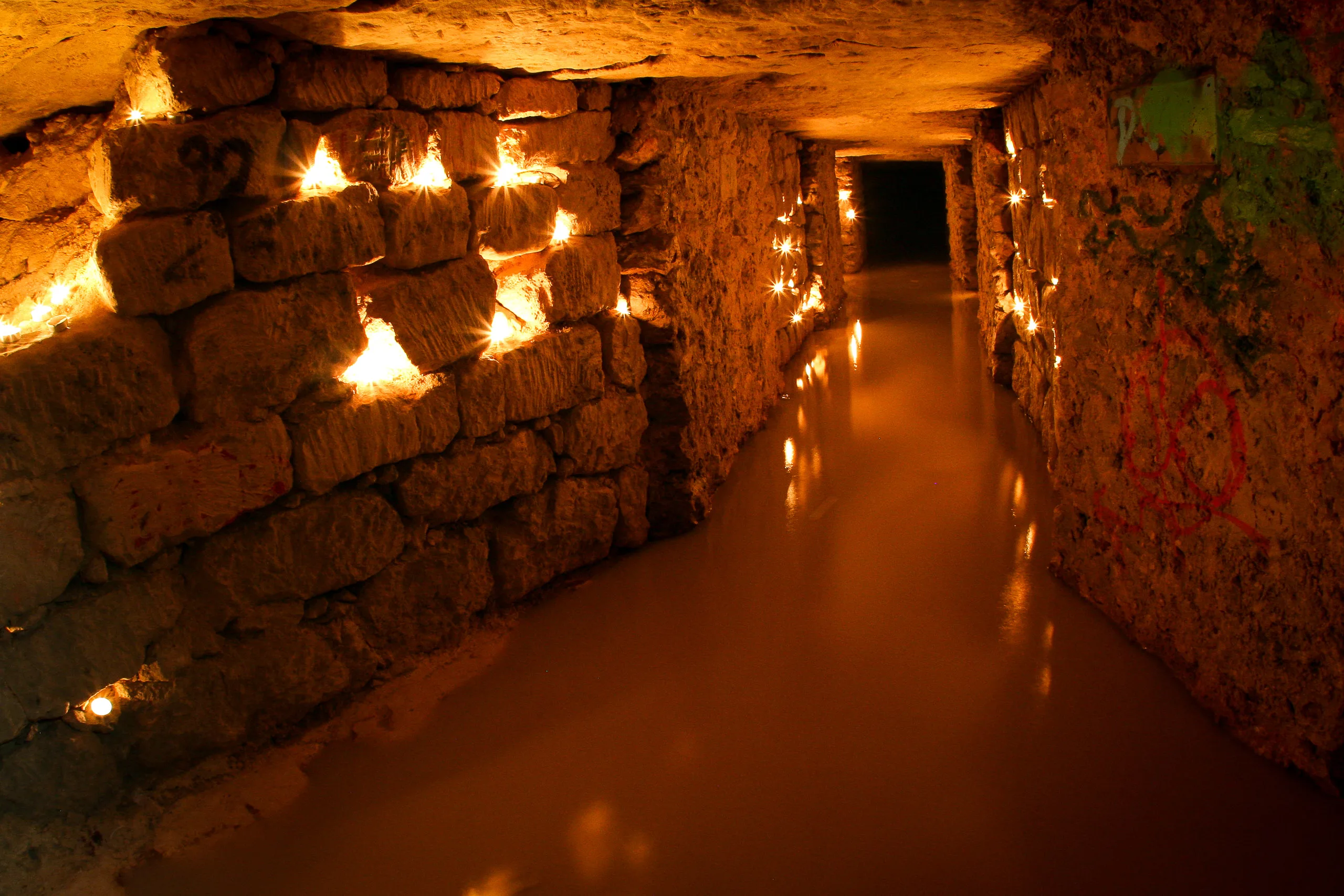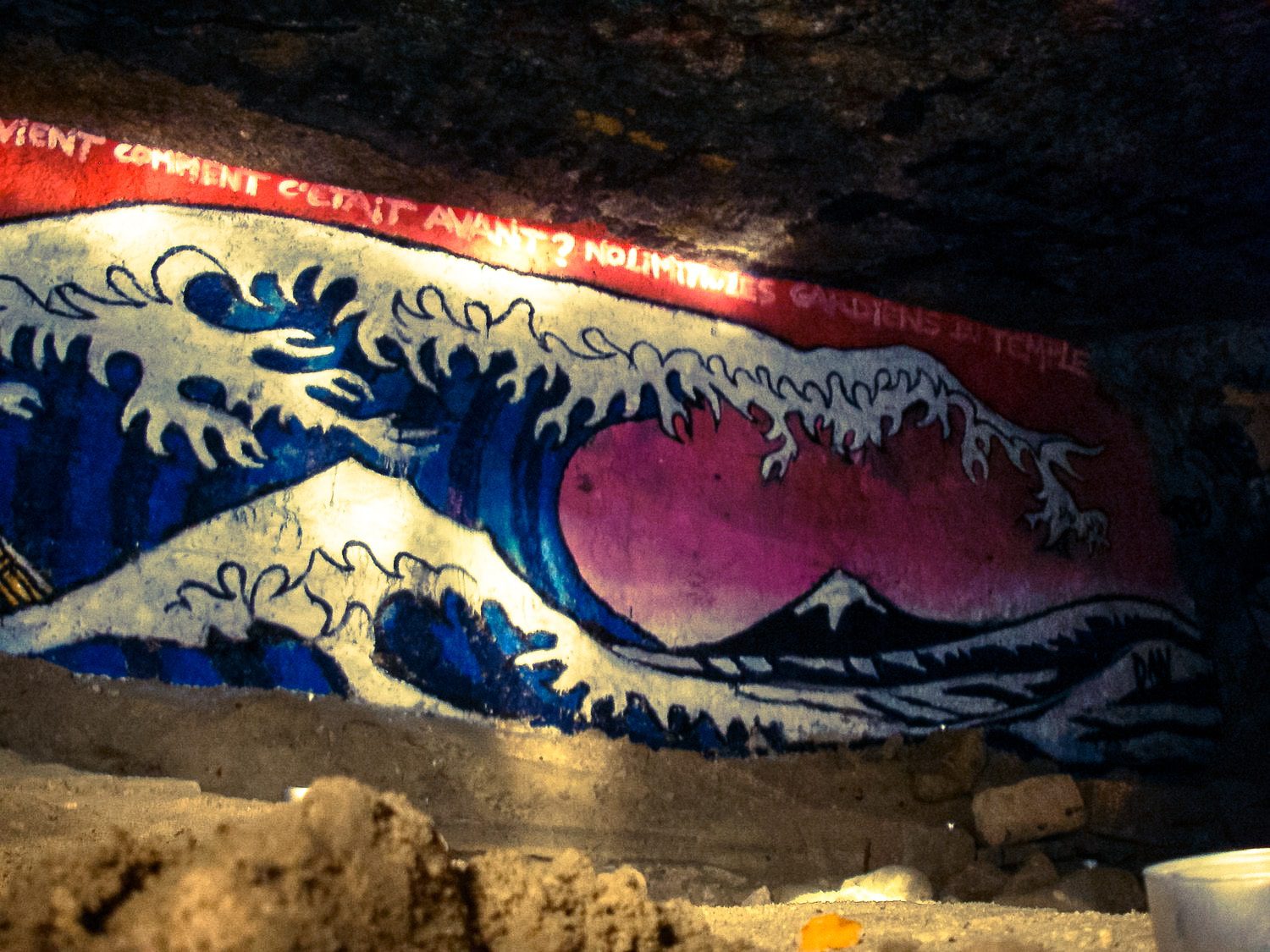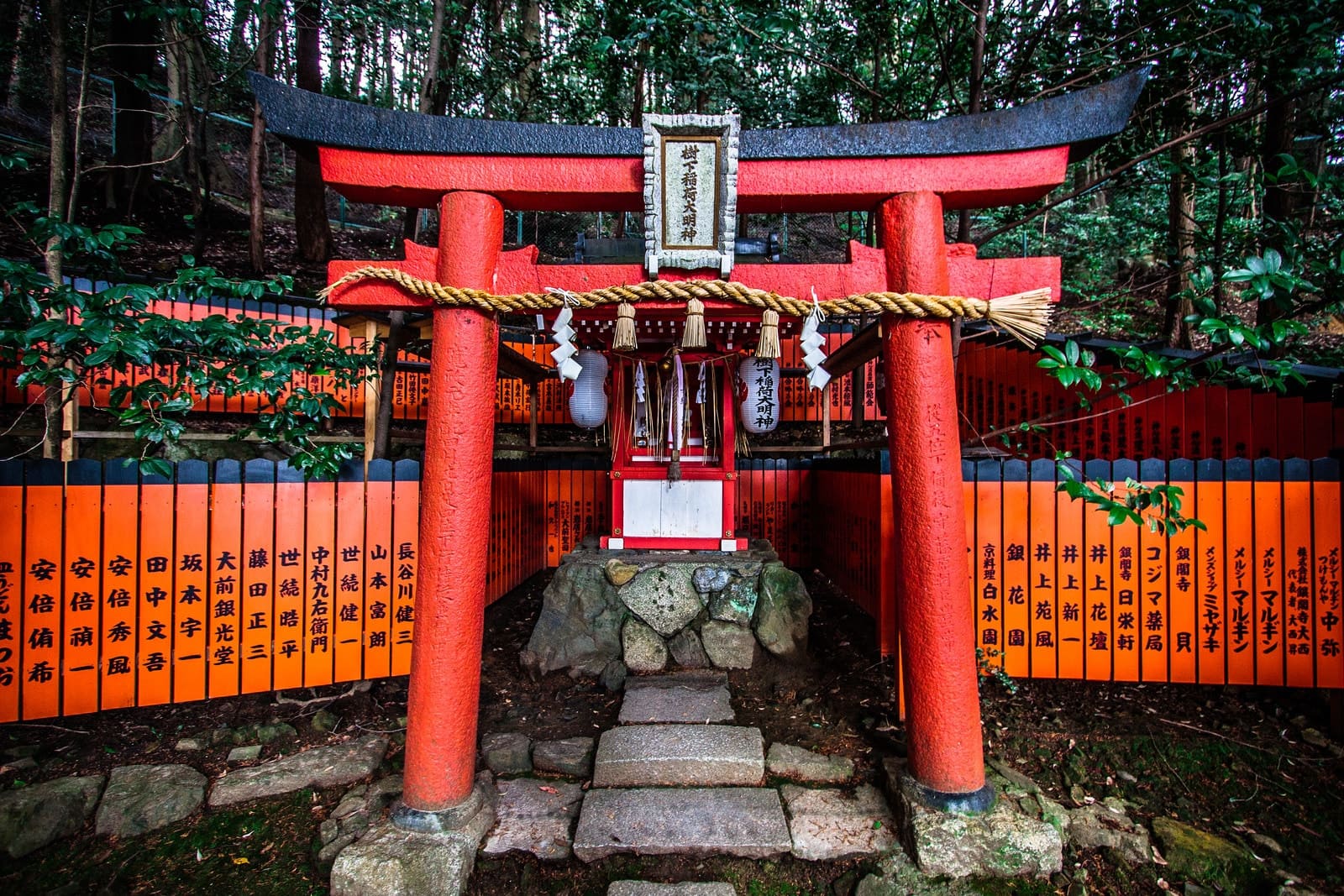J’aime ces instants fugaces à ras les flots
Où à l’ombre de la nuit la mer
S’essaie à la couleur du jour
Quand au matin du crépuscule la nuit
Se fait douceur du jour— Flora Aurima-Devatine, Te maruao
Tahiti, Bora Bora, Raiatea, Taha’a evoke all these ideas and images of paradise, colorful waters, filled with colorful fish. It’s also one of the best places in the world to go sailing. Following the footsteps of famous sailors like Bernard Moitessier, with a group of amazing friends, we embark on a 10 day sailing adventure in the Leeward Islands of the Society Archipelago of French Polynesia. In this little journal, you will find first a little video recap of the whole extended week, and then a collection of photos and video snippets of the trip.
Day One - Arrival in Tahiti, and making our way to Raiatea via Huahine
After landing in Tahiti, we find out that there is a general strike which is affecting flights to the island where we need to go to get to our sailboat. After some scrambling, we fly to another island and find a fishing boat to do a 2 hour crossing. The adventure has already started!
We make it to our boat on the first day! Our home for the week is a big catamaran of 45-feet (13.7 meters) with 6 cabins and room for 10.
We do a check-in process at the base, and then we all get on the boat.
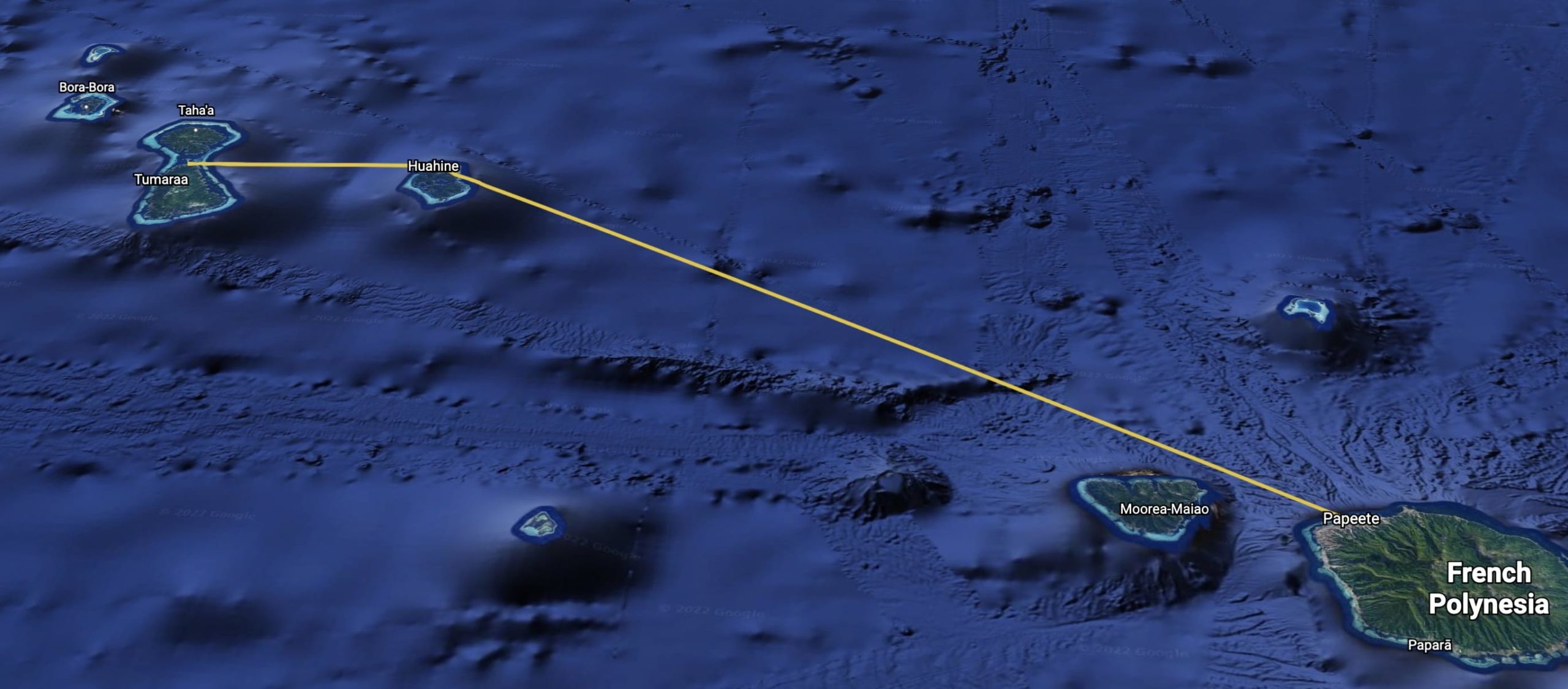
We sail to reach an anchorage just outside of the main town and settle down. Some of us go kitesurfing, some go snorkeling. The views are just amazing. This is our first night on the water!
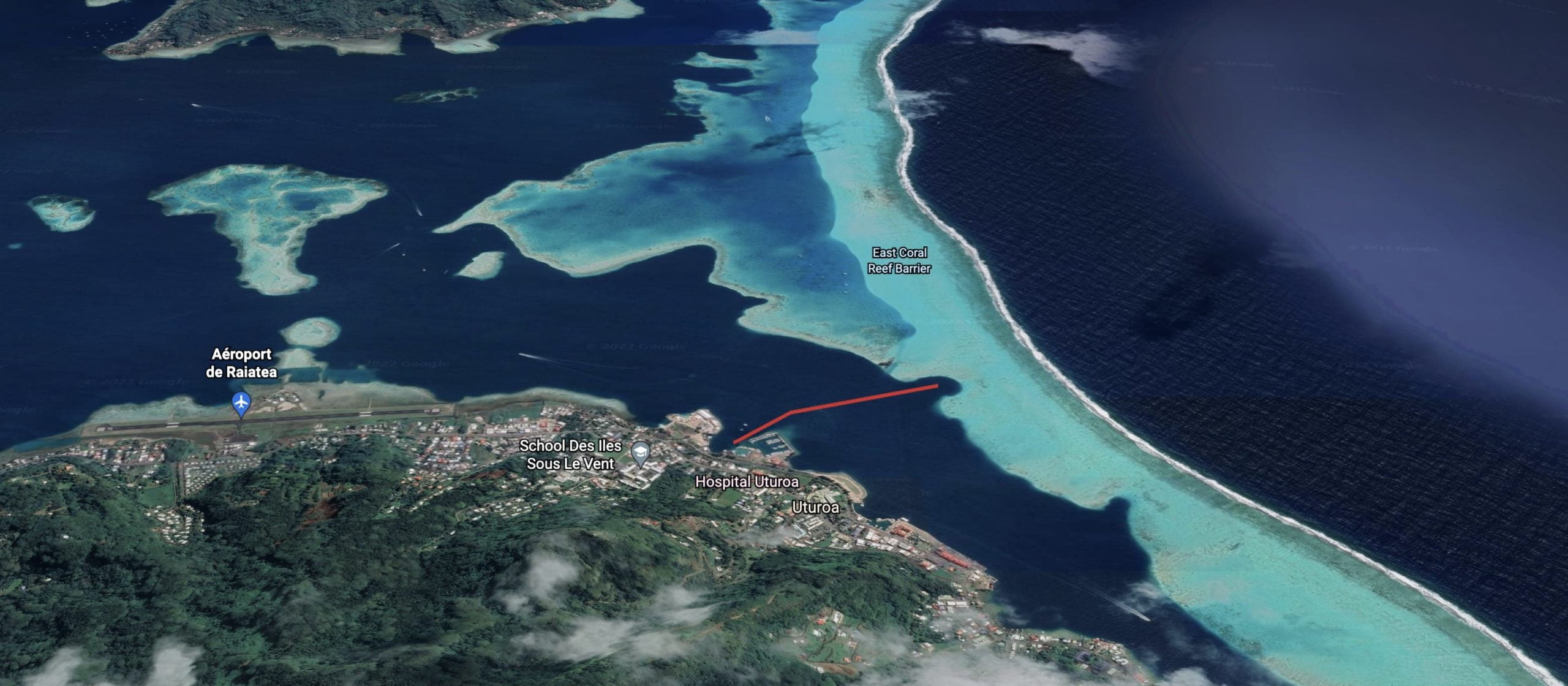
Day Two - From Raiatea to Bora Bora
We set sail for Bora Bora on a very nice sunny and windy day. It’s about a 5 hour sail and we have to go in the Pacific Ocean, and then all around the island of Bora Bora. During our approach of Bora Bora, we see this crazy 81-meter super yacht, a giant aluminum sailboat with three masts called Sea Eagle 2.
As we approach Bora Bora, the turquoise and emerald colors of the lagoon start to pop in our eyes. The island itself, with its jagged terrain is just this incredible jewel of the Pacific. We just can’t get enough of the crazy colors surrounding us. It’s just unbelievable.
After reaching our anchorage, all of us go swim/windsurf/kitesurf/paddle and enjoy the amazing evening.
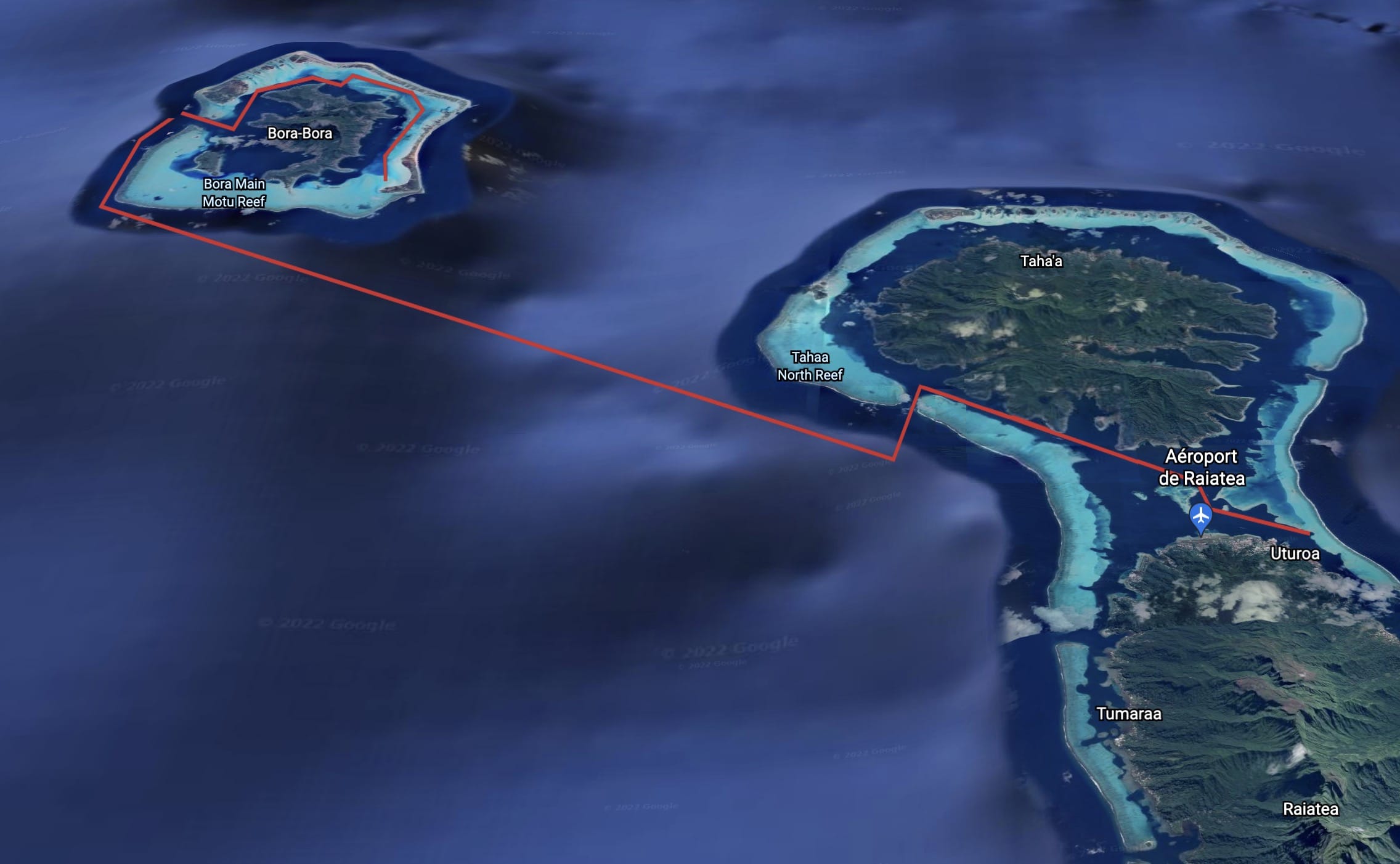
Day Three - Bora Bora
On this third day, the weather is just gorgeous. The turquoise colors of the water are incredible.
After a little morning session of water sports, the group splits into two. One group goes ashore to enjoy the island and to meet some friends who by coincidence are visiting at the same time, the other goes snorkeling (you can’t get enough!) and then sail around the island.
Just before sunset, we go on a hike on the mountain ridge, and it is quite impressive from above. I actually get some vertigo at some point as all the rocks are super vertical.
Finally, the whole group gets together for a very nice dinner at a restaurant called the Bloody Mary’s.
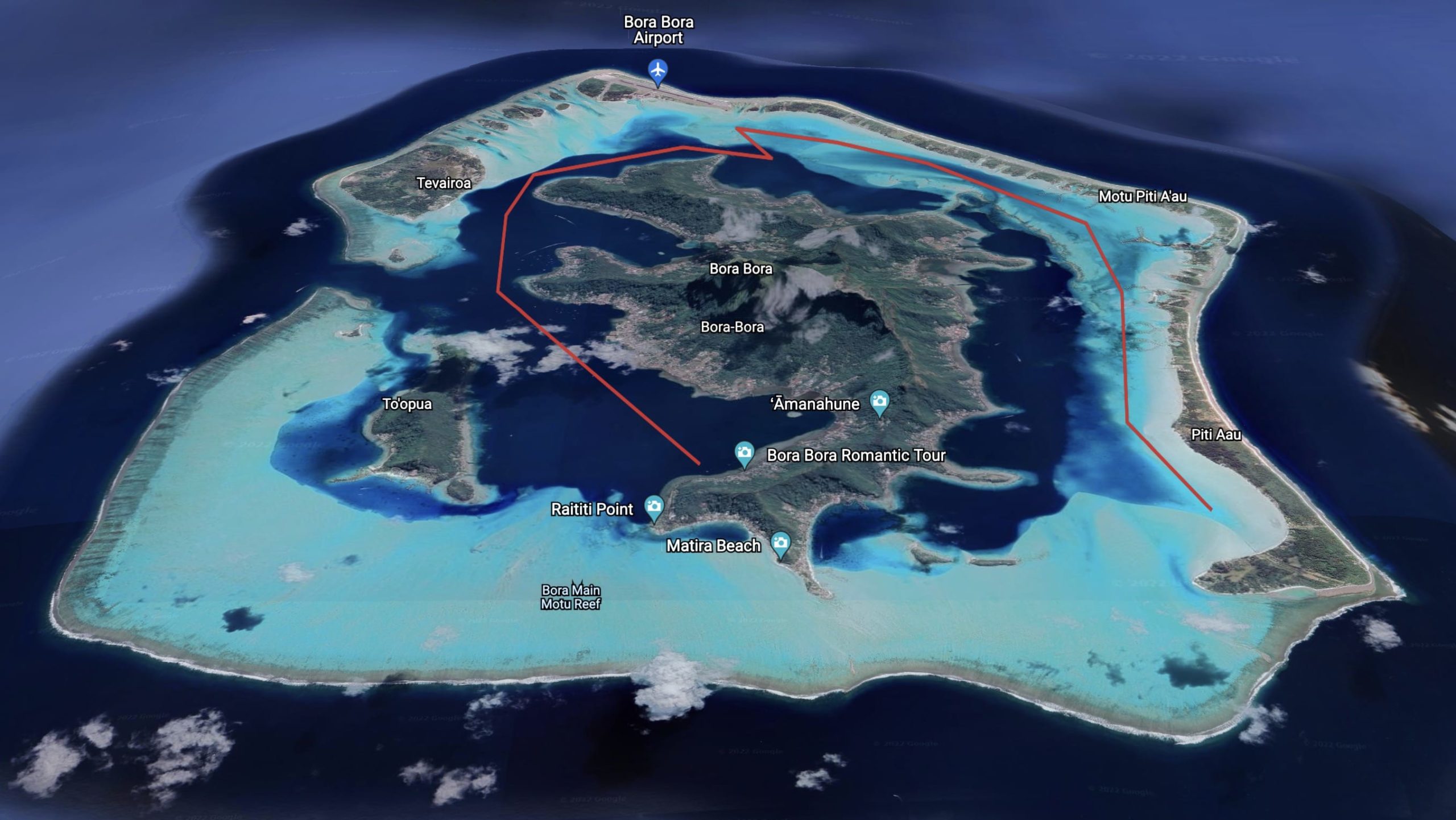
Day Four - Bora Bora
The next day, we get picked up to do a snorkeling tour. We meet our guides who take us to some amazing spots, and share with us all of their knowledge about Polynesian culture, and all the information about the fish we can see in the area. We see all sorts of sea creatures: Manta Rays, Eagle Rays and Sting Rays, Black Tipped Sharks and all these amazing tropical fish.
We end up having a traditional Polynesian lunch on a “motu” which is tiny island on the coral reef side of the island. The lunch is a slow-cooked pig, cooked for hours under the ground, with hot rocks.
After this excursion we are all pretty tired, and move our catamaran to a more secluded anchorage and enjoy the amazing sunset and views.
We do a barbecue that night with fish we bought at a local fish market.
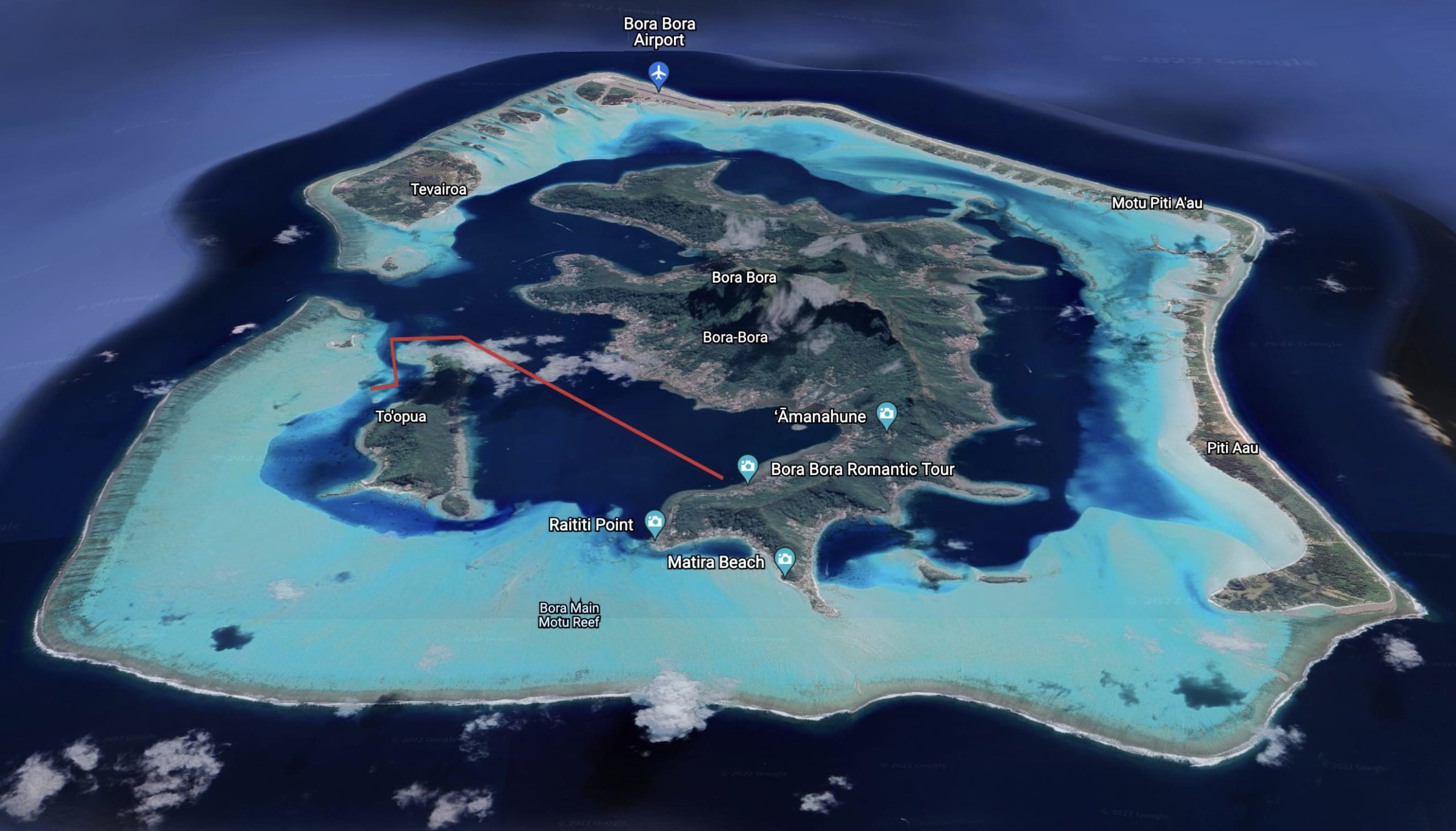
Day Five - Bora Bora to Taha'a and getting hit by a storm on our way to Huahine
We leave Bora Bora behind and head back towards Taha’a. We get hit by a few short squalls (very small storm), that come and go in a very violent way, but are also pretty fun. The wind goes up and suddenly lots of rain, and then within 10-15 minutes it’s over.
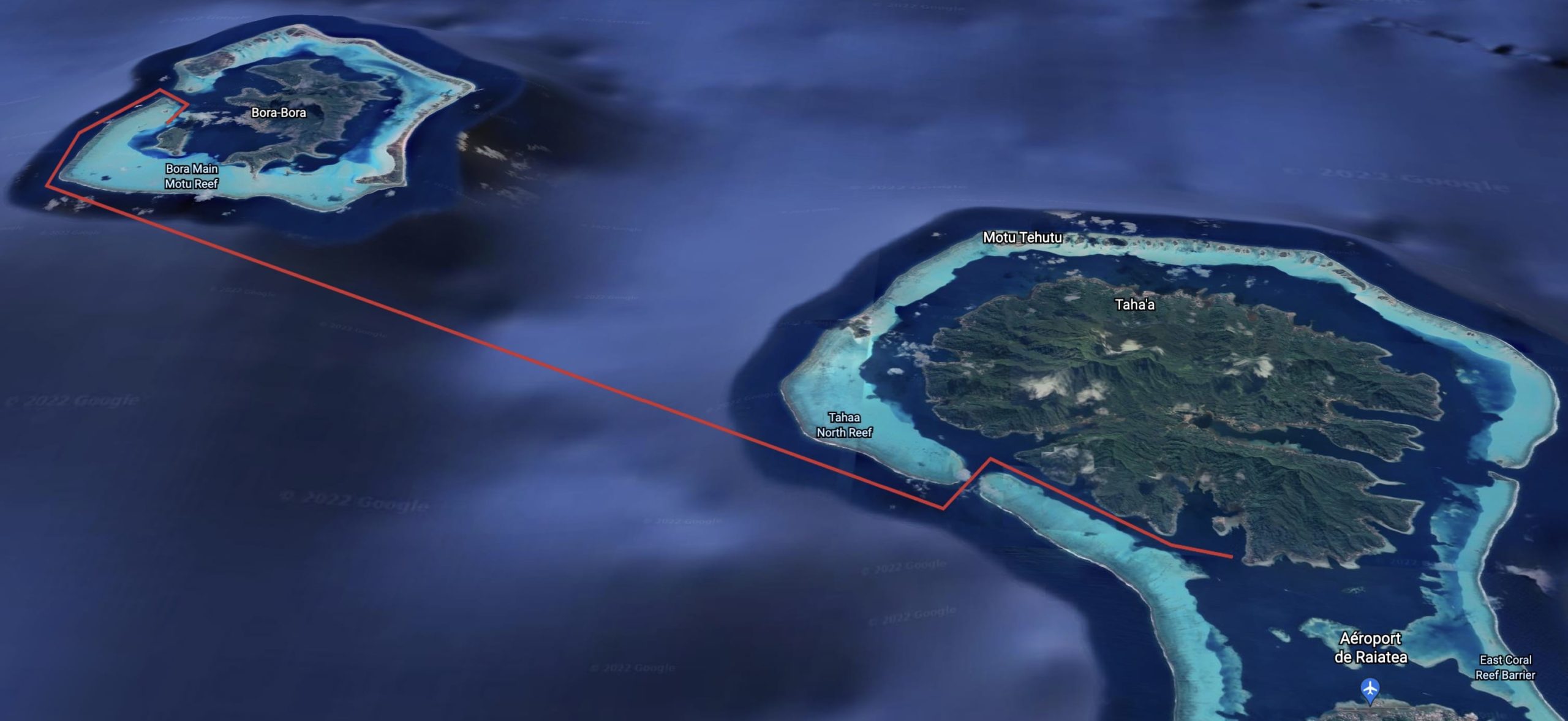
We go explore a sort of “coral” river. There is a spot in between two motus (tiny islands on the coral reef), where there is a very strong current, like a river and it makes you go through a gorgeous area filled with corals. There is a video below with the full “float” which took about 8-9 minutes.
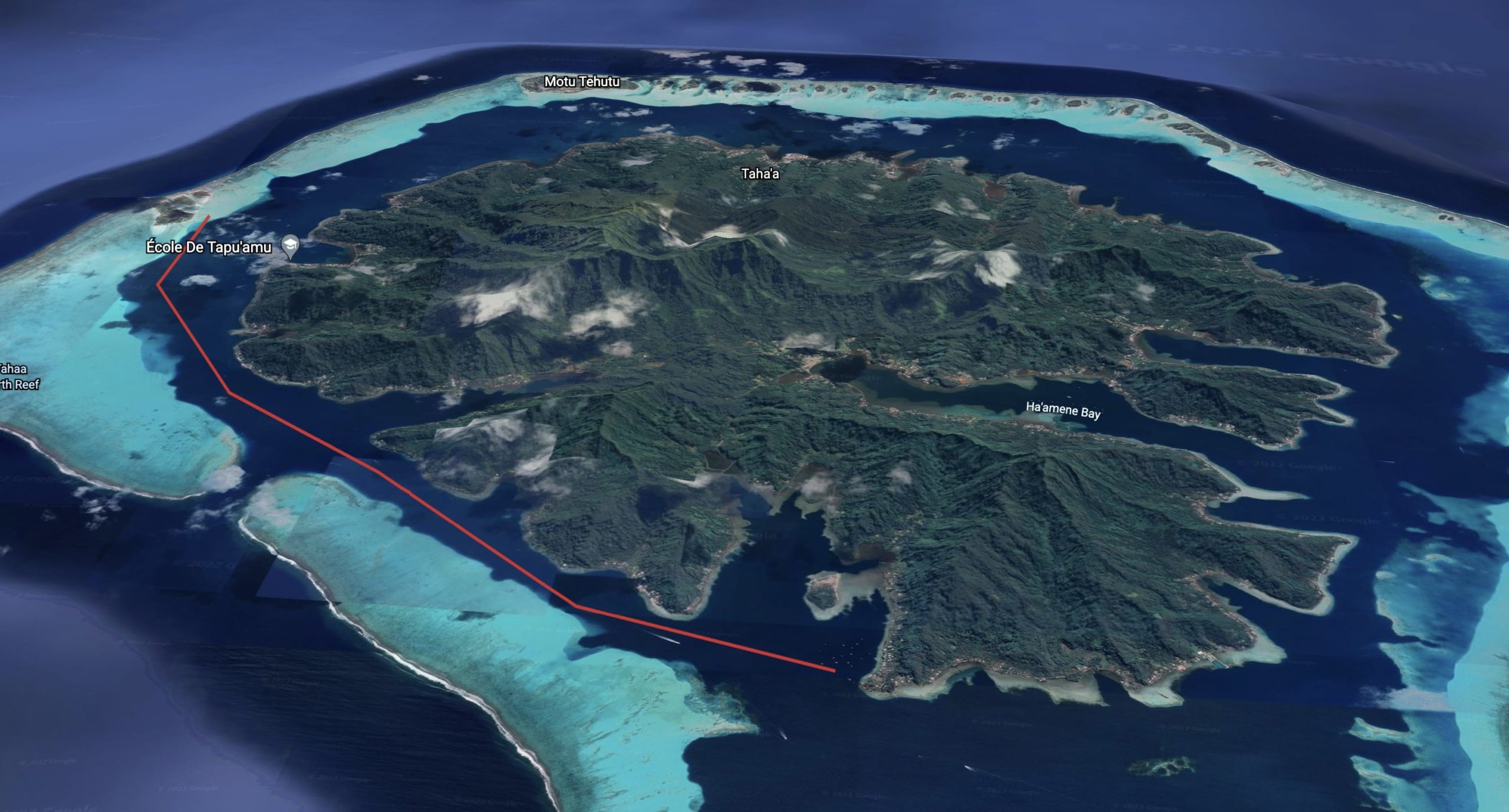
Afterwards, we start sailing around Taha’a which is a very pretty island, quite different to Bora Bora, much more wild. Our plan is to cross over to Huahine, which takes us to the ocean. The beginning the journey goes pretty well but we are bashing into waves, which gives a big motion to the catamaran, like a roller-coaster.
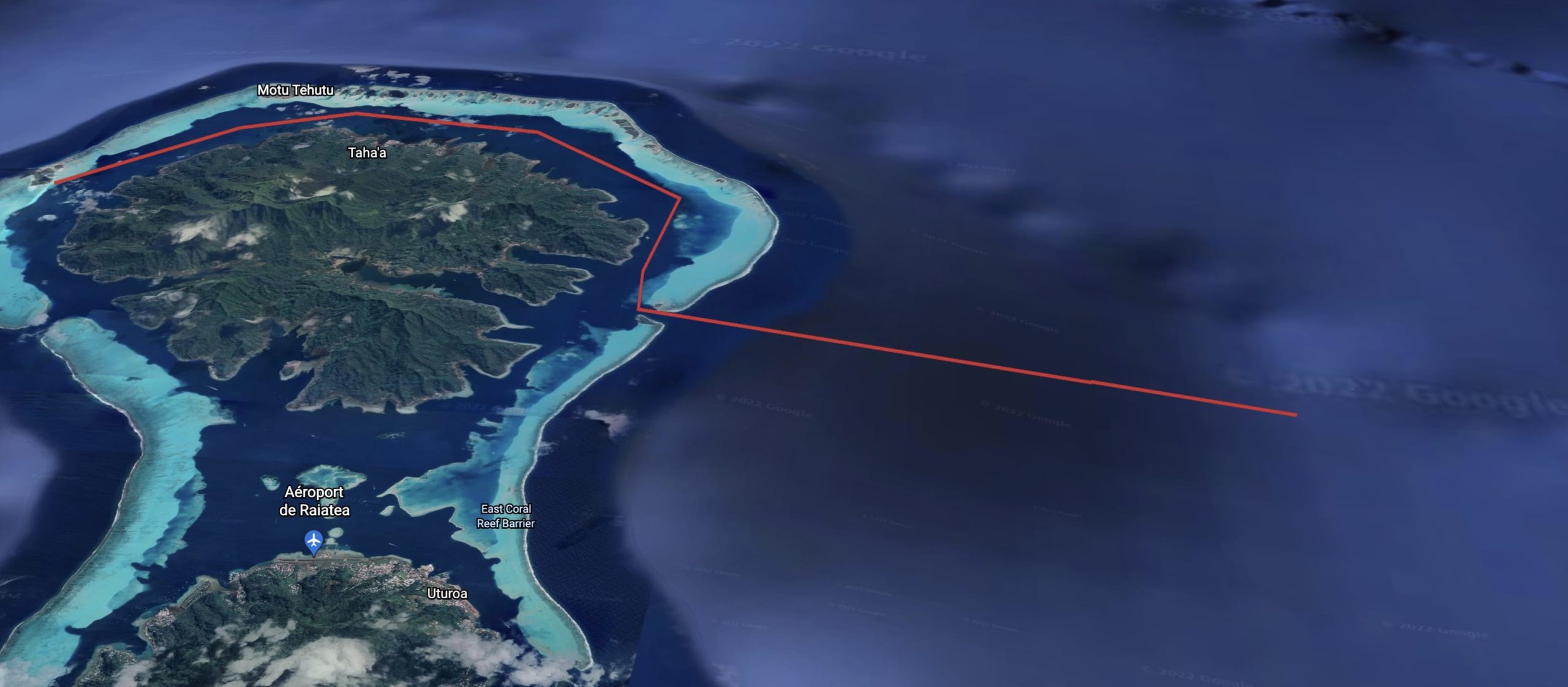
Then the wind starts picking up, and then suddenly we see what looks like a squall. We decide to drop the sails just at the right time, as there is a very sudden and strong change of wind strength and it goes all the way up to 40 knots (75 km/h). The wind is coming directly from where we are trying to go, and so at this point we see that we would not be able to make it to Huahine before dark. We also see that this is not just a squall and it is turning into a full storm.
So we make the decision to turn the boat around. The boat goes from making 2 knots into the wind, to suddenly surfing down waves at 11 knots… which on a catamaran of this size is very impressive.
The sea and waves start to be more and more agitated and we get hit by a few waves. It is quite nice to be on this large stable catamaran platform, and at no point did we feel in very strong danger. But the visibility is really bad, and we can’t see very far. Thankfully, we have the map and GPS which shows us where to go and how to get back to safety (if we didn’t, we would have probably just waited outside the lagoon until things got better).
There was one moment that got pretty exciting, which is when we got to the entrance of the pass to get back inside the lagoon. Typically, there is a strong current going out the passes, especially when the lagoon is getting filled up by waves going over the coral reef. Well the storm was coming from the opposite direction to this current, so the waves got pretty gnarly and big. At one moment, the boat was on the verge of being out of control, but then it got better and we were back to safety.
We find a nice anchorage inside the lagoon, near the entrance of the pass, and things felt a lot calmer already. We were able to get dry, and warm up with a nice dinner after the excitement of the afternoon.
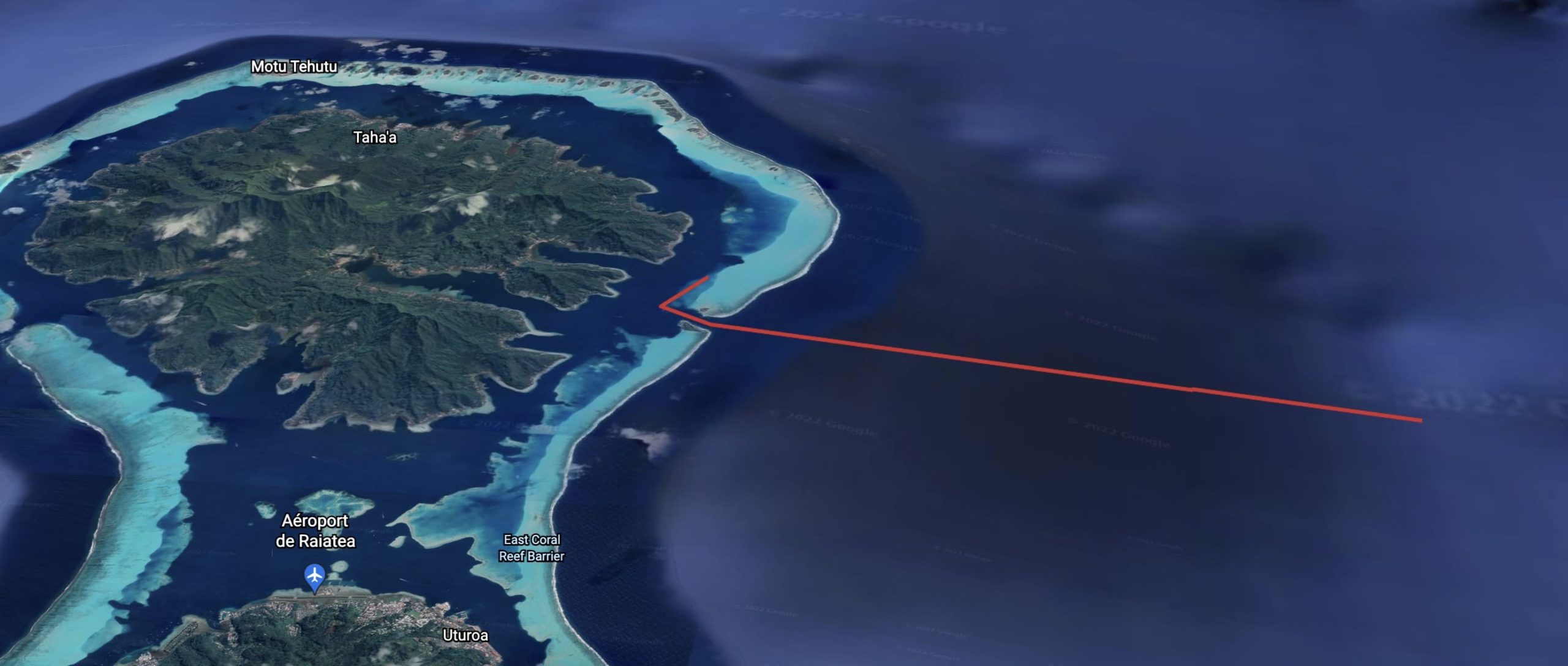
Day Six - Exploring Taha'a
It is still quite a stormy day, and it doesn’t look like we will be going to Huahine at least on this trip. So we adjust our plans and decide to take more time to explore Taha’a instead which was a very good idea as it is a very nice island. In the morning, we go to the Vanilla Valley, where there are a lot of vanilla farms. It is very interesting to hear about the whole process of growing vanilla. And obviously it is very tasty and smells amazingly good. Afterwards, we head over to a private island for a delicious lunch organized by a friend of a friend.
After lunch, we sail around the island and finish the day at a Rhum distillery and sample their very tasty products.
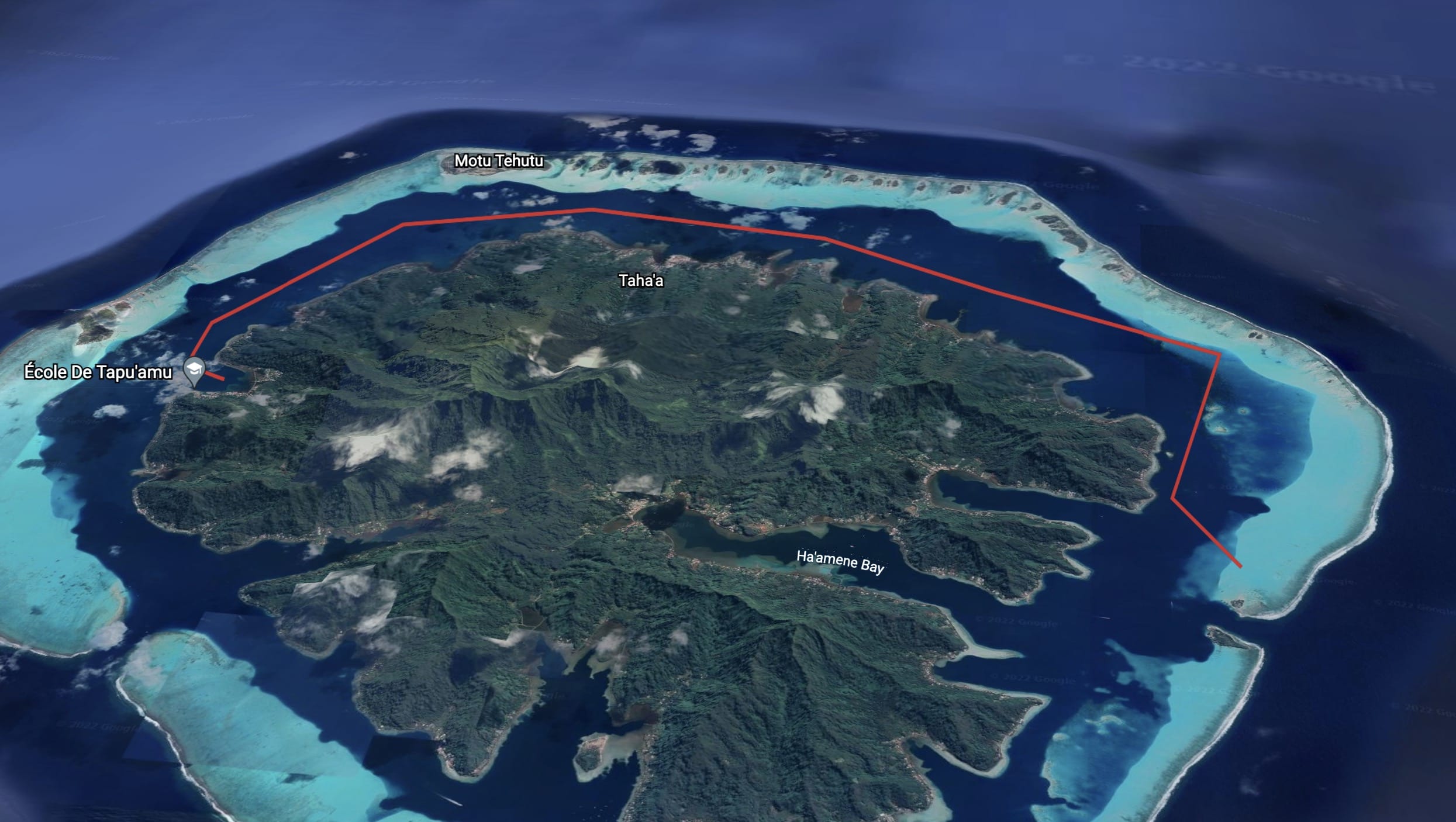
Day Seven - Pearl Farm on Taha'a to Hiking in Raiatea
After we wake up, we hear about a place where we can get fresh bread and look for a place to get water. We end up docking at this really nice pearl farm. The hosts are incredibly nice and we end up visiting this farm and getting the whole explanation of the 18-month process making pearls.
Cultured pearls are produced by seeding a nucleus into a living oyster – the “Mise-Nishikawa” method (invented by a japanese scientist). Although aided to start their existence, they are completely independent and man has no control over their eventual size, shape or even whether they survive. Each pearl is truly individual.
The process of culturing an oyster pearl starts with a healthy oyster that’s at least three years old. The oyster is opened by an experienced technician. The technician will make a cut near the sexual organ and place a piece of epithelial cell graft that has come from the mantle tissue of a donor oyster. A round bead is then placed above the epithelial graft.
If successful it will form a pearl sac which is rather like a placenta. The nervous system of the oyster is very primitive, so the process probably does not hurt much. The implanted oyster is placed back into the sea within minutes.
A fully functioning pearl sac will secrete layers of nacre onto the bead or nucleus and cover it. The nucleus is enveloped with two layers of nacre produced per tide, and layer by layer, the obstruction eventually forms a pearl. A bit like a foetus in the placenta, the nucleus can turn freely within the pearl sac.
After the pearl farm visit, we set sail for Raiatea which shares the same coral reef as Taha’a but is a different island. It’s also the biggest island in the area.
After reaching our anchorage, we decide to go hike a trail called the “3 waterfalls” which takes up deep in the tropical forest. After getting lost at least once, we finally reach the waterfalls which become more and more impressive. It’s quite an adventurous trail as we have to sometimes climb up small cliffs using ropes. The reward is incredible and we spend some time enjoying the cool water and natural shower.
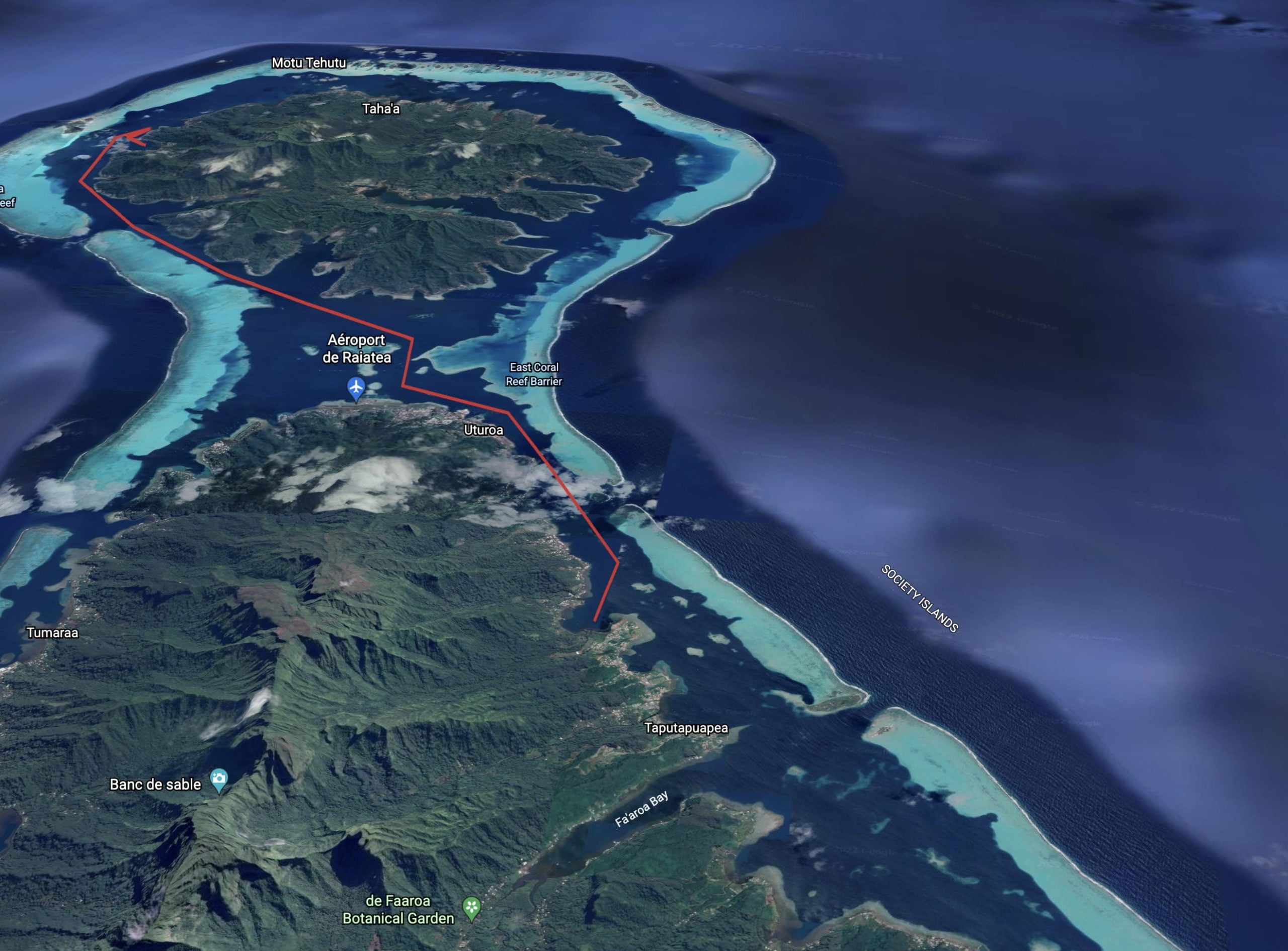
Day Eight - Exploring Raiatea
The next day, we go visit a sacred site of the Polynesian culture, the Marae Taputapuātea, which is a UNESCO World Heritage protected site. It’s a very important sacred gathering place for Navigators and Chiefs, which covers the whole mountain and the sea. There is a documentary about it here.
On the way there, we also see a very interesting Polynesian sailboat. It’s a trimaran, meaning it has three hulls. It is both pushed by the wind and someone using a paddle. It looks both traditional but with modern materials. They are going much faster than us on their tiny boat.
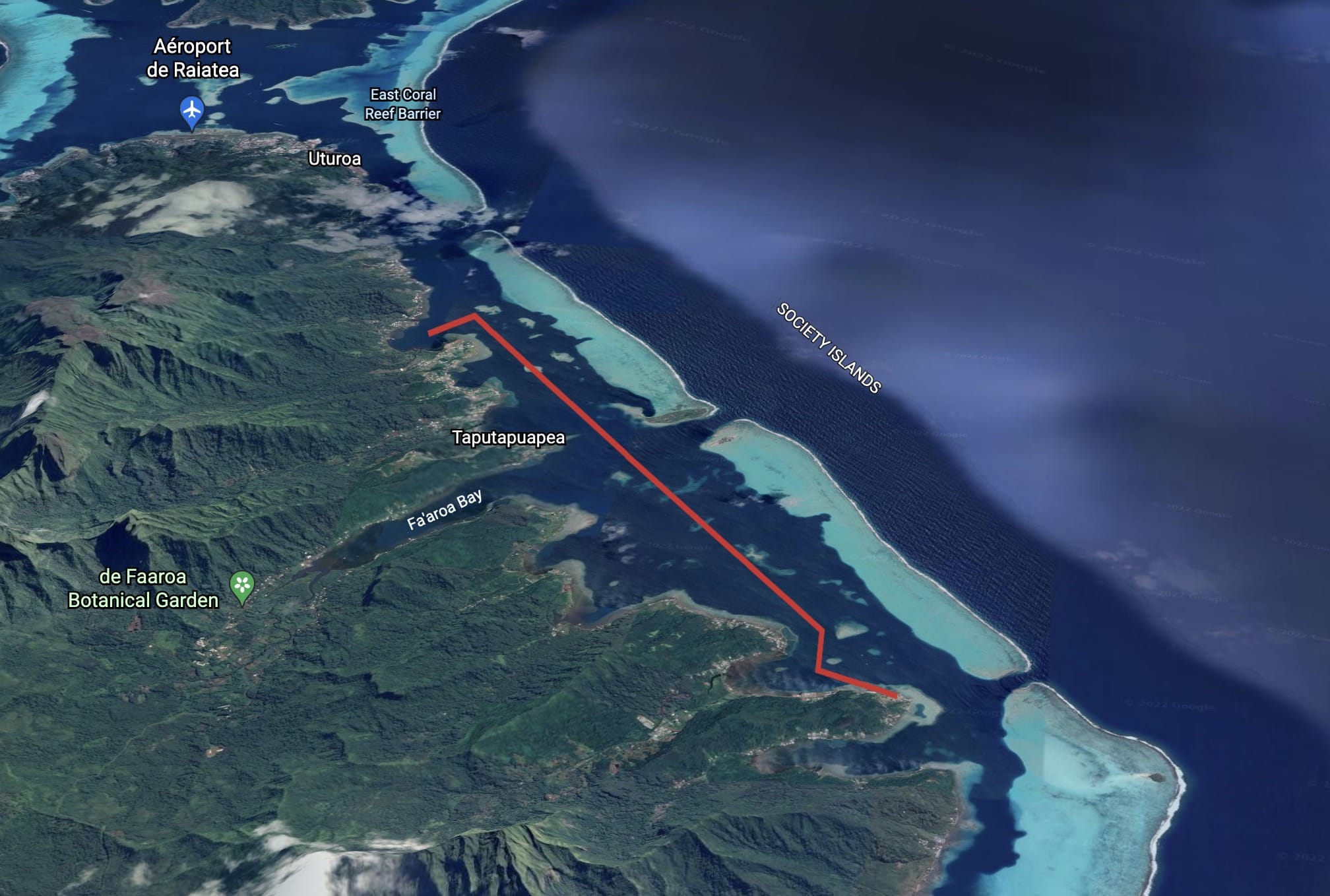
After the visit, the weather turns stormy again north of us, so we end up just anchoring nearby and enjoying an afternoon of kiting, windsurfing and snorkeling.
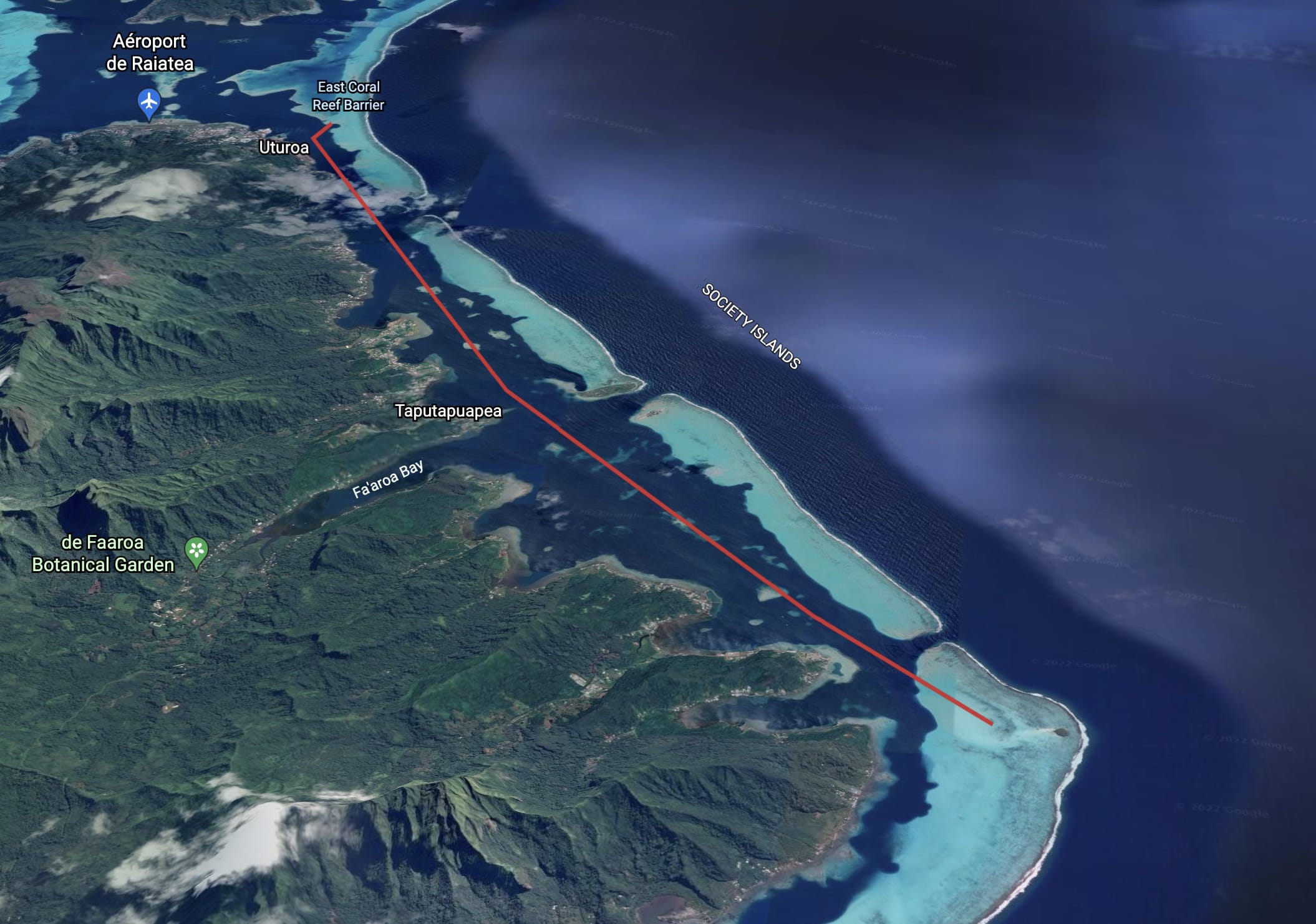
Day Nine - Walking around Uturoa & kayaking on the Faaroa river
The next day, part of the group goes for a scuba dive session, while the rest goes and explores the town. I go explore the town. It looks like there is a sort of celebration as there are a lot of people and music at the market.
Afterwards, we sail back down south for a bit and go explore a very nice river, on paddle boards and using the dinghy but without the engine. The place is so pretty and completely empty. It feels very special.
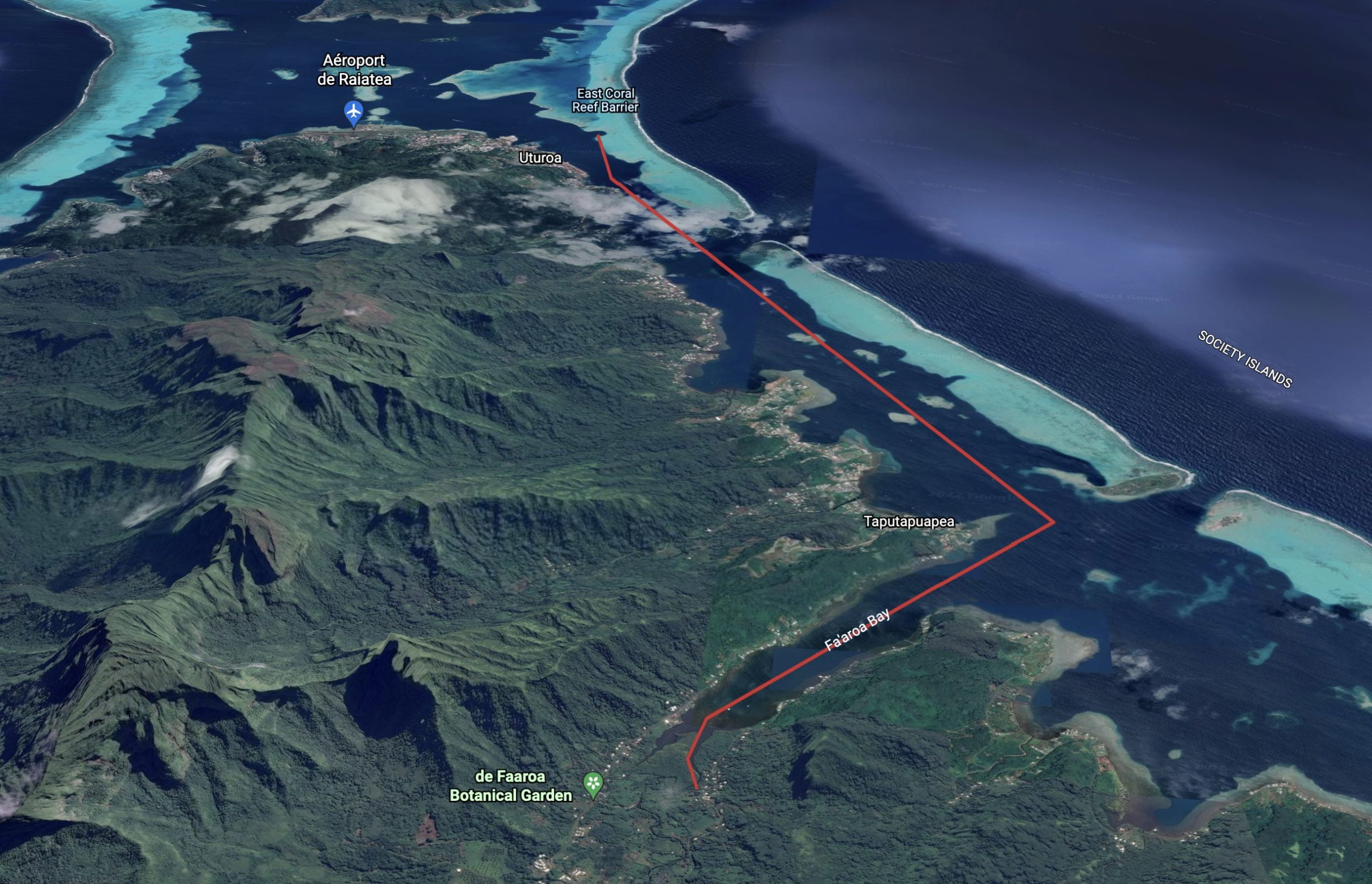
After the river, we sail back to Taha’a to go enjoy our final evening. We found a restaurant that organizes a traditional Polynesian dance, followed by a fire dance. It’s a real feast.
On our way back to the boat, we have a bit of an adventure: we walk through a beach where there are hundreds and hundreds of crabs. Very scary (but unfortunately no photos as it was so dark). It was like the ground was moving under our feet!
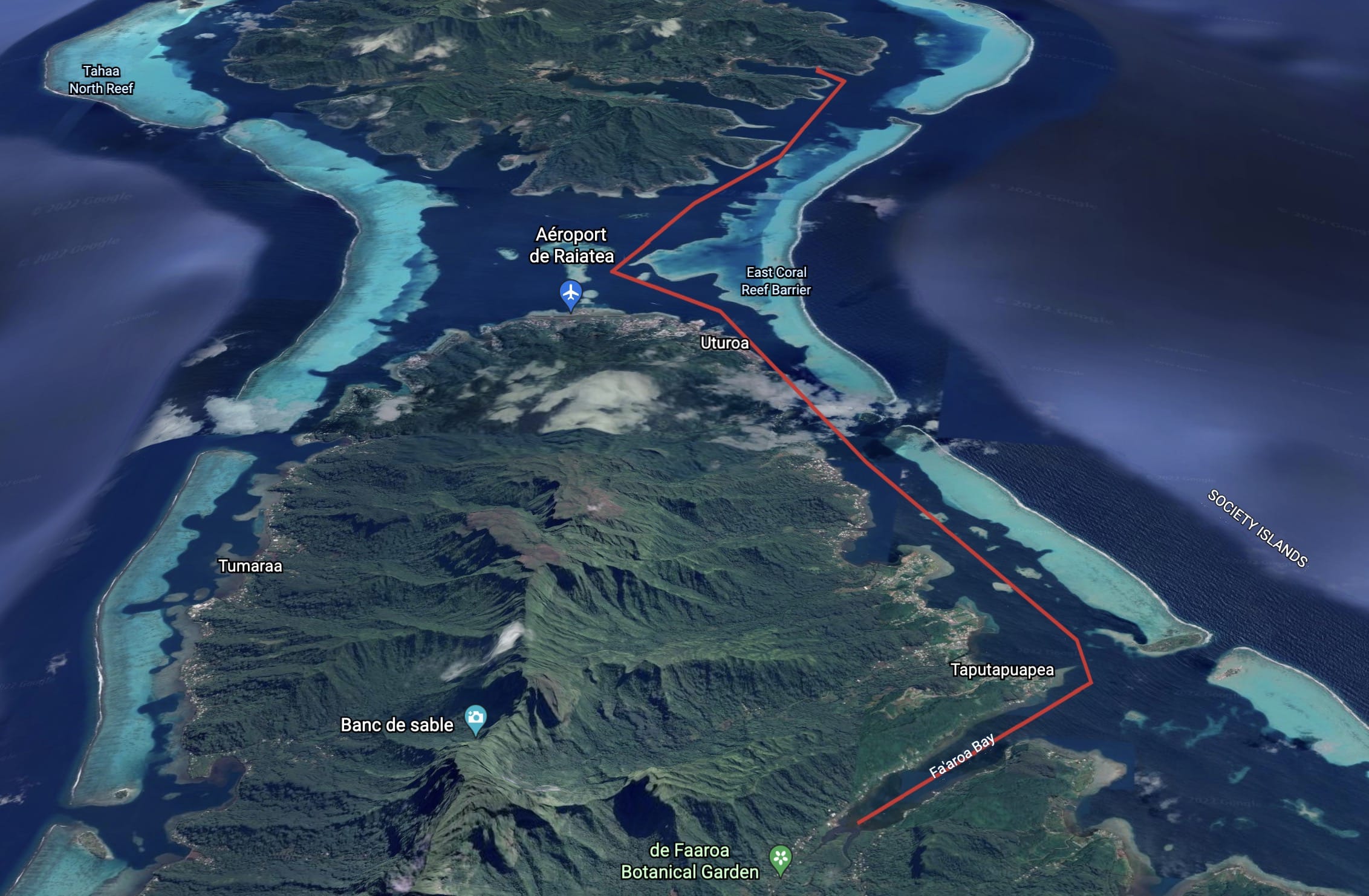
Day Ten - Return to the base on Raiatea, flight to Tahiti, exploring Papeete, return flight
Final days are always bittersweet. We sail back to the base, where we give the boat back and clear our stuff.
After hanging out again a bit in town, we go to the airport and catch a plane back to Tahiti. As we have a few hours before our flight back, a part of the group goes to explore the nearby capital, the town of Papeete.
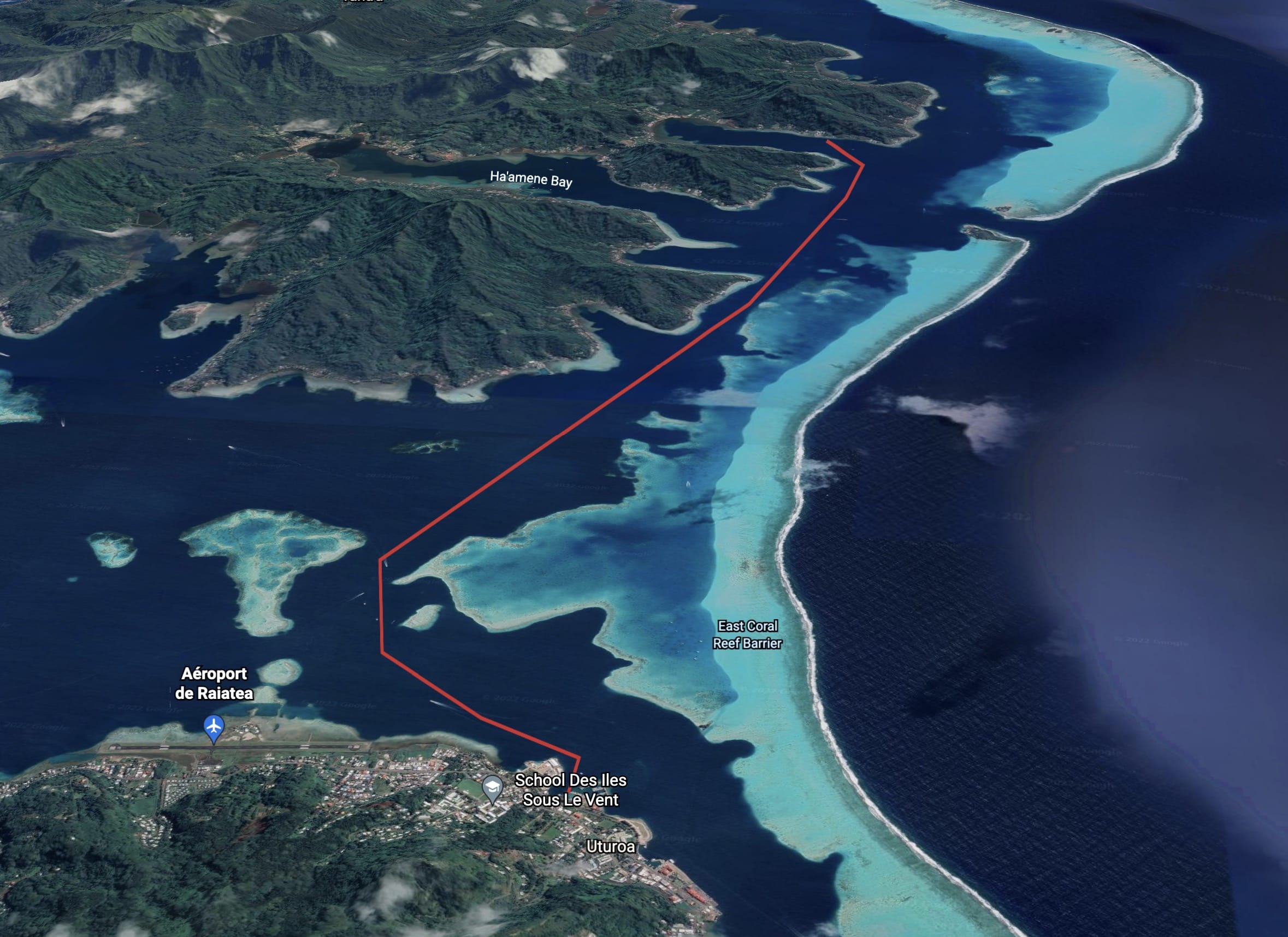
It has been an unforgettable 10 days. Quite a journey, filled with so many good moments and emotions. From sun to storm, from jungle to water. French Polynesian and the Society Islands are an incredible and unique place
Thank you for reading this post!
